Homicide, Capital murder, murder and attempted murder
What Steele & Voss can do for you if you're charged with Murder or attempted murder
Murder cases require an attorney with experience and expertise. They can be extremely complex and are very difficult to settle for an outcome that does not include a life sentence. The district attorney typically assigns their most skilled trial attorneys to these cases. Although Christine and Addison make every effort to settle a murder case for lesser charges, the vast majority of the time, murder cases result in a jury trial. It is imperative that the attorney defending a murder case has had success at murder trials, both because that record helps when trying to negotiate a settlement for a lesser charge and because experience and skill are needed if the case ends up in front of a jury.
Questions you should ask an attorney that you are considering hiring for a murder case:
- Have you done a murder trial before, and if so how many?
- This question is important because a murder trial is a highly emotional, unique type of trial. It requires specialized knowledge and experience.
- Addison has done twelve homicide trials and had a positive outcome in ten of those twelve, and Christine has done five homicide trials and had a positive outcome in all five*
- What were the results of your murder trials?
- This question is important because, in a murder trial, there is a huge difference between showing up and allowing the expected outcome of a first-degree murder conviction and fighting as hard as possible to save the client from a life sentence and maybe even go home. Murder trials are difficult to win; if an attorney is winning murder trials, the attorney has the experience and skills to handle the level of complexity involved in a murder trial.
- Addison has had three complete acquittals on all homicide-related charges. He has only had one non-capital client convicted of first-degree murder. He has done twelve murder trials and has had extremely successful results in those trials. Christine has never had a non-capital homicide convicted of first or second degree murder. If you find another attorney who has (verifiably) done the number of murder trials that Addison or Christine have done and has had more successful outcomes than they have had and who has had more clients go home free after a homicide trial than they have had, hire that person. If you want the best possible chance of NOT going to prison for life and potentially going home, you should contact Addison or Christine.
- Do you train other lawyers in your techniques for winning murder trials?
- This question is important because, typically, only the leading lawyers in a field are invited to conduct training of other lawyers.
- Addison was a speaker at the California Public Defenders Association (CPDA) homicide defense training in 2011 to train on his winning trials by humanizing the client method. He has also given that same training at the Santa Barbara County Public Defenders Office, Riverside County Public Defenders Office, the Riverside County Barristers, the Santa Clara County Public Defenders Office, and the San Francisco County Public Defenders Office. He was a speaker at the CPDA homicide defense training in 2012 to train on utilizing a neuropsychologist in a homicide case.
- How long were the murder trials you've done, and how many days of defense did you present?
- These questions are important because although some cases just call for a short trial, a short trial can also mean that the prosecution was not sufficiently challenged or that no defense was presented. A murder trial that lasts five or ten court days is reason for concern because it's an indicator that the prosecution is not being thoroughly challenged and a complete defense is not being presented.
- Addison has spent 437 court days in murder trials. He has a success rate in murder trials that is really unparalleled.
- If you need to talk to Addison about a murder case, you can send him an e-mail at addison@steelevoss.com or call (805) 245-5078.
Jury trials are public events and homicide trials almost always get some press coverage. Every client mentioned on this page has given permission to have his name on this site. The typical response is that they want the world to know about the positive outcome of their cases. It feels like everyone knows when someone is arrested for murder and charged with murder, but when there's a positive jury trial outcome no one seems to know. Despite that, the Steele & Voss Attorneys has opted to use the clients' first names and their case number in the text of this page, however the clients' full names may be in the press accounts or on the attached case documents.
Christine Voss has:
Five homicide trials and all of which were victorious. She also a homicide case that she beat preliminary hearing. When she was in her twenties she did her first murder jury trial and got a voluntary manslaughter despite her client shooting his father in the back of the head (Martin L., SB225068). She then beat involuntary manslaughter case at preliminary hearing (Juan M.) Next was a voluntary manslaughter jury trial where her client was accused of causing his friend's death by engaging in motorcycle street race. After the district attorney finished his half of the case the judge dismissed the case for insufficient evidence (Jonathan A.L., 1427175). Her next two trials were cases that she saved her client from the death penalty. The first one she made a mitigation presentation to the district attorney that resulted in them electing to not seek death (Nicolas H., 1470650). The second was when she negotiated with the district attorney to not seek death in exchange for waiving for the trial (Pierre H., 1494152). Then she did a resentencing trial in which her client was found not guilty of all homicide related charges and went home (Miguel M., 1260902).
Addison Steele has:
Three trials where the client was acquitted of all homicide-related charges and all homicide lesser-included offenses (Robbie C., RIF104021), Robbie was facing 171 years to life in prison, he was acquitted of all charges and went home; Jaray C., RIF127509, Jaray was facing 74 years to life, he was convicted of some unrelated charges that were conceded because the events were on video, he ended up being sentenced to four years eight months; and Rudy R., 1358729, Rudy was facing 28 years to life, he was acquitted of all charges and went home). Winning a murder trial, as in acquitted of all homicide related charges, is a career event for a criminal defense attorney. The vast majority of criminal defense attorney have an entire career without a full acquittal murder trial. Addison has only met a handful of other attorneys that have had two full acquittal murder trials. He has never met another attorney that also has three full acquittal murder trials.
Six first-degree murder acquittals (Penal Code § 187(a) first degree)
(Robbie C., RIF104021; Jaray C., RIF127509; Rudy R., 135729, Edward A., SWF003559, Eddie was facing 28 years to life, he was acquitted of both first degree murder and second degree murder, he was convicted of voluntary manslaughter, a voluntary manslaughter conviction is considered an absolute victory in a murder trial, Eddie was sentenced to 14 years and his home now; Jaime A., RIF106552, Jaime was acquitted of first degree murder, but was convicted of second degree murder, he was sentenced to 17 years to life instead of the 27 years to life sentence he would have received had he been convicted of first degree murder, he has been paroled from prison and his home now; and Robert M., RIF135704, Robert was facing life in prison without the possibility of parole (LWOPP), Addison fought Robert's case for 43 court days of trial over more than three months, he was acquitted of first degree murder, which meant that he could not be sentenced to LWOPP, there was a hung jury on the lesser degree of second degree murder, Addison was working as a public defender at the time, against his wishes Robert's case was reassigned when Addison rotated into a different assignment, his family hired a private attorney that conducted a two week trial on the second degree murder charge and Robert was convicted of all charges, although Addison saved Robert from LWOPP, he's unfortunately still in prison after losing the remaining counts with another attorney)
Two first-degree murder-hung juries. (Penal Code § 187(a) first degree)
(Anthony S., 1434089, A.J. was facing LWOPP, he was part of what the press dubbed the "U-Haul Murder Trial," he was part of a six co-defendant murder trial, the other five defendants were all convicted and sentenced to LWOPP, A.J.'s charges resulted in a hung jury and then he settled his case for a nine year prison sentence, he is home now; and Robbie C., RIF104021, Robbie had a full acquittal of charges in his second trial, however his first trial resulted in a hung jury, the district attorney would not settle the case after the hung jury despite Robbie offering 14 years just to avoid the risk of the 171 years to life sentence that he was facing, it turned out that it was fortunate that the district attorney rejected his offer, Robbie went home after the second trial).
Four second-degree murder acquittals
(Penal Code § 187(a) second degree)
(Robbie C., RIF104021, he was acquitted of the lesser degree of second murder when he was acquitted of all charges, Jaray C., RIF127509, he was acquitted of the lesser degree of second murder when he was acquitted of all charges; Rudy R., 1358729, he was acquitted of the lesser degree of second murder when he was acquitted of all charges;
and Edward A., SWF003559, he was acquitted of the lesser degree of second murder when the jury decided to convict him of only a voluntary manslaughter).
A second-degree murder hung jury
(Penal Code § 187(a) second degree)
(Robert M., RIF135704).
If you're reading this because you or someone you care about has been charged with murder, you need to talk to an attorney who is experienced in defending murder cases and has had success winning murder cases. District Attorneys charge first-degree murder because they believe that they have sufficient evidence to get a first-degree murder conviction from a jury, and the vast majority of the time, they are successful. A client being found not guilty of murder and all lesser offenses is extremely rare. Addison and Christine only know of a handful of attorneys that have won a murder trial (not guilty of the homicide and all lesser included offenses). They only know of only three other attorneys in the state who have won two murder trials--acquitted of all homicide related charges, and none of them practice on the Central Coast. They know of no other attorney that has won three murder trials--acquitted of all homicide related charges.
A murder case has many potential outcomes. A conviction for first-degree murder with a special circumstance found true results in a mandatory sentence of life in prison without the possibility of parole (LWOPP). A conviction for first-degree murder without a special circumstance found true carries a mandatory minimum of twenty-five years to life in prison. A conviction for second-degree murder carries a fifteen-year to life sentence (a person can get probation for a second-degree murder conviction, but that is extremely rare). In many cases, the jury will be given the option of a lesser included offense of voluntary manslaughter; the maximum sentence for a voluntary manslaughter conviction is eleven years. A conviction for voluntary manslaughter in a murder trial is considered a very good outcome, an absolute victory. Having an attorney with experience handling murder cases is critical because there are complex issues involved in murder cases, such as pathological evidence as well as mental defenses to attack premeditation, deliberation, and specific intent to kill.
Addison has won three homicide trials and Christine has won two homicide trials. "Won" means his clients were acquitted of all homicide-related counts. Winning a homicide trial is a career event for a defense attorney; winning three is unheard of and winning two is extremely rare. If the traditional definition of winning a homicide trial--saved from Death Row, acquitted of only a voluntary manslaughter or lesser offense, a hung jury on first and second degree murder, or any outcome that results in a determinate sentence, Addison has won ten murder trials and Christine has won all five of the homicide trials that she has done.
Using the conventional definition of a win in a murder trial, Addison has won nine murder trials and Christine has won all five of the homicide trials she has done. Addison and Christine have done seventeen homicide trials between them. That may not sound like a lot, but there are very few attorneys that have done anywhere near that many homicide trials. Not counting the capital cases, where the clients were saved from Death Row, they have only had one client convicted of first-degree murder.
These are Addison and Christine's fifteen victorious homicide trials and a homicide trial that resulted in a conviction for second degree murder, but that the client has paroled is now home. These are in chronological order with the most recent at the top. For those that like to follow cases in the press, after the description of the case is the press in order from the oldest article to the newest. Some of the cases got no press at all and some where extensively covered by the press.
Miguel M., 1260902, Acquitted of Voluntary manslaughter on August 22, 2024
- Charges: Voluntary Manslaughter (Penal Code § 192(a)) and gang activity (Penal Code § 186.22(a)).
- Exposure: Miguel was facing 11 years and eight months in prison.
- Outcome: After a post-conviction trial Miguel was acquitted of Voluntary manslaughter charge and only convicted of a non-strike assault (Penal Code § 245(a)(4)) and gang activity (Penal Code § 186.22(a)).
This was a post-conviction trial due to a change in the law. In order to get Miguel post-trial relief the voluntary manslaughter charge had to be won. Christine would have to prevail on the issue of whether or not Miguel was a substantial participant in the homicide. Because she won that issue Miguel was able to be sentenced to three years with credit for time served. This was what the press called, "The Fourth of July Stabbing." There was a gathering at Miguel's house and car full of East Side gang members drove by and yelled out their gang name. Over the previous six months East Side gang members had killed two West Side gang members. The evidence that the district attorney presented was that Miguel was one of the oldest people at the gathering and that he was an "original gangster" to whom the younger gang members would listen. The district attorney alleged that Miguel said things such as, "Let's go get them back," and, "Let's go to the beach and rumble." The group went to the beach and gathered more West Side gang members along the way. The district attorney presented evidence that Miguel was at the front of the group challenging the East Side gang members to fight. At some point the group of West Side gang members split into two groups and then a melee ensued. Some other West Side gang member, not Miguel, stabbed a person during the melee thinking that person was an East Side gang member. It turned out the person was a fellow West Side gang member. The person that got stabbed died. At the trial the judge ruled that Miguel may have instigated a fight, but that he did not have an intent to kill that could support a homicide charge.
Below is the cover page for Christine's Trial Brief for Miguel's trial
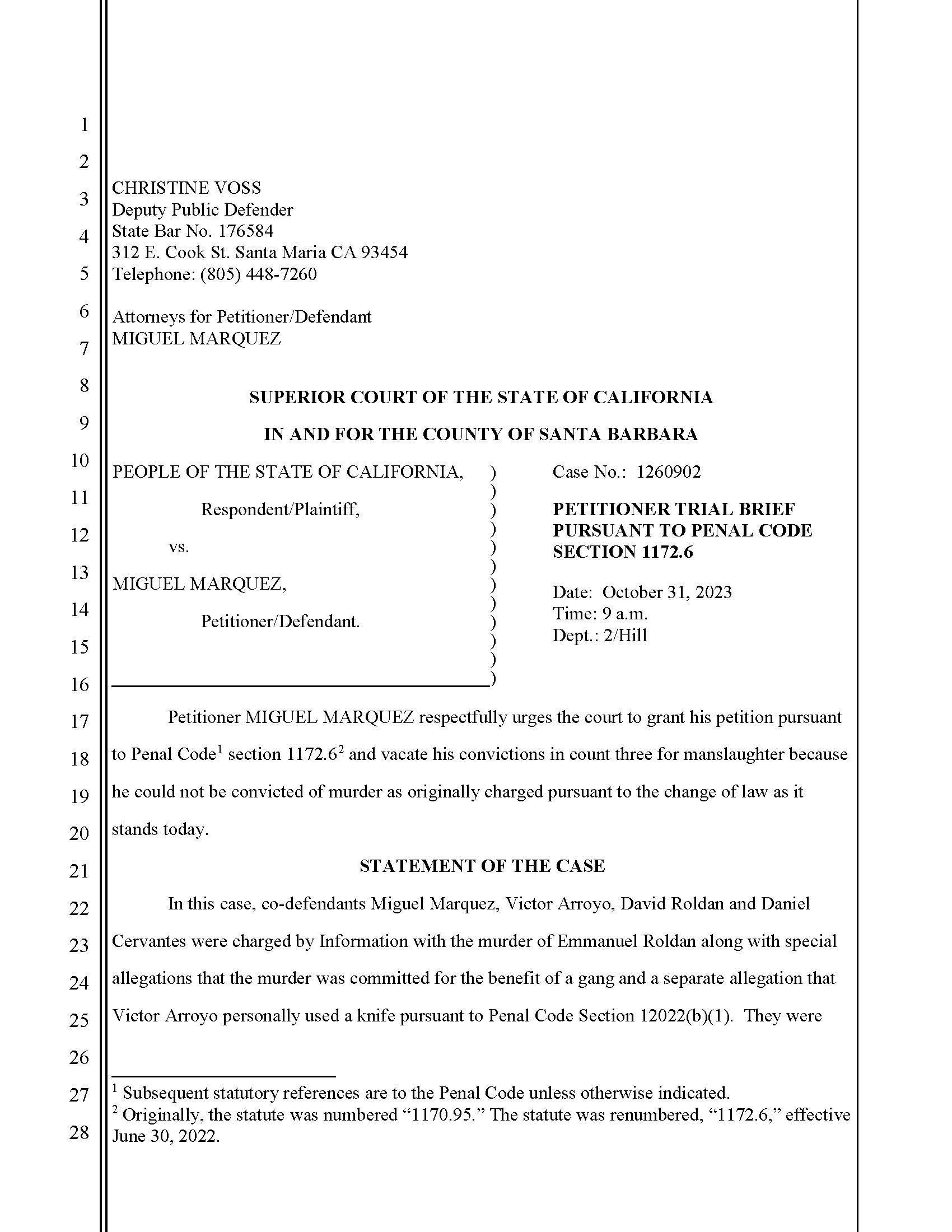
here you can follow the press on Miguel's case from beginning to end
All the press on this case was from when the case first came to court. Miguel's resentencing trial did not get any press coverage.



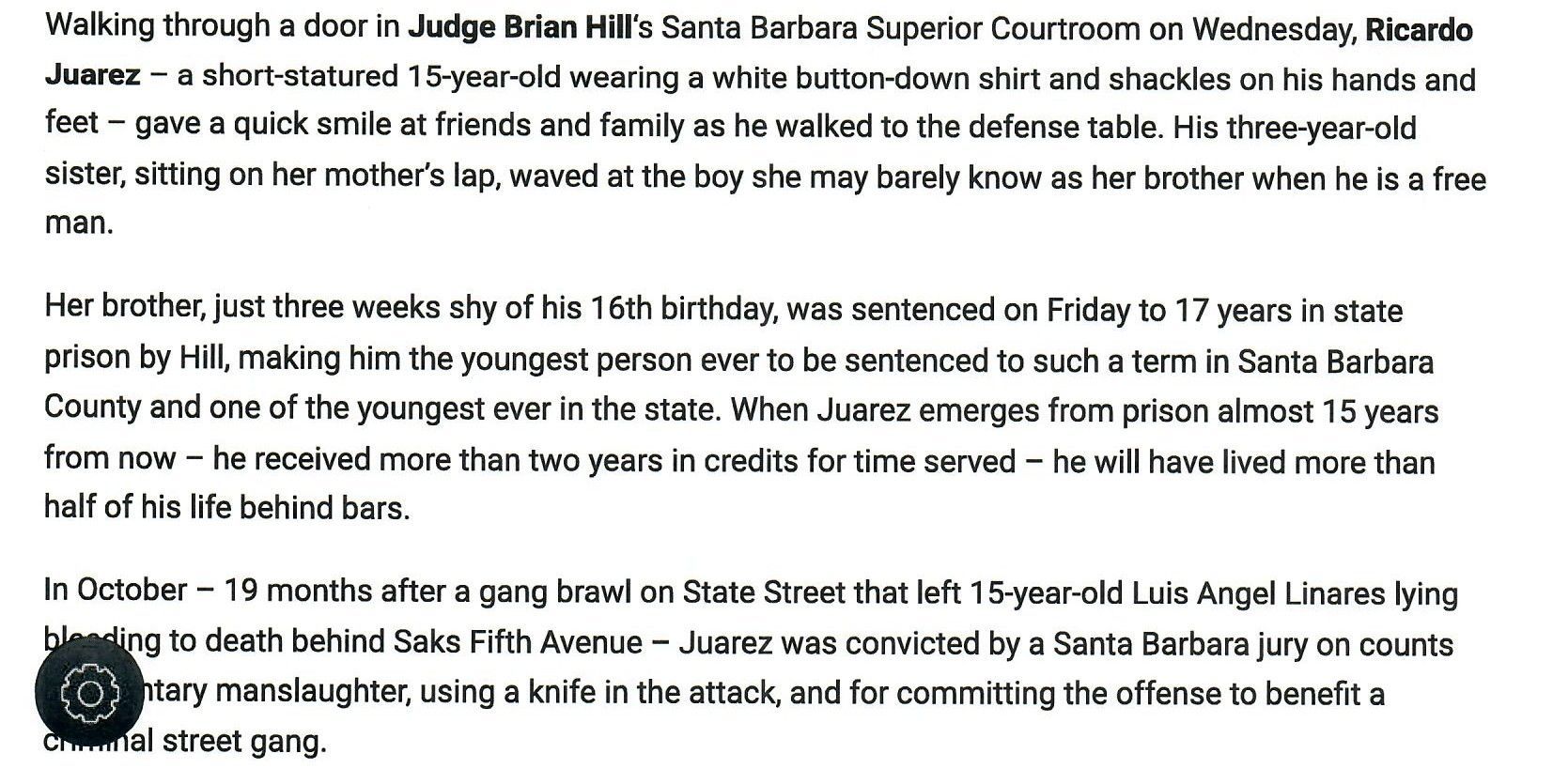


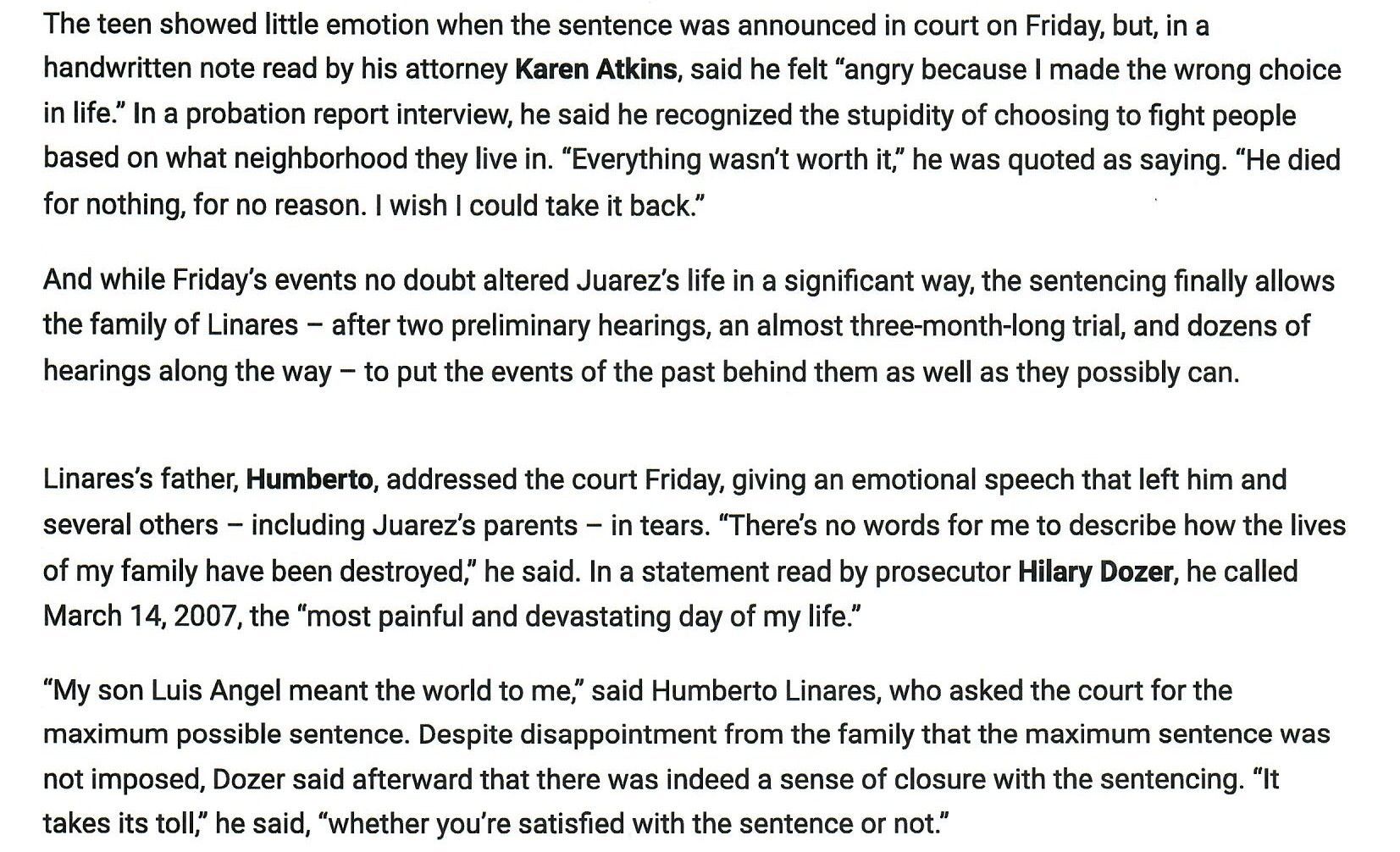

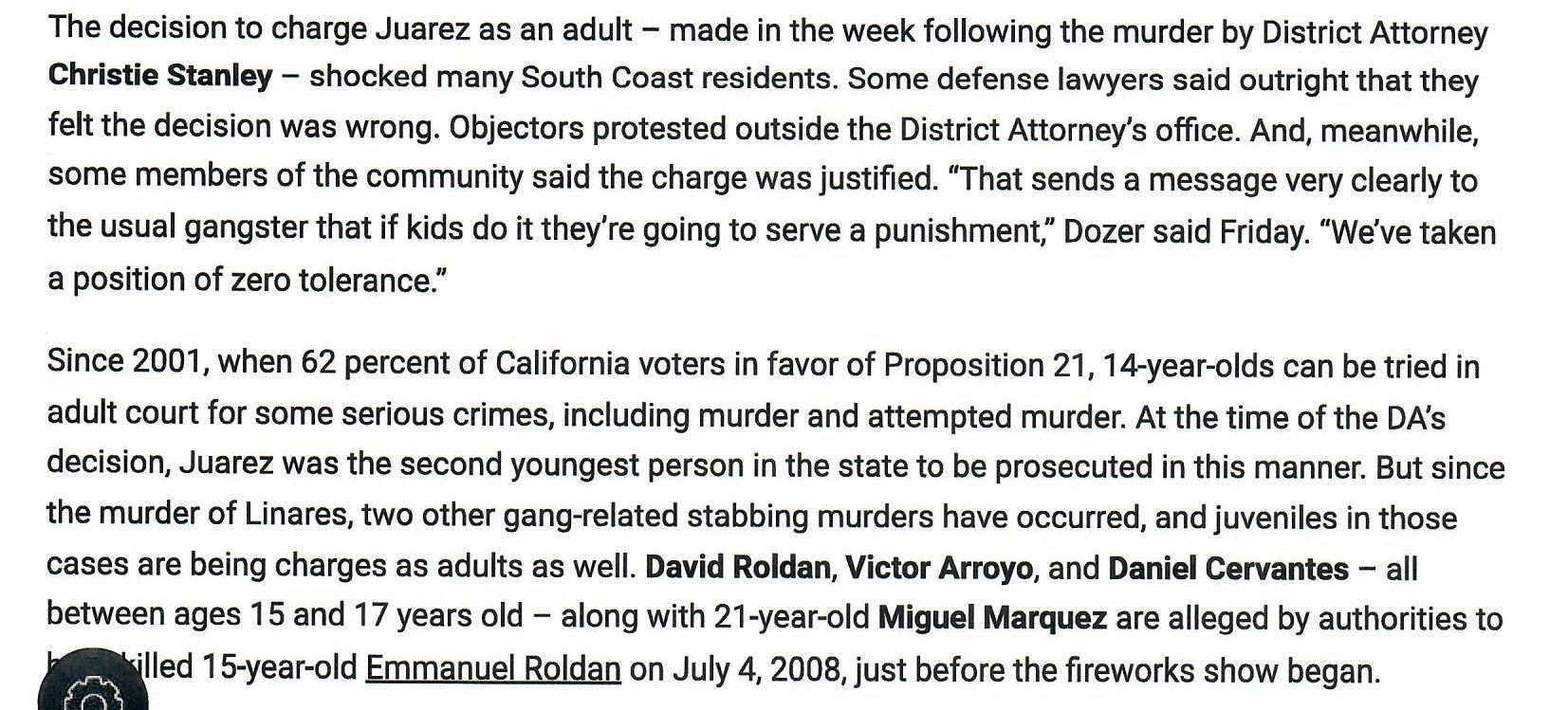
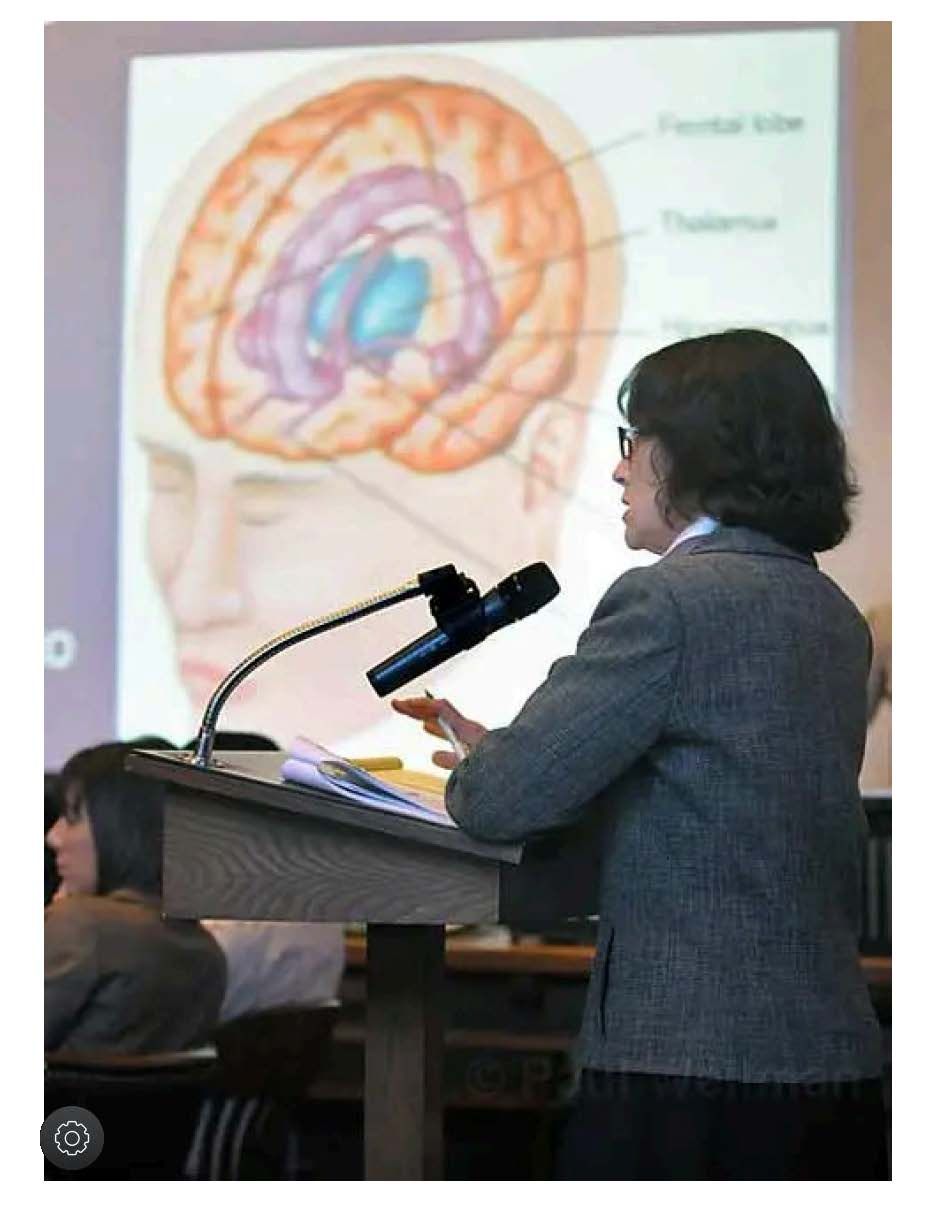

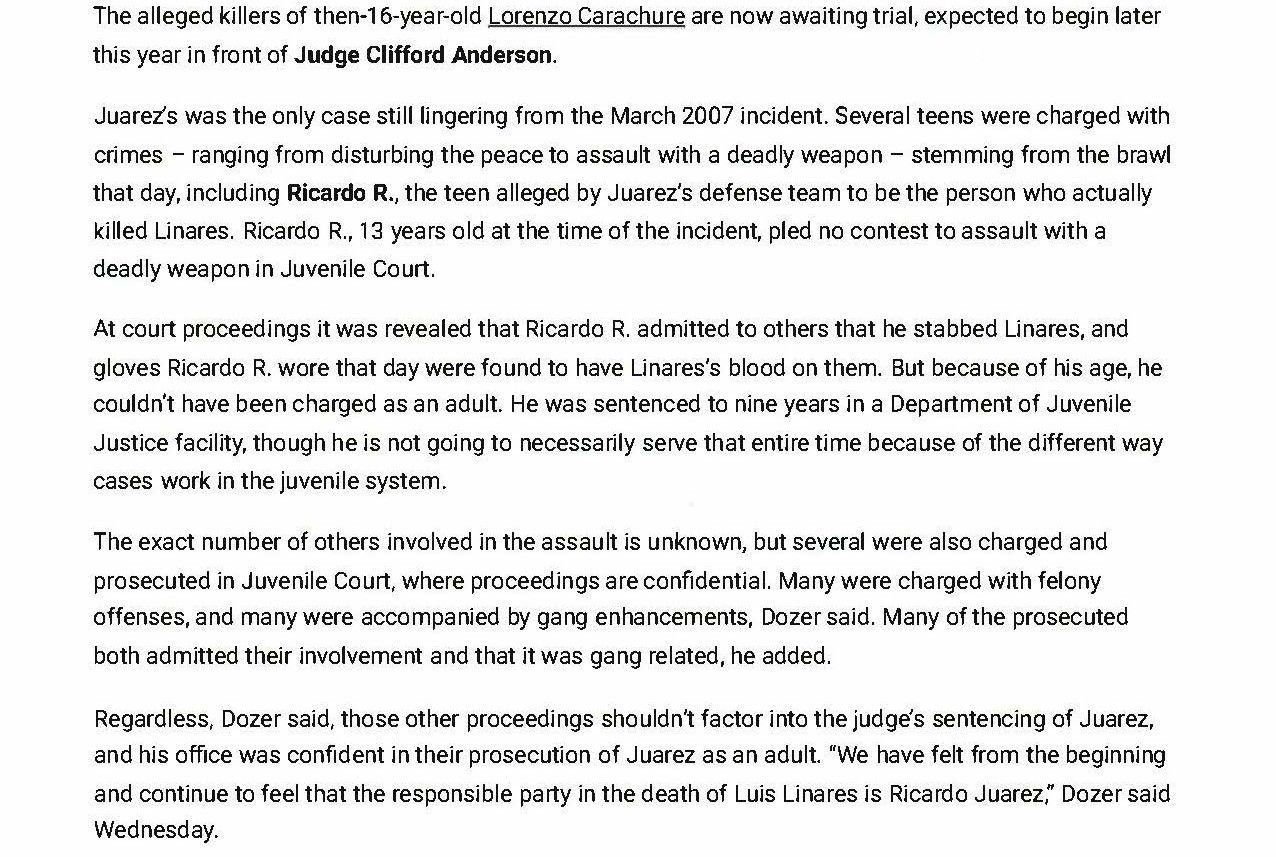

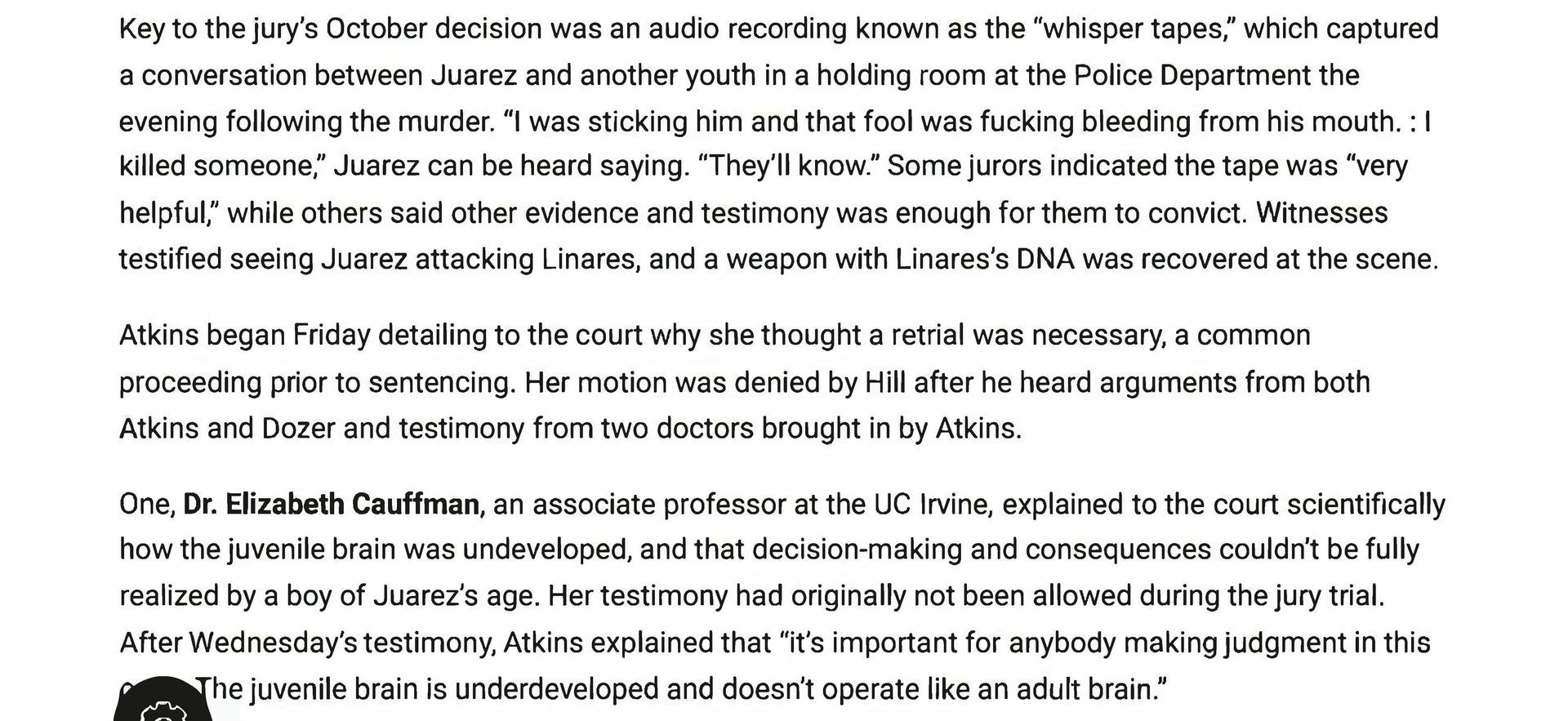






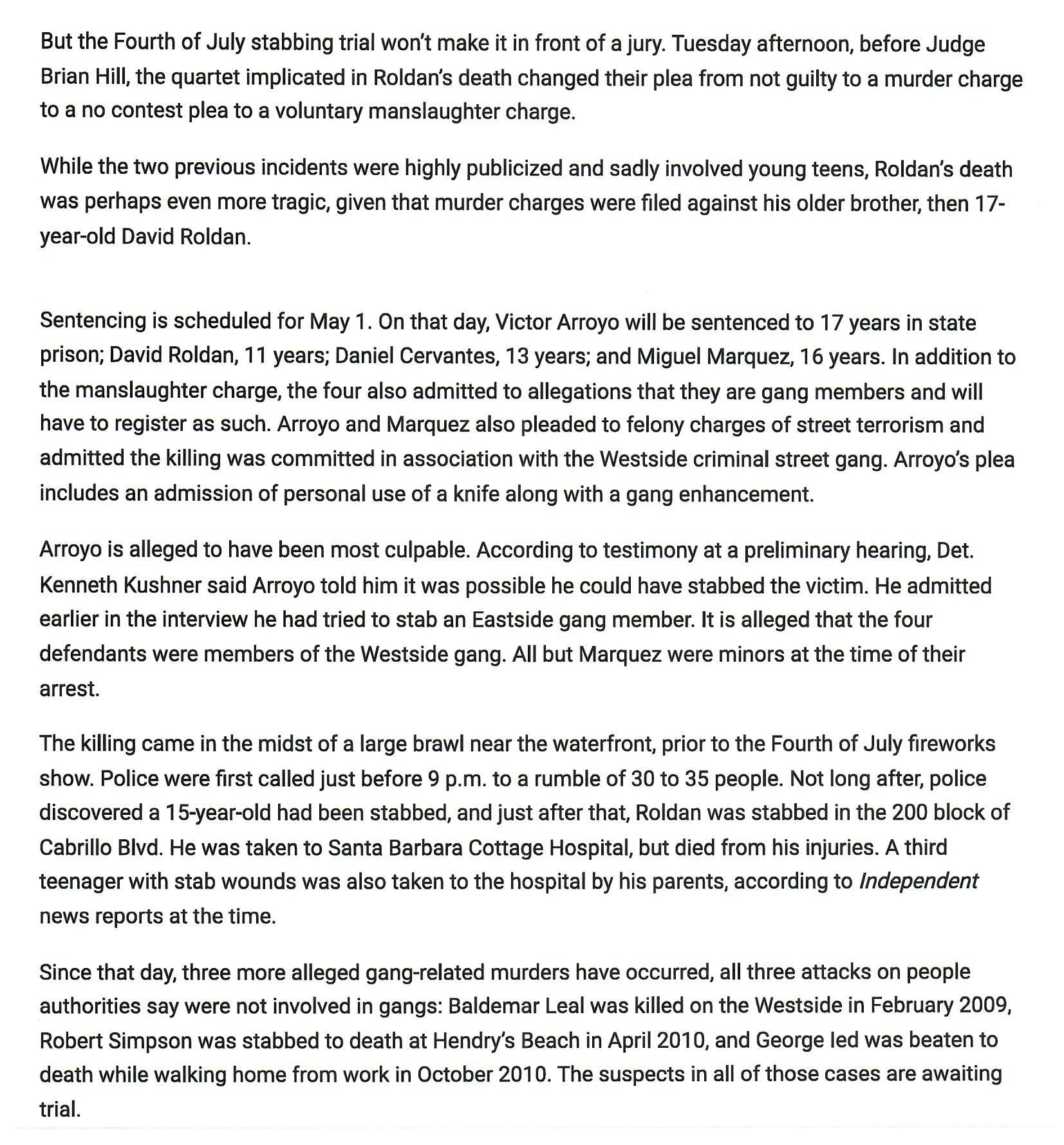



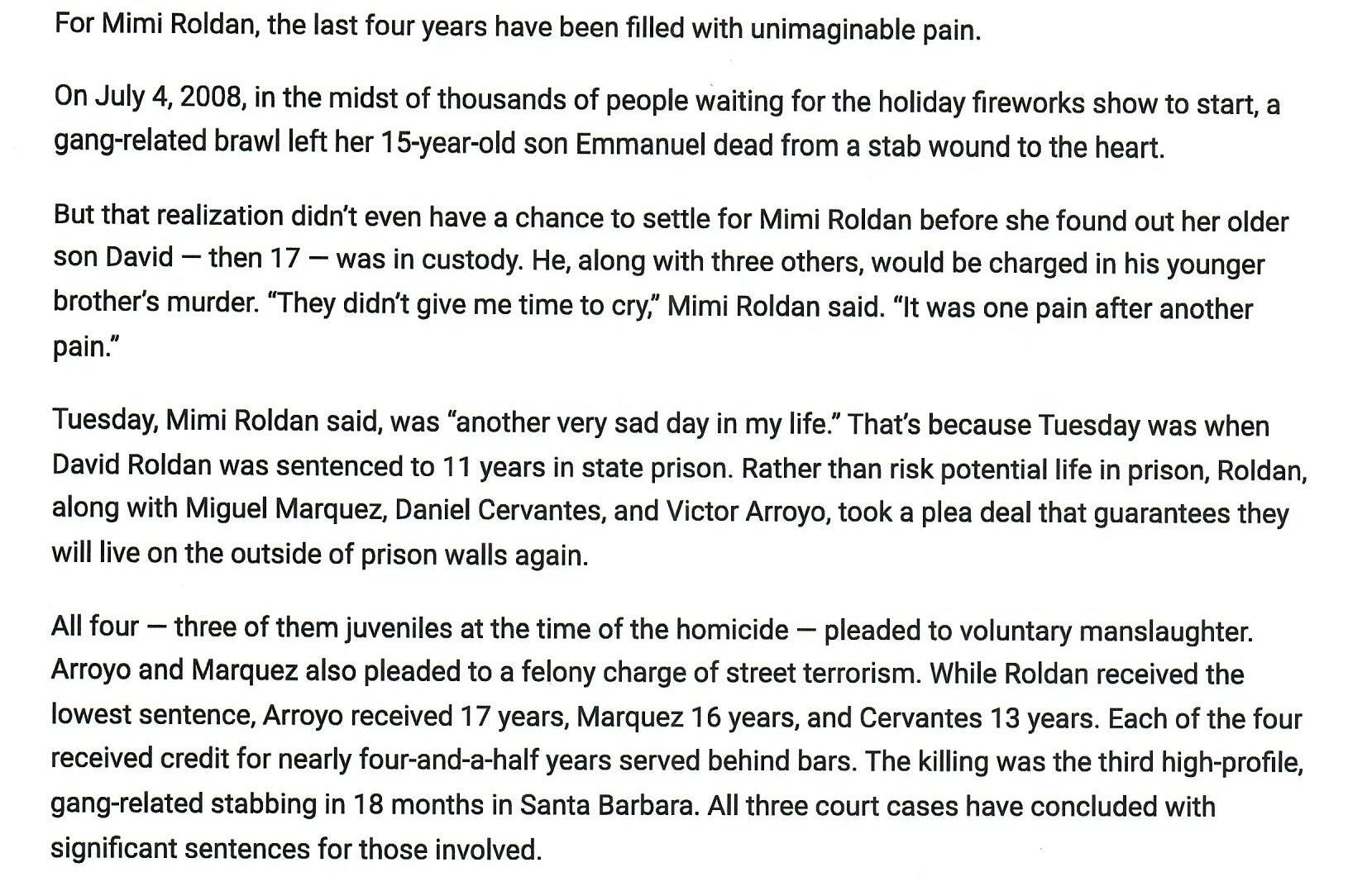


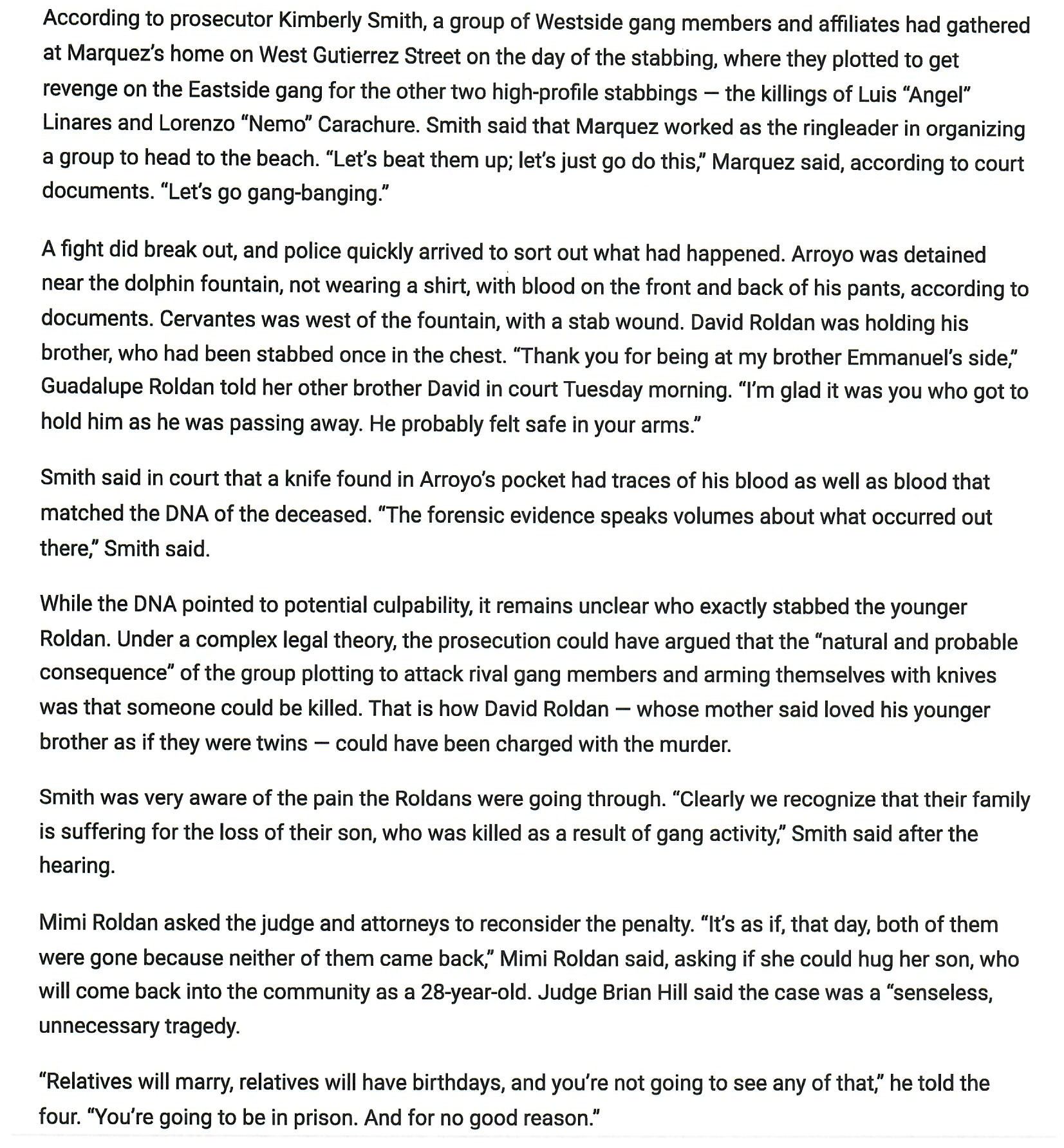
Pierre H., 1494152, Death penalty eliminated from the case on August 12, 2022
- Charges: Three counts of murder (Penal Code § 187(a)) with a special circumstances of murder for financial gain (Penal Code § 190.2(a)(1)) and multiple murder (Penal Code § 190.2(a)(3), as well as a great bodily injury enhancement (Penal Code § 12022.7).
- Exposure: Pierre was facing the death penalty.
- Outcome: As the trial was beginning the death penalty was withdrawn in exchange for waiver of jury for his trial.
This was a triple murder case. Pierre was facing the Death Penalty. Christine started out, as is the case in all capital murders, by trying to convince the district attorney to not seek death. When that didn't work she made sure that everything was prepared for trial. Right before the trial started there was agreement between the district attorney and Christine to remove the death penalty from the case. Pierre and Christine agreed to waive jury and the district attorney agreed to remove the death penalty from the case. Pierre testified at his trial to what the press called, "A fantastical story" of the Department of Energy committing the murders to frame him. Pierre's testimony was that he had invented a perpetual energy machine and that the Department of Energy then set out to stop him because his invention would bankrupt the fossil fuel industry, which the Department of Energy was intent on protecting. He testified about a Department energy tactical team attempting to kill him, but that he killed the entire tactical team before they could kill him, and that he then fled the scene, and when he later returned the bodies of the tactical team members had been removed and the scene was cleaned up so that no one would be able tell that there had been a fatal five on one gunfight. He also testified that although he did not make it through Army boot camp, he was recruited to be a secret government agent and was trained at an underground black ops site. When asked why there was no record of his work as a secret agent, his answer that it was of course all classified. When asked during the trial if he's mentally ill, he testified that was not.
One of the highlights of the case was that after Pierre's preliminary hearing Christine found out that the district attorney was going to give a press conference after Pierre's court date. She know that meant that the district attorney was going to announce that they were going to seek the death penalty, and then have a press conference to make a statement that would only taint potential jurors. Christine then, on the fly, filed a motion for a gag order, which the judge granted, the district attorney had to cancel the press conference.
Christine saved Pierre from Death Row, but he was convicted of all three murders and sentenced to life in prison without the possibility of parole. The trial was extensively covered by the press.
This is Christine on television defending Pierre
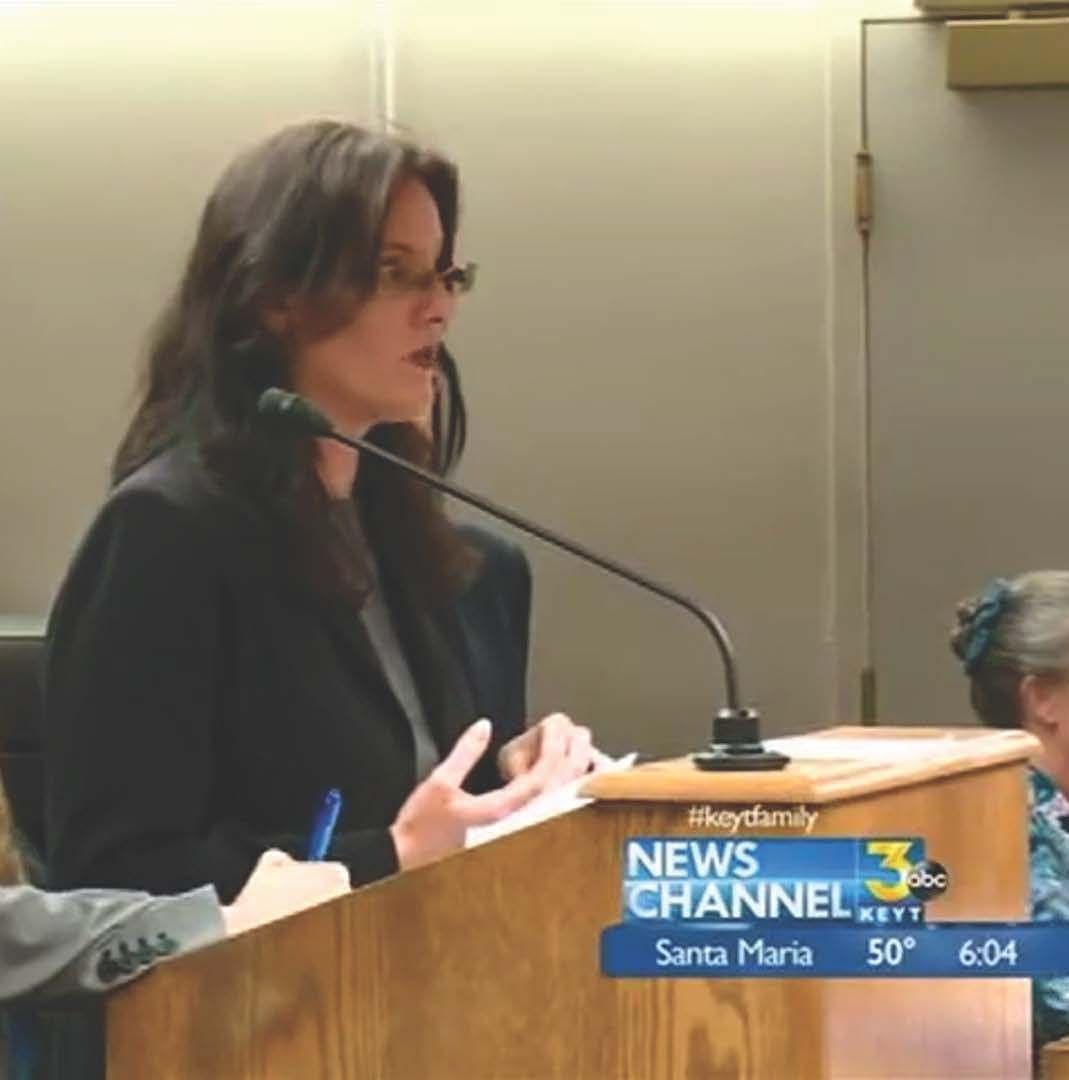
This is a press photo of Christine defending Pierre

This is press from when Christine saved Pierre from Death Row





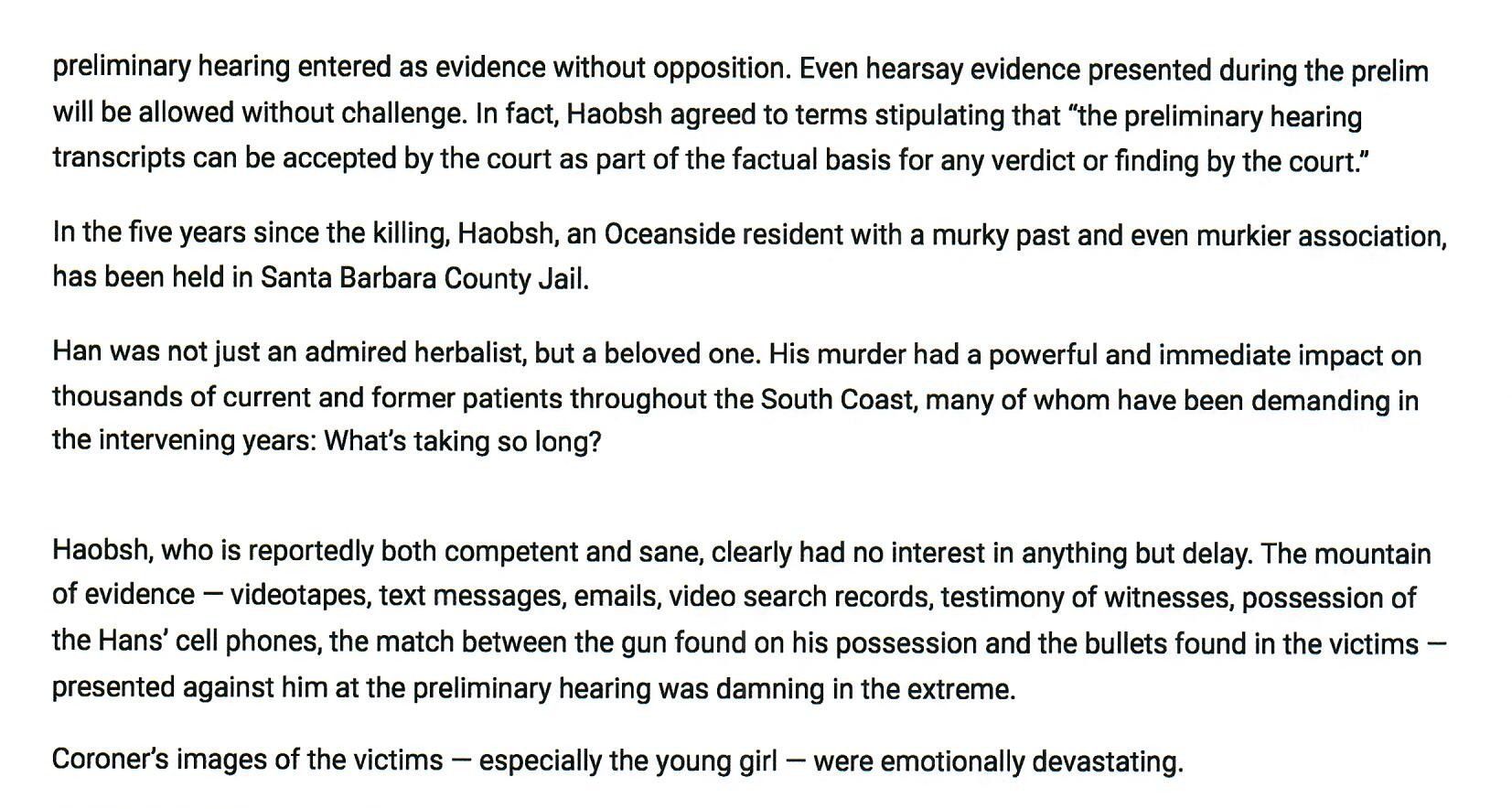
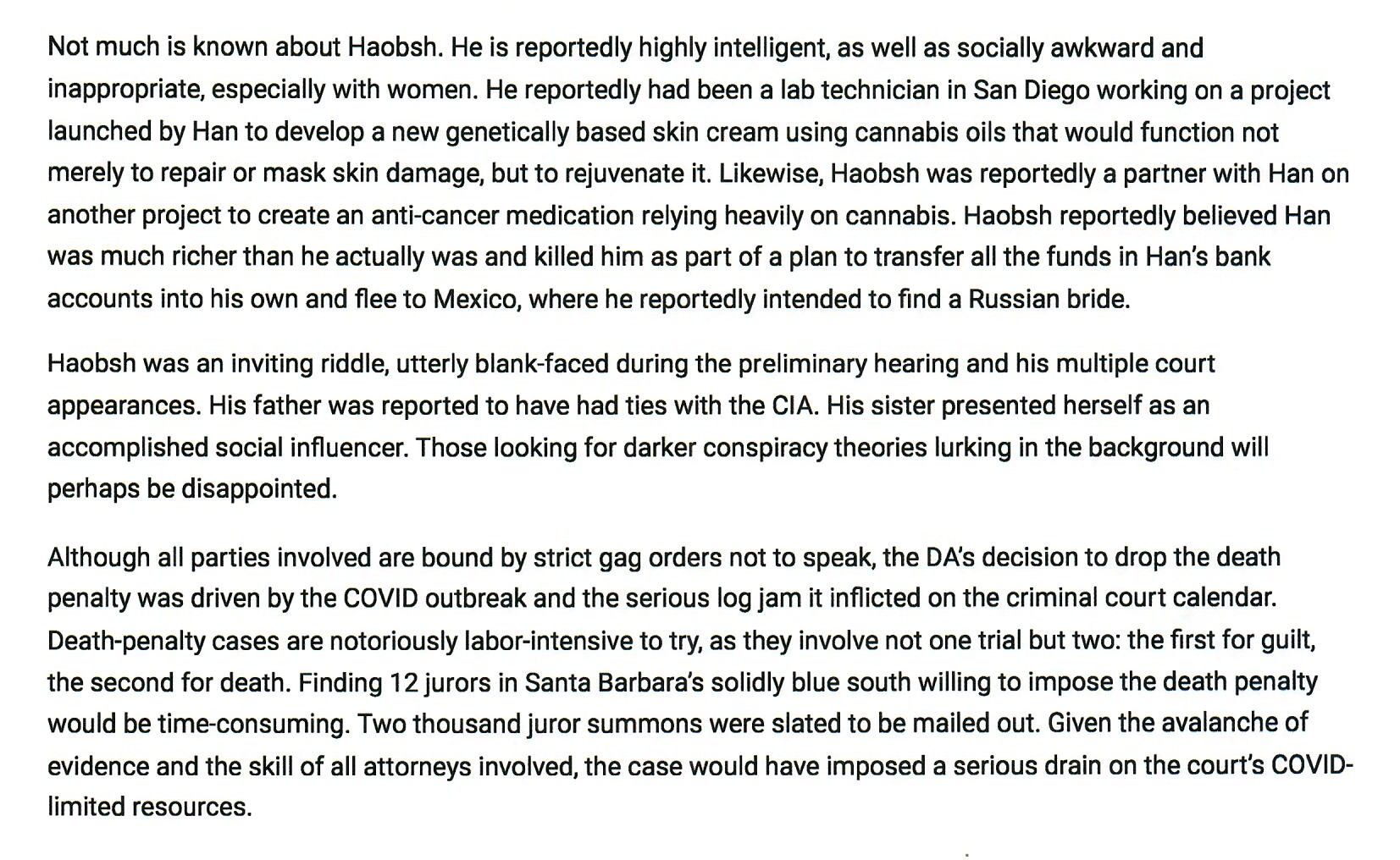




Here you can follow the press on Pierre's case from beginning to end
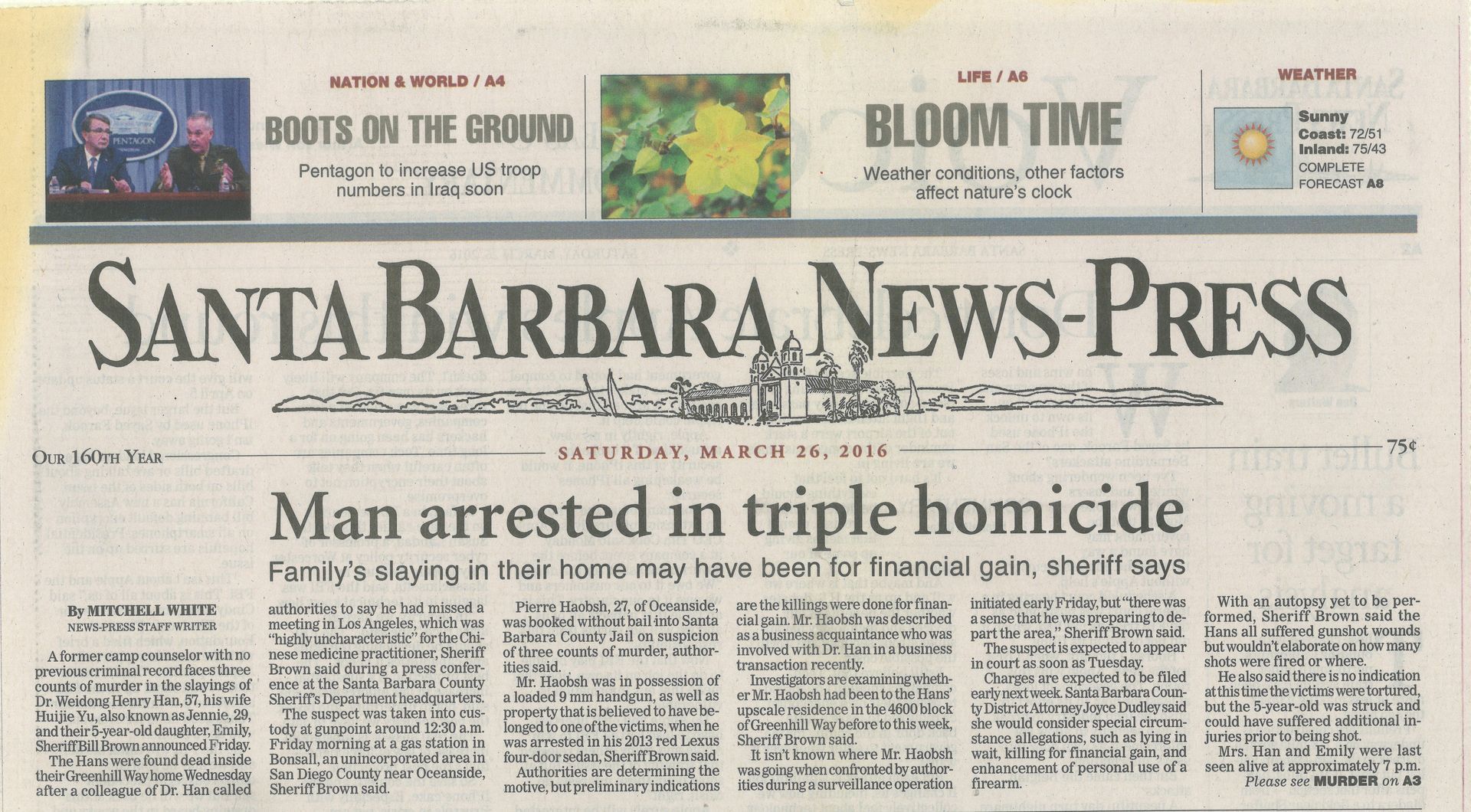
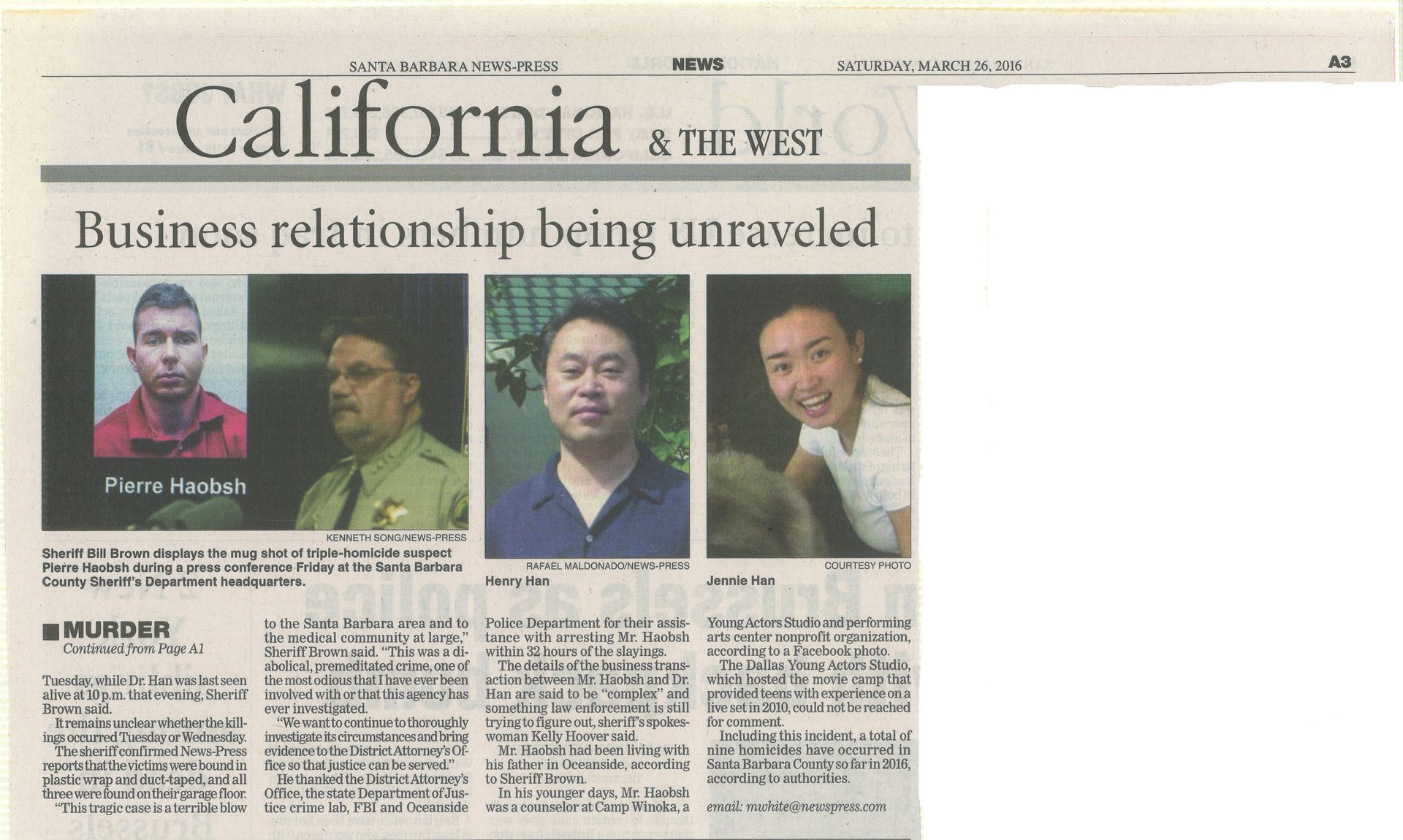

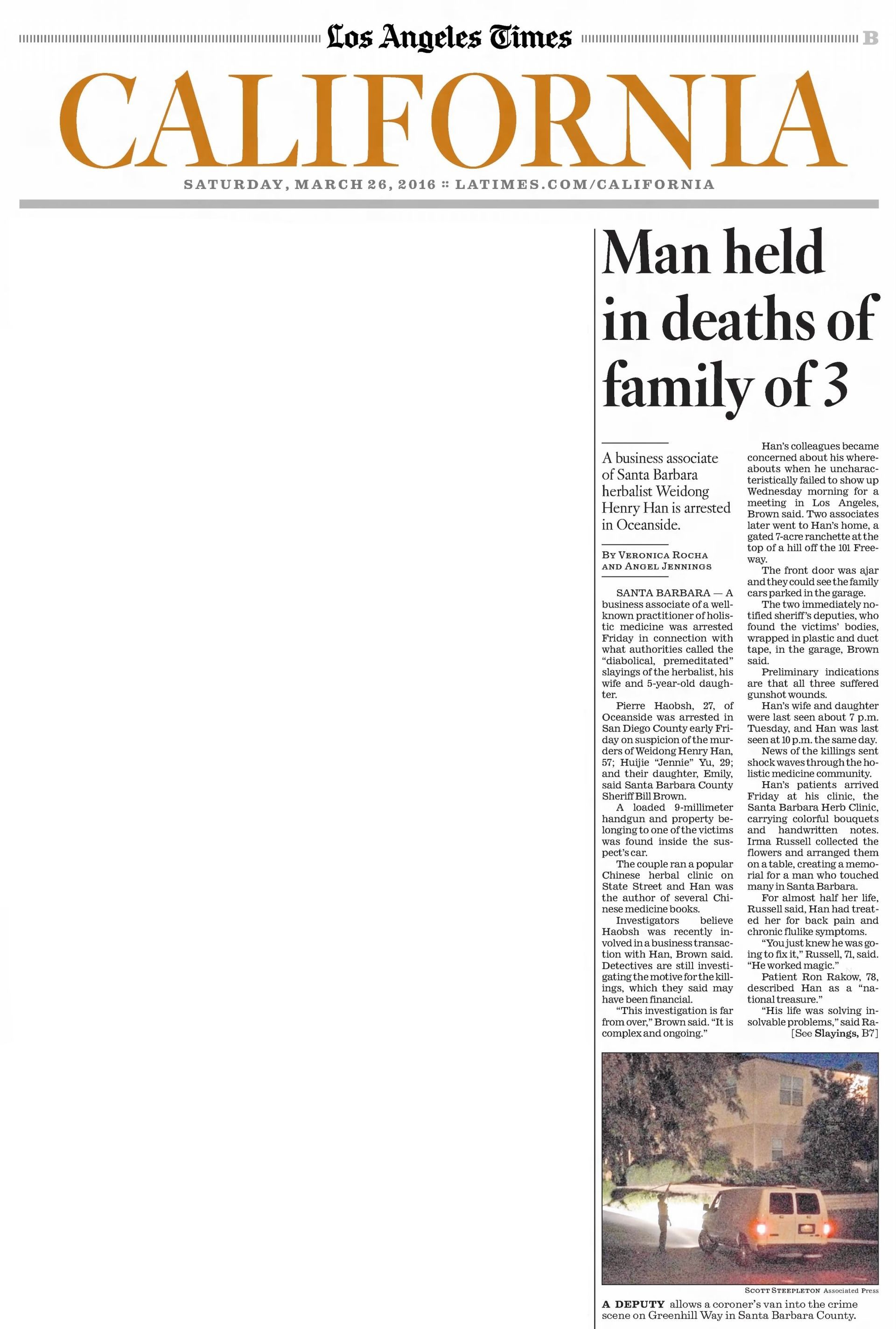
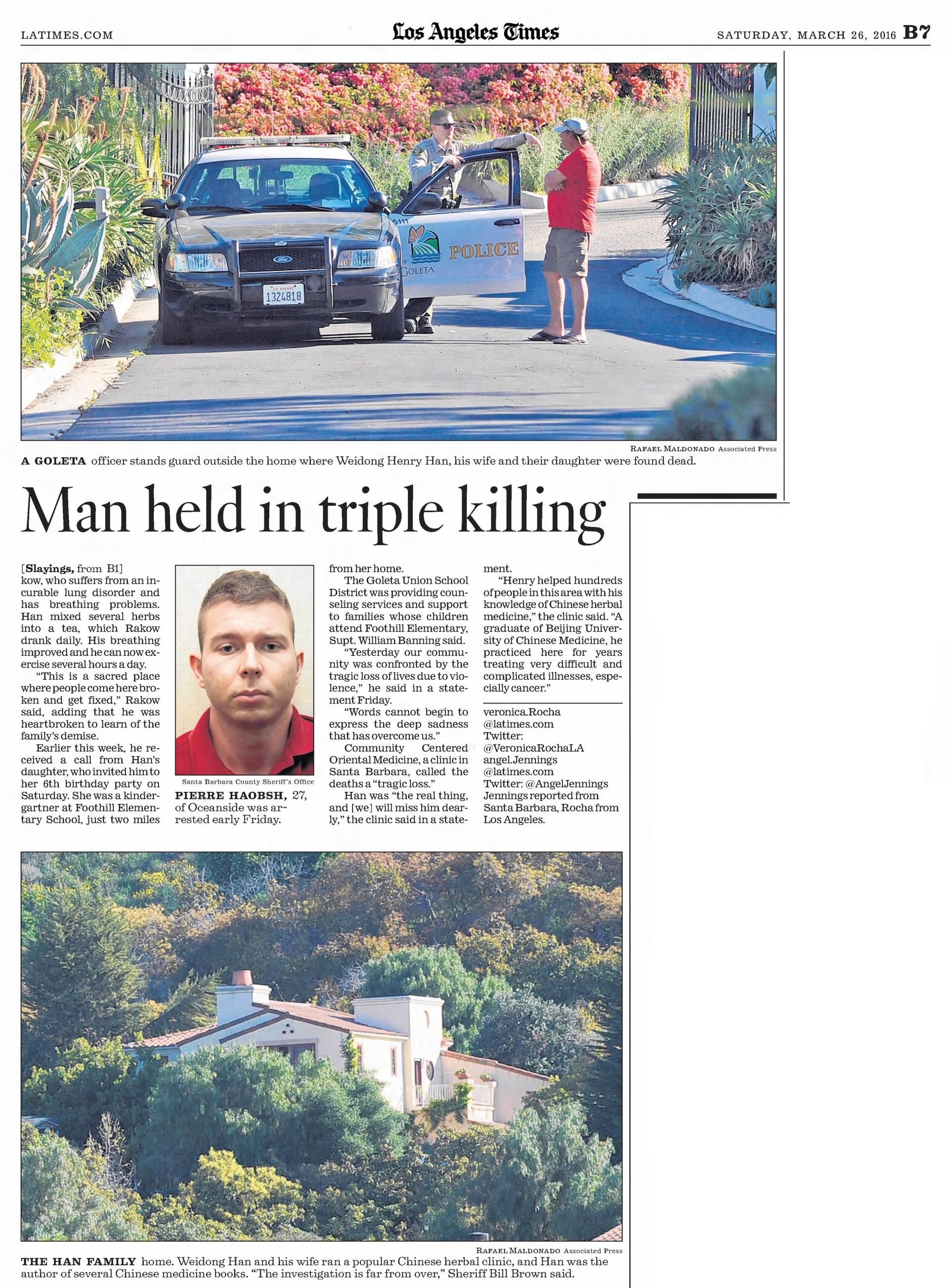
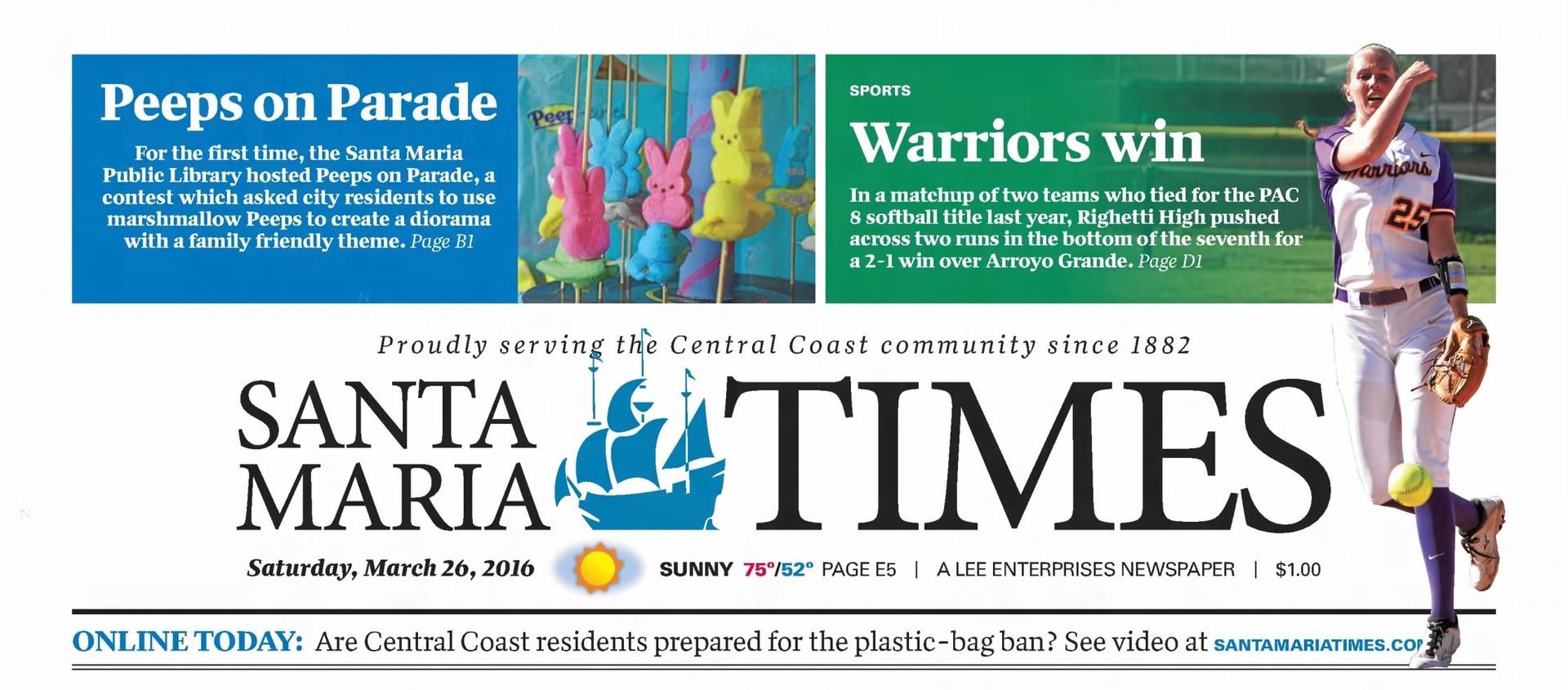
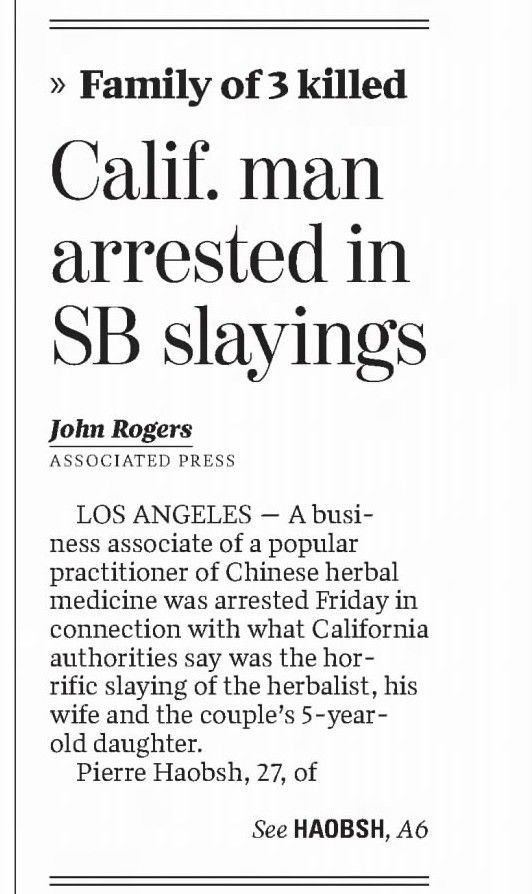

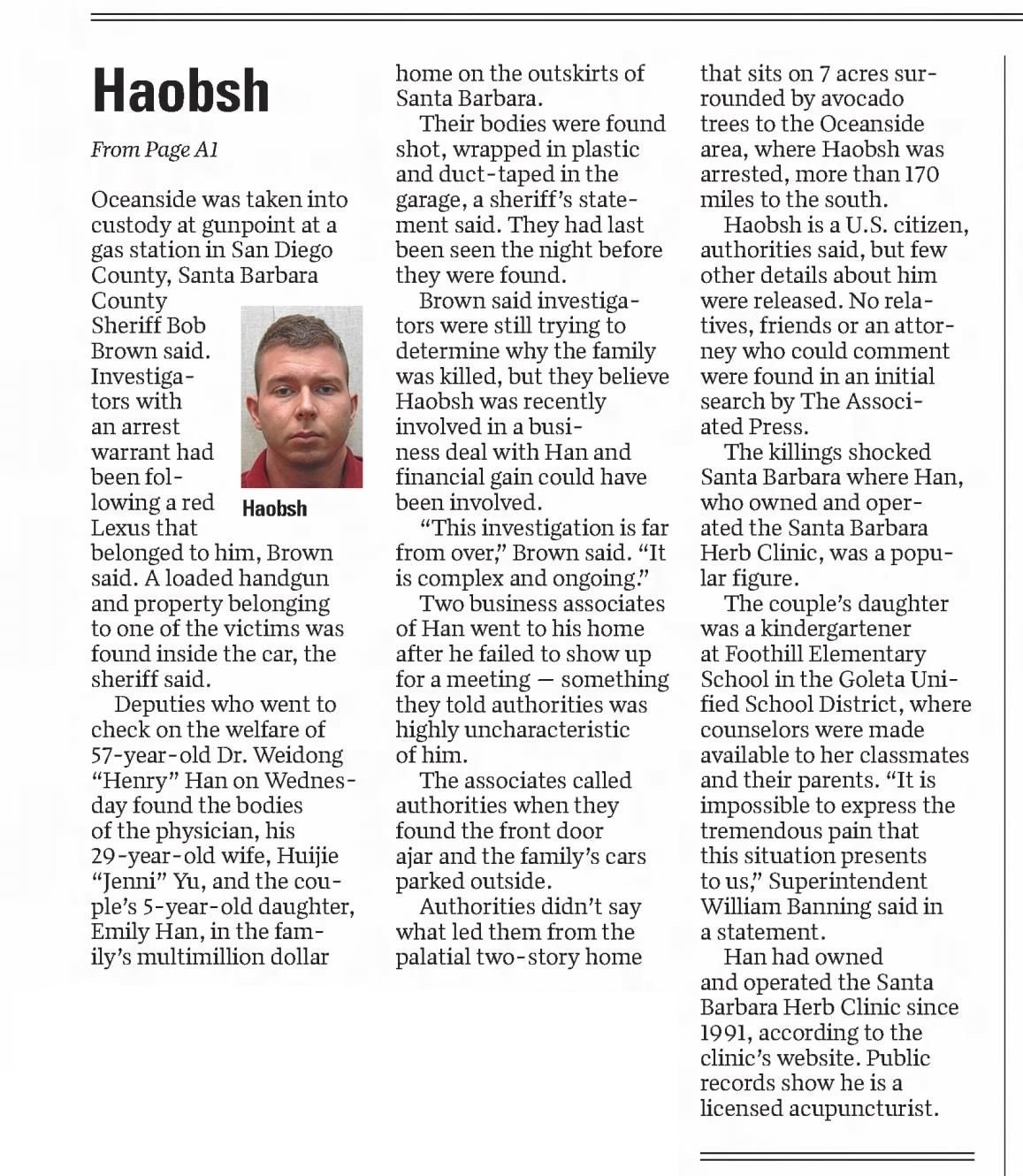

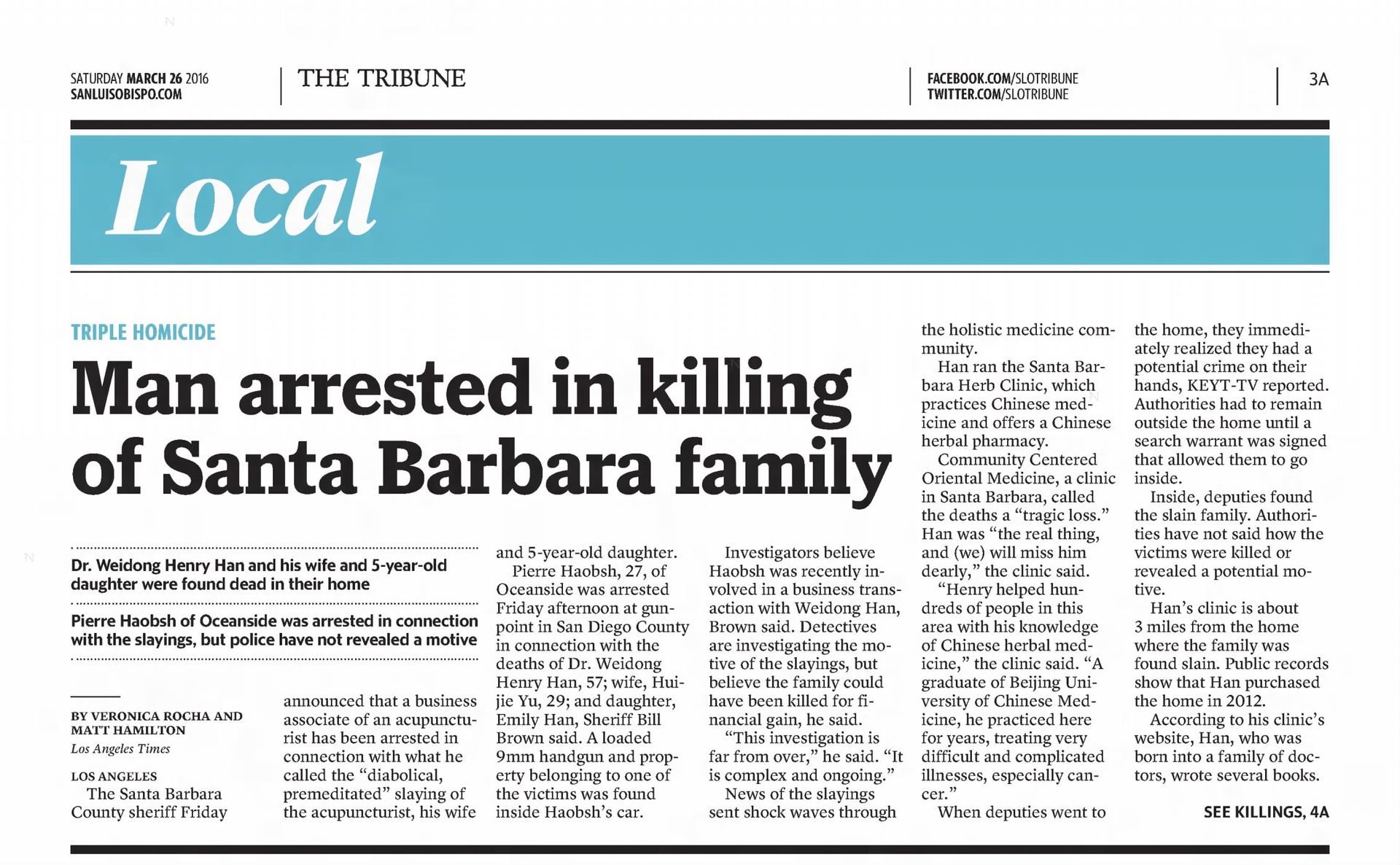

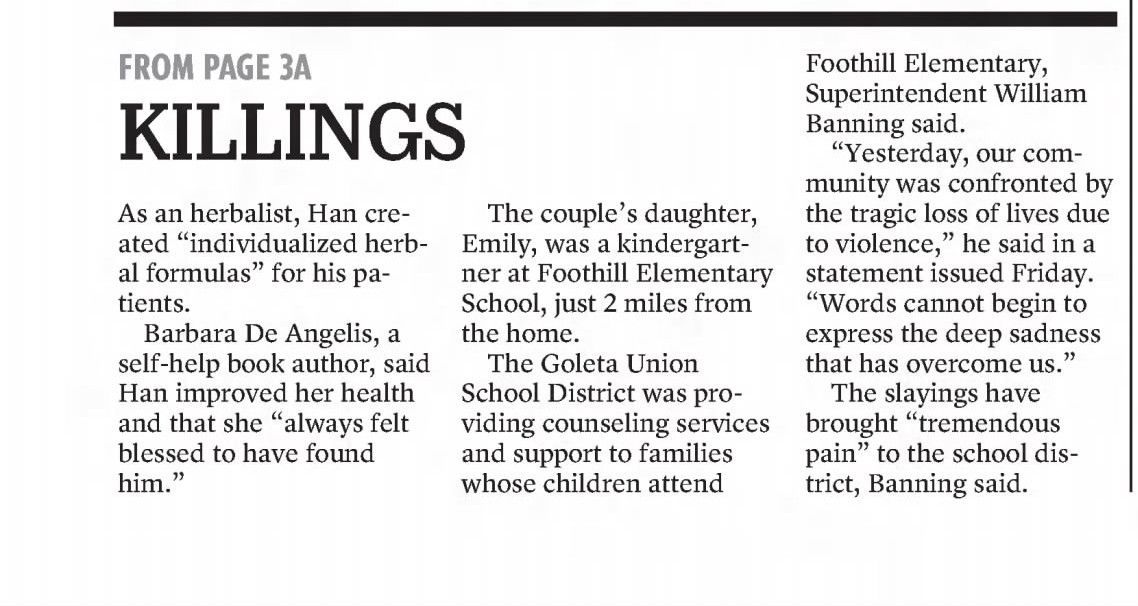
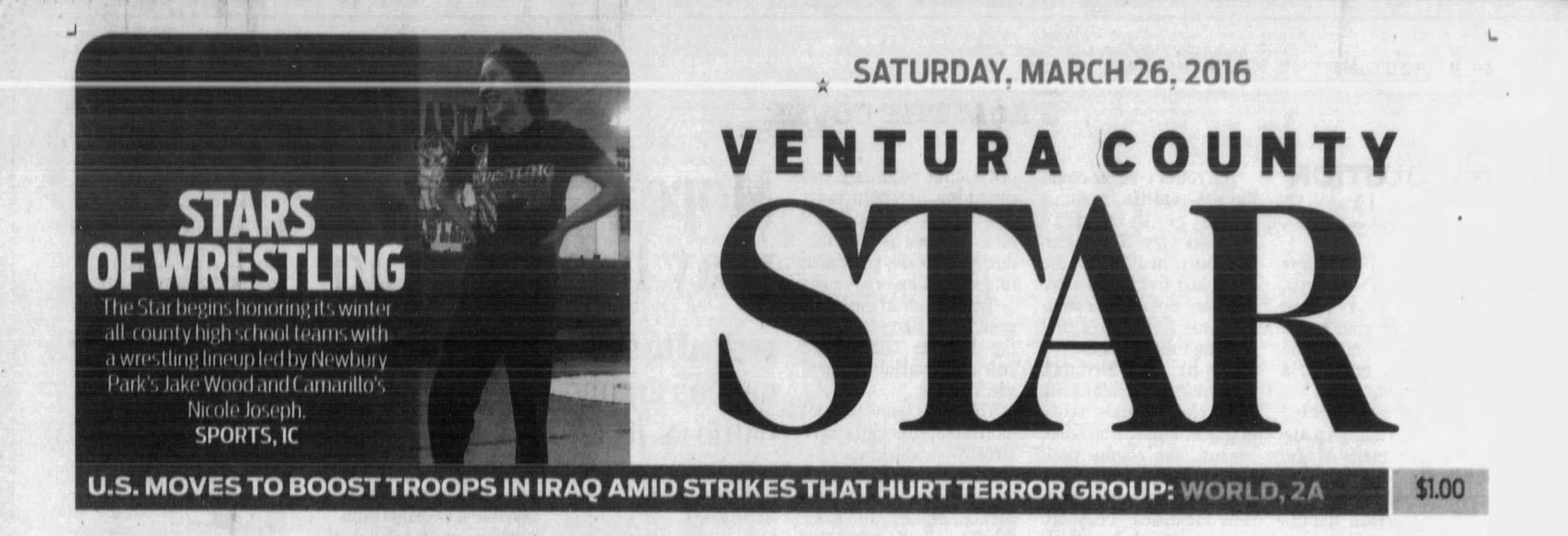
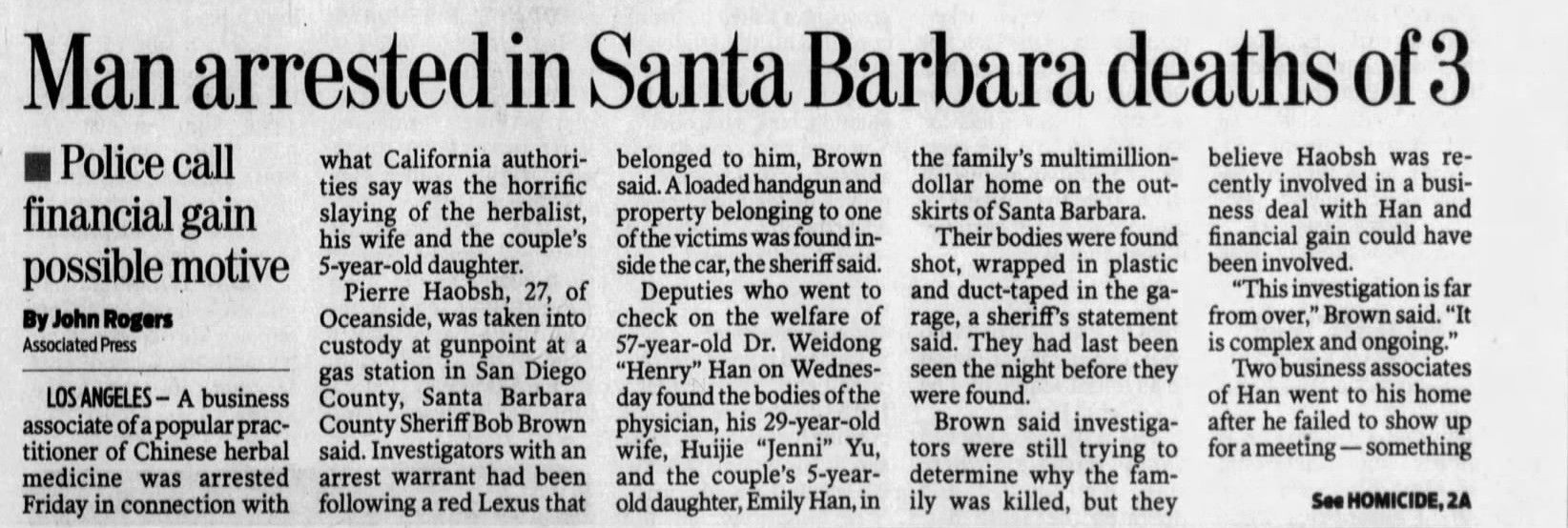


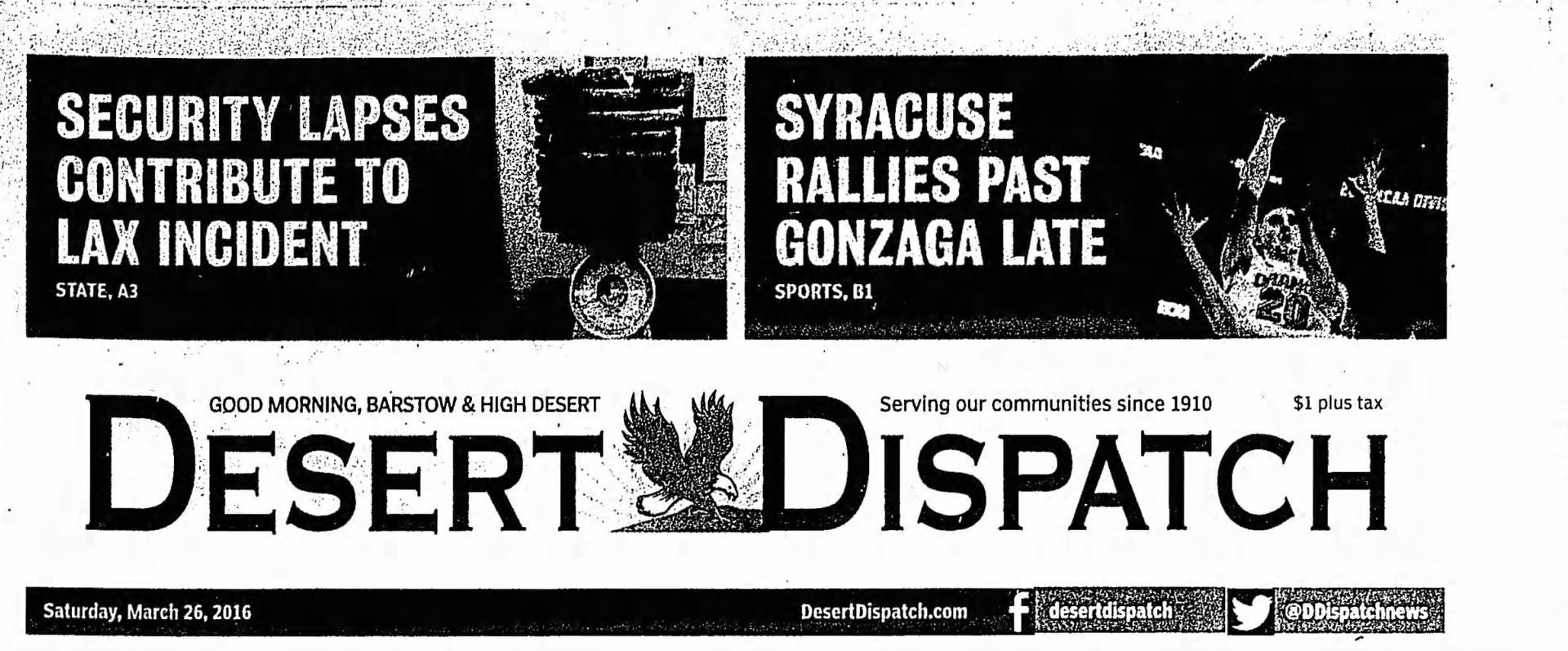
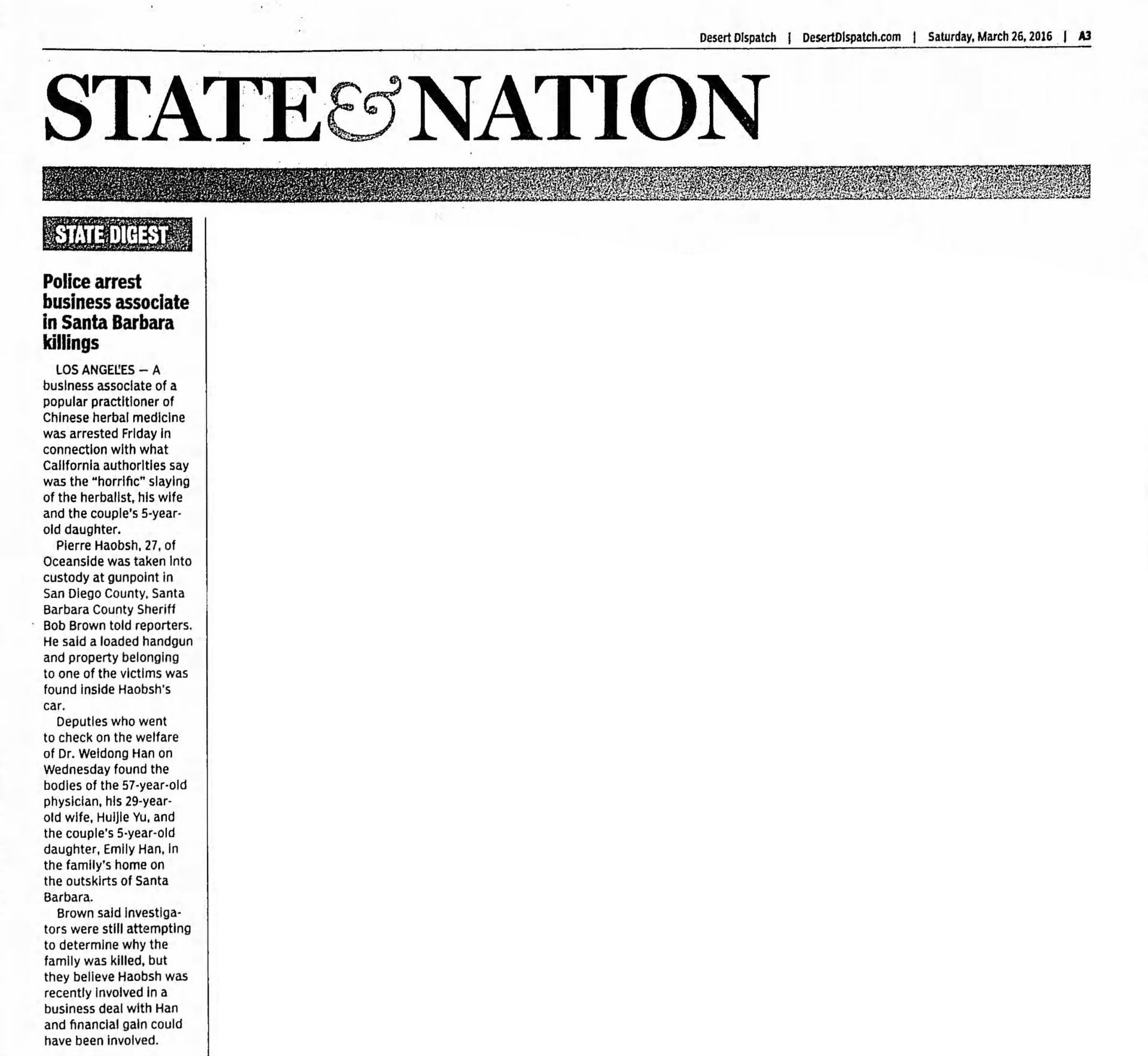


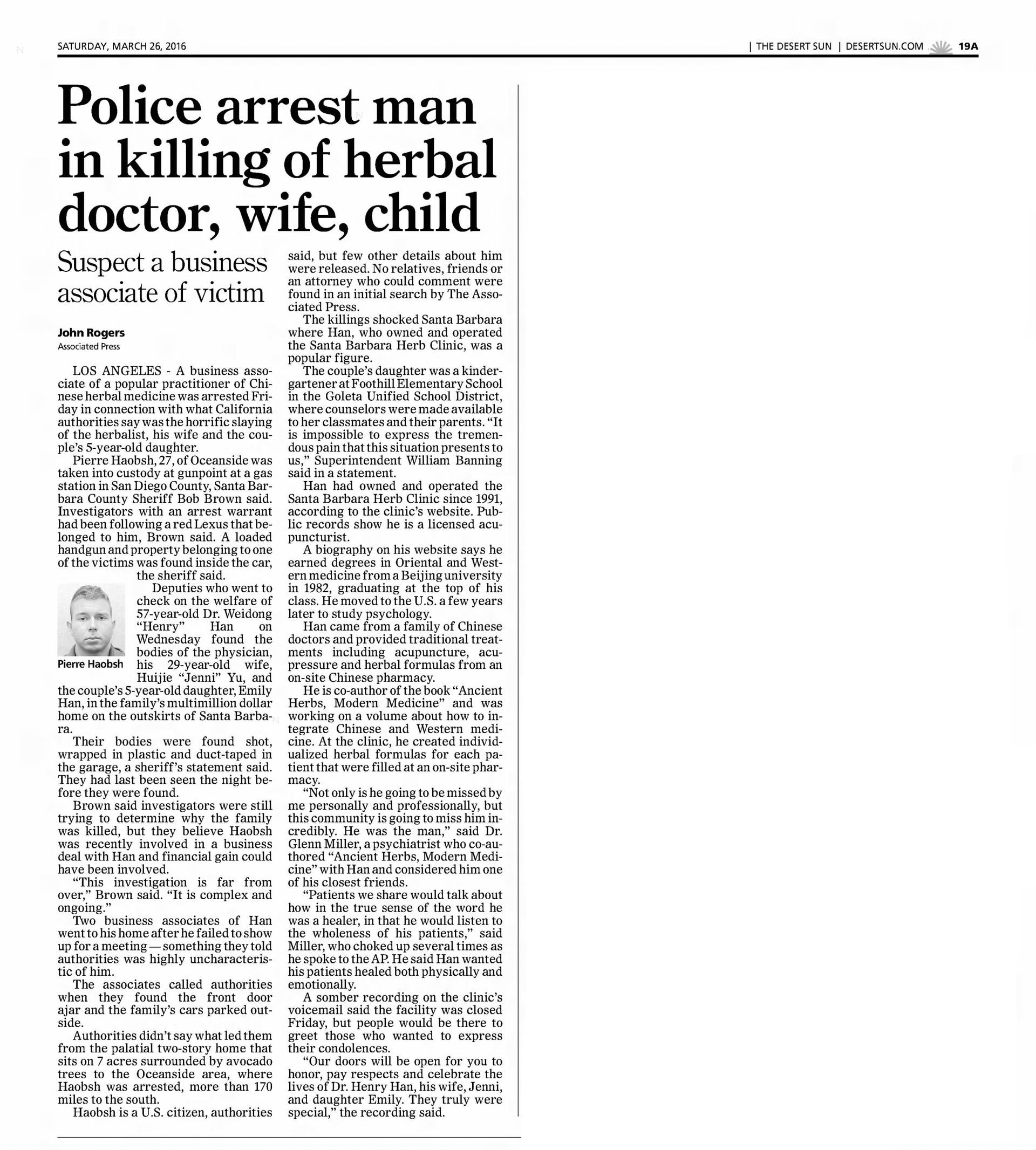


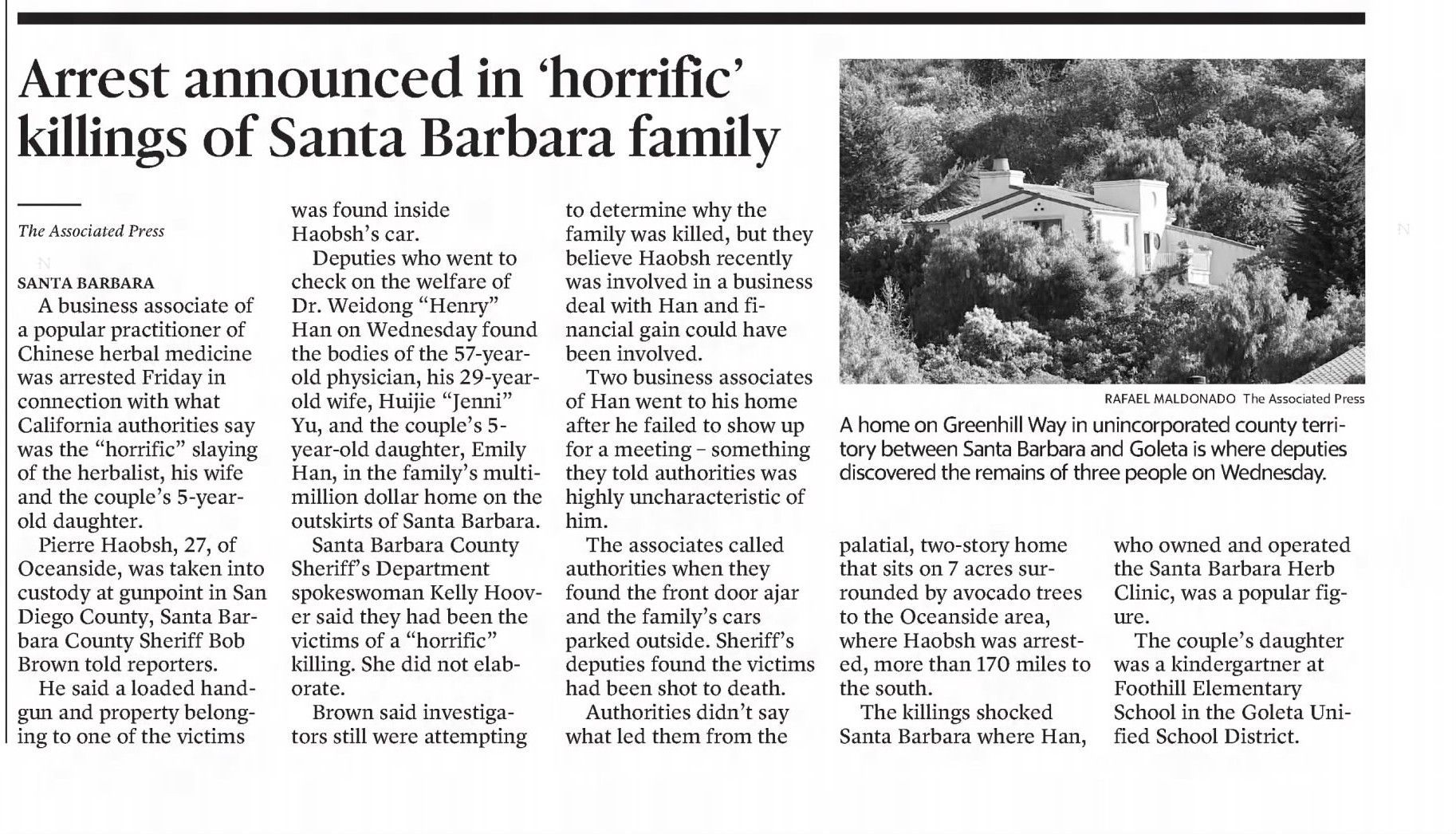








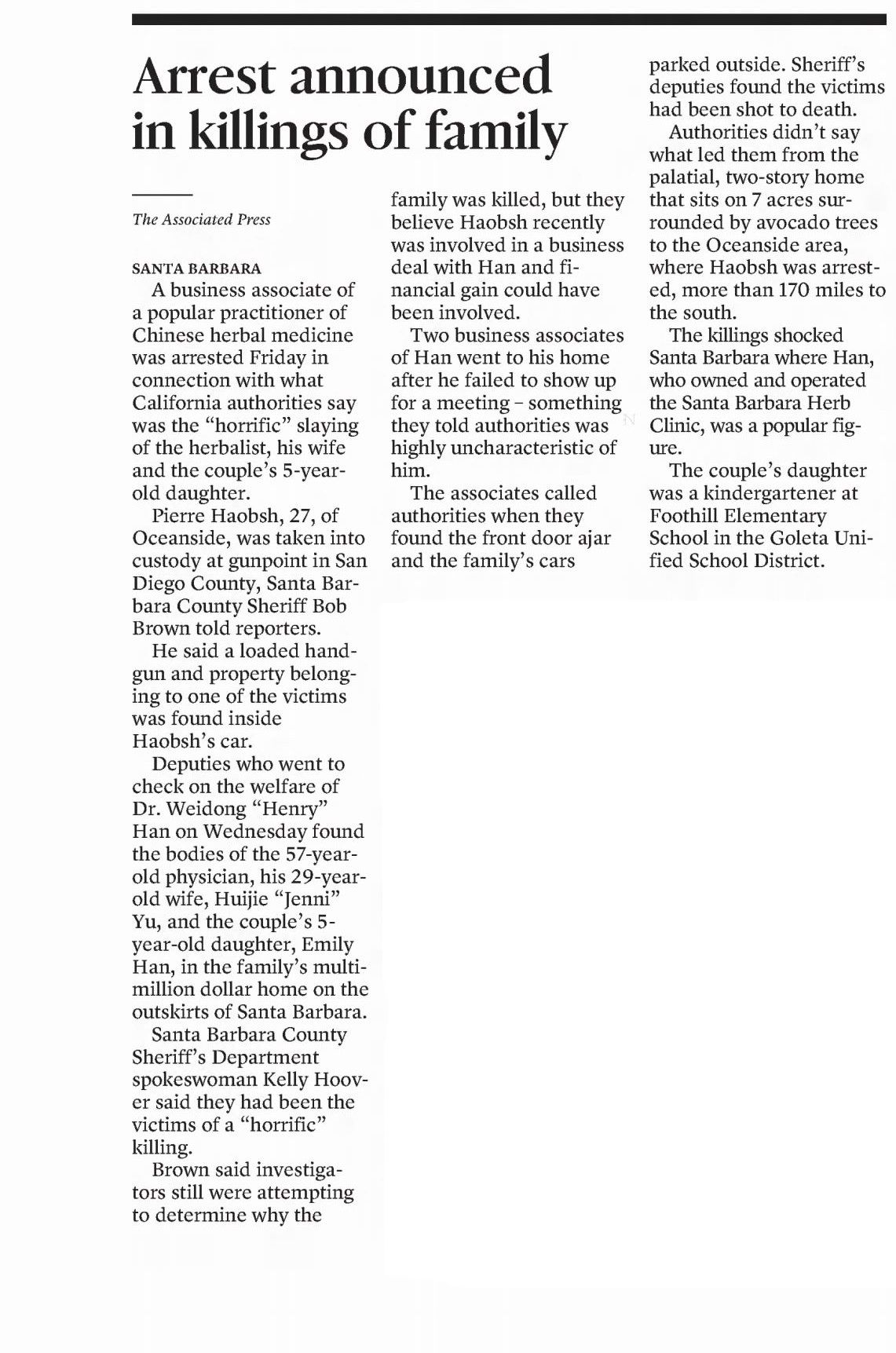
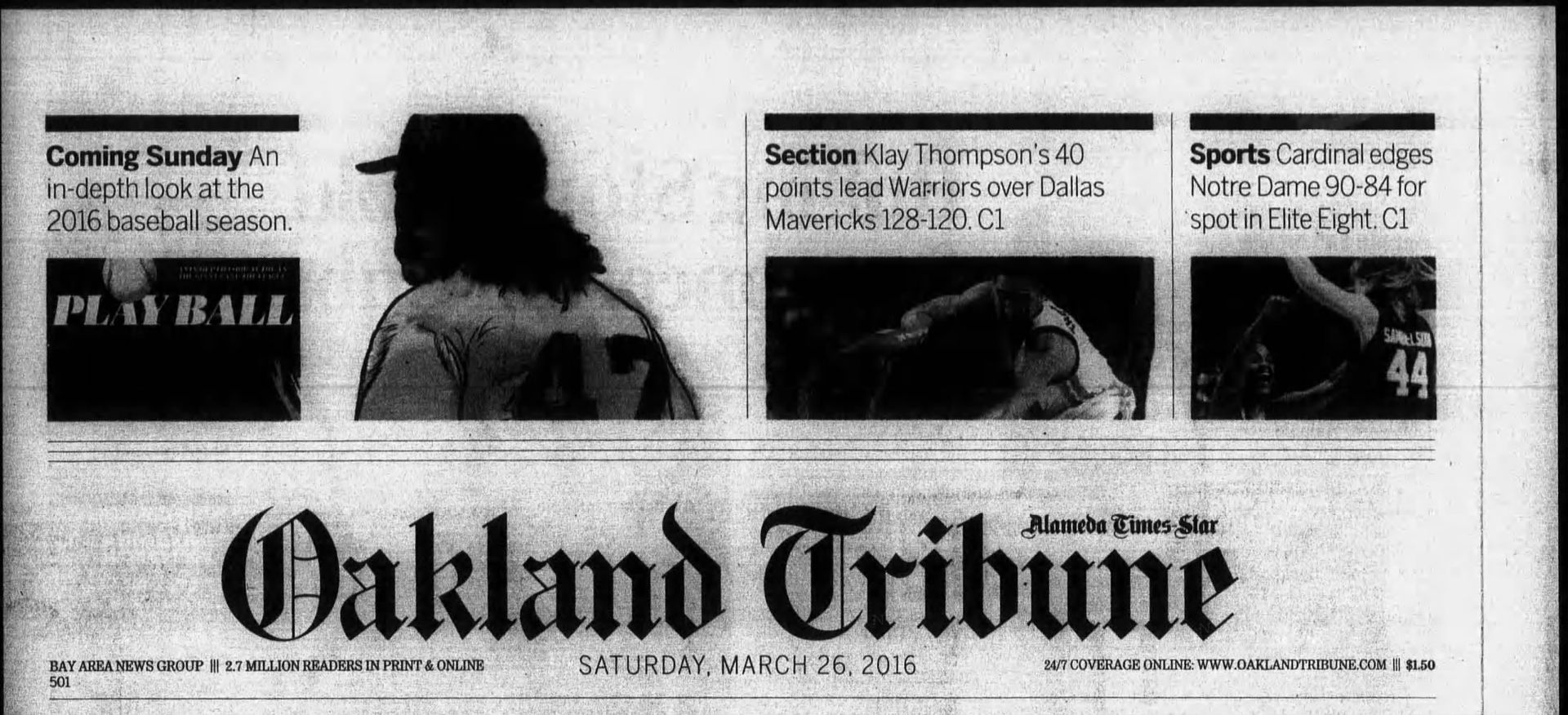
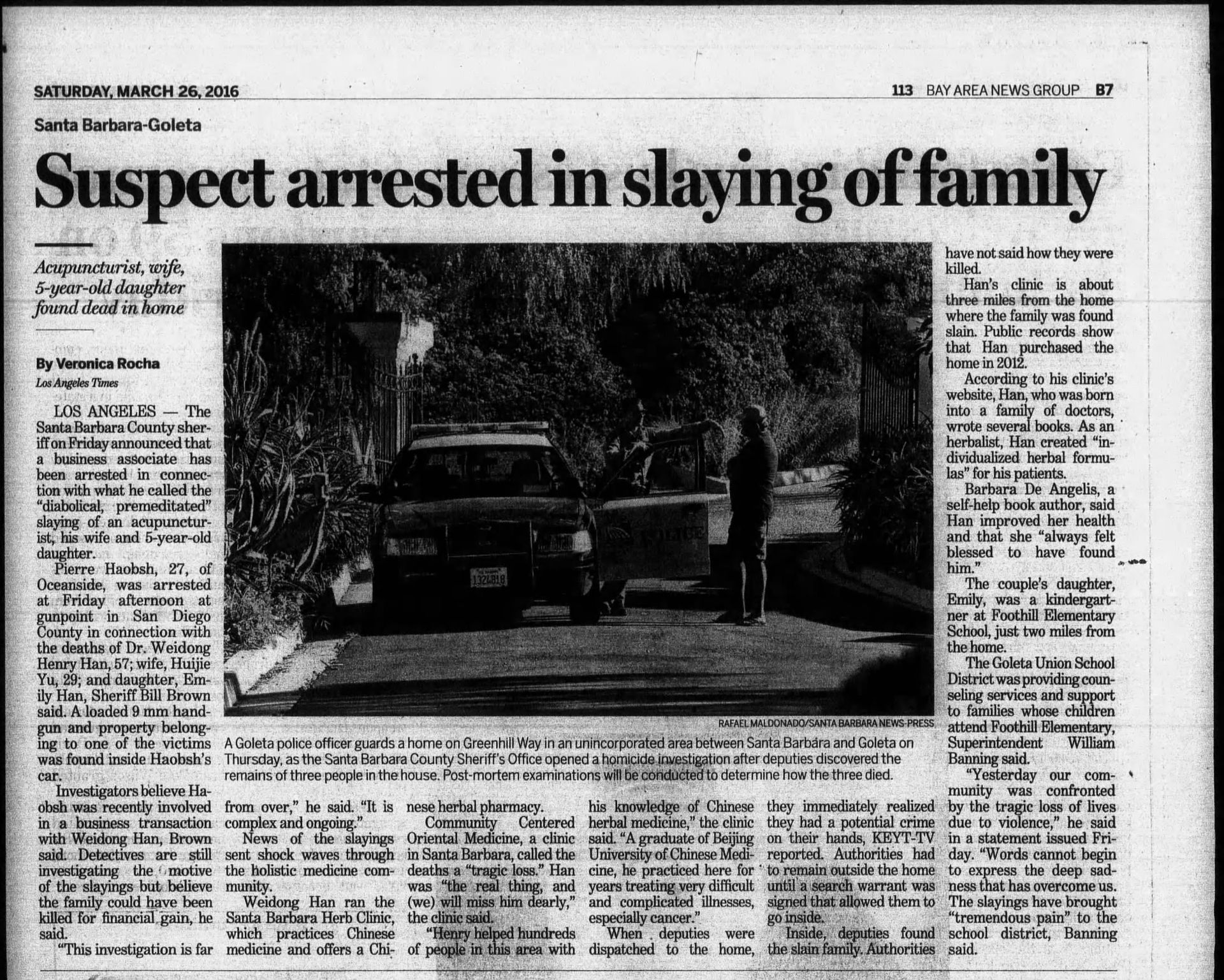

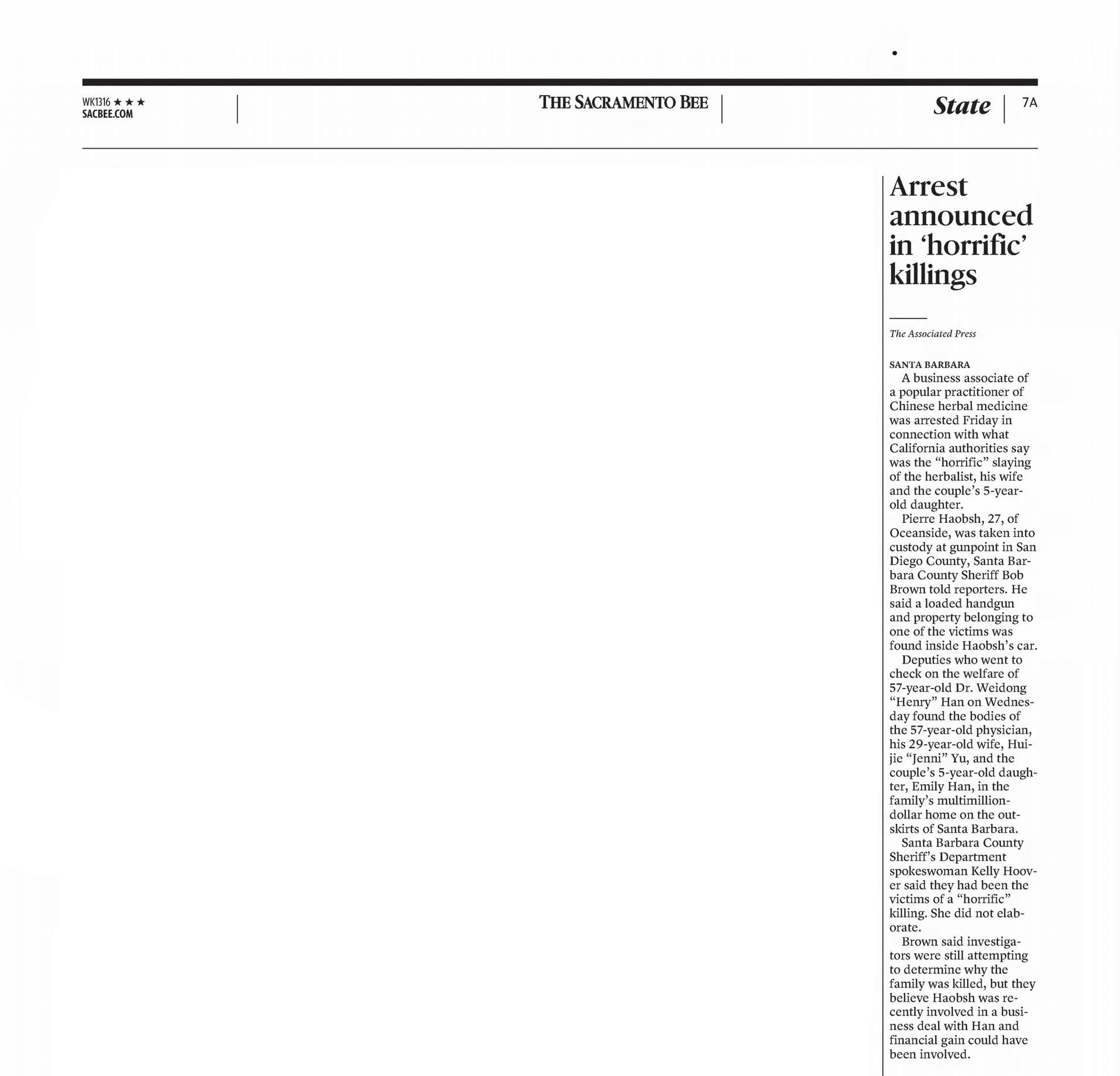
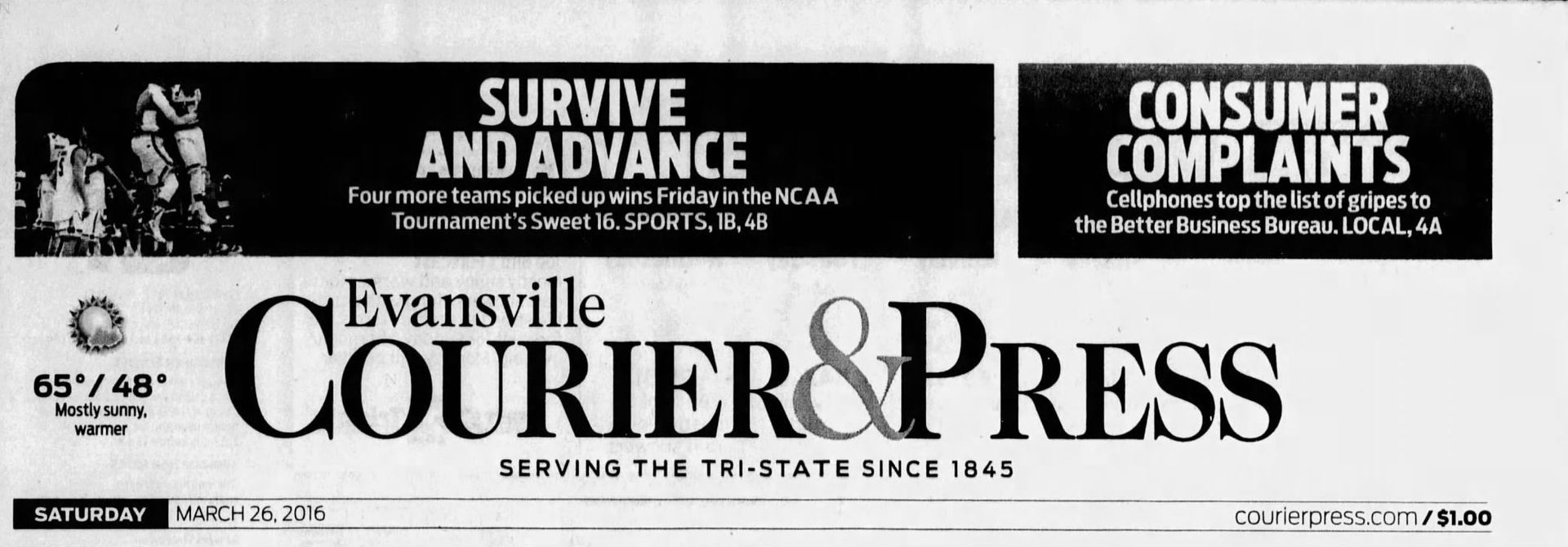







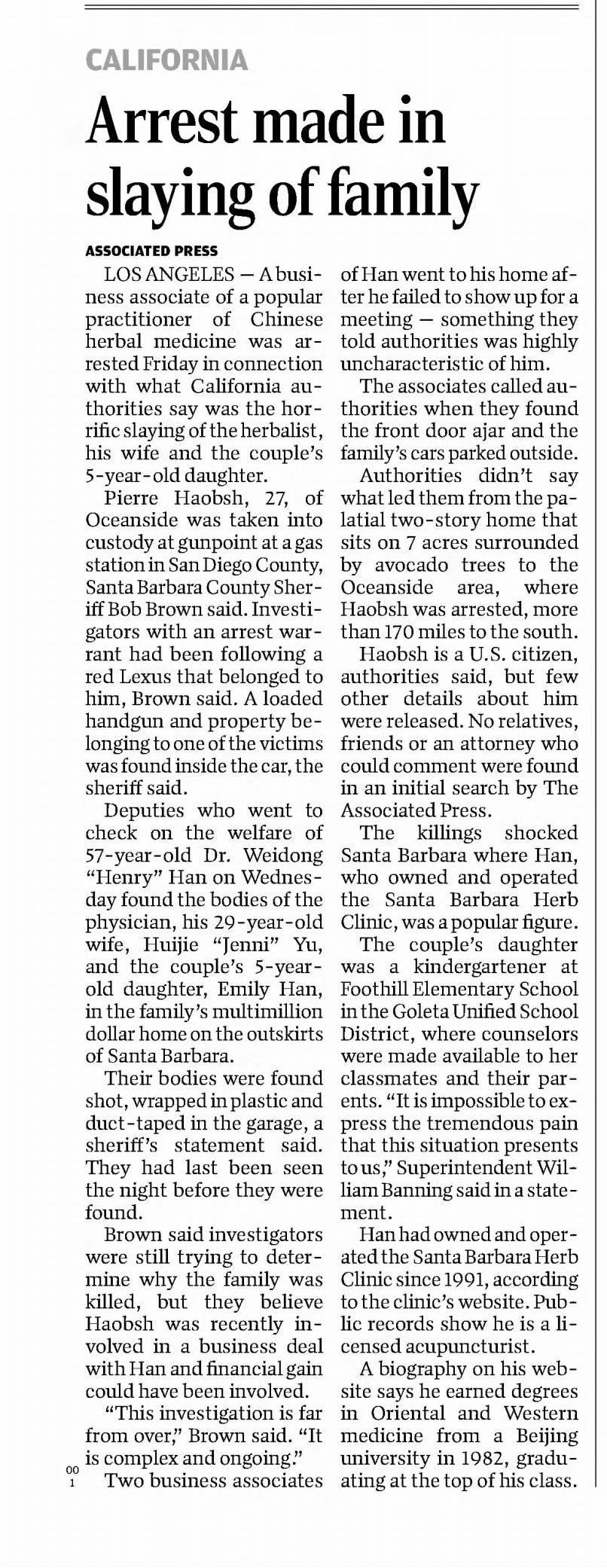
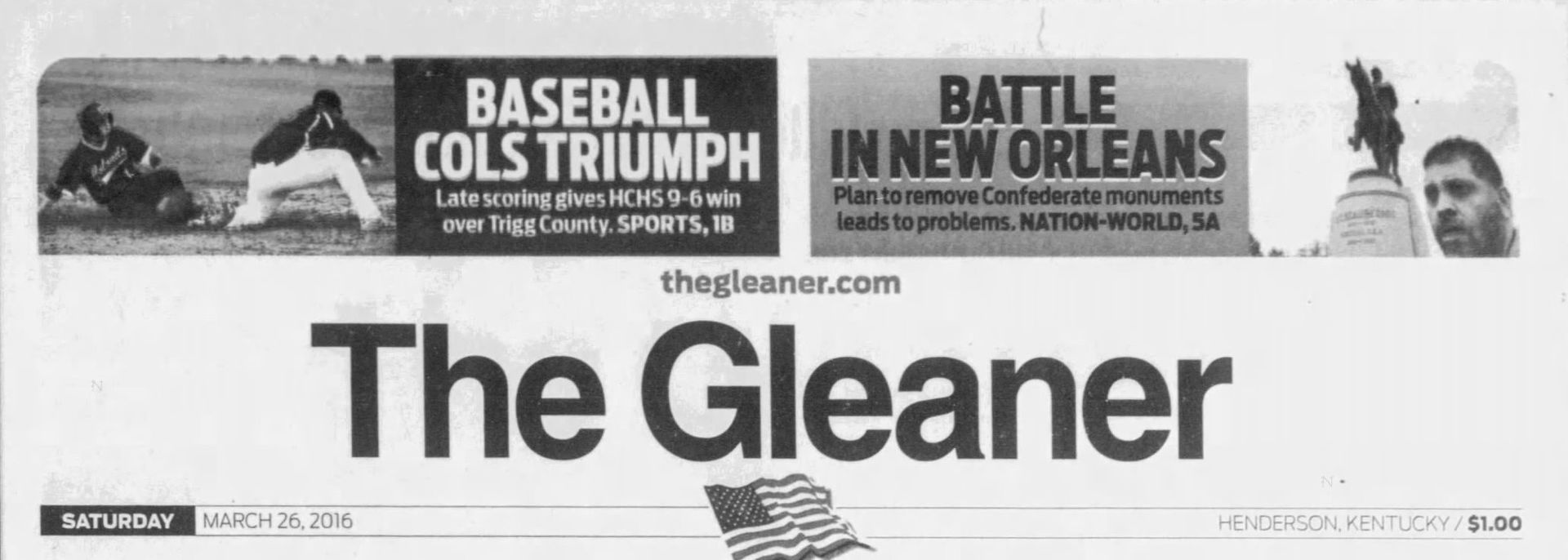

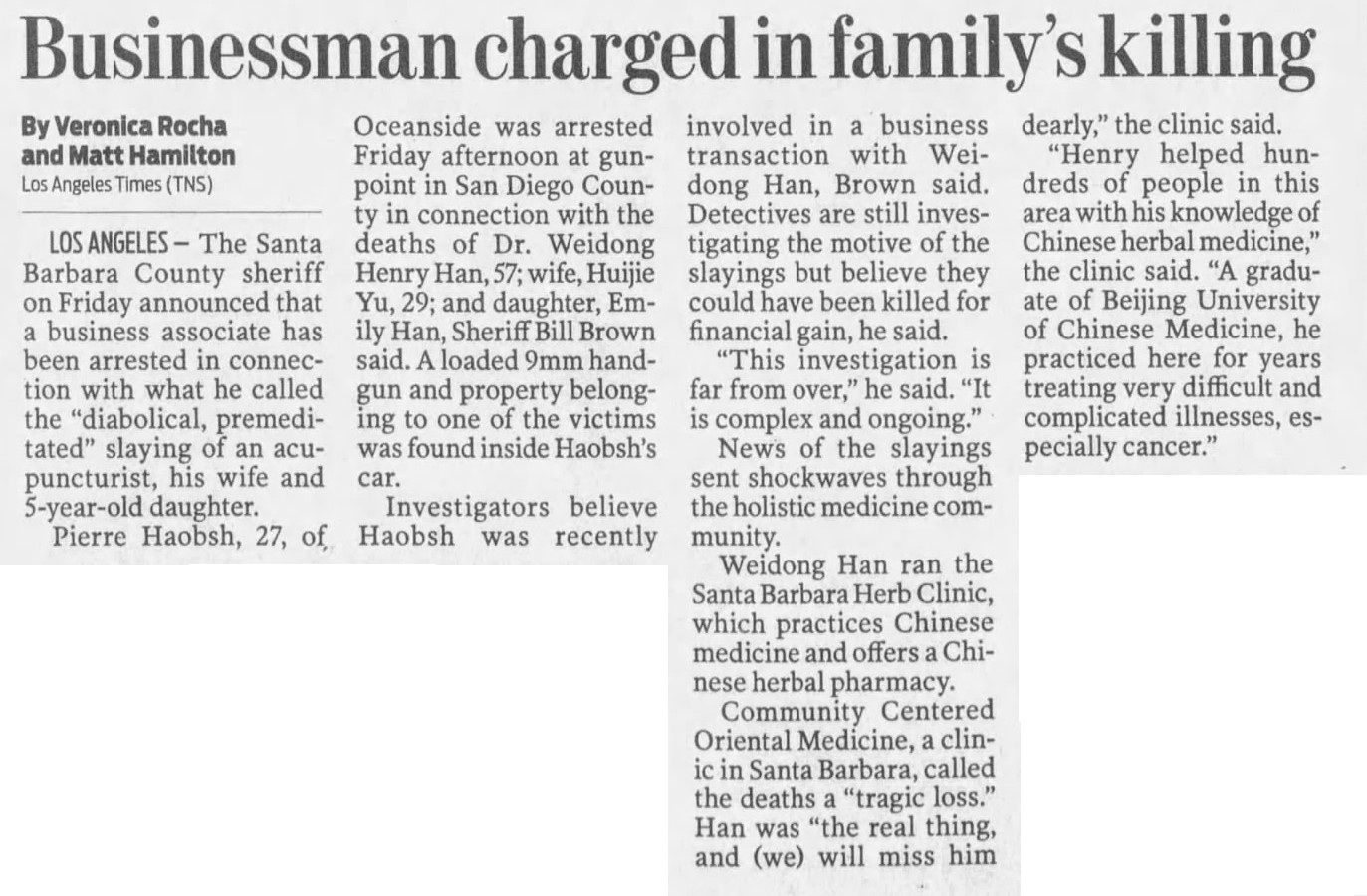

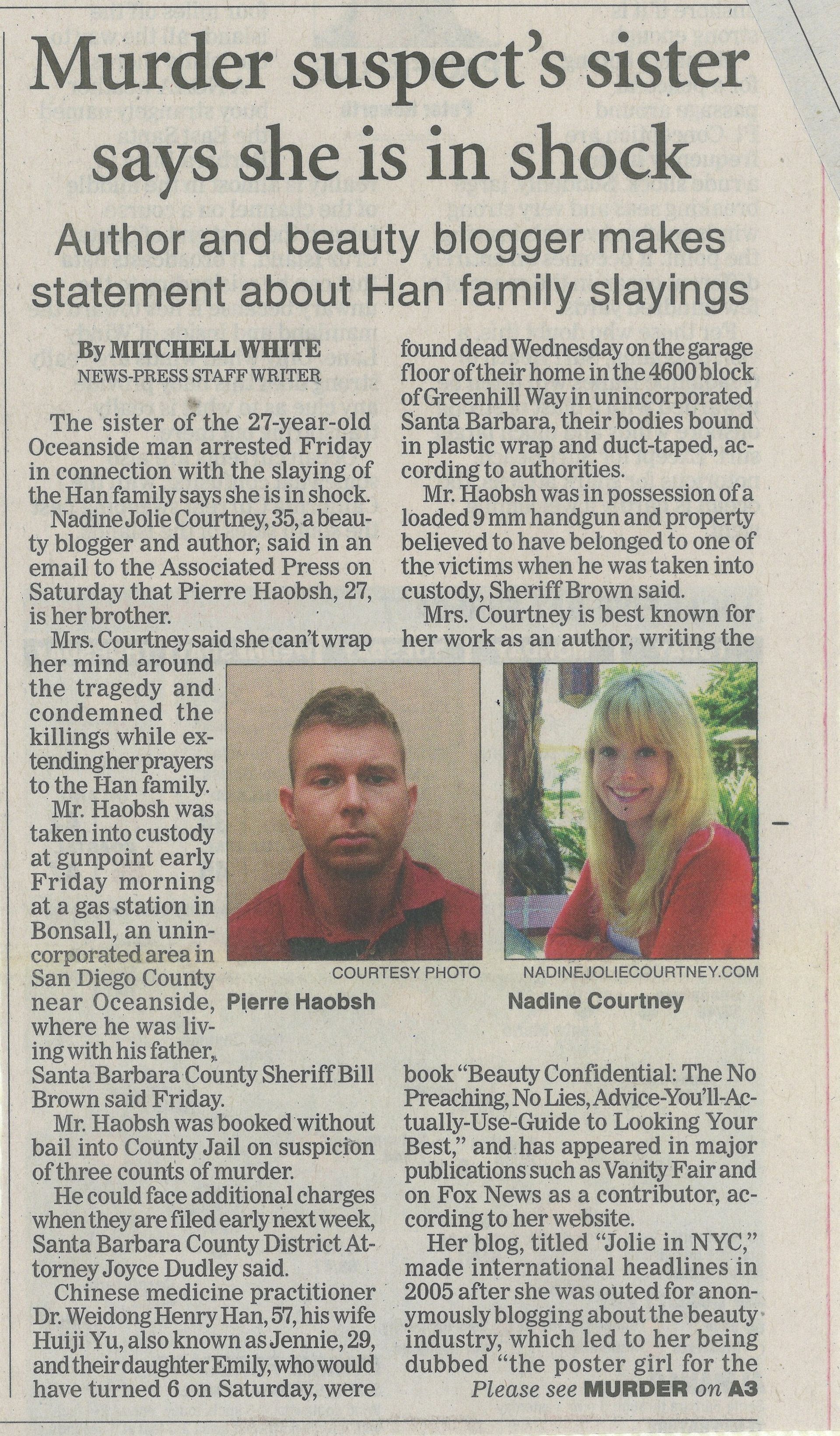










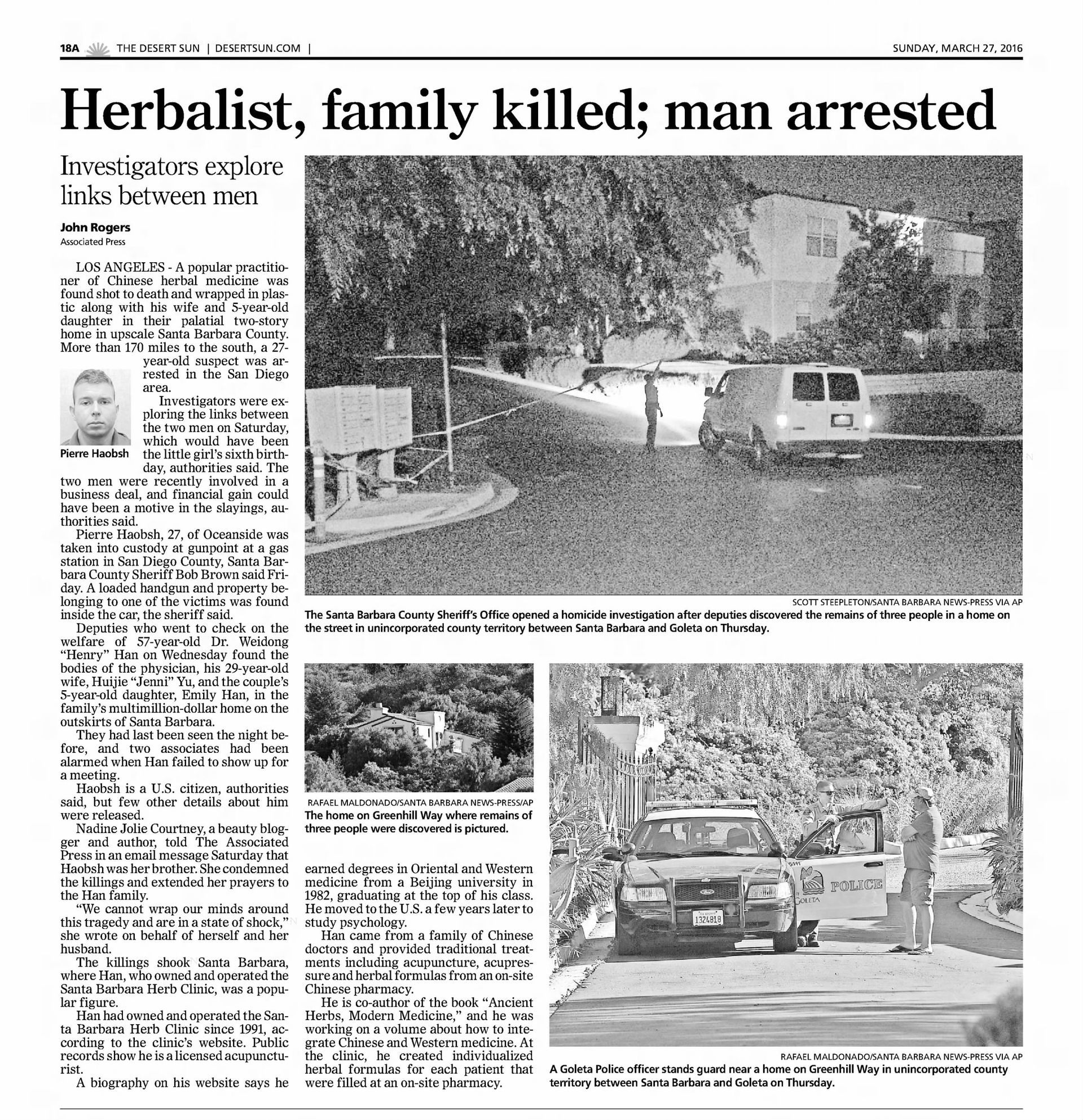


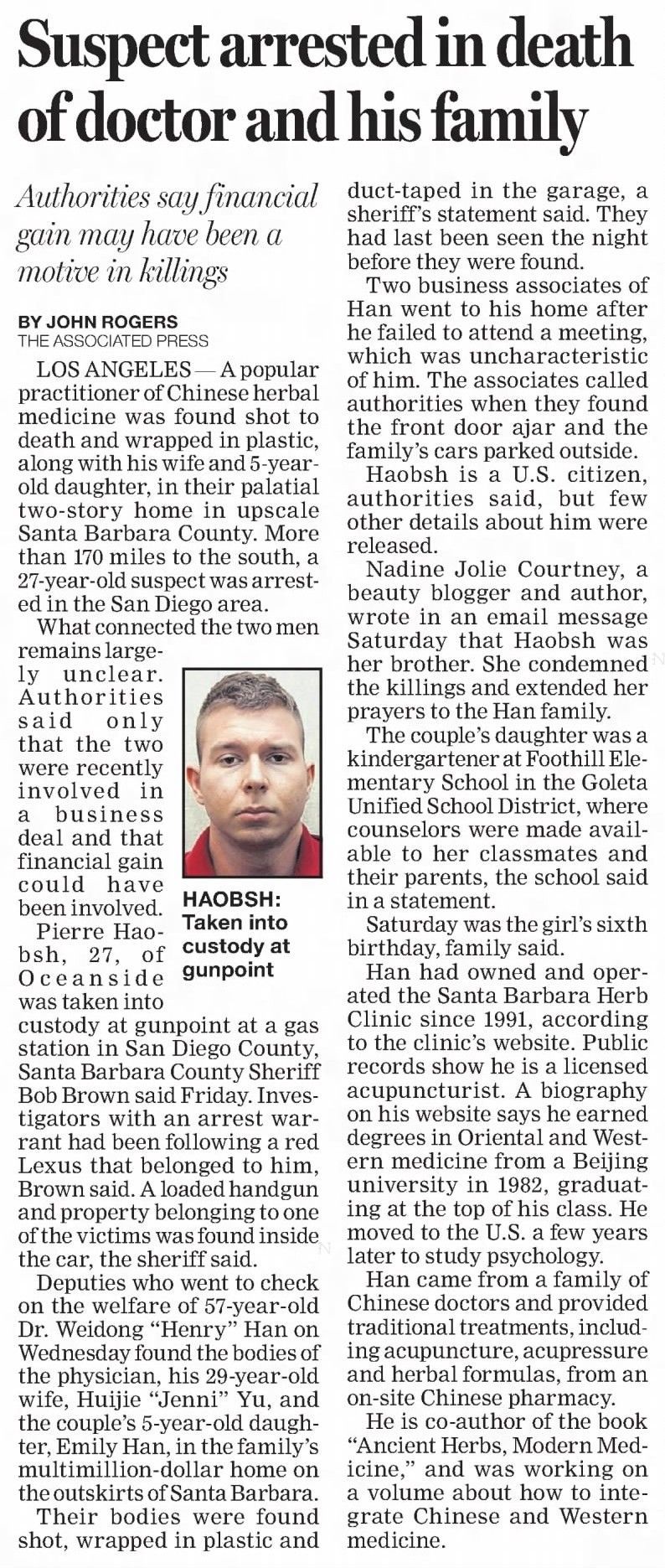

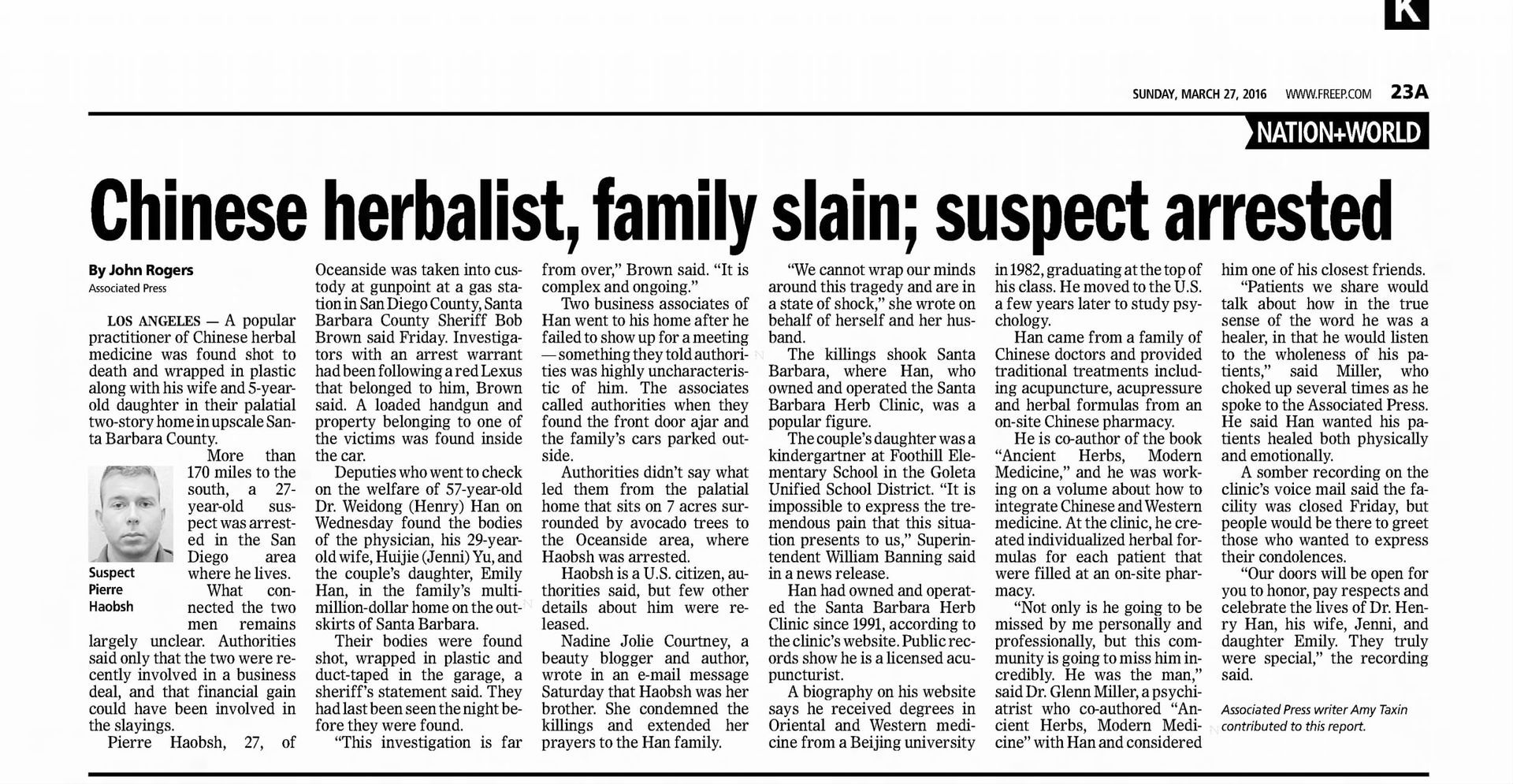

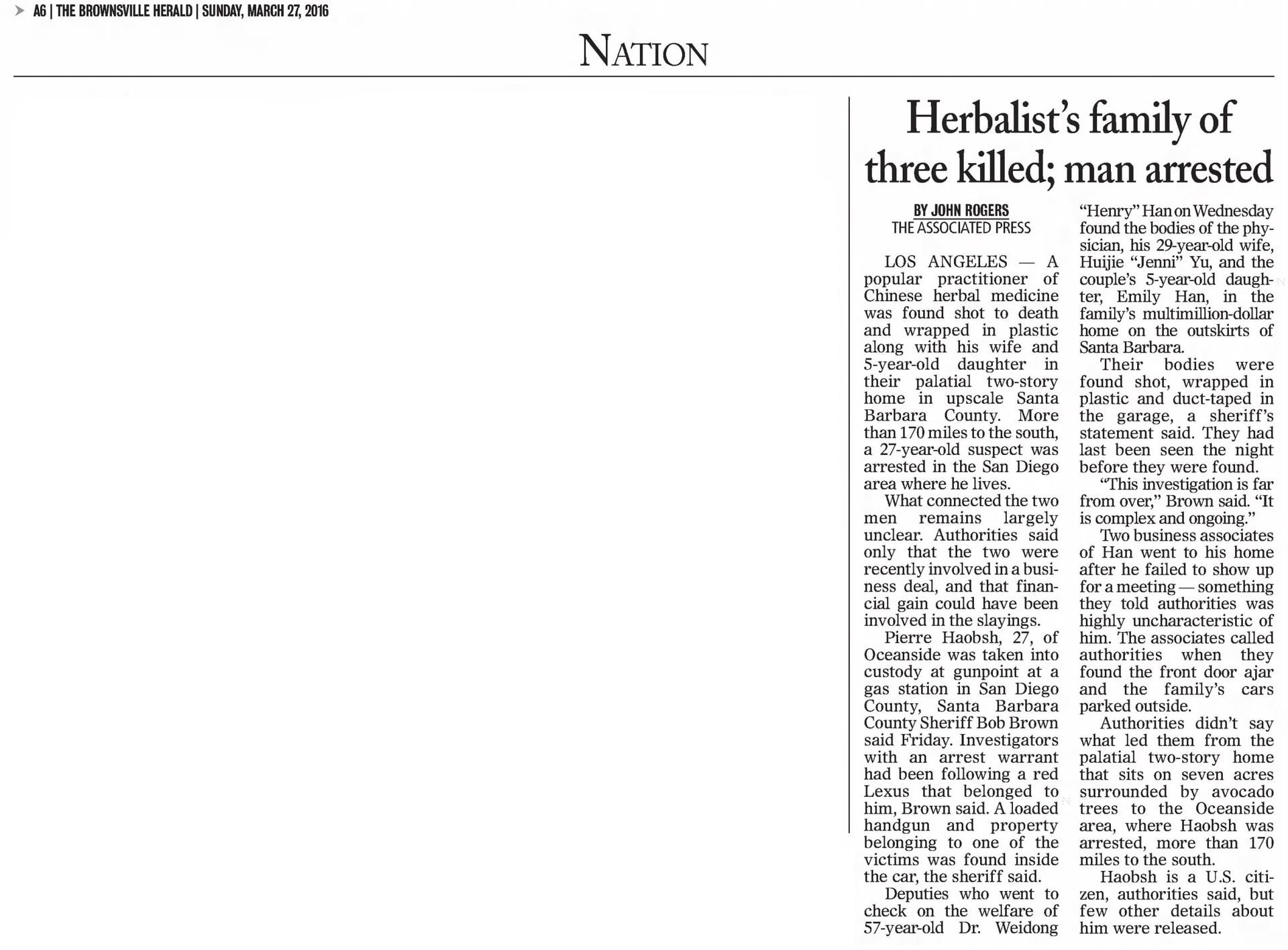


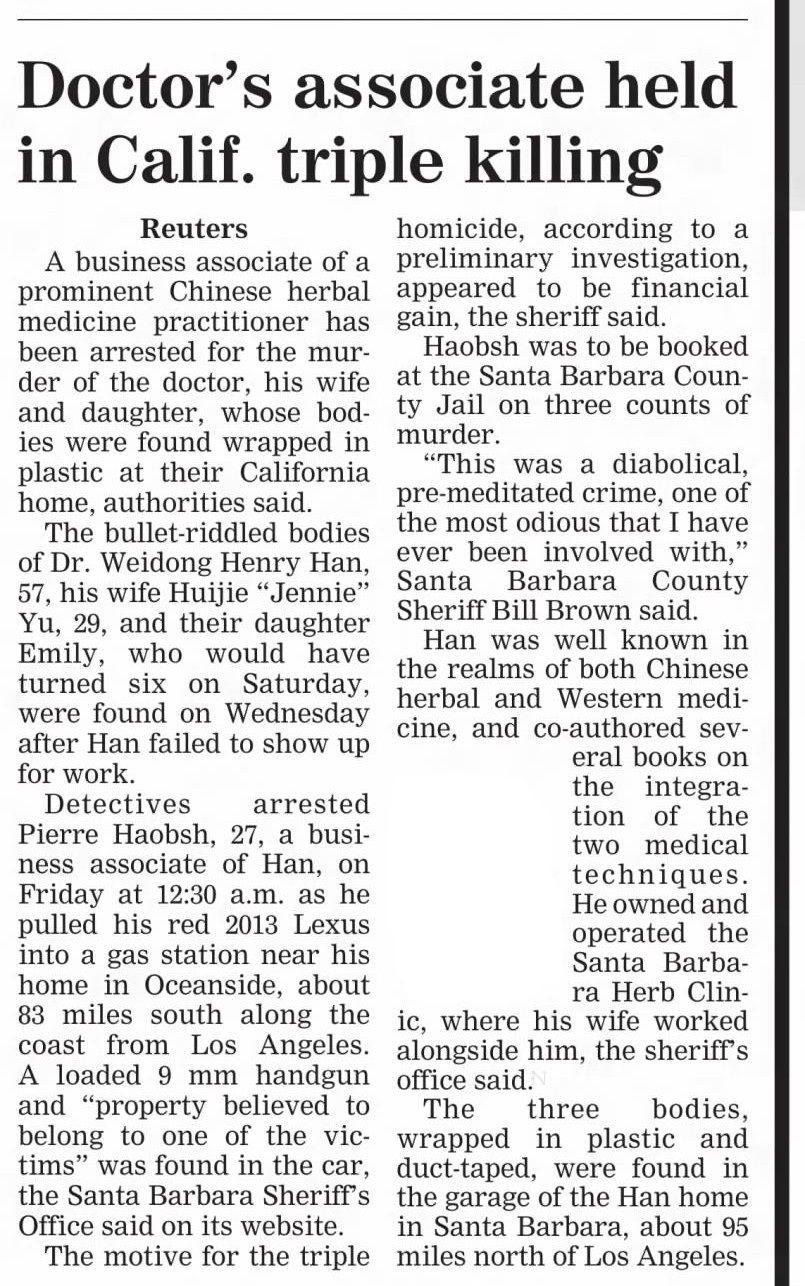
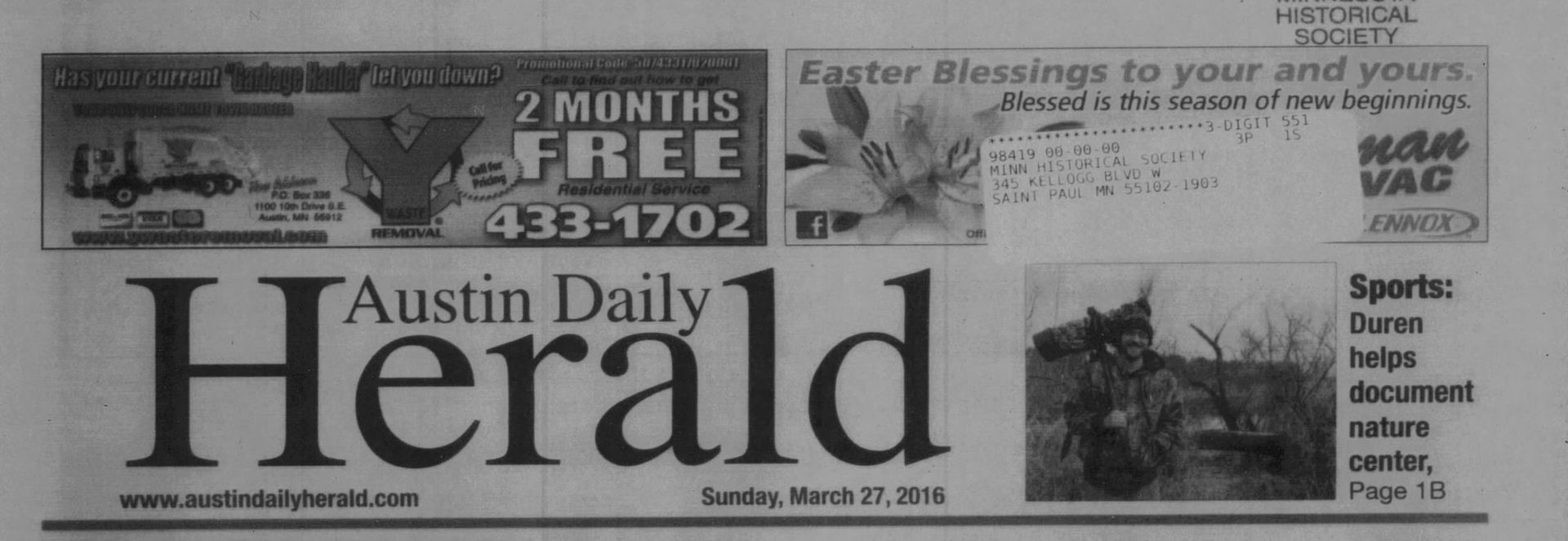






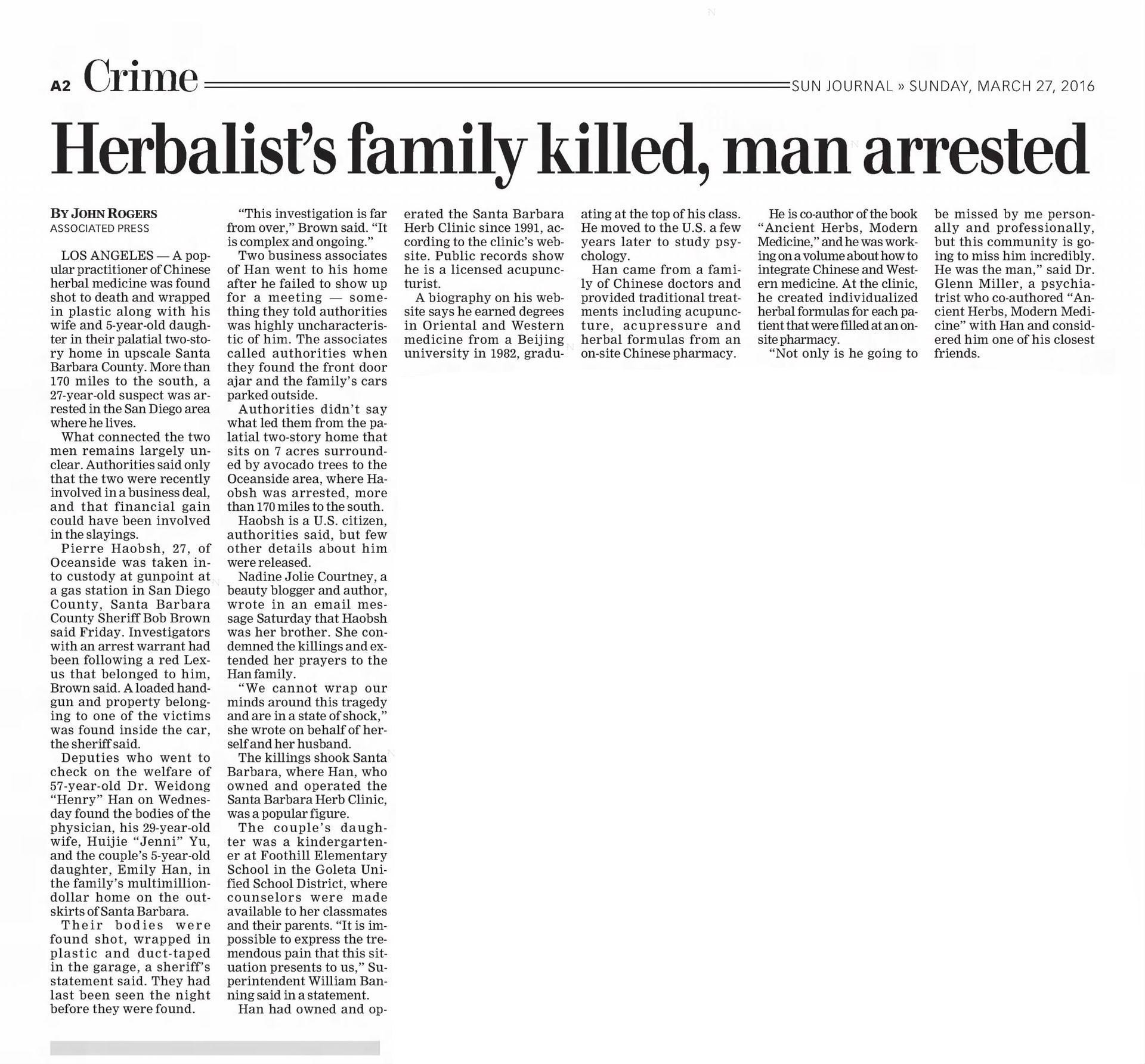




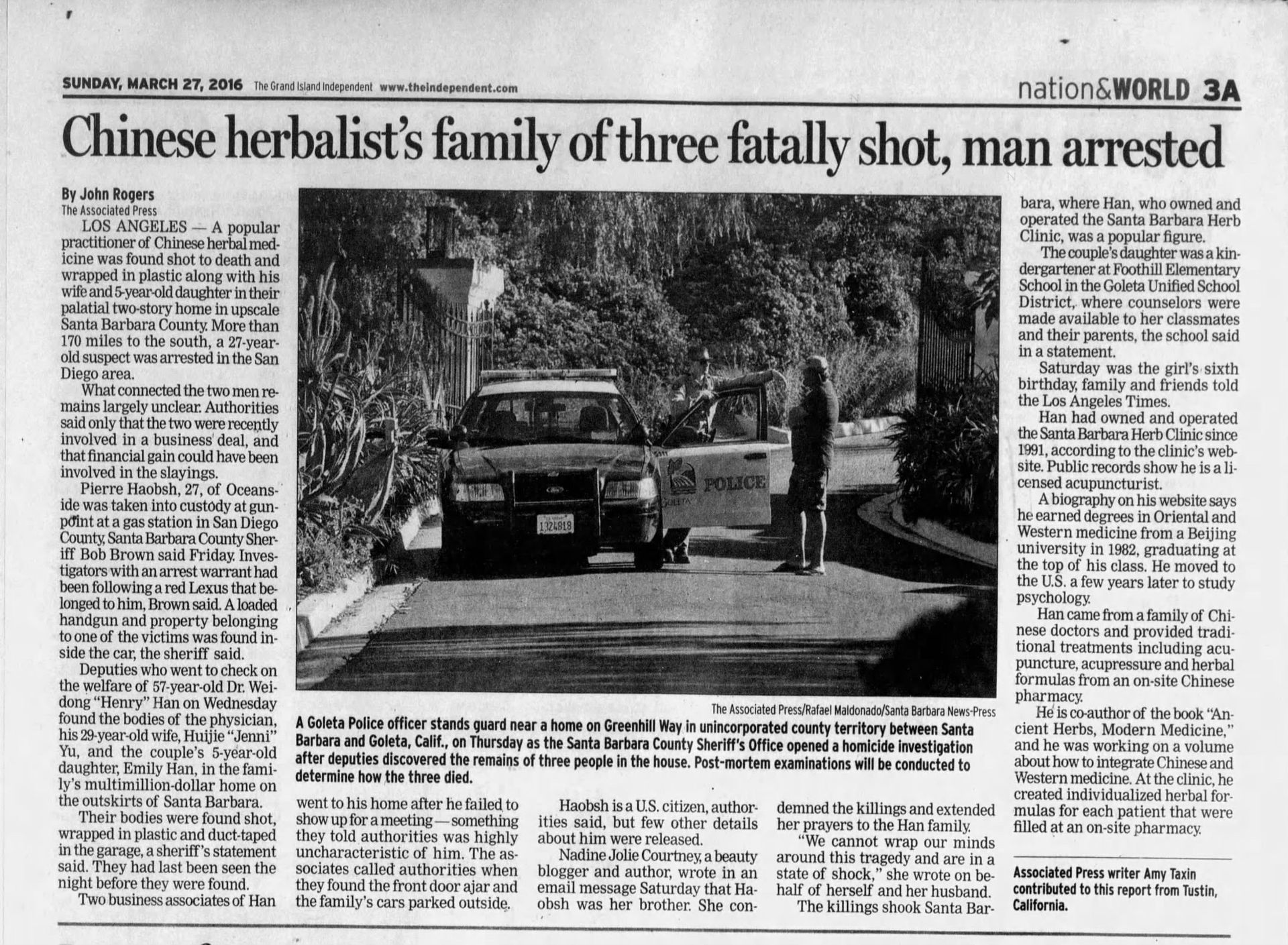

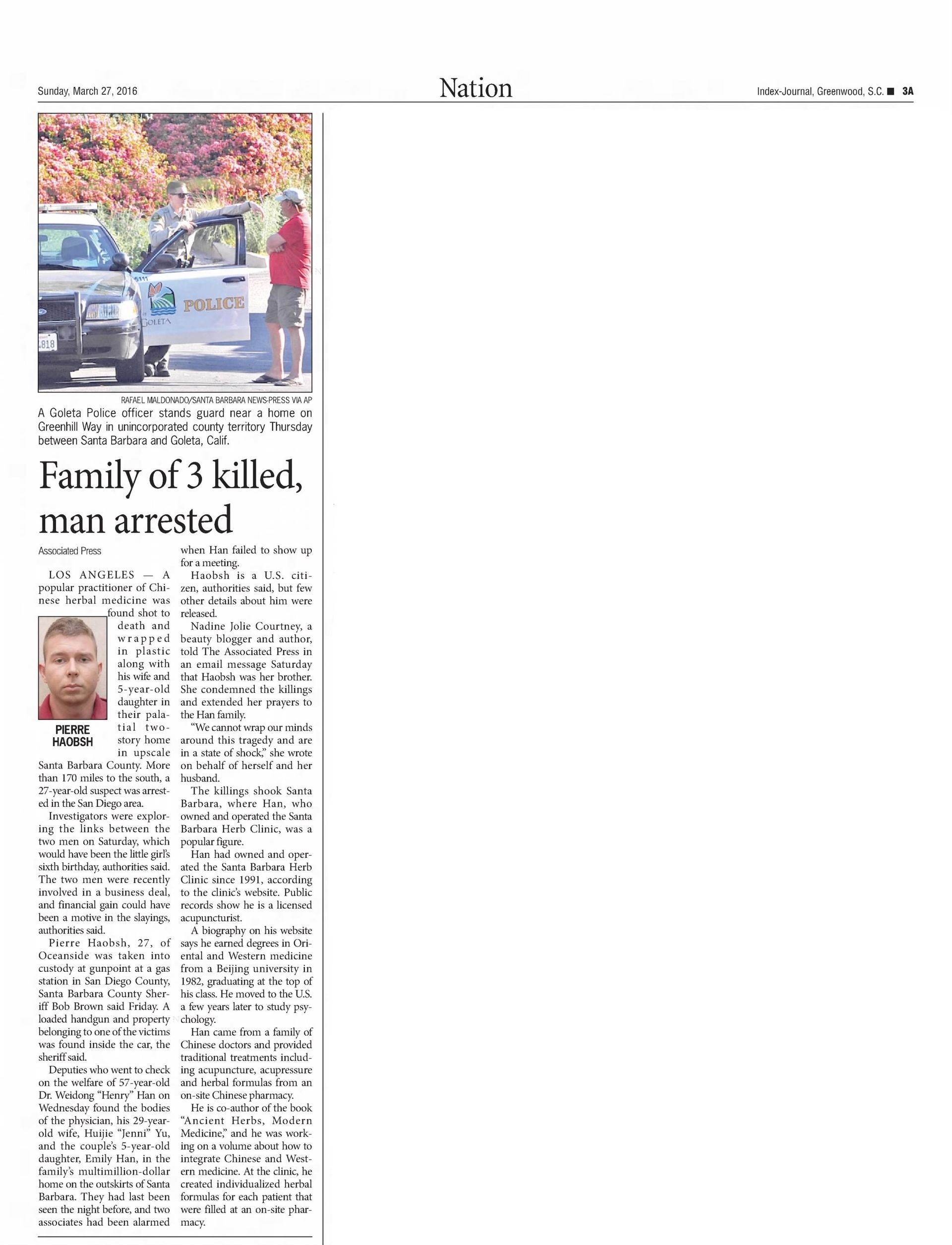

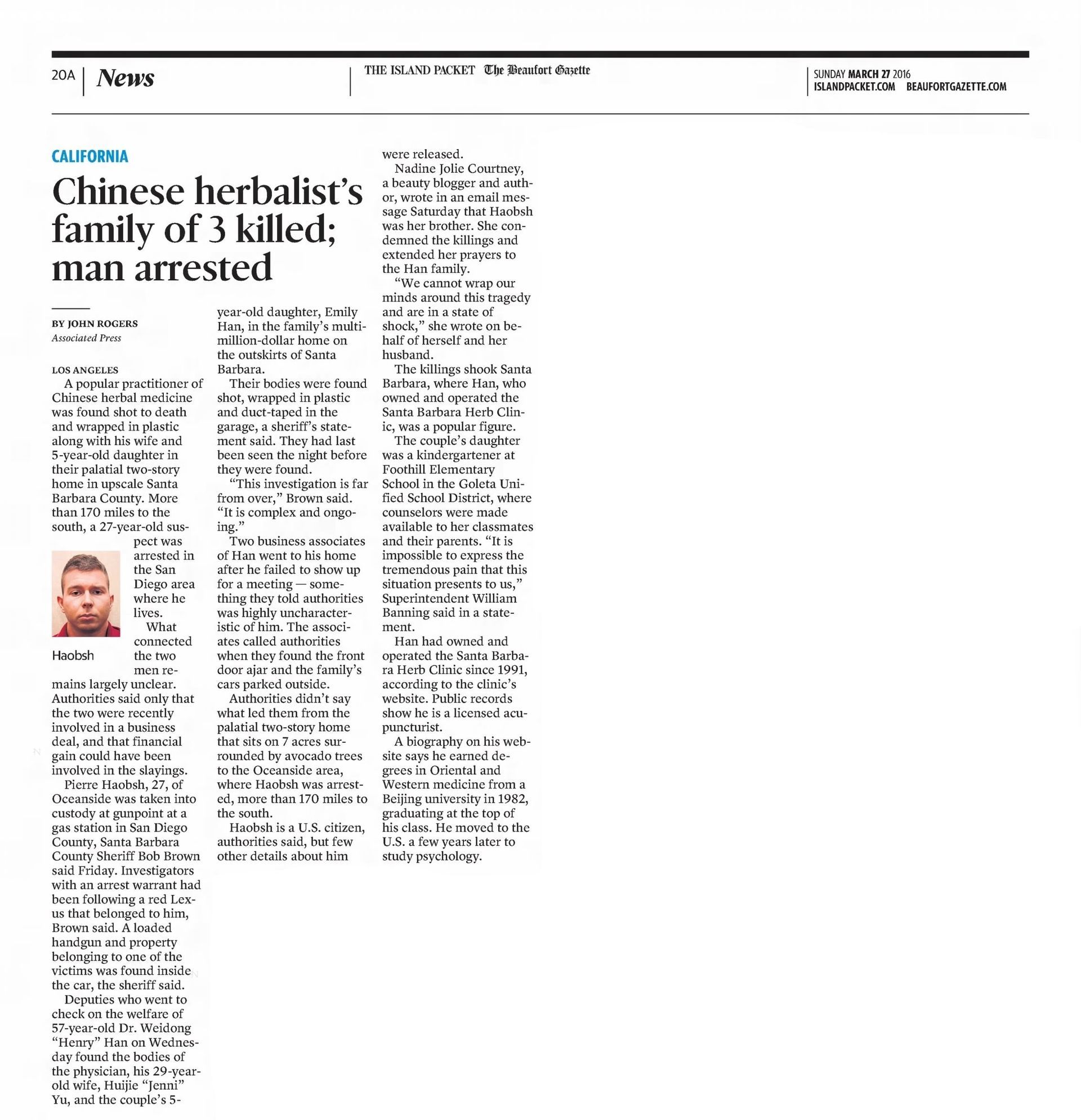



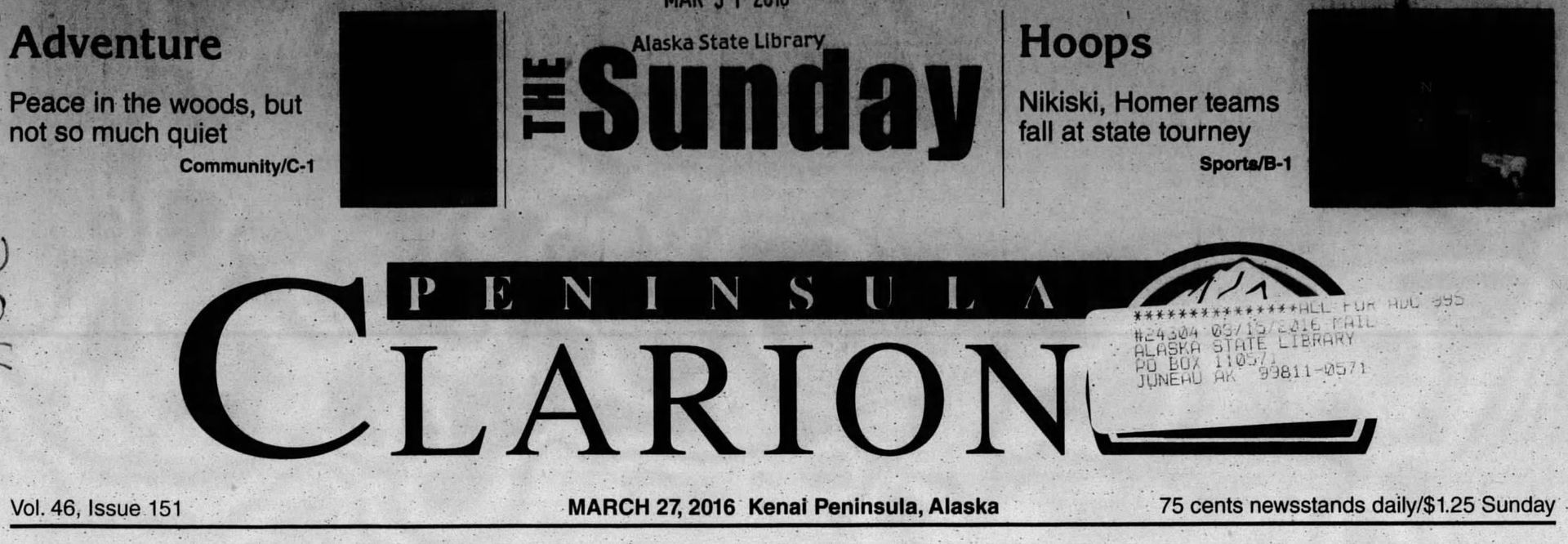

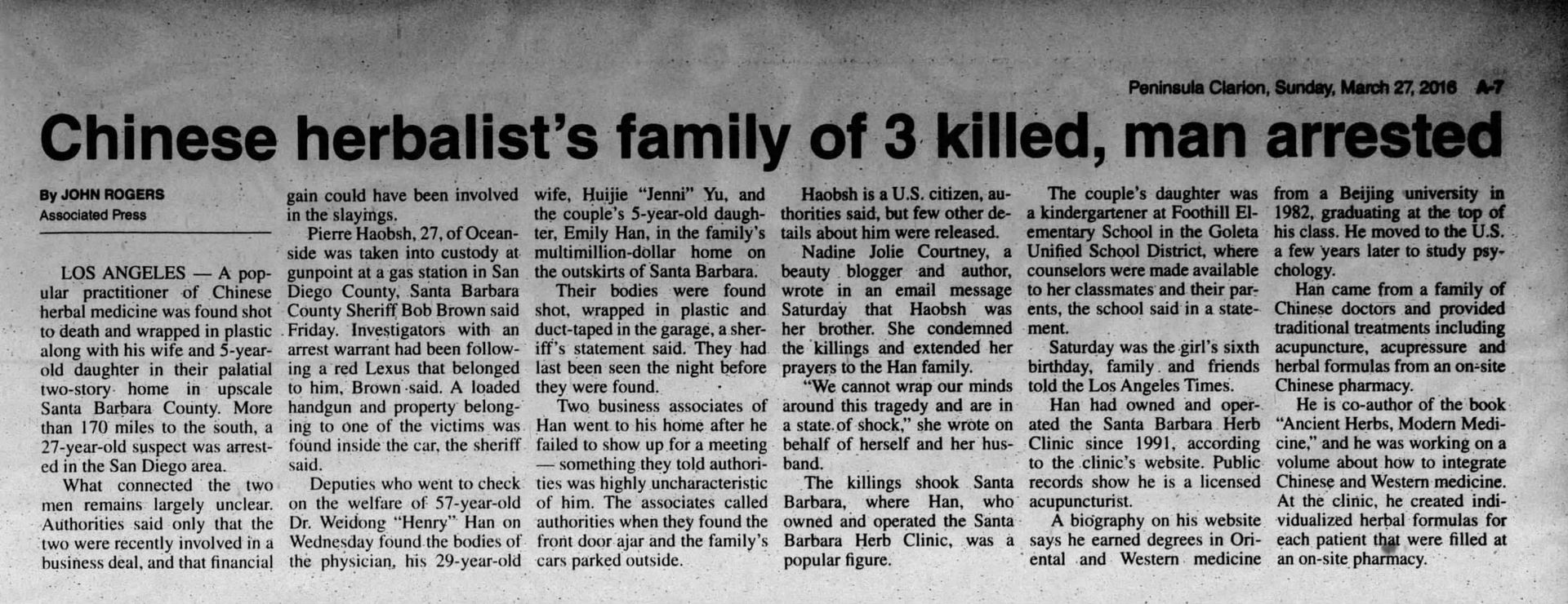

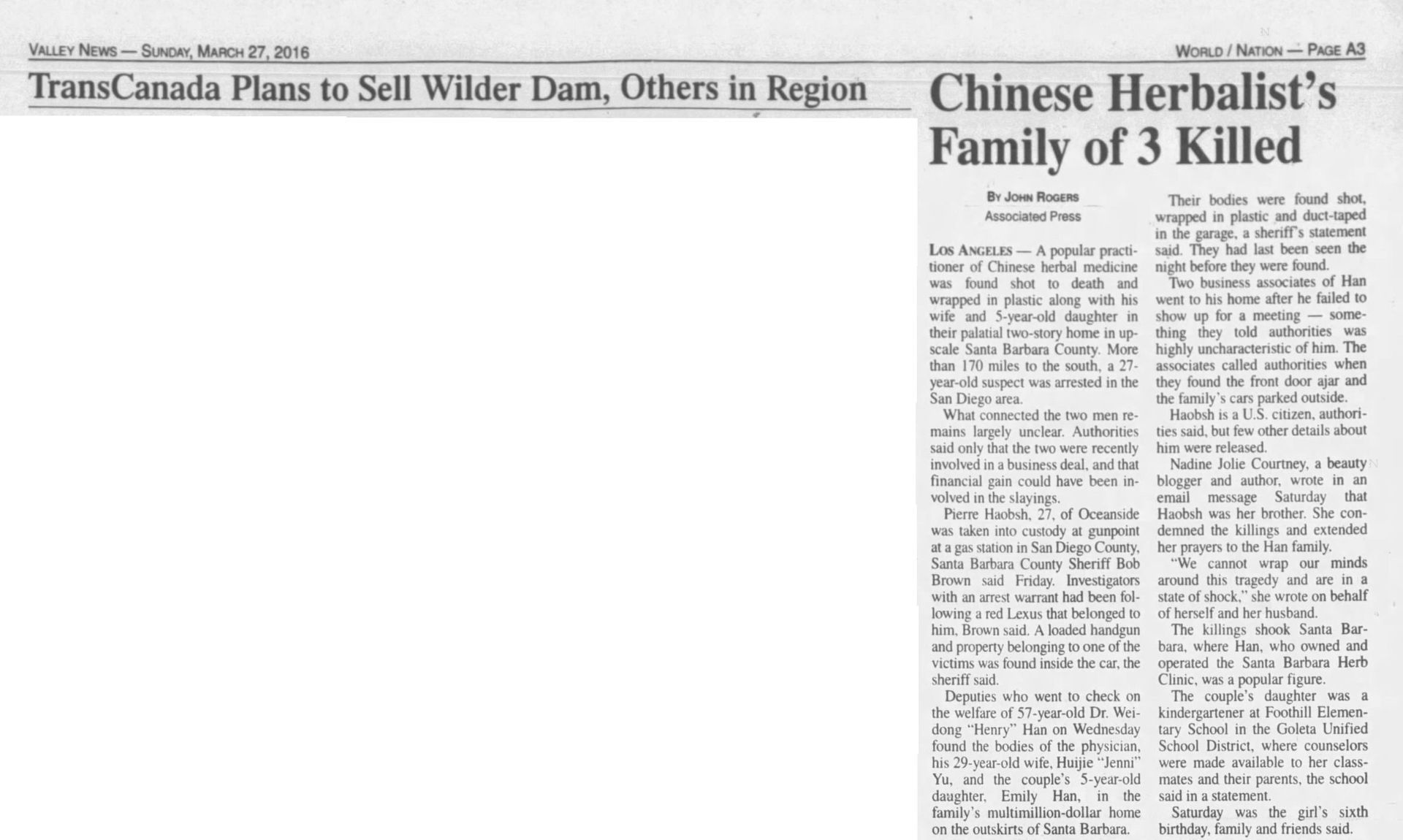
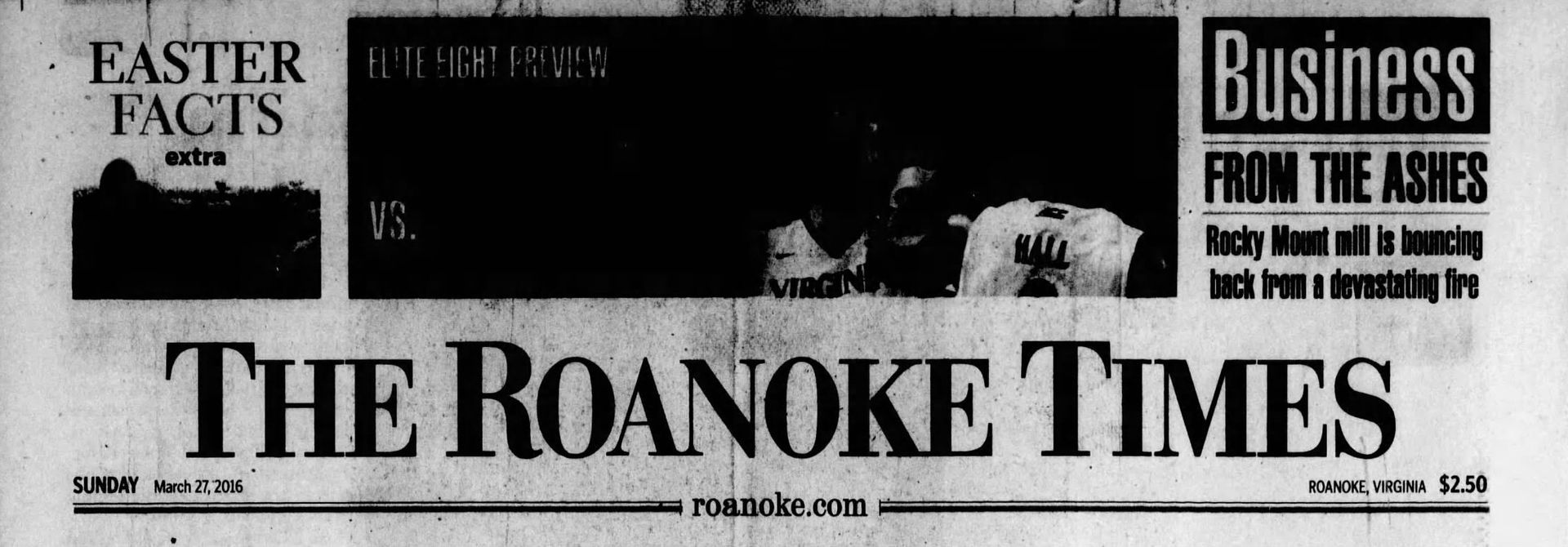
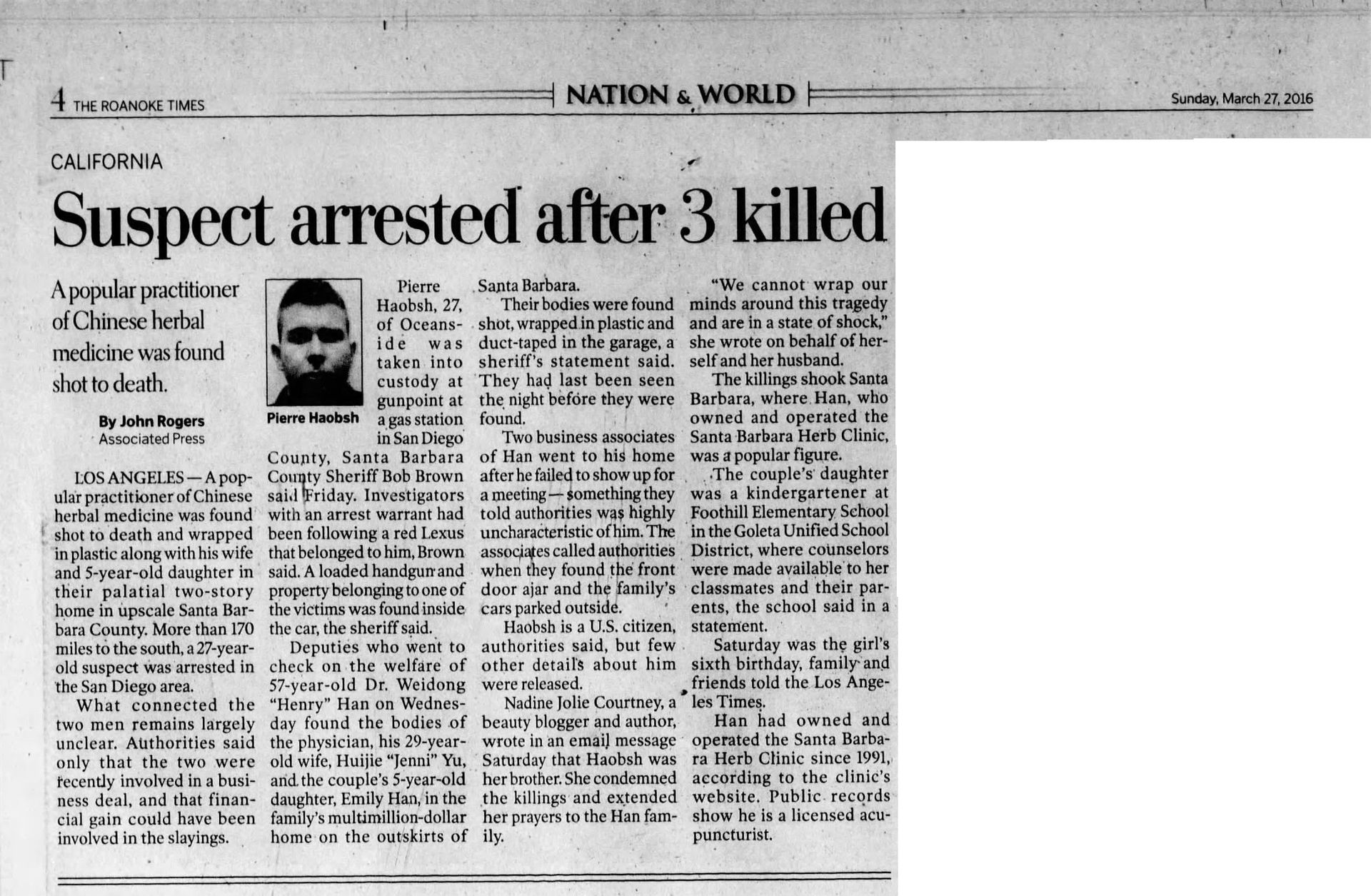

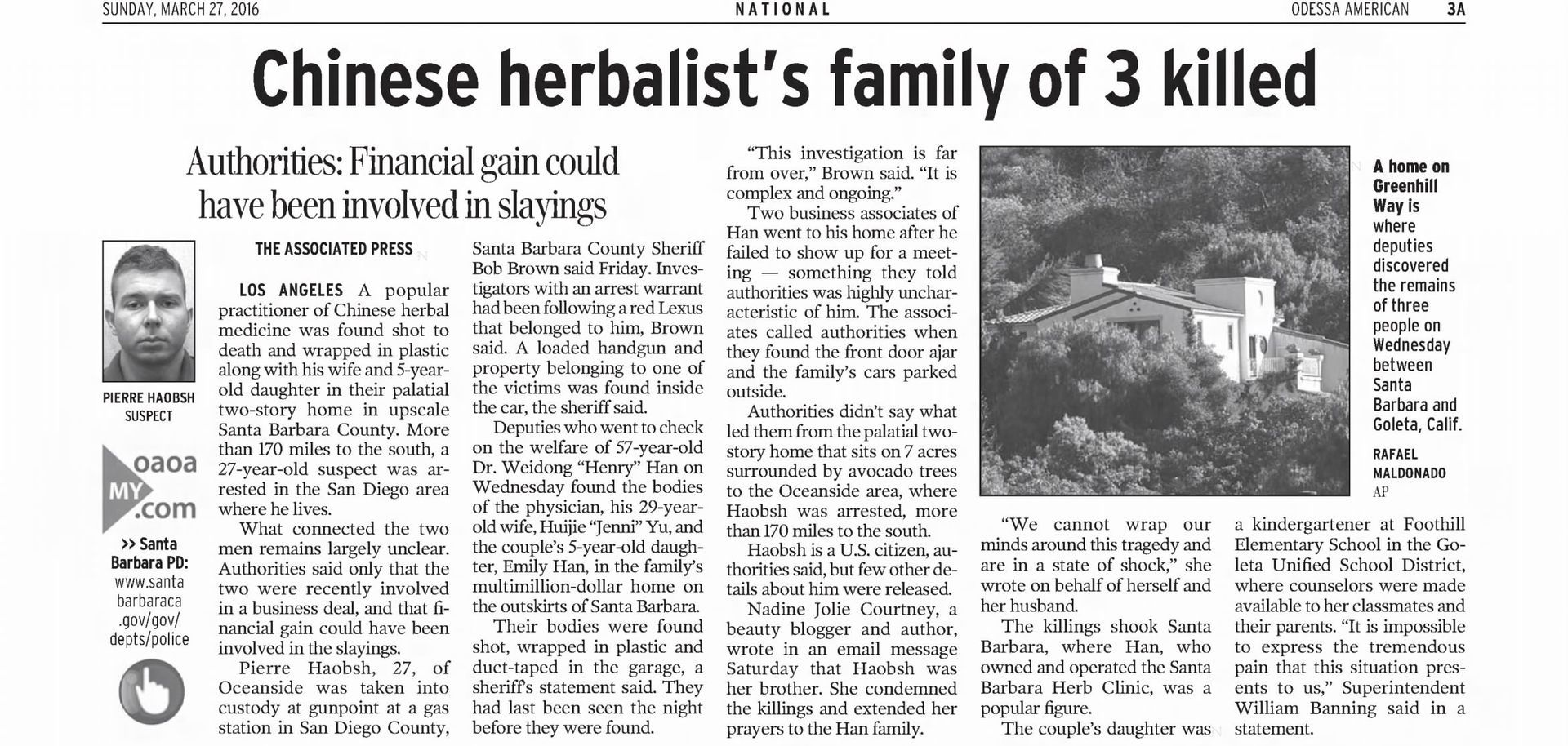

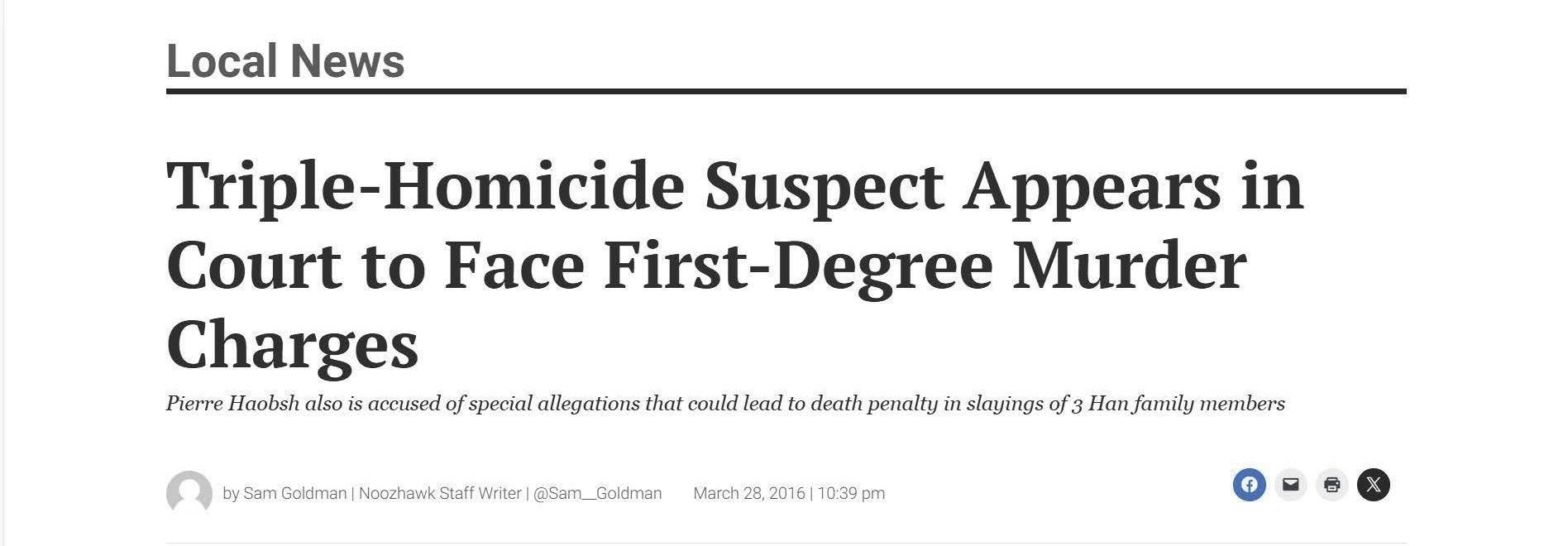
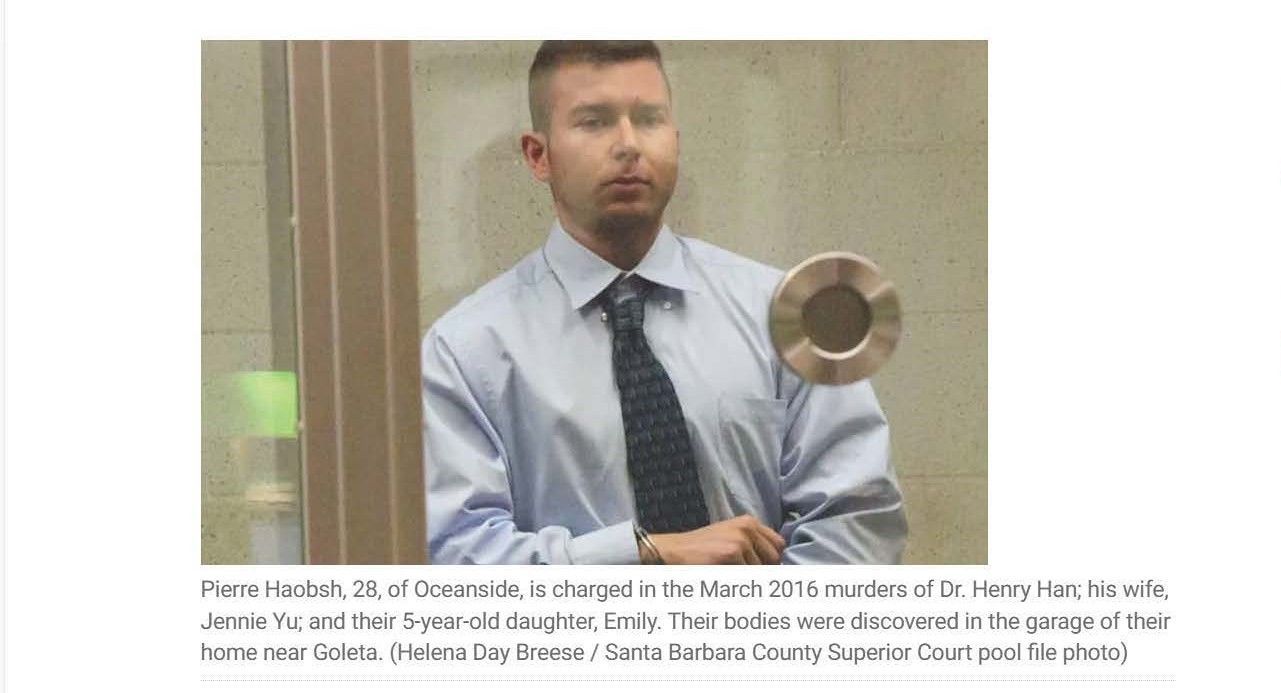
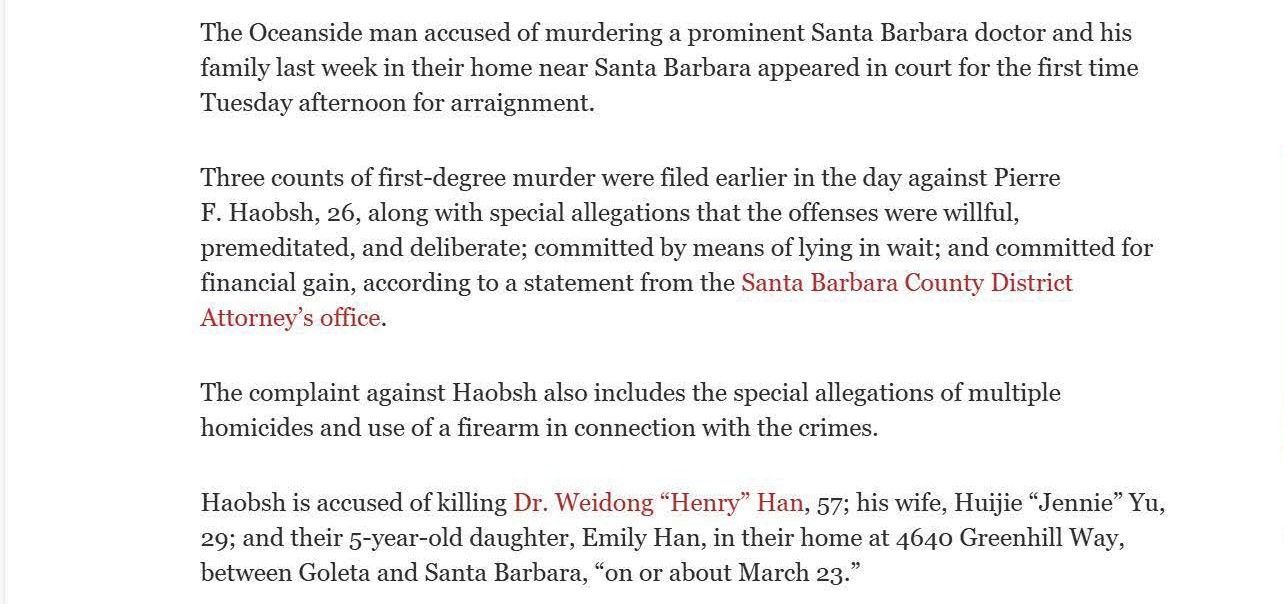
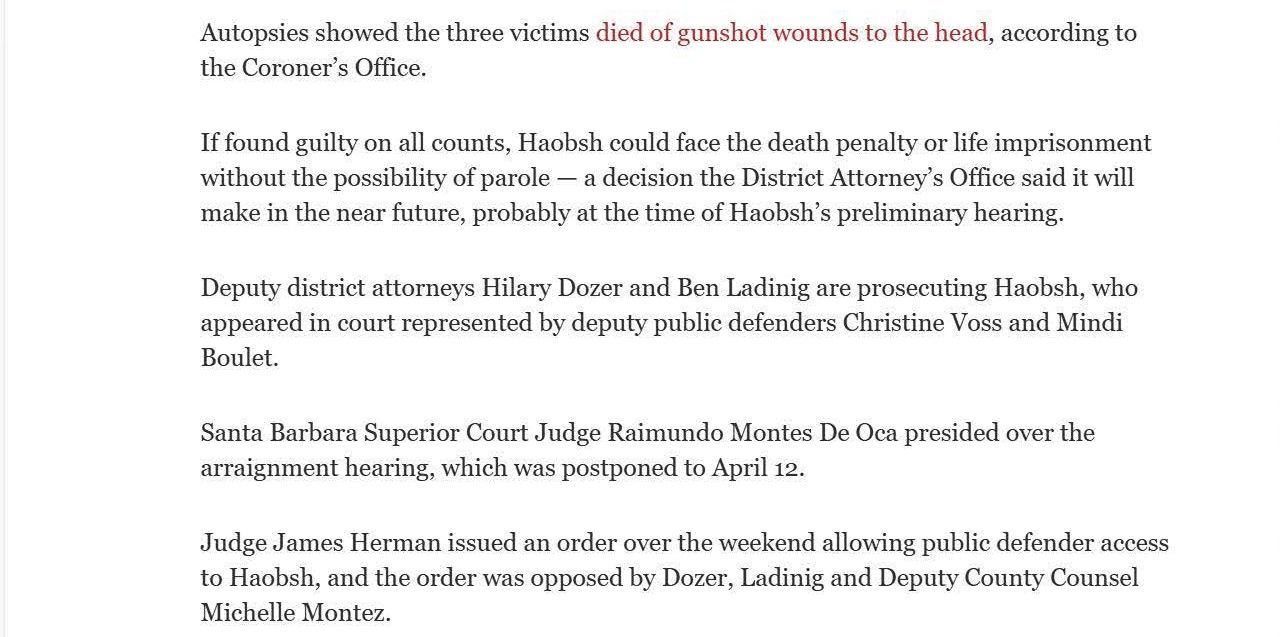
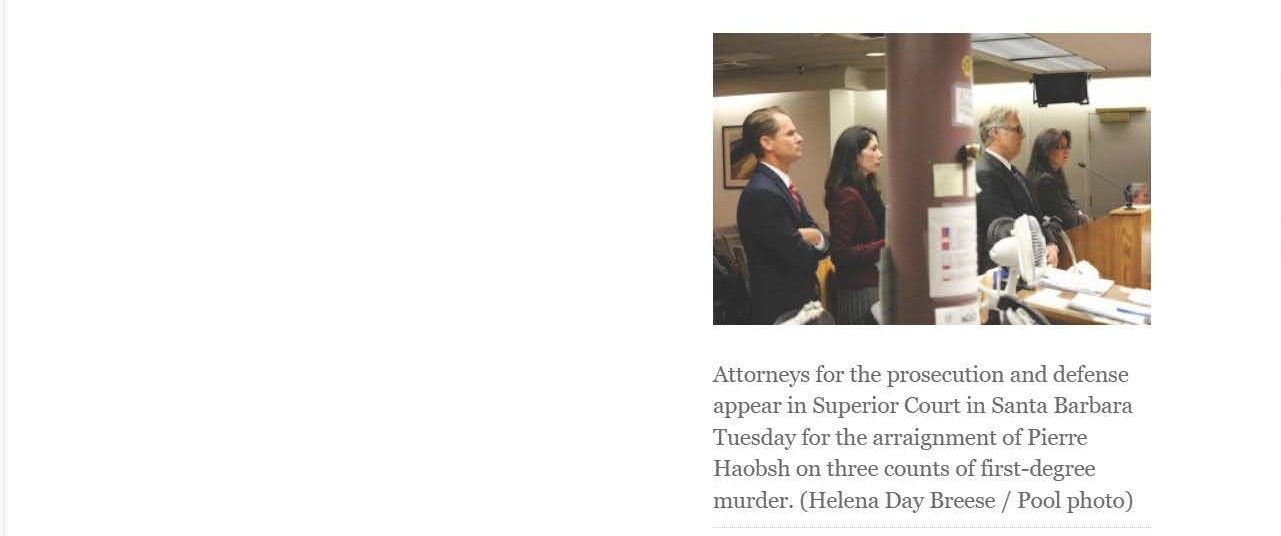
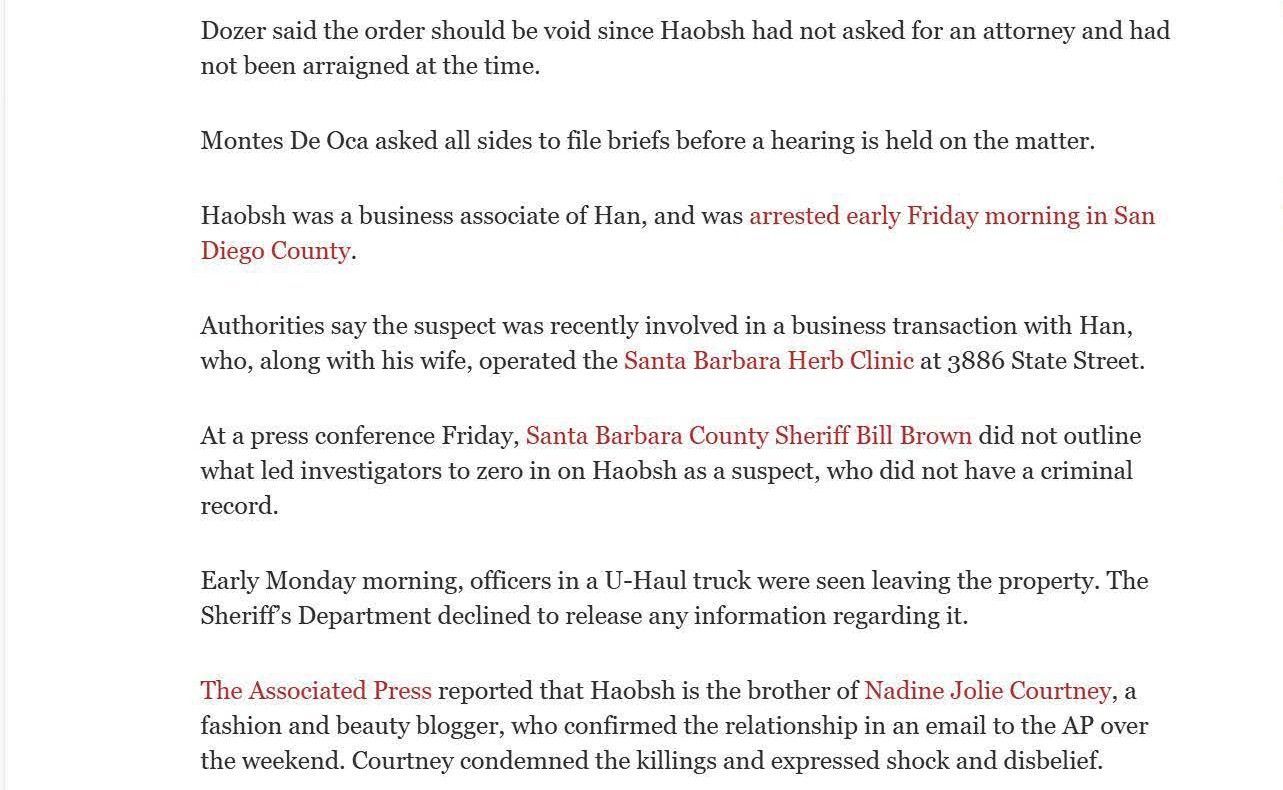

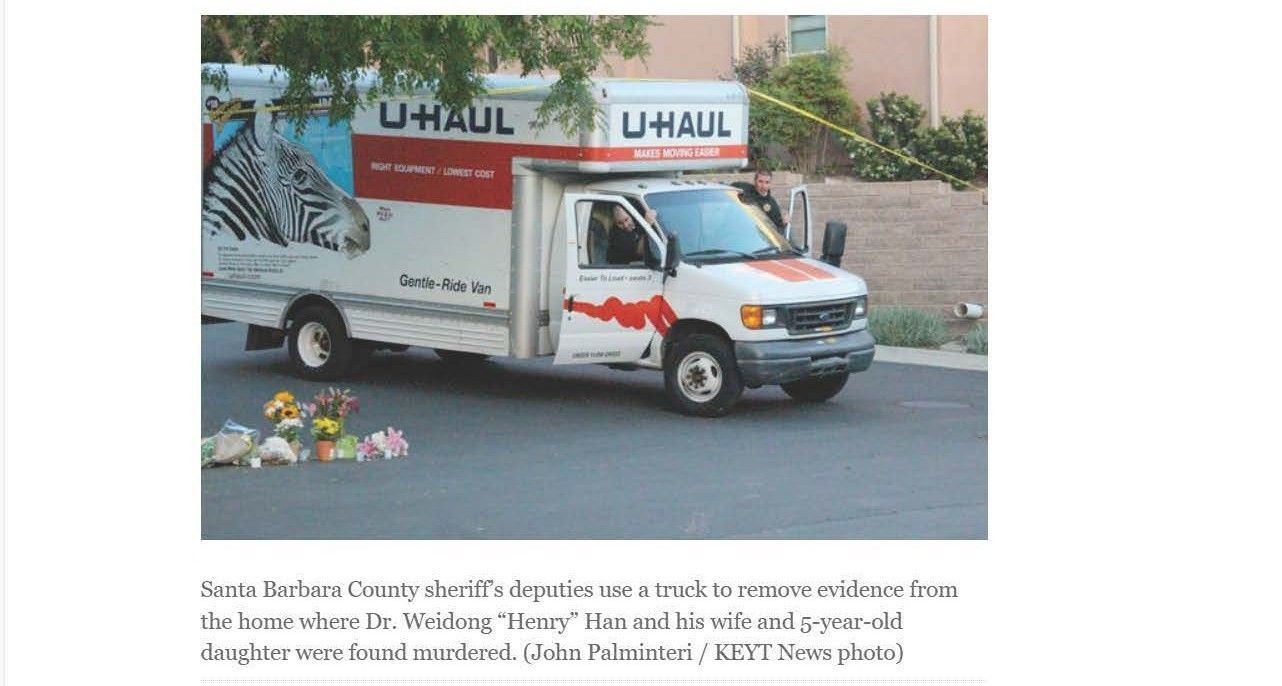





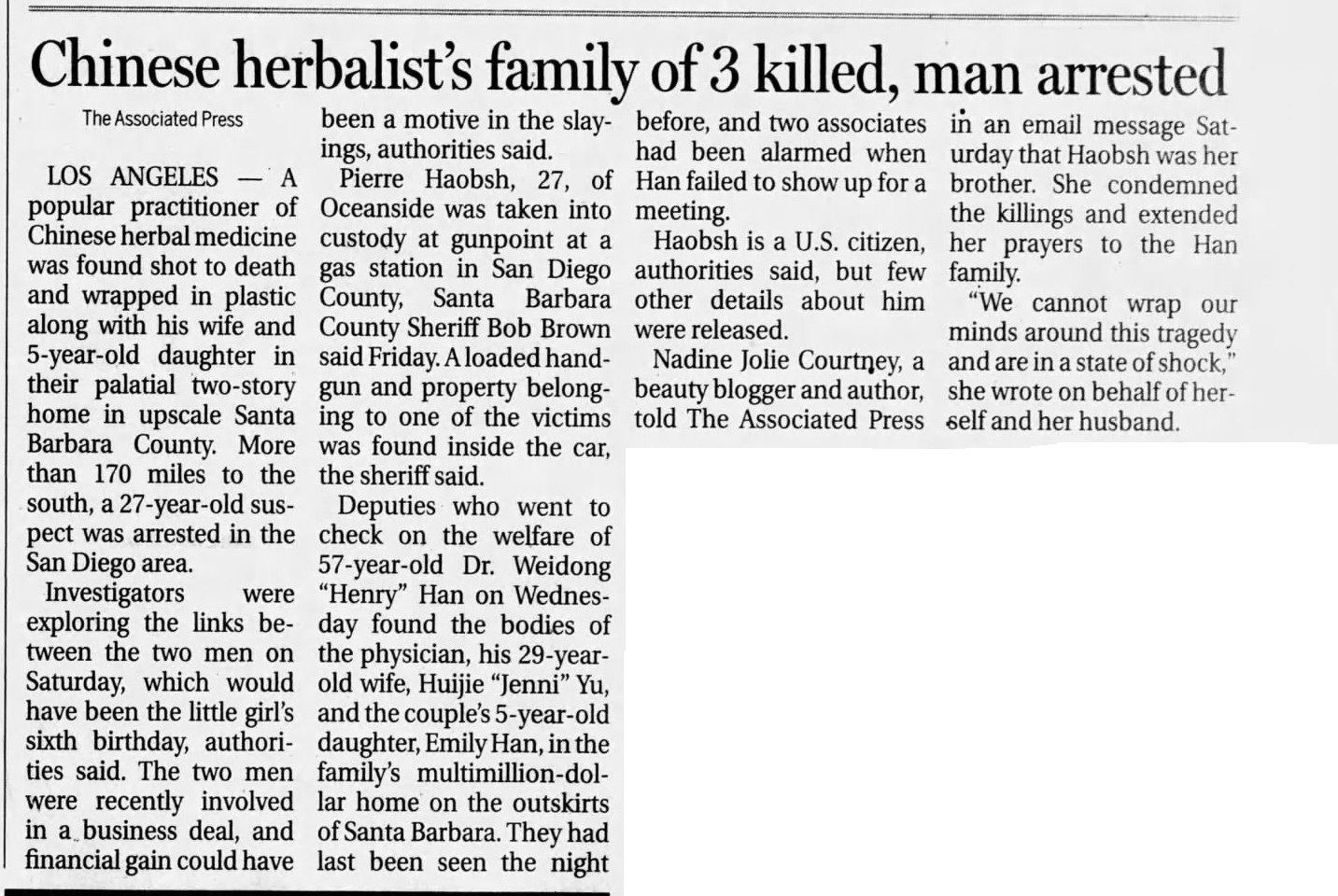

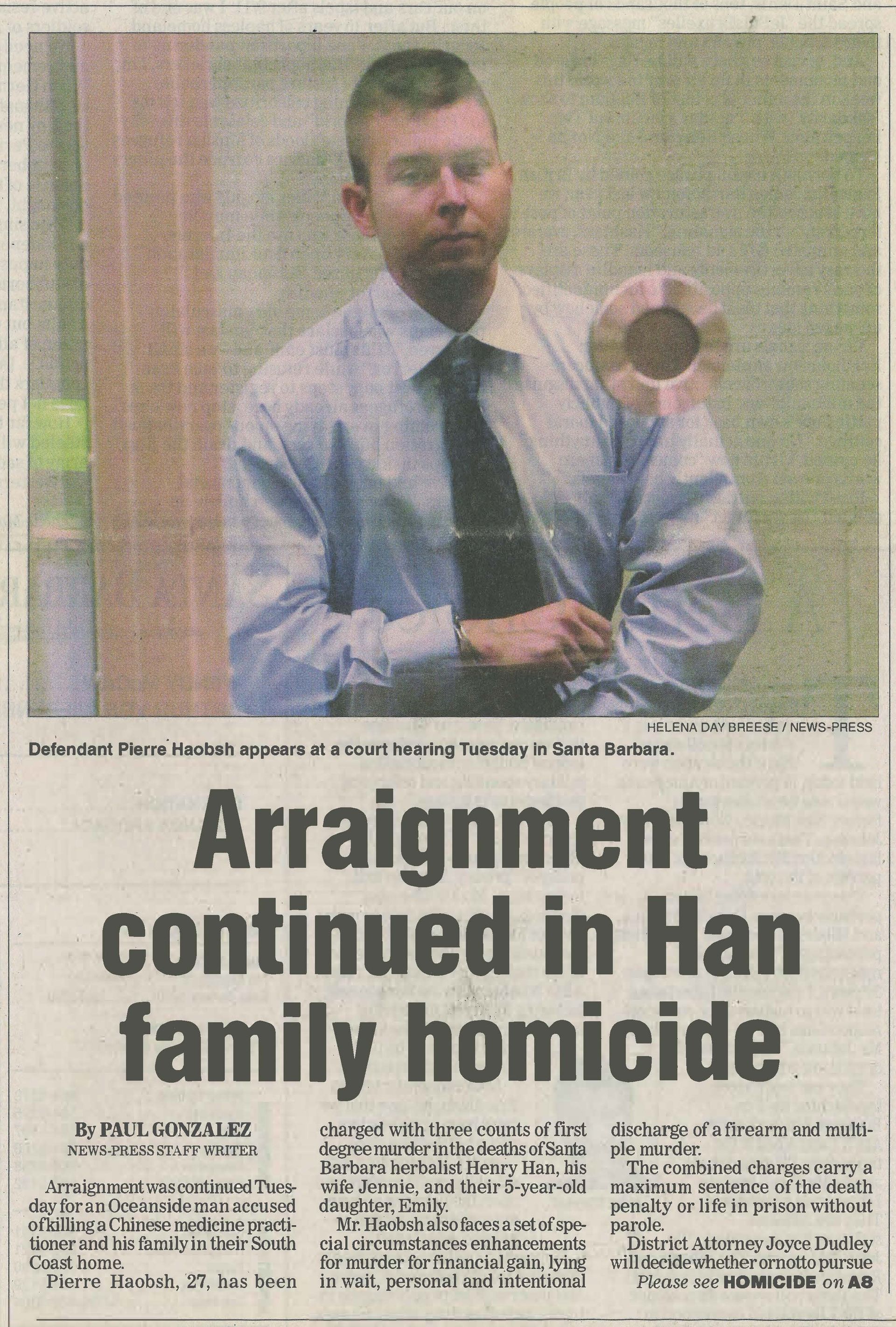
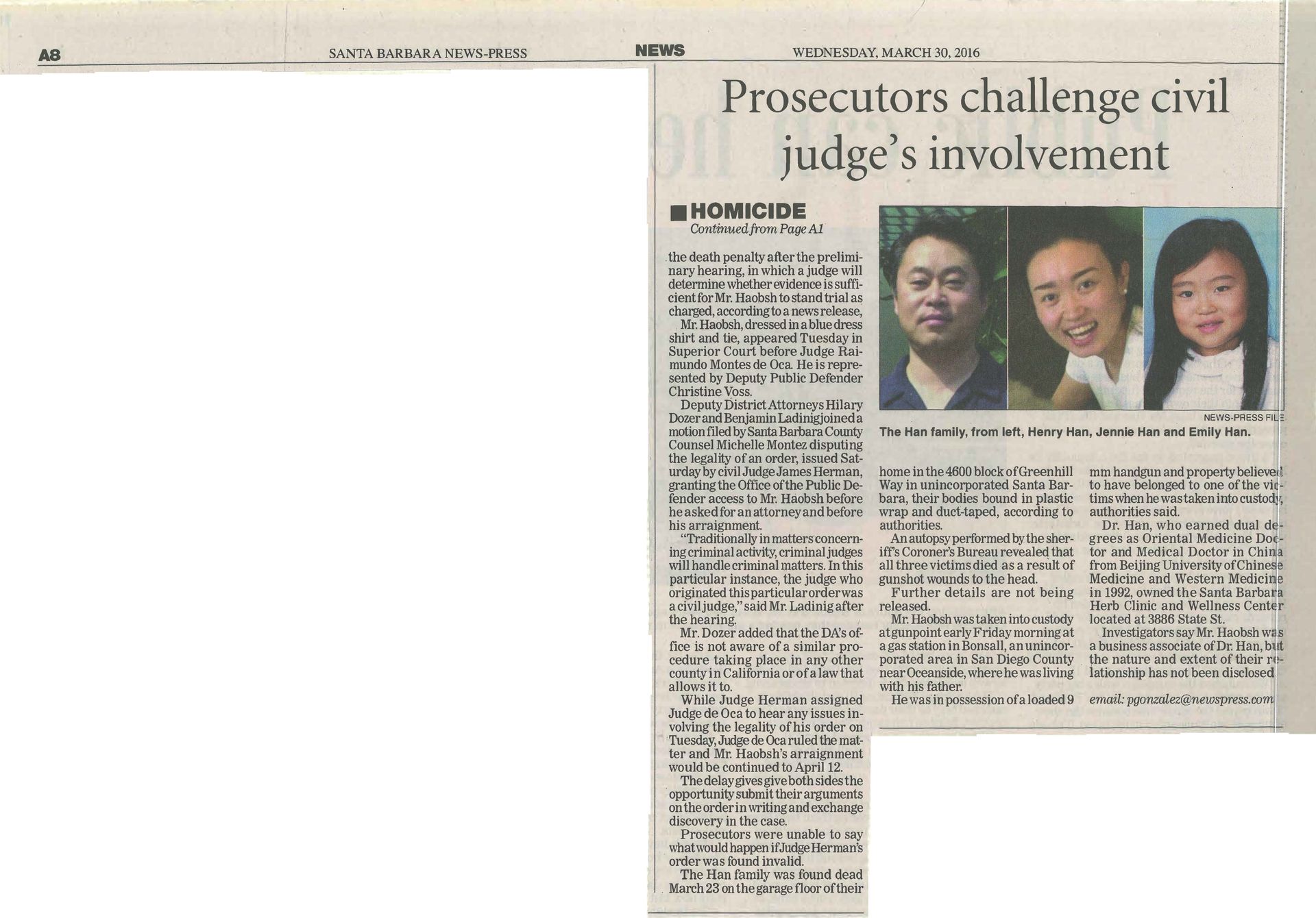





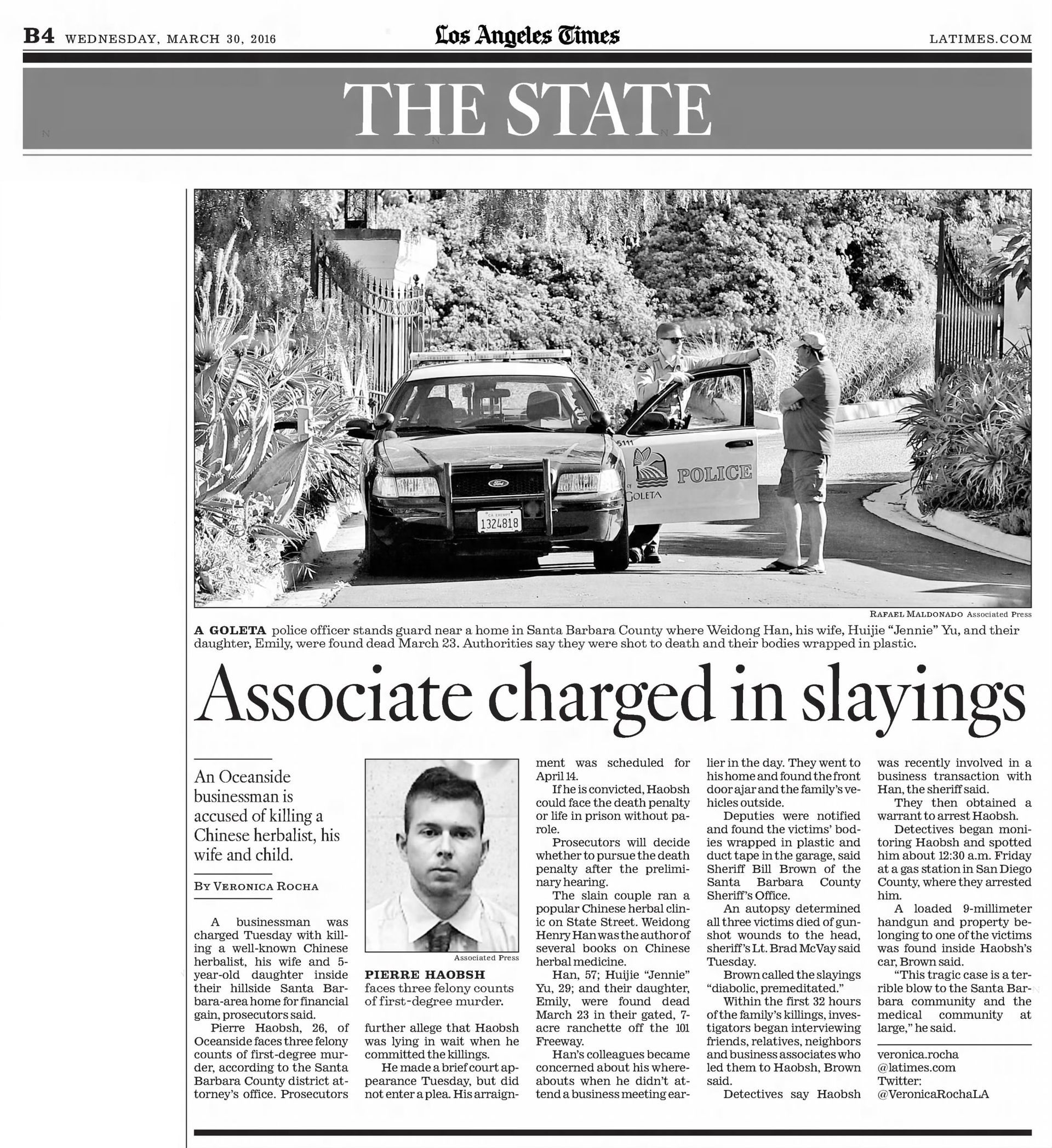
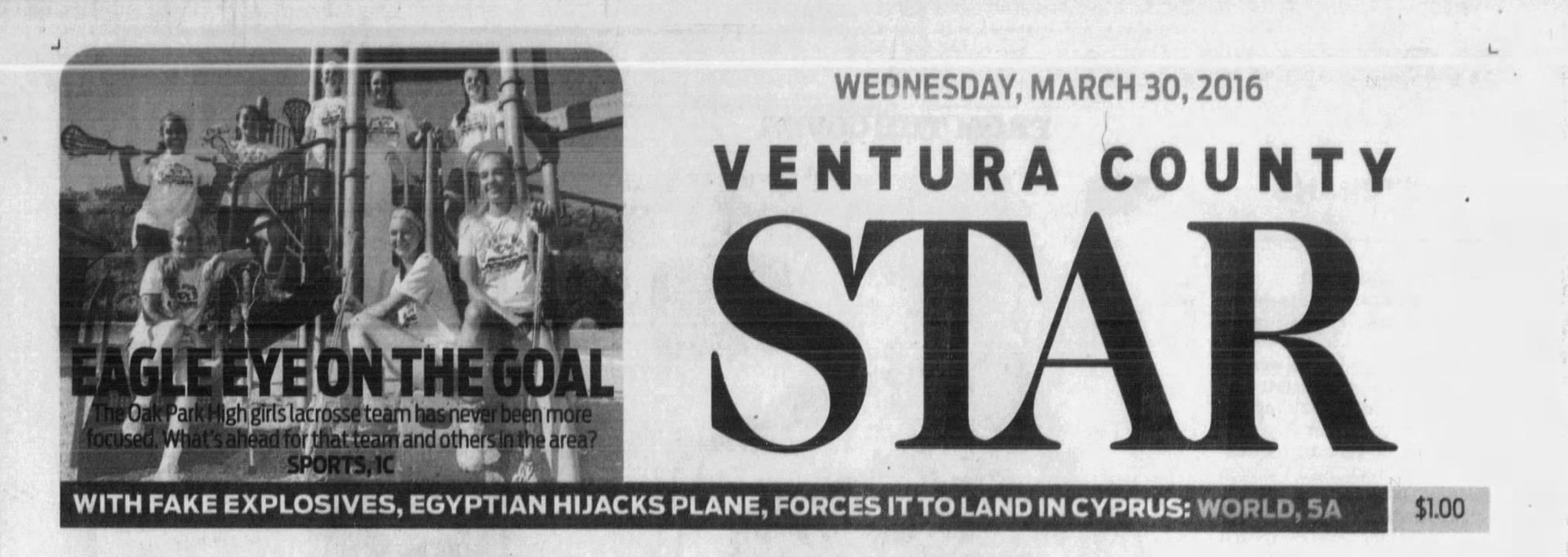
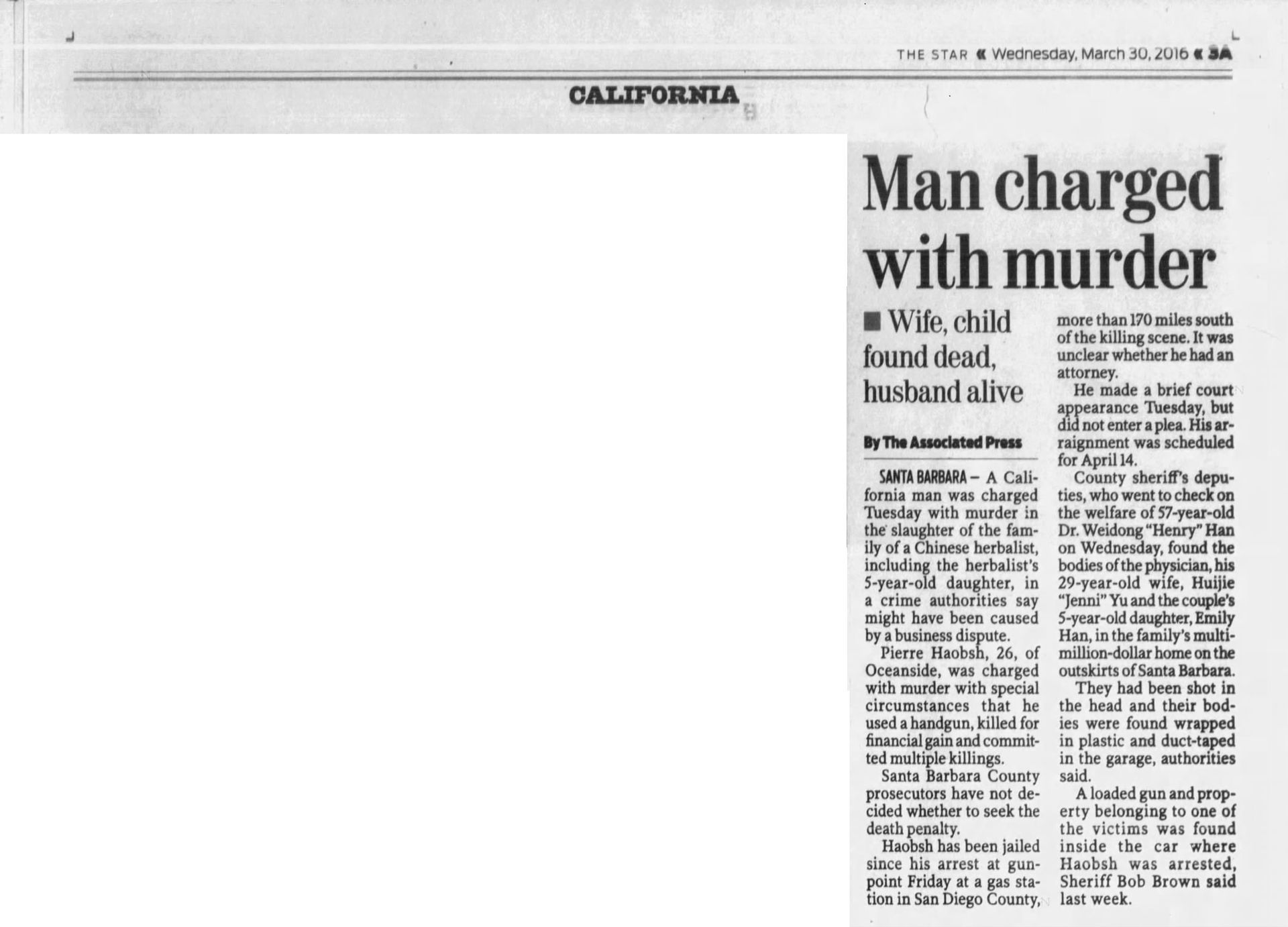


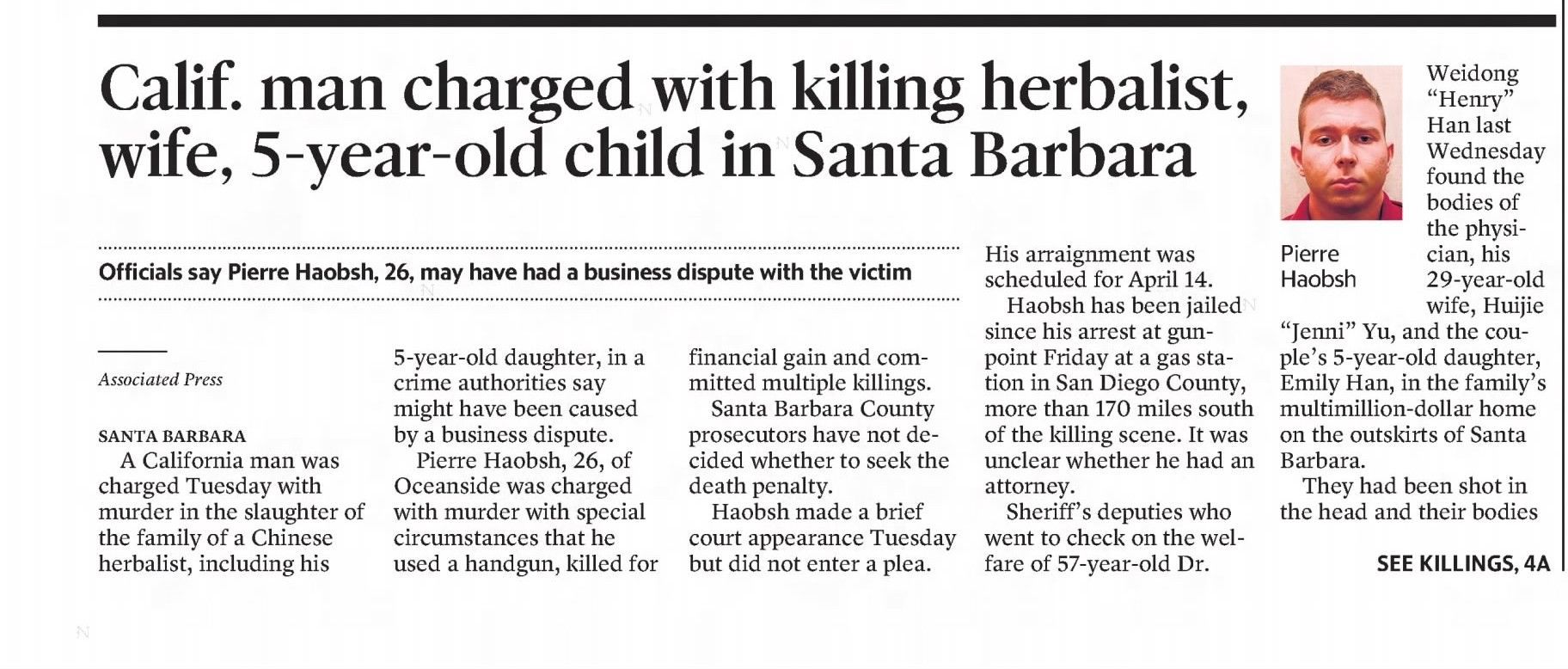

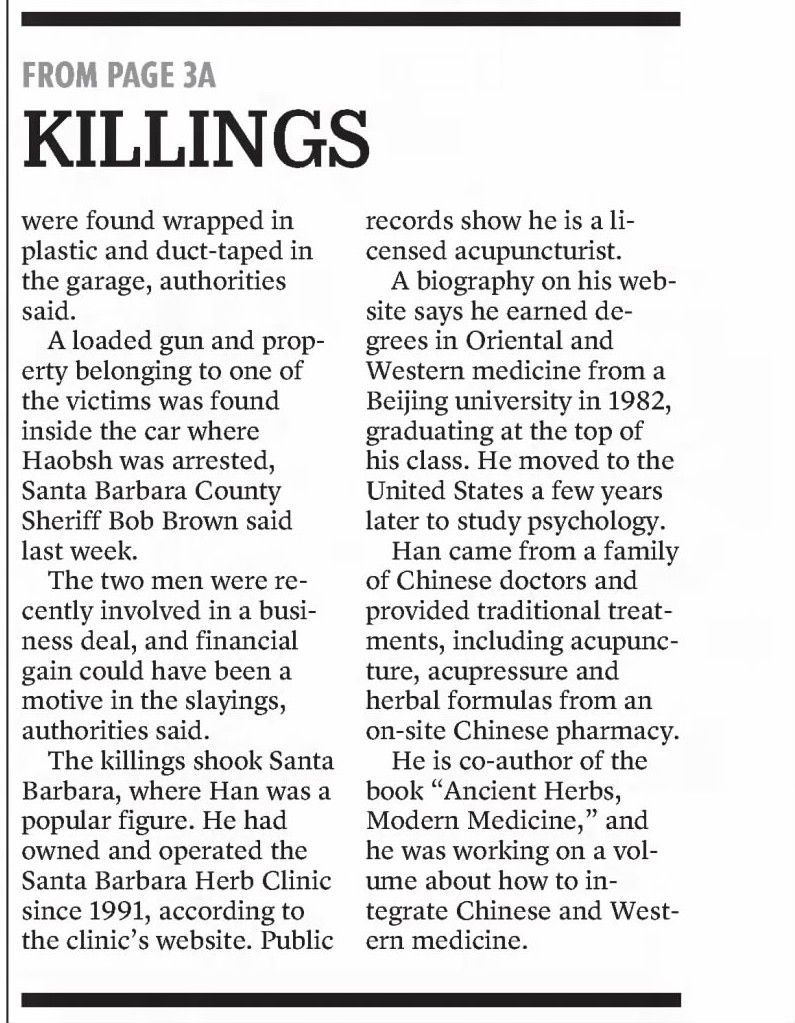
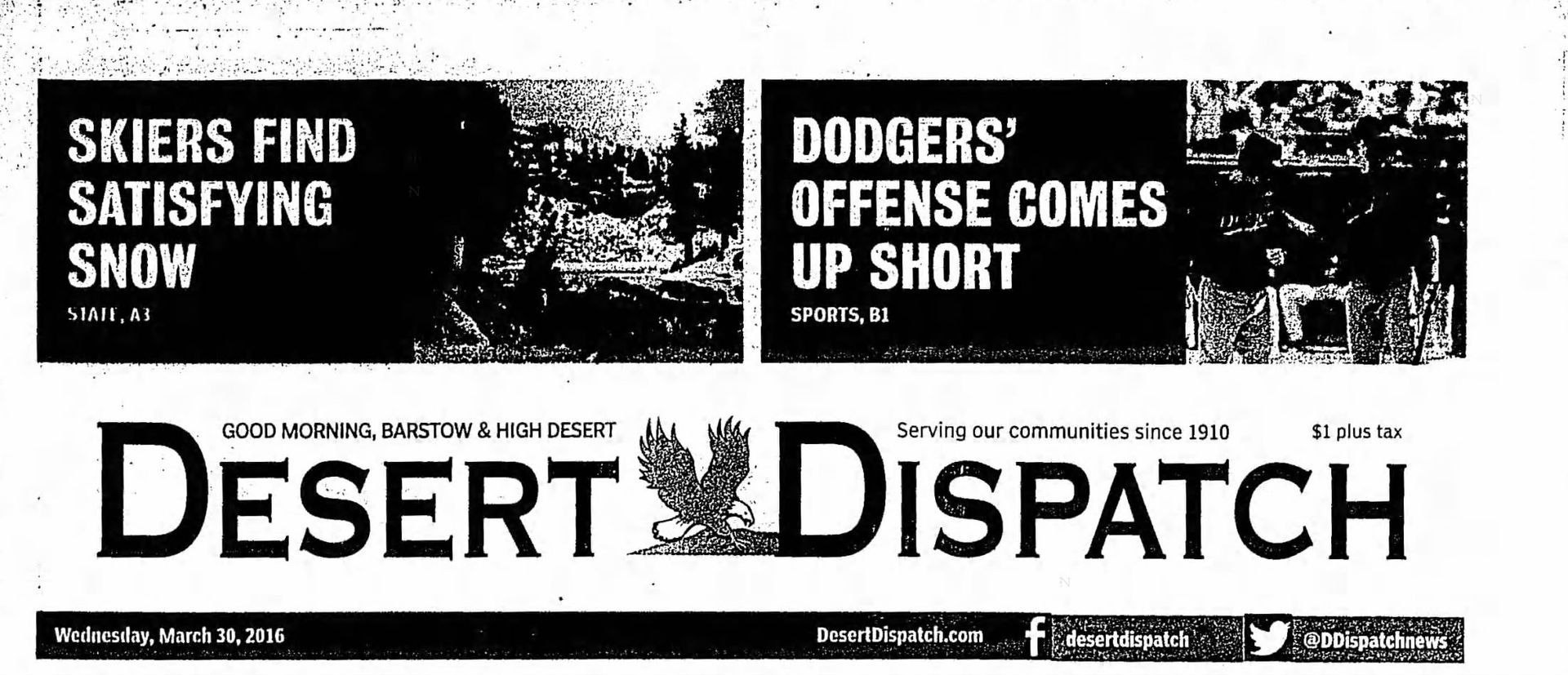
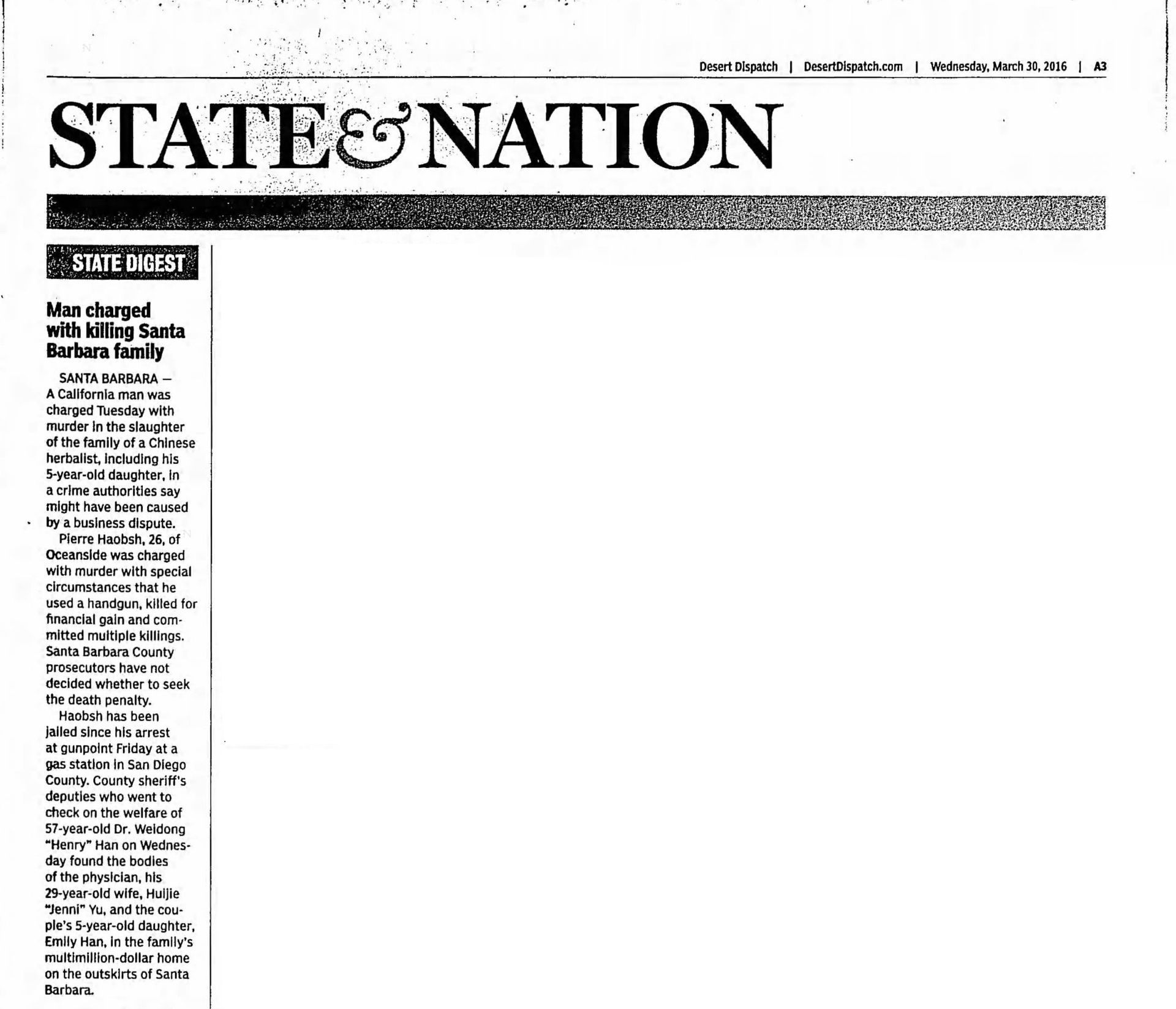

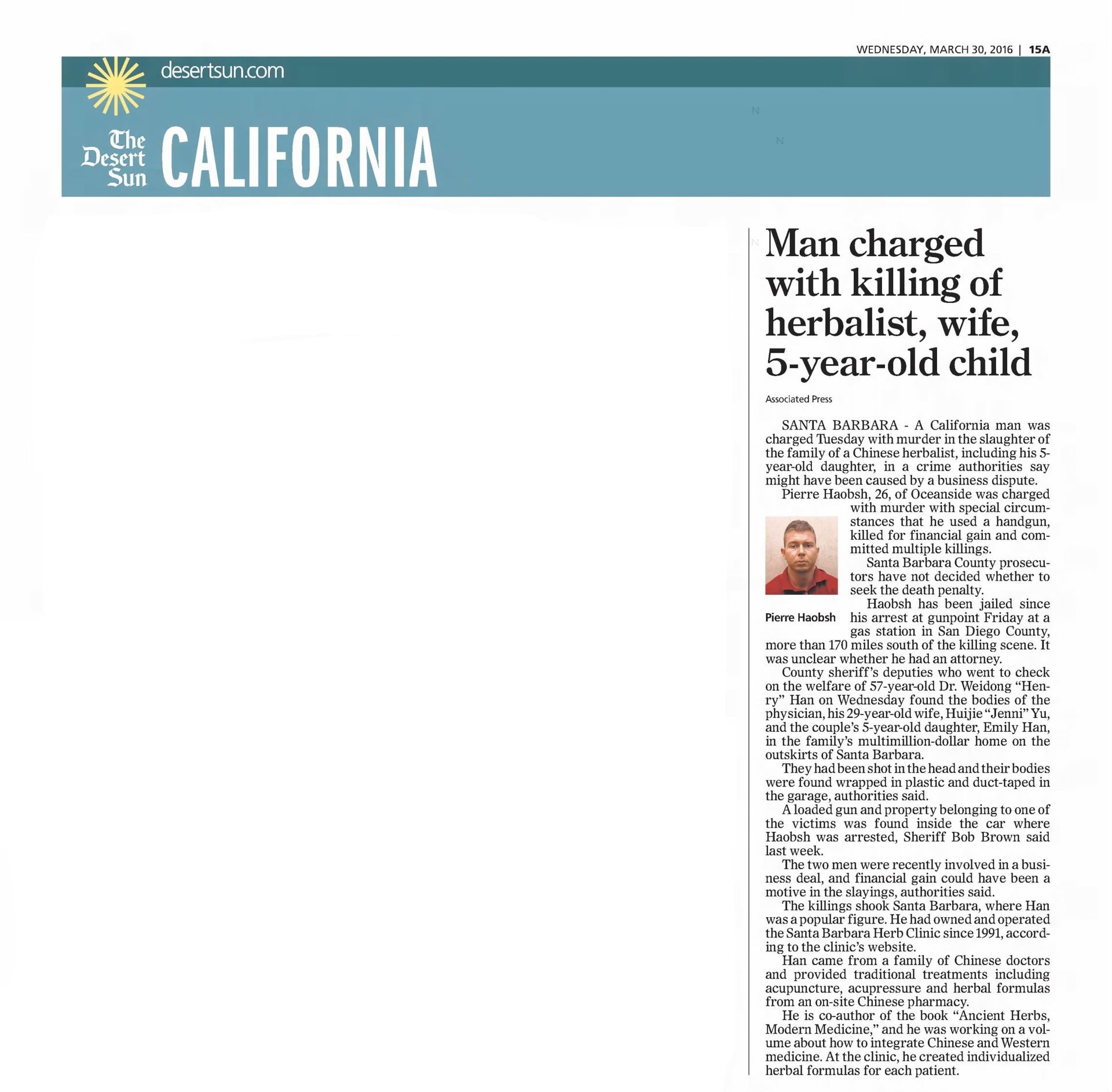

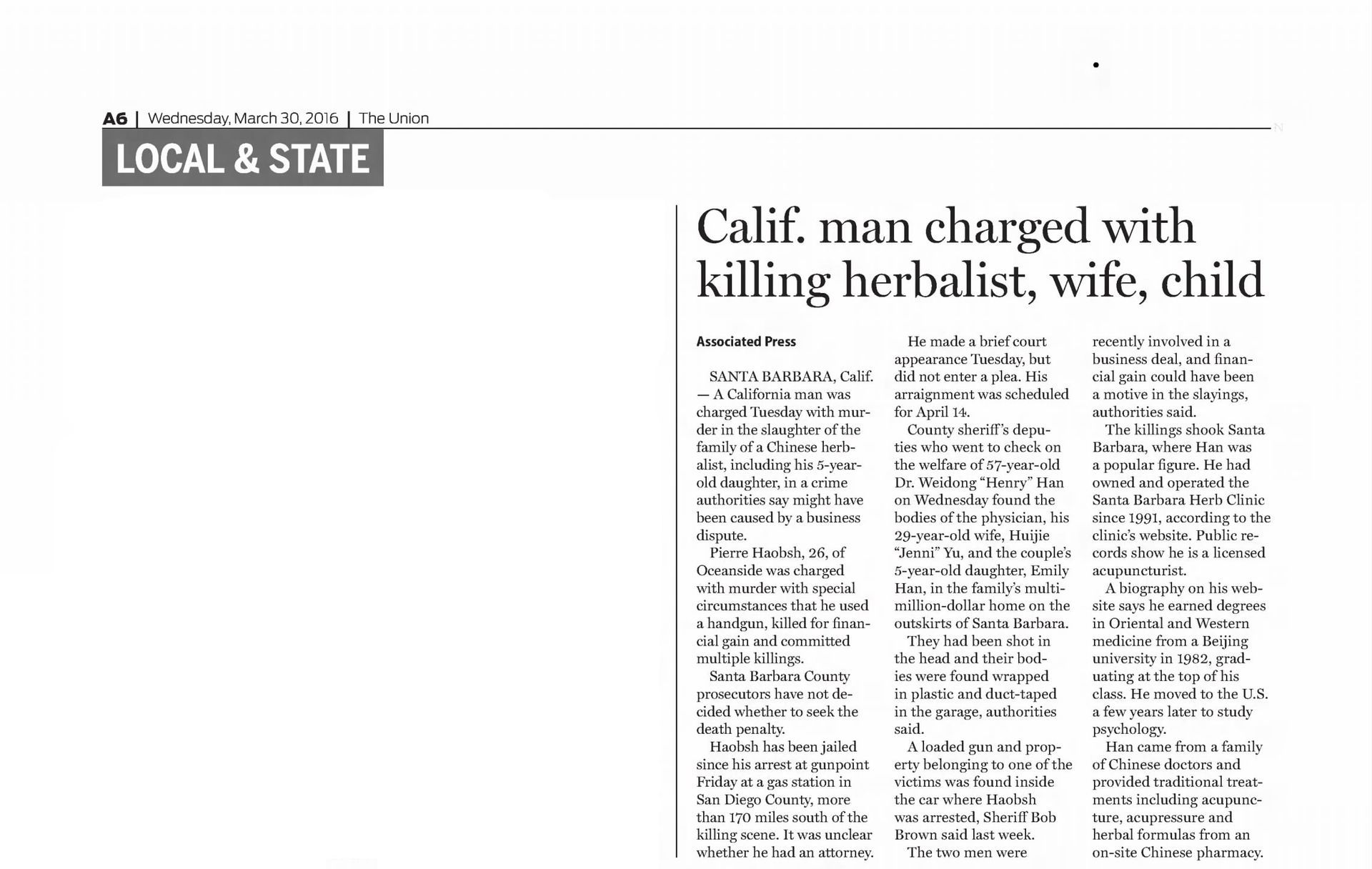















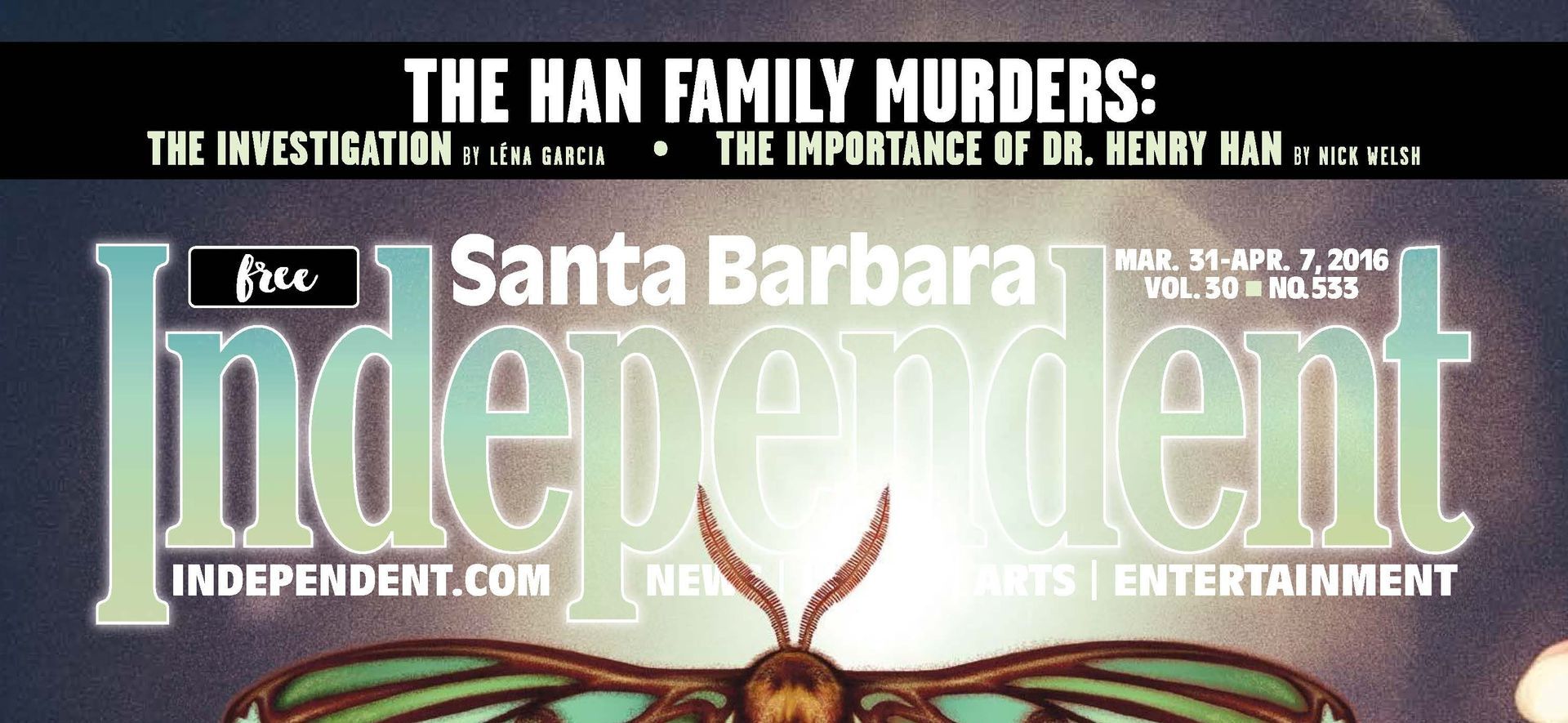
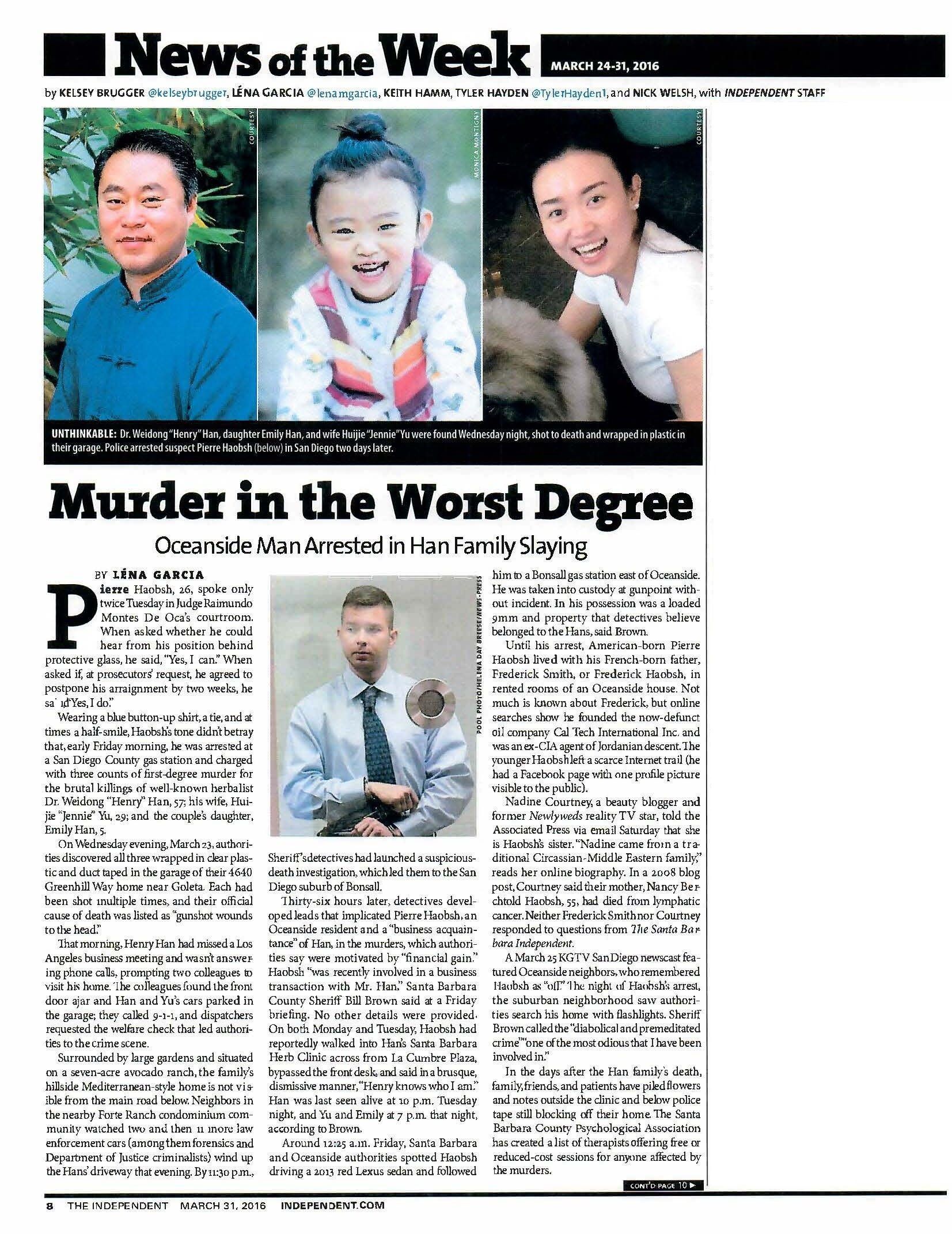
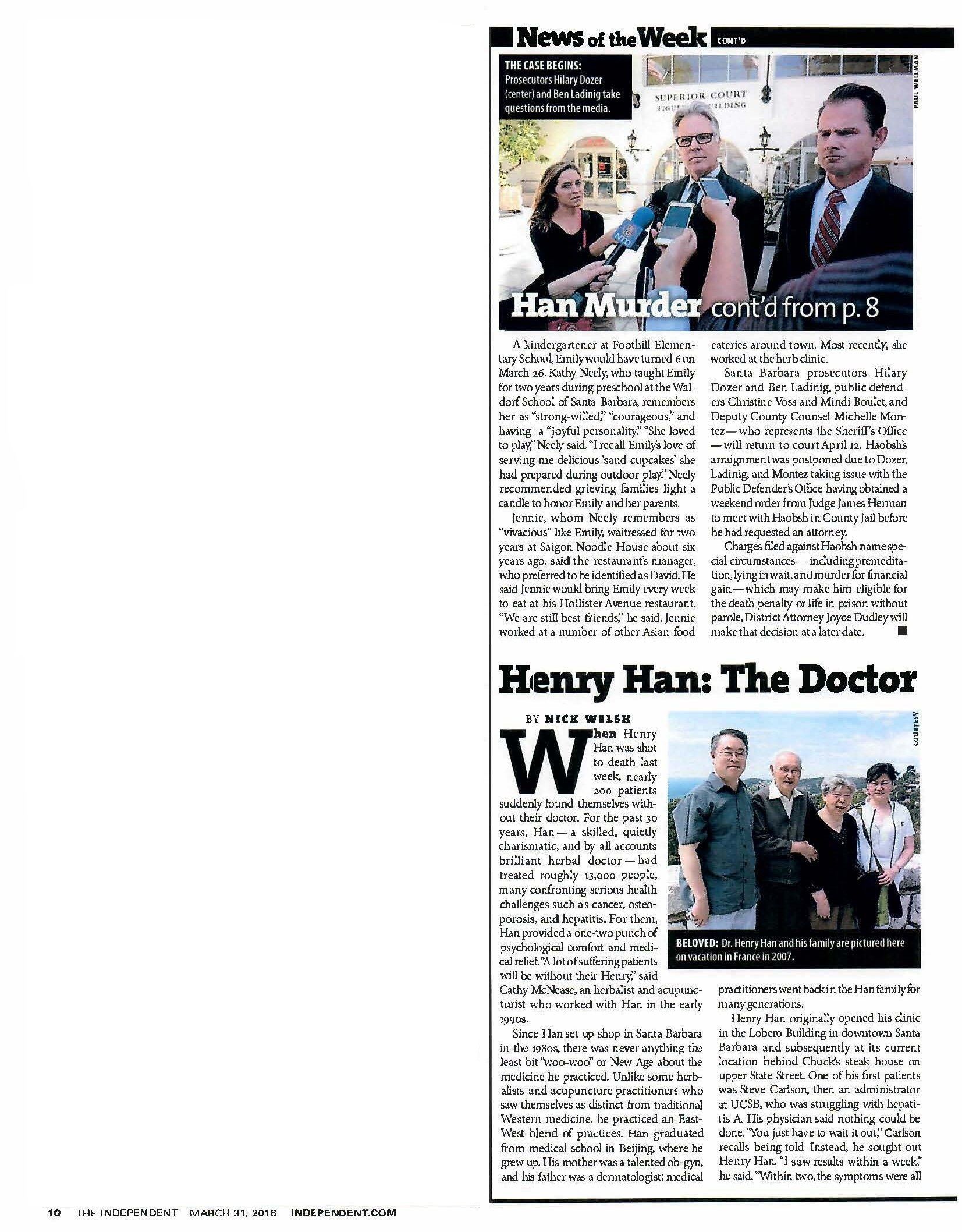
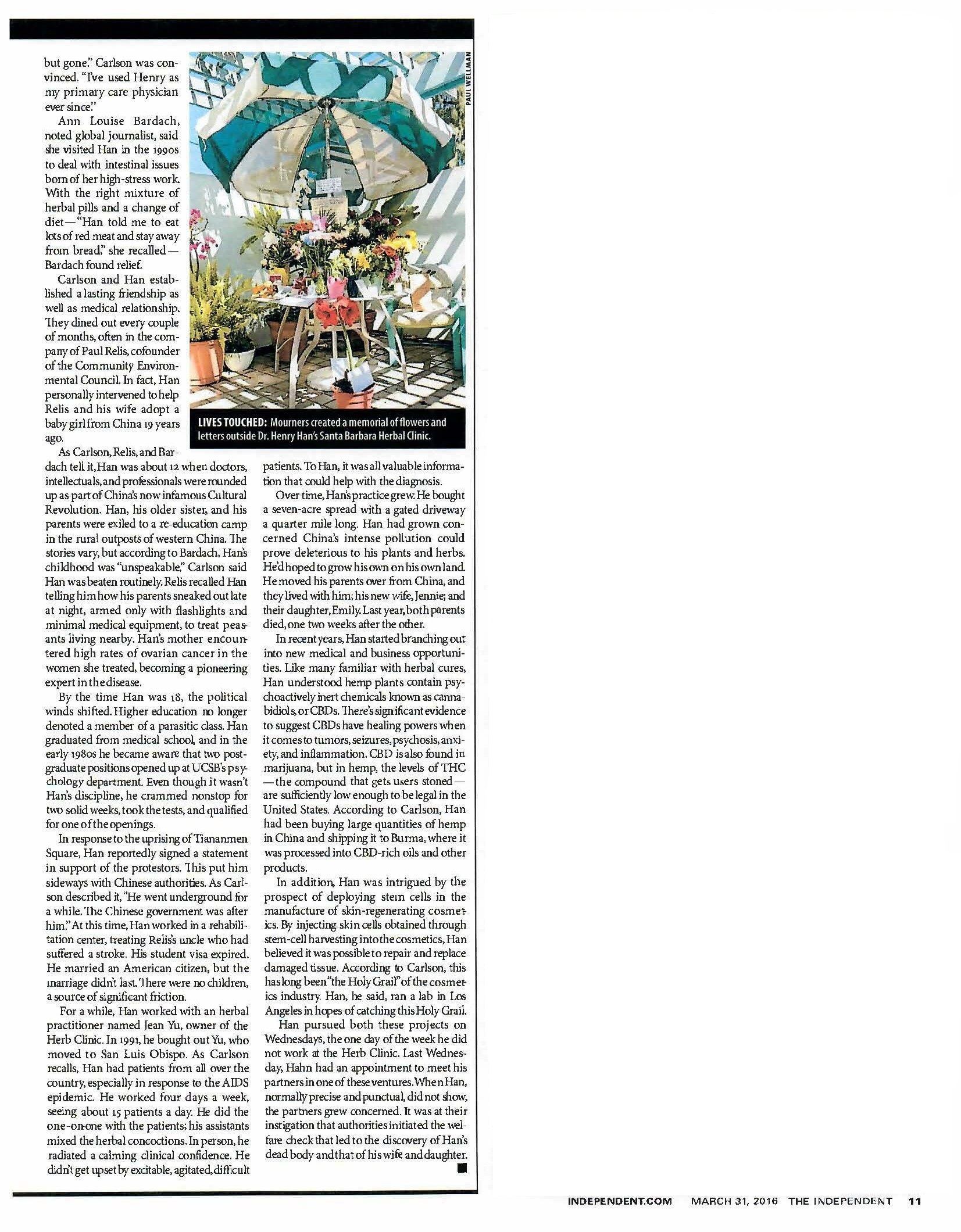

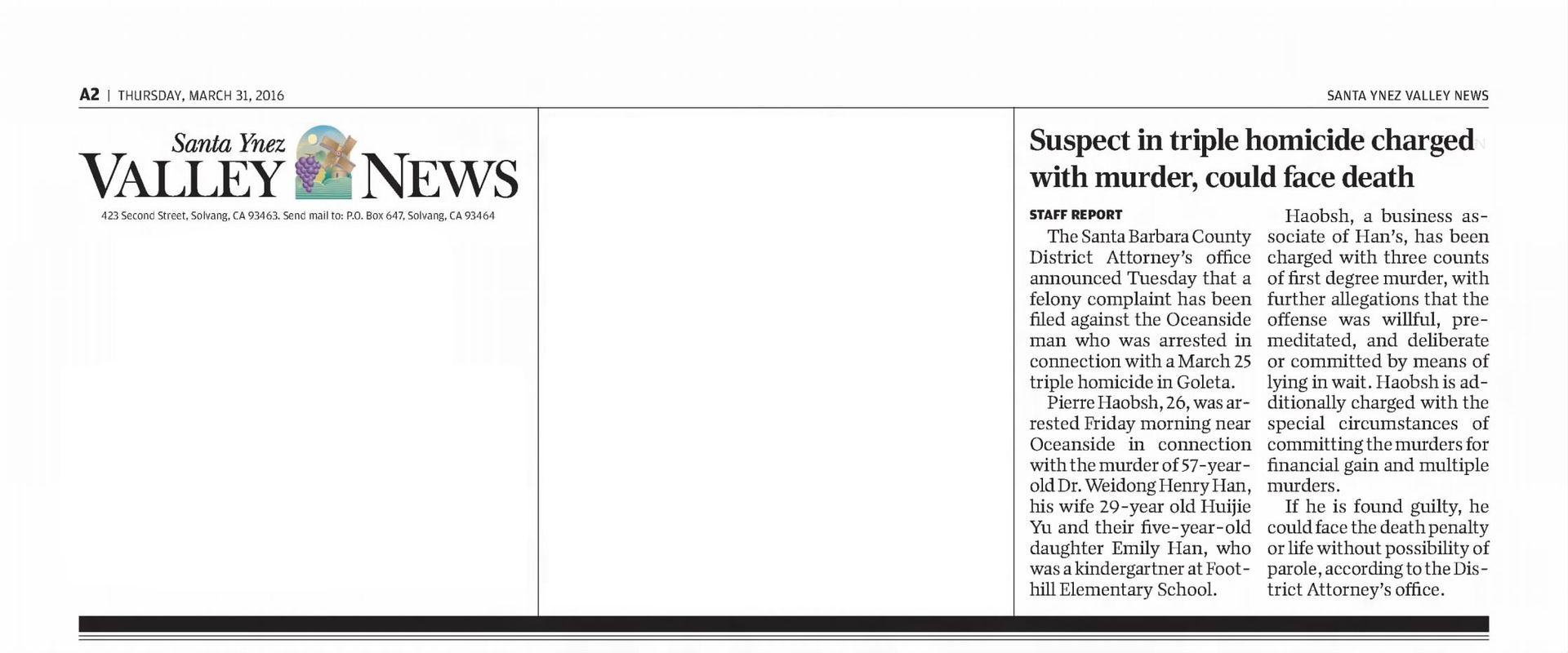



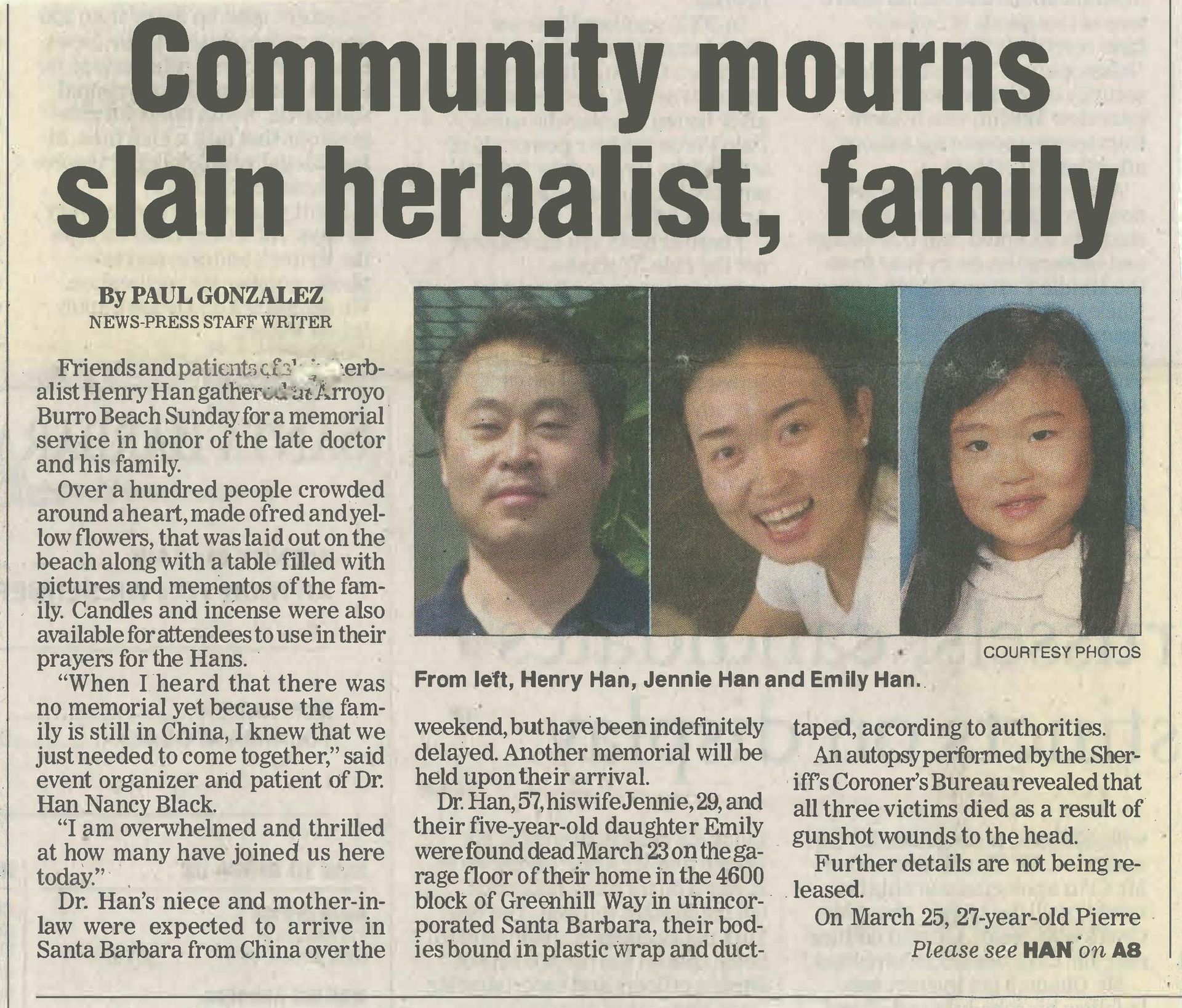
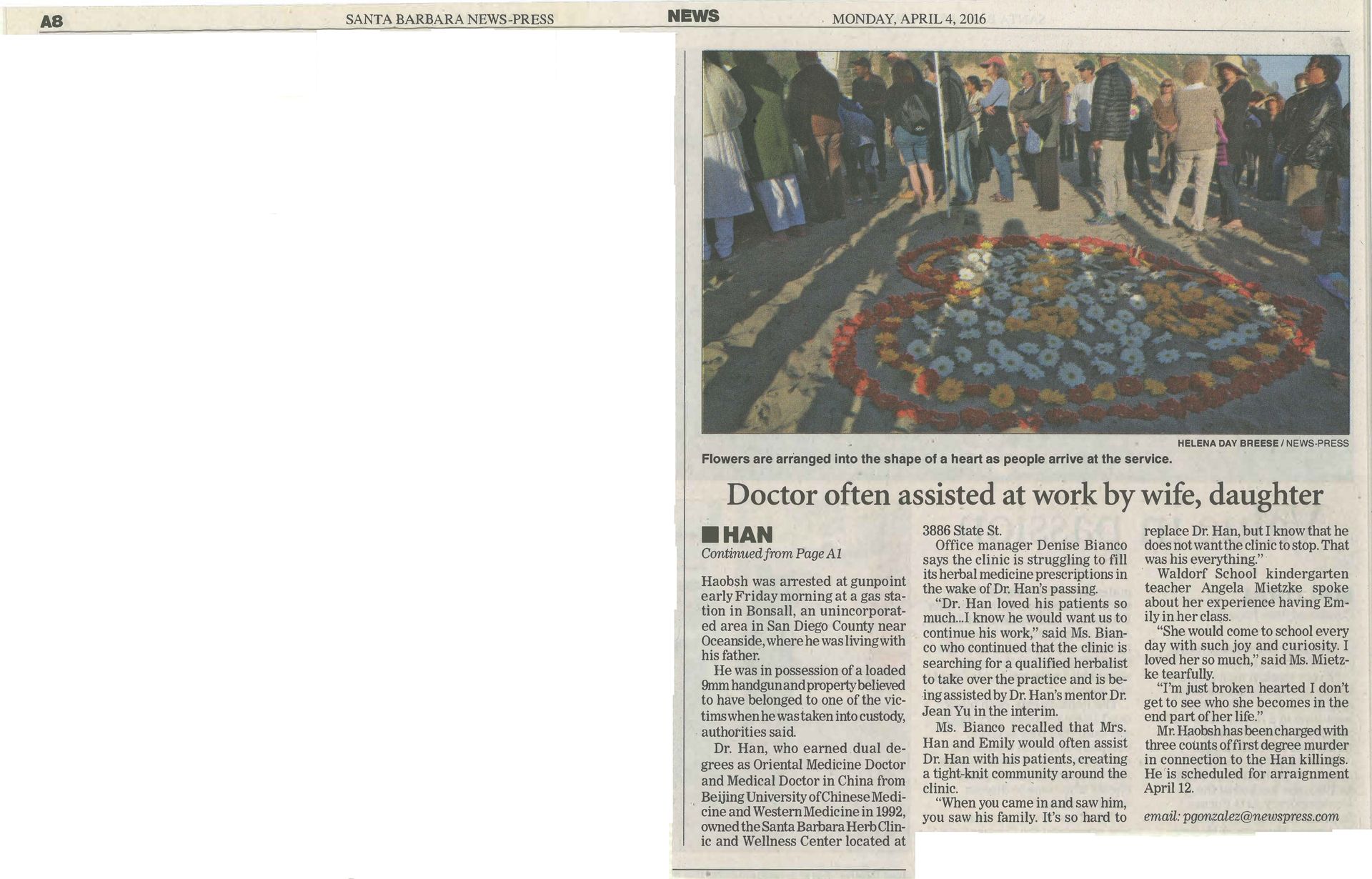
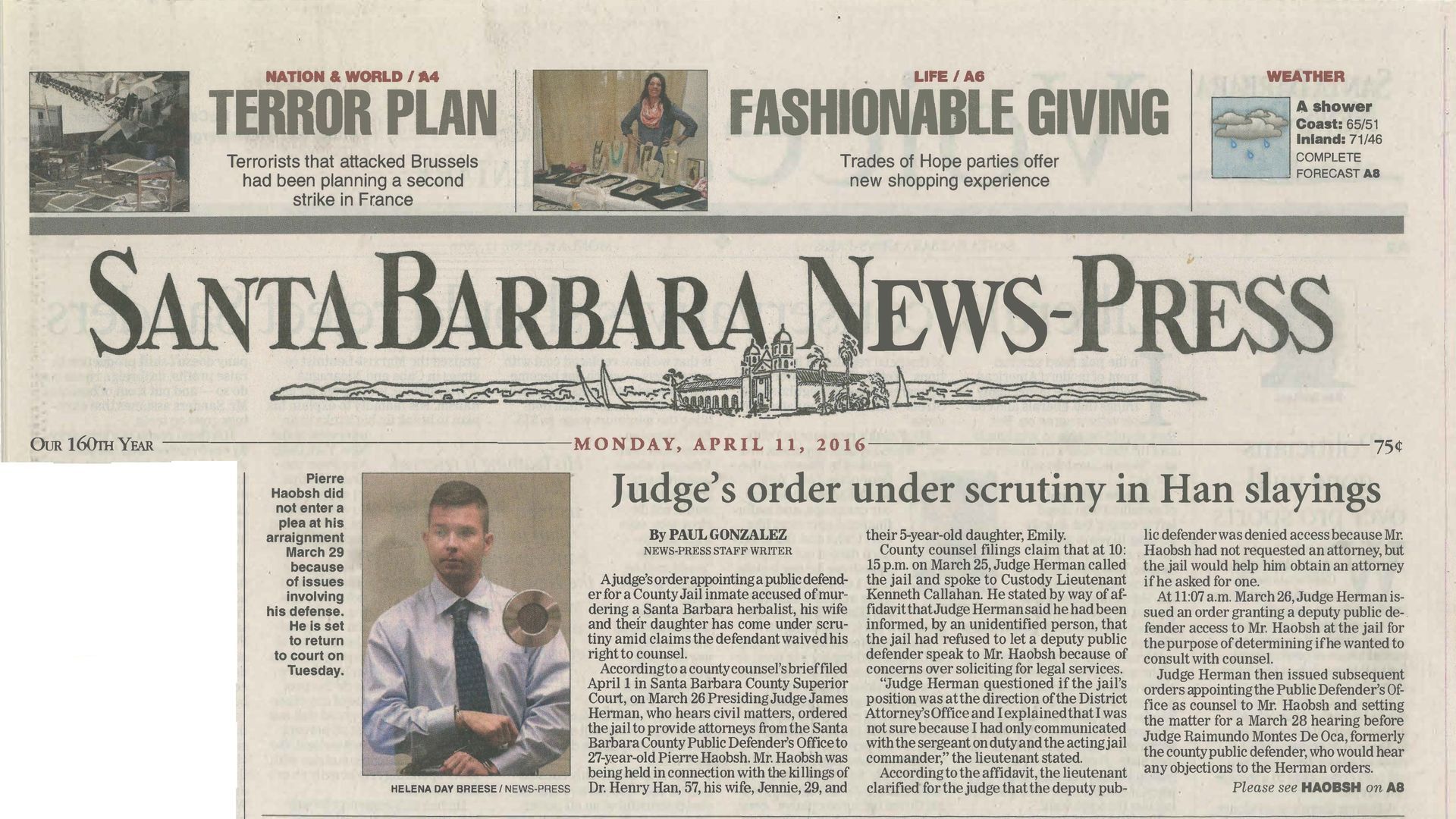

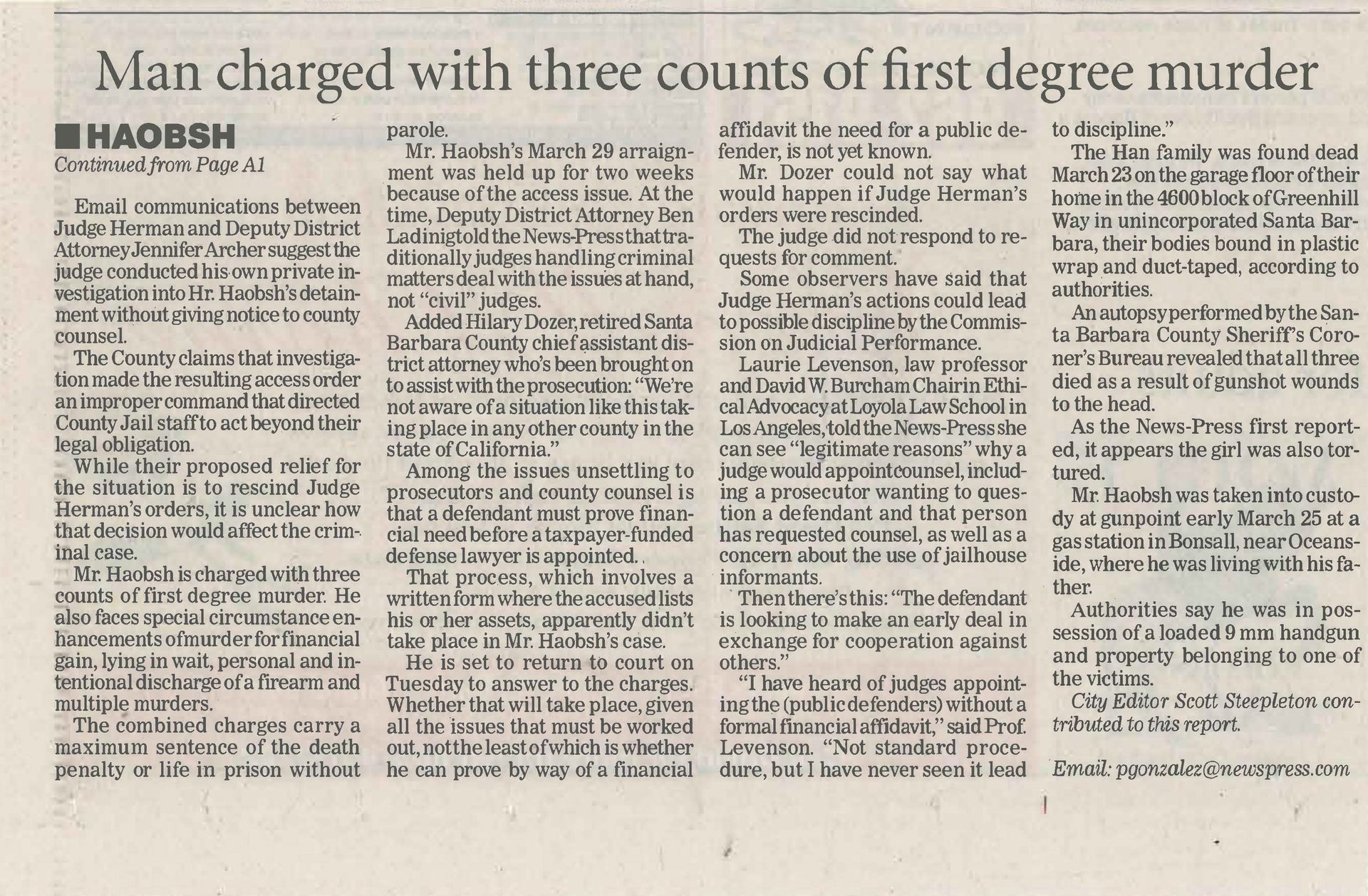


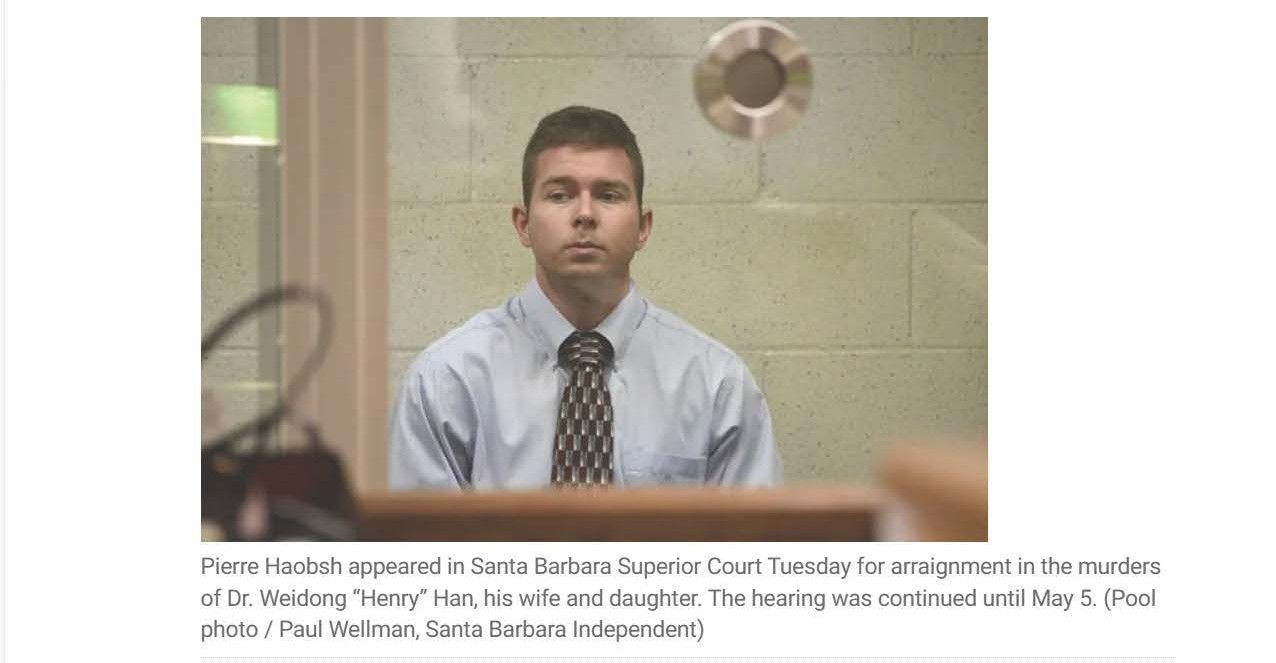

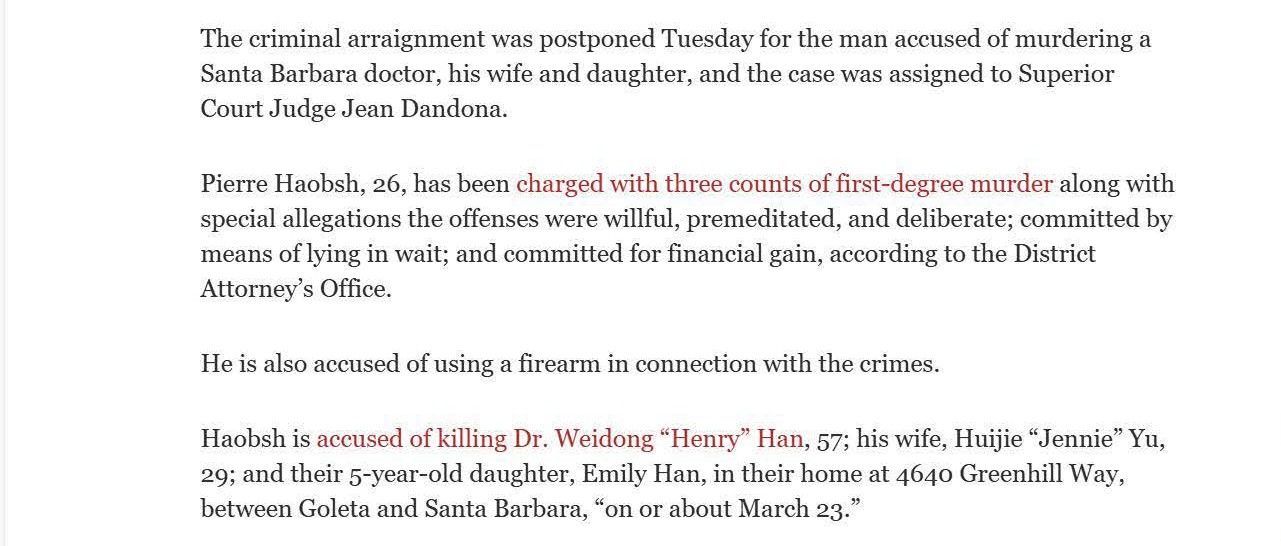

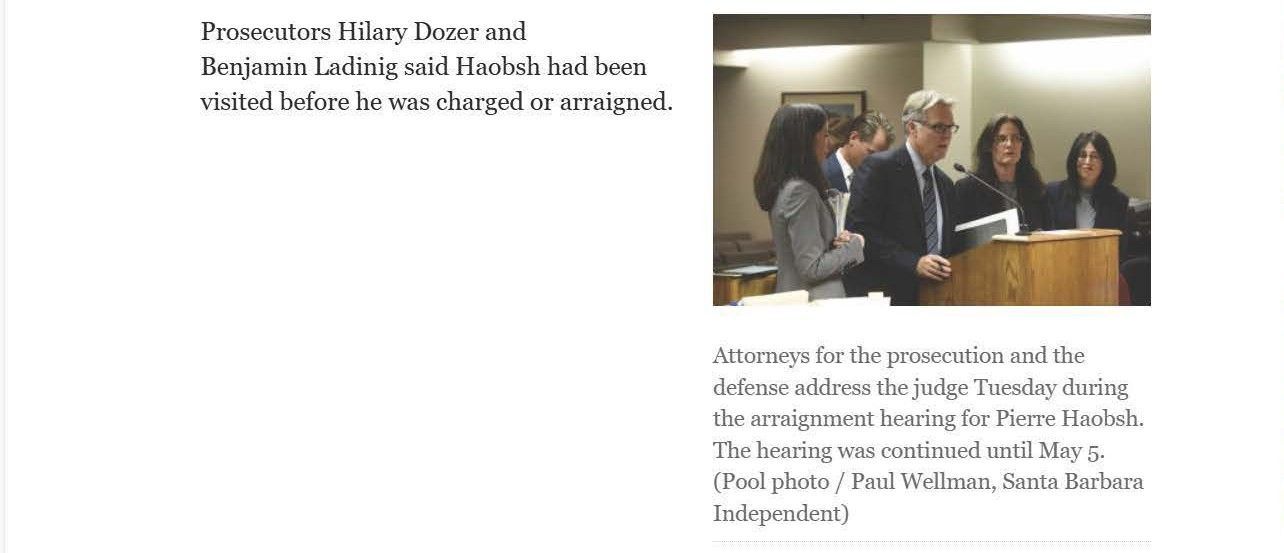
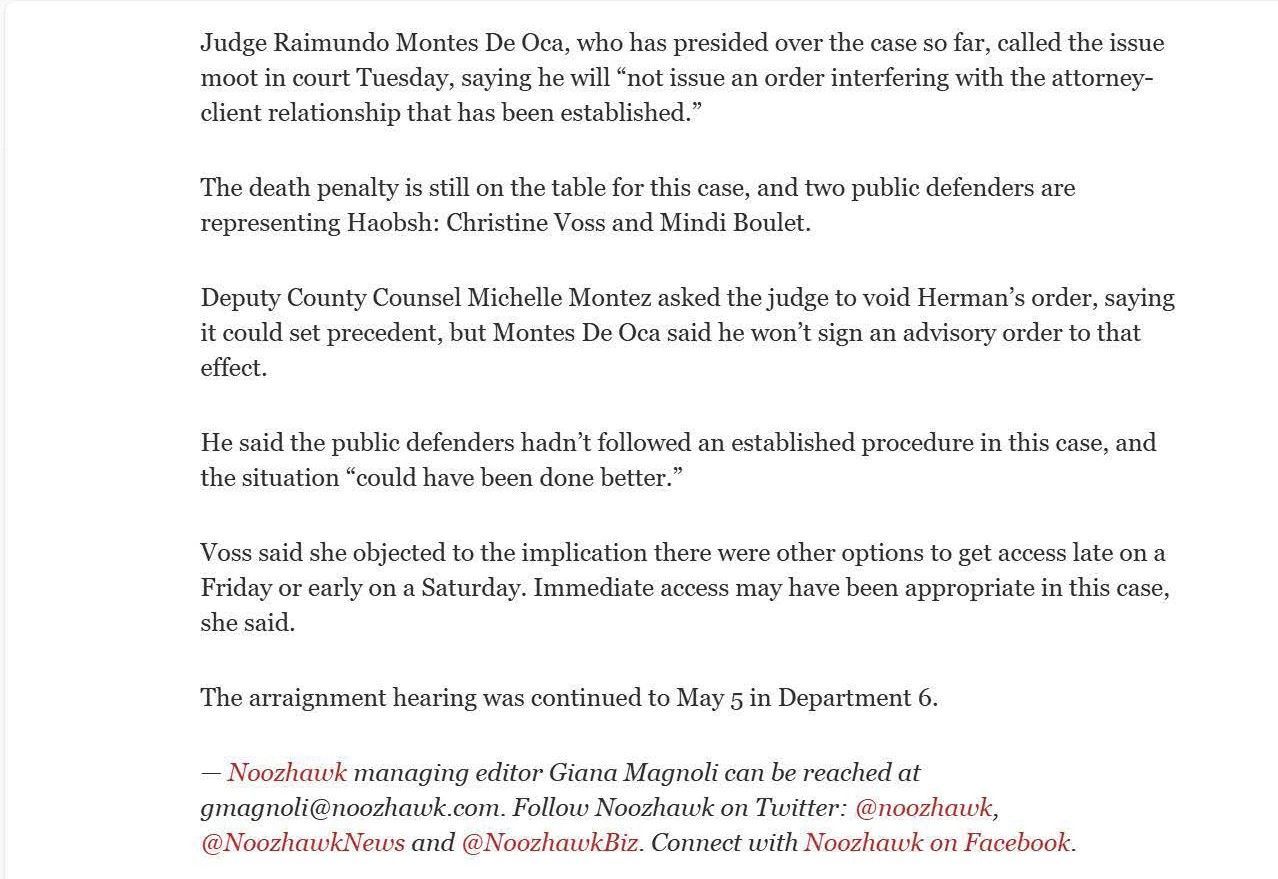
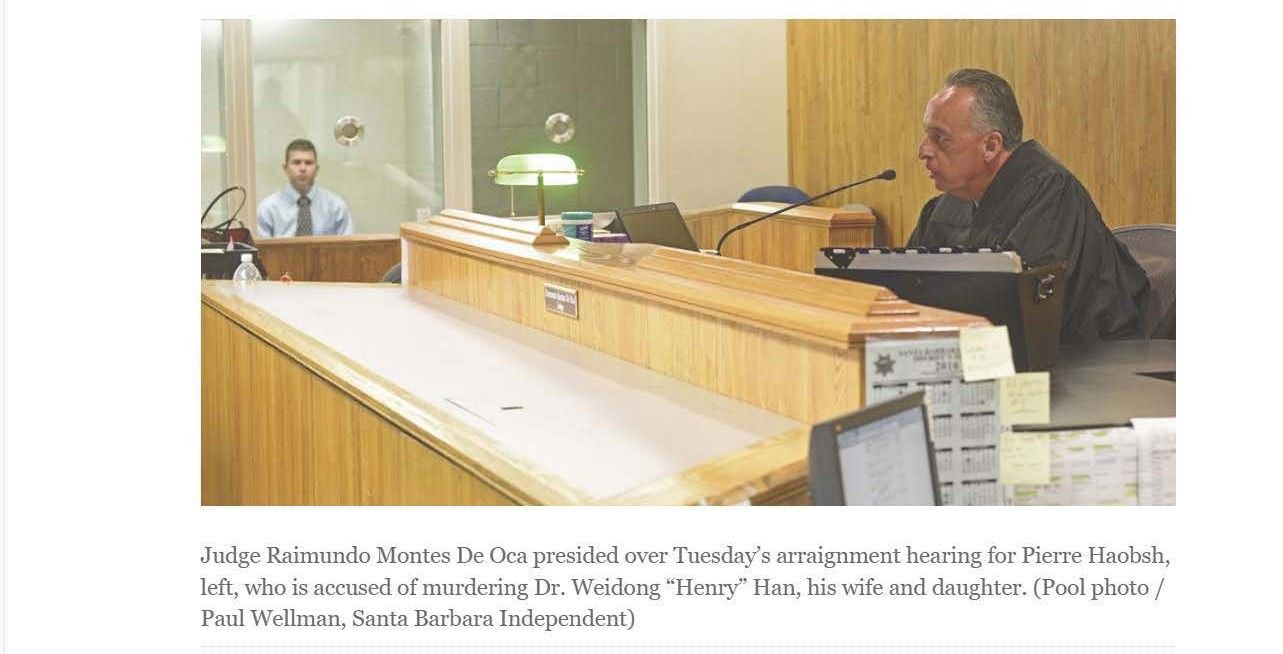


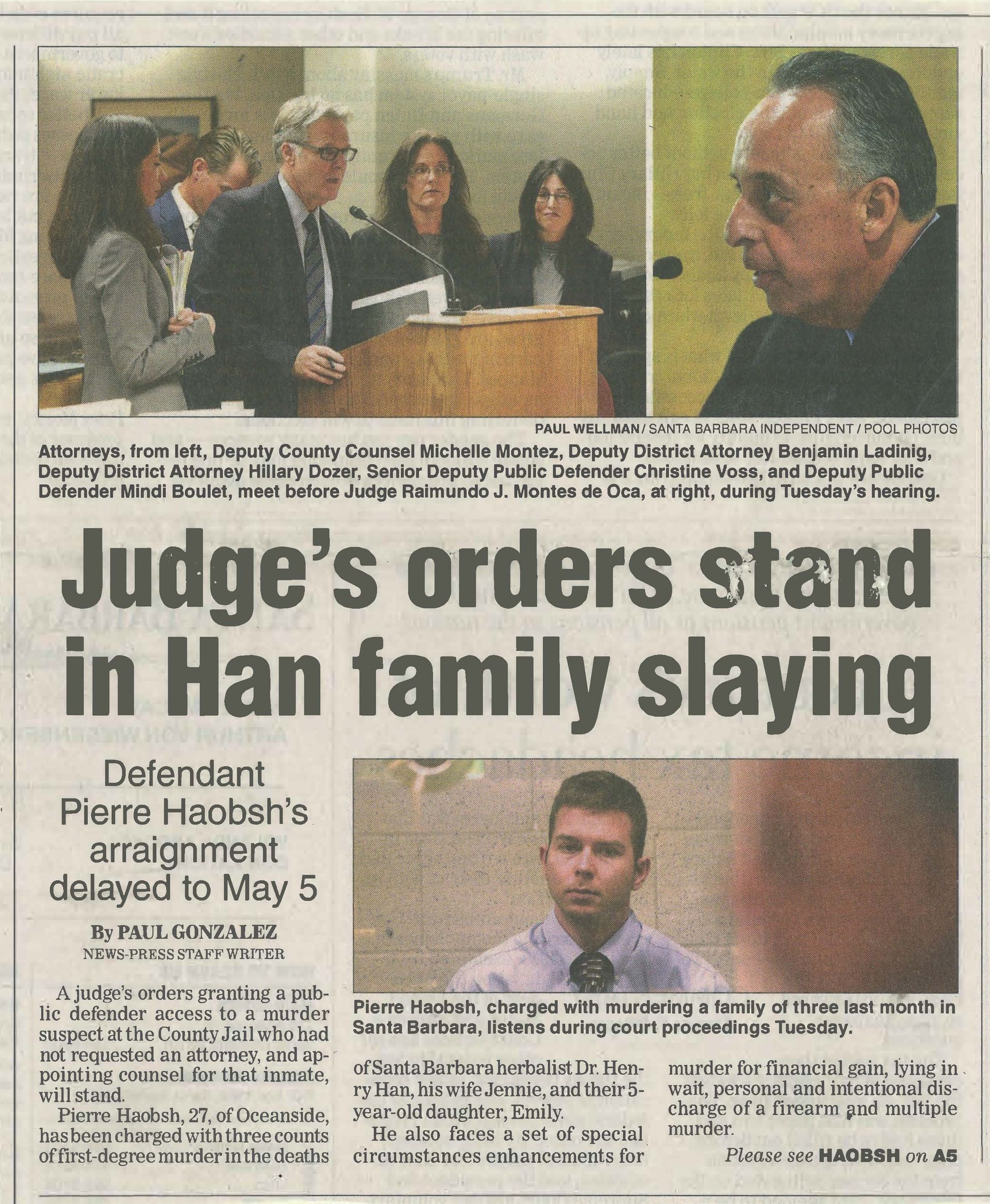

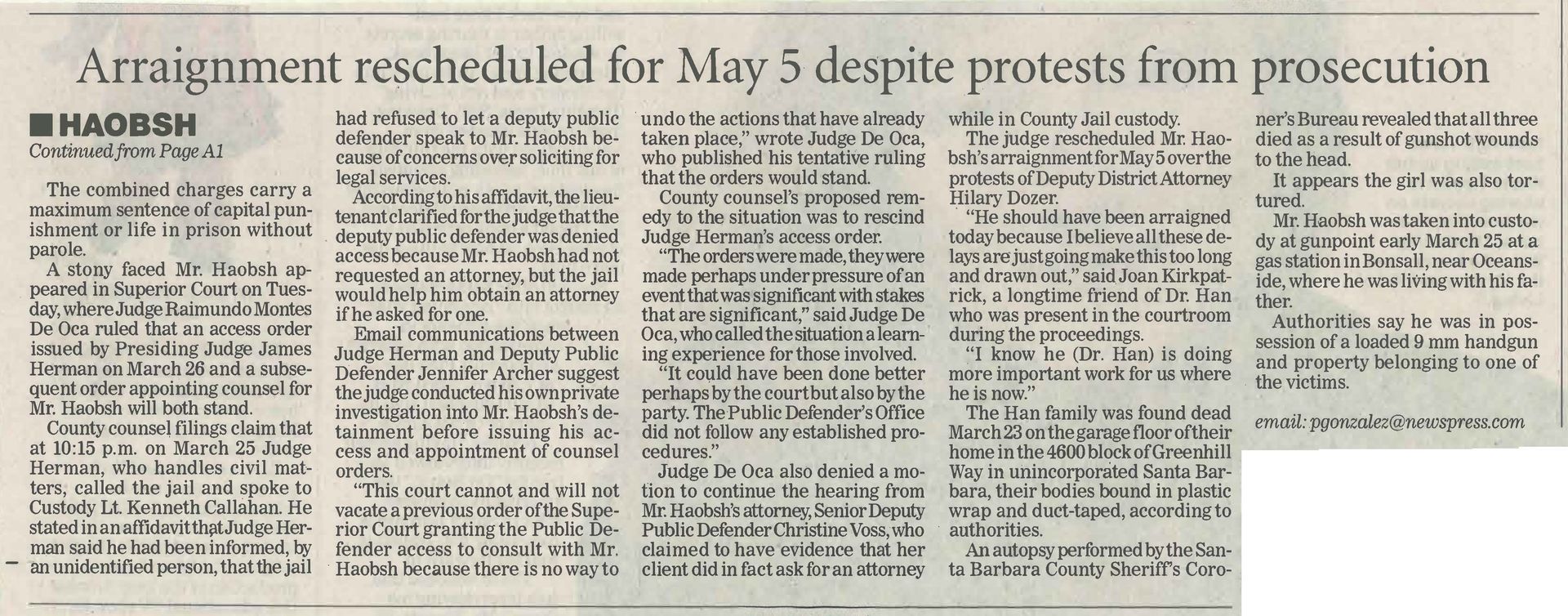

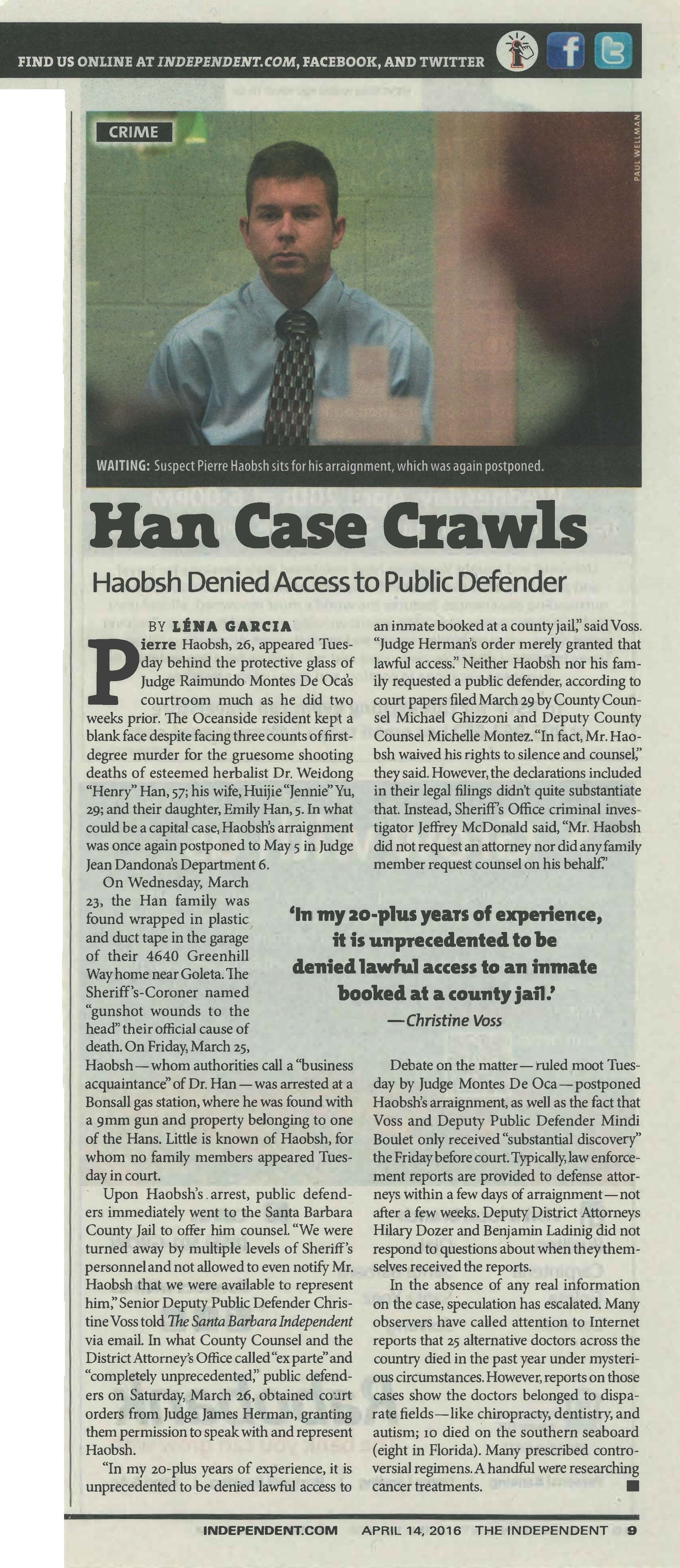

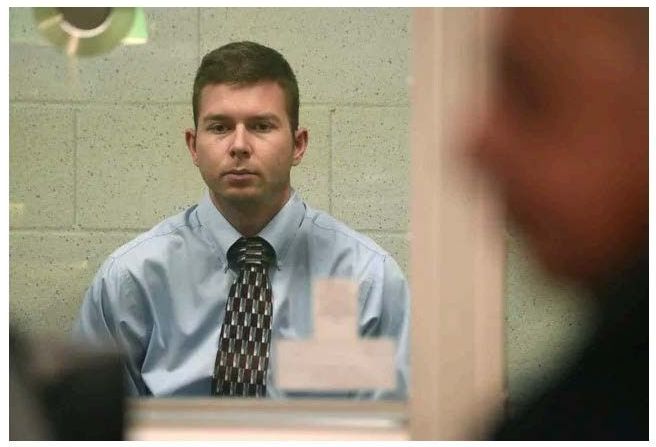

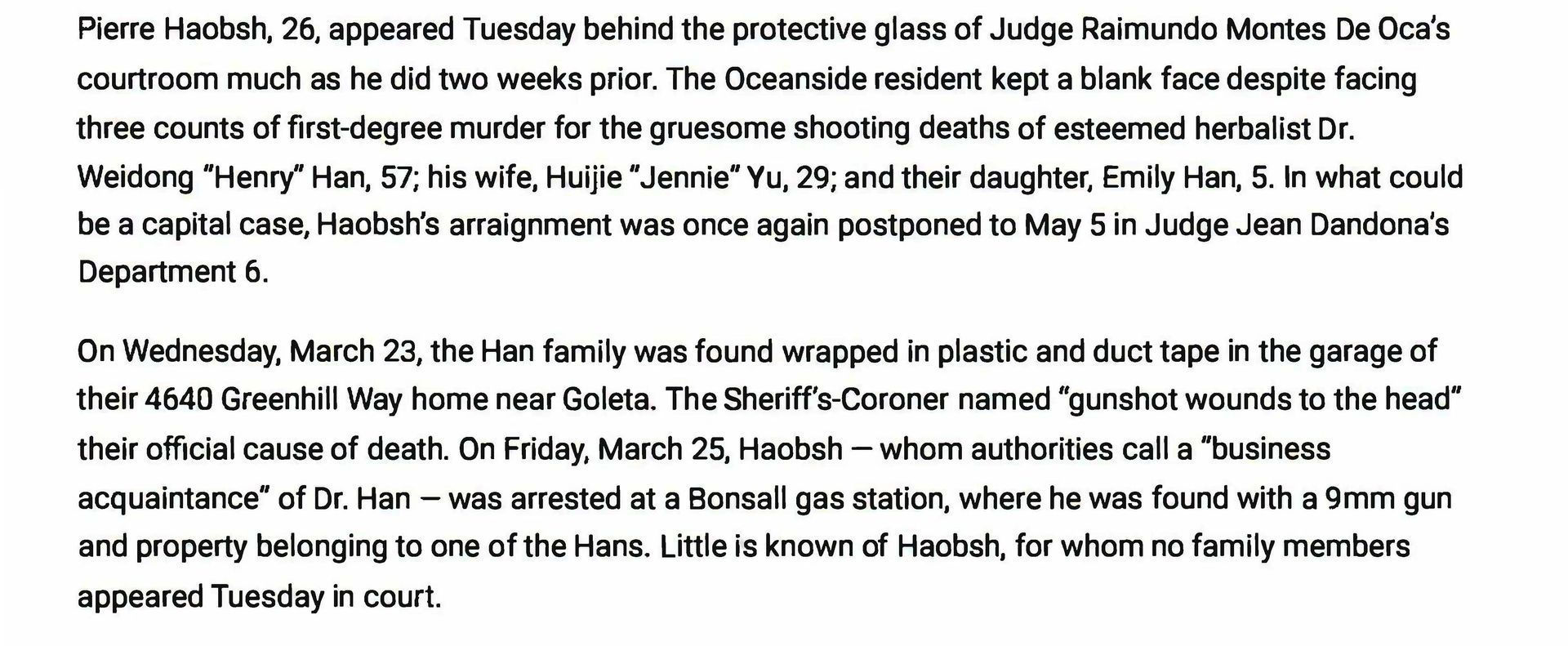



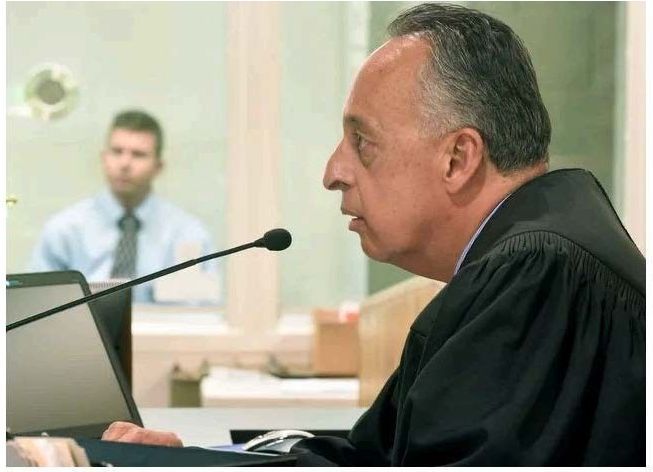

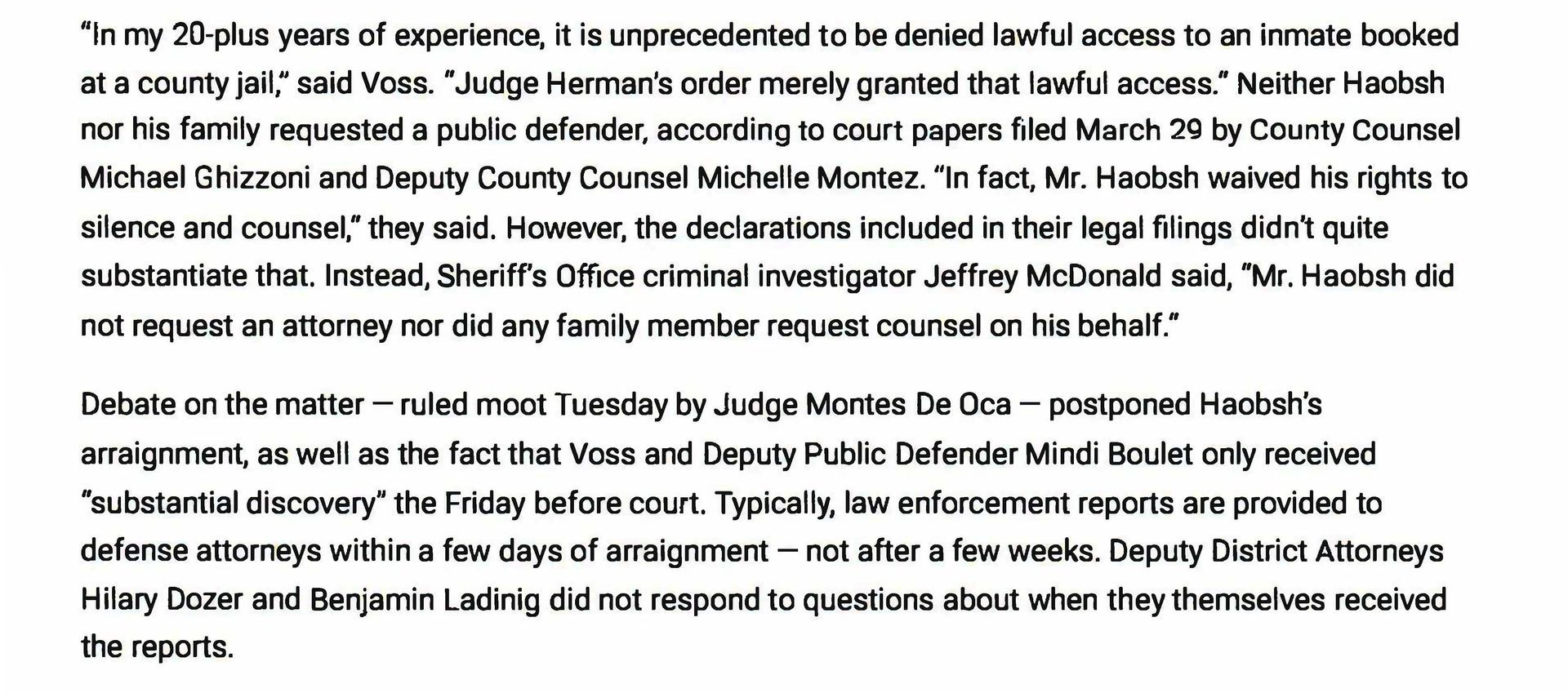
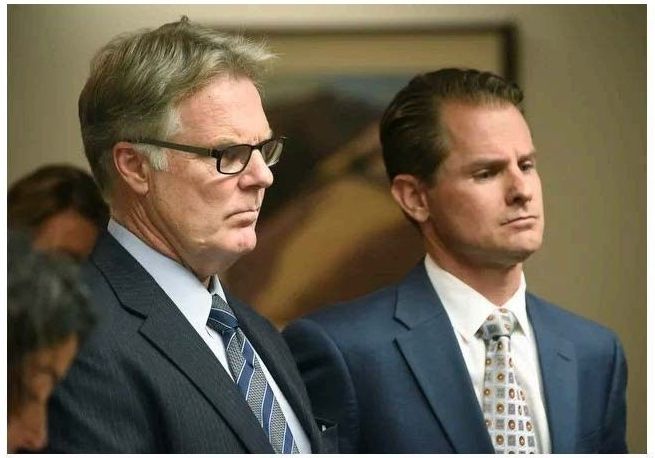




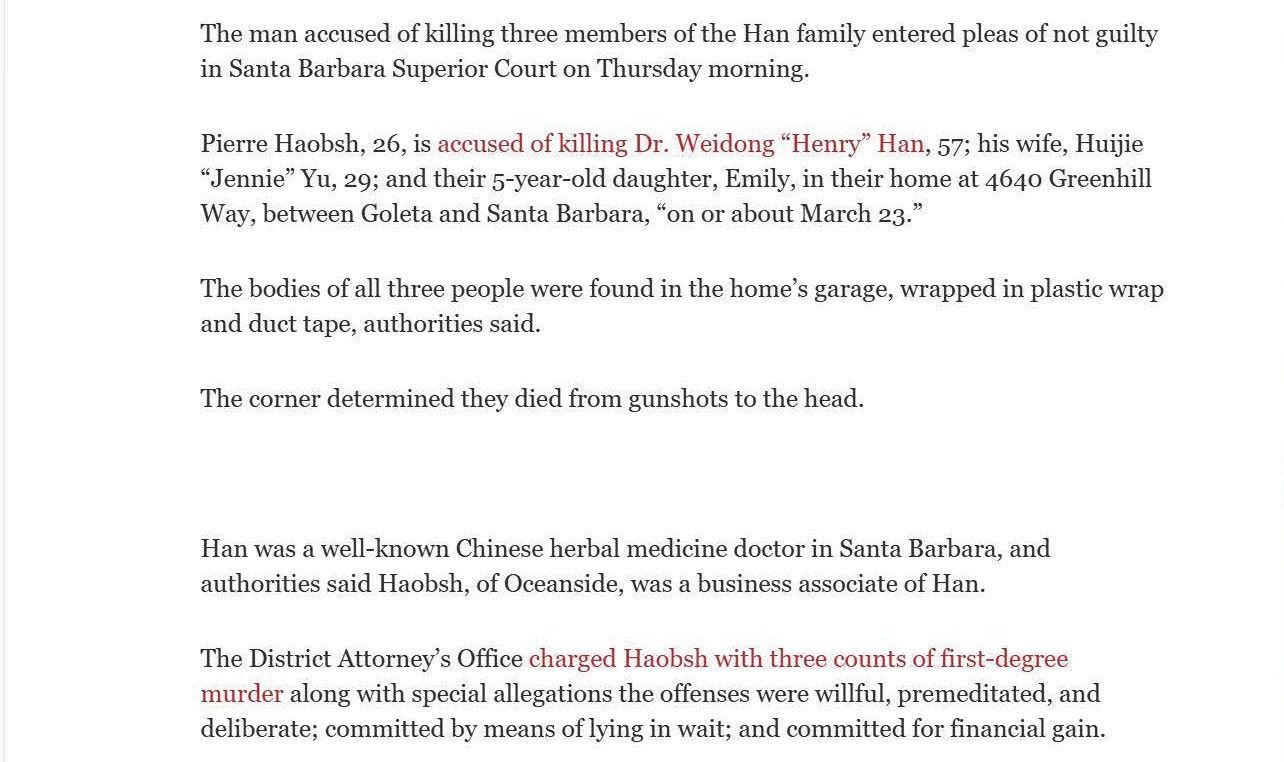
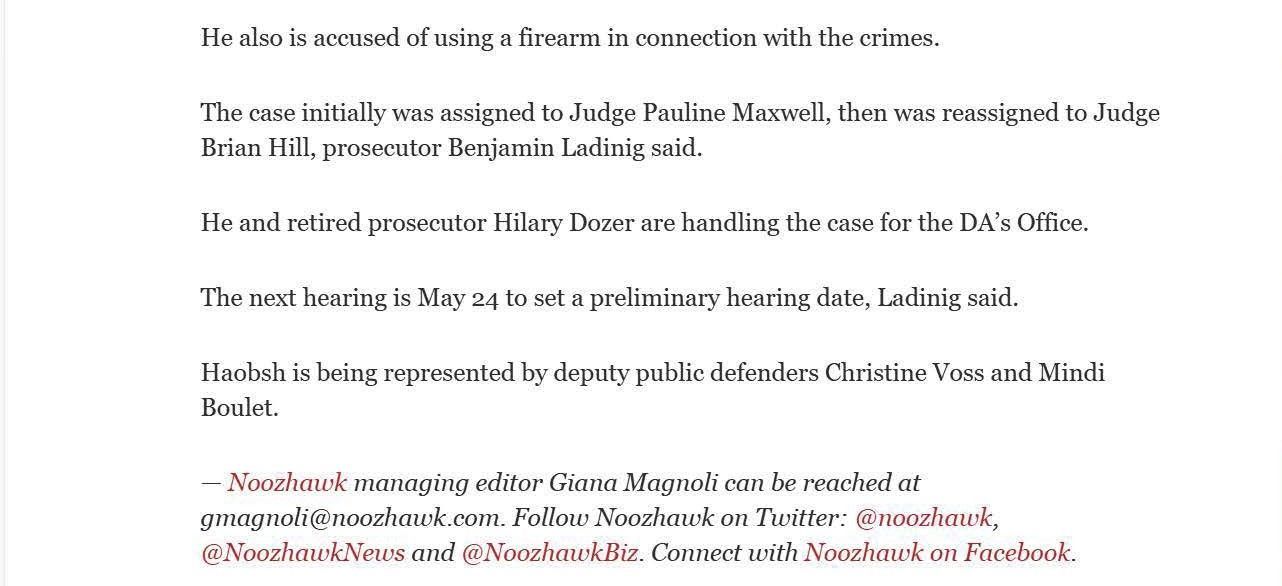

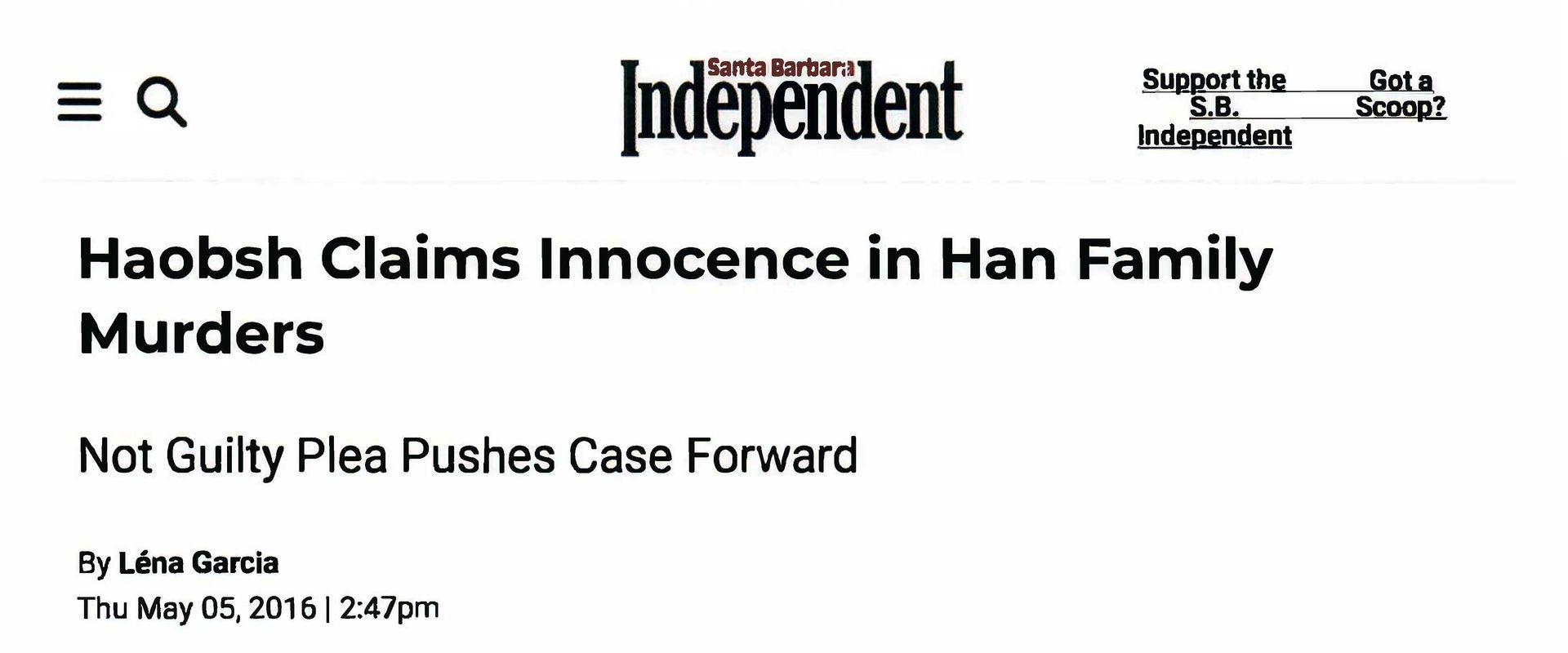
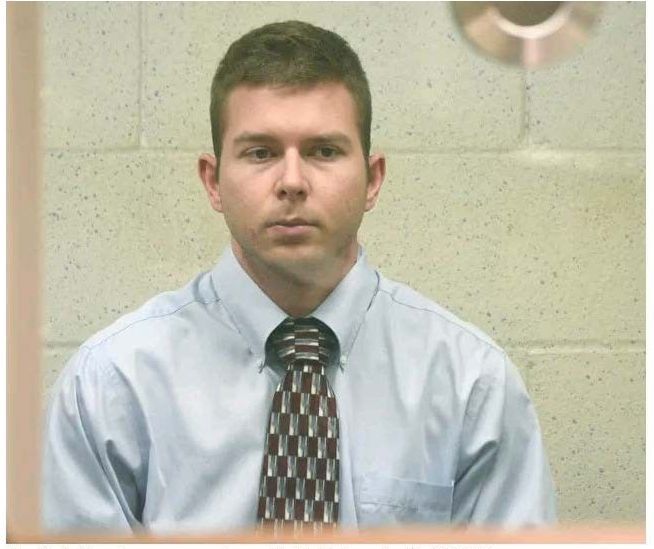

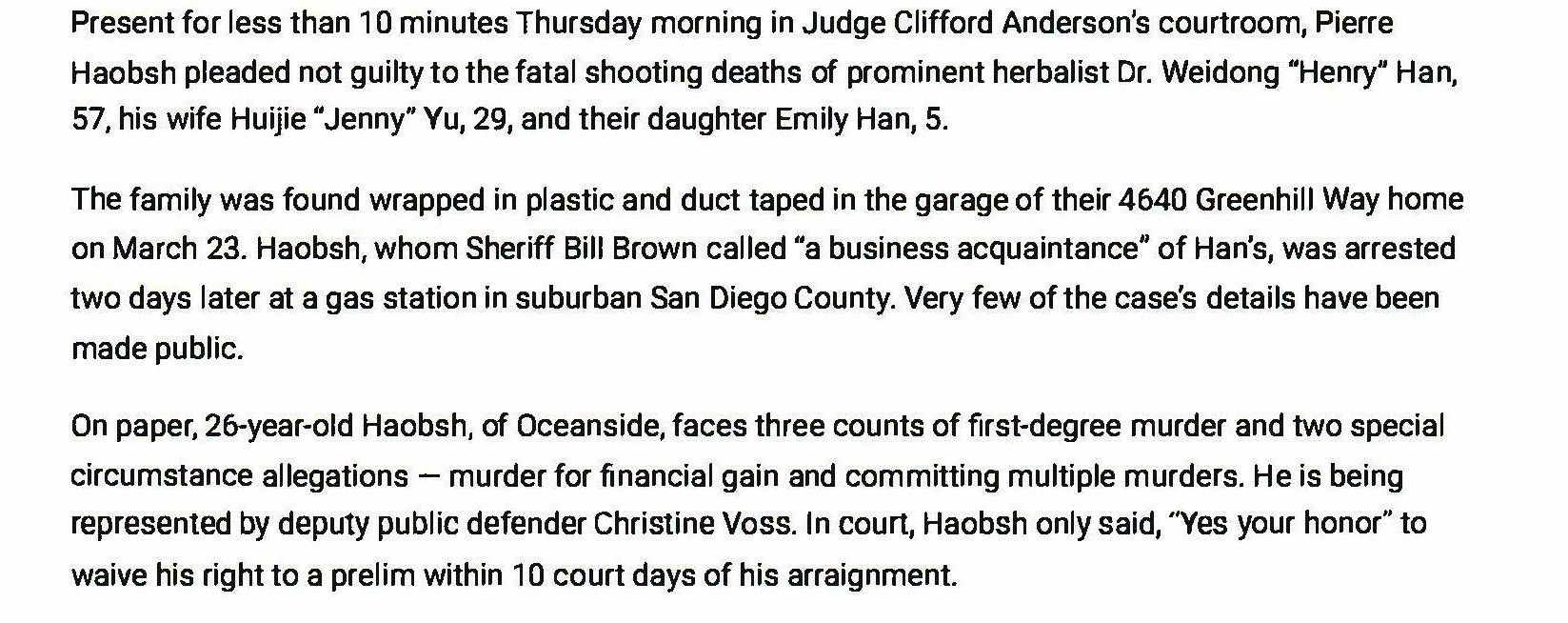

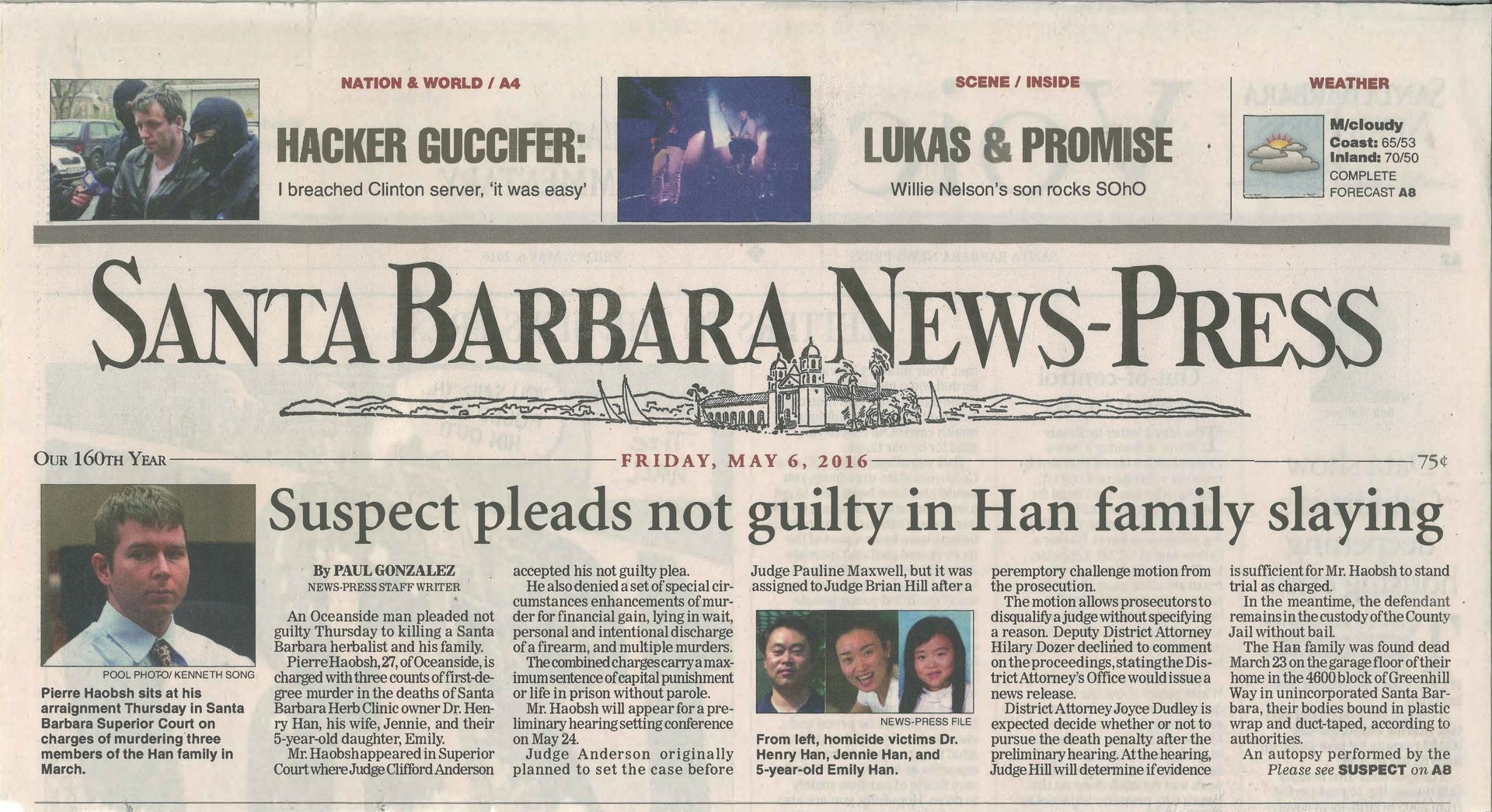





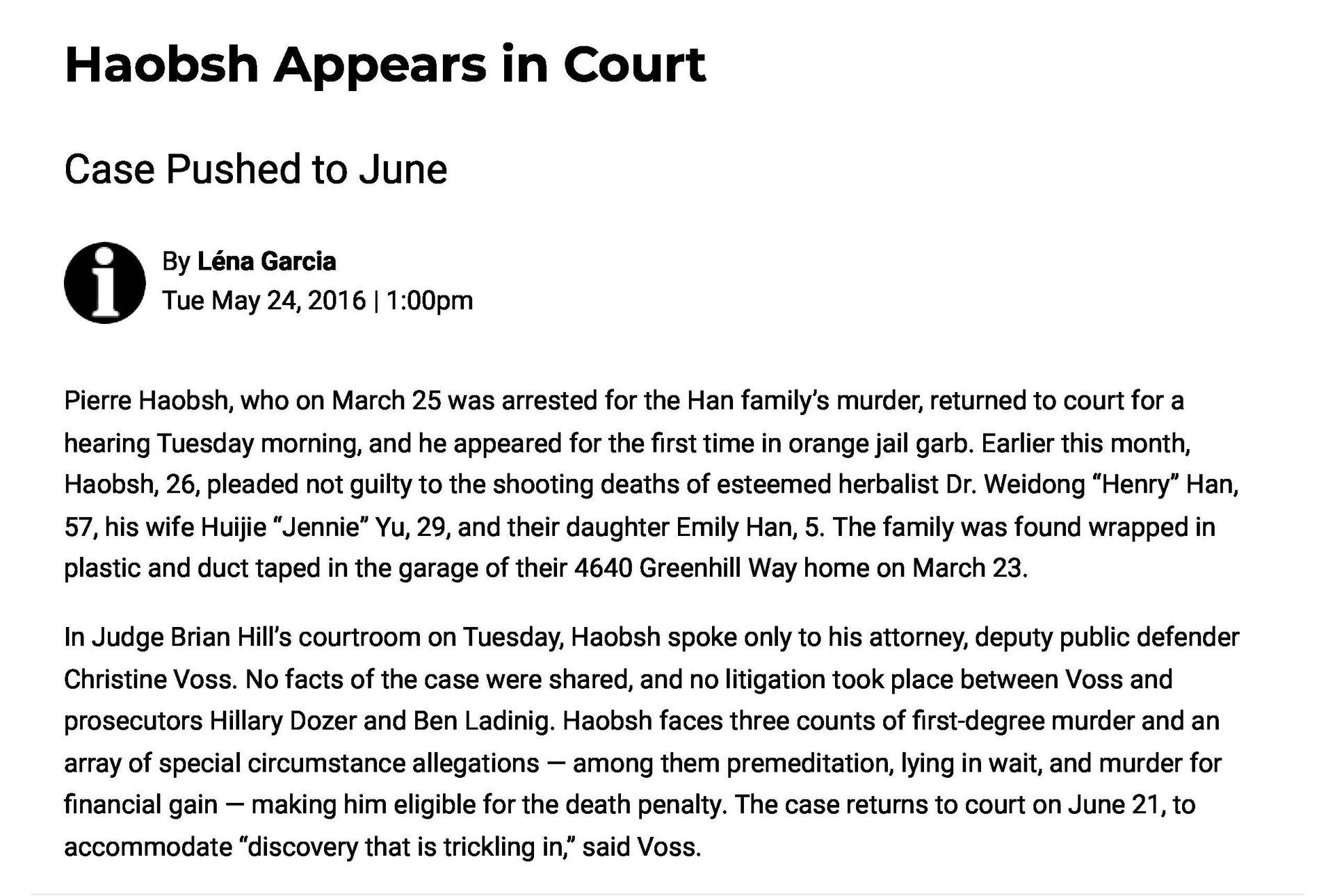

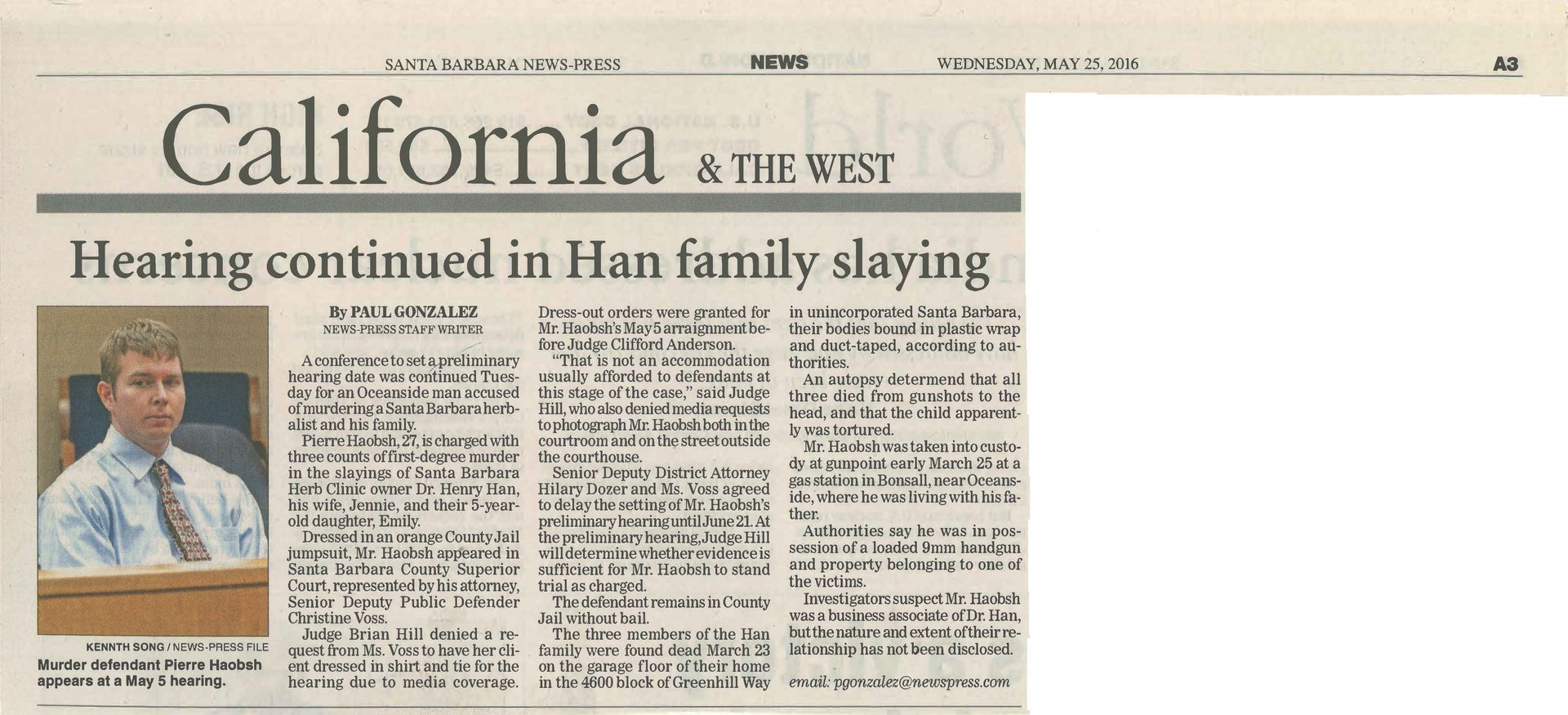


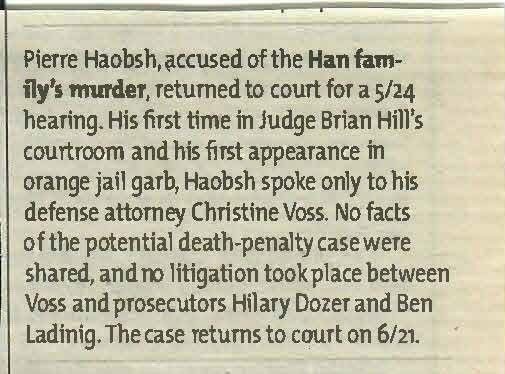

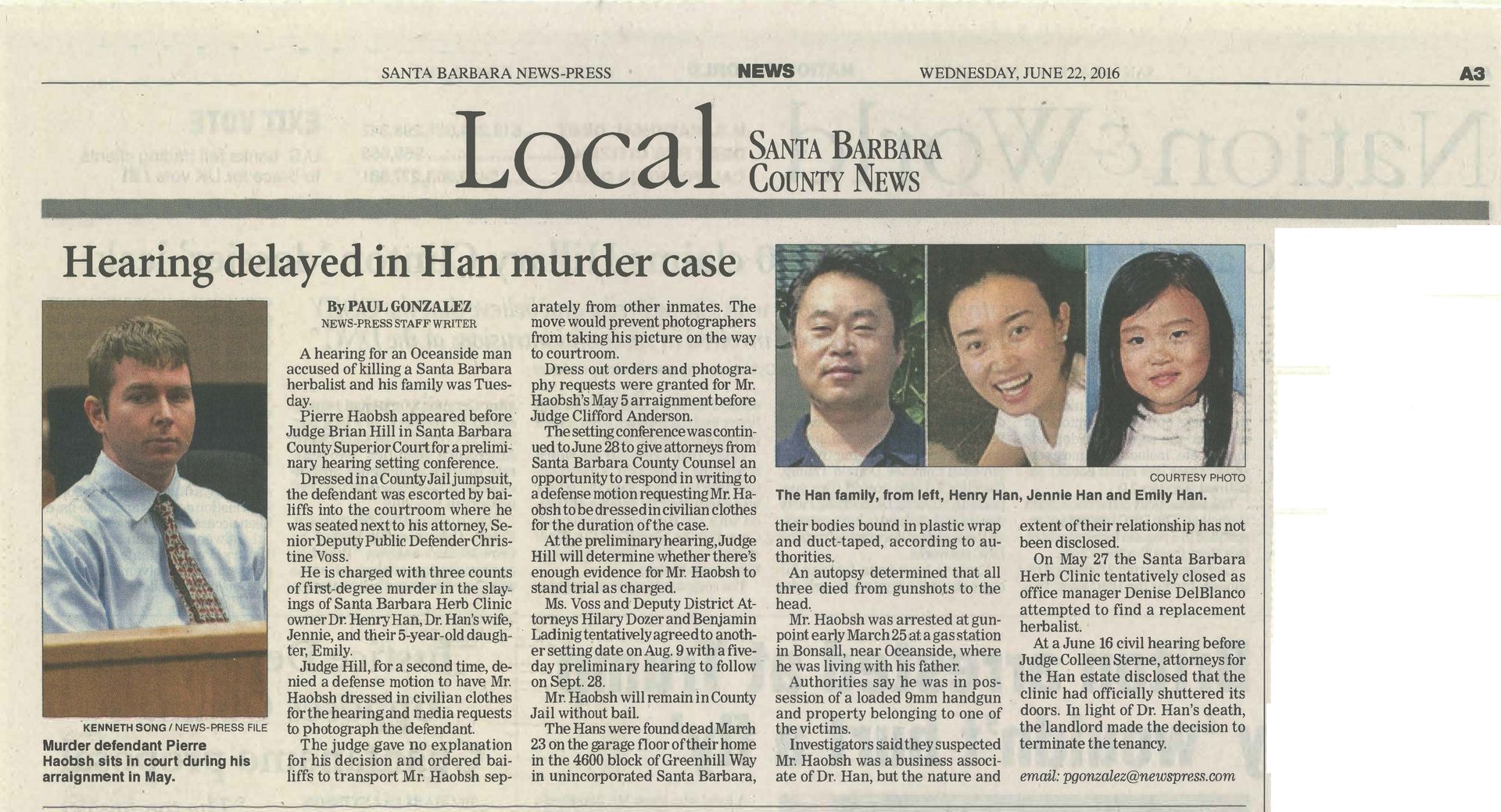

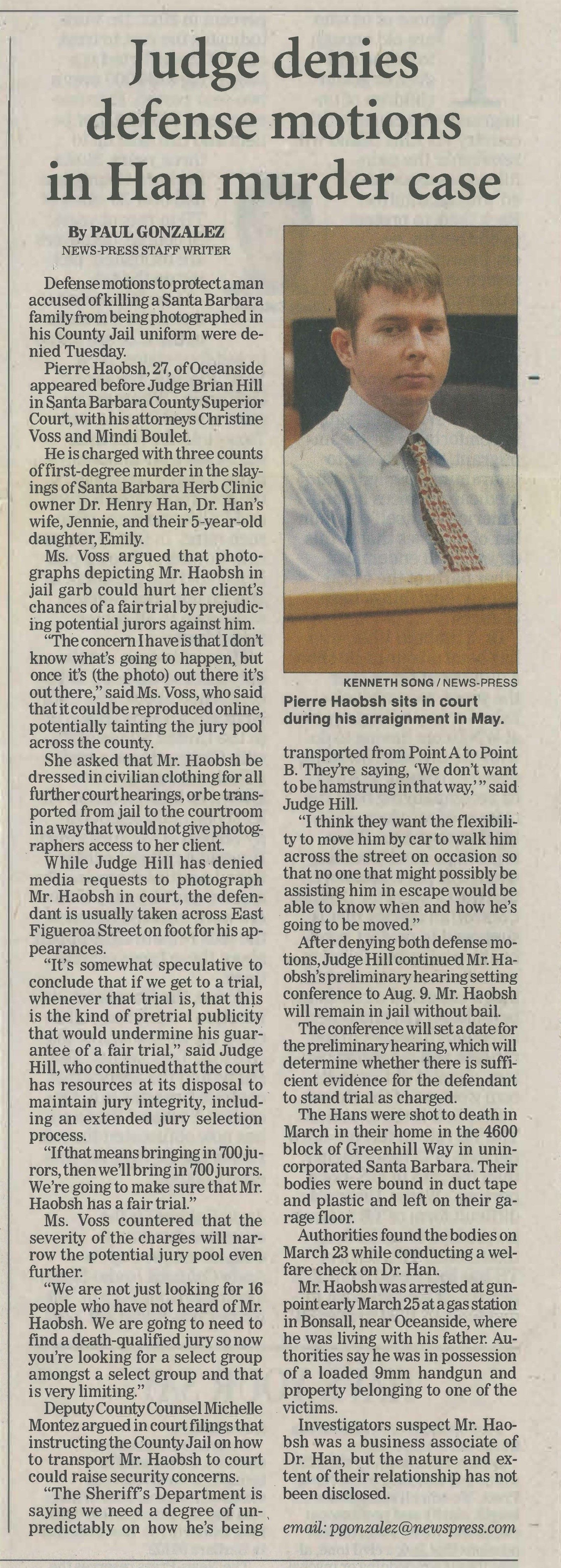



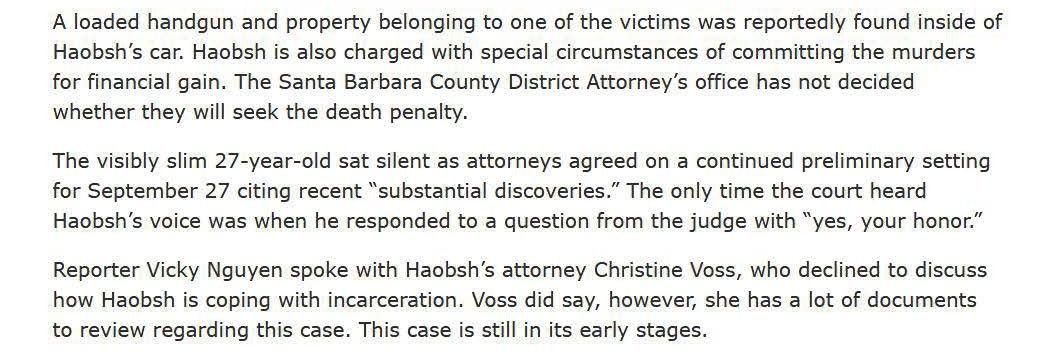


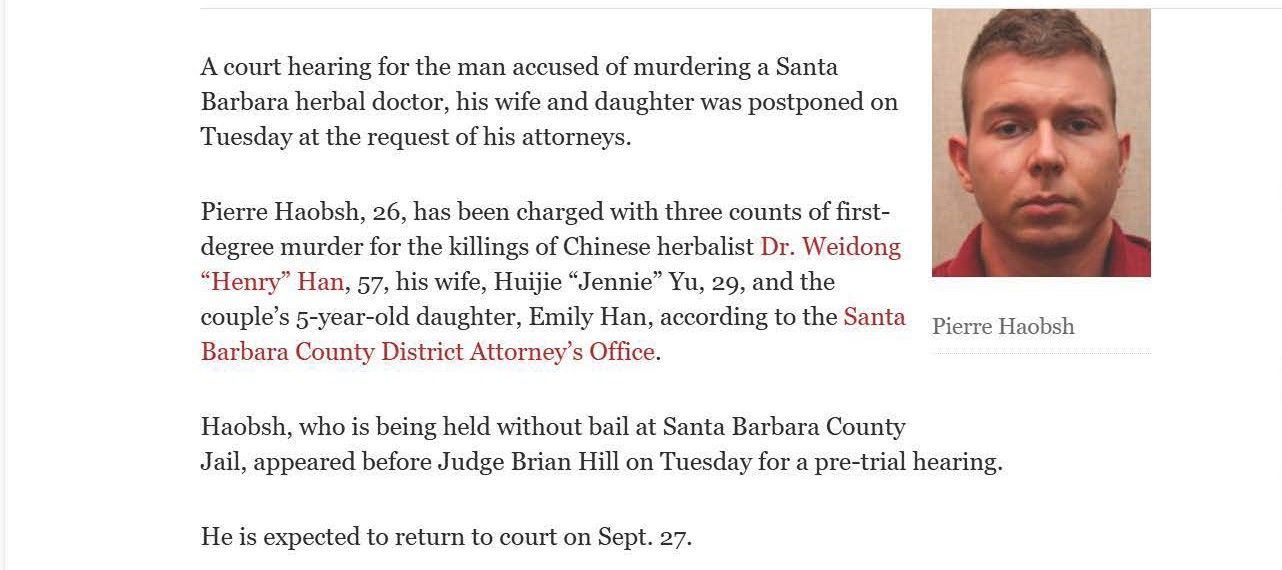

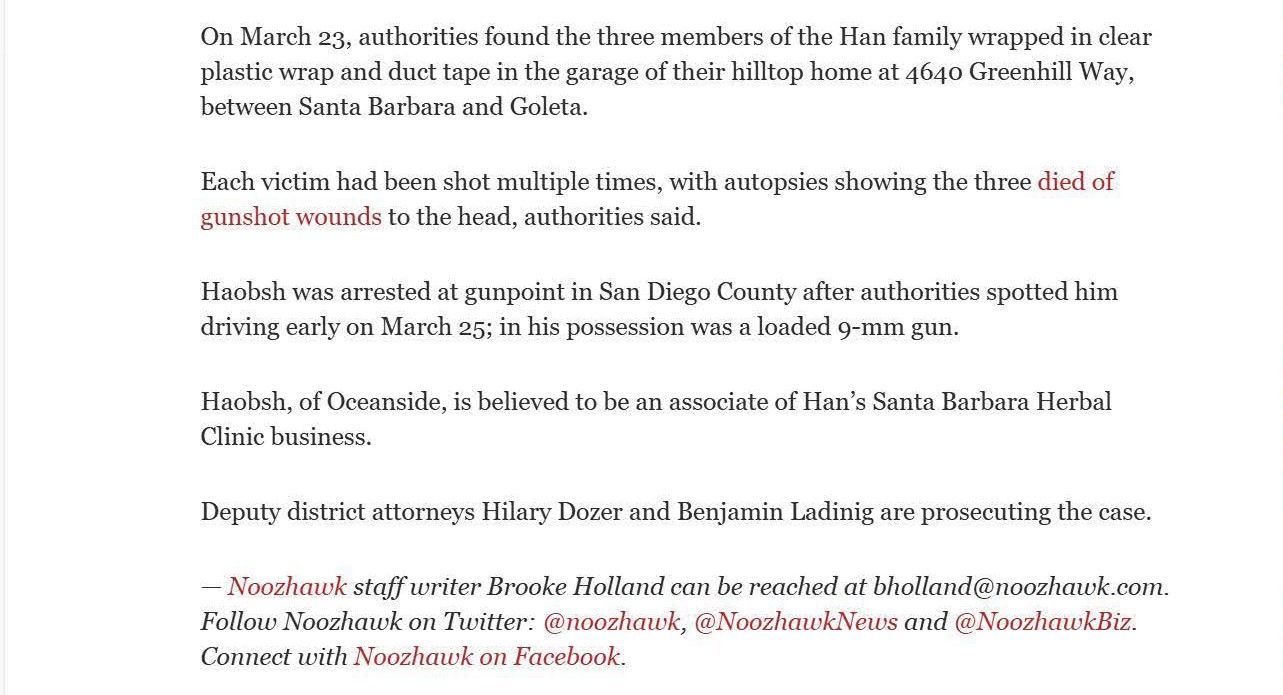



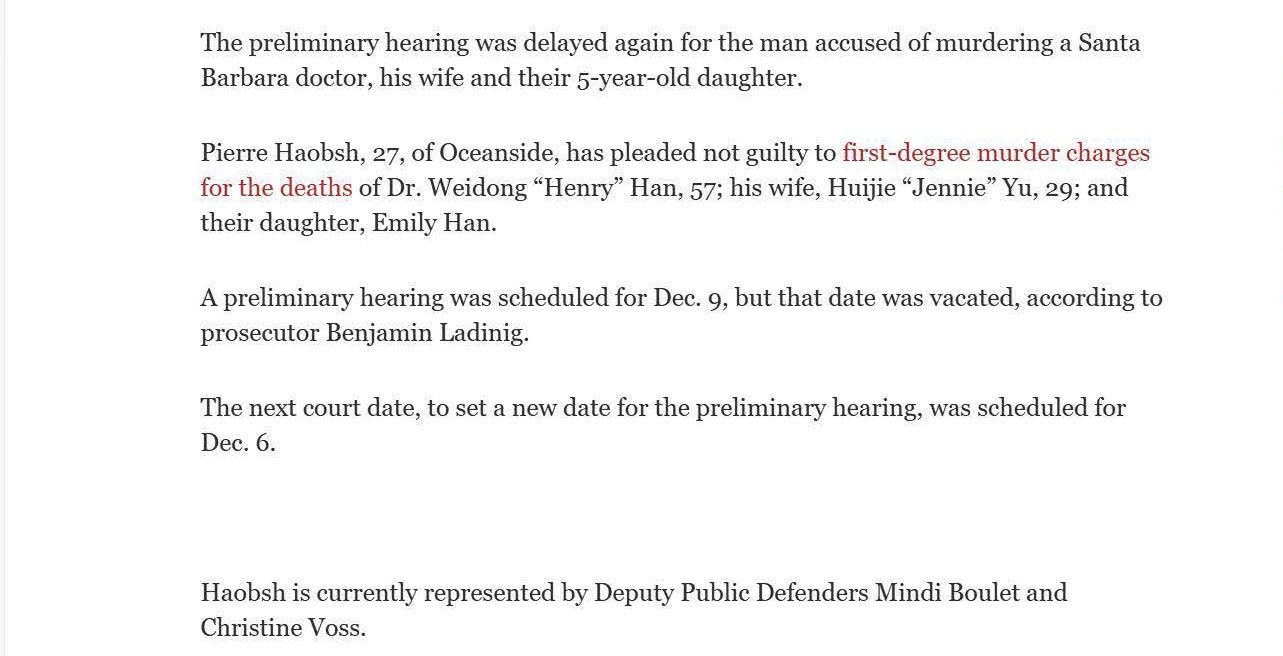







Nicolas H., 1470650, Death penalty eliminated from the case on June 16, 2015
- Charges: Four counts of murder (Penal Code § 187(a)).
- Exposure: Nicolas was facing the death penalty.
- Outcome: Christine did a mitigation presentation and was able to convince the district attorney to not seek the death penalty. Nicolas is not on Death Row.
This case was a tragedy in every aspect. The evidence that was presented at trial was that Nick was extremely mentally ill and delusional. He believed that God had to told him that he needed to kill his parents and two sons in order in to save them. Several expert witnesses were presented by both sides during the trial. All of the experts agreed that he was extremely mentally ill, but there was a disagreement regarding whether he understood the difference between right and wrong at the time that he killed his family. Nick had gone through a long custody battle to have his boys, he clearly loved them. In a police interrogation he said that he knew that it was legally wrong to kill his children, but that he did it anyway because God told him that was what he had to do in order to save his boys from Hell.
It would appear that there is no way that a case like this could be "won." However, Nick had killed two children and two elderly people, the kind of case that it would be no surprise at all for the district attorney to seek the death penalty. A victory in this case was for Christine to save Nick from Death Row. Most district attorneys allow a defense attorney to do a "mitigation presentation," but they seldom make a difference. Christine approached the mitigation presentation as if it was the trial. After her thorough presentation the district attorney elected to NOT seek the death penalty. It was at that moment that Christine won Nick's case.
This is Christine on television defending Nick
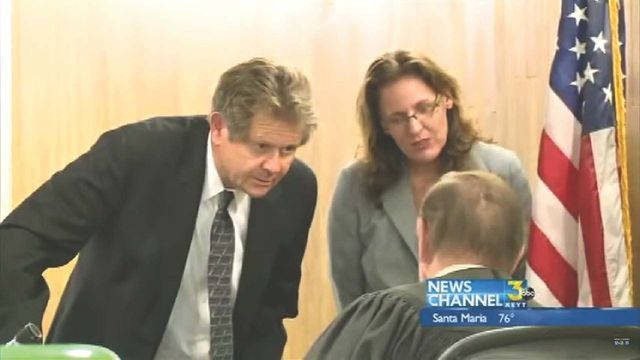
This is Christine being interviewed on television about the case
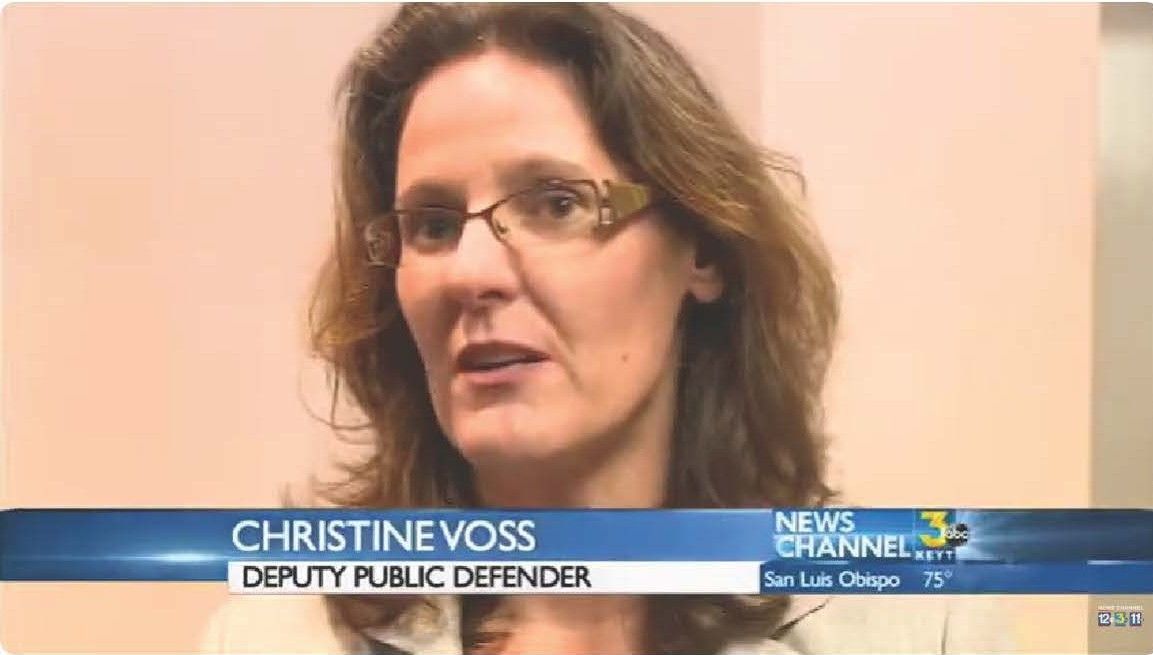
This is the press from when Christine saved Nick from Death Row


Here you can follow the press on Nicolas' case from beginning to end


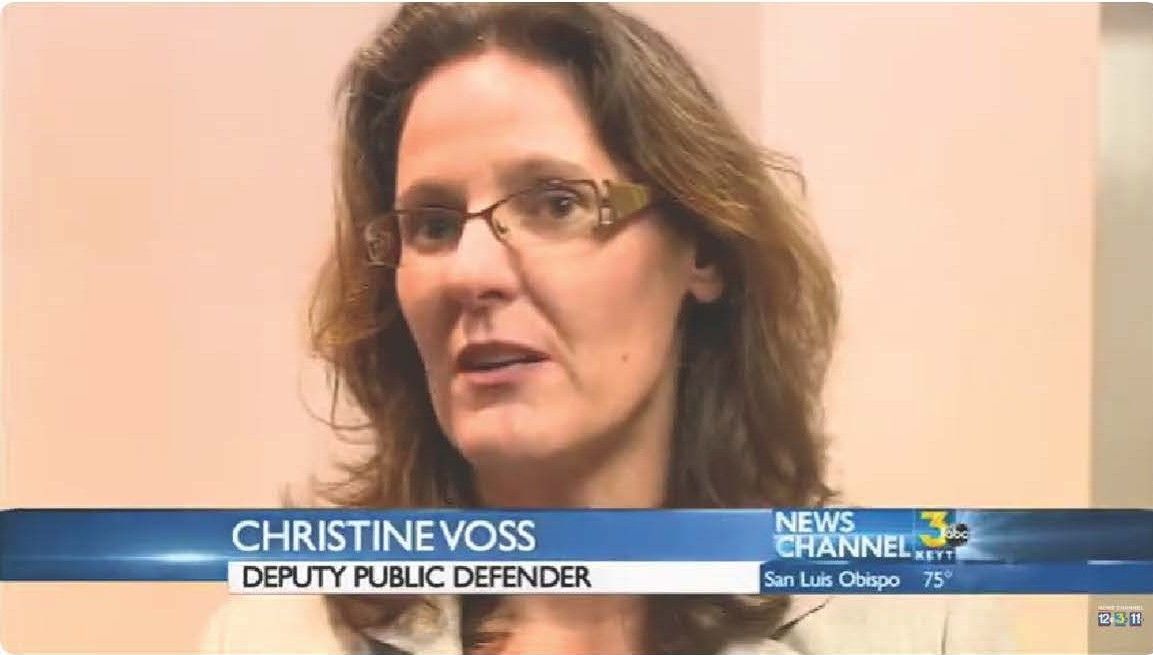



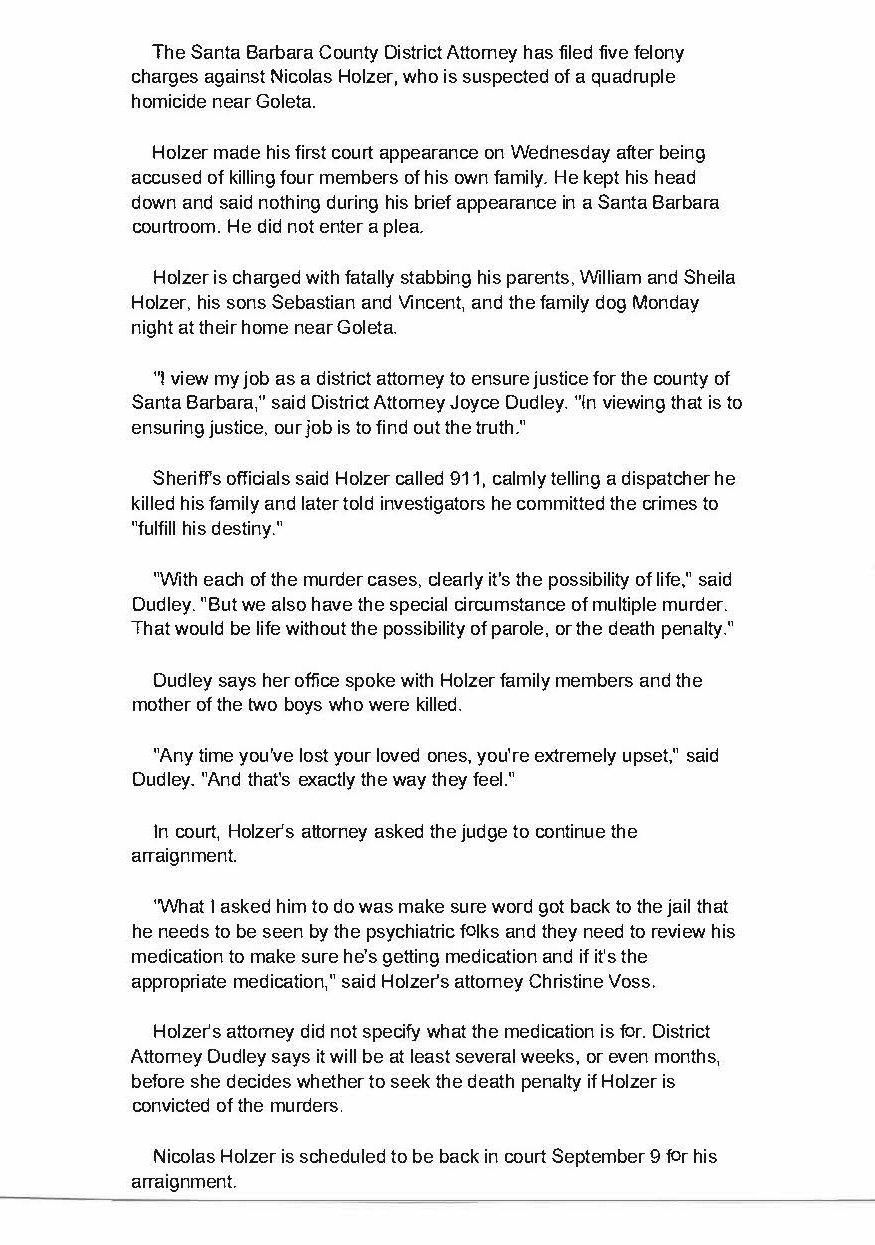
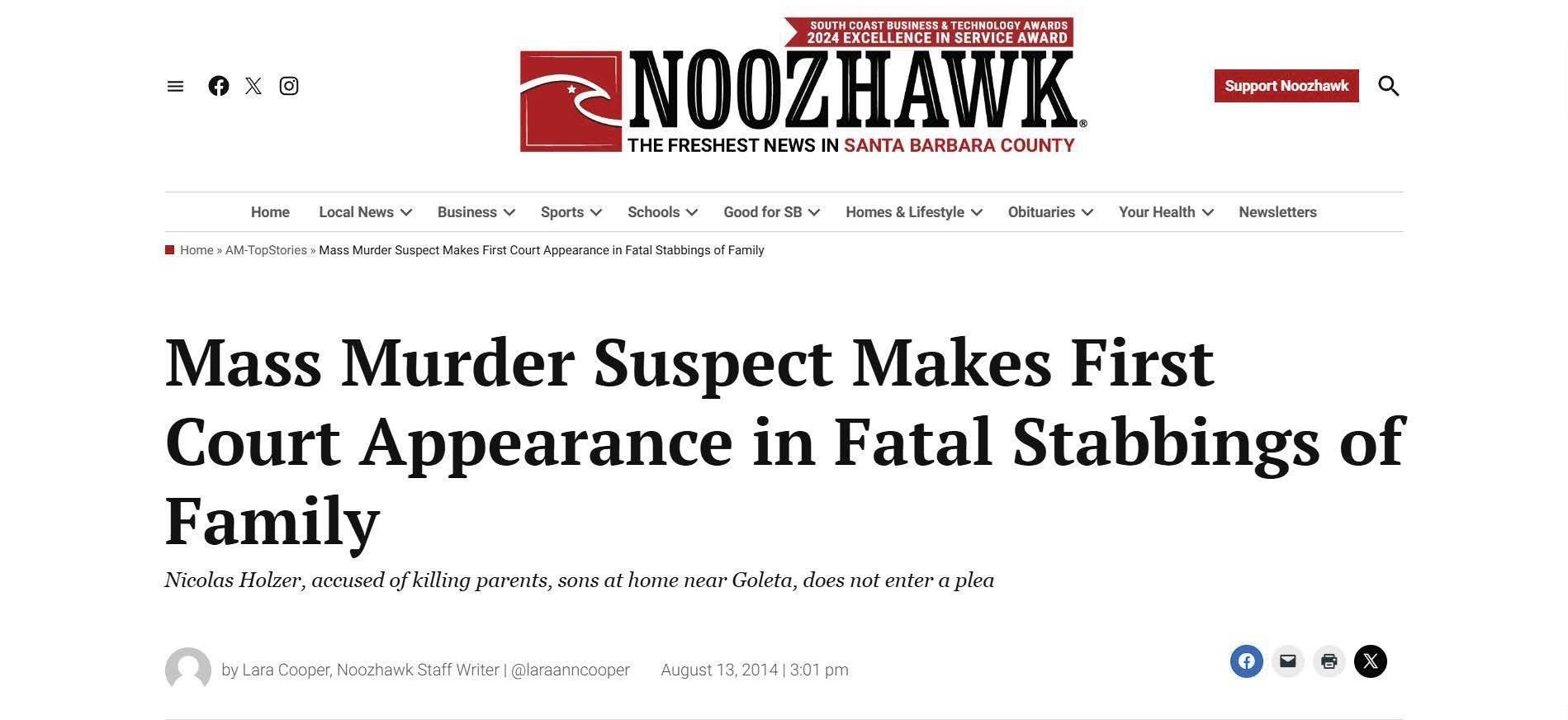
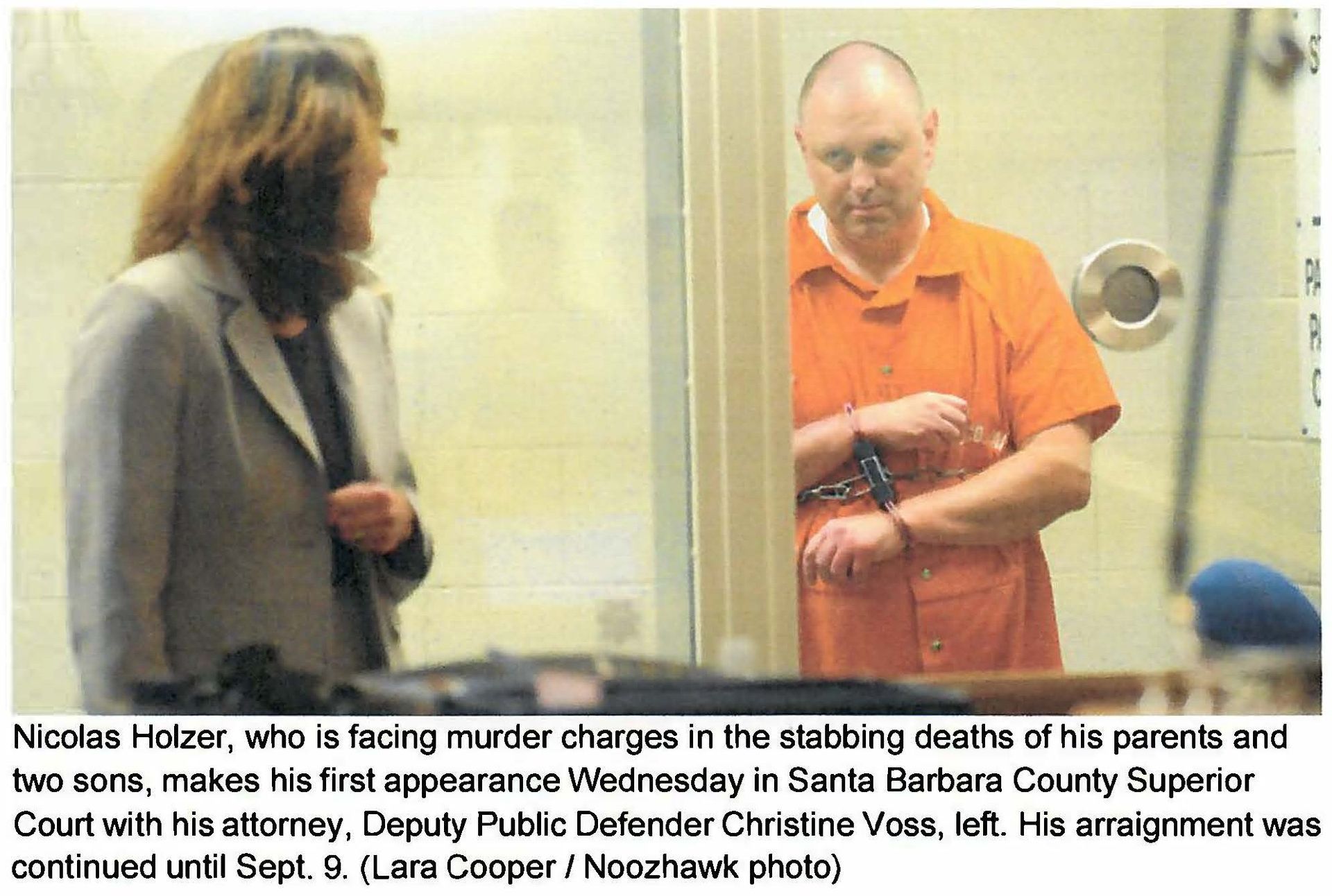
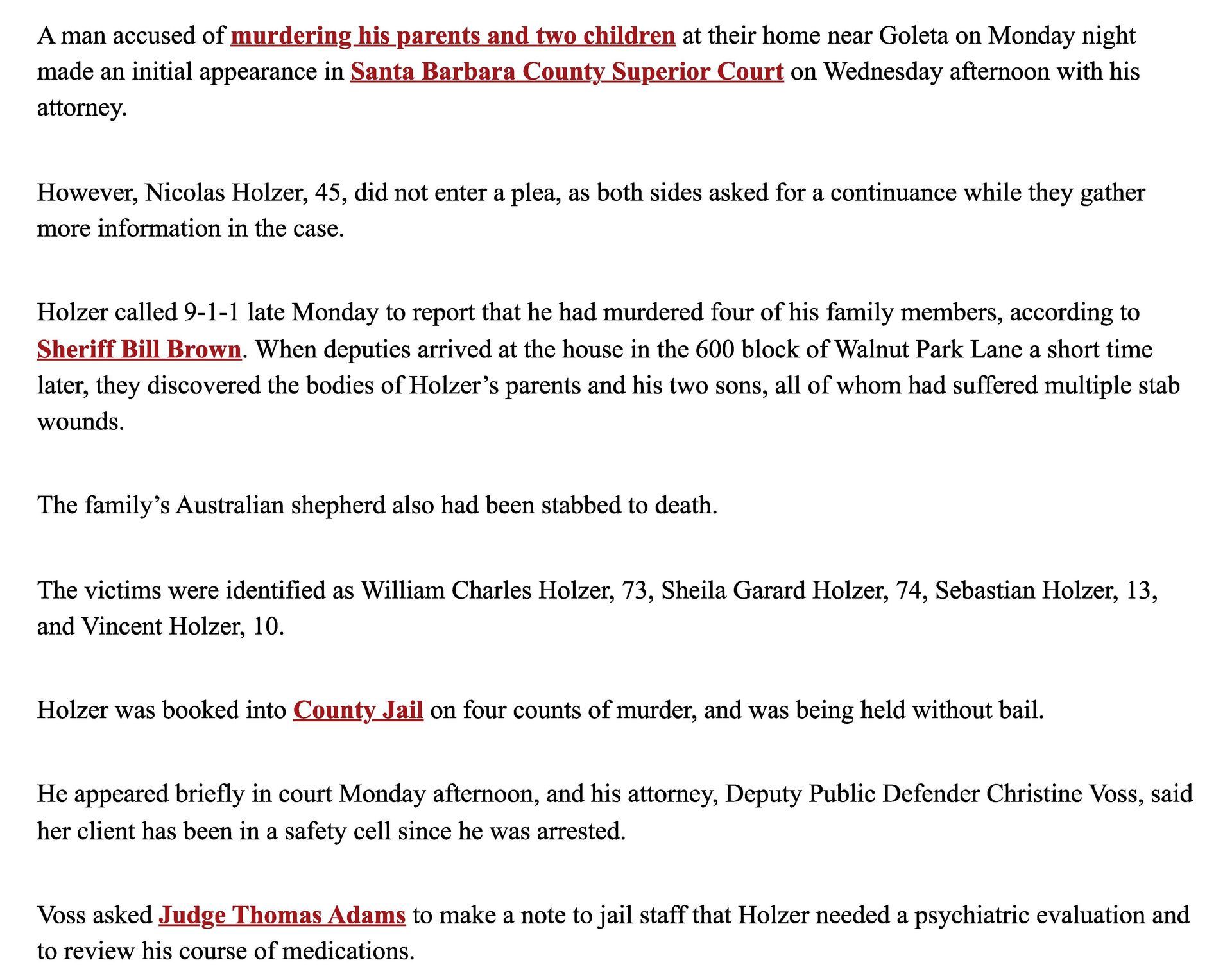
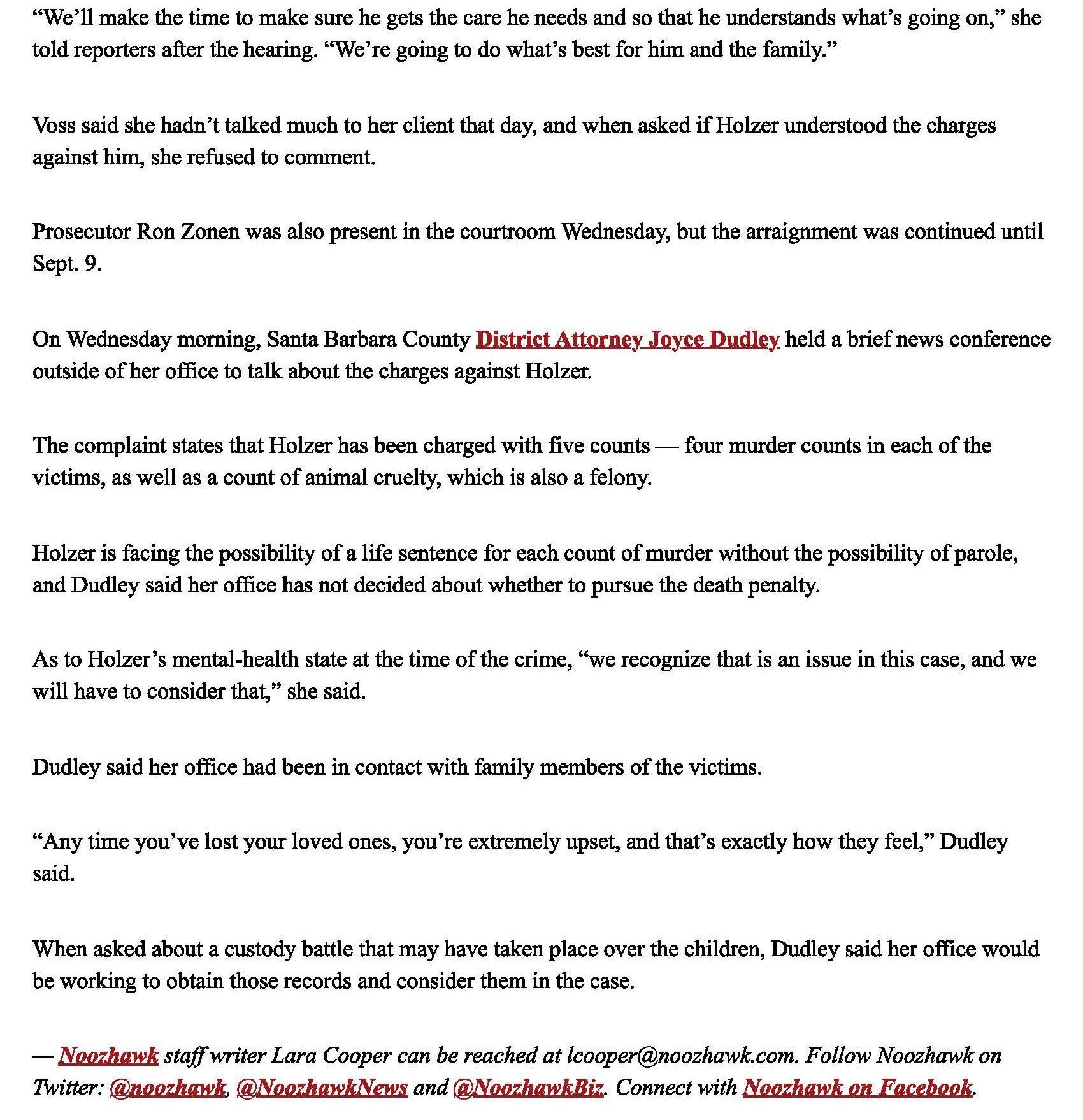
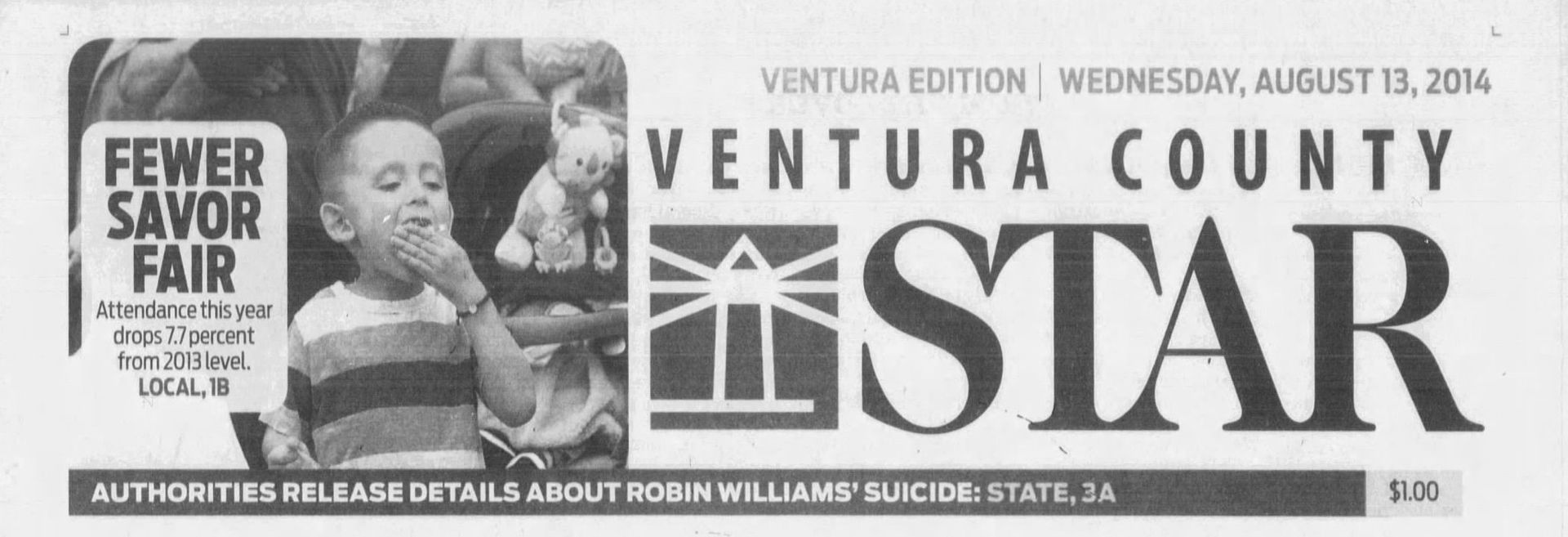
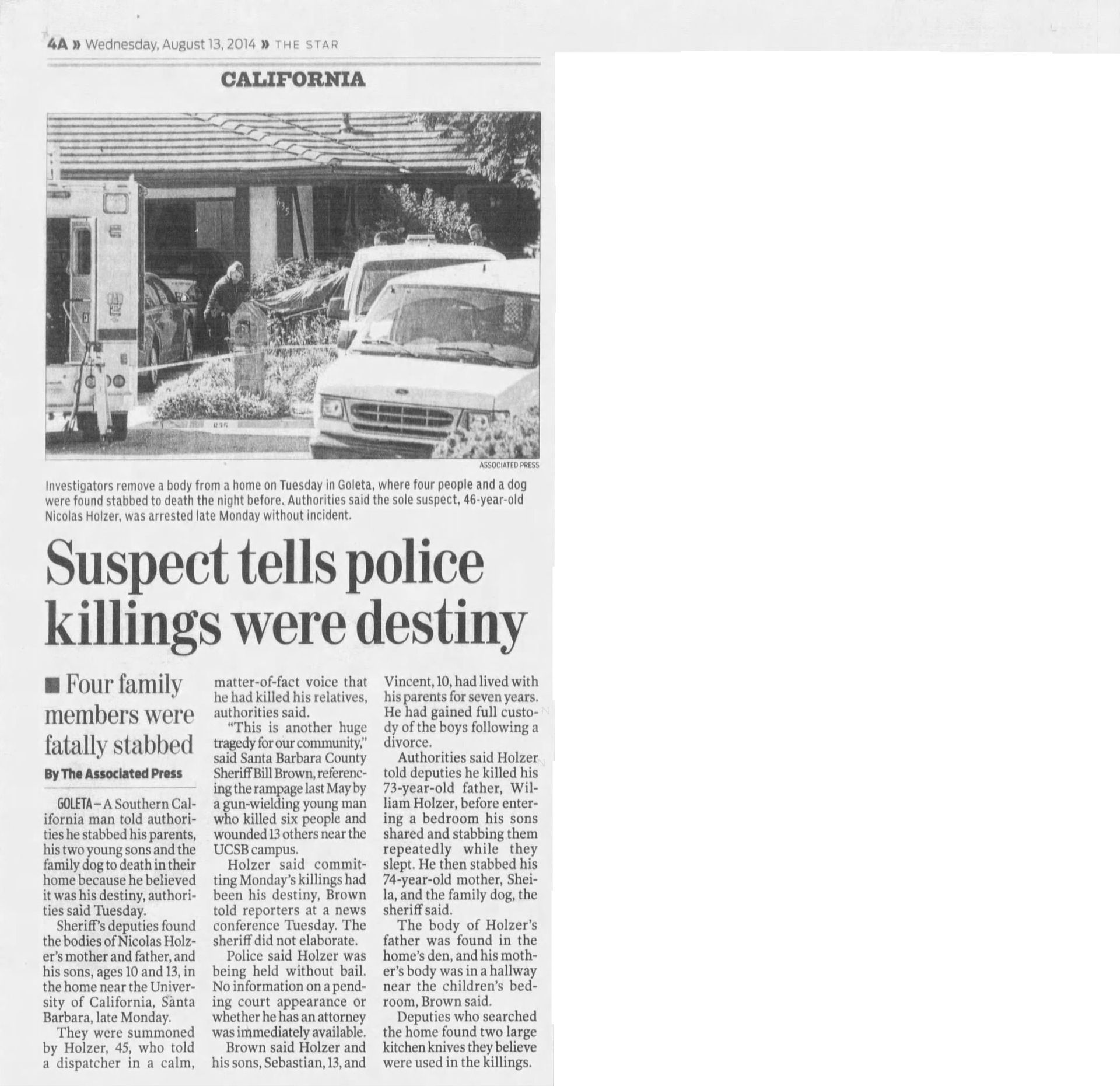


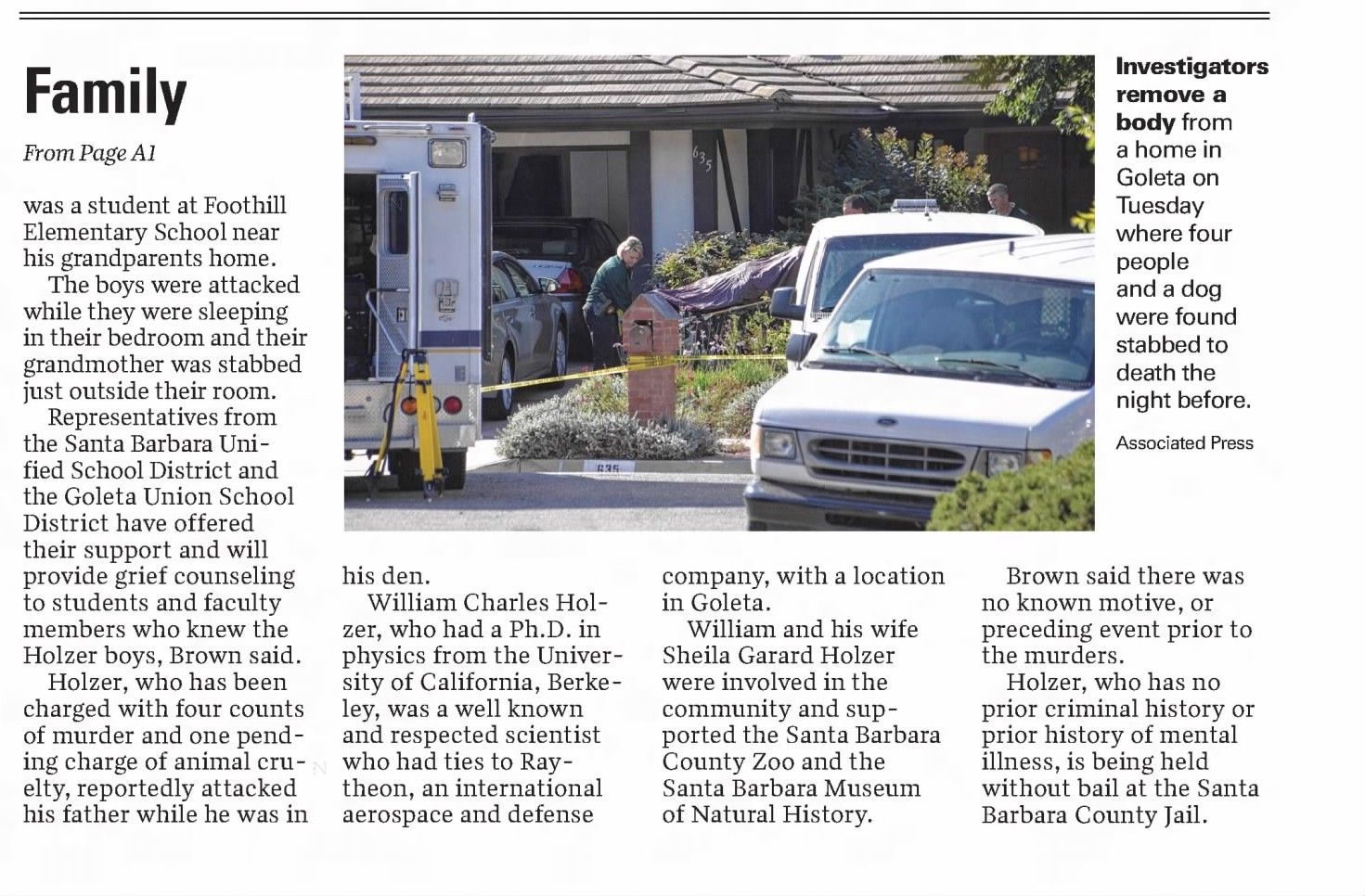




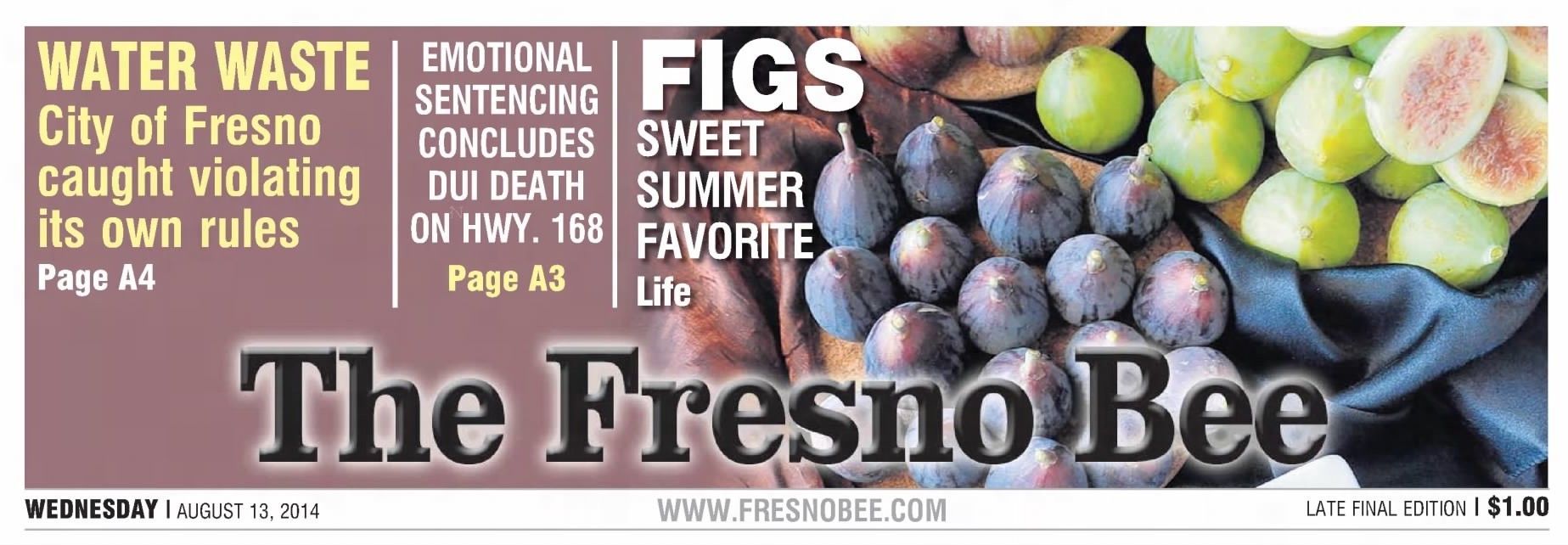

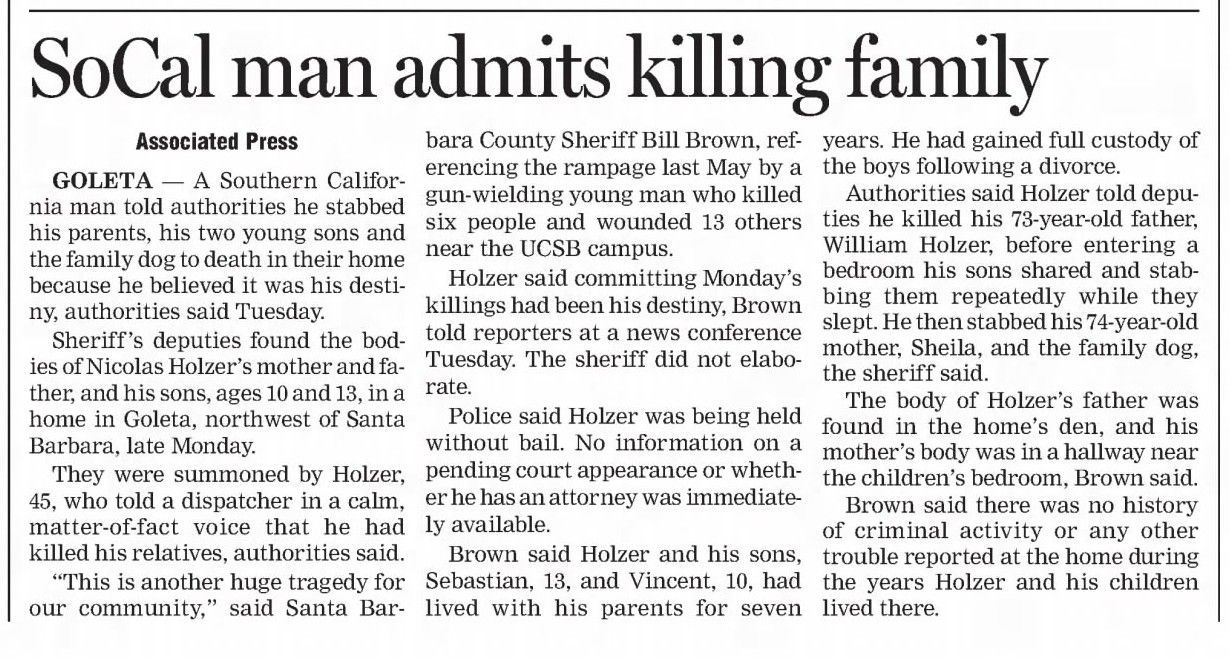






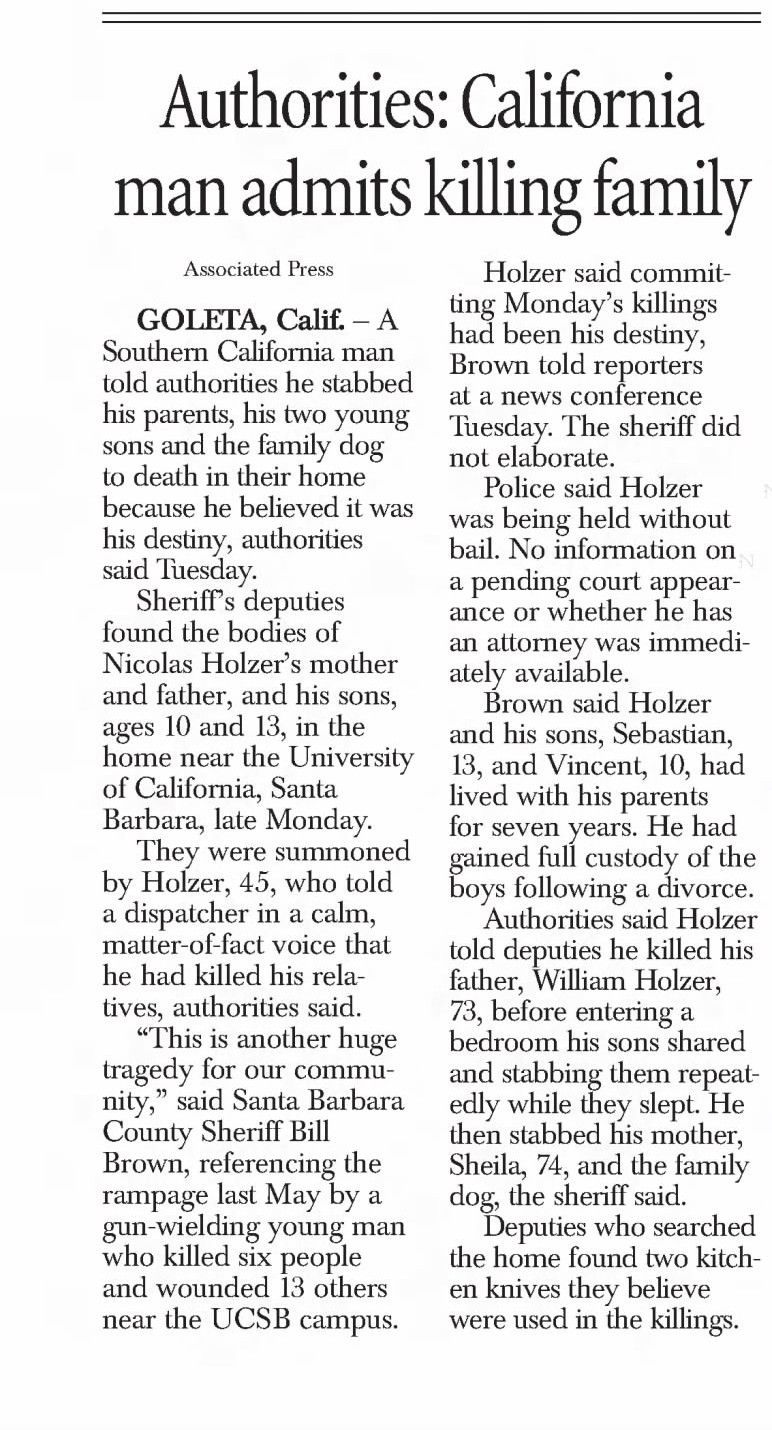
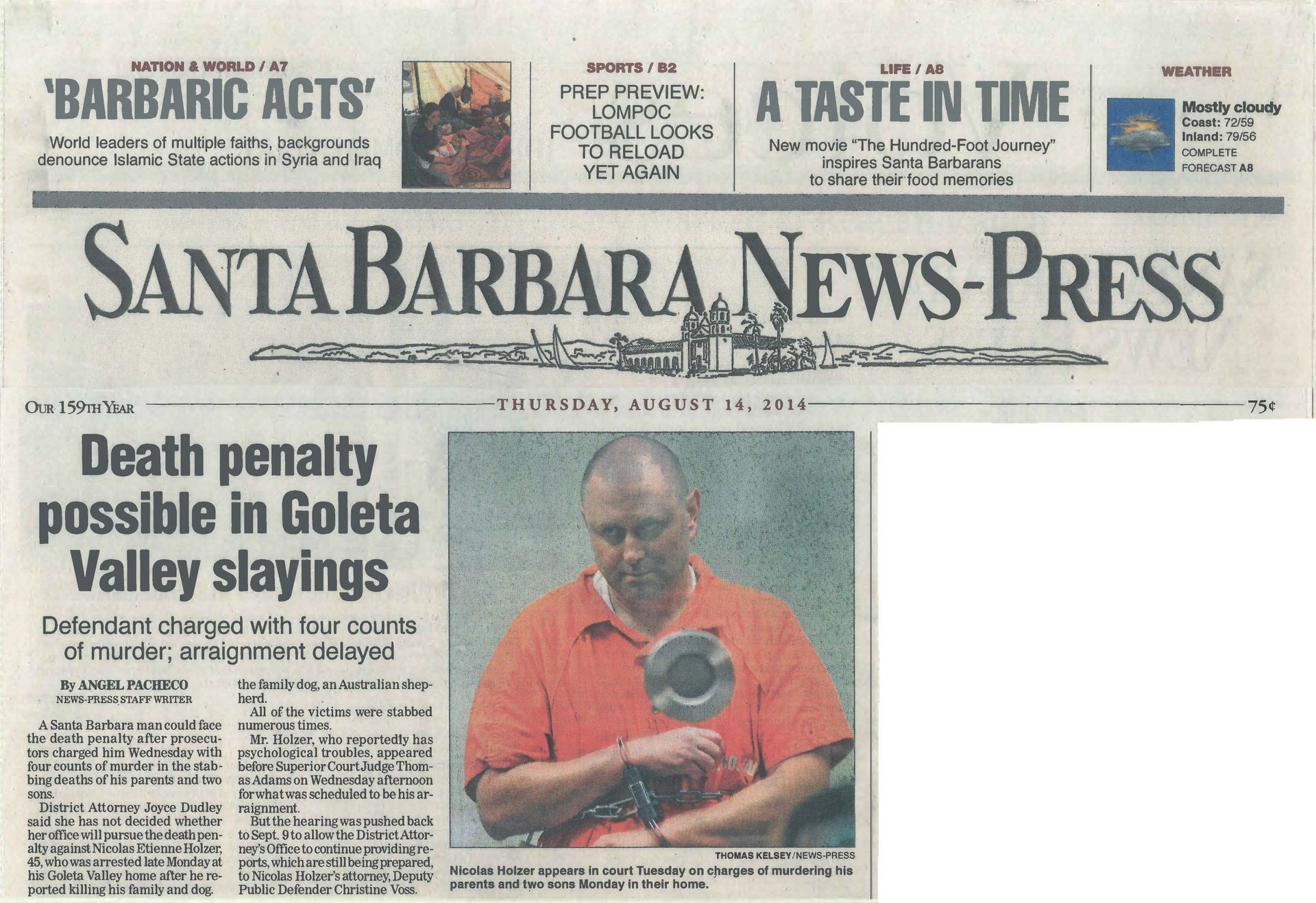
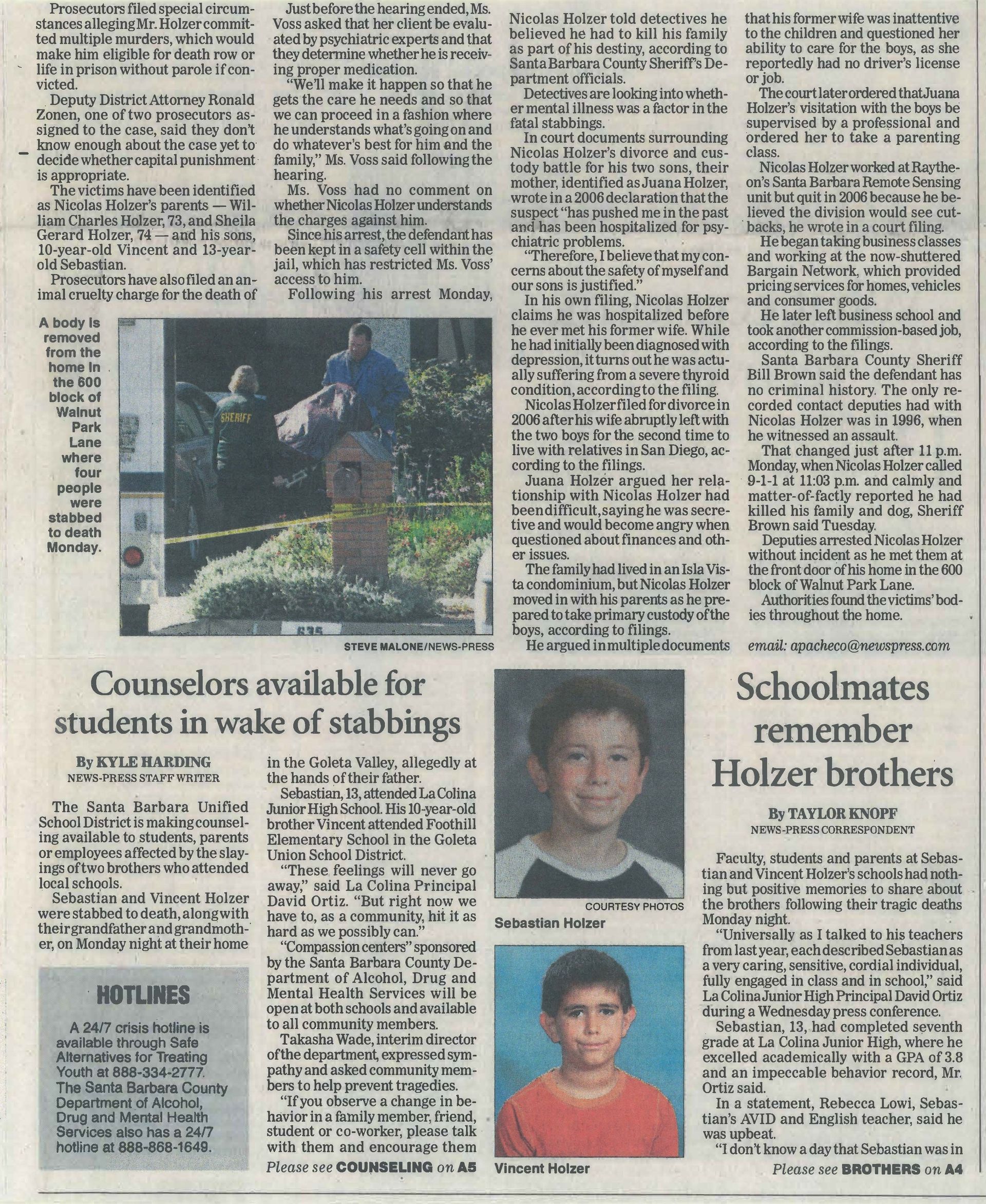

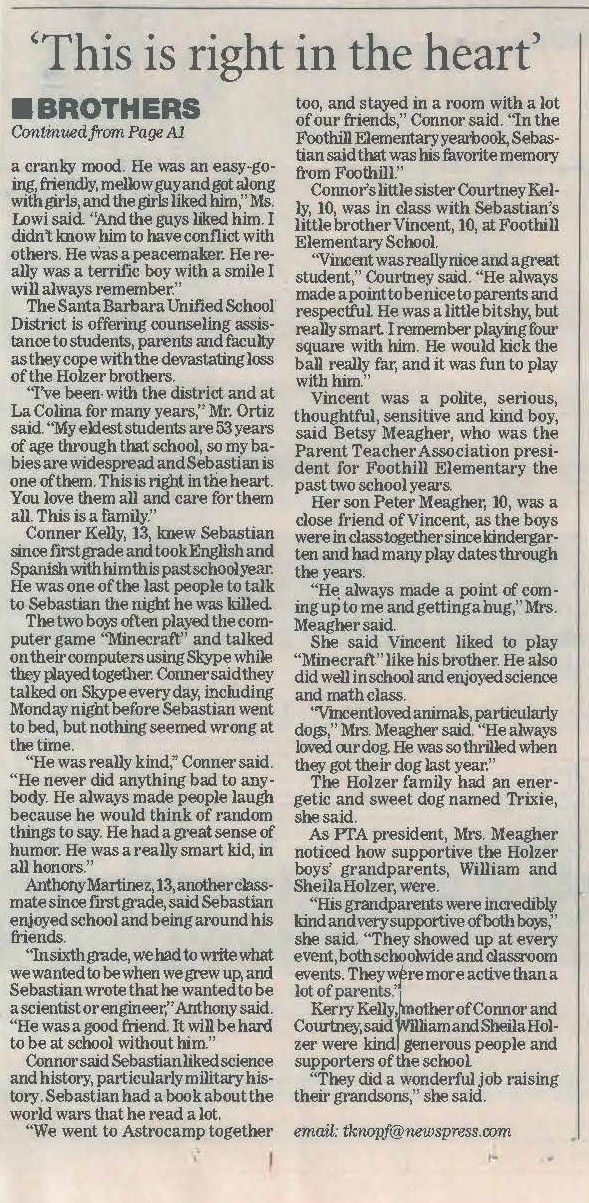

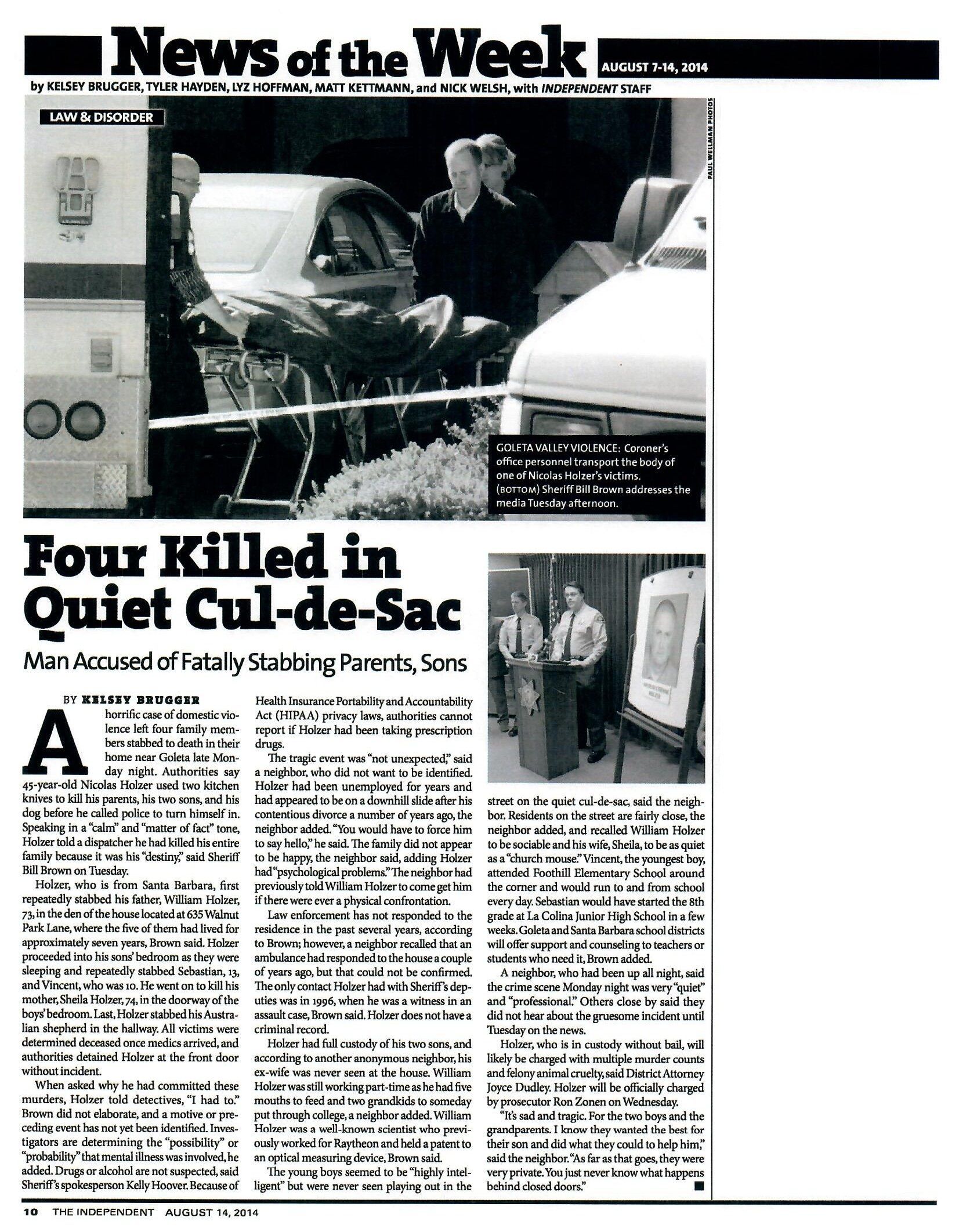
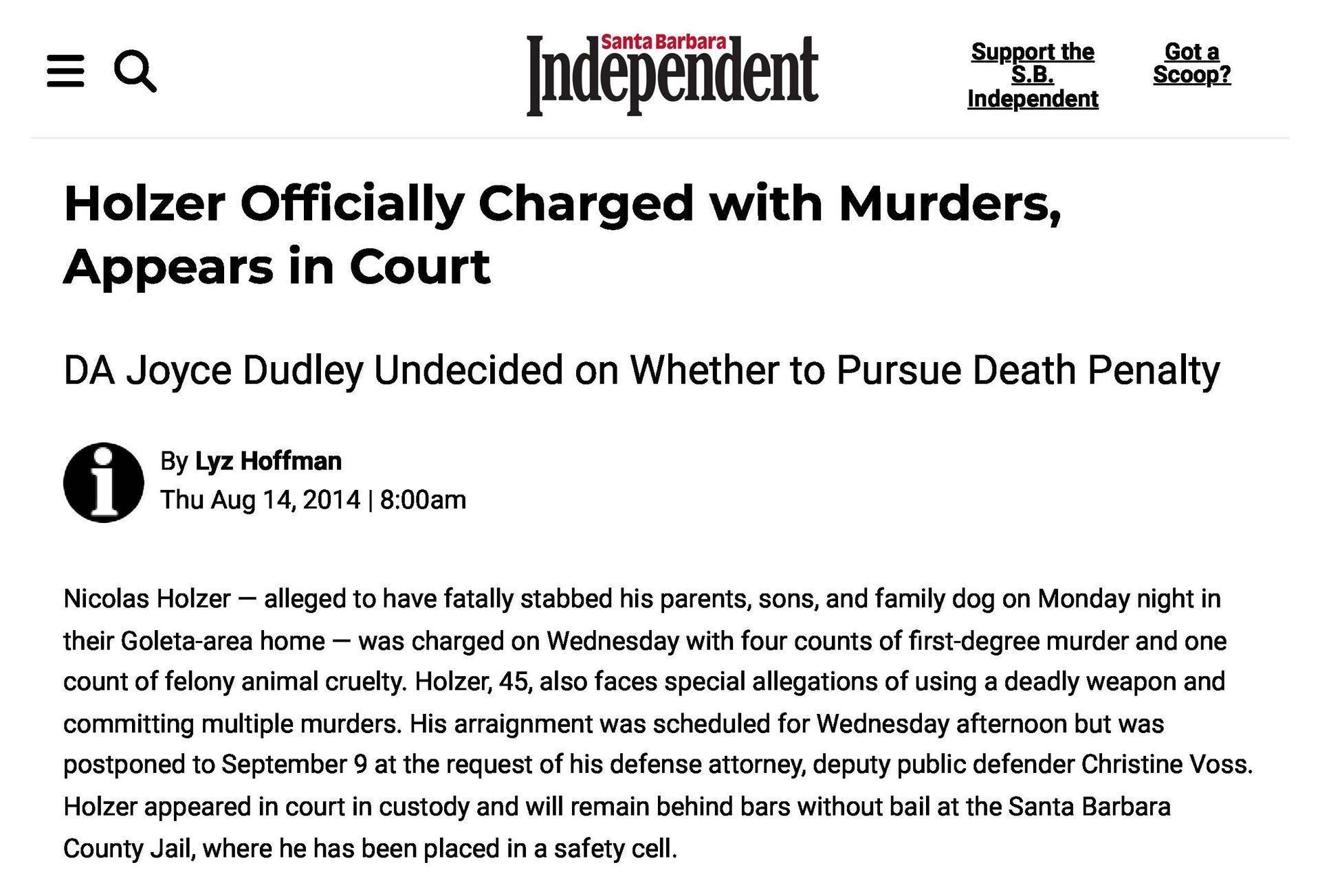
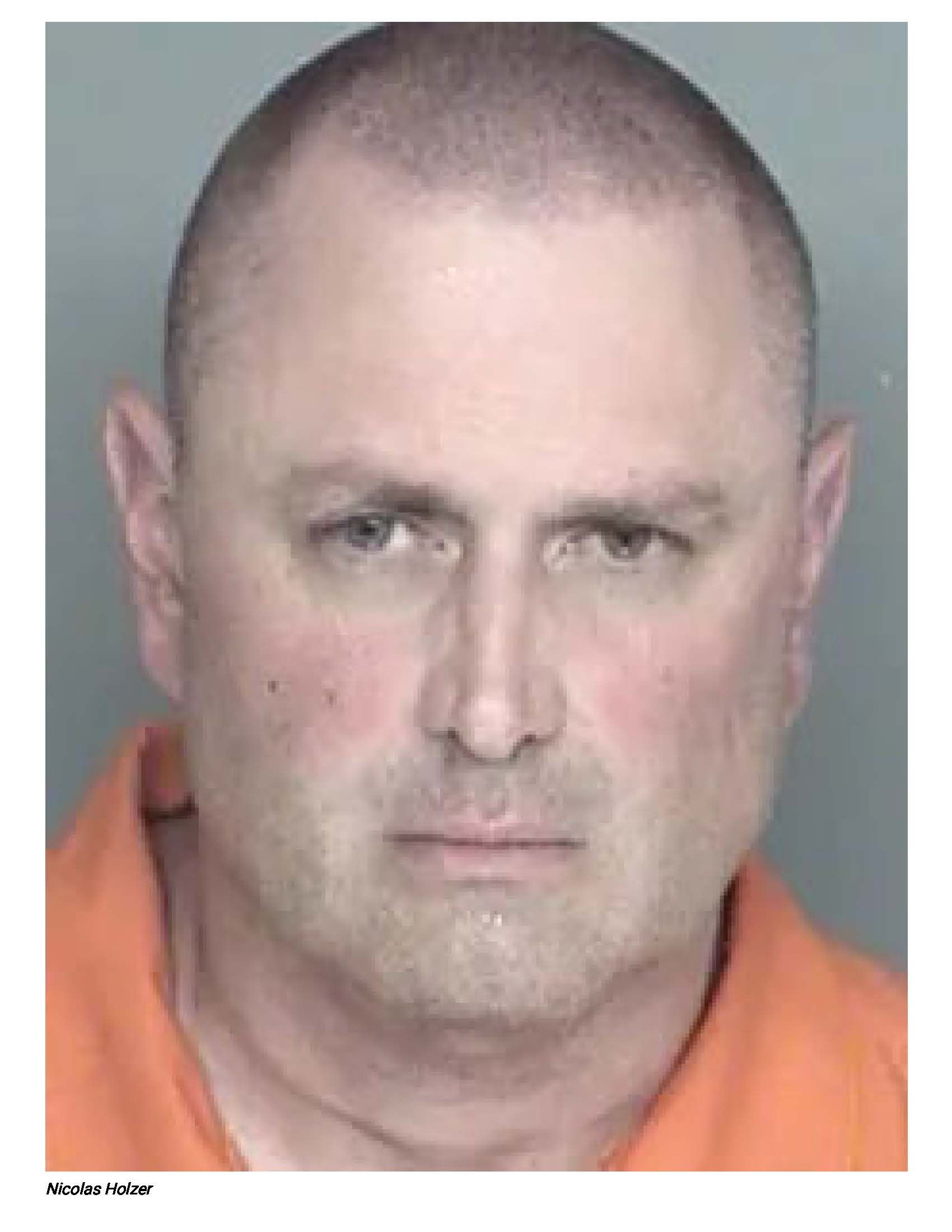
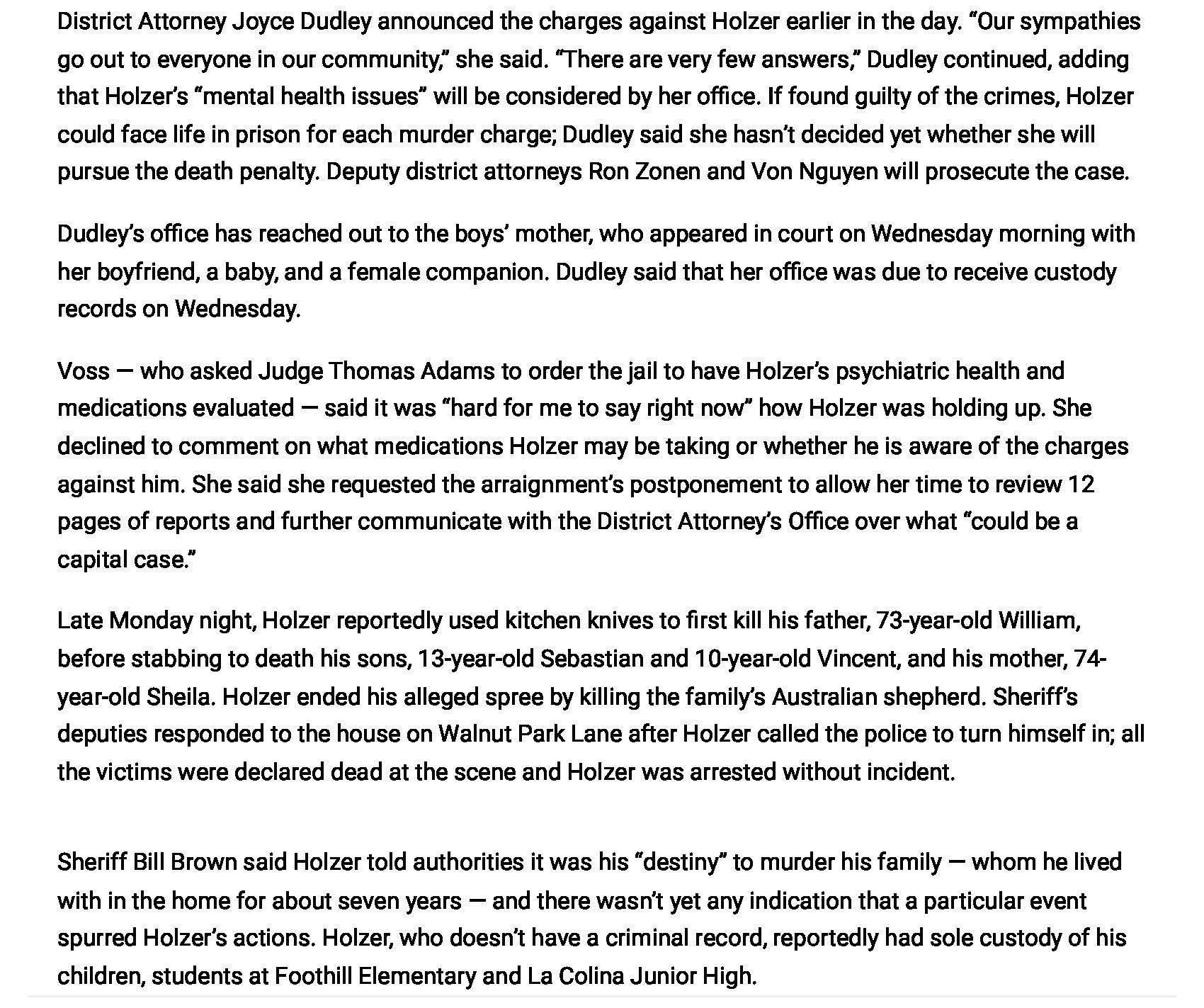


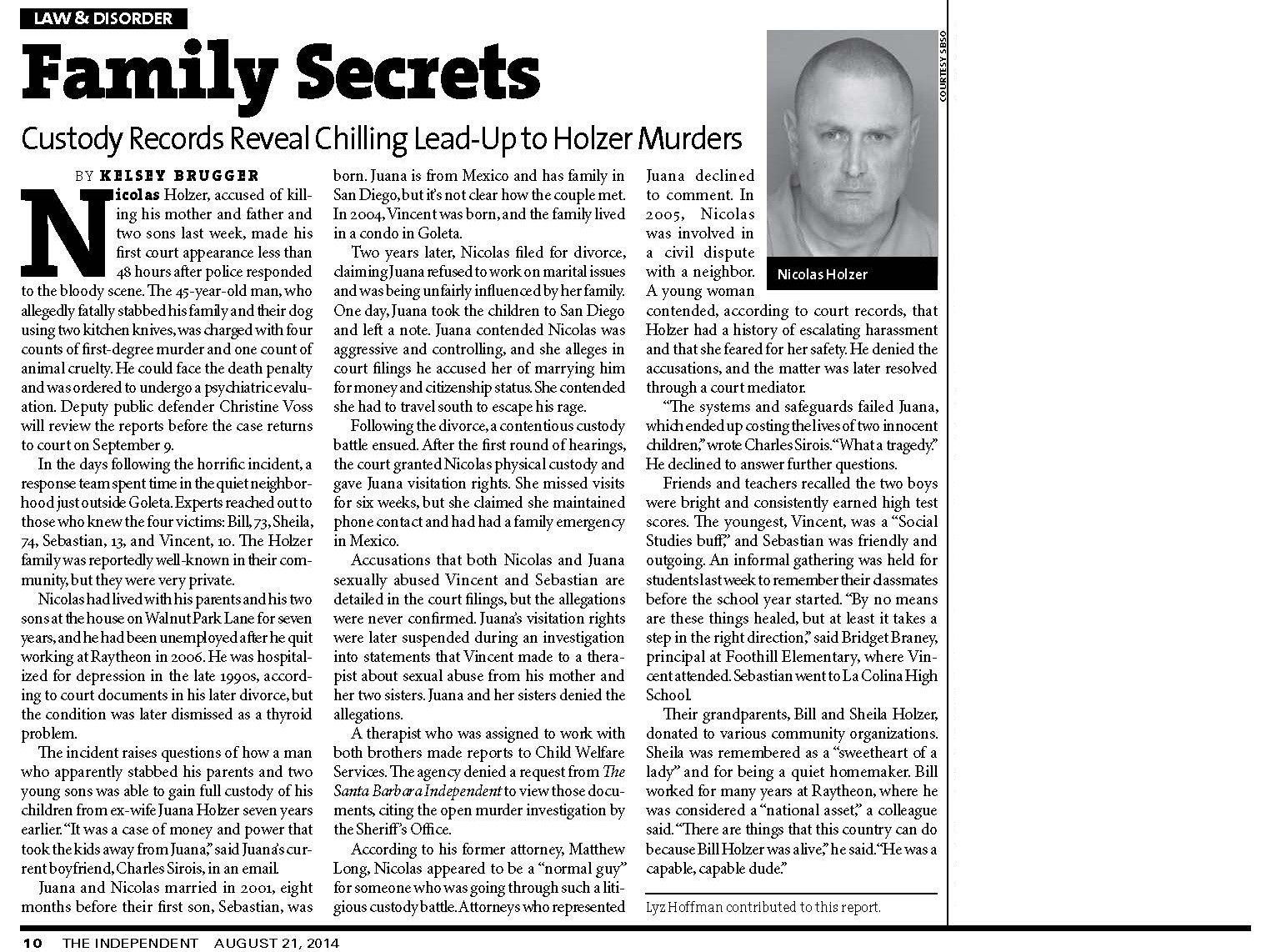


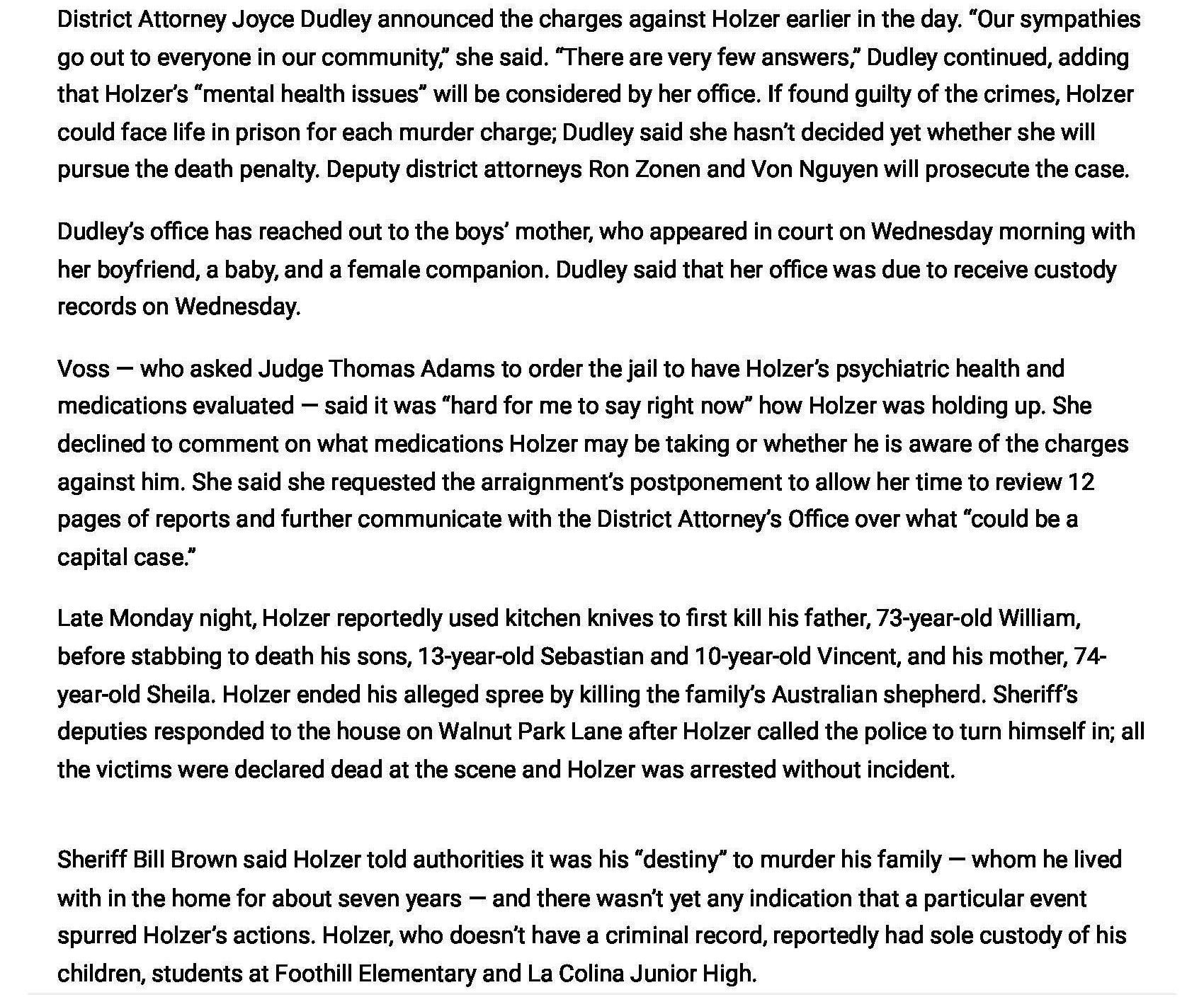
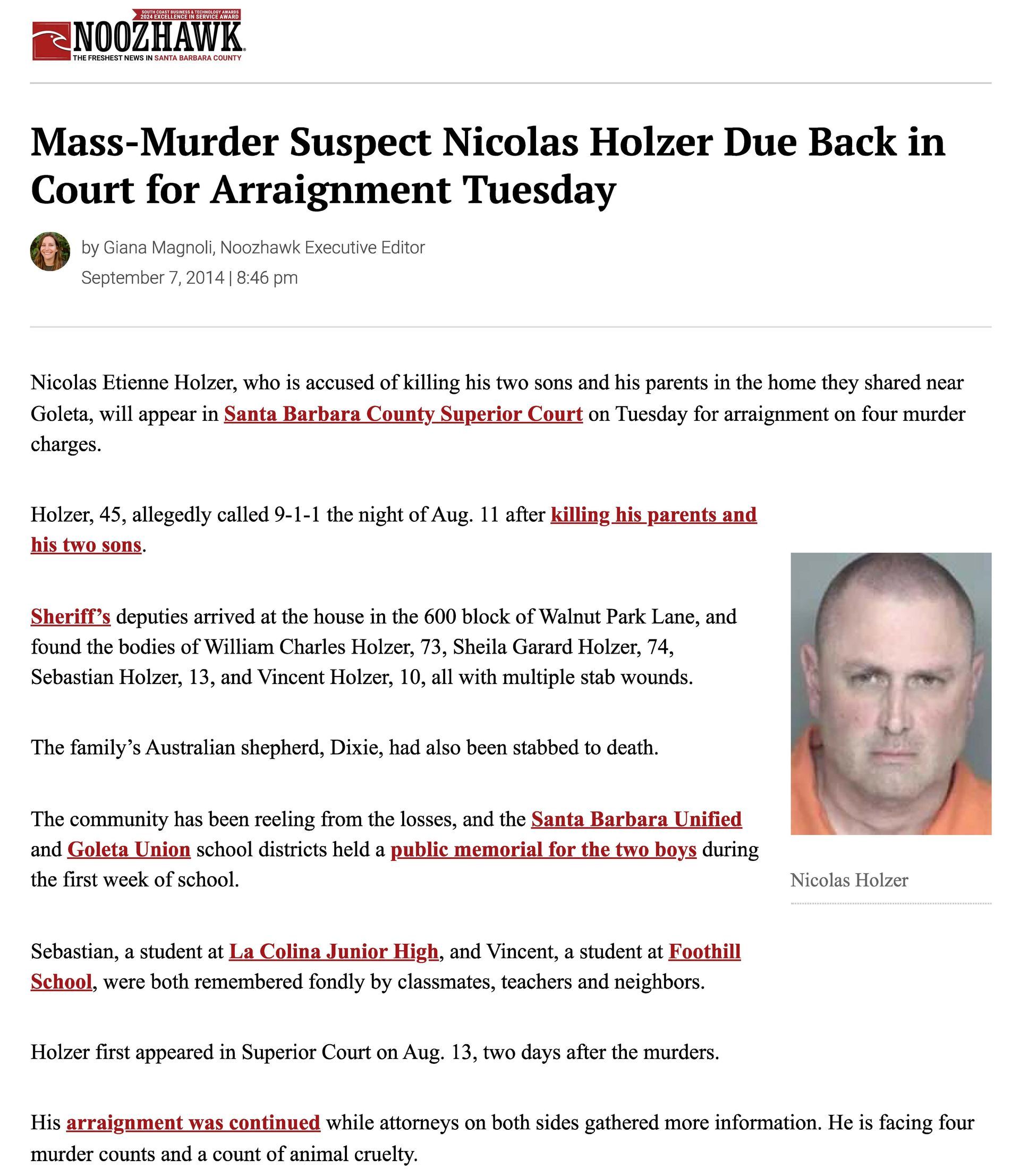
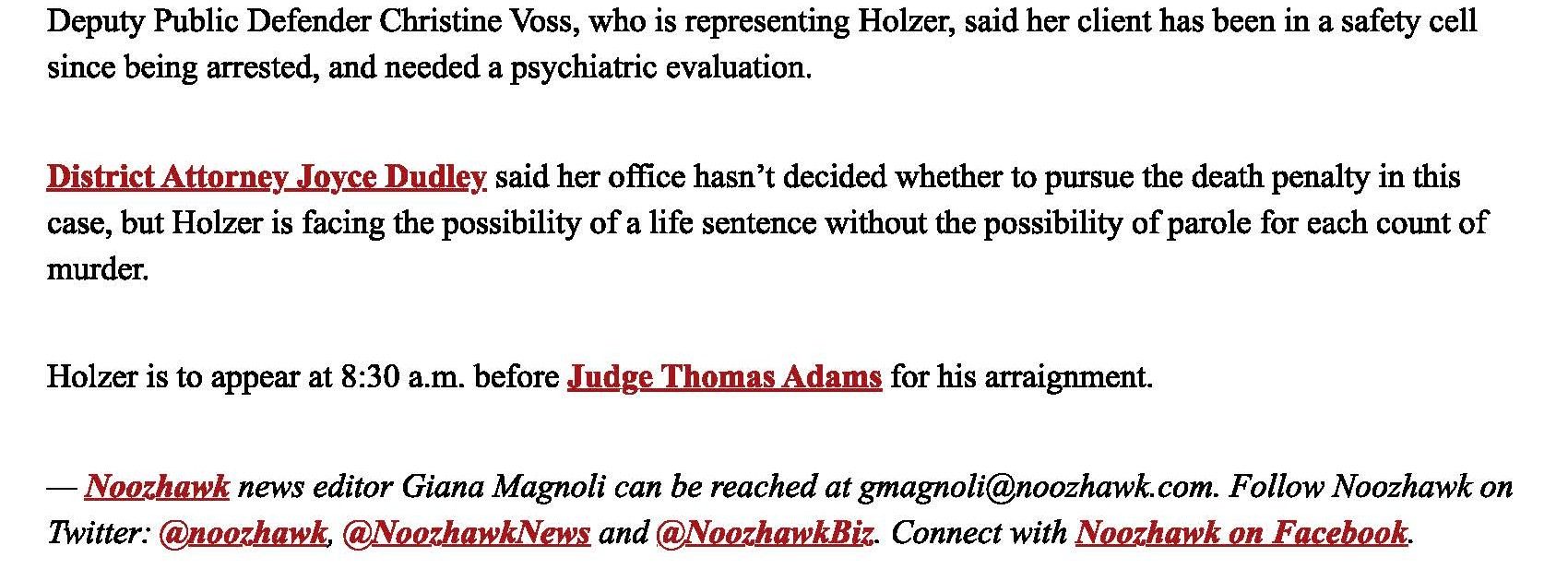


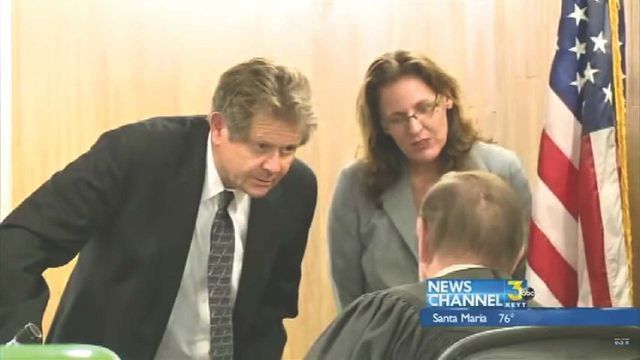
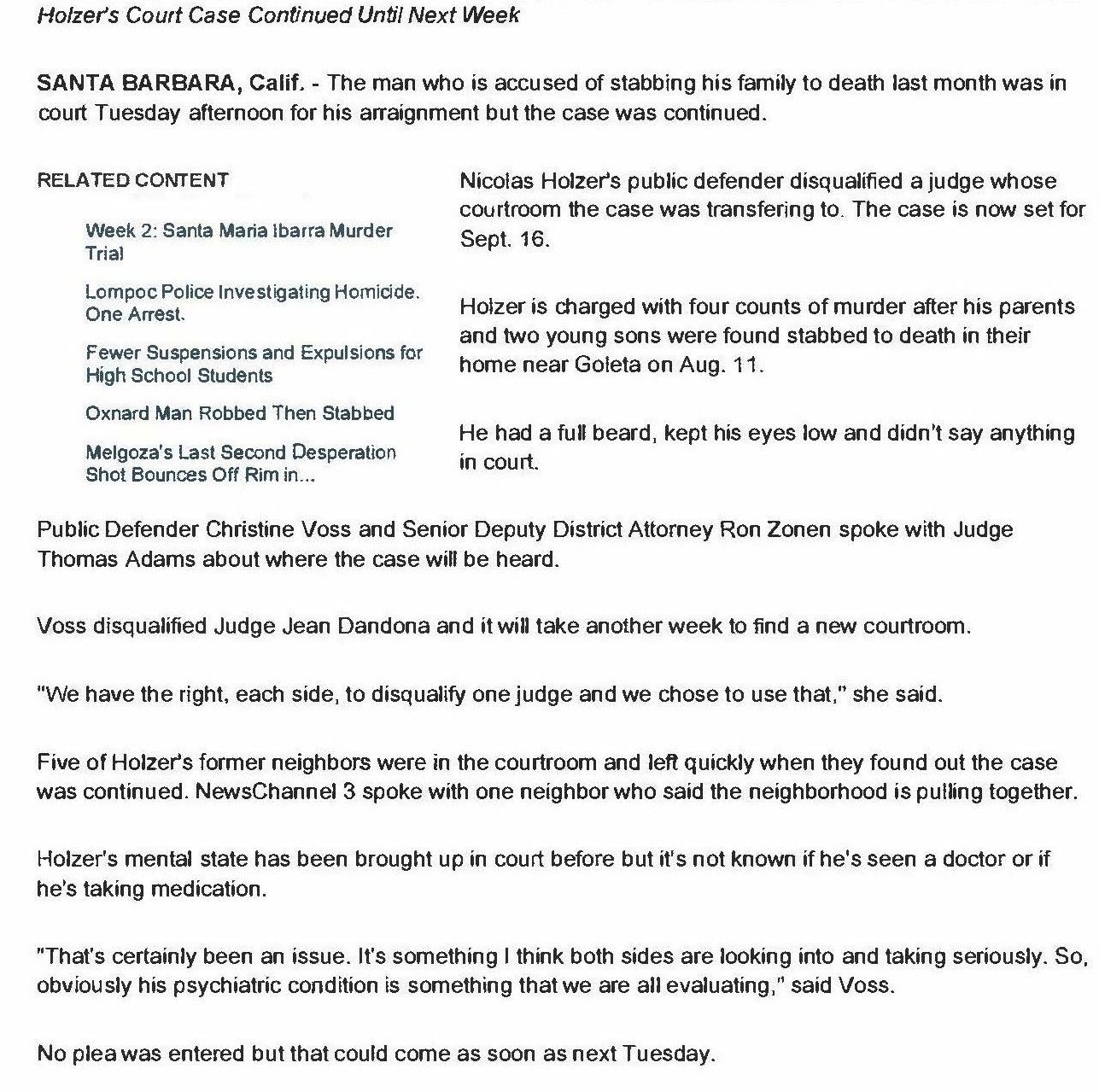
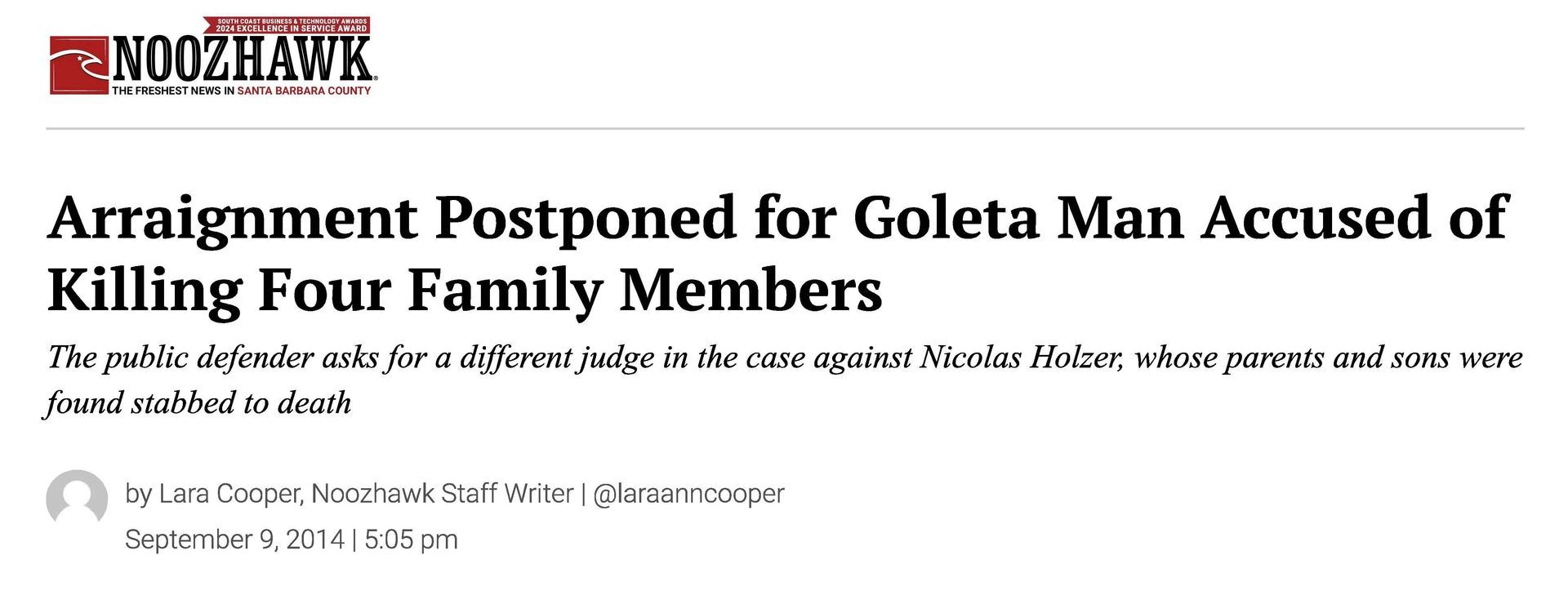
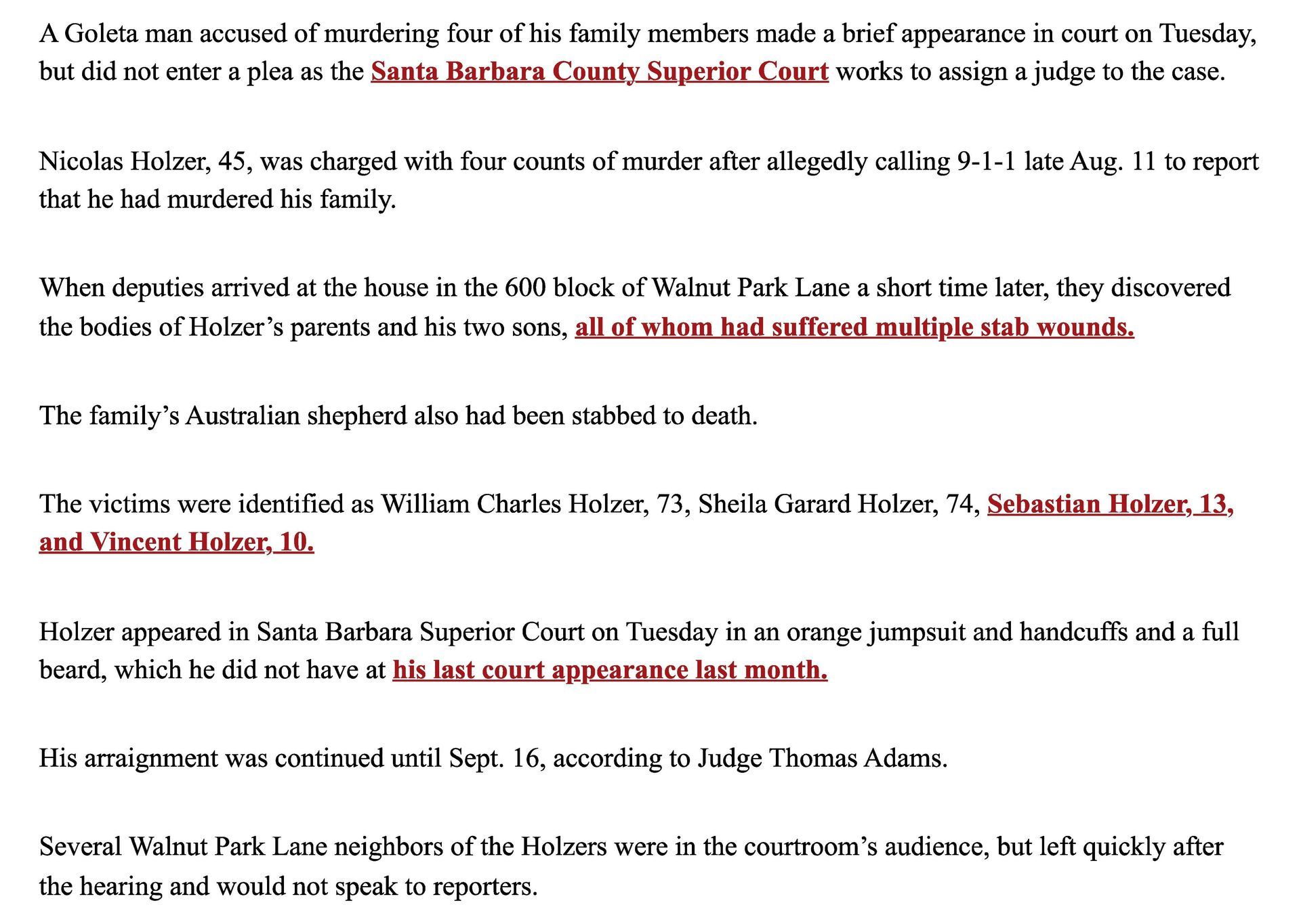
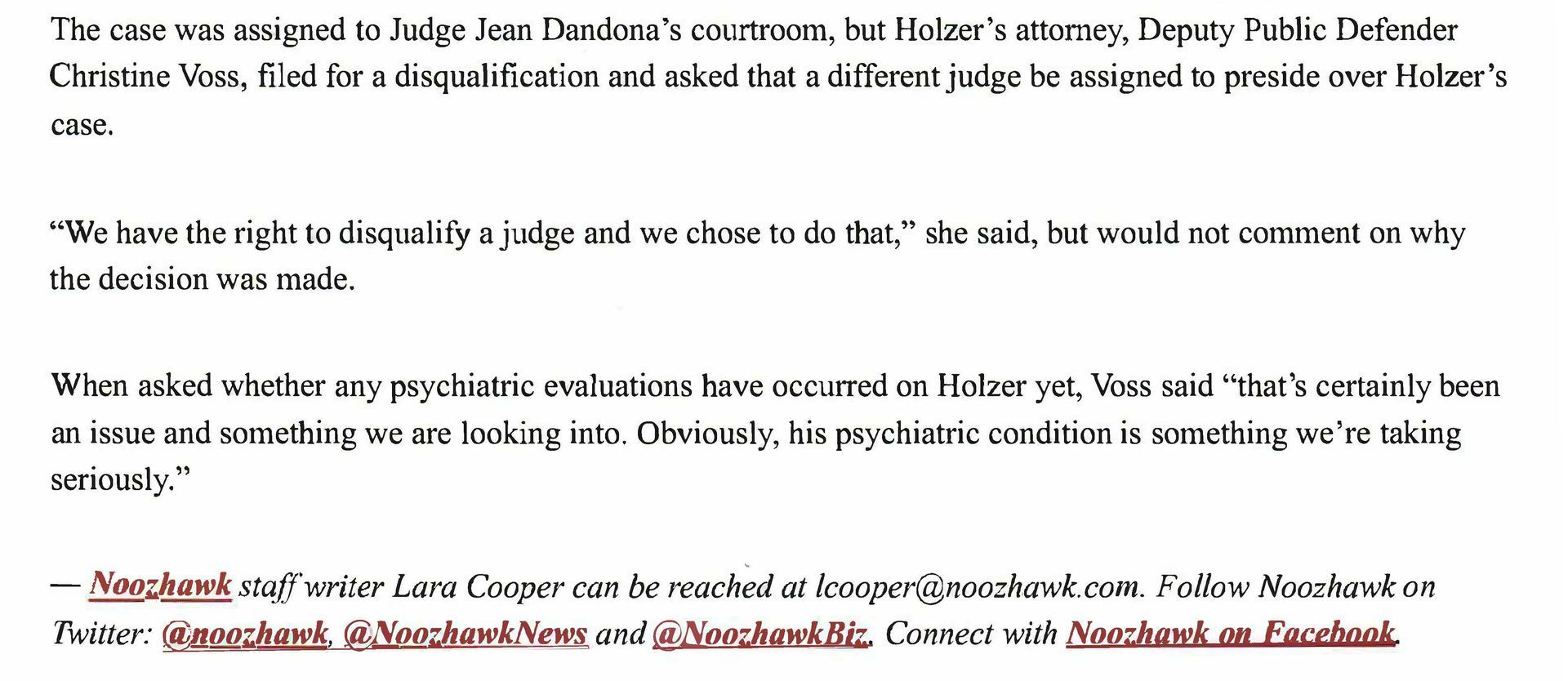
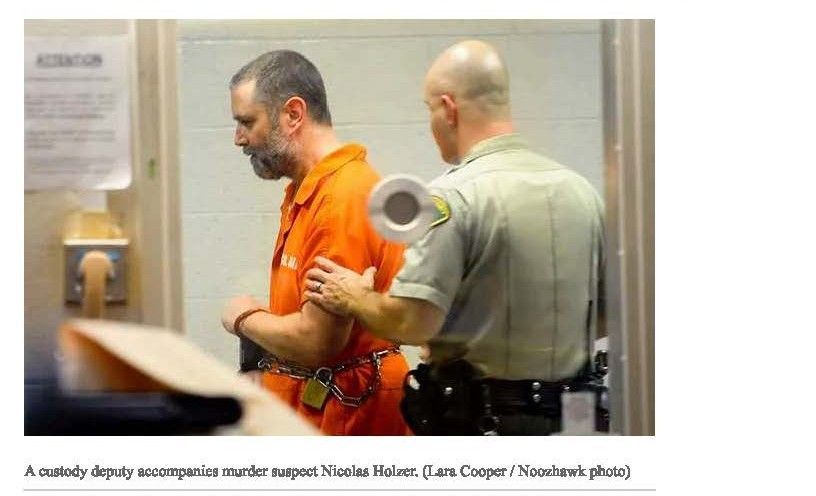

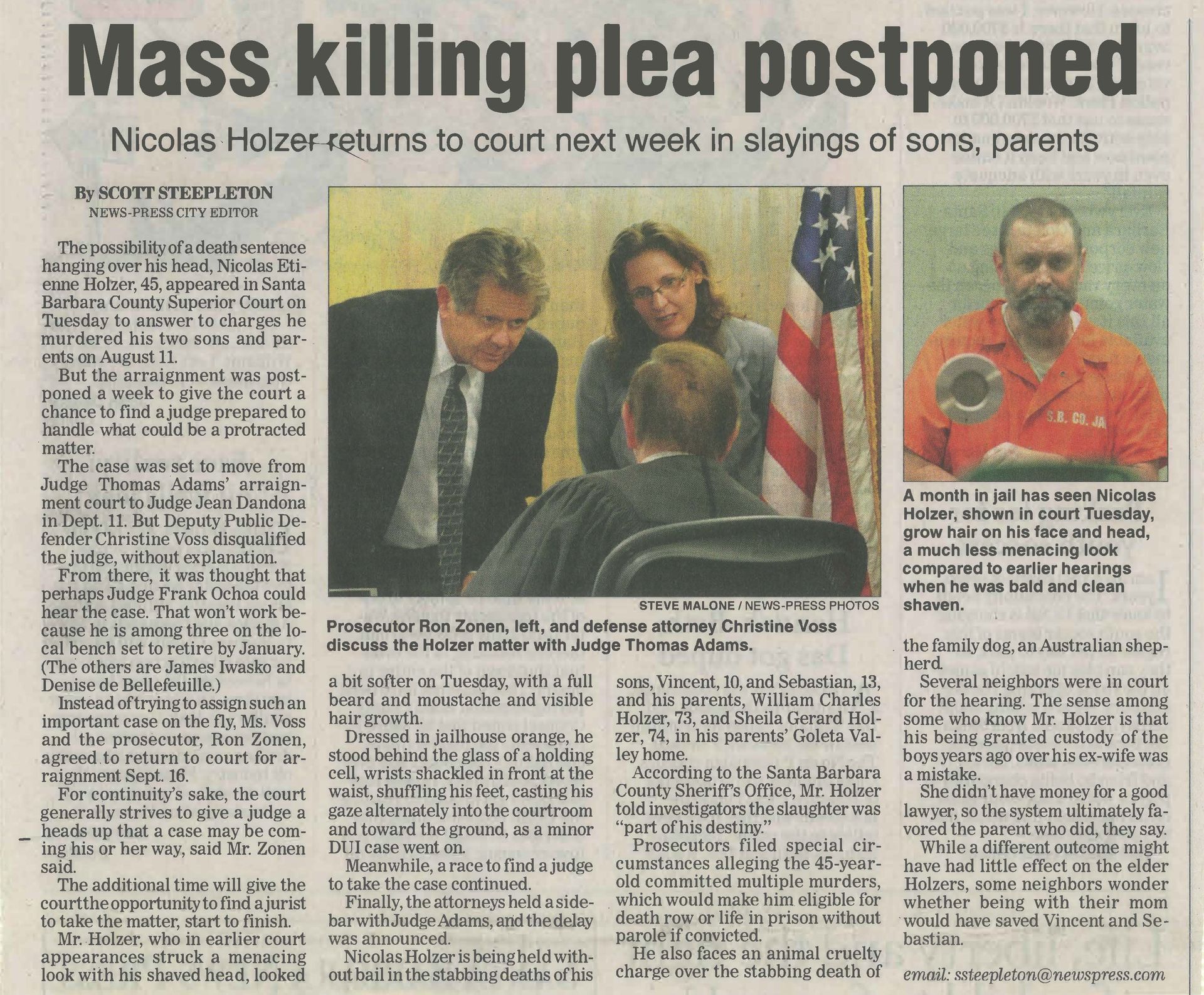

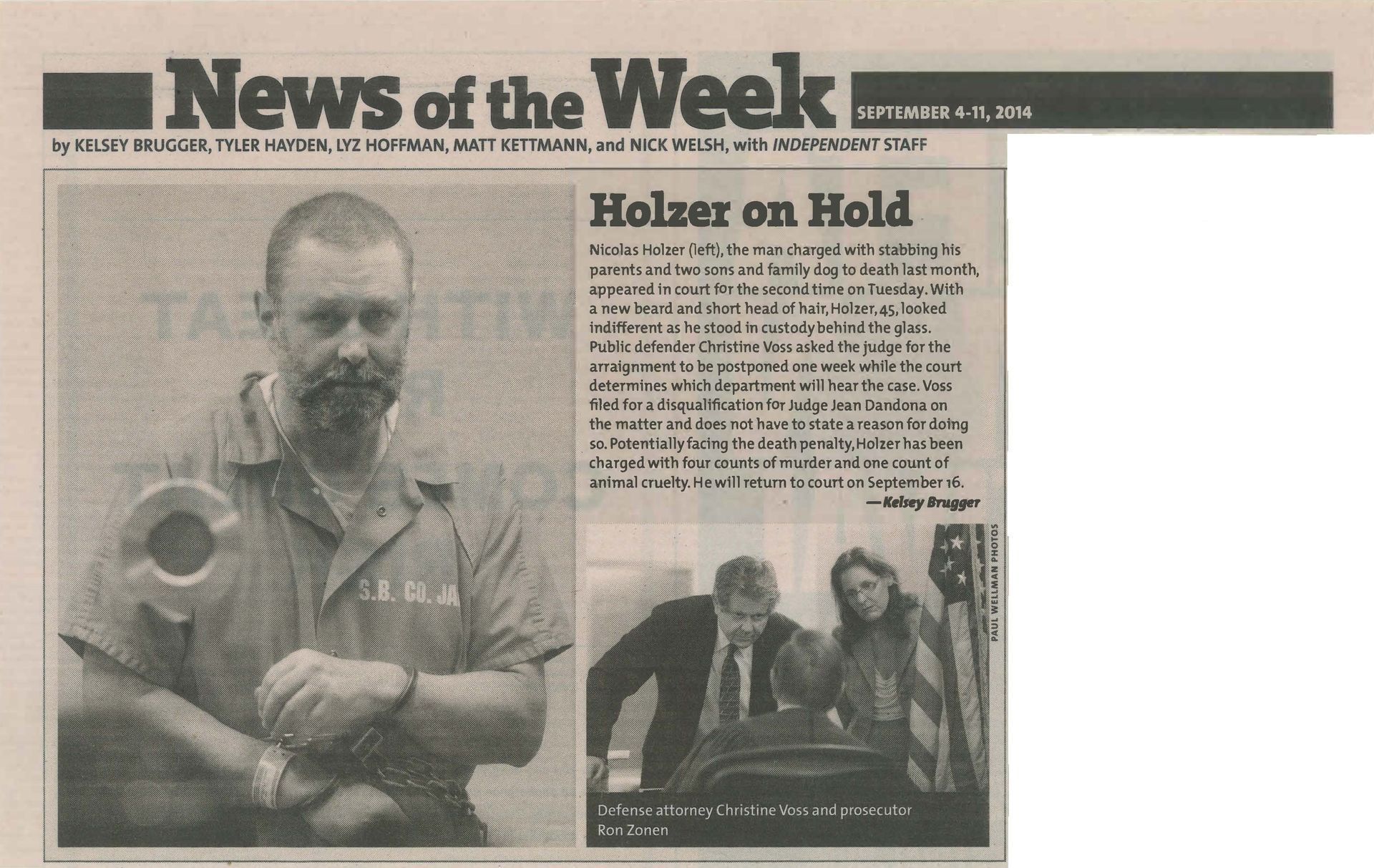










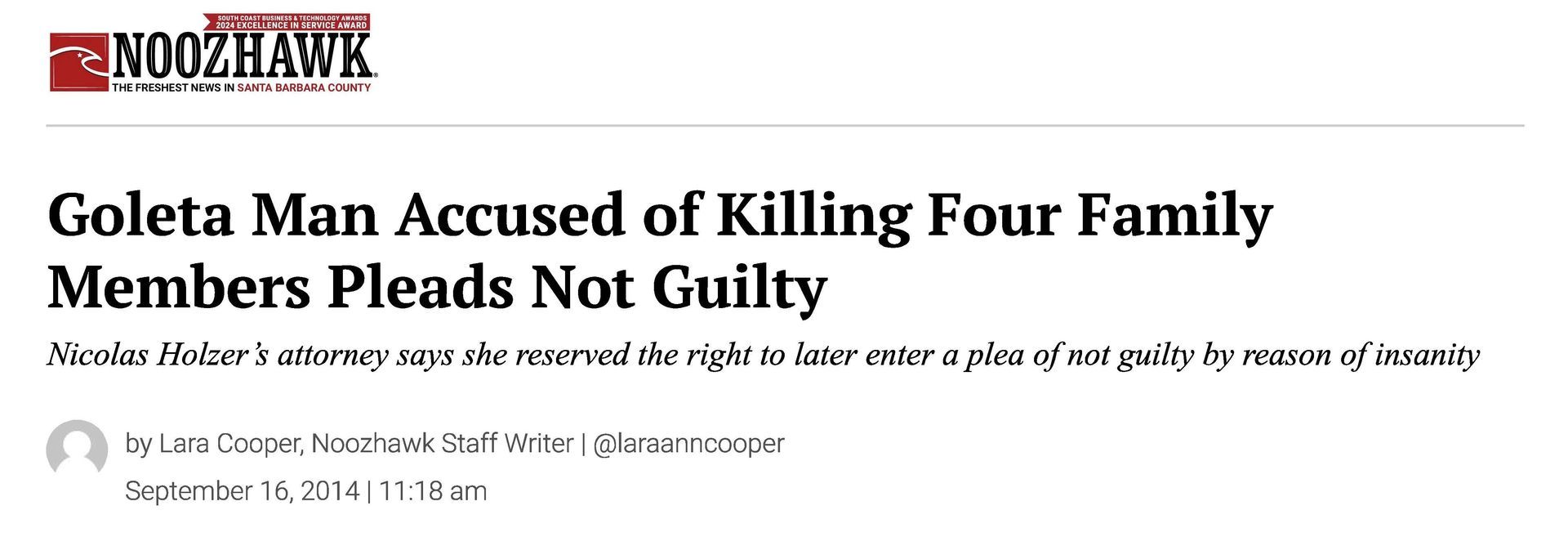
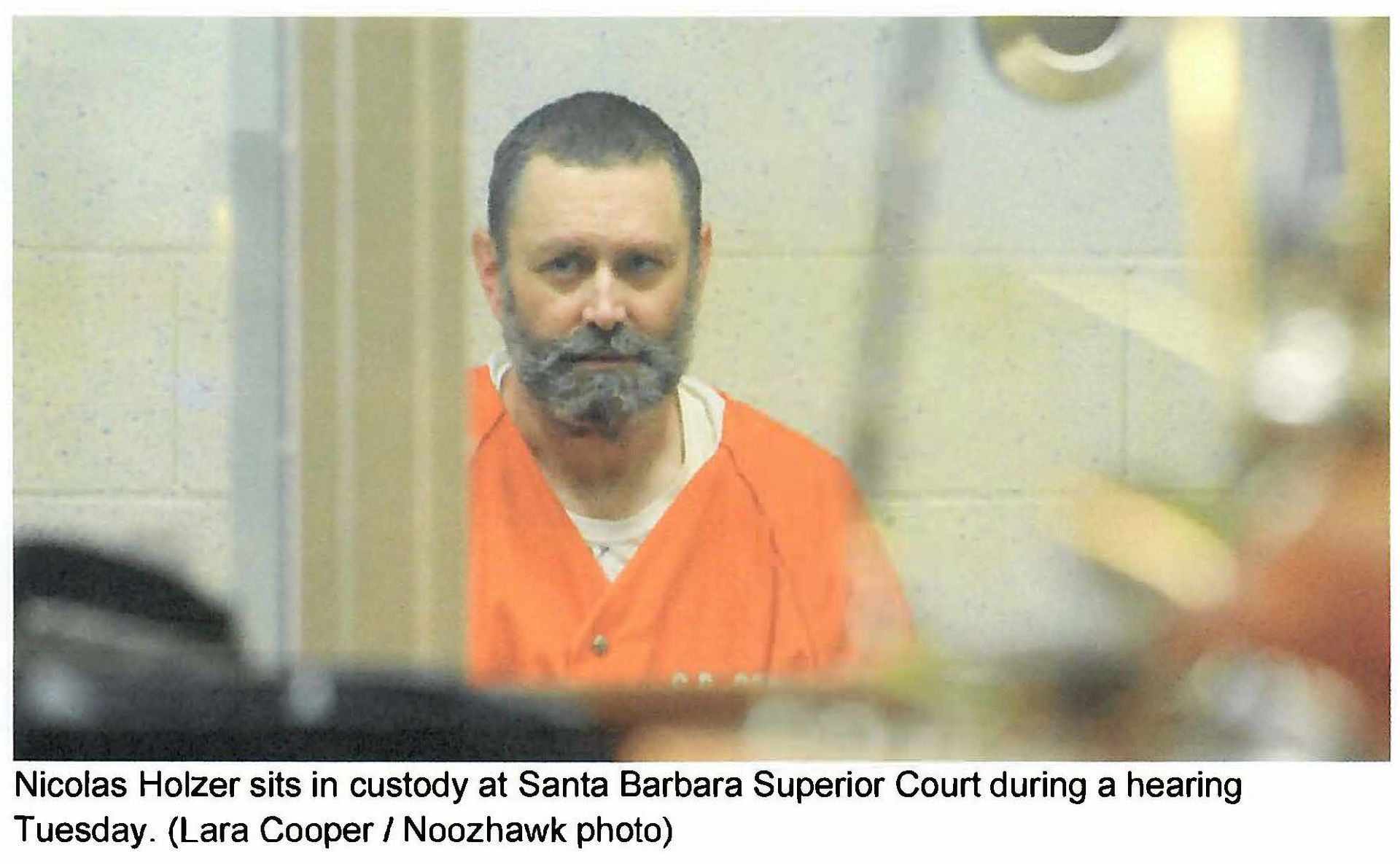
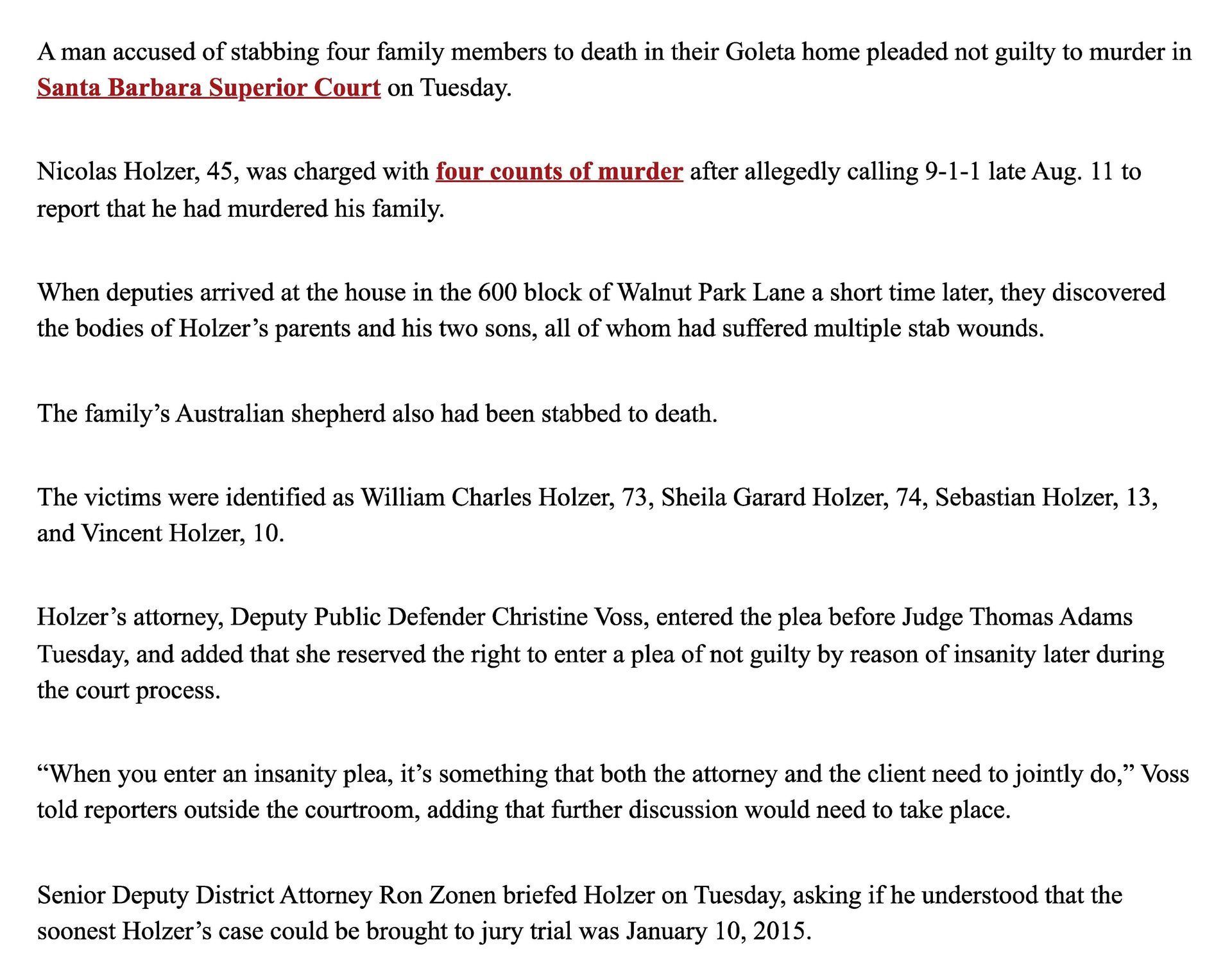
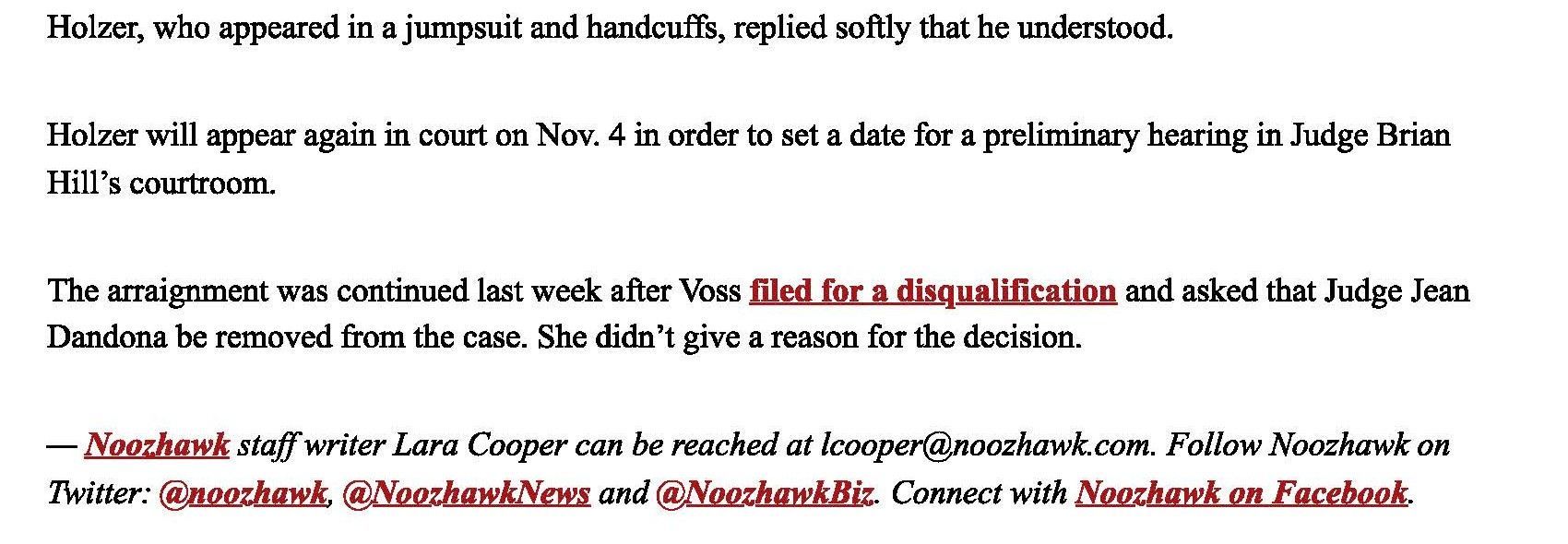
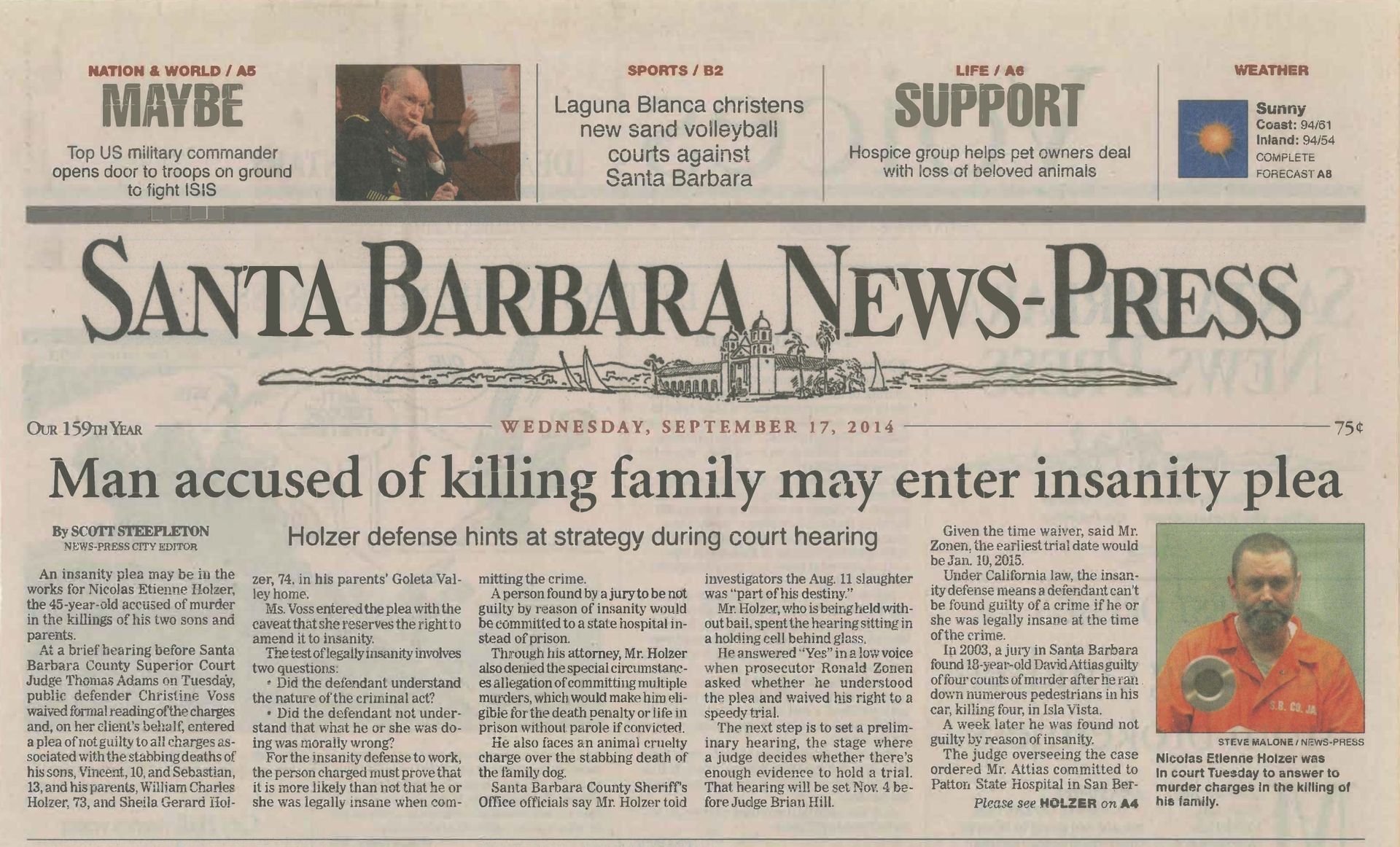

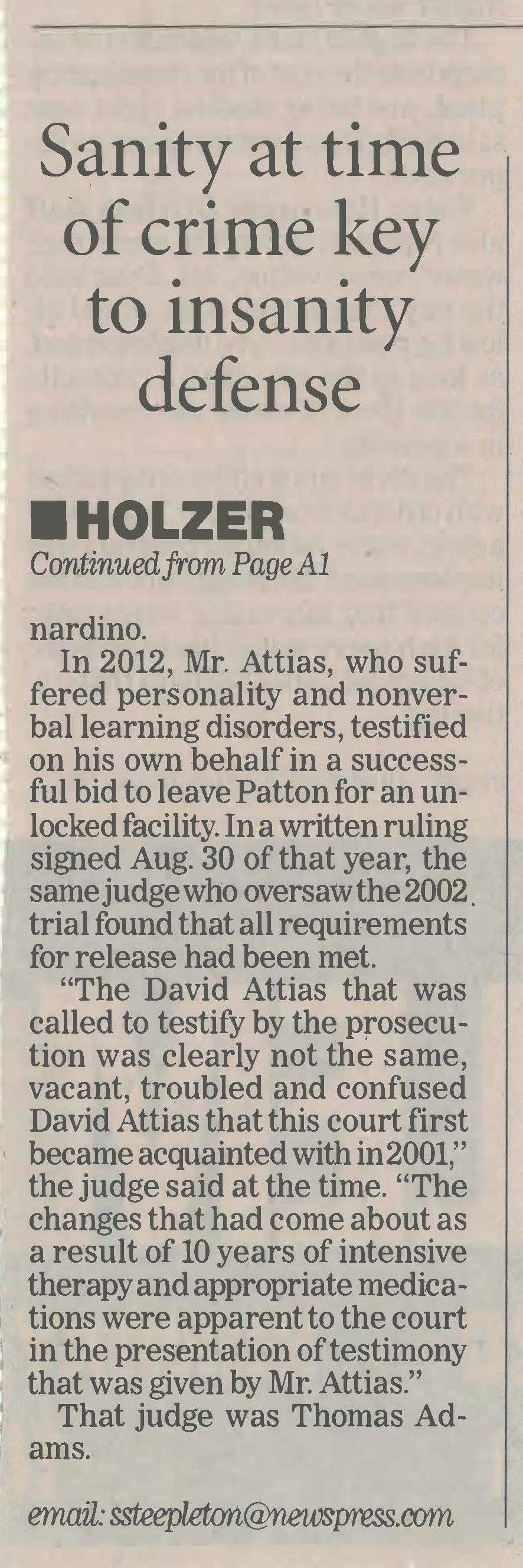

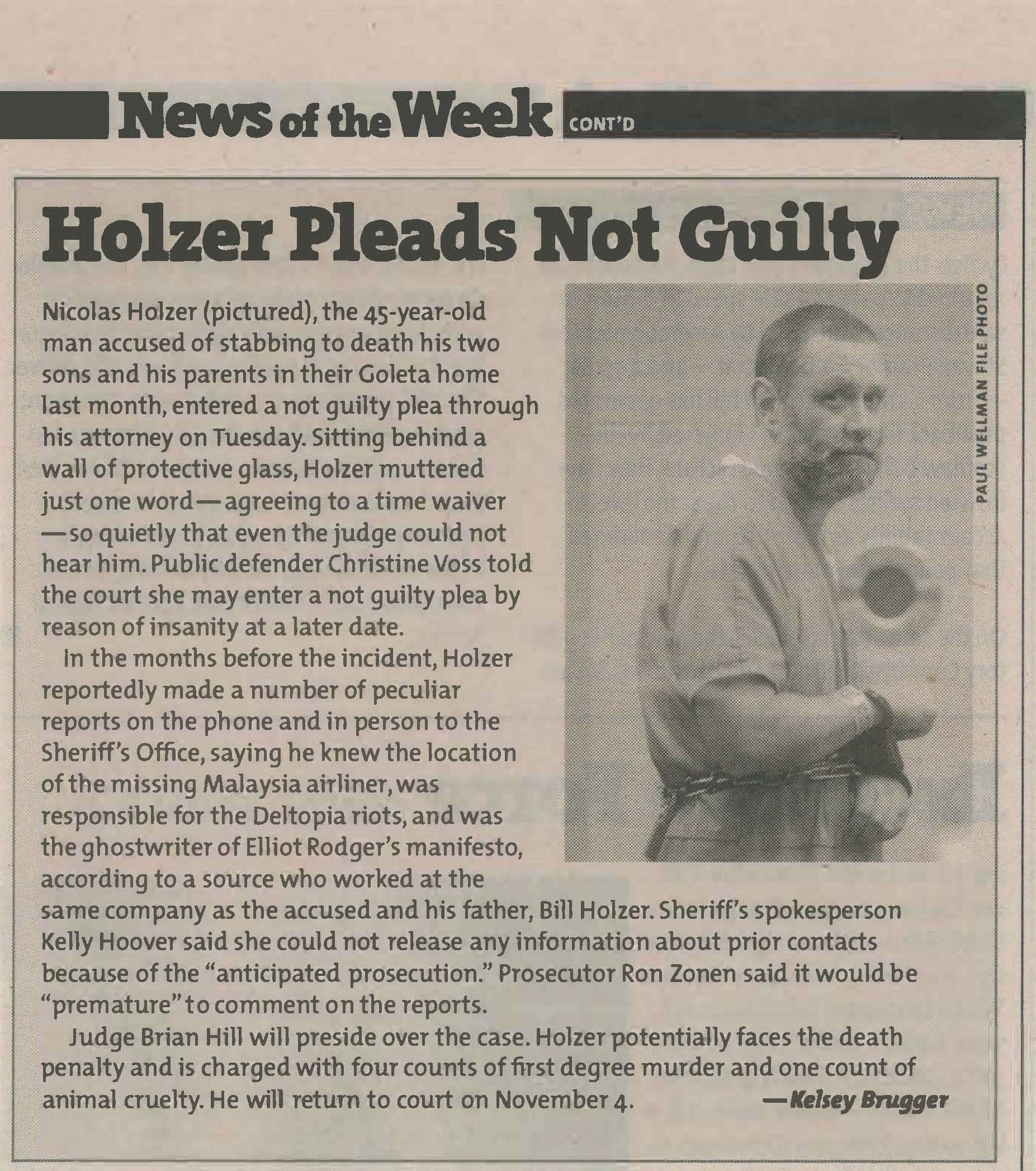




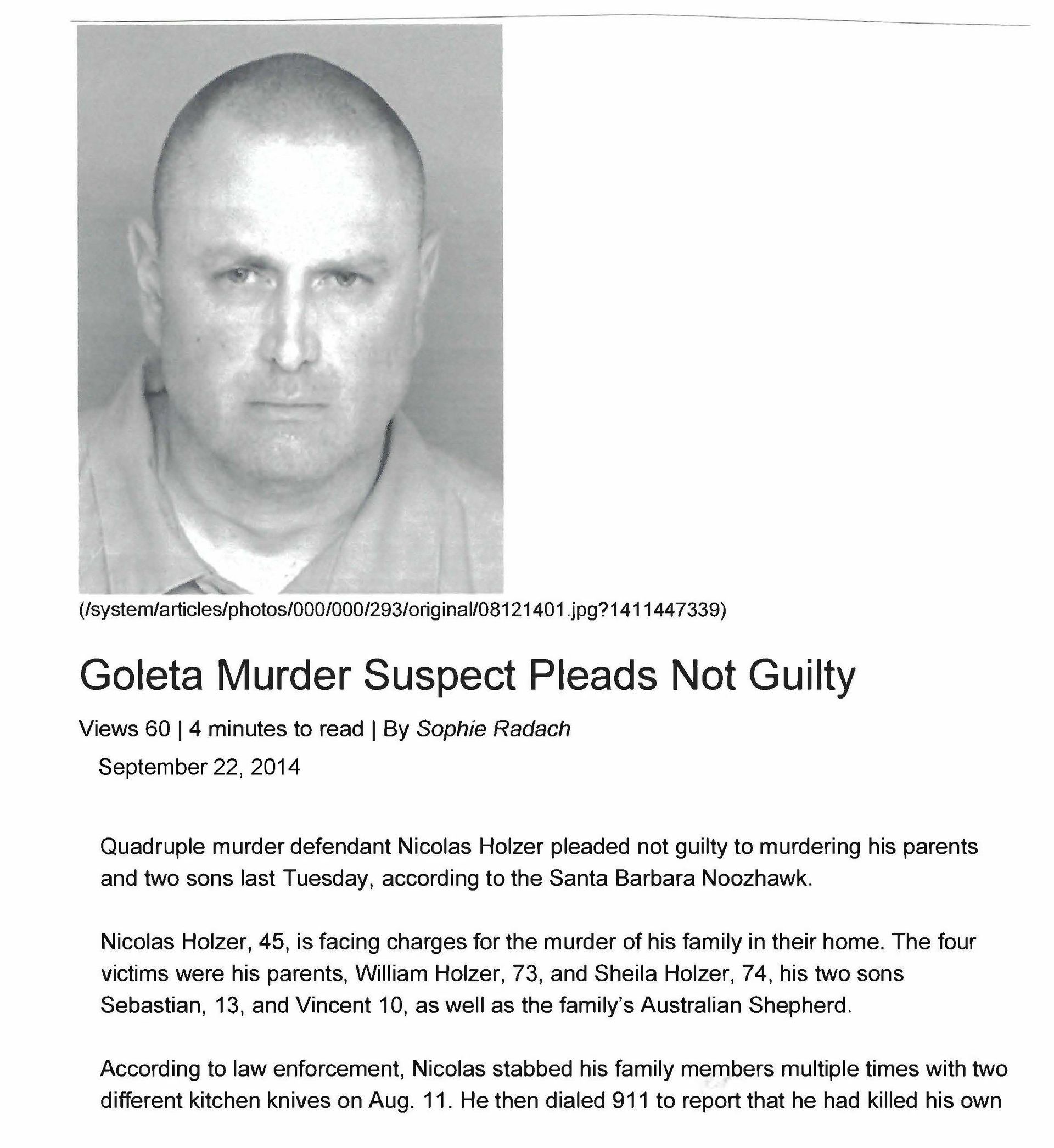
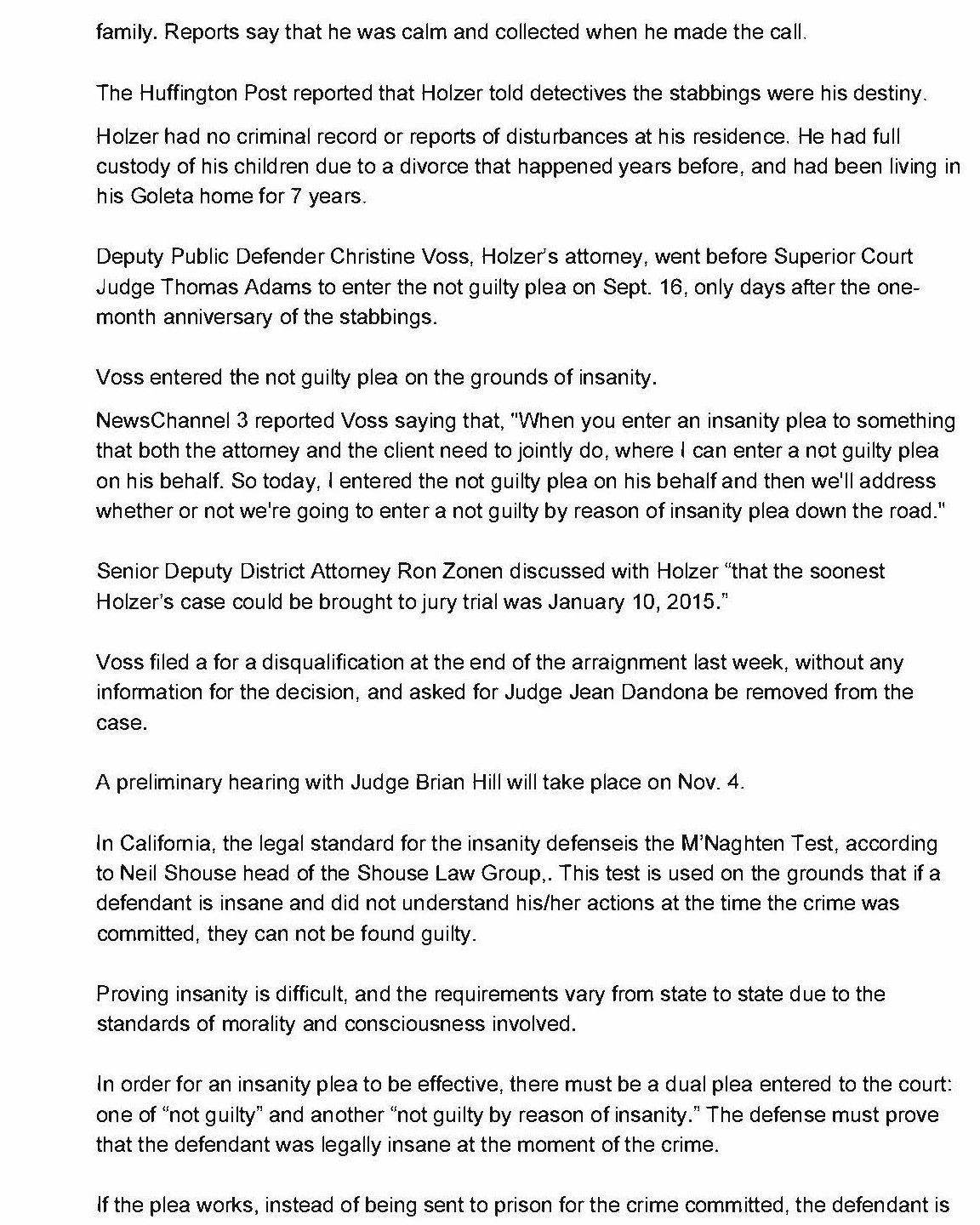
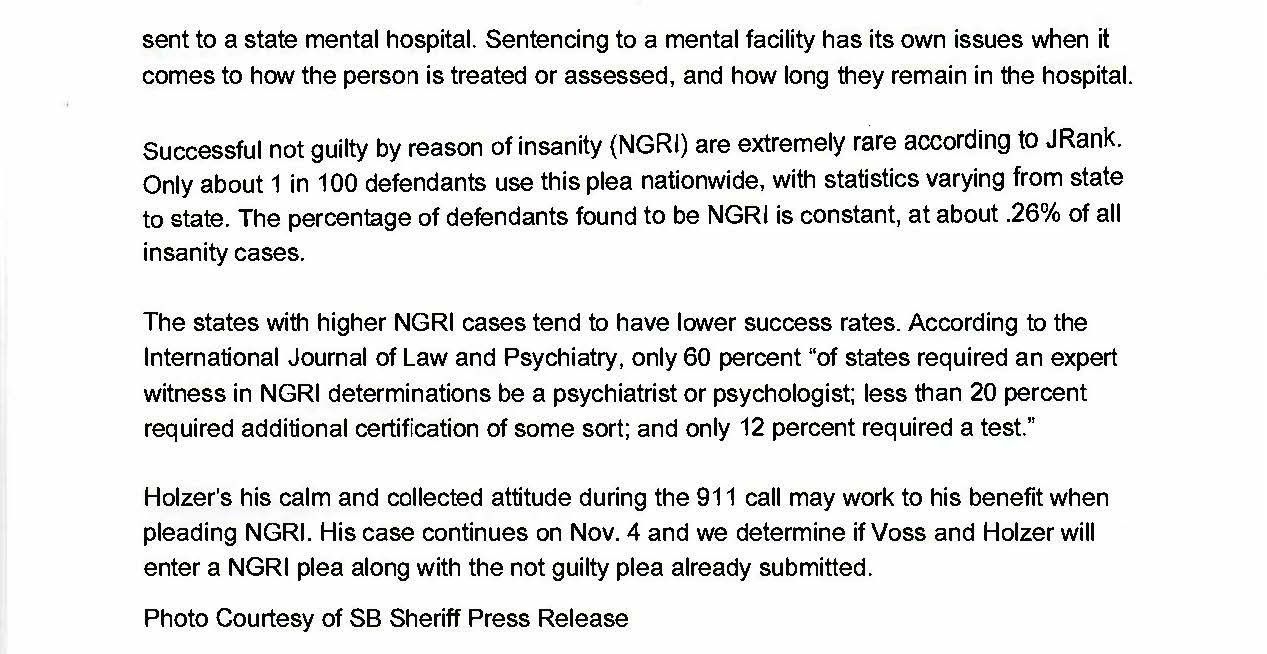
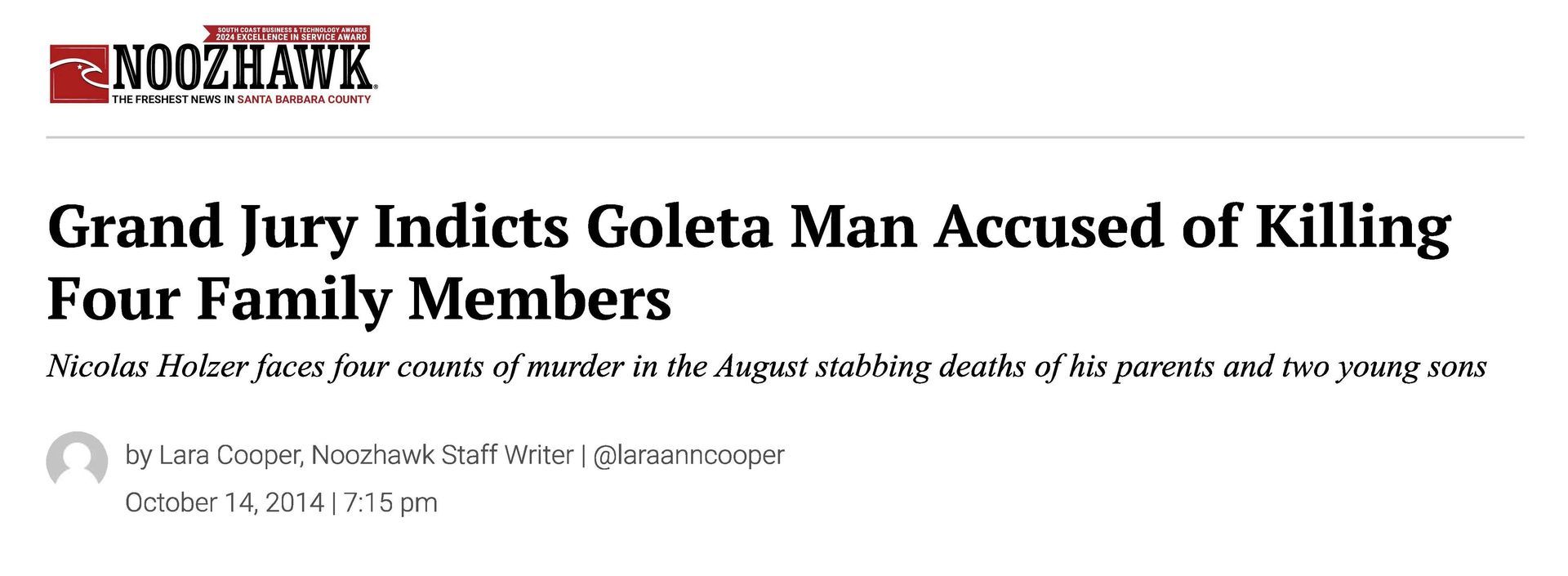
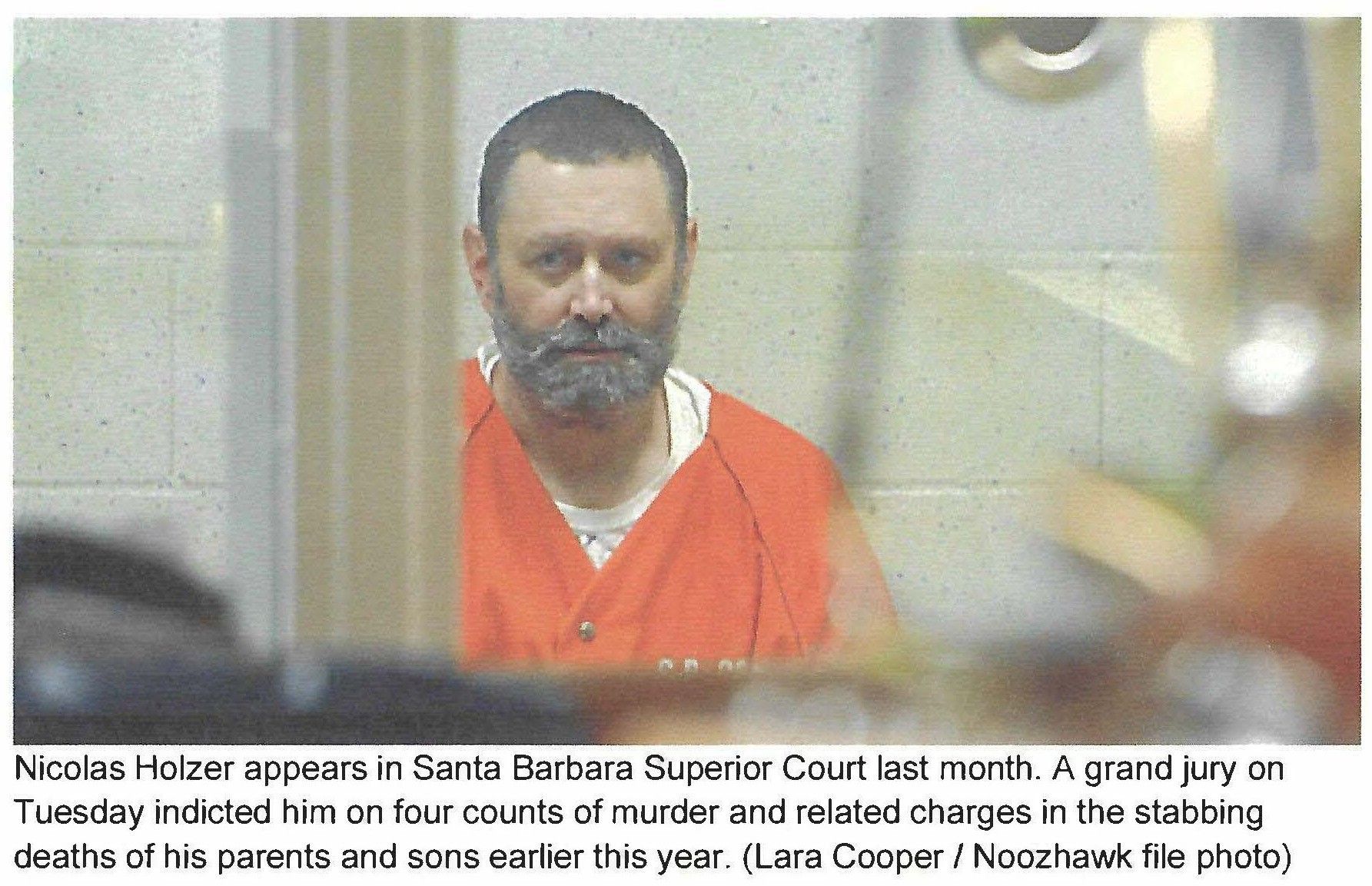

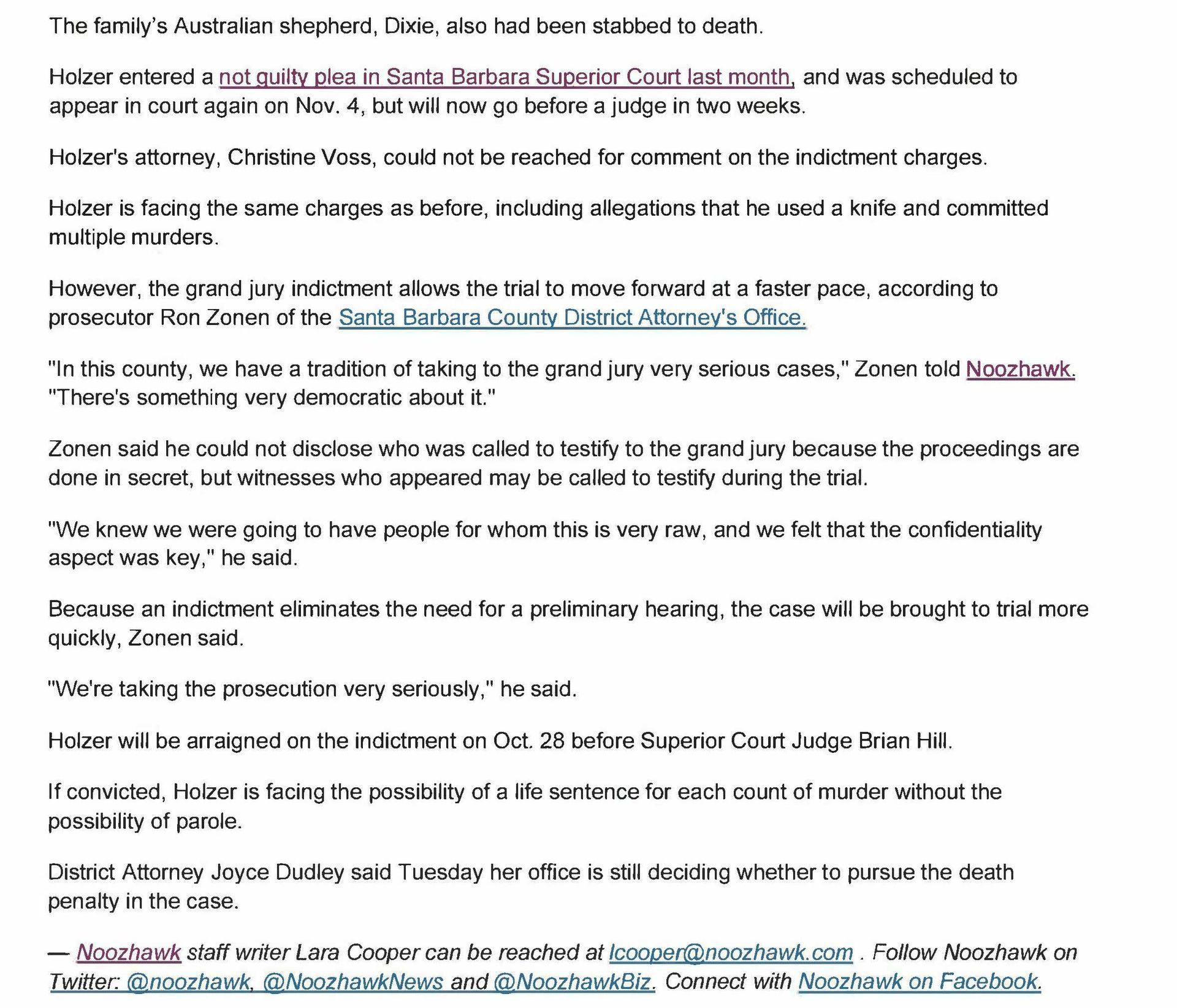
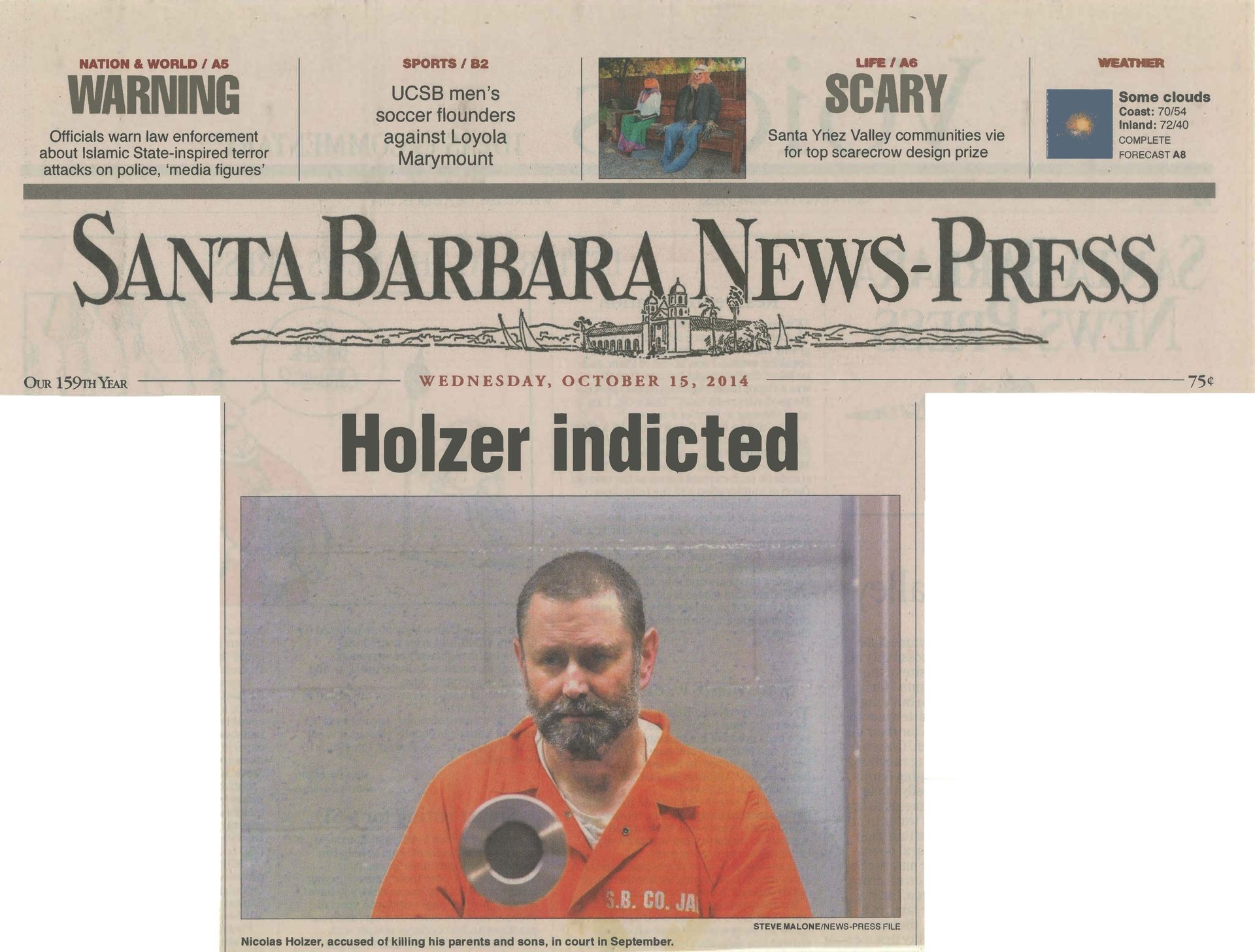
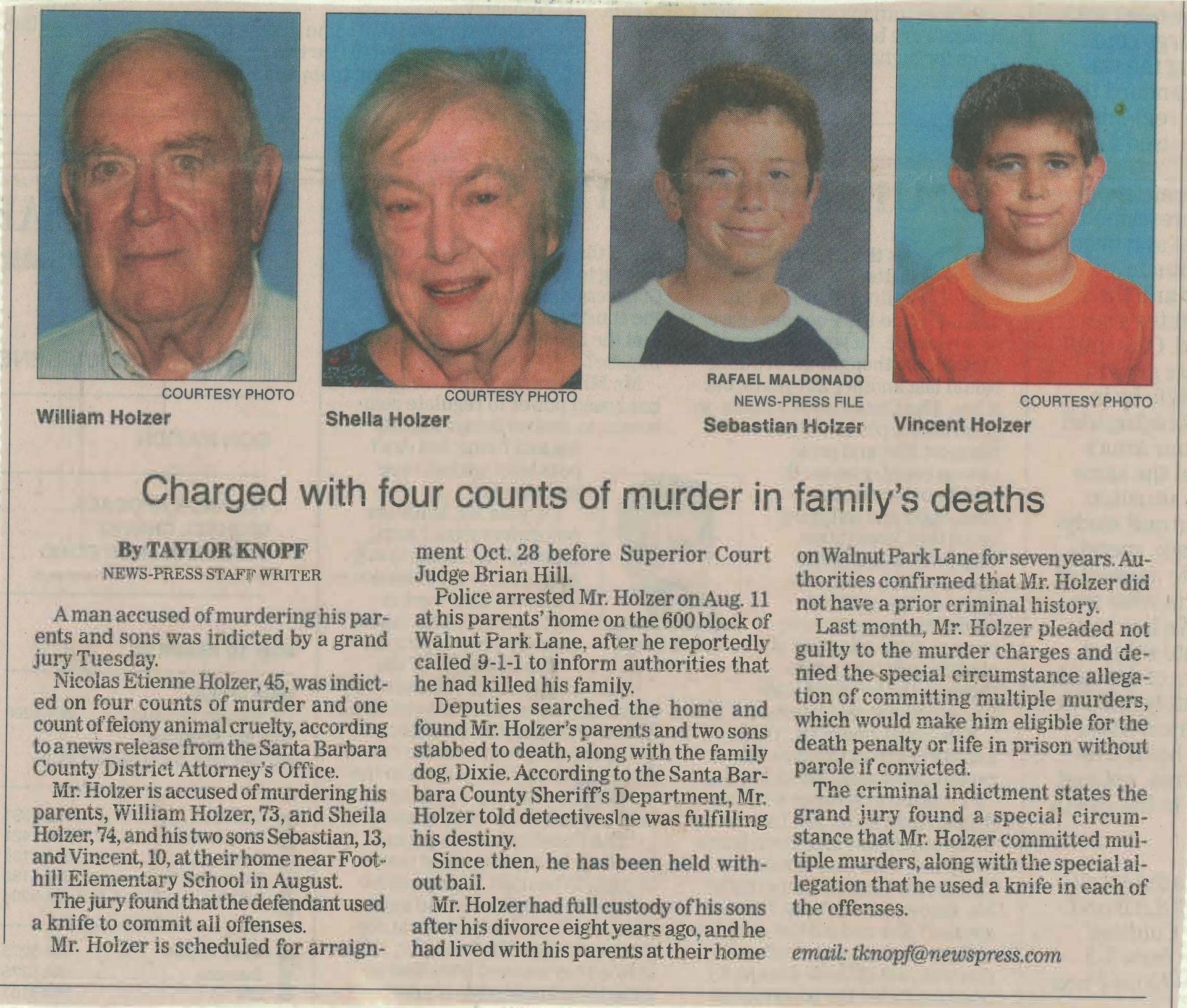
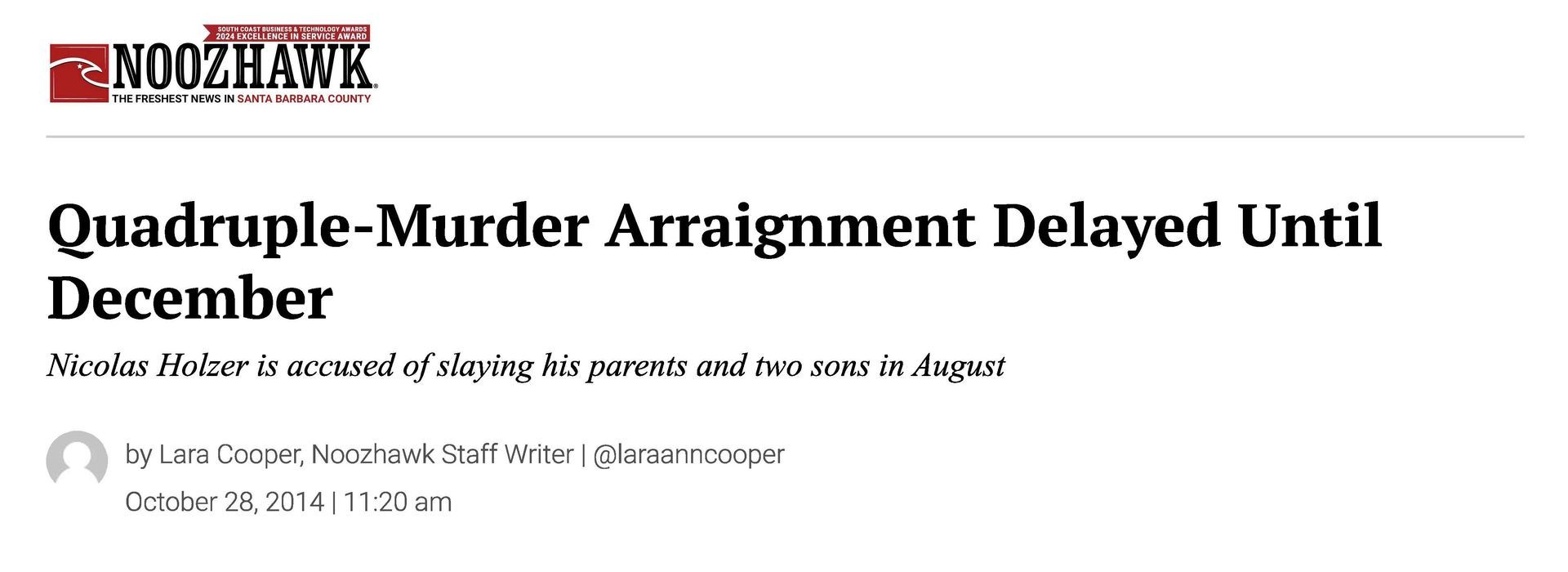
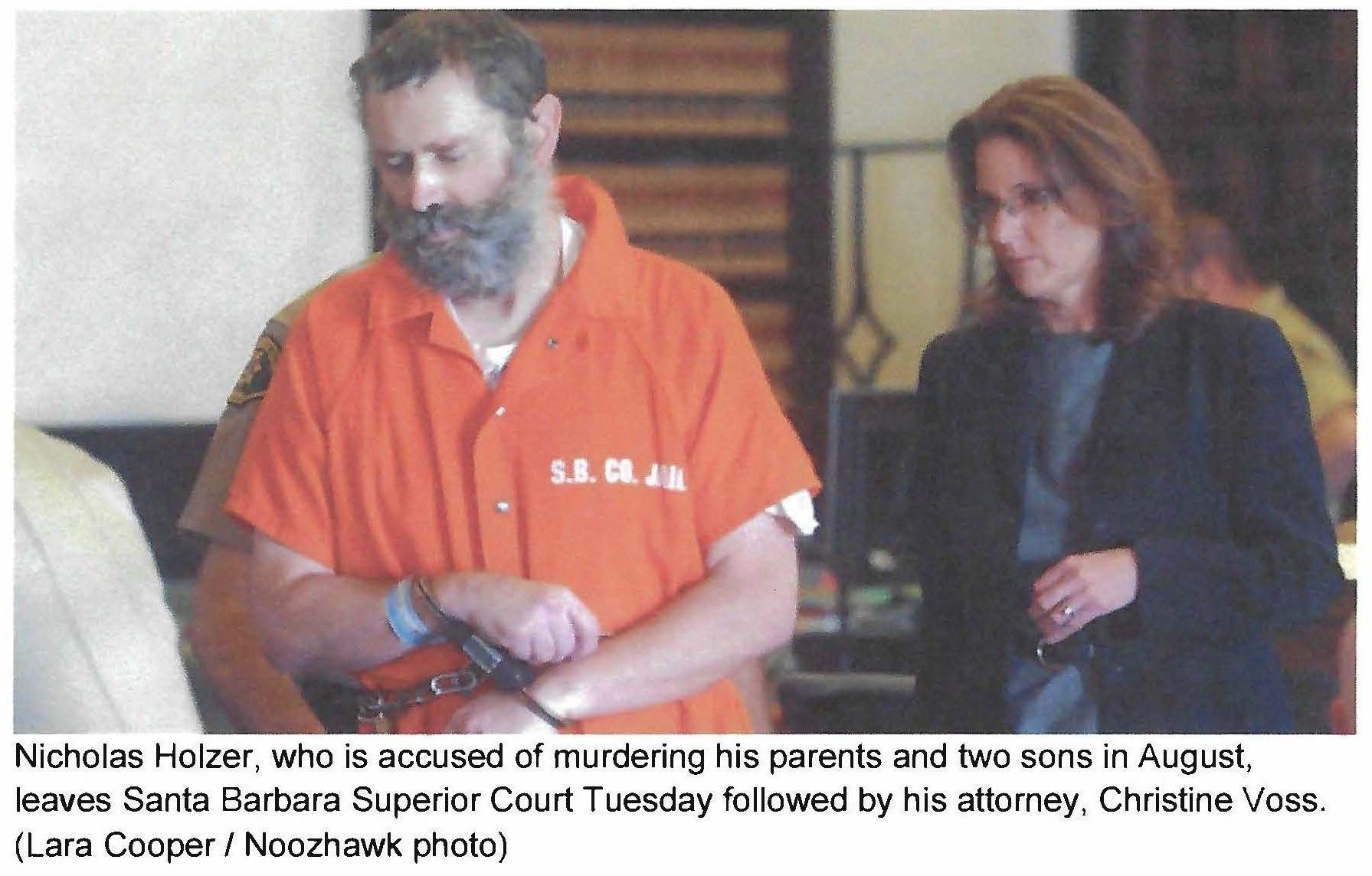

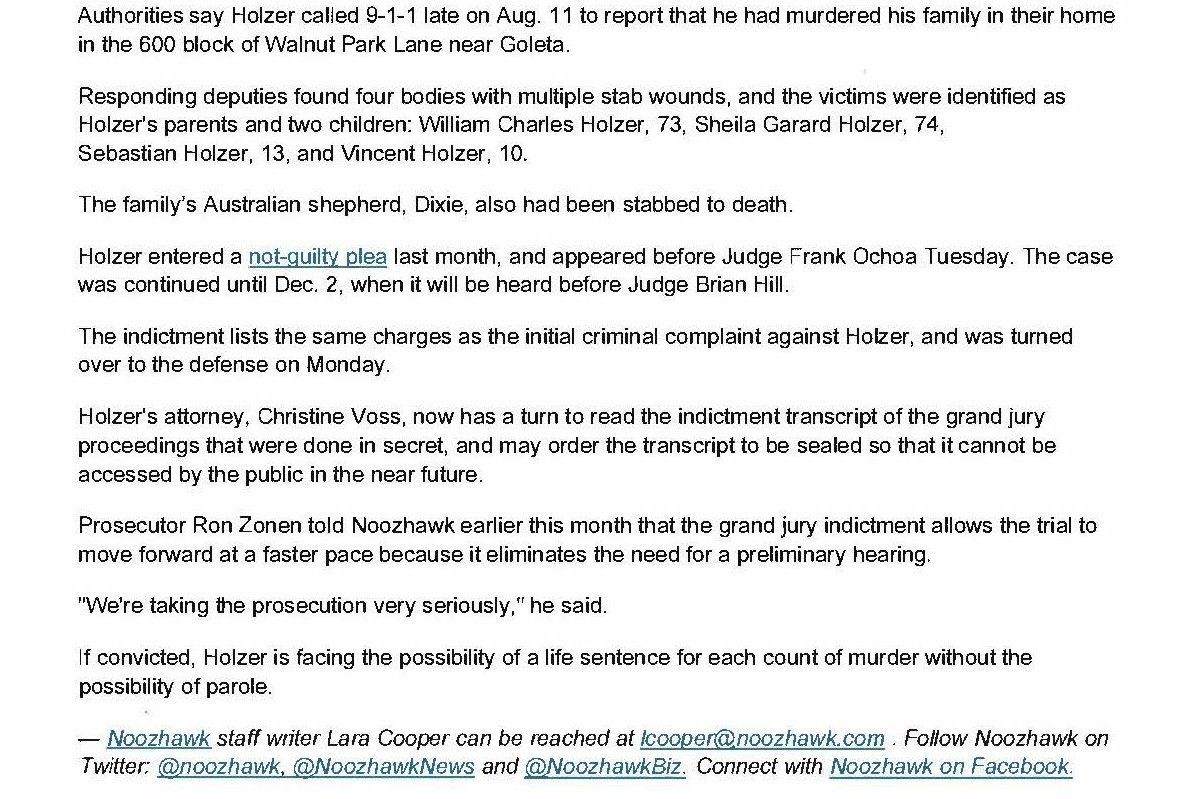
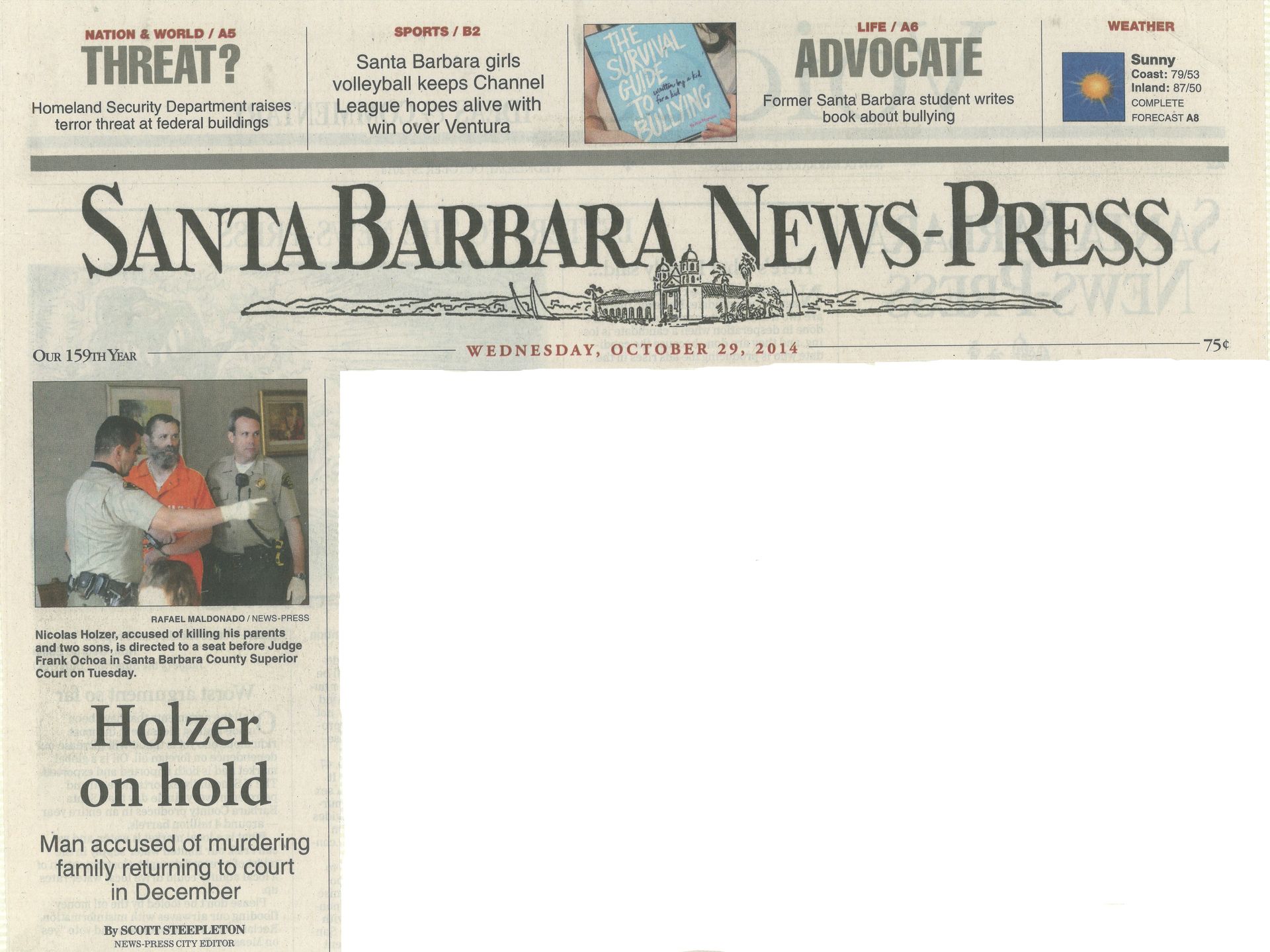
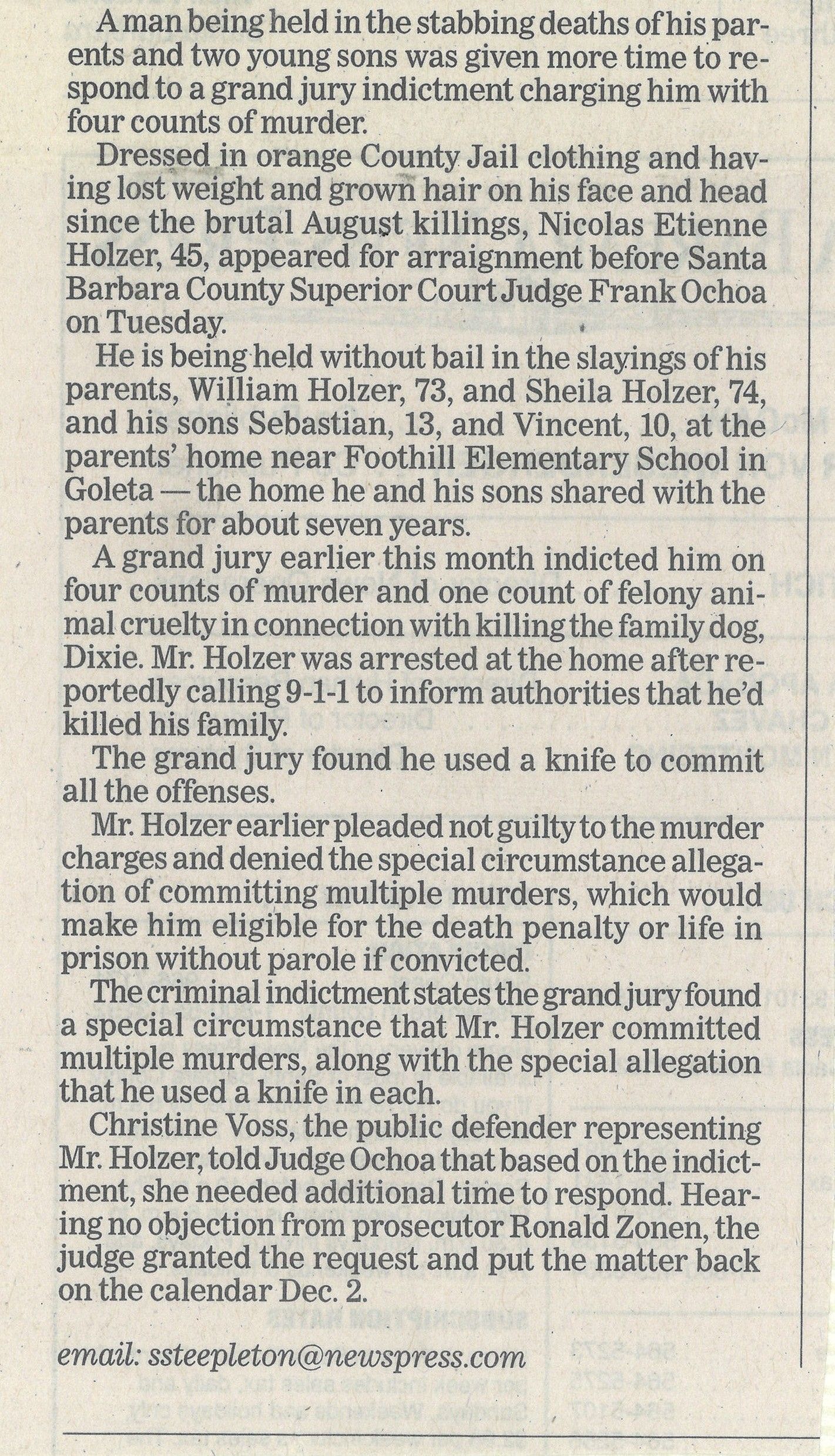
Anthony S., 1434089, Hung jury on April 7, 2015 and settled for nine years
- Charges: Murder (Penal Code § 187(a)), with an allegation that the murder was committed at the direction of, for the benefit of, or in association with a criminal street gang (Penal Code § 186.22(b)(1)), with four special circumstances alleged, killing while lying in wait (Penal Code § 190.2(a)(15)), murder during a kidnapping (Penal Code § 190.2(a)(17)), murder with torture (Penal Code § 190.2(a)(18)) and killing while an active participant in a street gang to further the activities of the gang (Penal Code § 190.2(a)(22)), if A.J. was convicted of first-degree murder and any one of an alleged special circumstances was found true, the judge would have had to sentence him to live life in prison without the possibility of parole.
- Exposure: A.J. was facing life in prison without the possibility of parole (LWOPP).
- Outcome: There was a hung jury; the case was then settled for dismissal of the first-degree murder charge in exchange for a no-contest plea to kidnapping with a gang allegation and possession of drugs in the jail with nine years in prison. A.J. is home now.
This was a particularly long and grueling murder trial. The press dubbed the case "The U-Haul Murder Trial" because the decedent's body was discovered in an abandoned U-Haul truck with his blood dripping out of the back of the truck. There were originally 13 co-defendants, not all of which were charged with murder. The plea negotiations parred it down to six co-defendants, all charged with murder, all with special circumstances that included torture and gang murder. All six defendants were facing LWOPP sentences. It was largest number of co-defendants in a murder trial ever in Santa Barbara County, and probably the state. There wasn't a courtroom in the county large enough for the trial. The largest courtroom in the county is at the Juvenile Court in Santa Maria, however it didn't have a jury box because juveniles do not have a right to a jury trial. The courtroom was modified by having a jury box built in it. However, even that was far too small for jury selection because of the several hundreds of prospective jurors would need to be called.
In a one defendant non-life sentence exposure case, the typical jury trial, there are a total of twenty pre-emptory challenges allowed, and typically a panel of 80 to 100 prospective jurors are called, depending on the type of case. In this case there were 140 pre-emptory challenges allowed. Many hundreds of potential jurors were called in. The courts rented a warehouse on the Santa Maria Fairgrounds to conduct the jury selection. Normally jury trials go four days a week, or even three days a week, so the judge can conduct other court business, that also allows the lawyers to work on the trial on the non-trial days as well, however this trial was specially assigned to a retired judge so the trial went five days a week, starting at 8:00 a.m. with a half hour lunch break and two fifteen minutes breaks, one in the morning and one in the afternoon, the trial was run on the same schedule that fast food workers experience, the lawyers had to scramble to handle their other matters, and had to work non-stop because of the lack of normal "down time," which isn't actually down time, it's time used for the trial. After 79 court days of trial, on a five days a week schedule held over several months, the jury came back with verdicts.
The district attorney's theory was that the decedent was a drug dealer, and that he had been scamming customers as well as not paying "taxes" to the Mexican Mafia. The district attorney believed that a co-defendant with the nickname (they said gang moniker) of Crazy Ray, had recruited a group to "check" (impose a punishment) on the decedent for both ripping off customers and for not paying a portion of his proceeds to the Mexican Mafia. The believed that the group then tortured the decedent to death, rented a U-Haul, put his body in the U-Haul and abandoned it. The incident occurred at a house that didn't belong to any of the people in the group with Crazy Ray. The house belonged to two people that testified as witnesses for the prosecution, Angel "Buddha" Escobar and his sister Marissa Escobar, who were put in the witness protection program. That means that the government paid to set the witnesses up with new lives in exchange for their snitch testimony. What the defense presented was that Crazy Ray and his group were at the house, but they had left and that it was in fact the district attorney's two witnesses that had killed the decedent, and that after the fact they called upon Crazy Ray to help with the aftermath. The defense was that he may have helped after the fact, but neither he nor anyone in his group did the killing. The defense that was presented was that various members of the group had come and gone from the house, but none were there when the murder occurred.
The jury found the other five co-defendants guilty and found at least one special circumstance true, which meant that they all would have mandatory LWOPP sentences. But that wasn't the case for A.J. It was a hung jury on all counts for A.J. It looked like A.J. and Addison were going to have to do the trial again. The risk was getting the same LWOPP sentence that his co-defendants got, but the potential gain was to maybe go home after a second trial. In the end A.J. resolved the case for a plea to kidnapping and nine years in prison, but it had taken so long to get to trial that he had almost half of that already served. A.J. is home now. He's the only one of the six that's home.
This is Addison on television during the trial arguing a midtrial motion
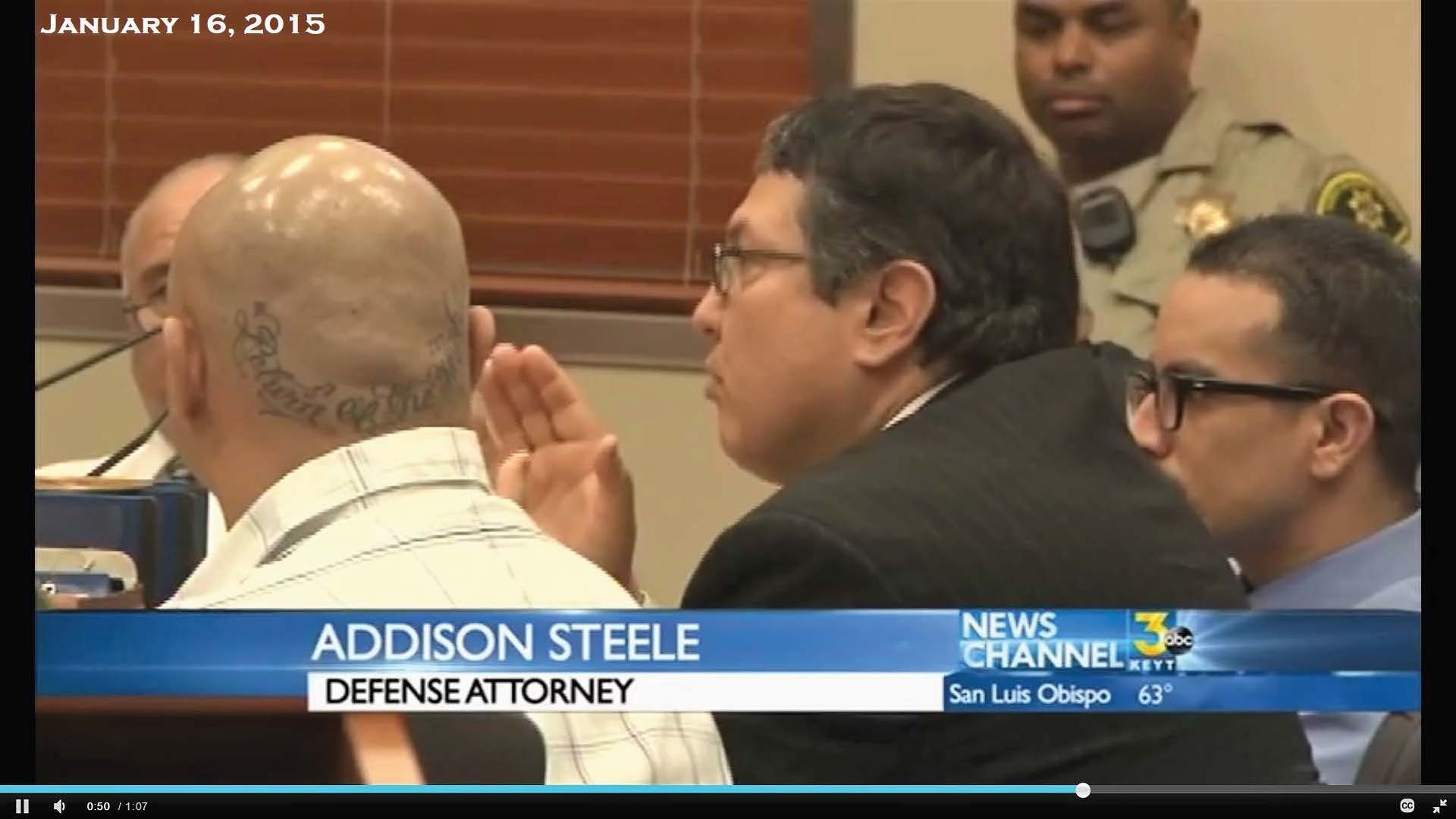
These are the six attorneys that fought the case together for the six defendants
The families called them, "The Real Dream Team."
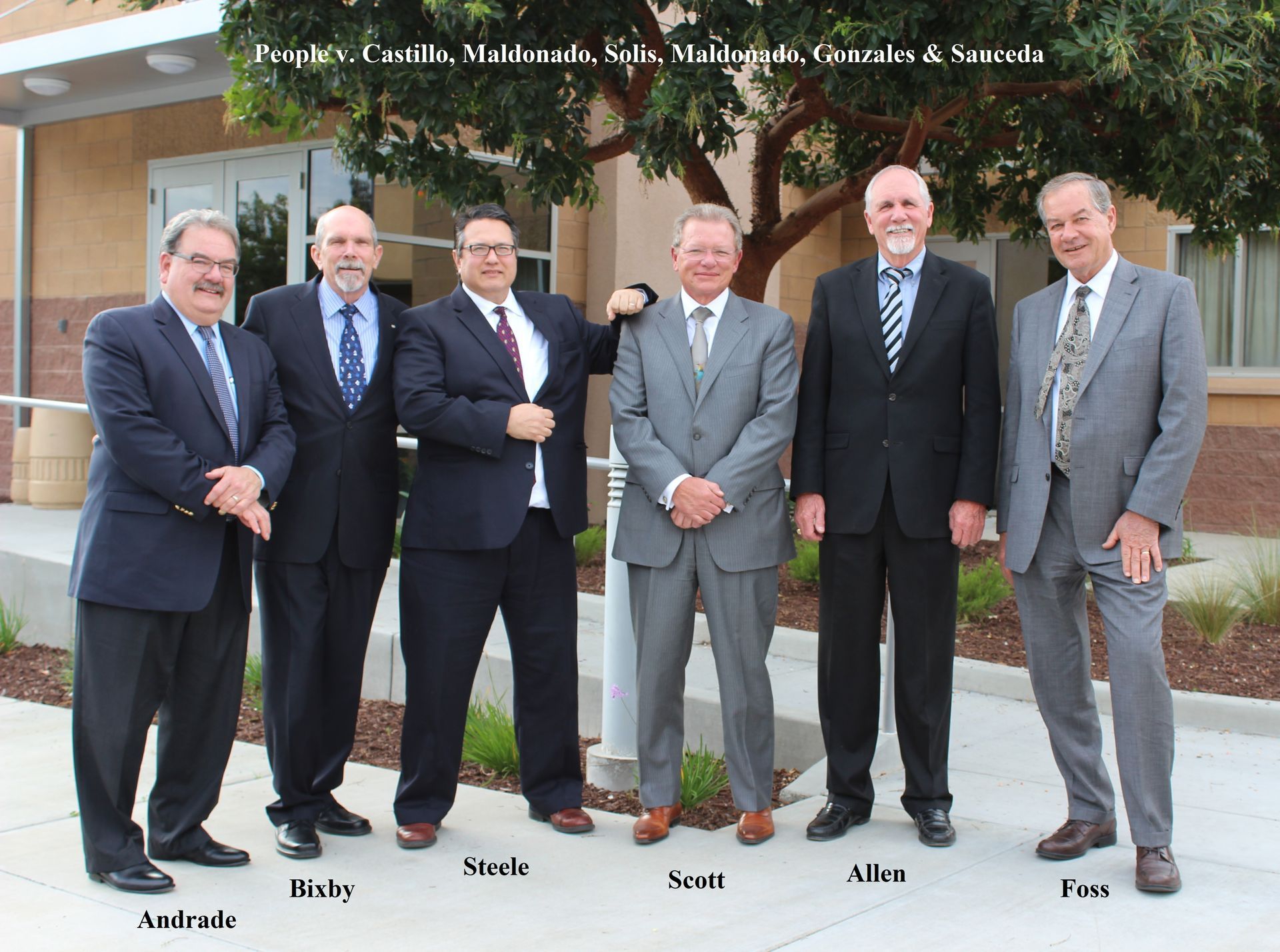
This is a slide from Addison closing argument
Bear in mind that this was a public trial with television cameras allowed in the courtroom that recorded the entire trial
The slide shows that the defense was that it was in fact the government's snitches (informants) that did the killing
The snitches had motive and opportunity

This is the press from when A.J. and Addison got a hung jury when all five of the other co-defendant's were found guilty of charges that resulted in sentences of life in prison without the possibility of parole (LWOPP). That same day they resolved the case for a guilty plea to kidnapping and bringing drugs into the jail for a nine year prison sentence. A.J. is home now.
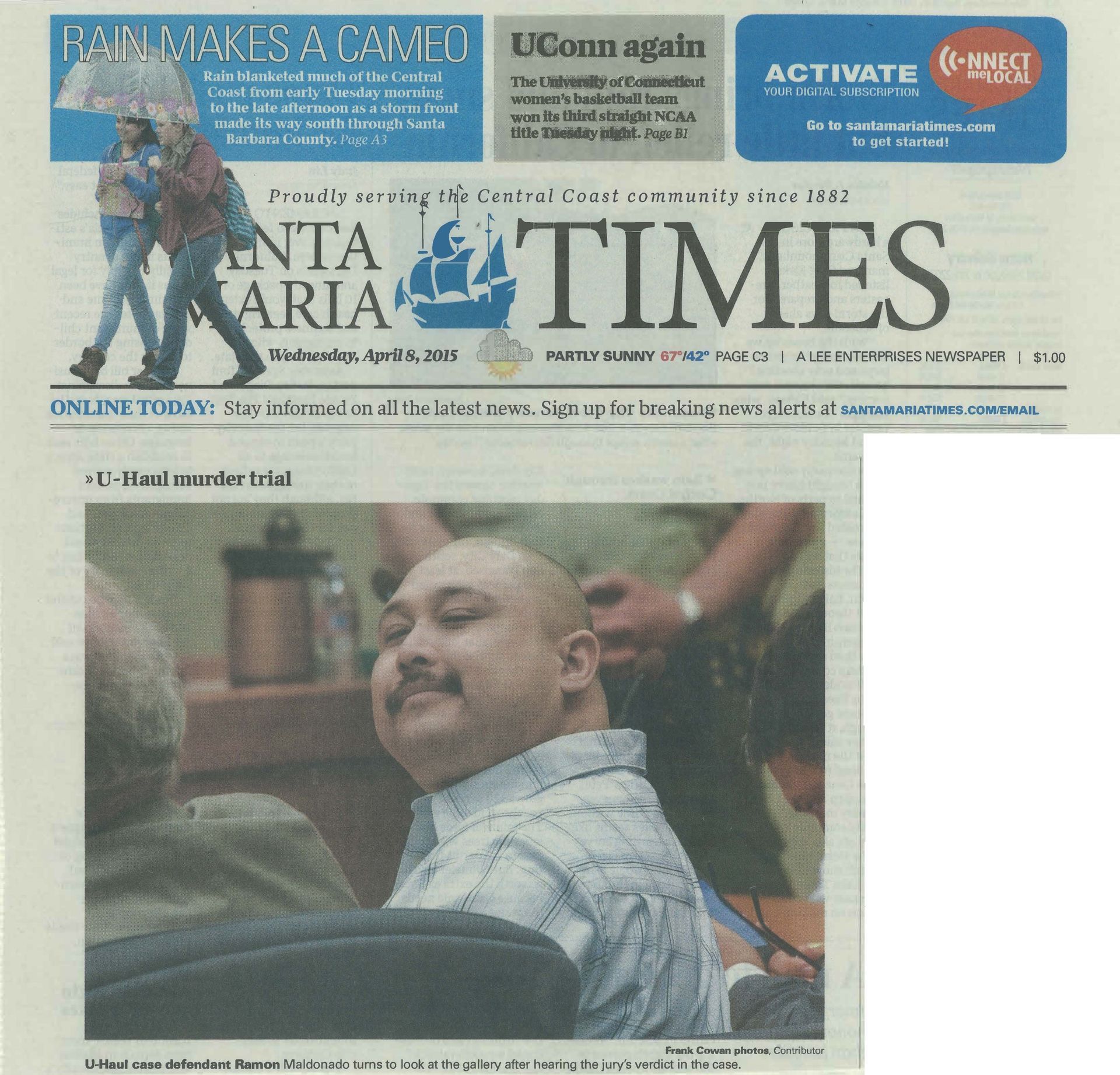
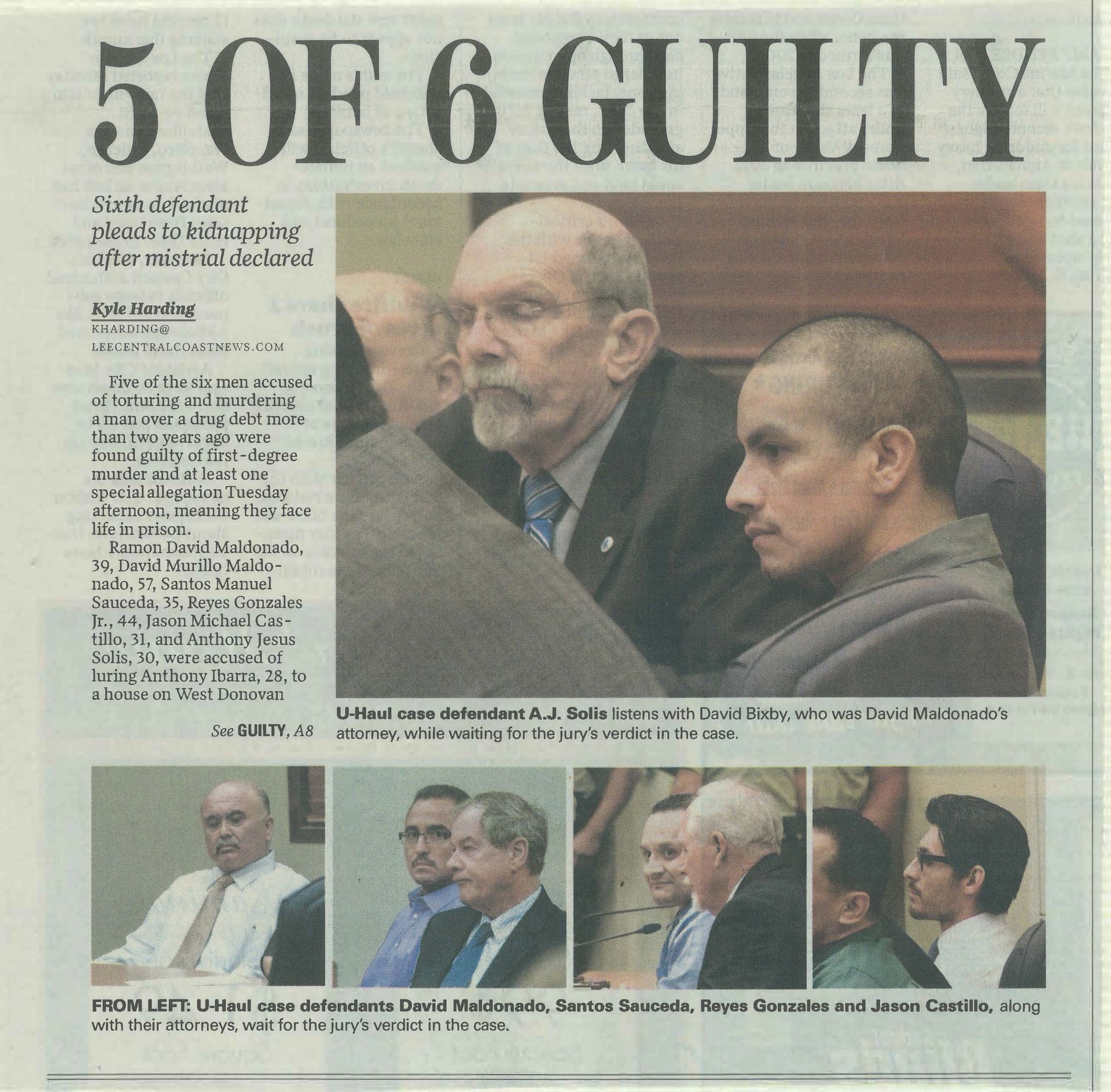
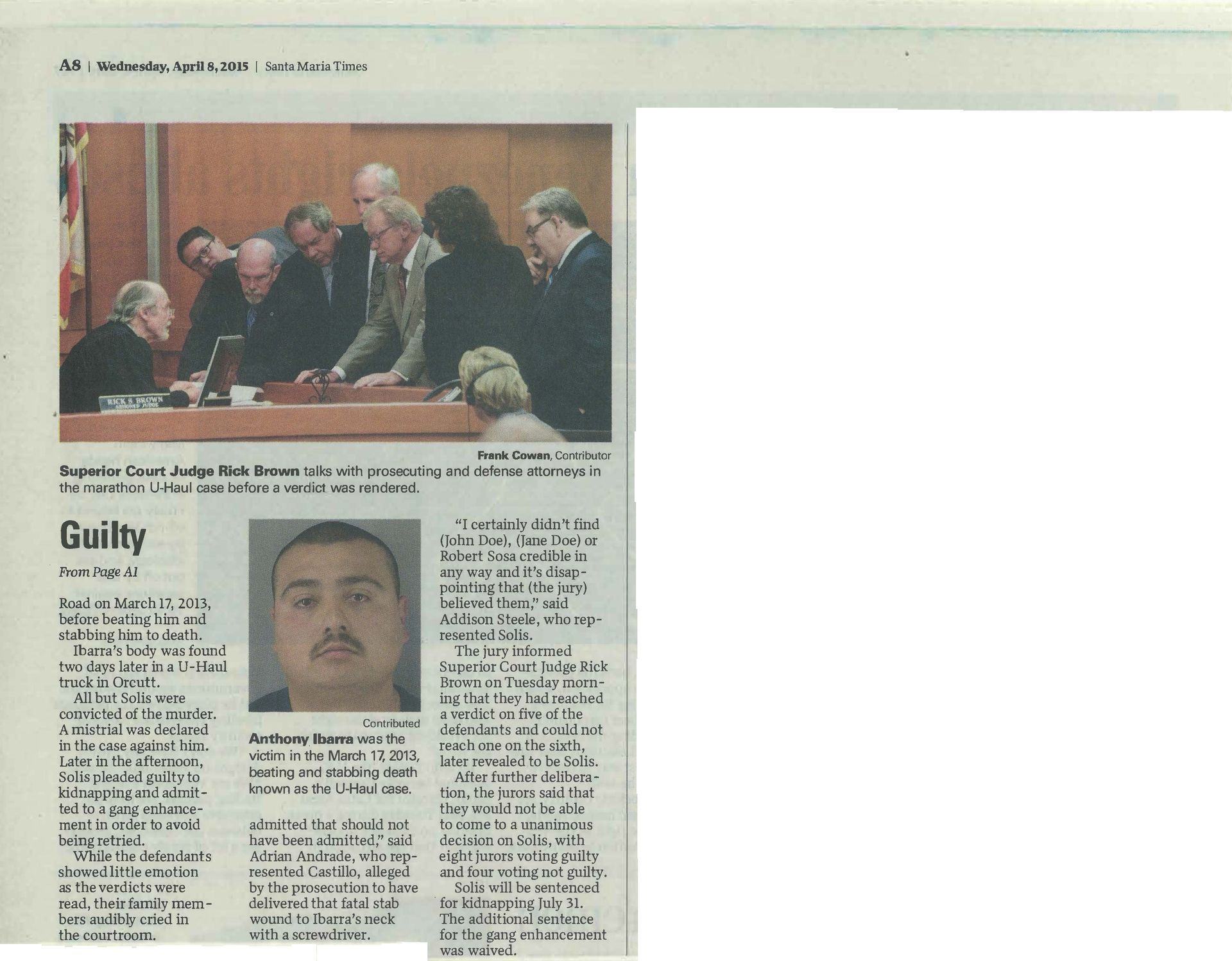



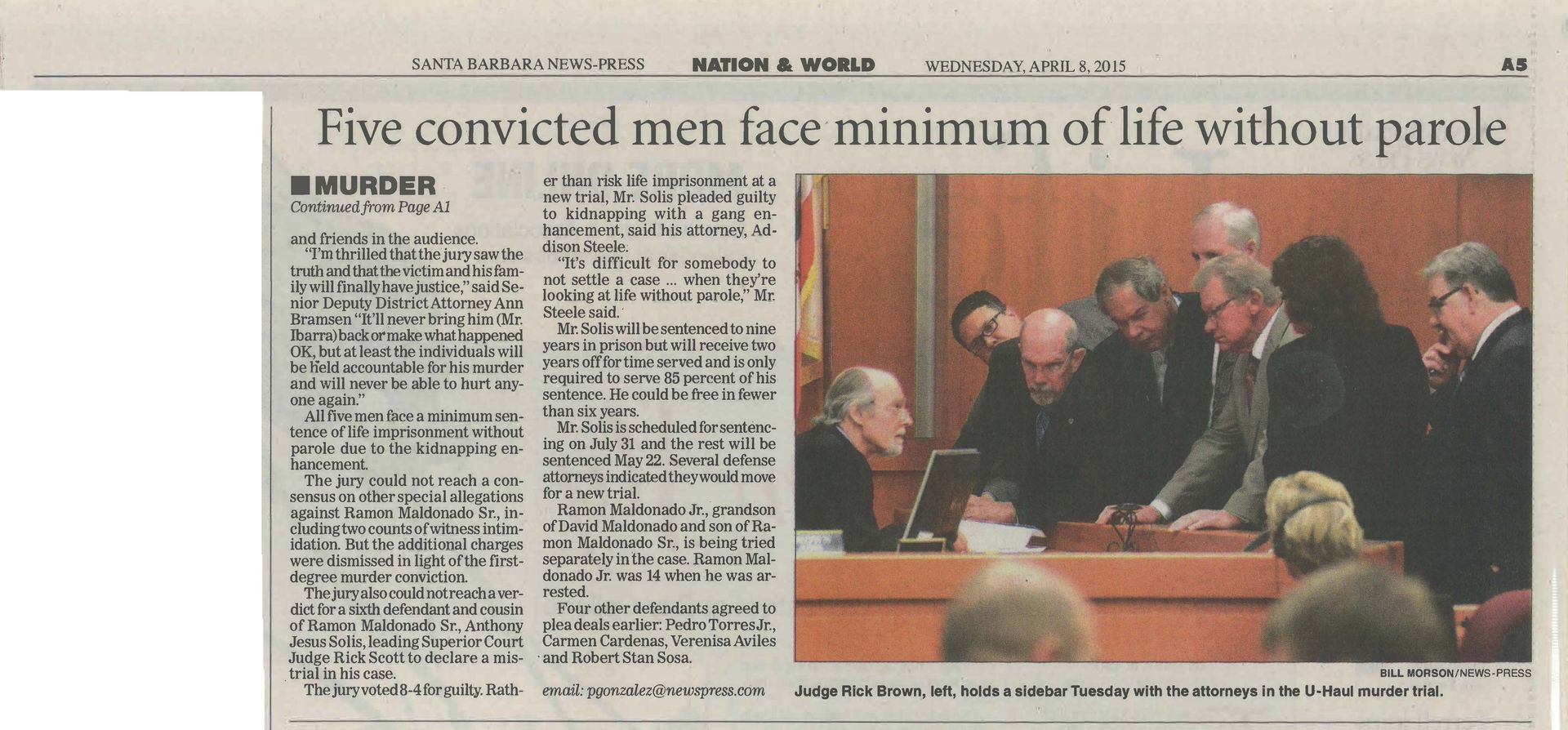
This is A.J. and Addison after the trial and after he had completed his relatively short sentence
The picture is back in front of the same courthouse where the trial was conducted
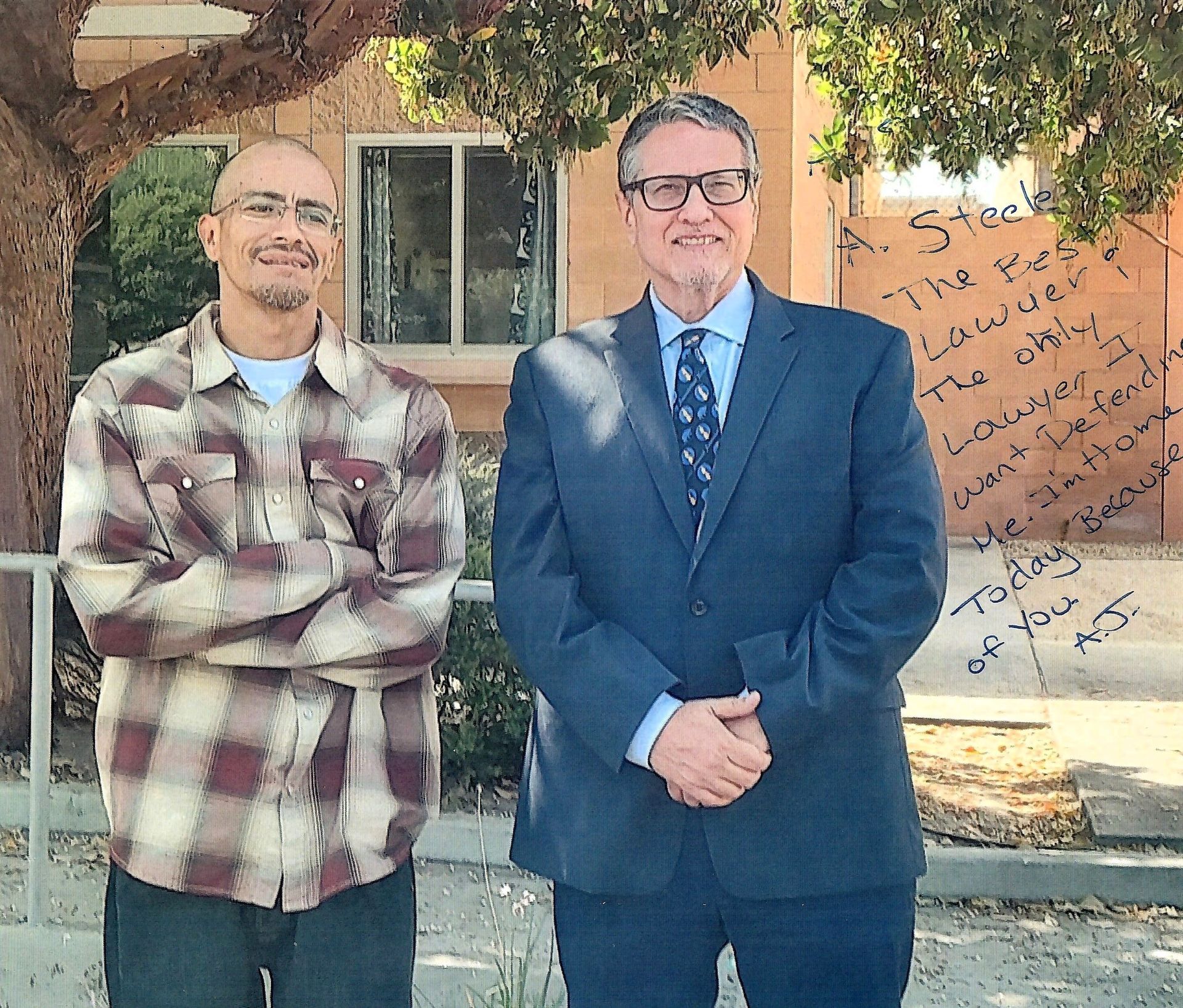
Here you can follow the press on A.J.'s case from beginning to end


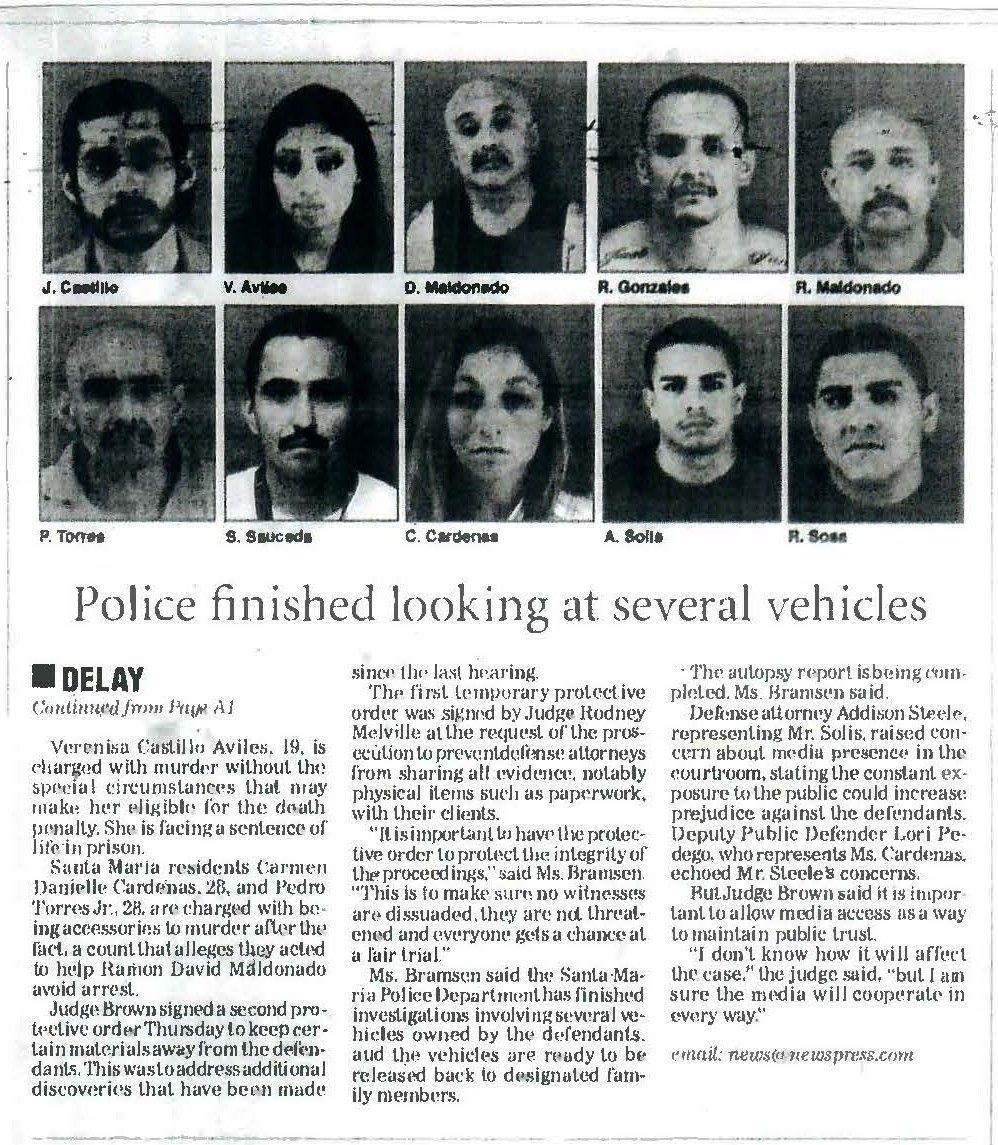
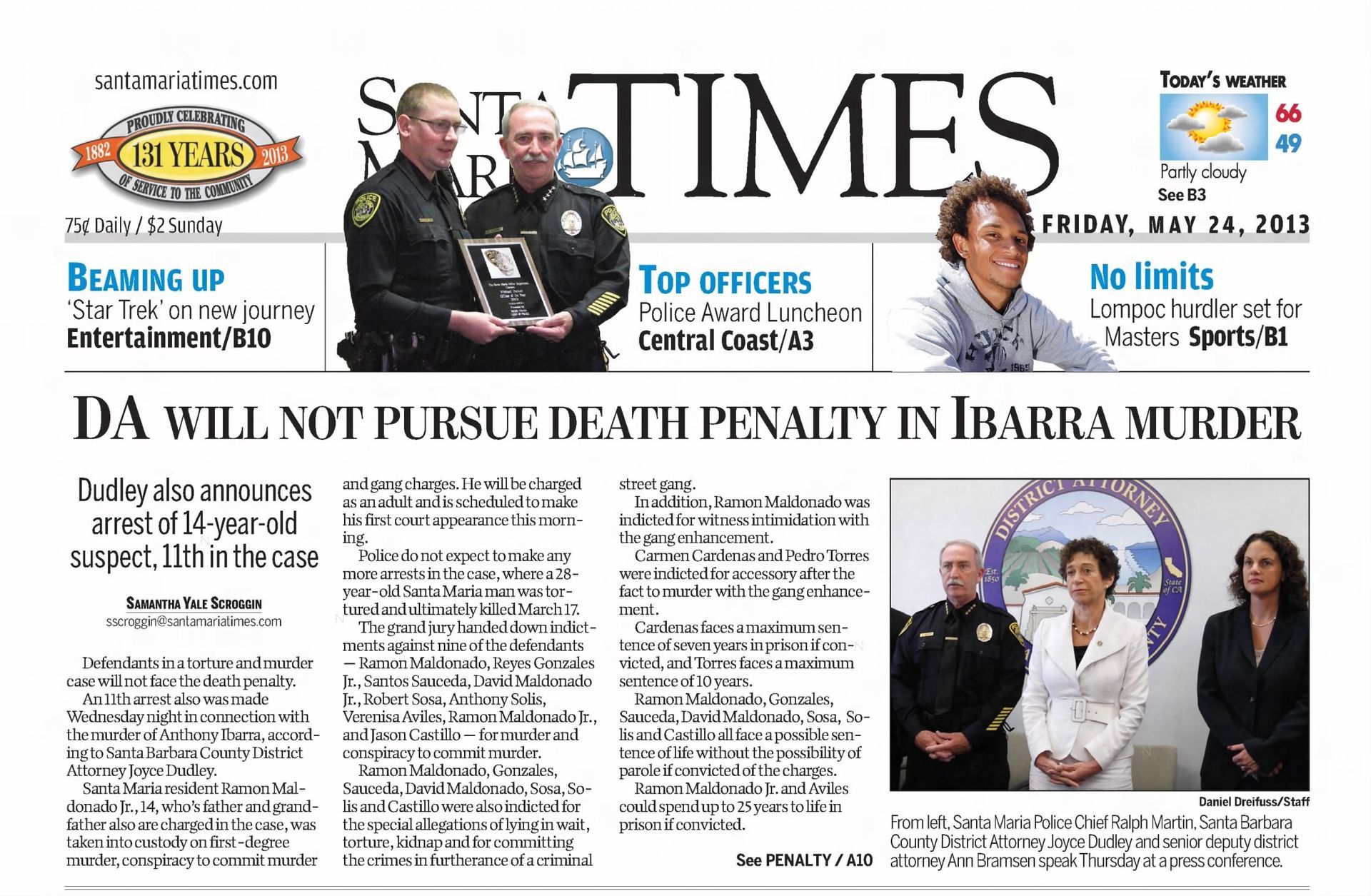



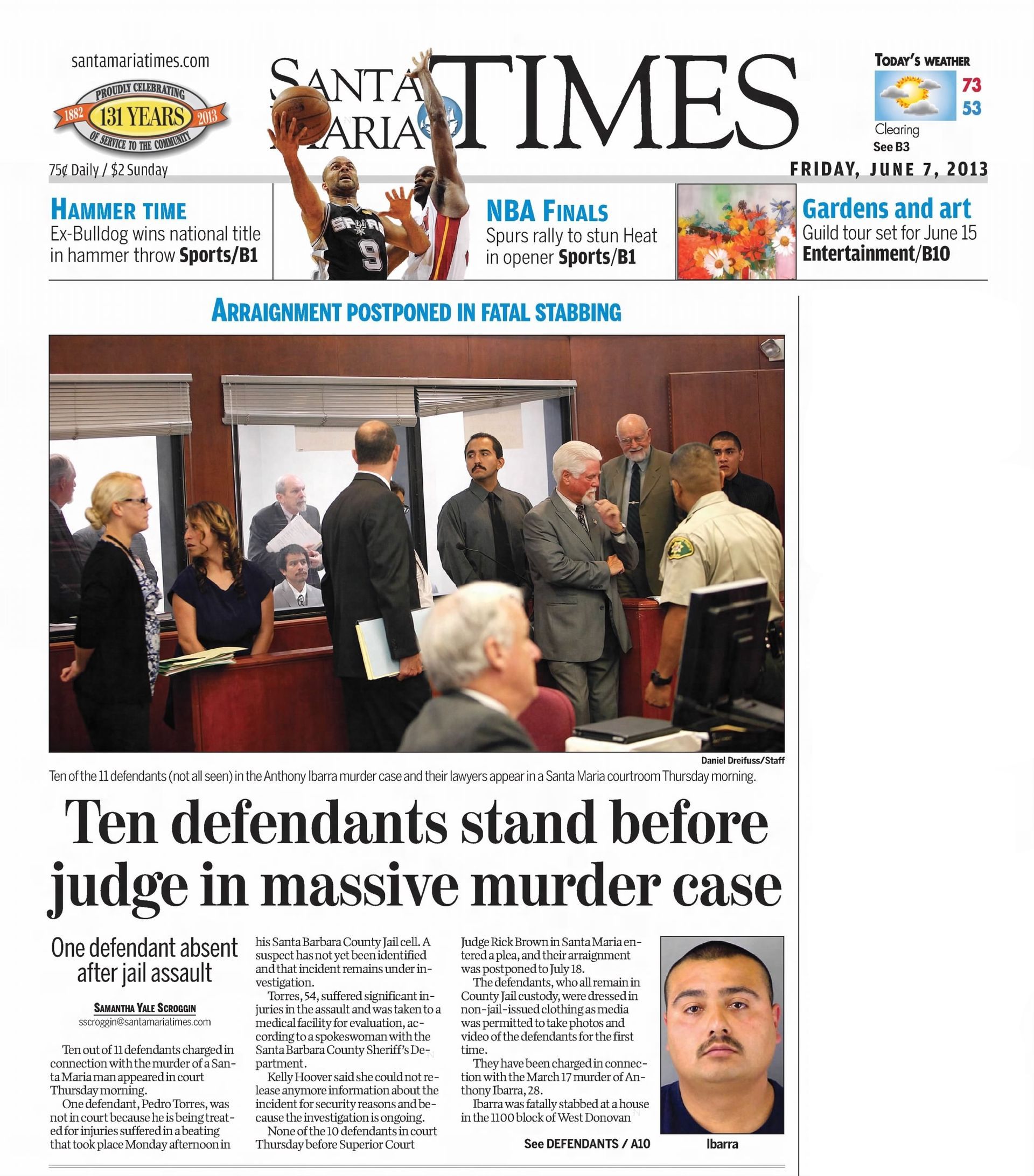

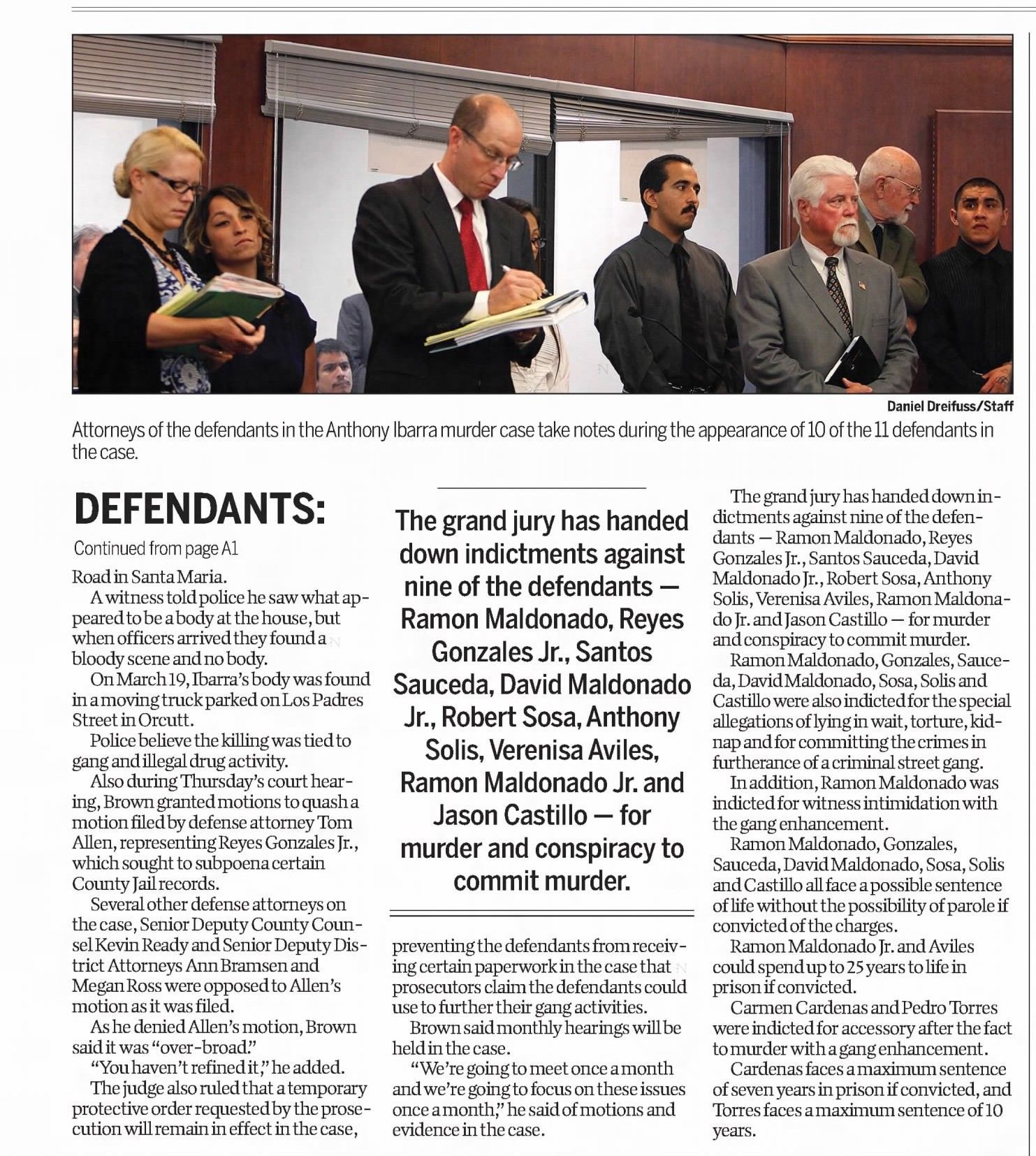

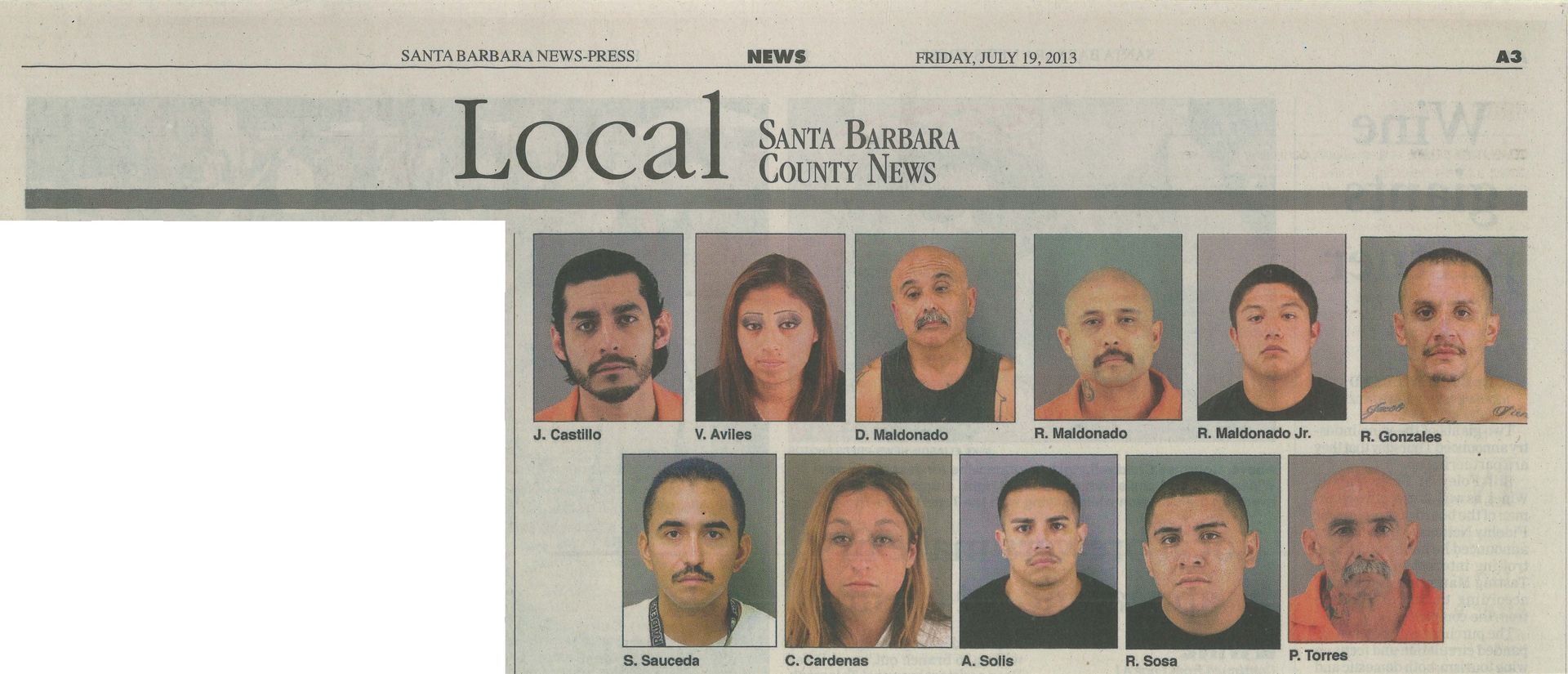
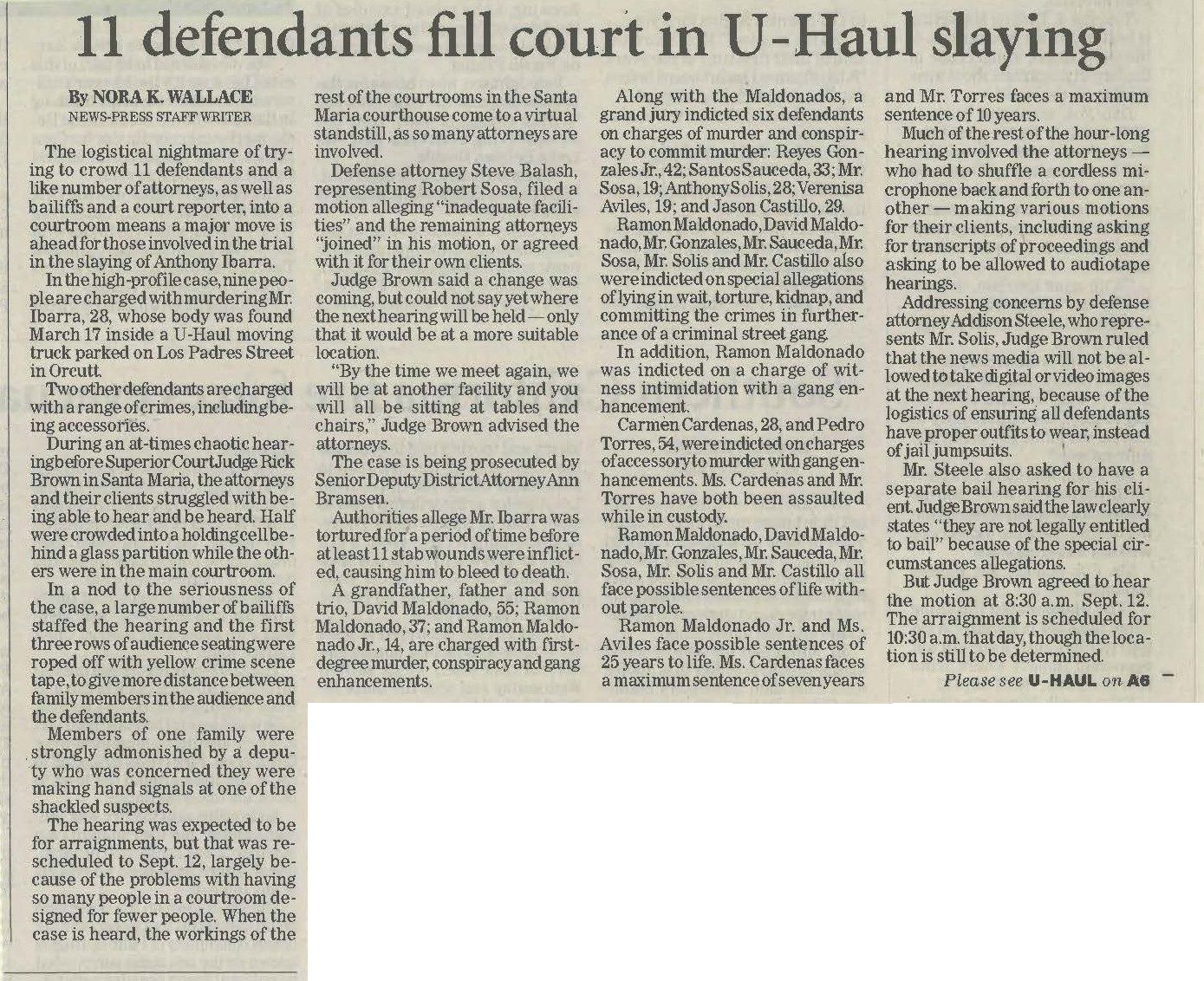


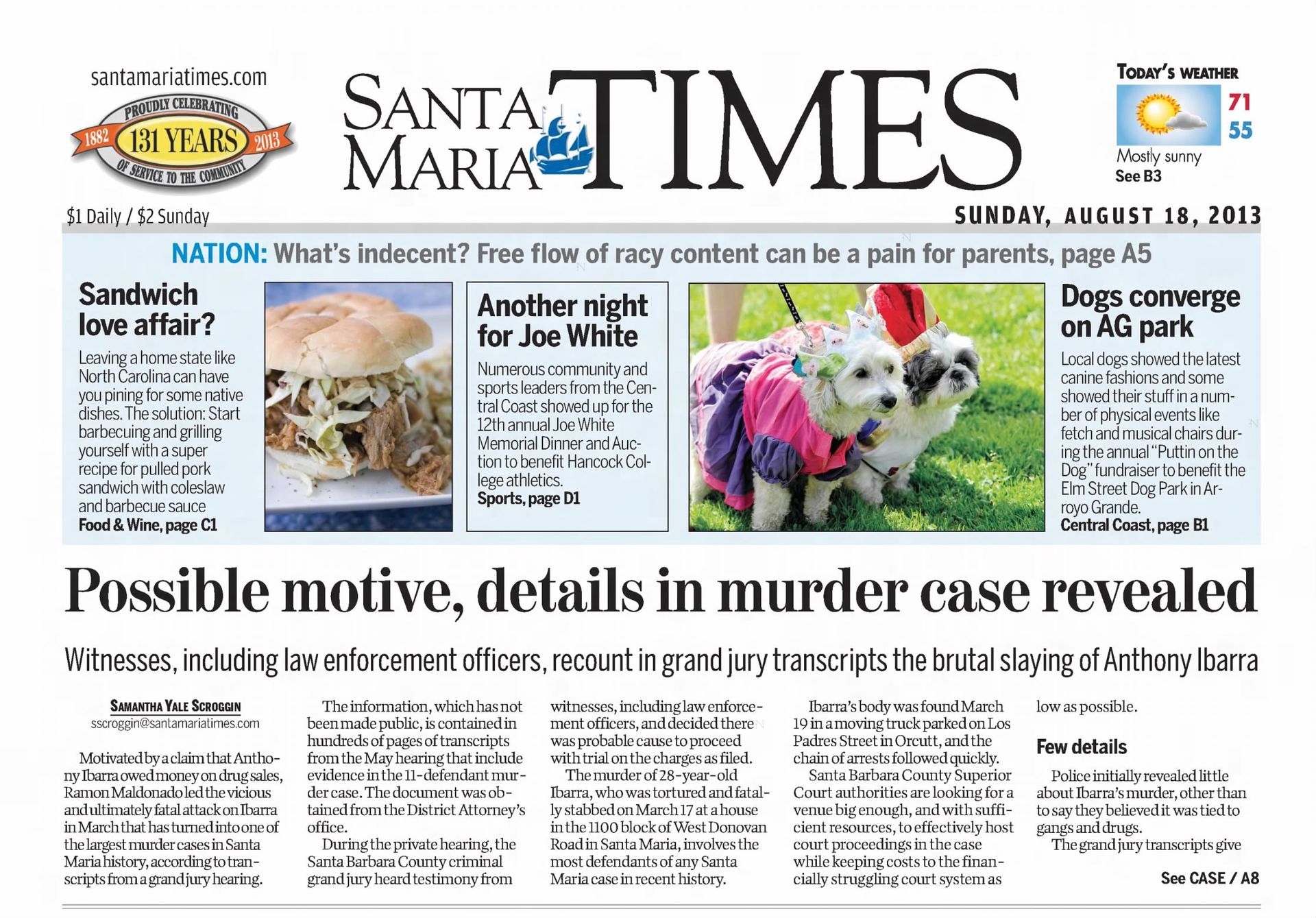
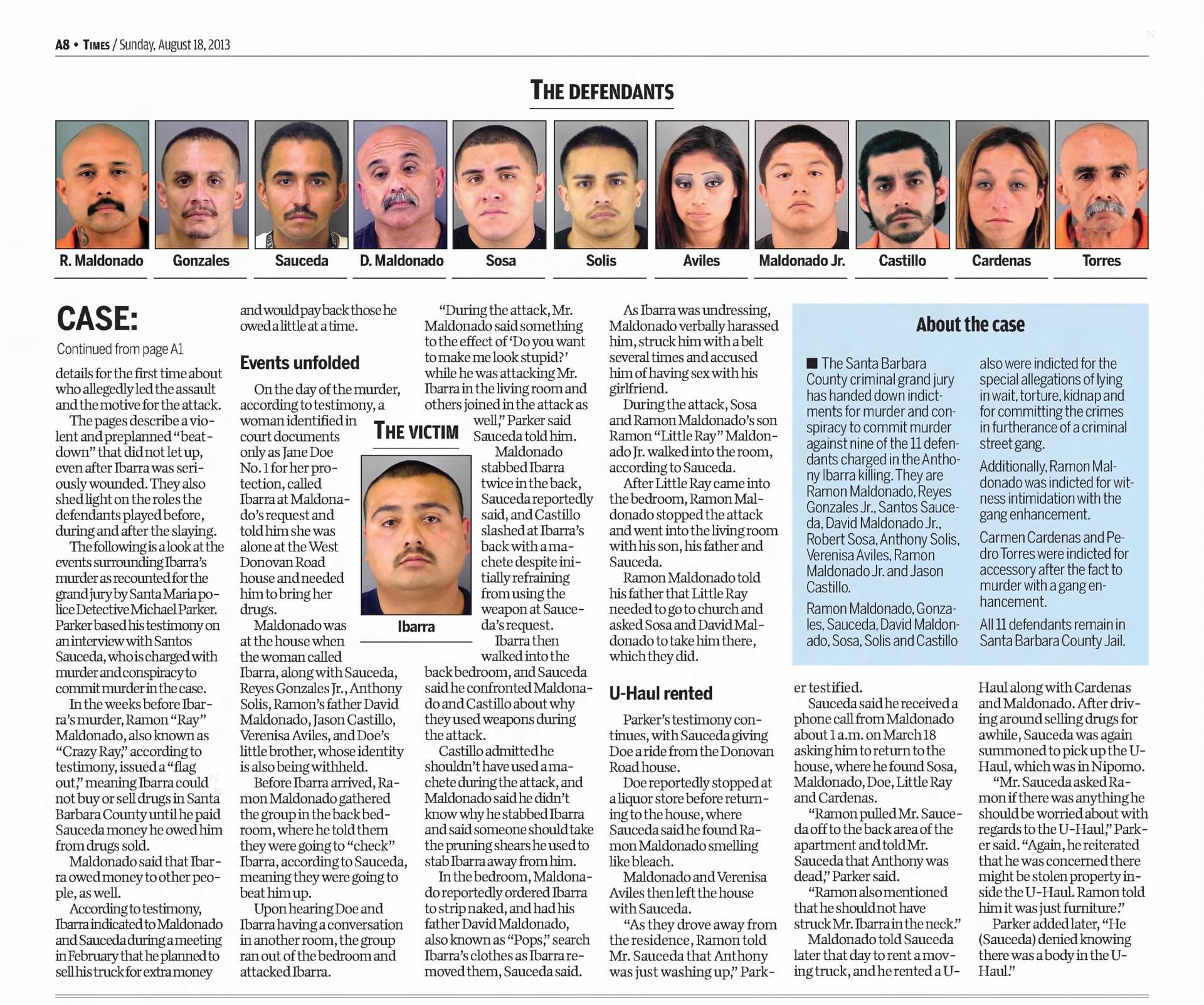


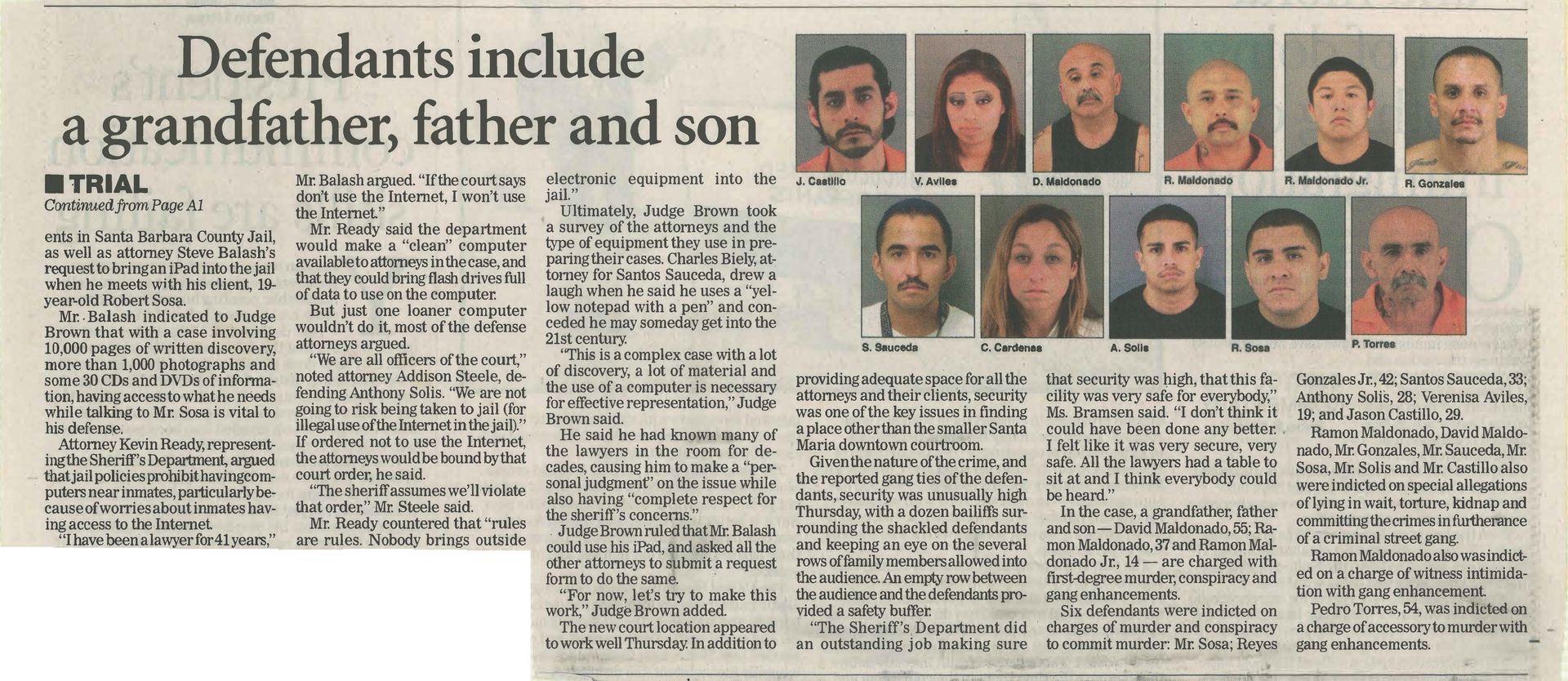
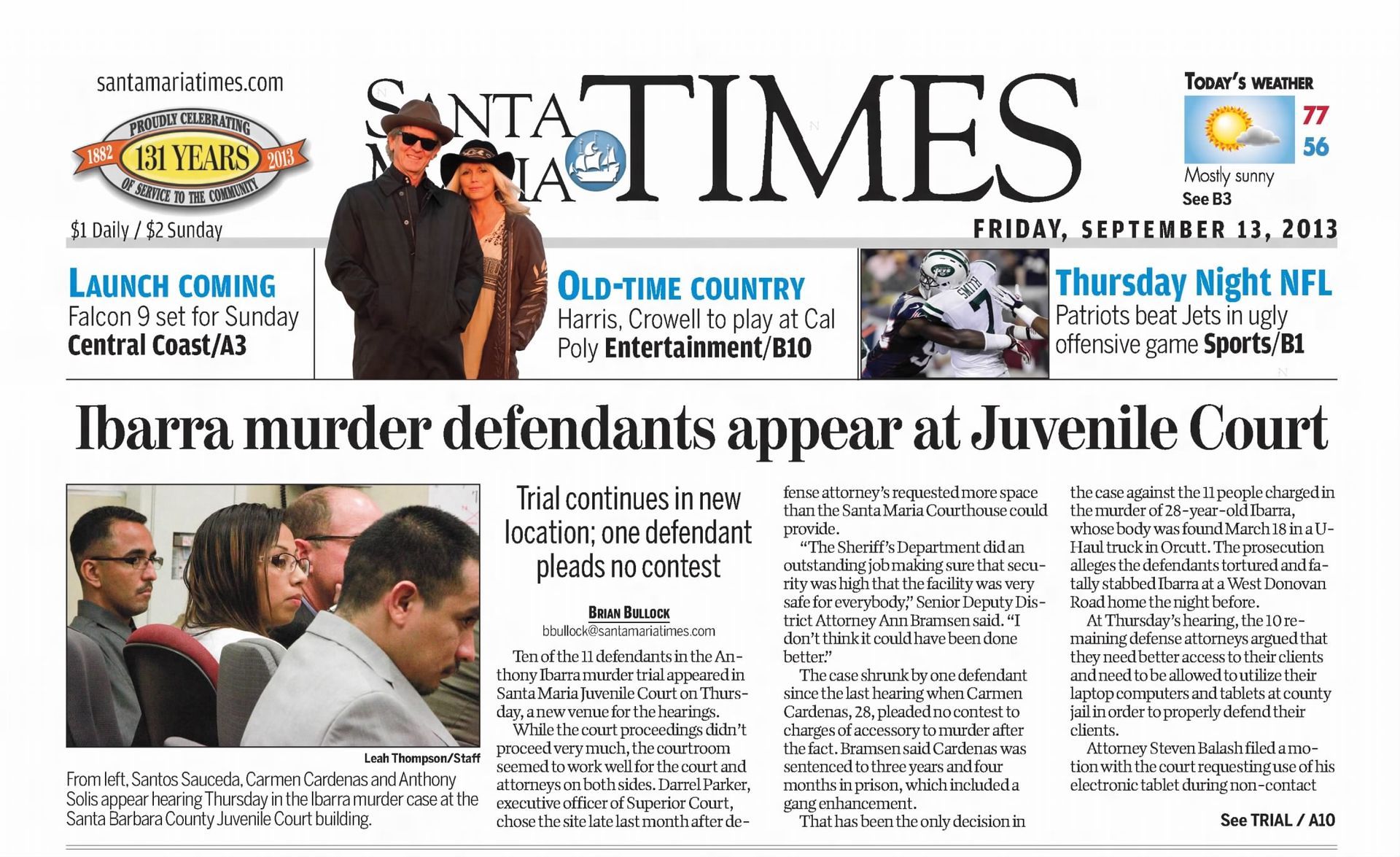
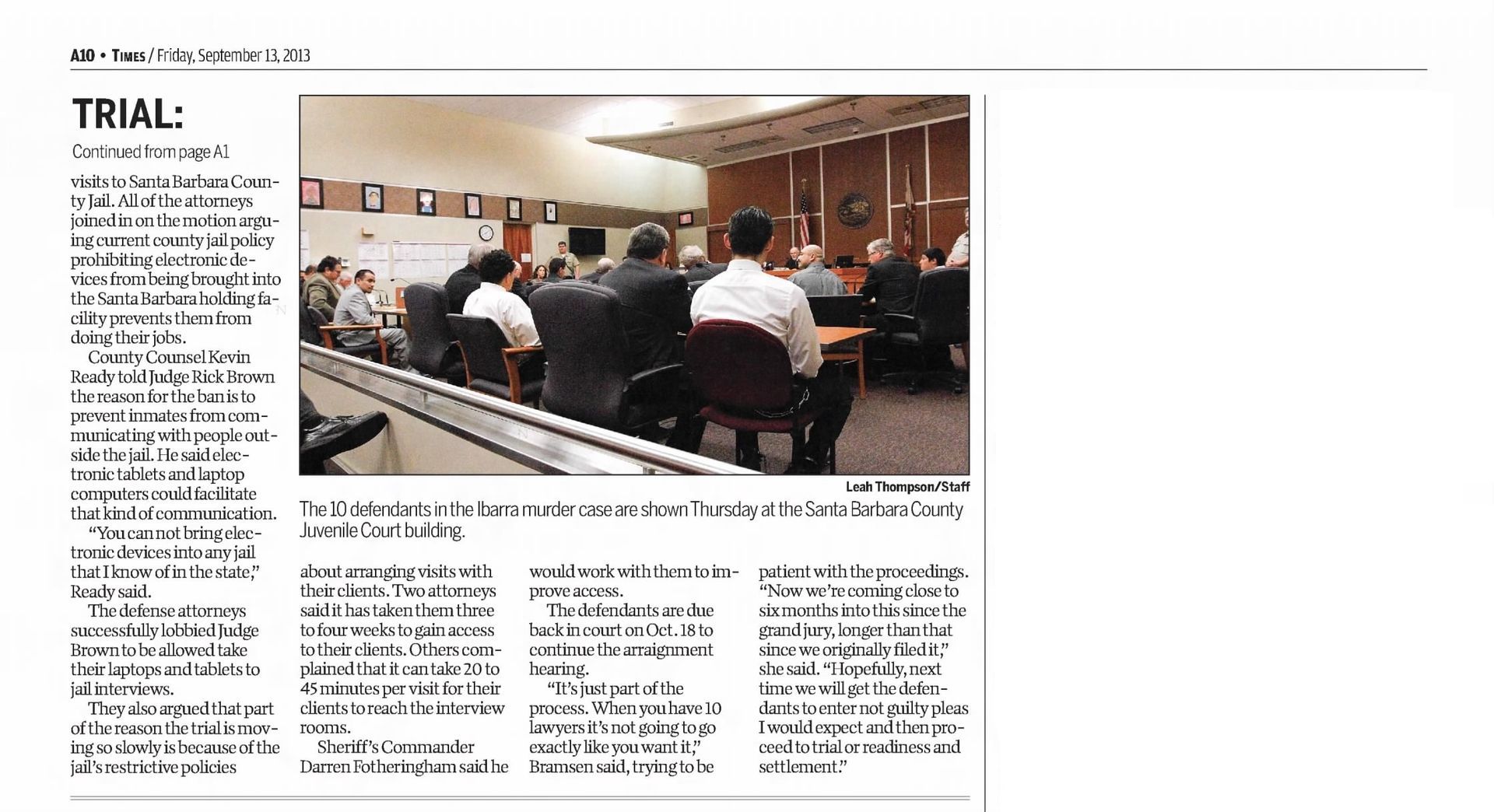
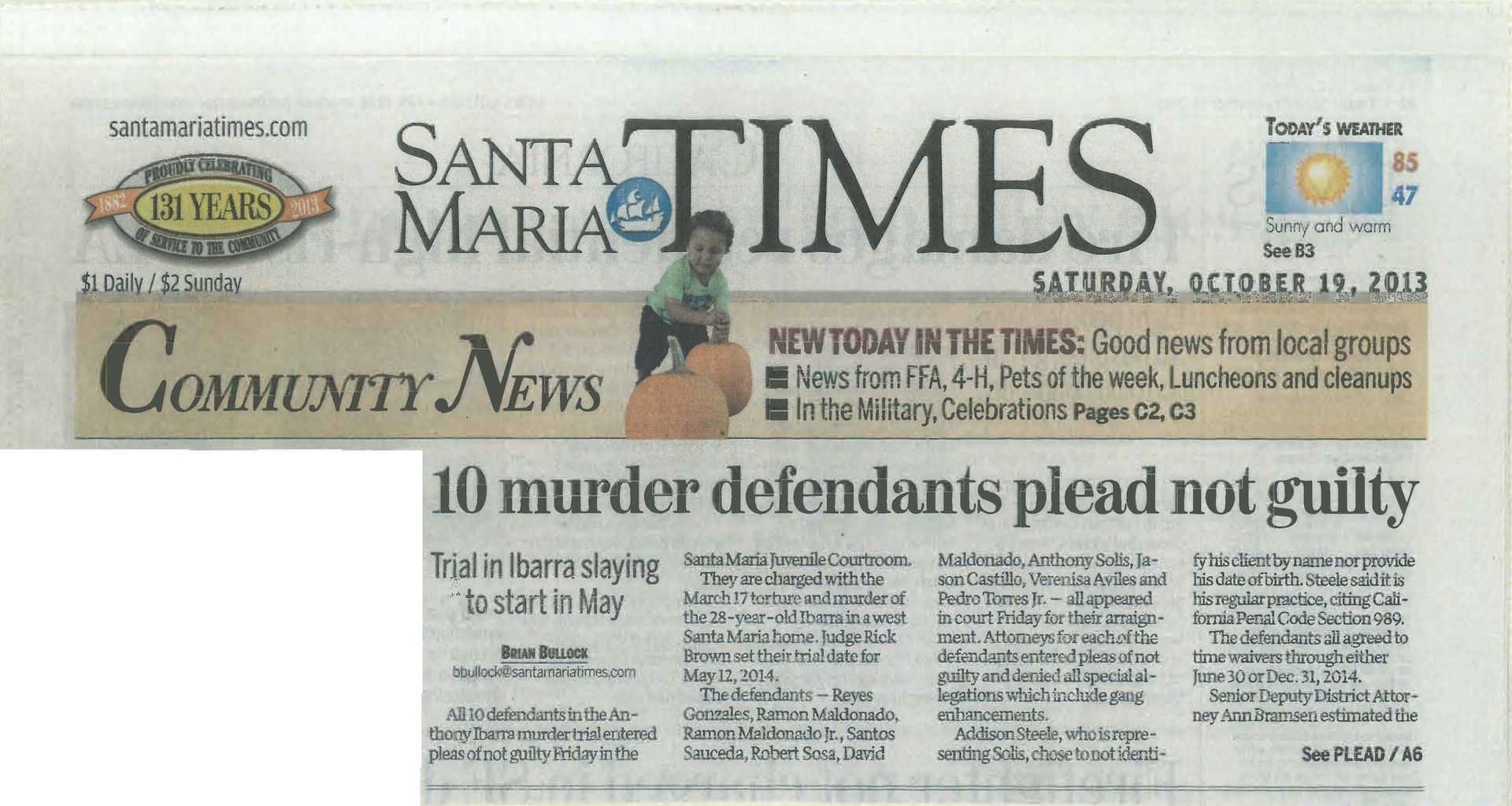
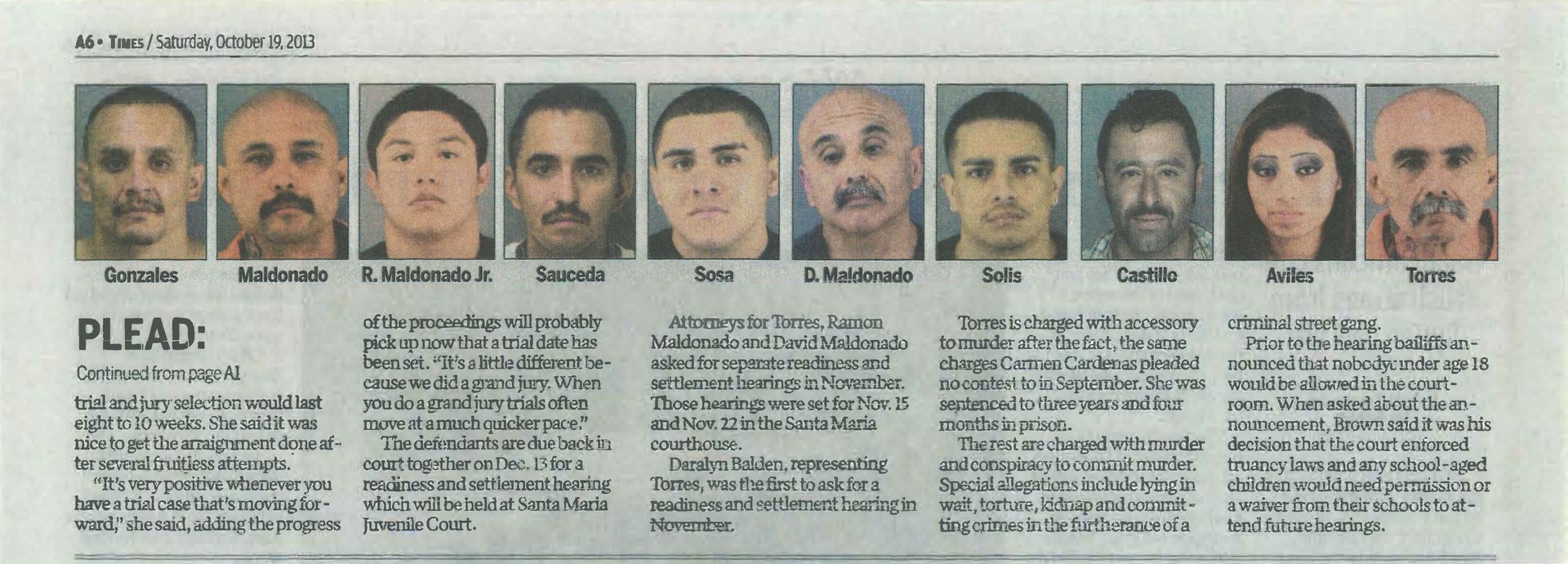
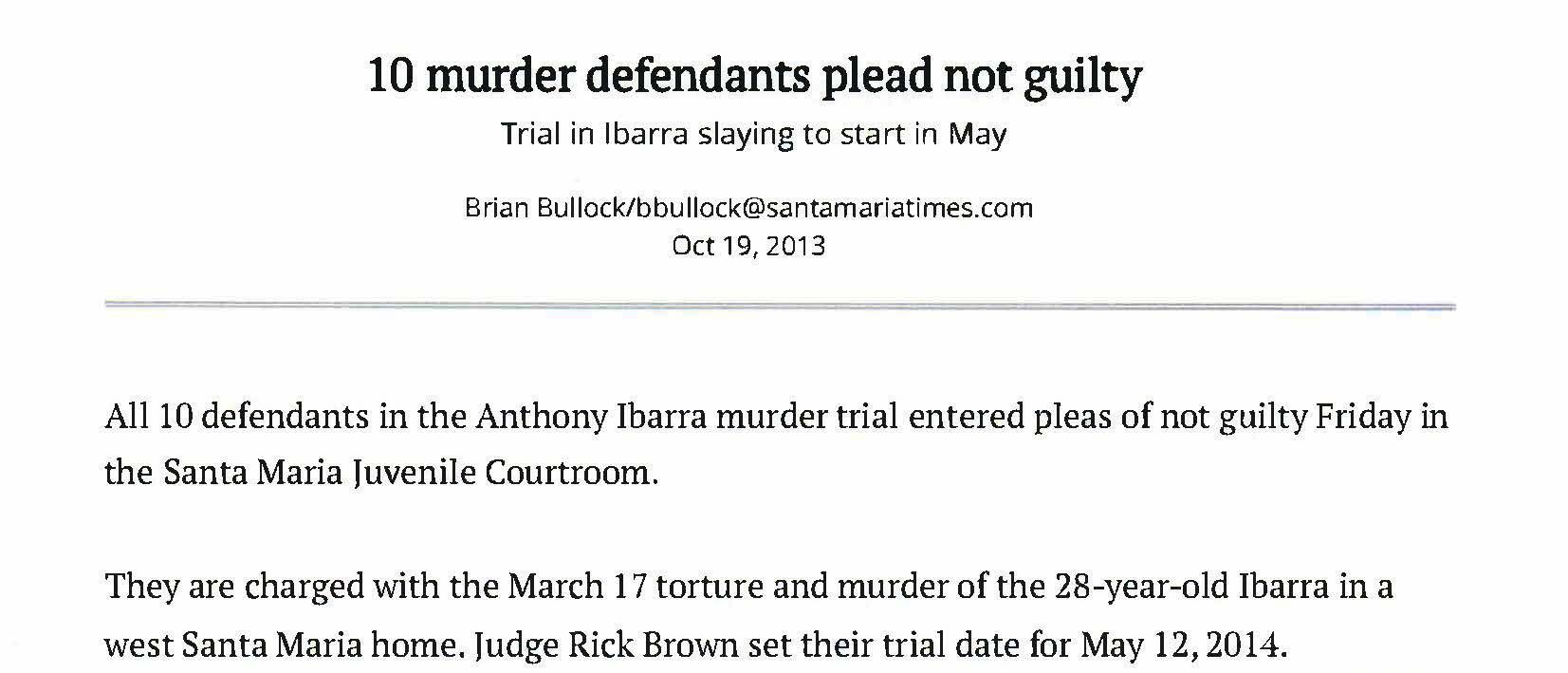

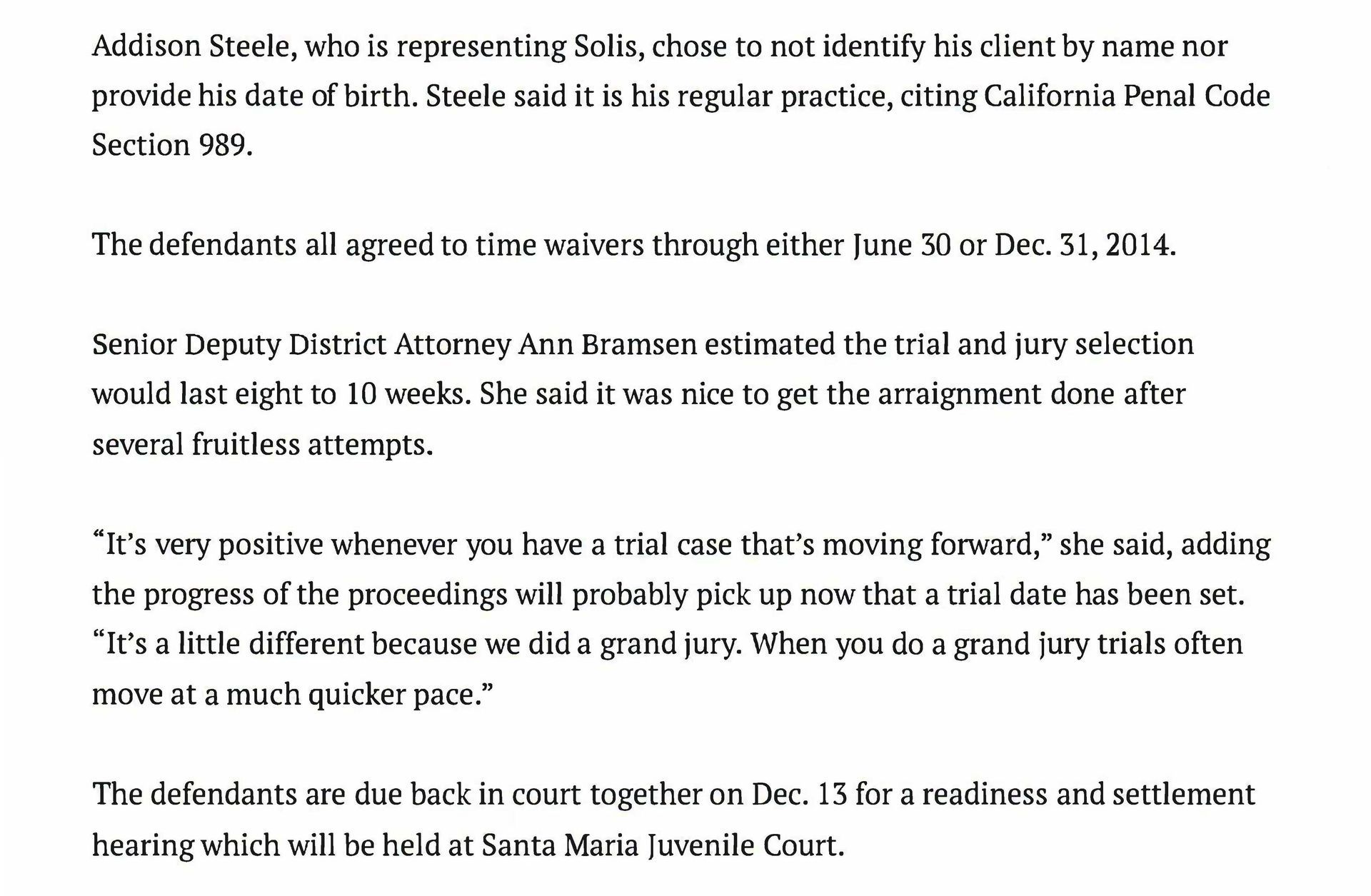
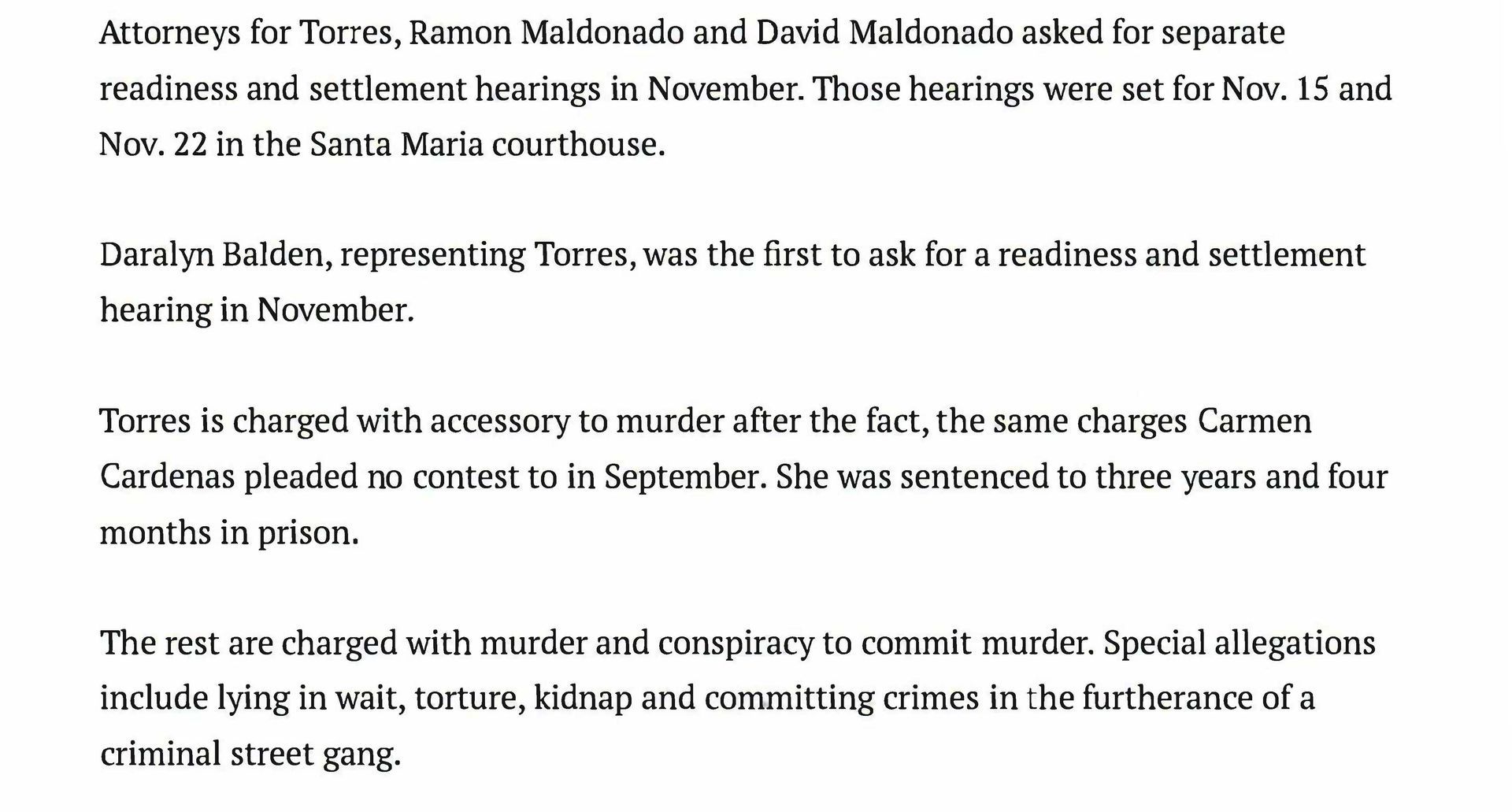




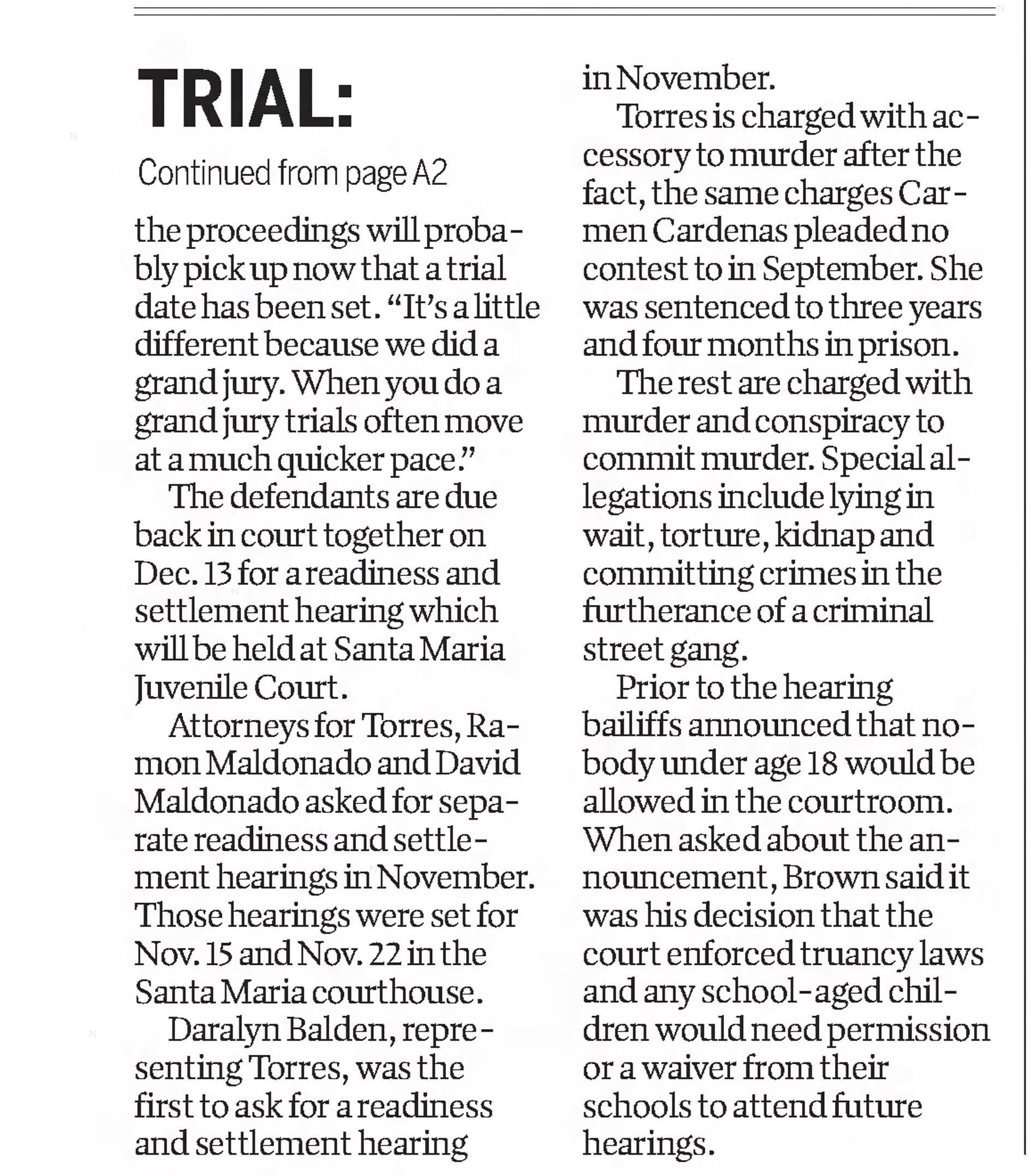
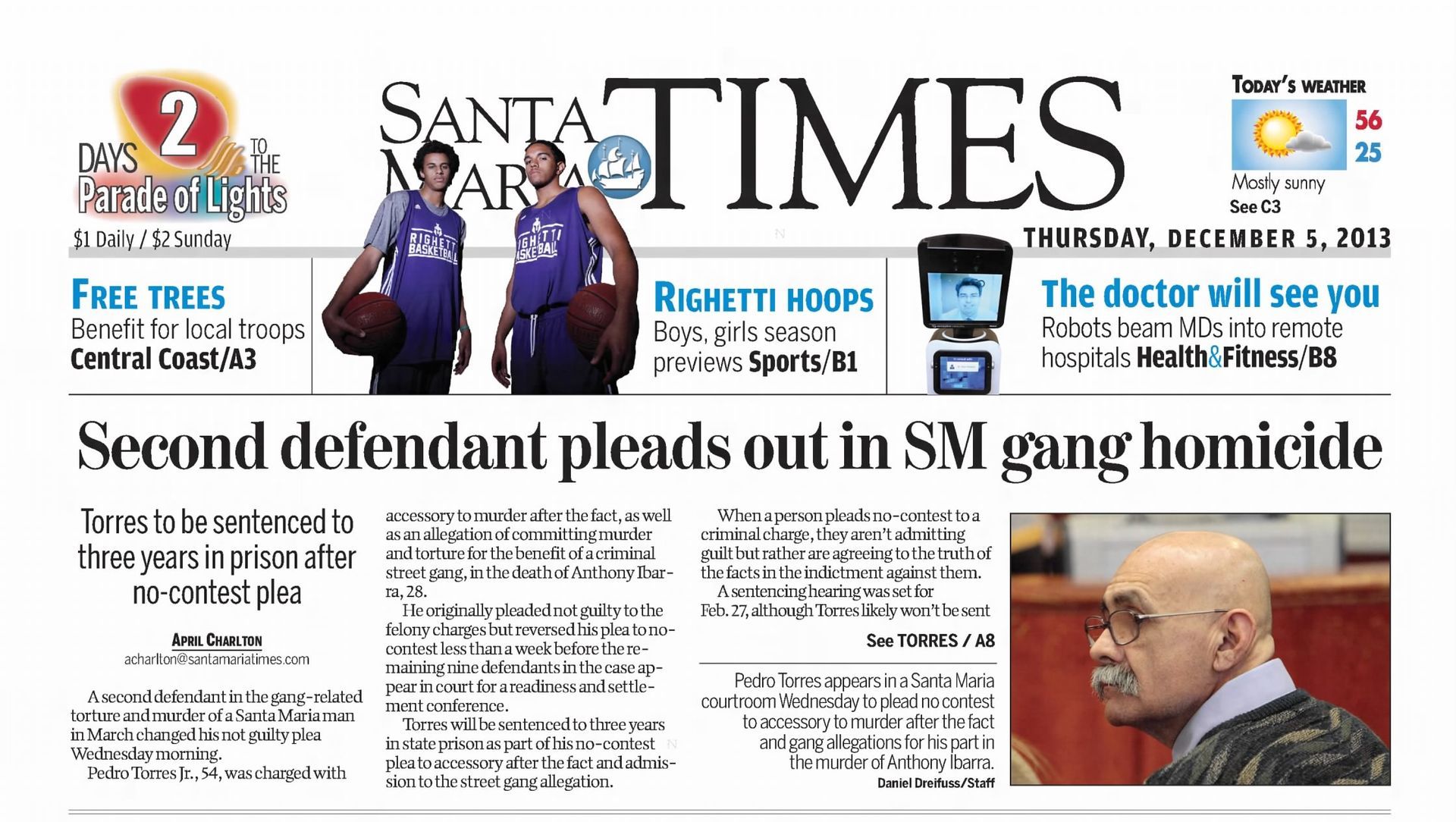

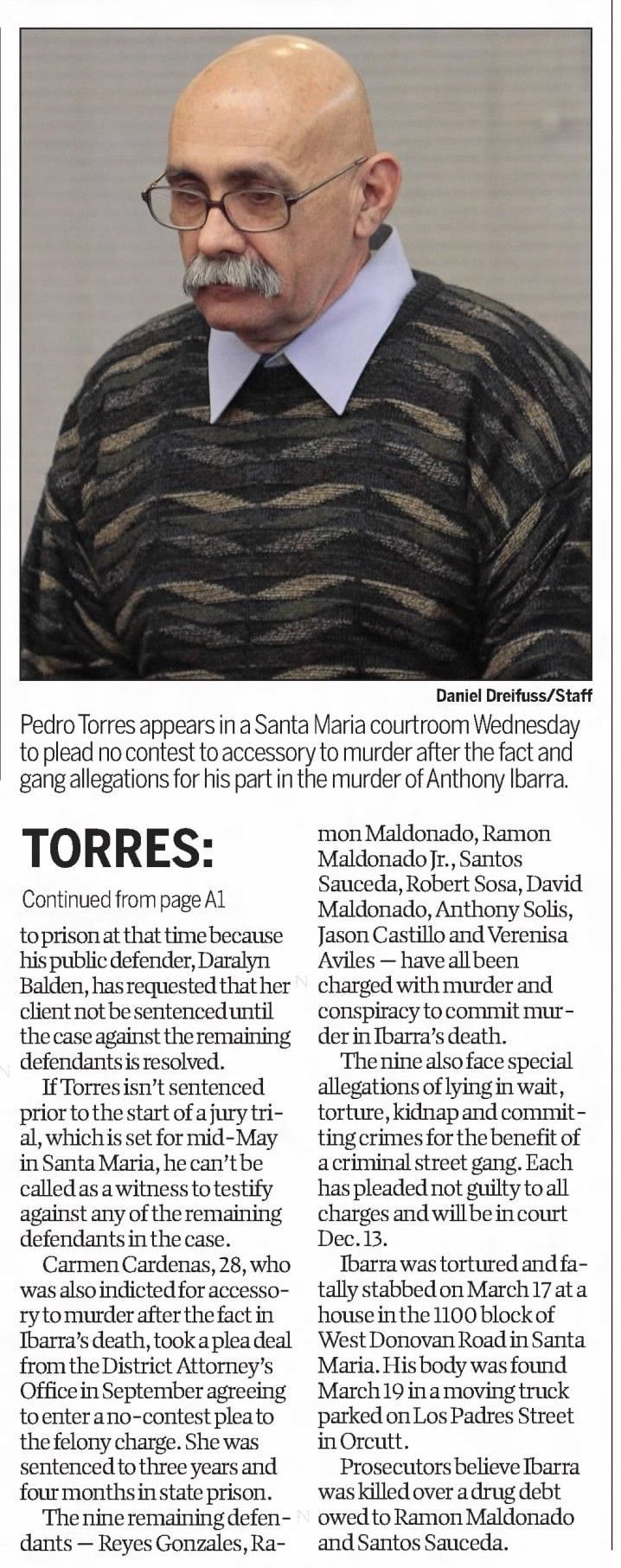

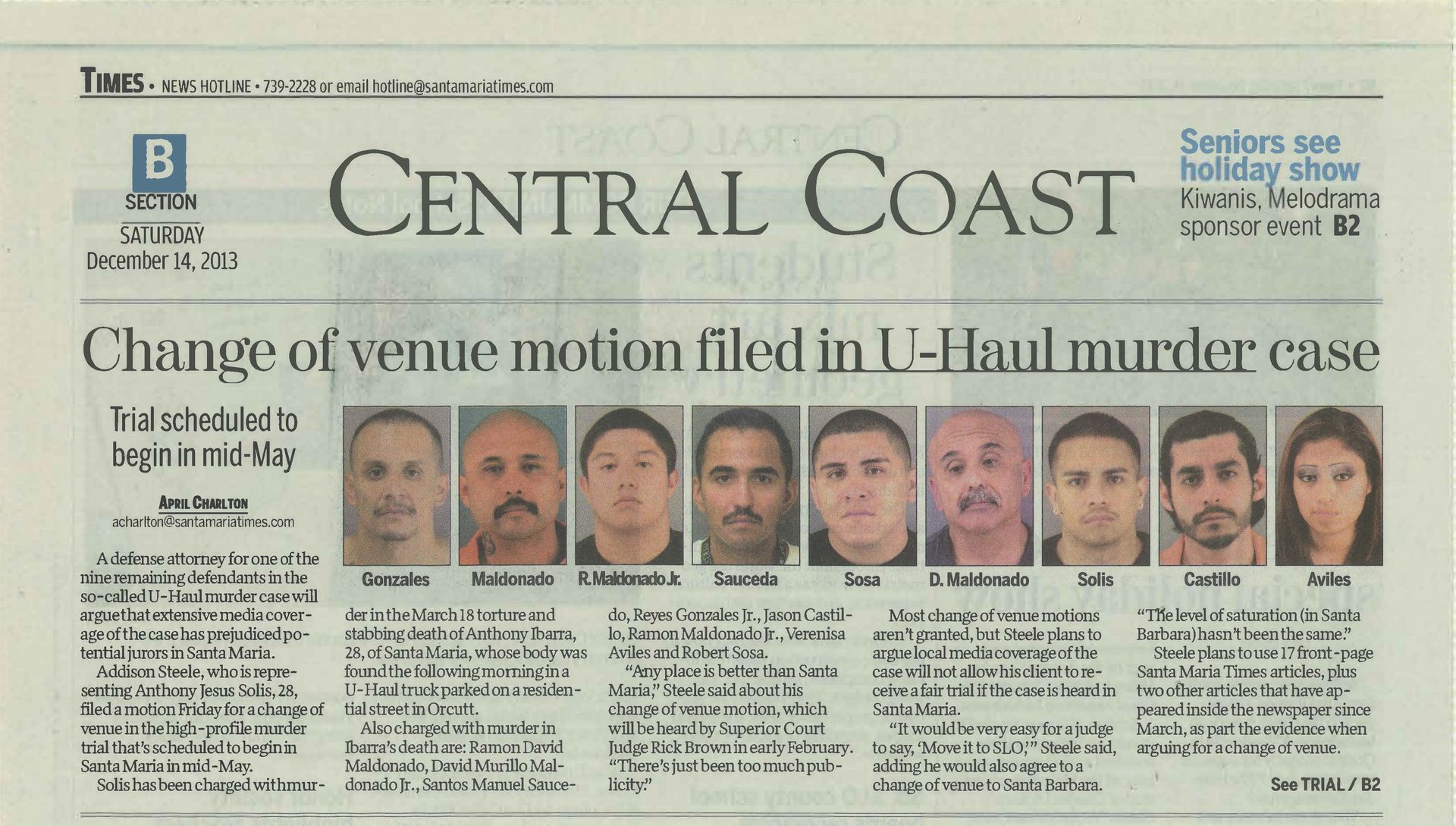

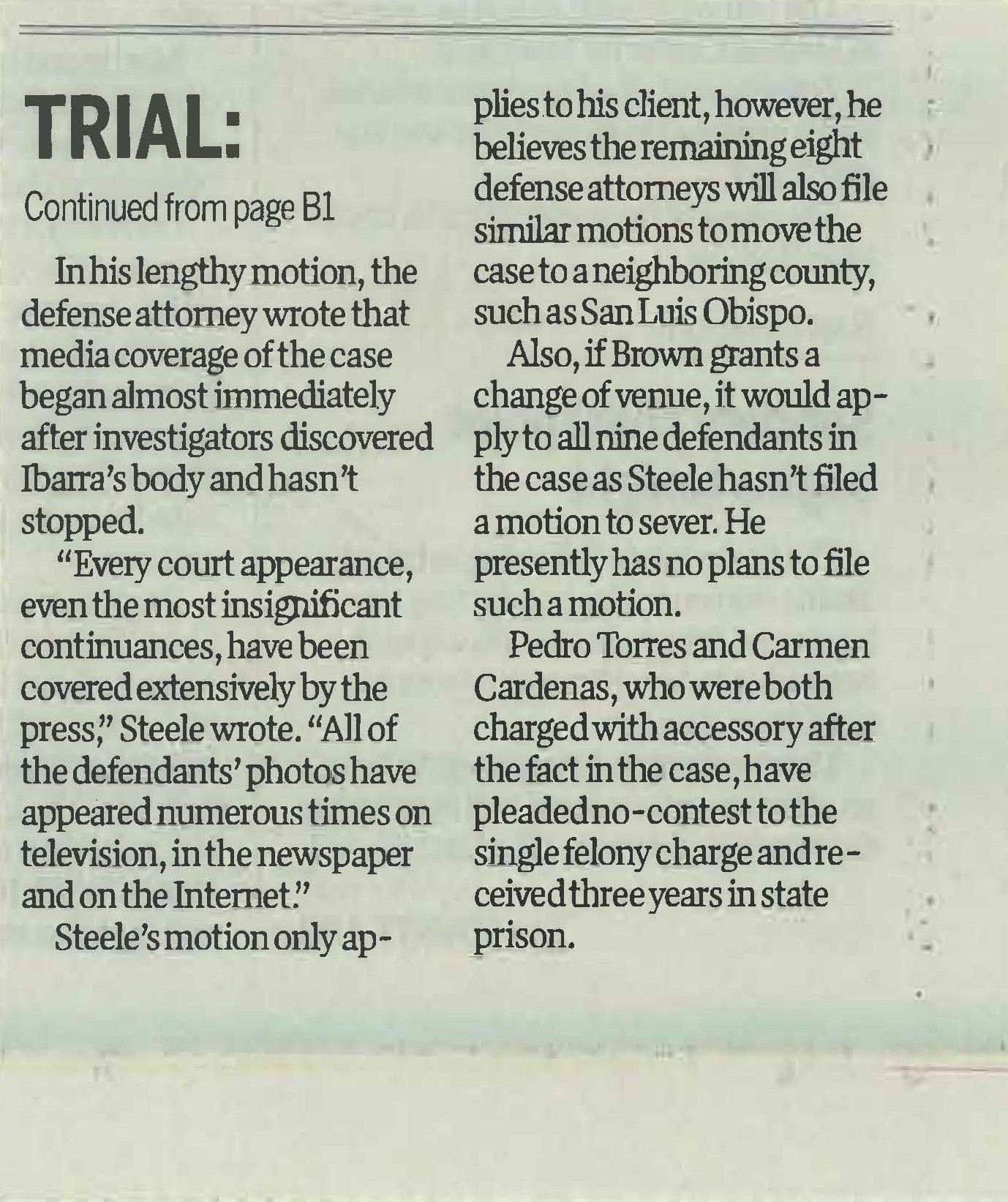








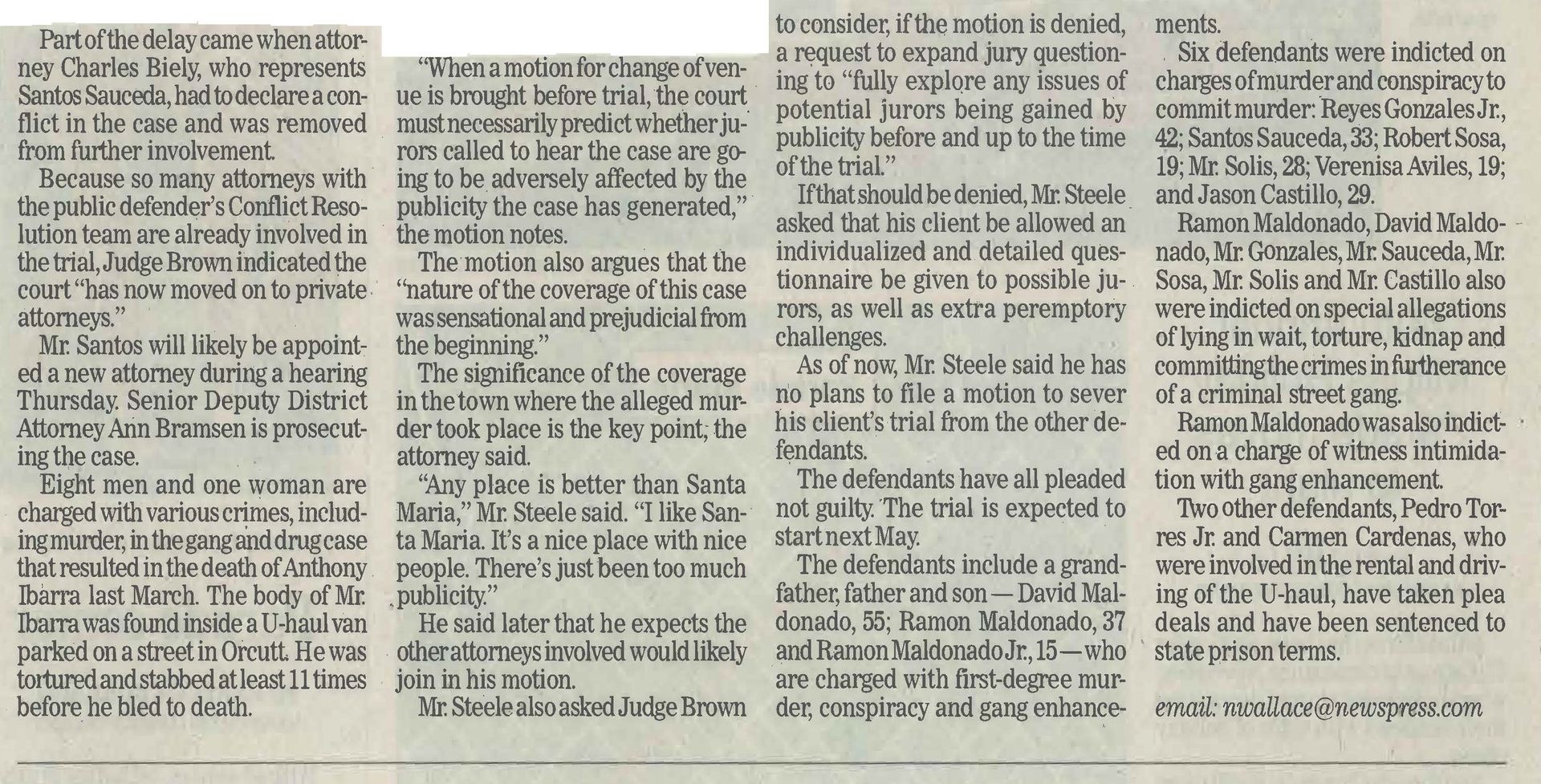
Frank G., 1351476, On April 10, 2014 case settled after opening statements for a
determinate Term
Charges: Murder (Penal Code § 187(a)), special allegations of personal use of a firearm (Penal Code §§ 12022.53(d) and 12022.5(a)), gang allegation (Penal Code § 186.22(b)(1)), a prior prison term (Penal Code § 667.5(b)), serious crime prior (Penal Code § 667(a)), and a strike prior (Penal Code § 667(c)&(e)(2)/1170.12(c)(2)), Attempted Murder (Penal Code § 664/187(a)), special allegations of great bodily injury (Penal Code § 12022.7(a)) and personal use of a knife (Penal Code § 12022(b)(1)) and Gang Activity.
Exposure: 118 years and eight months to life in prison
Outcome: The resolved after opening statements for a determinate term of 26 years
This was a challenging case because Frank was charged in two separate incidents, a shooting that resulting in the murder charge and a completely unrelated stabbing that resulted in the attempted murder charge. What came out during trial was that the person that was shot was threatening and extorting money from Frank and a female friend of his. As a result of the threats and extortion Frank was armed with a gun. The incident occurred when the person that was shot attacked Frank with a knife and Frank fired at him in self defense. The other incident was an event when Frank wasn’t even present and it was brought out at trial who the actual stabber in fact was. After the opening statements district attorney realized that Frank had a strong self defense claim. The district attorney then offered to dismiss all the life sentence counts and settled the case for 26 years. It’s a long sentence, but it made it so the Frank could avoid the risk of having such a long sentence that he would be sure to spend the rest of his life in prison.
This is trial exhibit 103 that was shown to the jury during Addison’s opening statement. The blanket was left behind after the body was removed and is not where the body was found. The body was found closer to the knife, which is next to evidence tent number two on the left side of the photo. The knife was right where it fell out of the decedent’s hand after he was shot in self defense by Frank after he attacked Frank with the knife.

This is trial exhibit 104. It is a closer photo of the knife.

Here you can follow the press on Frank's case from beginning to end
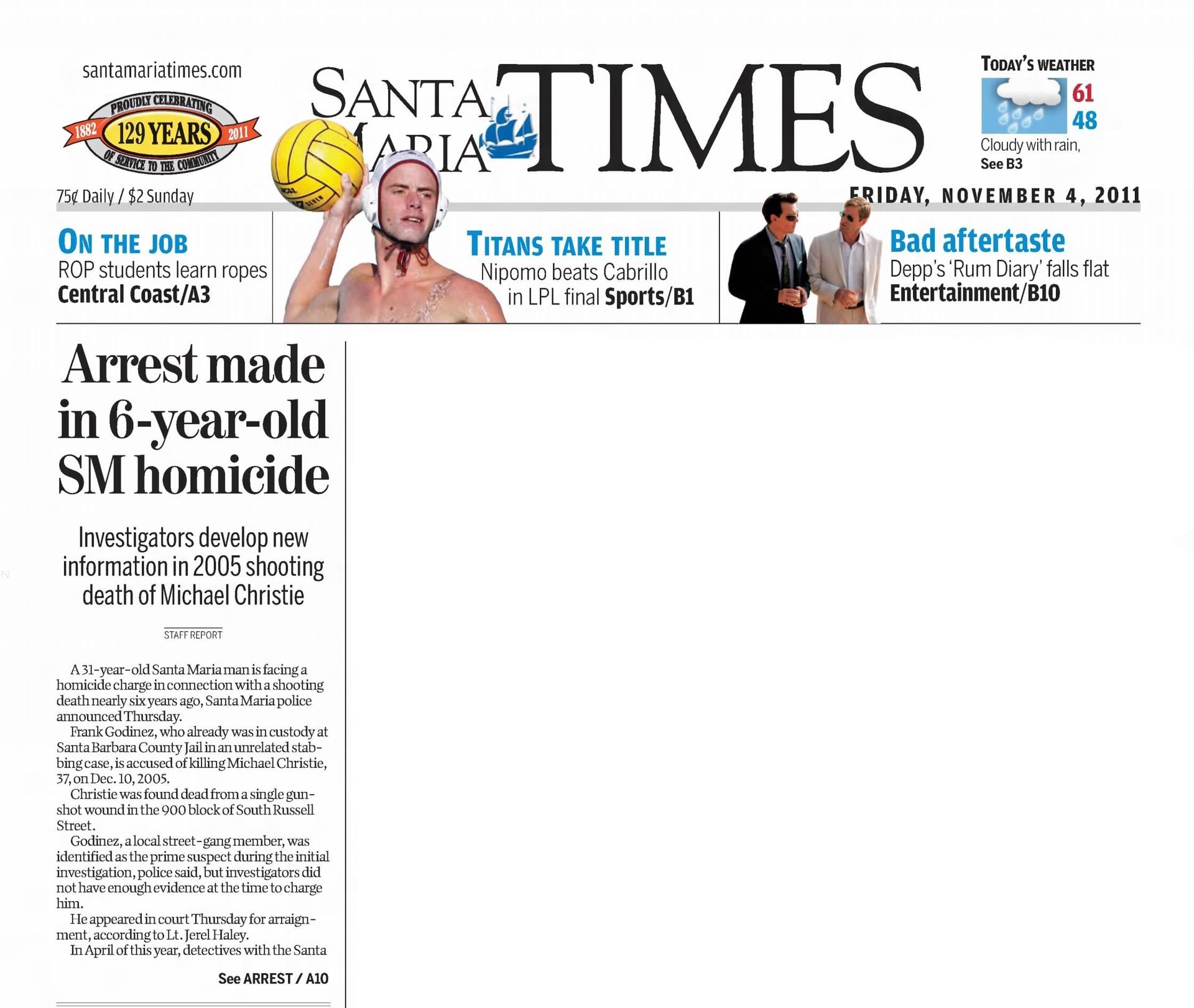


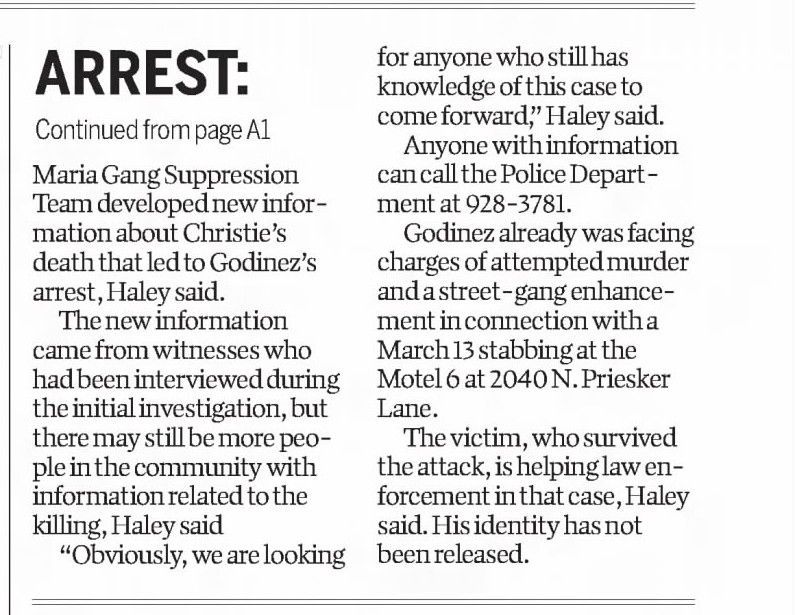




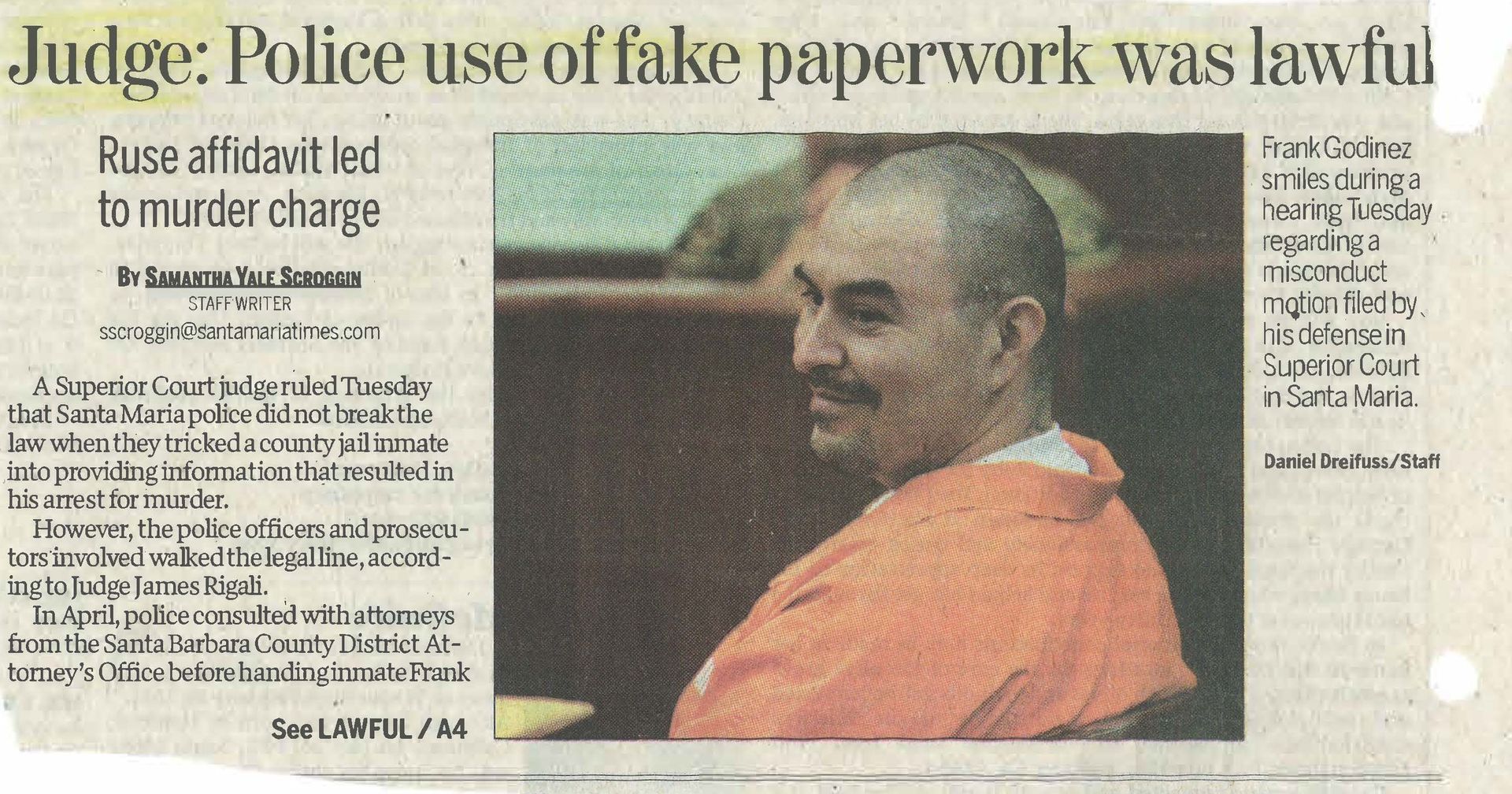
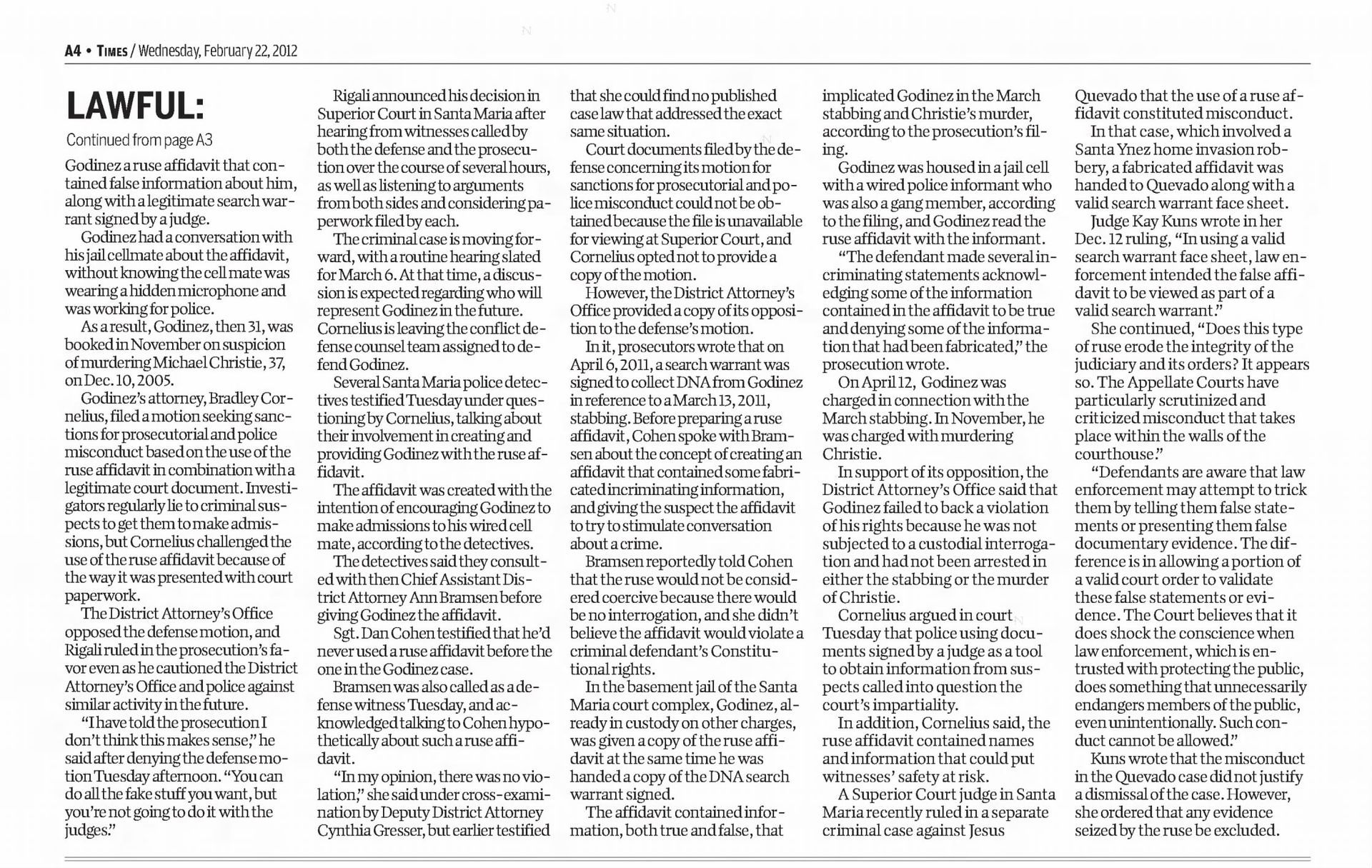

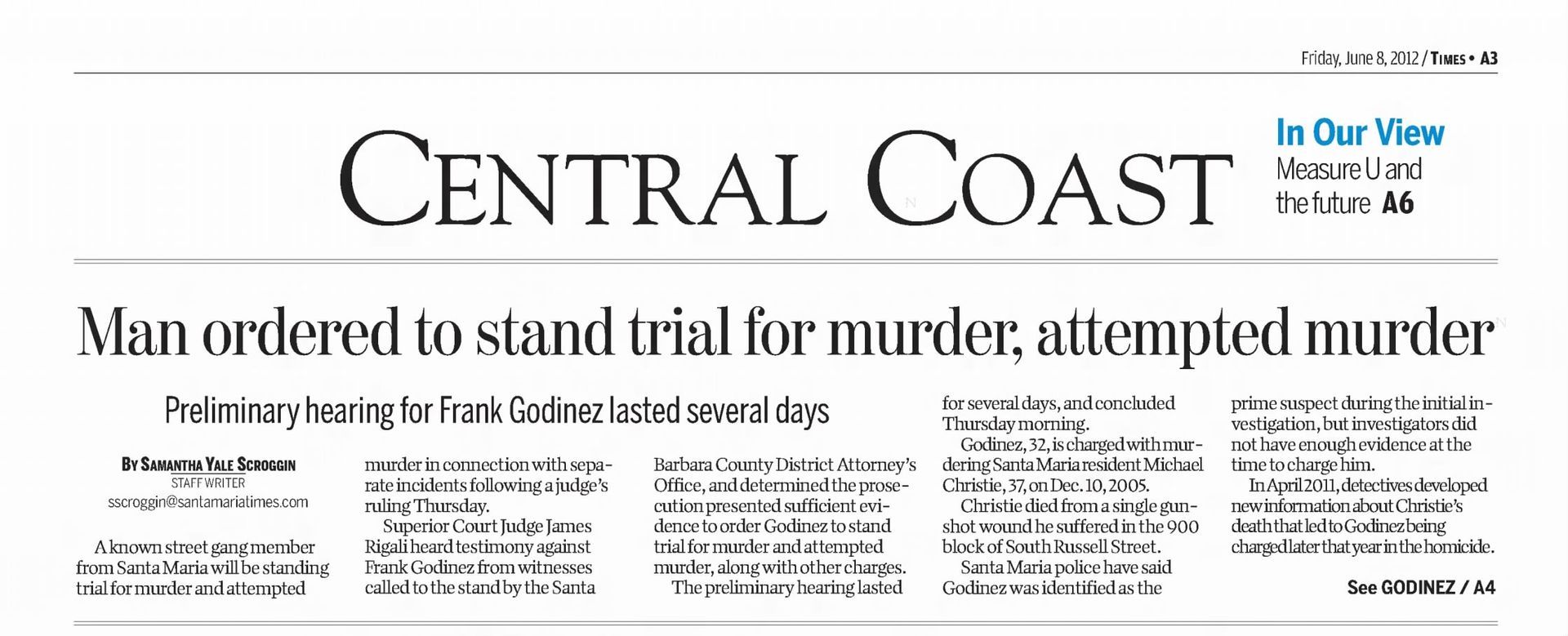

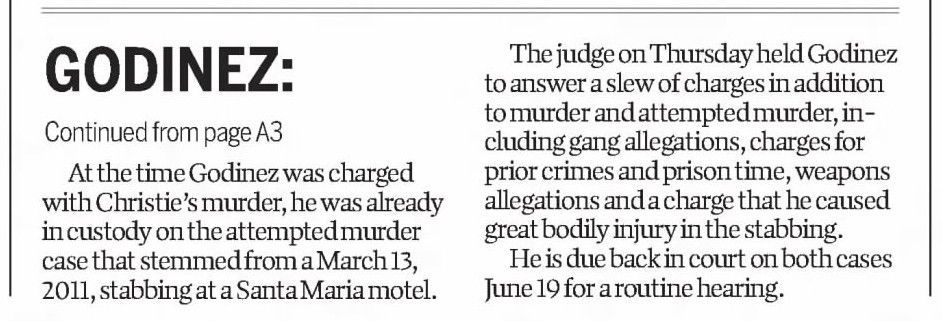


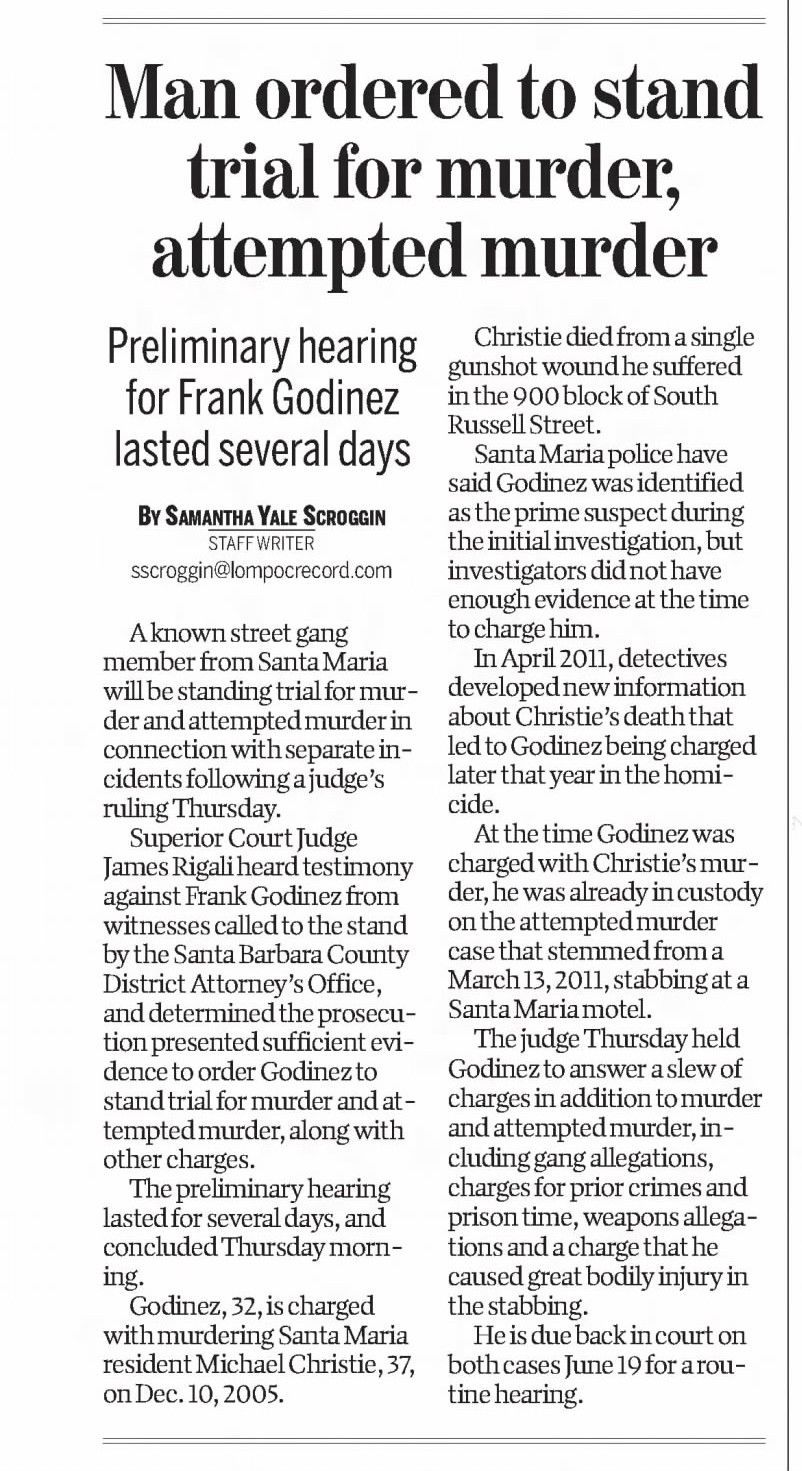


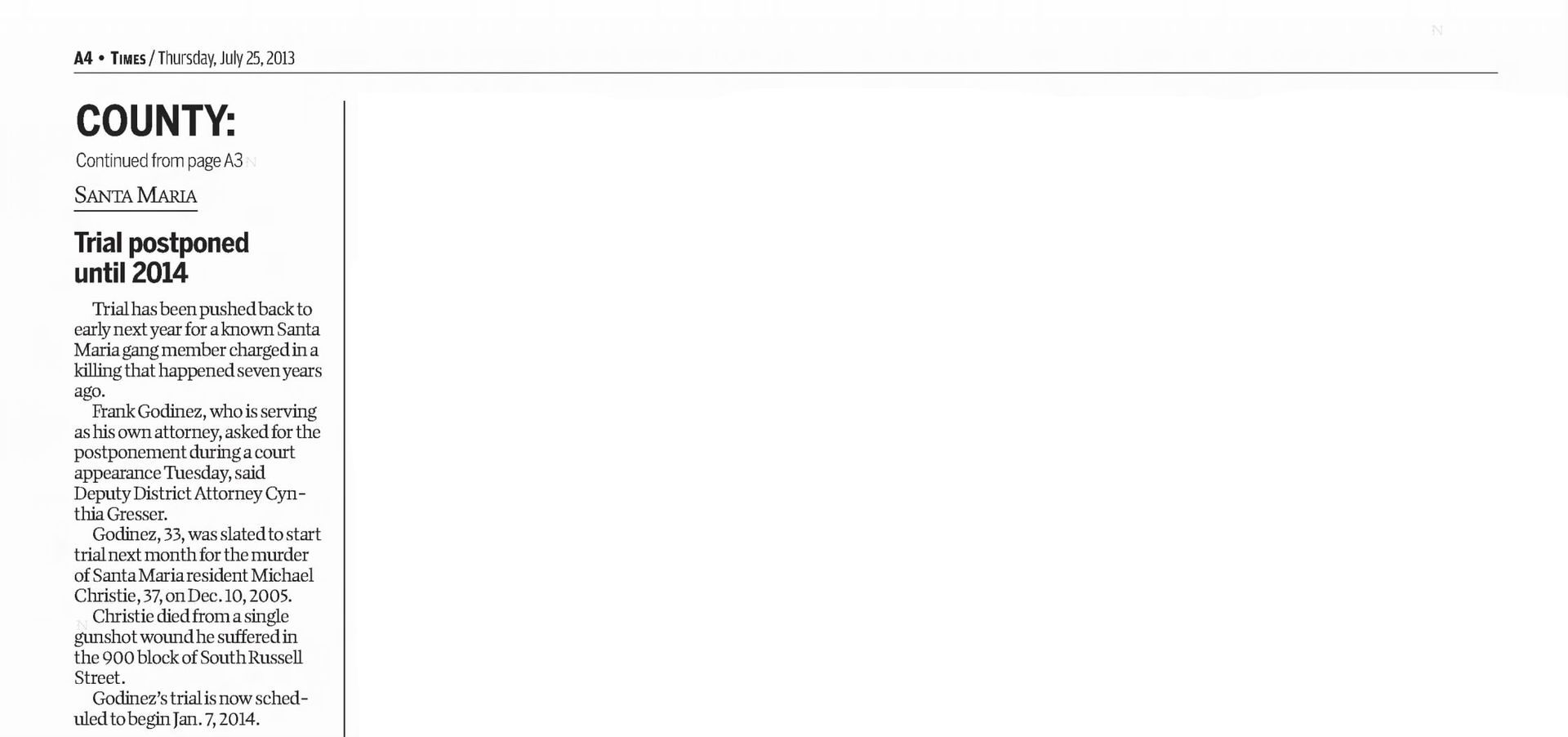




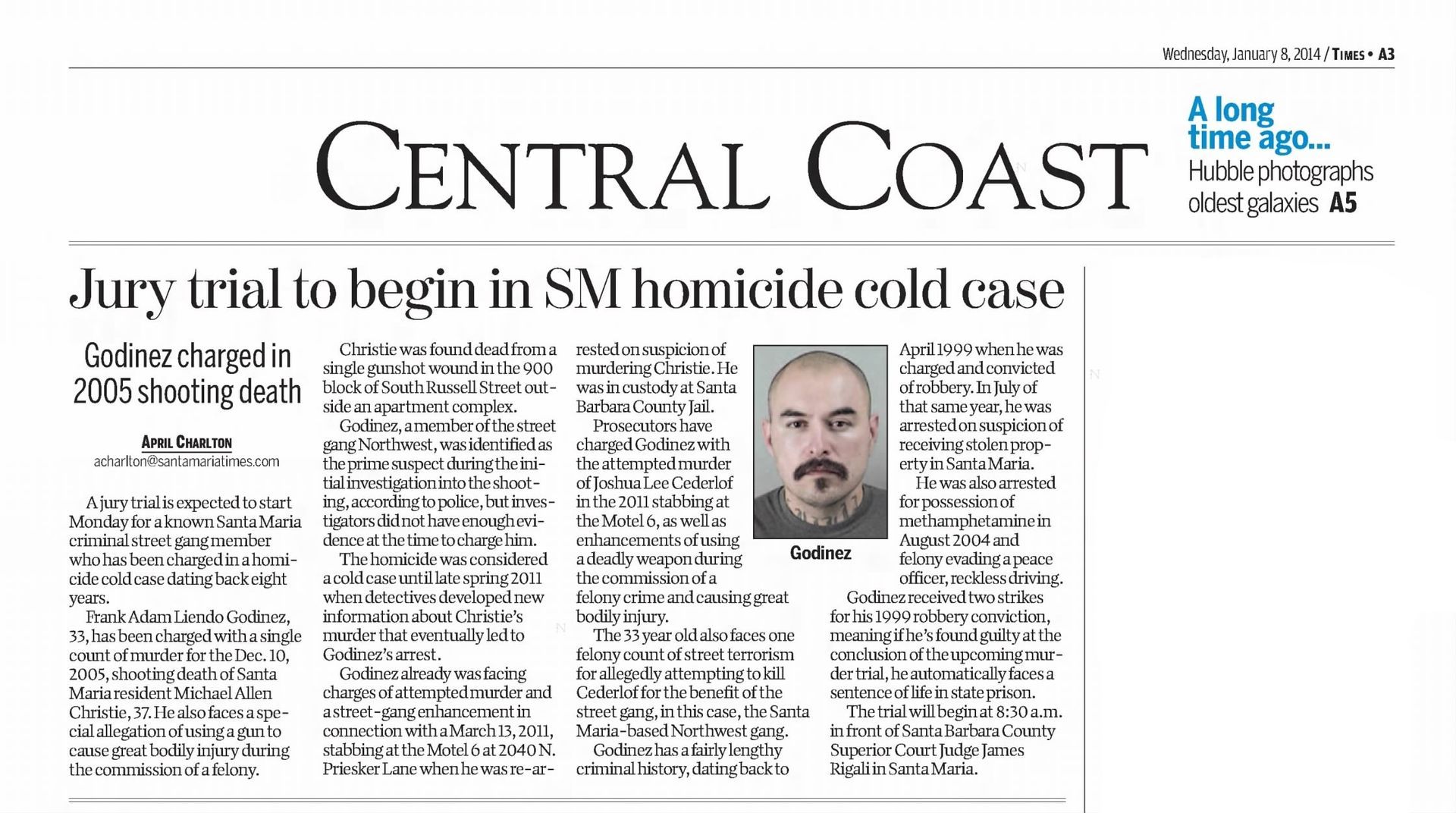


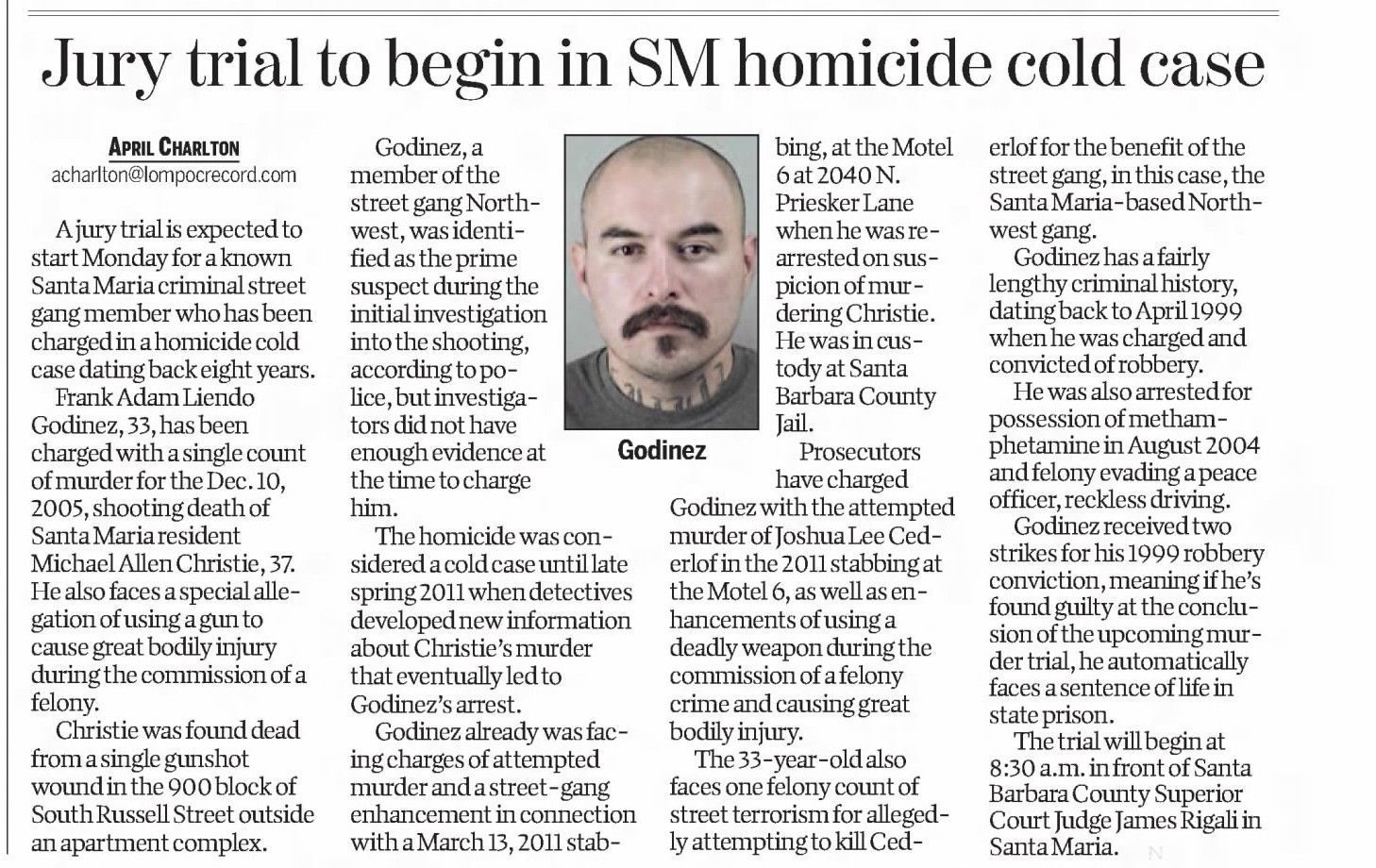

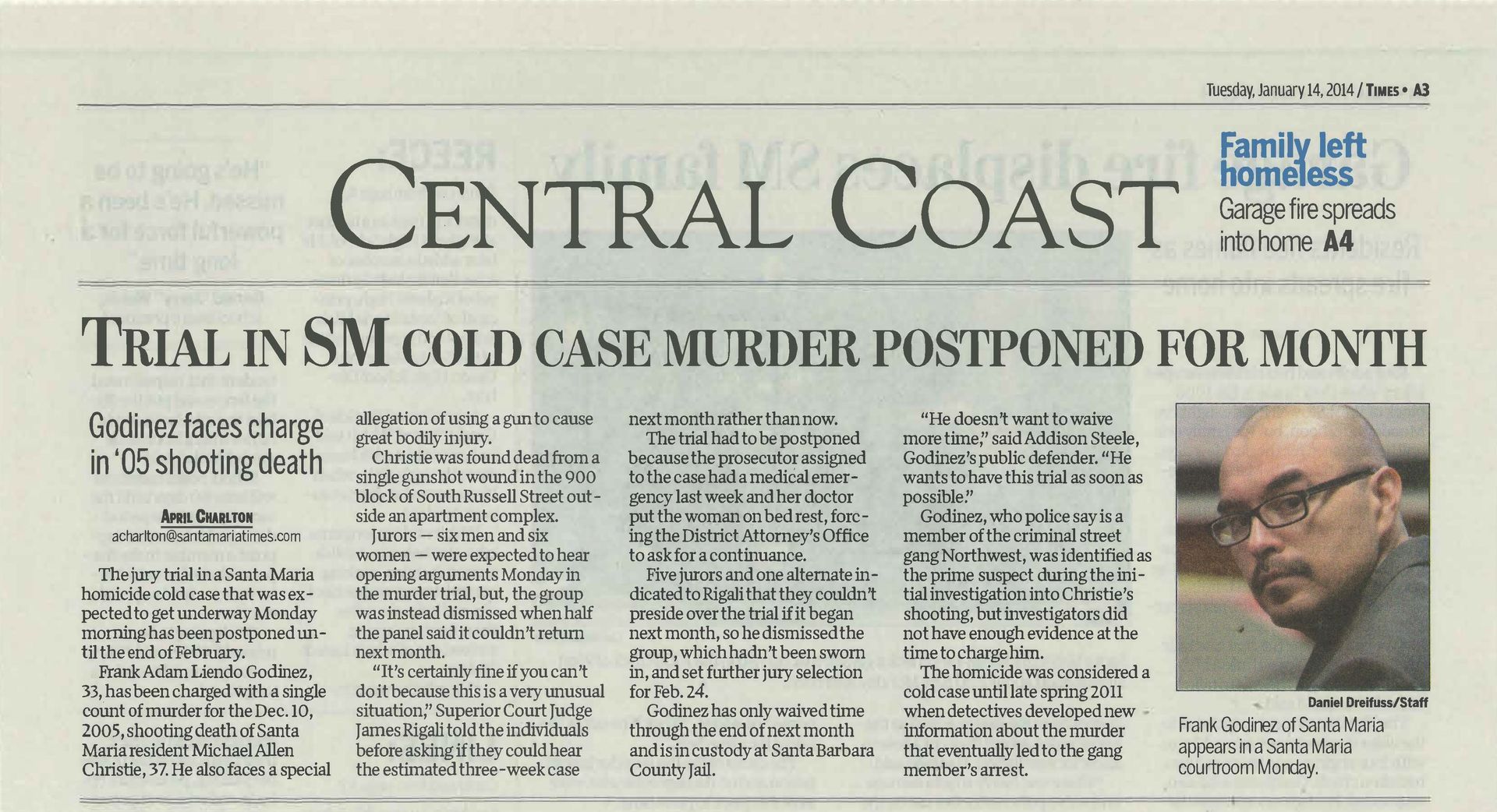








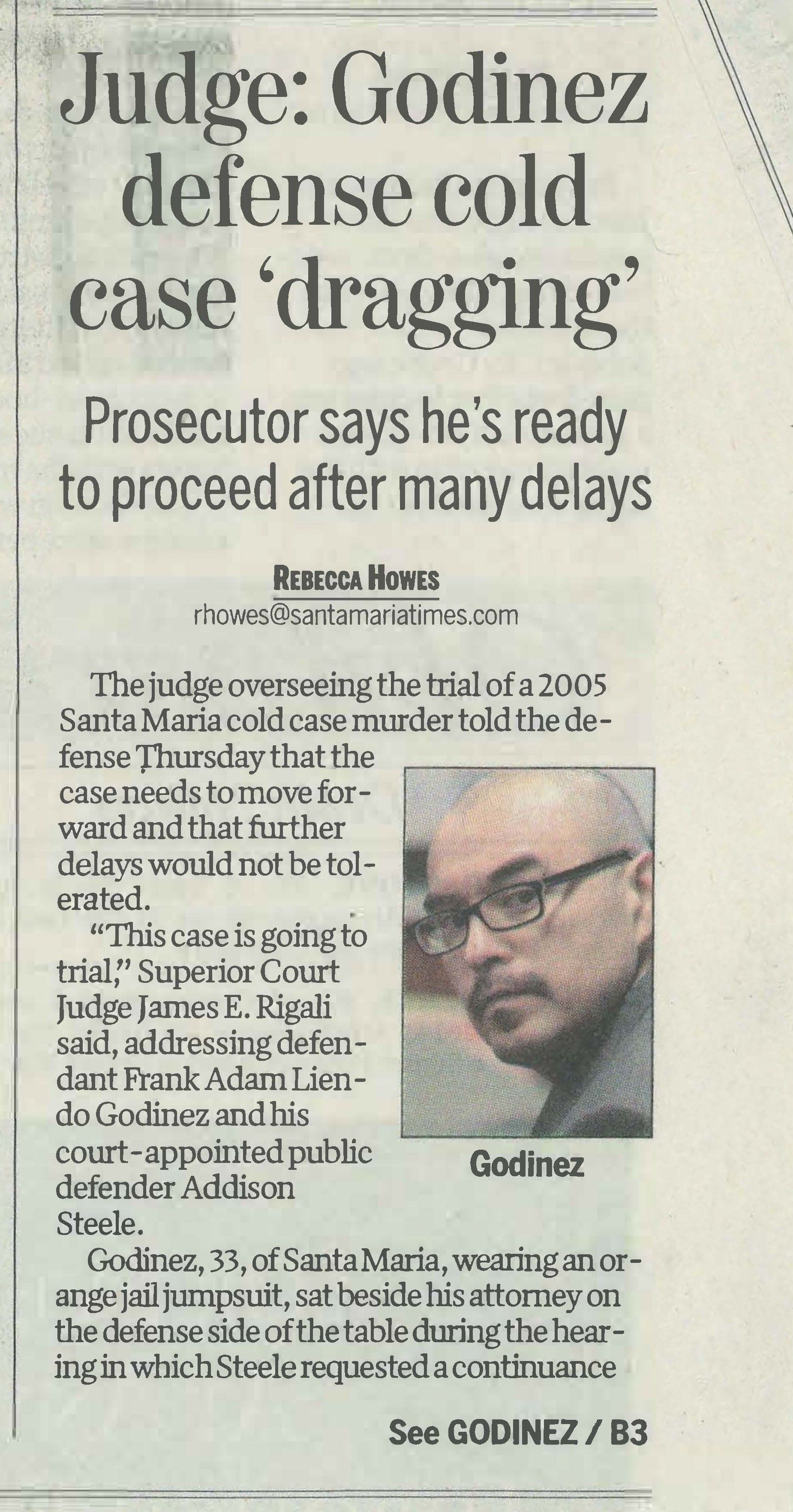
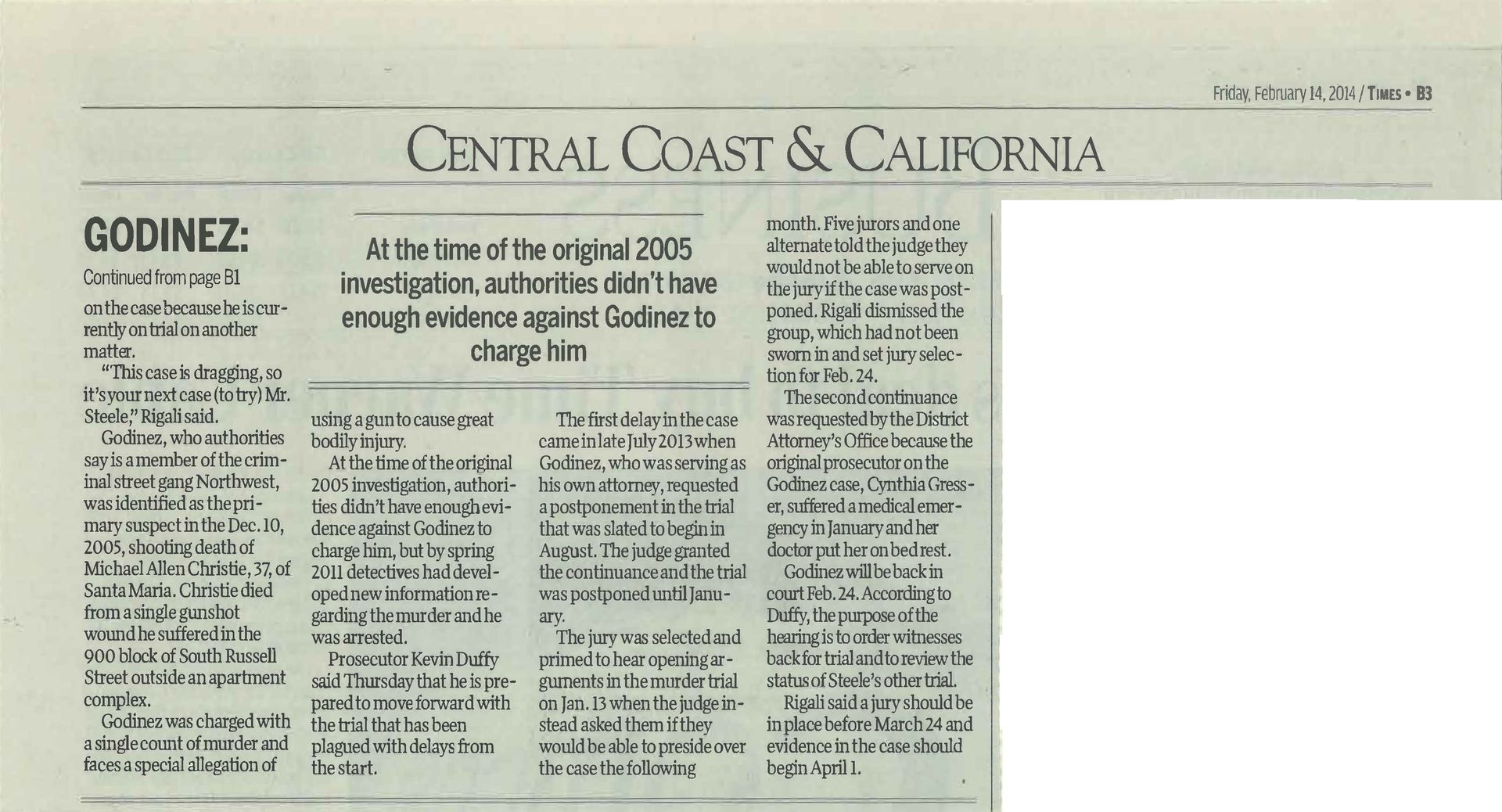
Rudy R., 1358729, Acquitted of all charges on March 27, 2014
- Charges: Murder (Penal Code § 187(a)), with an allegation that the murder was committed at the direction of, for the benefit of, or in association with a criminal street gang (Penal Code § 186.22(b)(1)), with three prior terms in prison alleged (Penal Code § 667.5(b)).
- Exposure: Rudy was facing thirty-three years to life in prison.
- Outcome: Rudy was acquitted of first-degree murder, acquitted of the lesser degree of second-degree murder, and acquitted of the lesser included offense of voluntary manslaughter, a gang allegation was not reached by the jury because of the acquittal on all charges.
Rudy's case was particularly challenging. The district attorney's theory of the case was that Rudy was a Northwest gang member and was, "The sergeant on the block," and that his co-defendant wanted to be in the gang, although at the same time they alleged that he was Guada gang member. The district attorney postulated that Rudy called a hit on the decedent, which his co-defendant then carried out. In fact, Rudy wasn't even a member of the Northwest gang and had never been a member of a gang. He was from the neighborhood, but not a member of the gang. The evidence that Addison and Rudy presented at trial was that Rudy was just a low-level drug dealer that was selling barely enough methamphetamine to support his own addiction and keep him in a cheap room at a residential motel that was a den of drug dealers and drug users. The man that was killed had recently gotten out of prison and decided that he could extort money from Rudy by threatening him. Rudy's co-defendant took offense to the man's threats and followed him for about one hundred feet as he left the motel. His co-defendant then confronted the man and stabbed him in the neck. The man succumbed to his wound there at the scene as police and first responders tried to save him. The jury acquitted Rudy of all charges finding that there wasn't proof to support the district attorney's theory. Rudy's co-defendant was convicted of second degree murder.
This is the press from when Rudy was acquitted


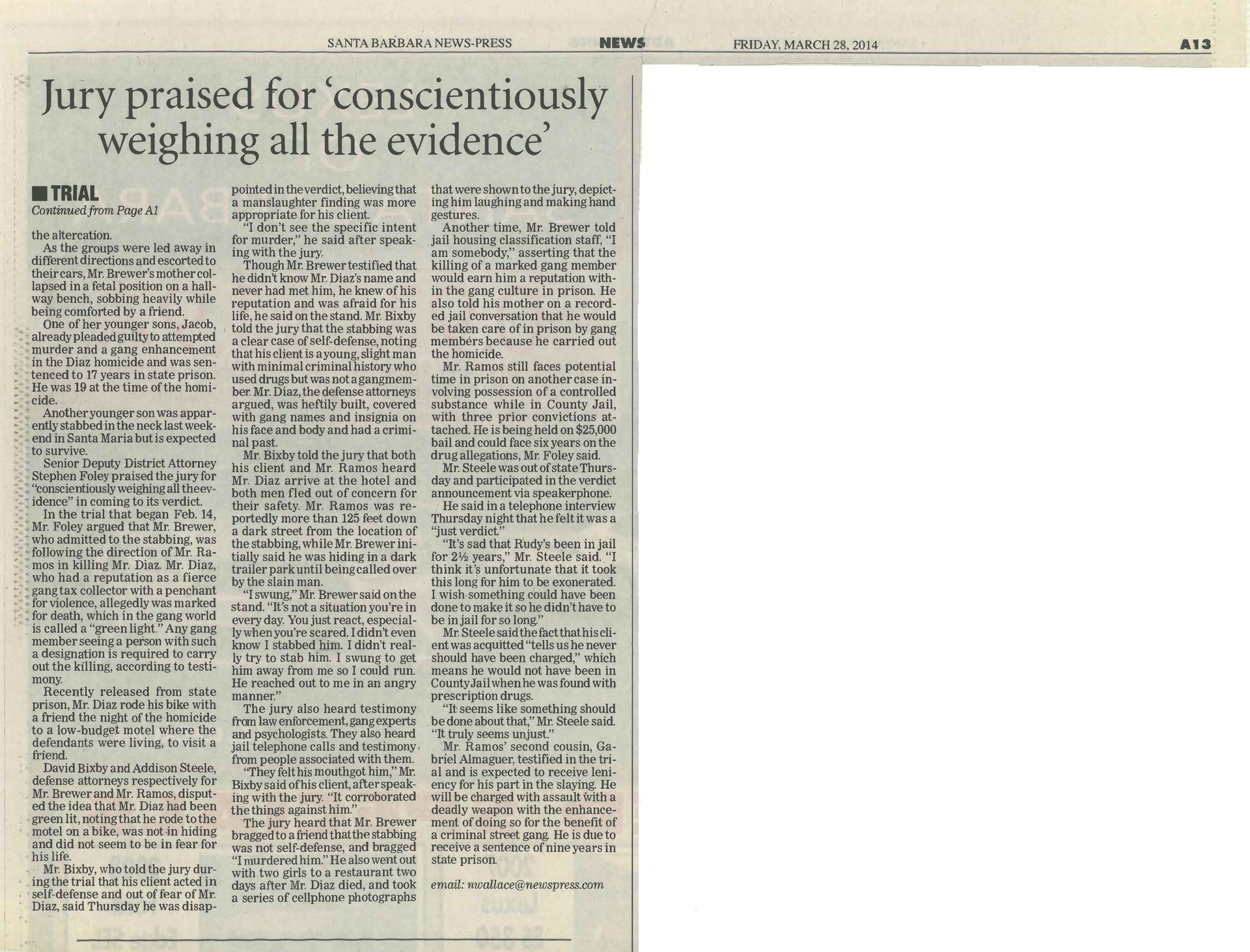
This is a slide from Addison's closing argument that sums up the whole case.

This is the investigator on the case, Addison and Rudy not too long after he was acquitted of all charges
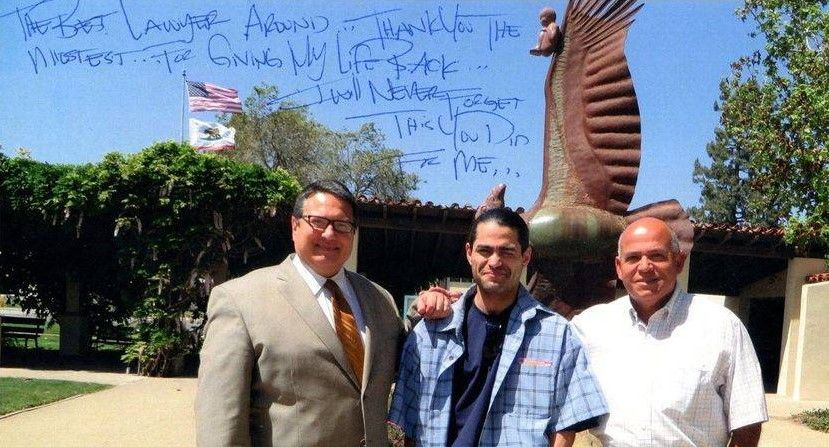
Here you can follow the press on Rudy's case from beginning to end



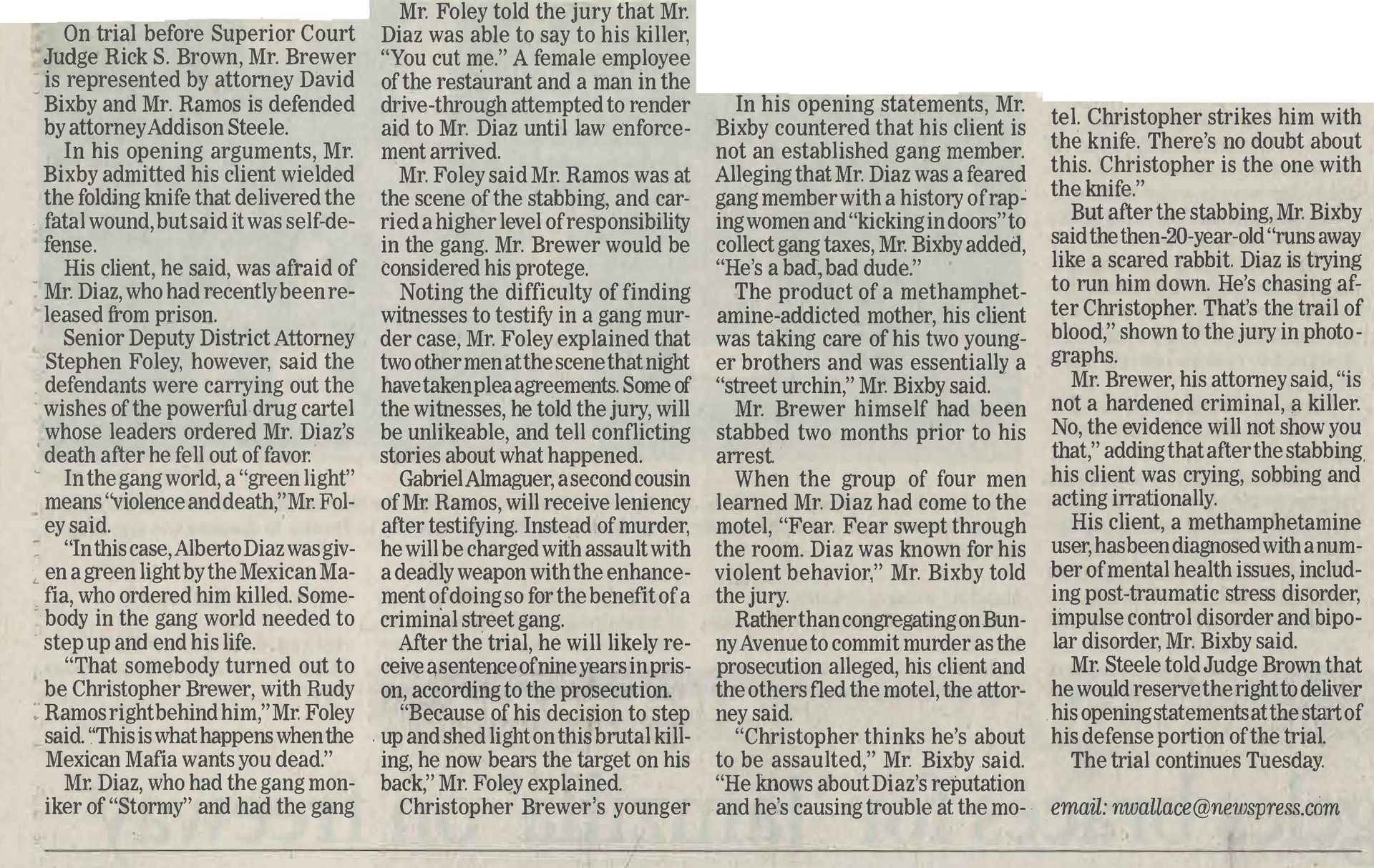


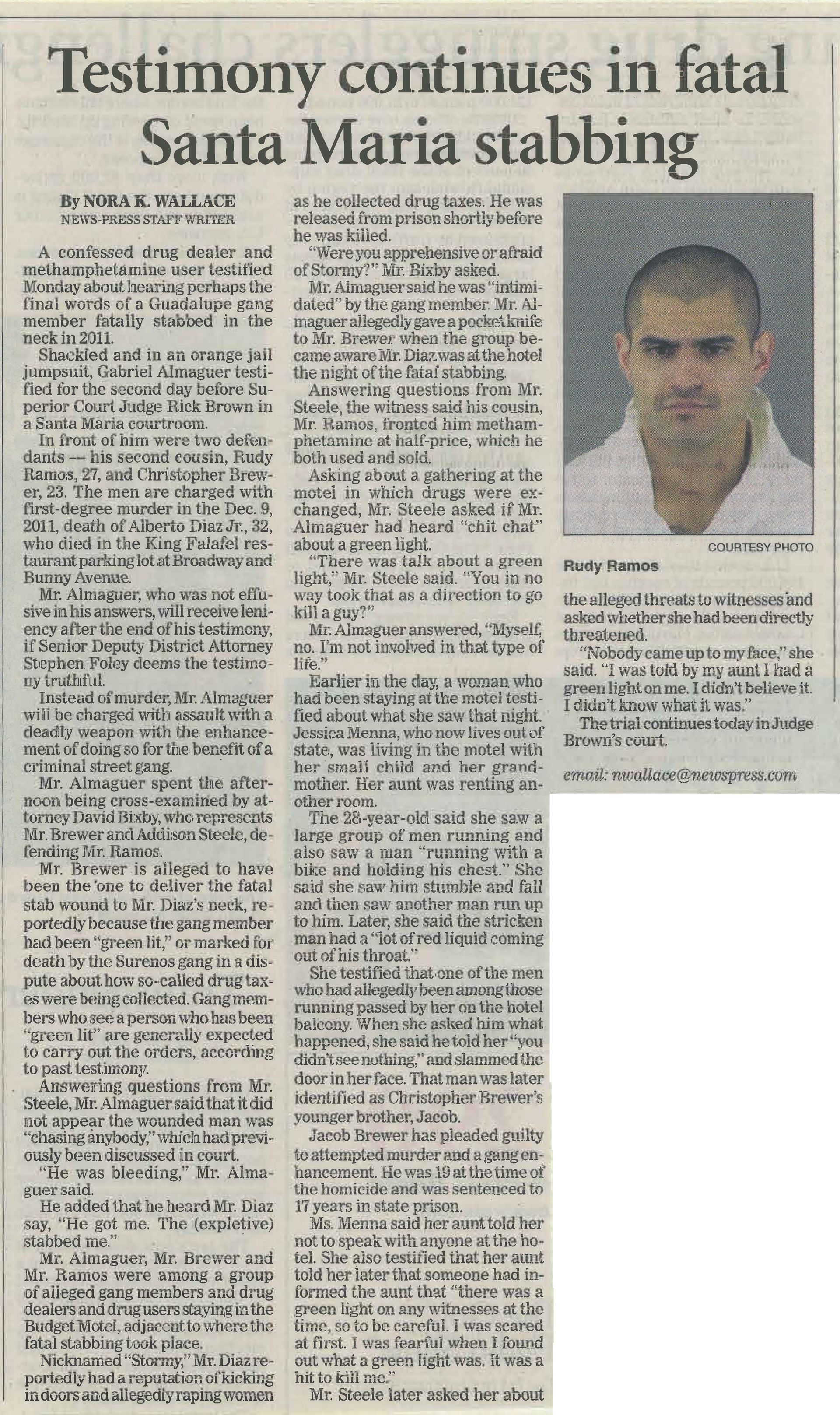




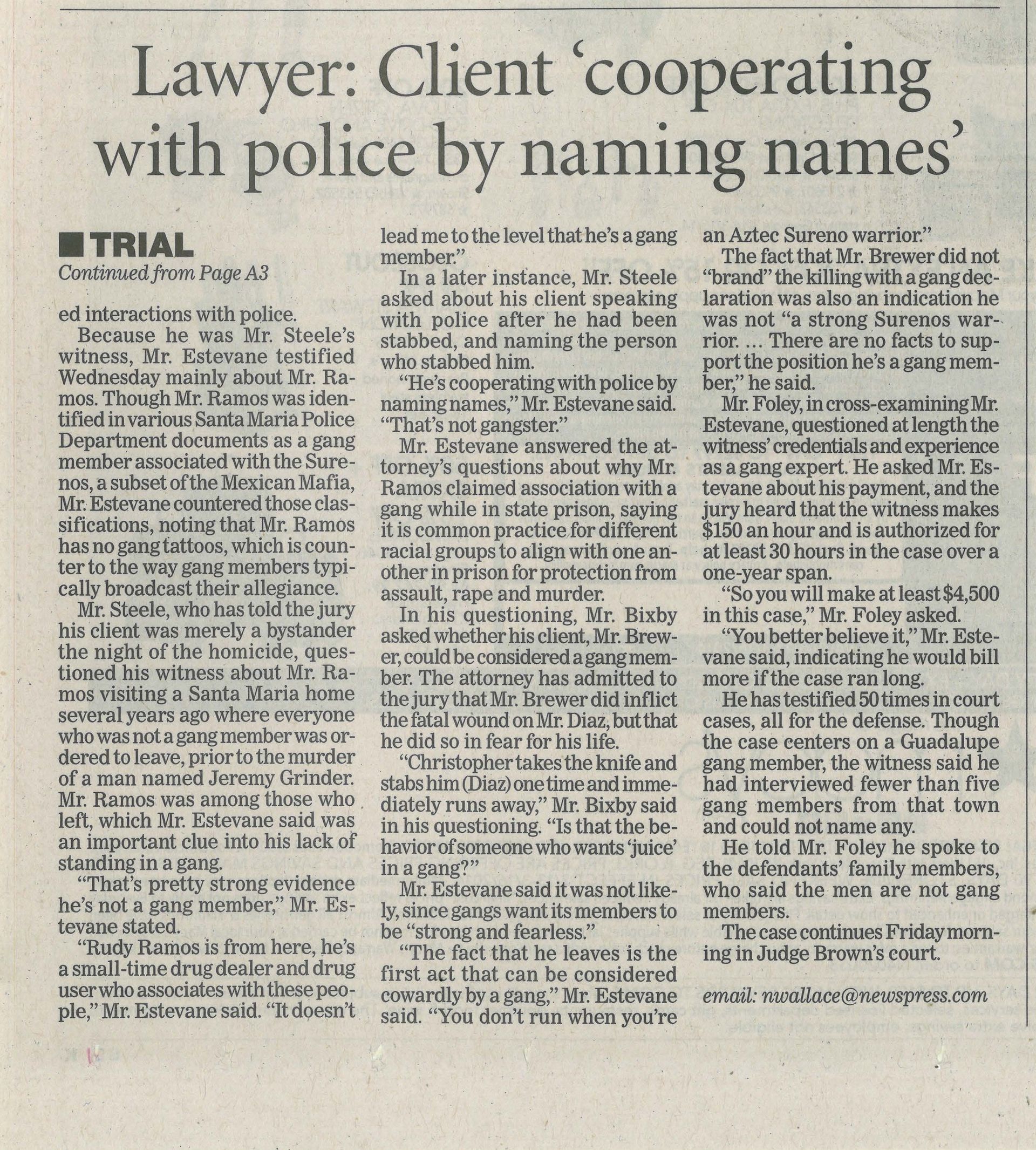





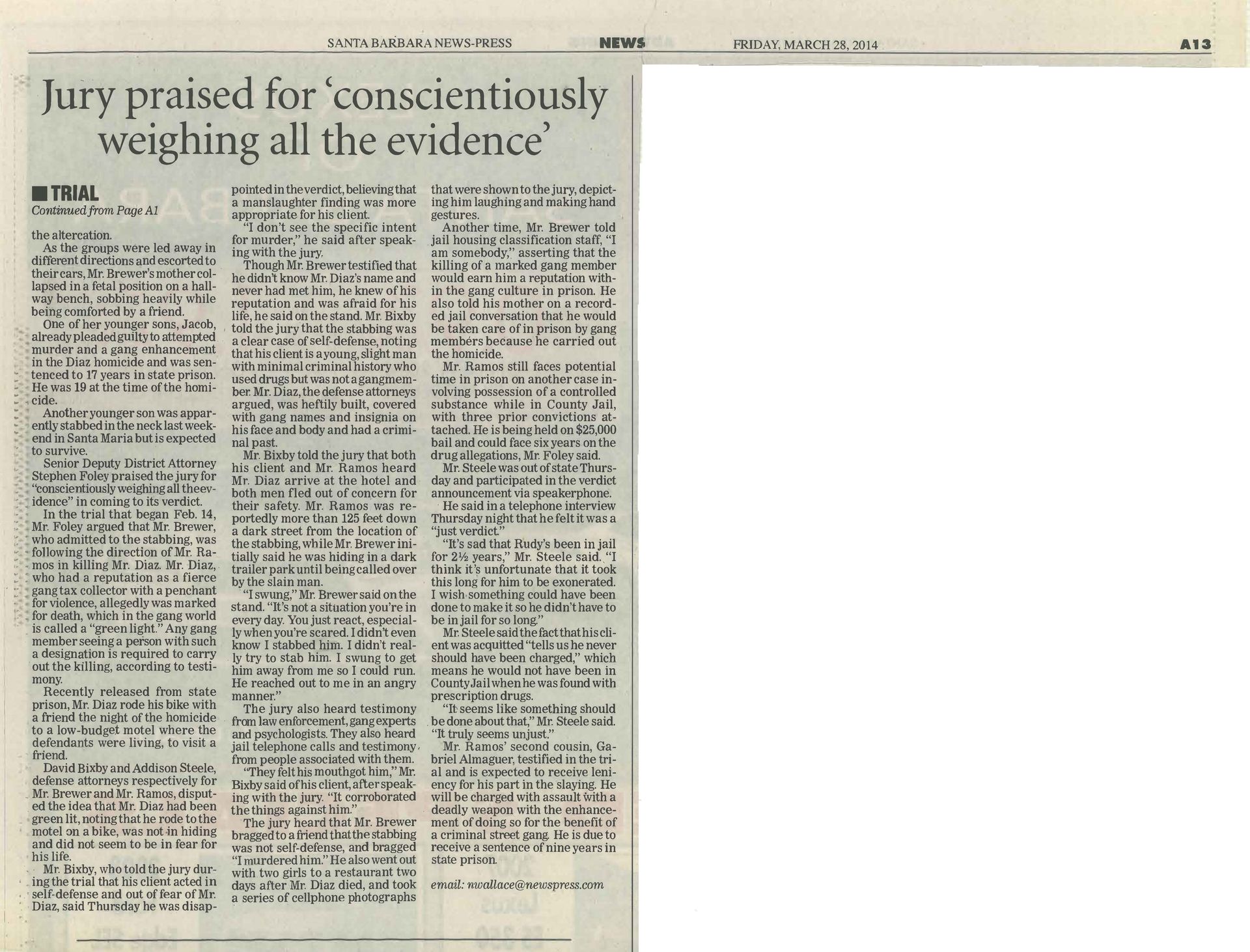
Jonathan A.L., 1427175, Acquitted of all charges on July 2, 2013
- Charges: Vehicular manslaughter with gross negligence (Penal Code § 192(c)(1)) and speed contest resulting in great bodily injury (Vehicle Code § 23109(a))
- Exposure: Jonathan was facing six eight months in prison.
- Outcome: He was acquitted of all charges and went home.
This was a very sad case. Jonathan and two of his friends, Alex and Raul were out riding their motorcycles together on Foothill Road in Santa Barbara when Jonathan and Raul both were in a tragic accident and Raul was killed. Based on very little evidence, the police decided that the three of them were racing and charged Jonathan and Alex with Vehicular manslaughter. Christine's client could not afford bail and was in jail while she fought the case. That also meant that Christine elected to have a "speedy trial" without a time waiver (a waiver of the constitutional right to a speedy trial). After the district attorney was finished with his case Christine made a motion for acquittal based on insufficiency of the evidence. The judge agreed with Christine's assessment and acquitted her client on all charges. Jonathan was released from jail and went home.
Below is the Minute Order from the acquittal

This is the press from when Jonathan was acquitted
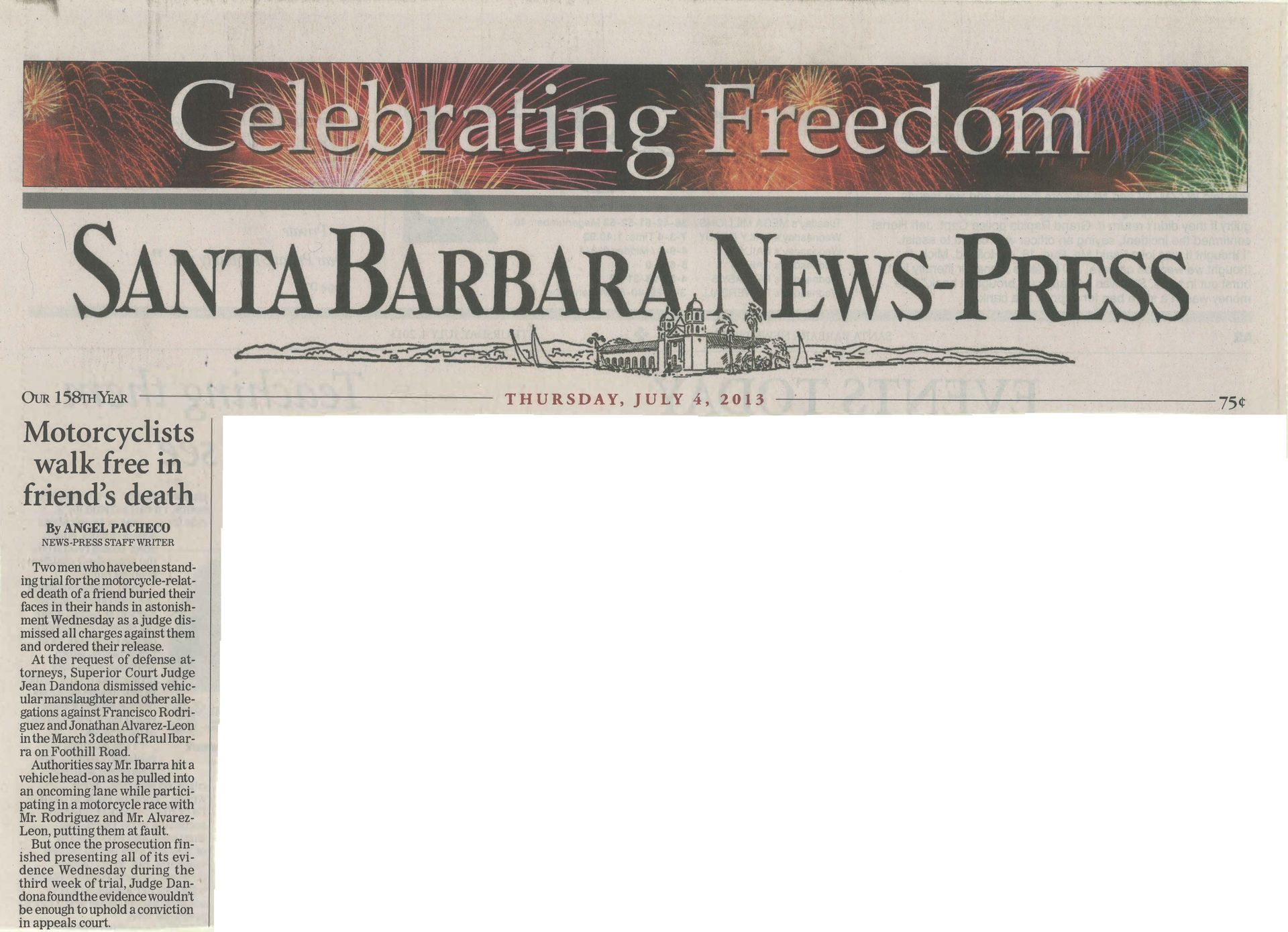
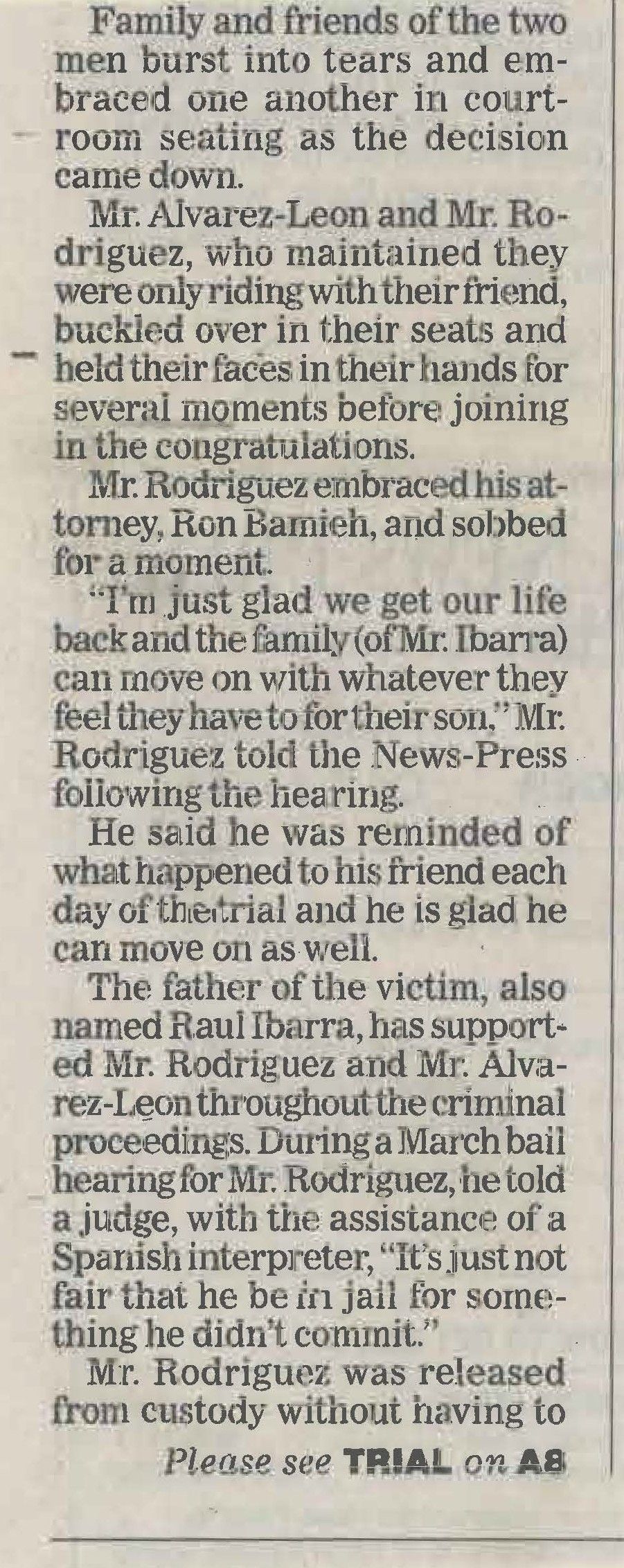

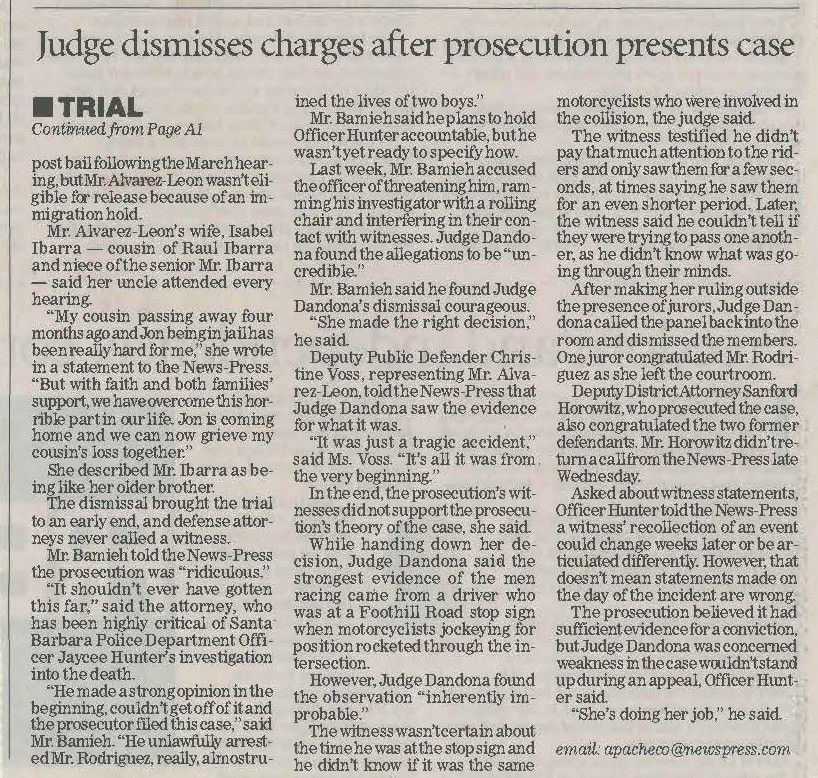
Here you can follow the press on Jonathan's case from beginning to end
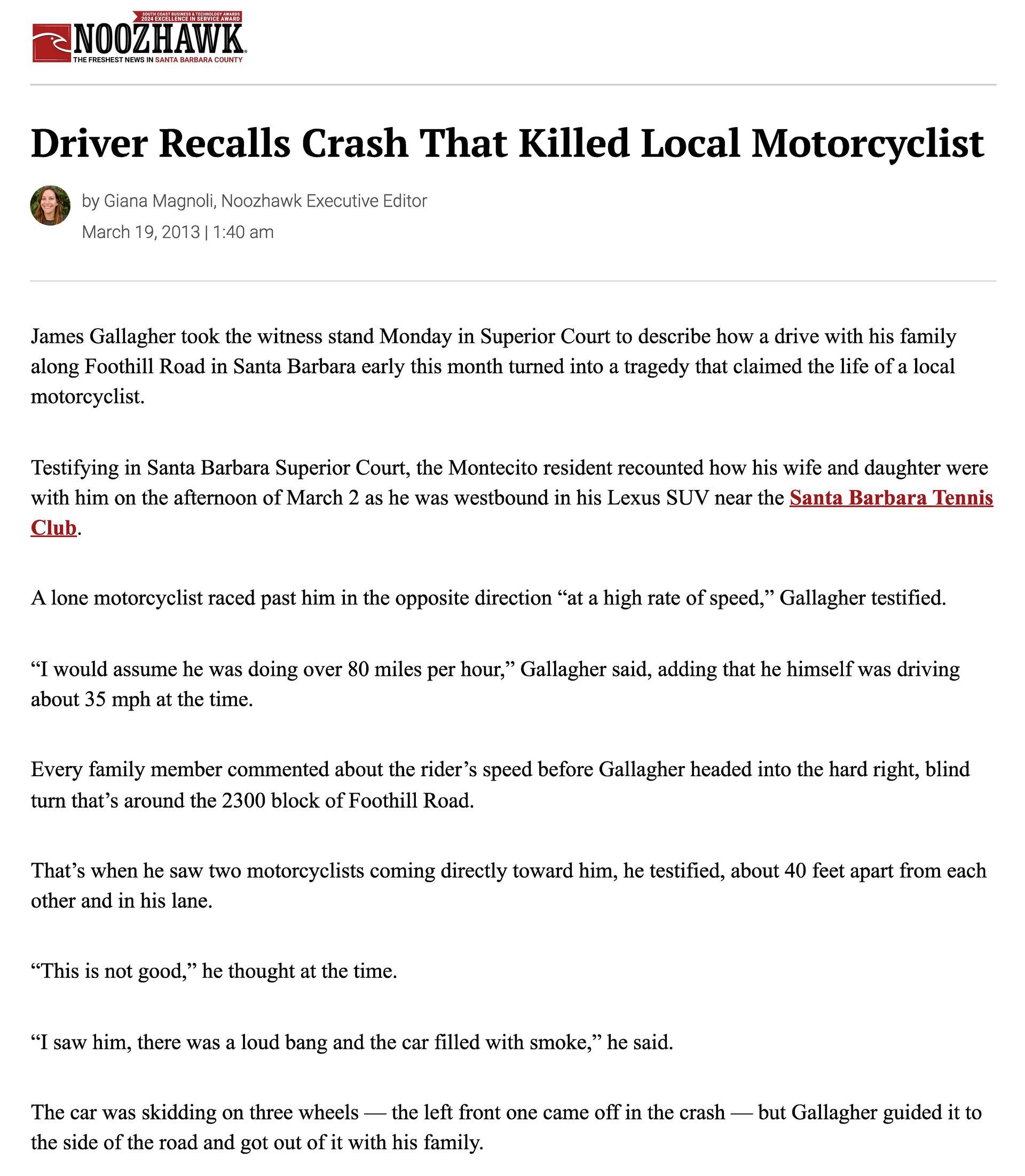
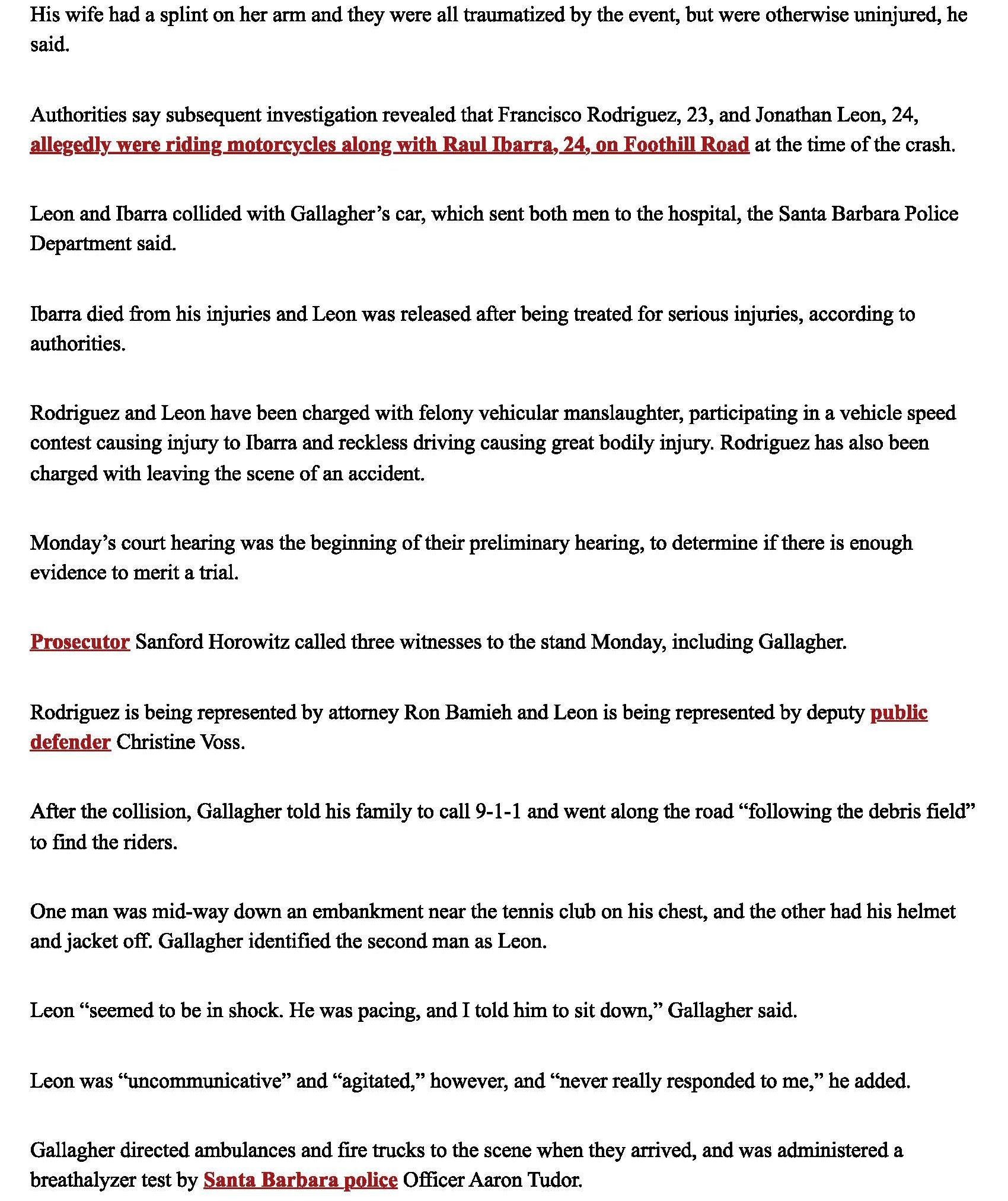
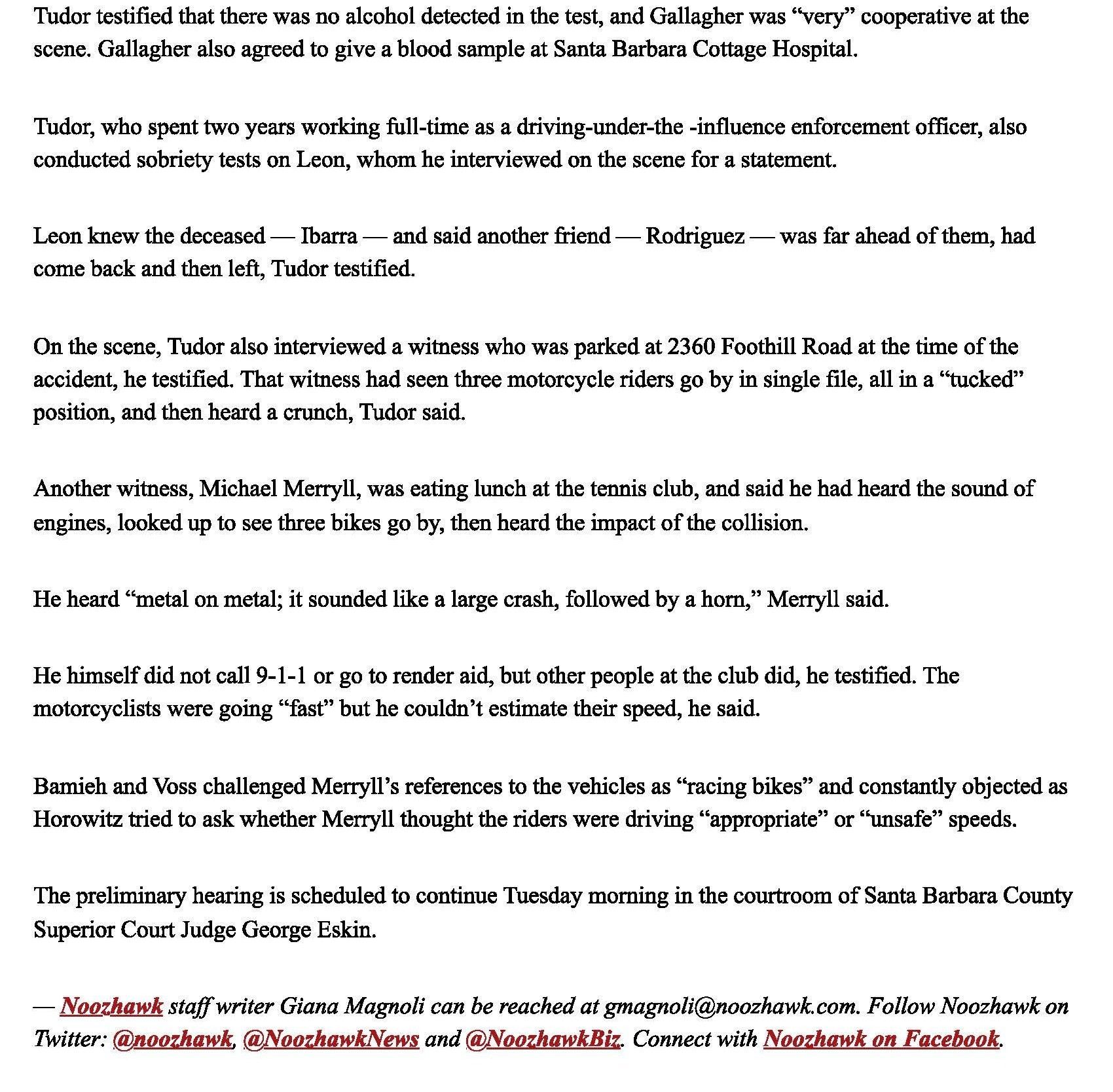
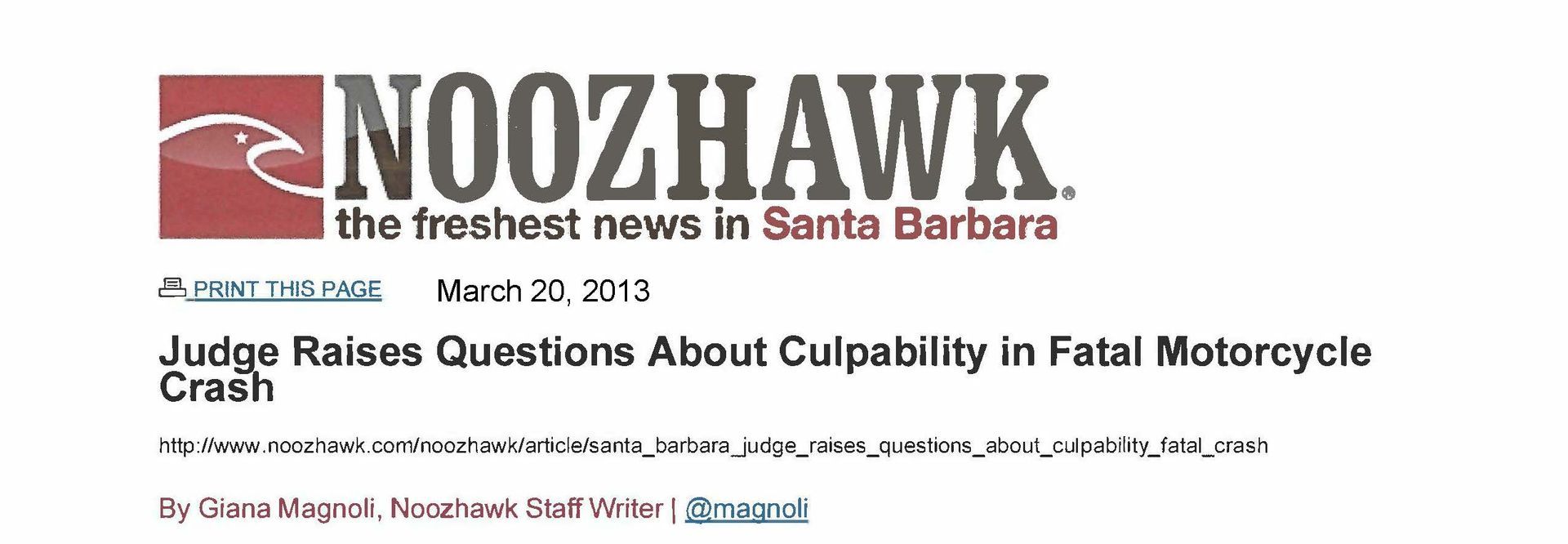
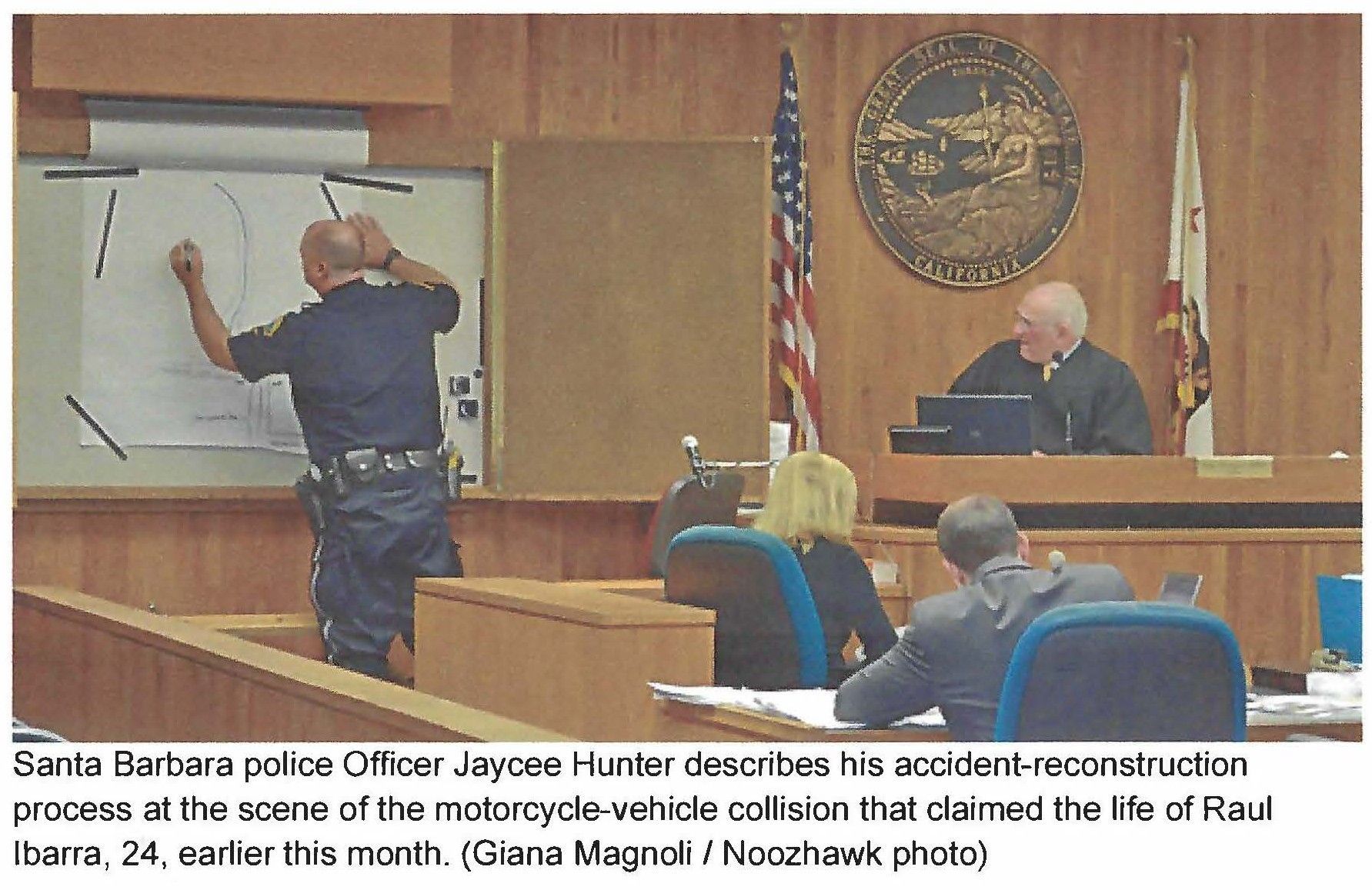


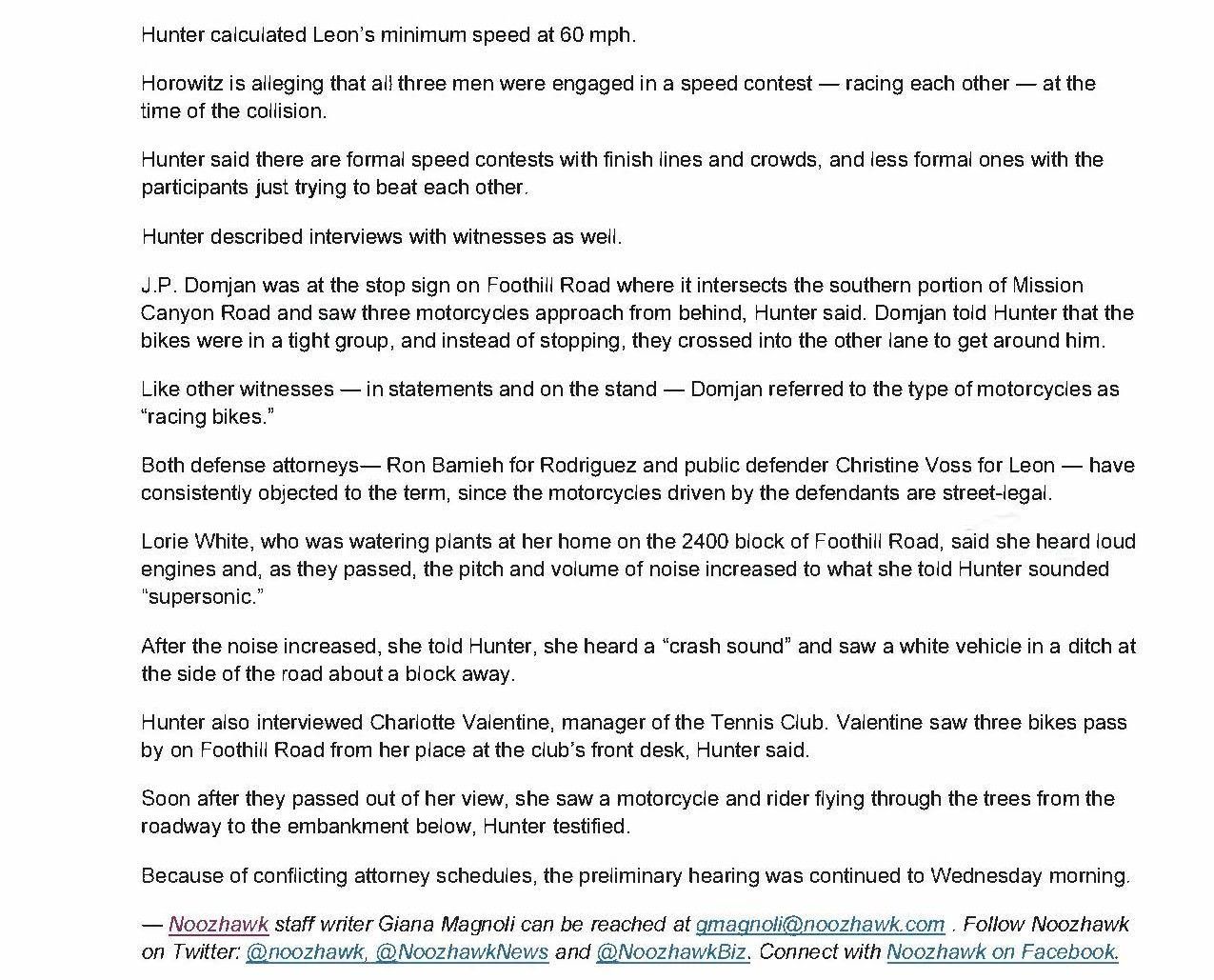

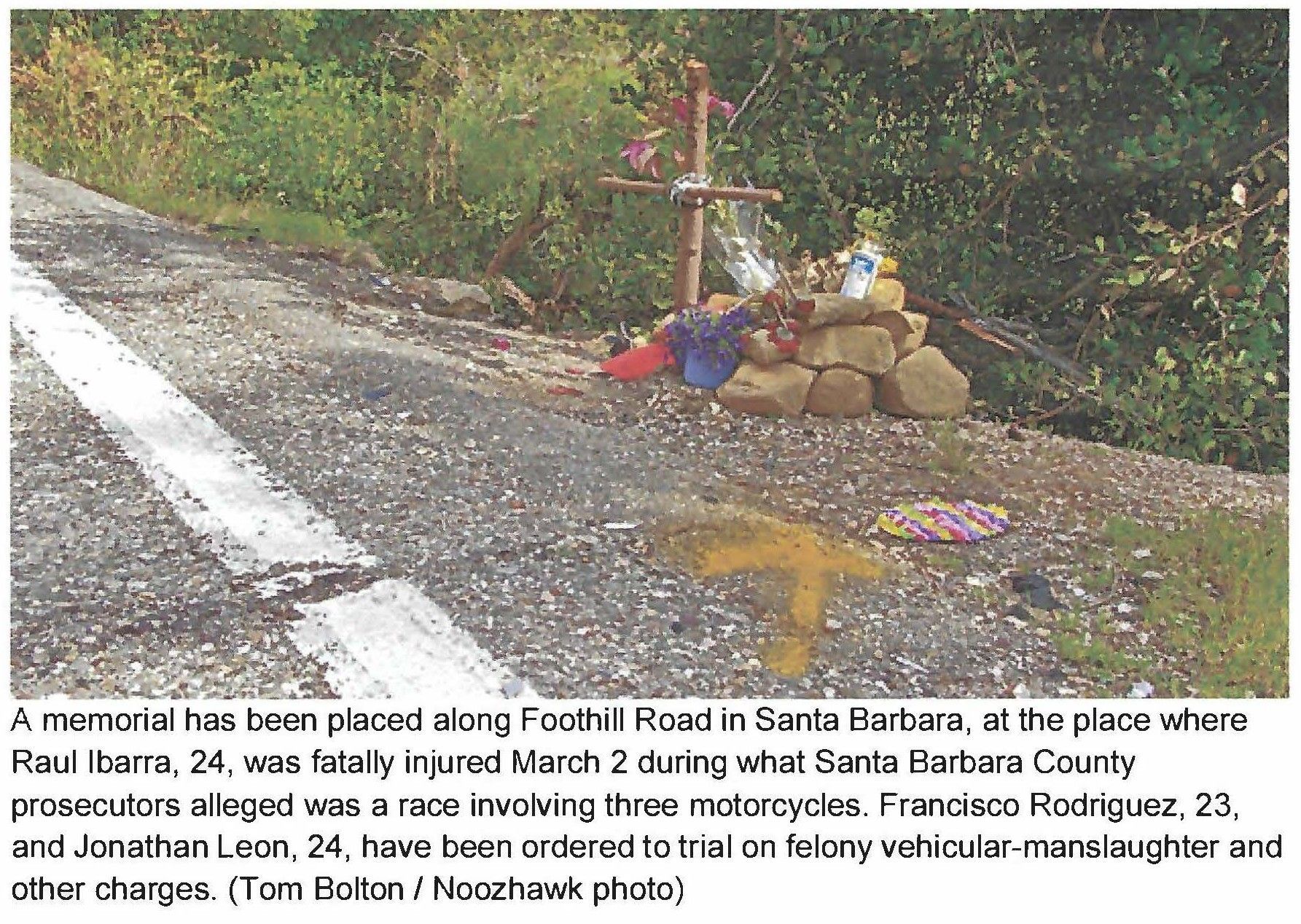

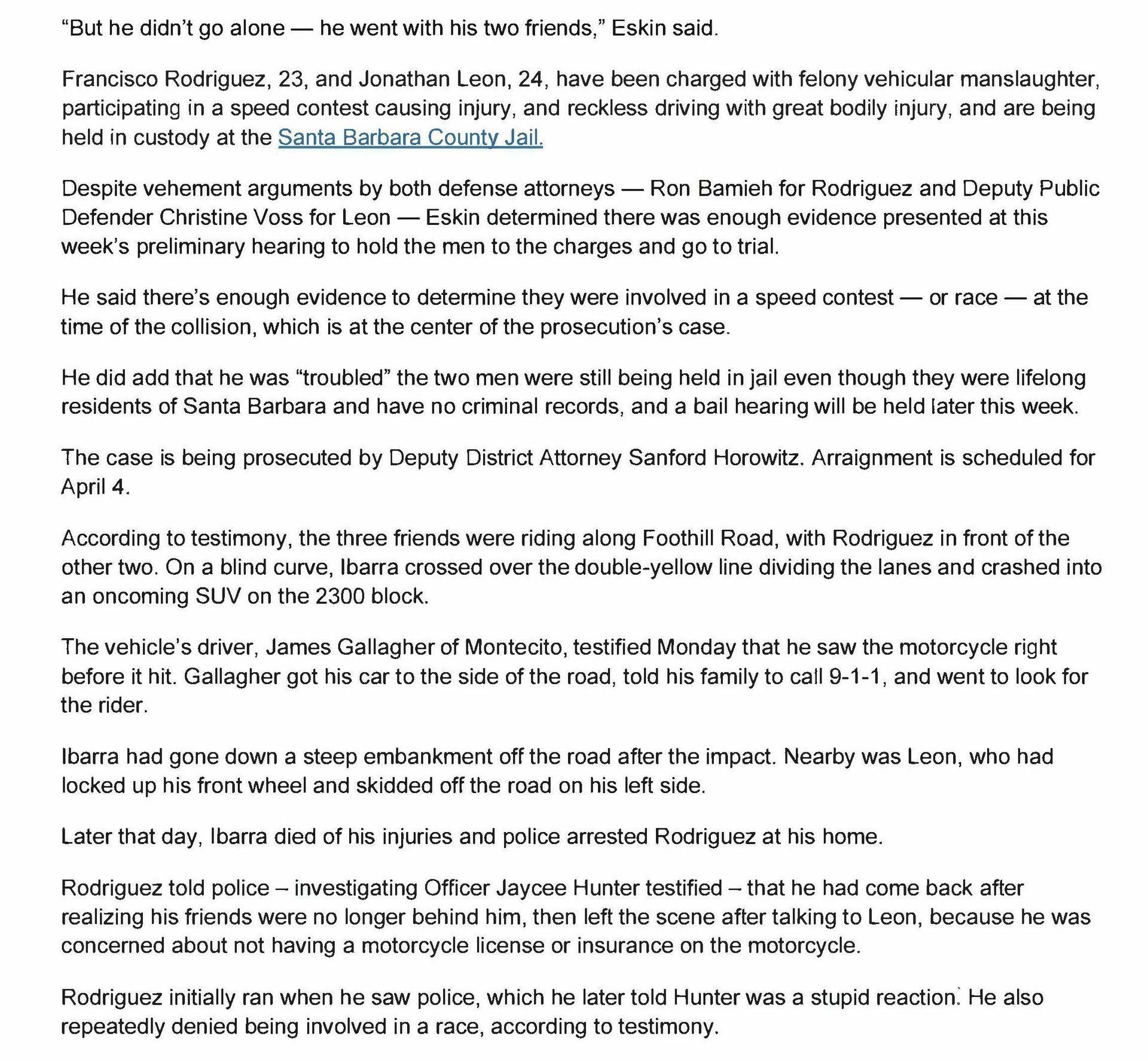
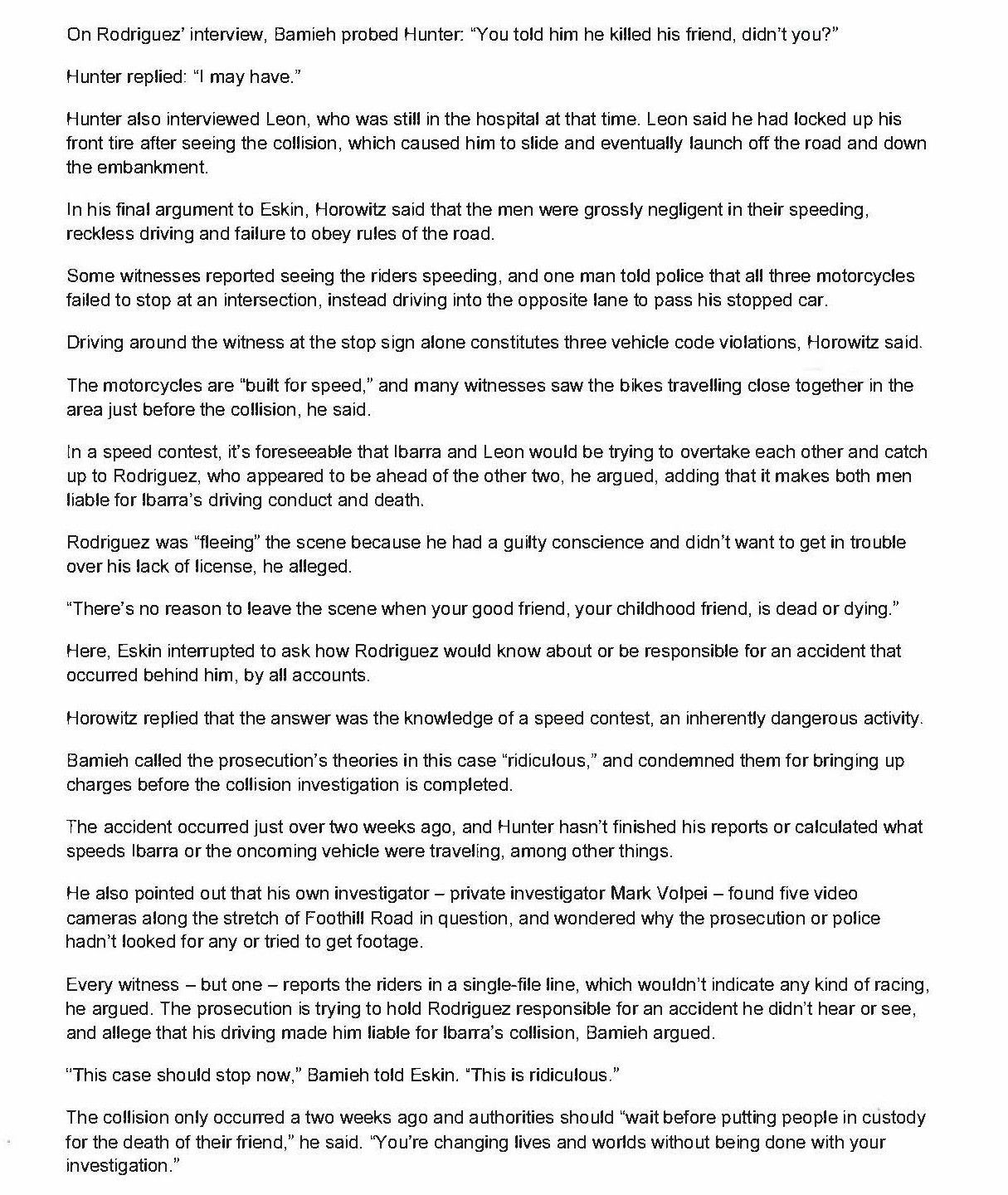
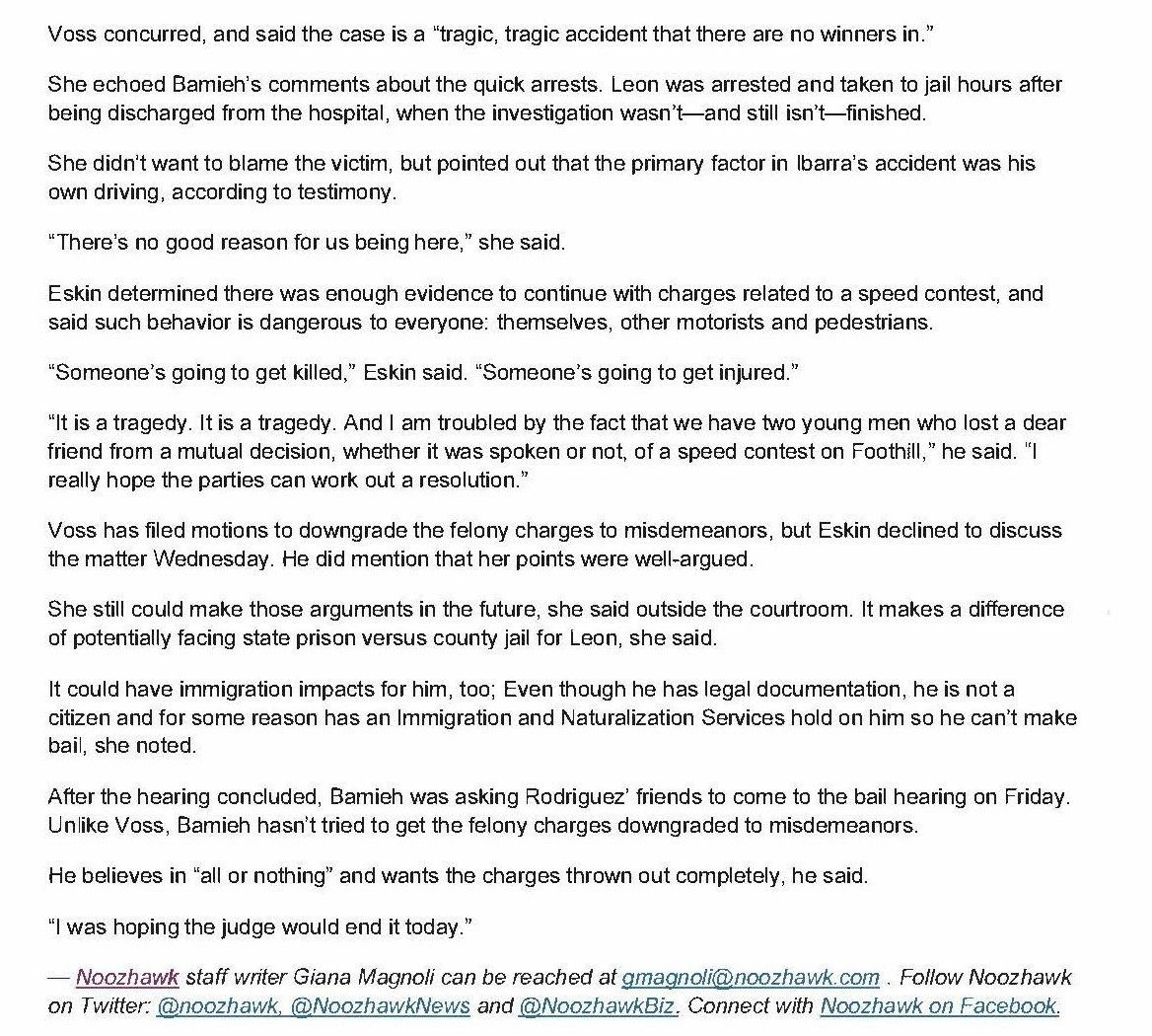


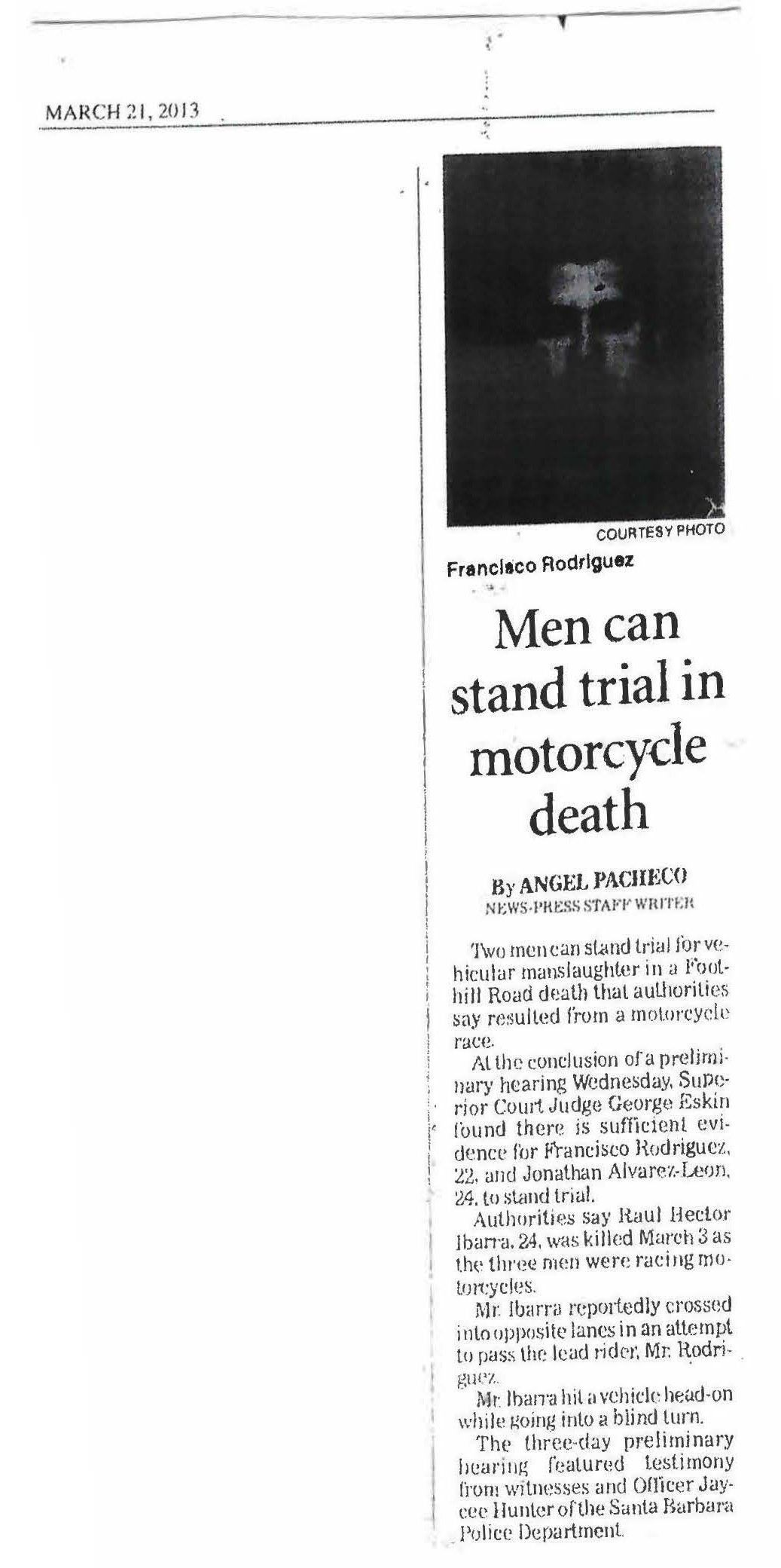

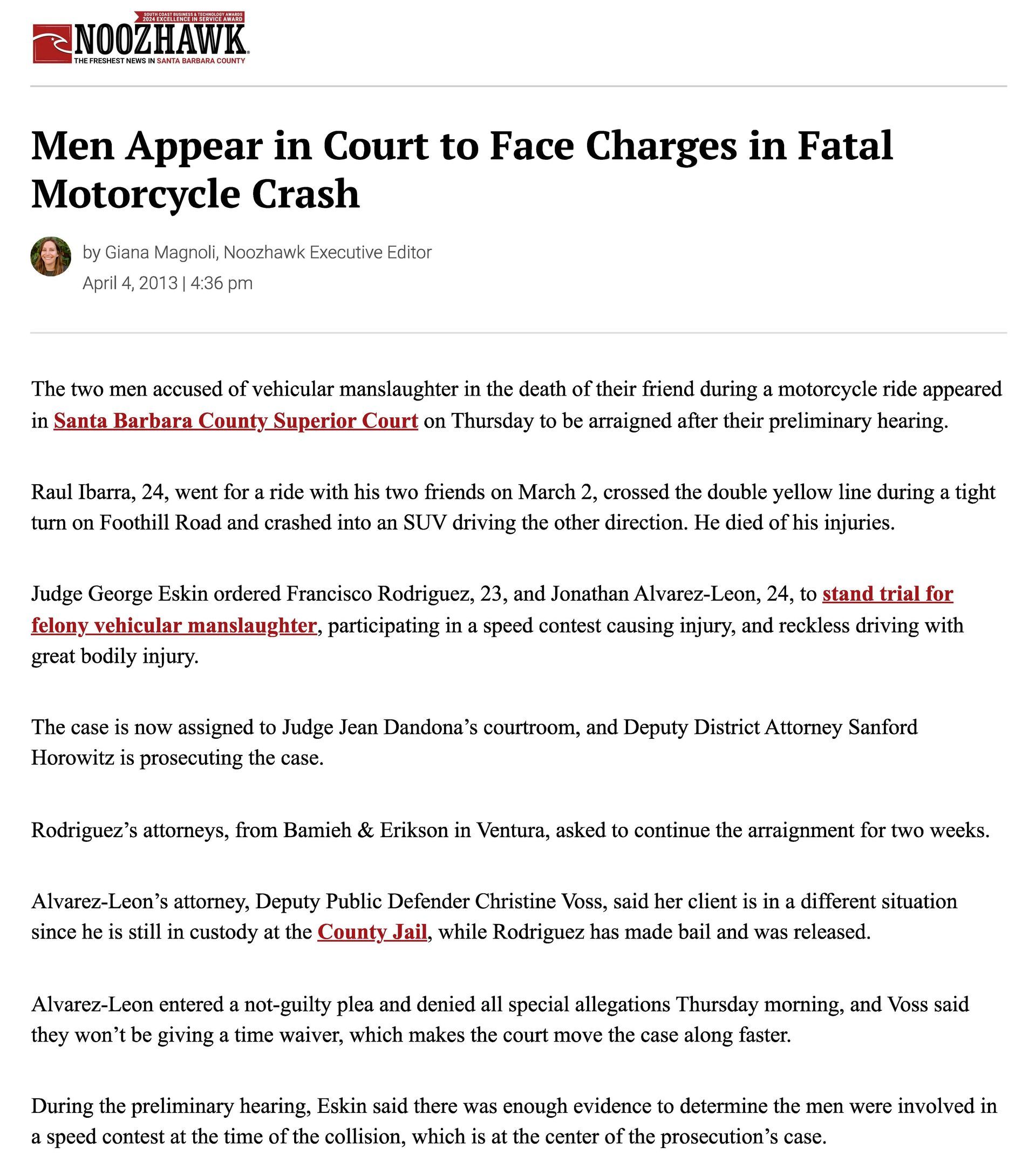
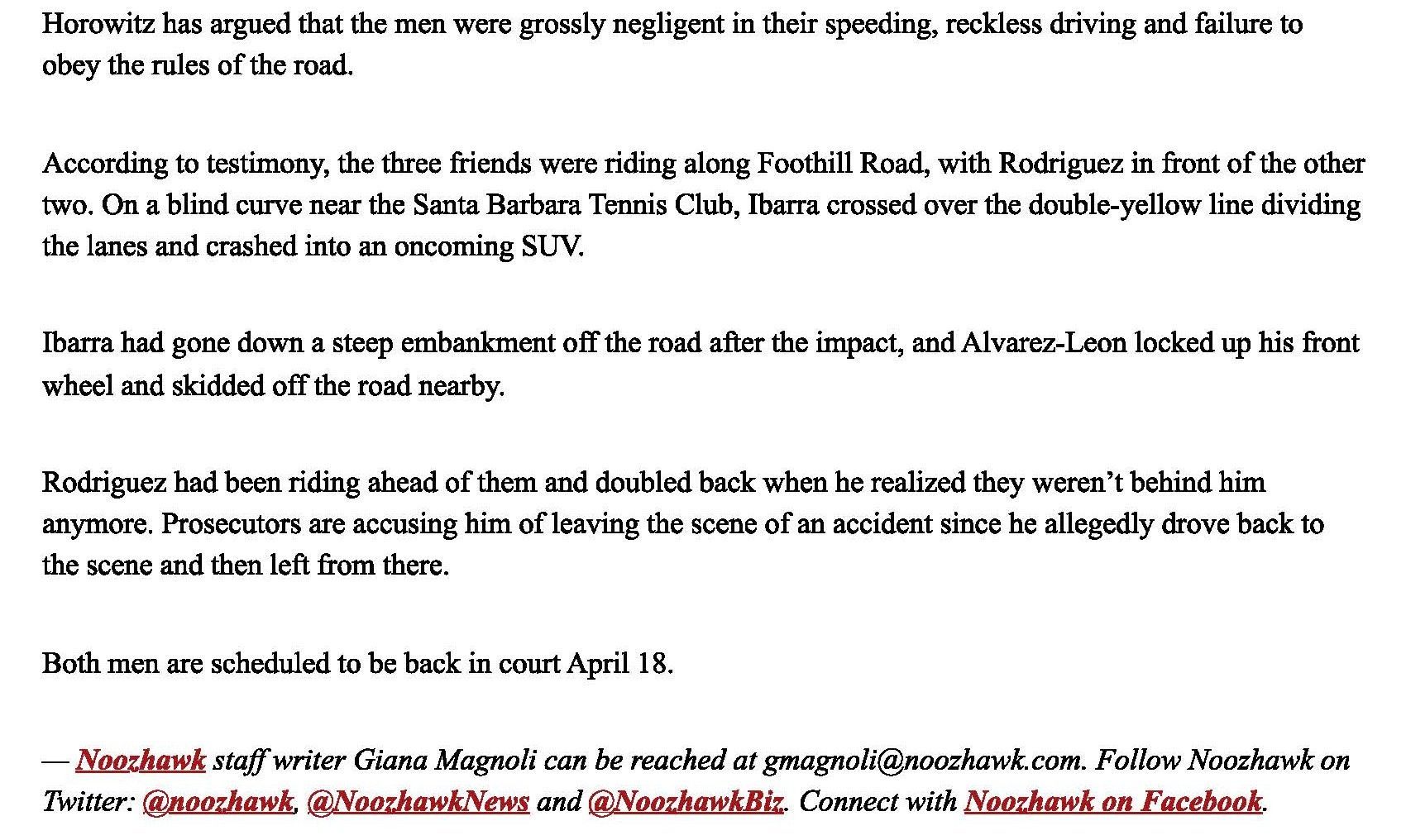

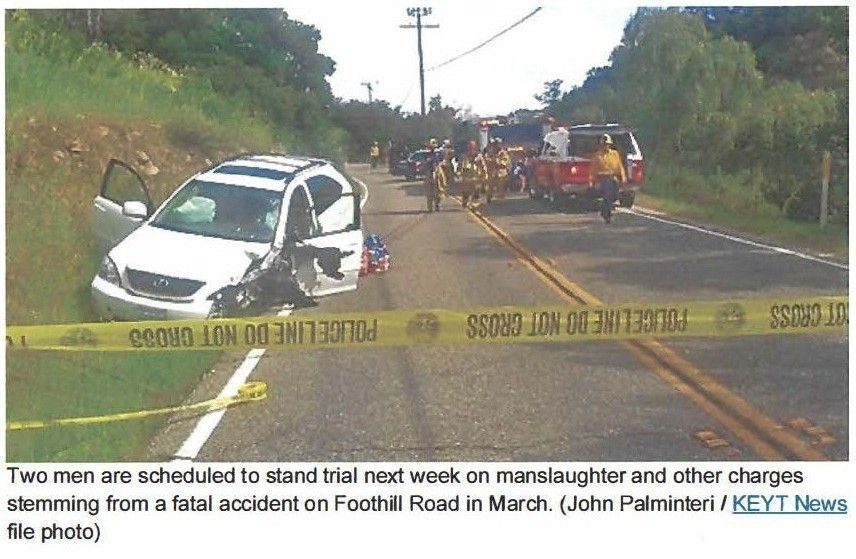

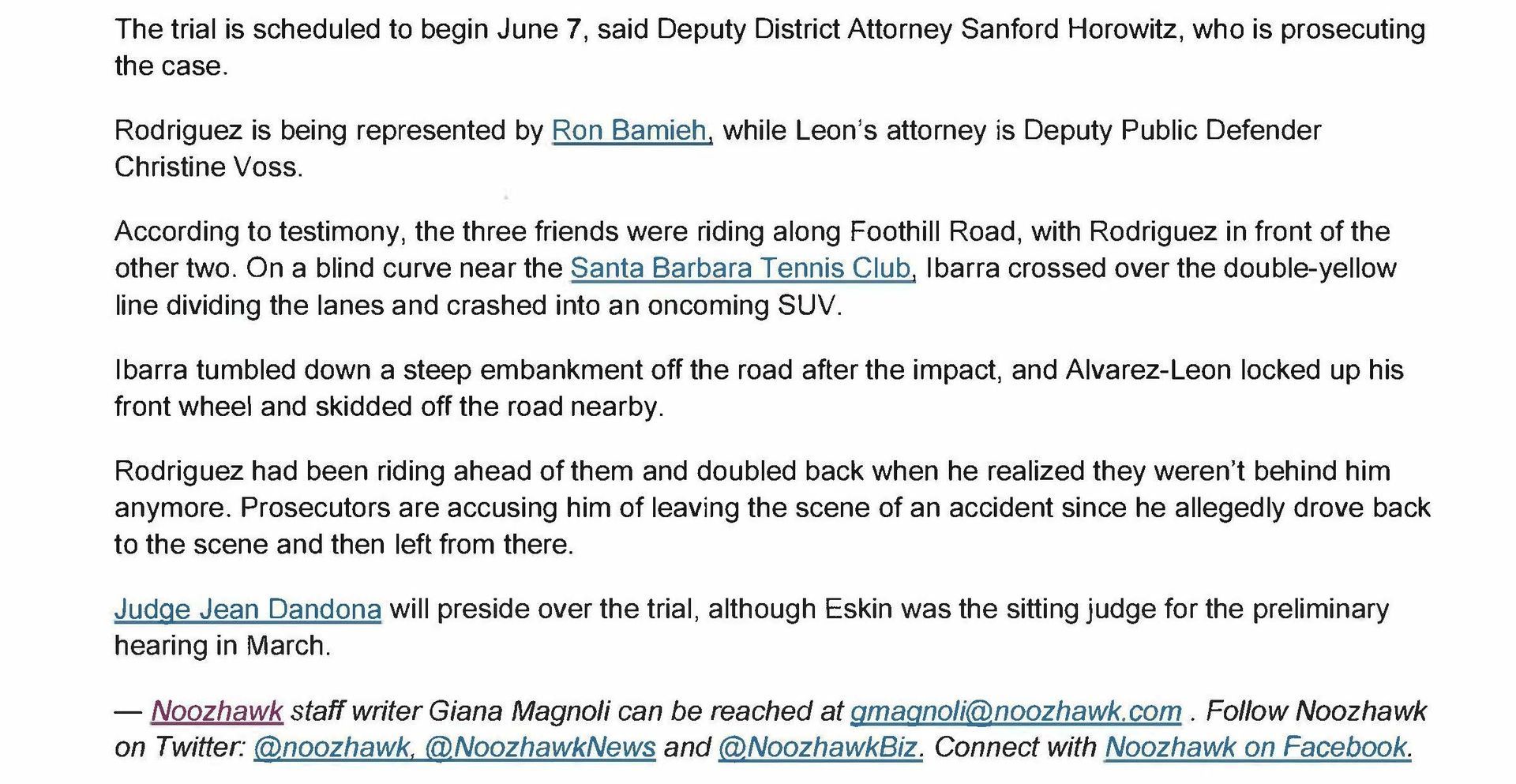
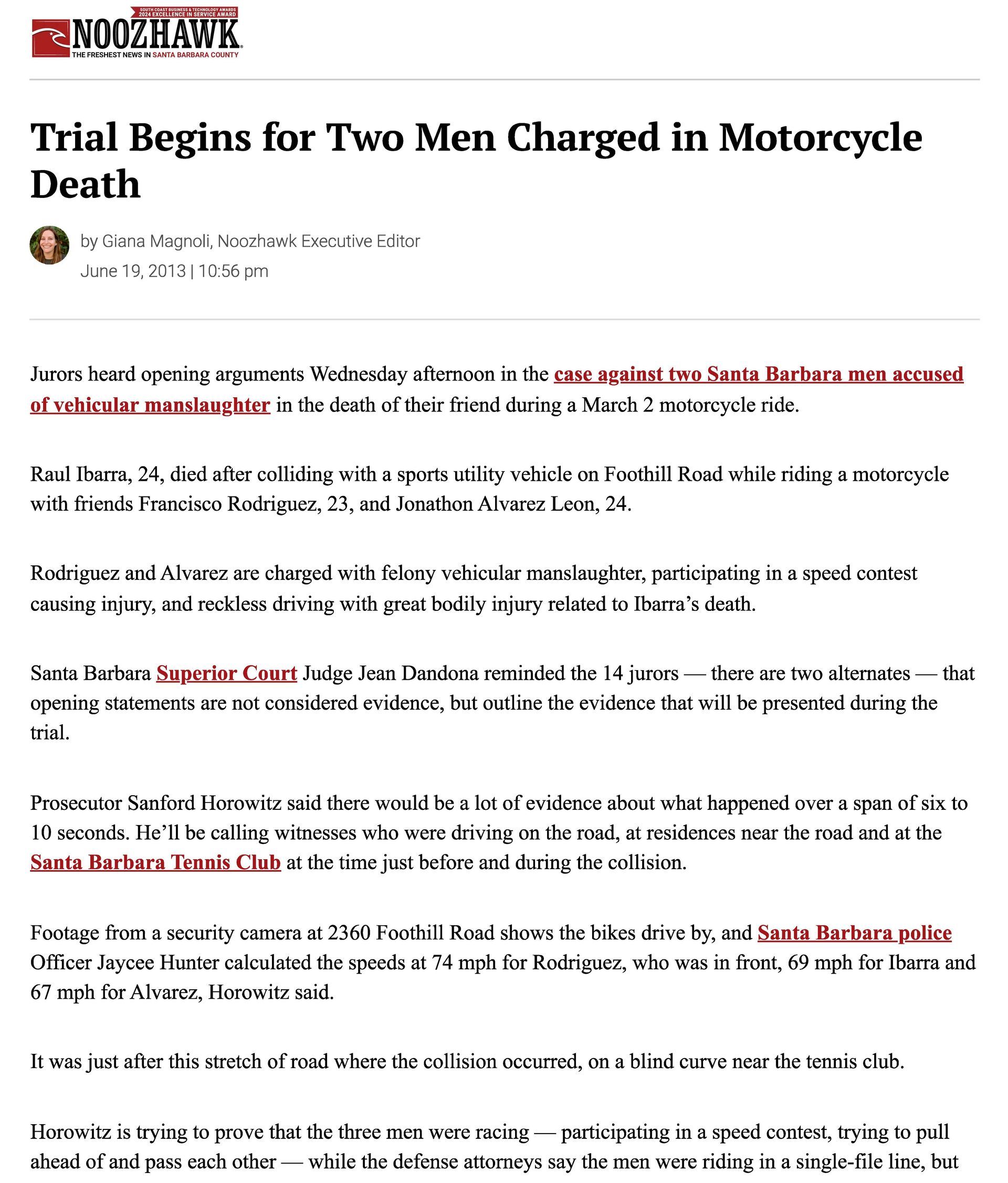
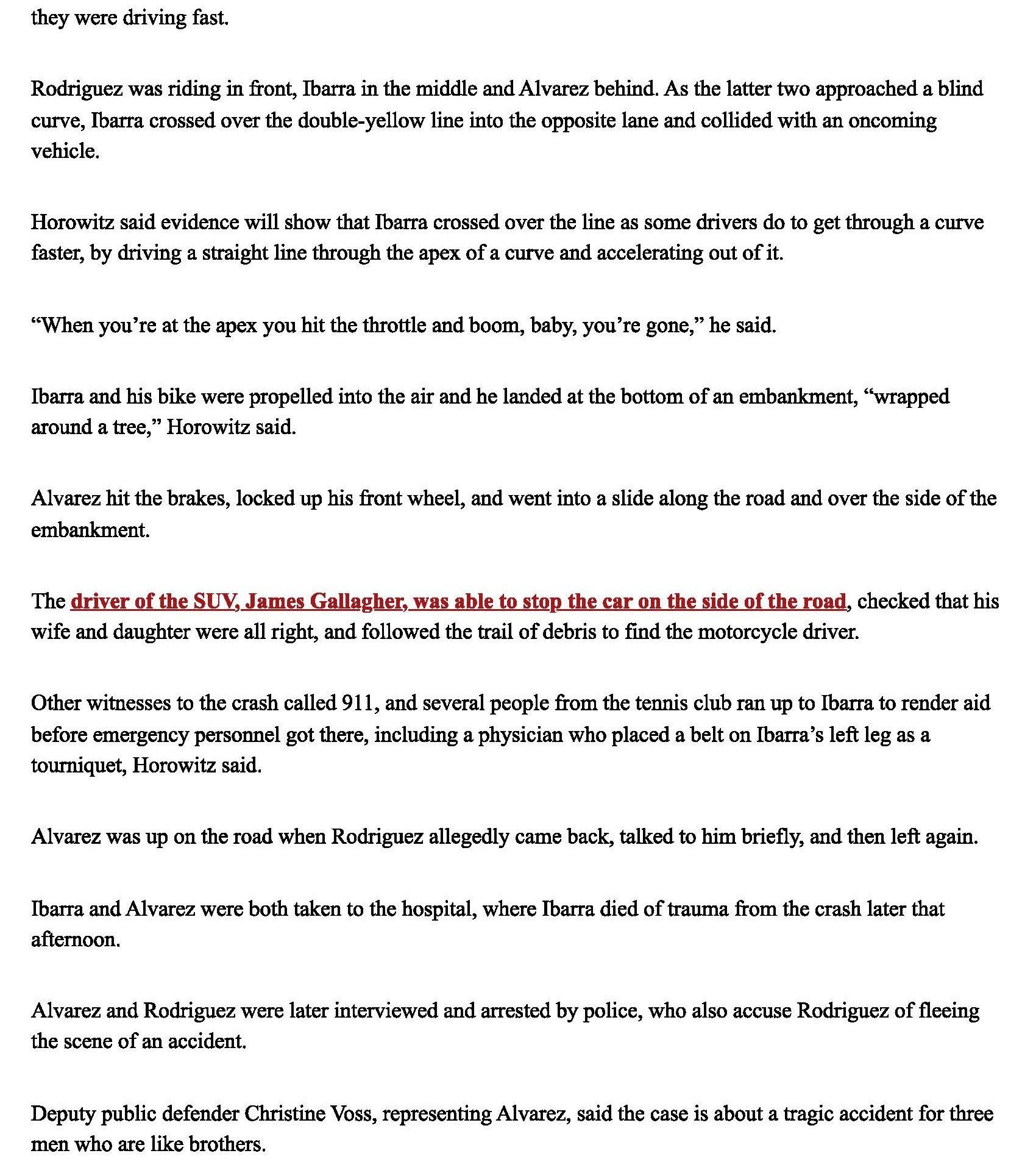
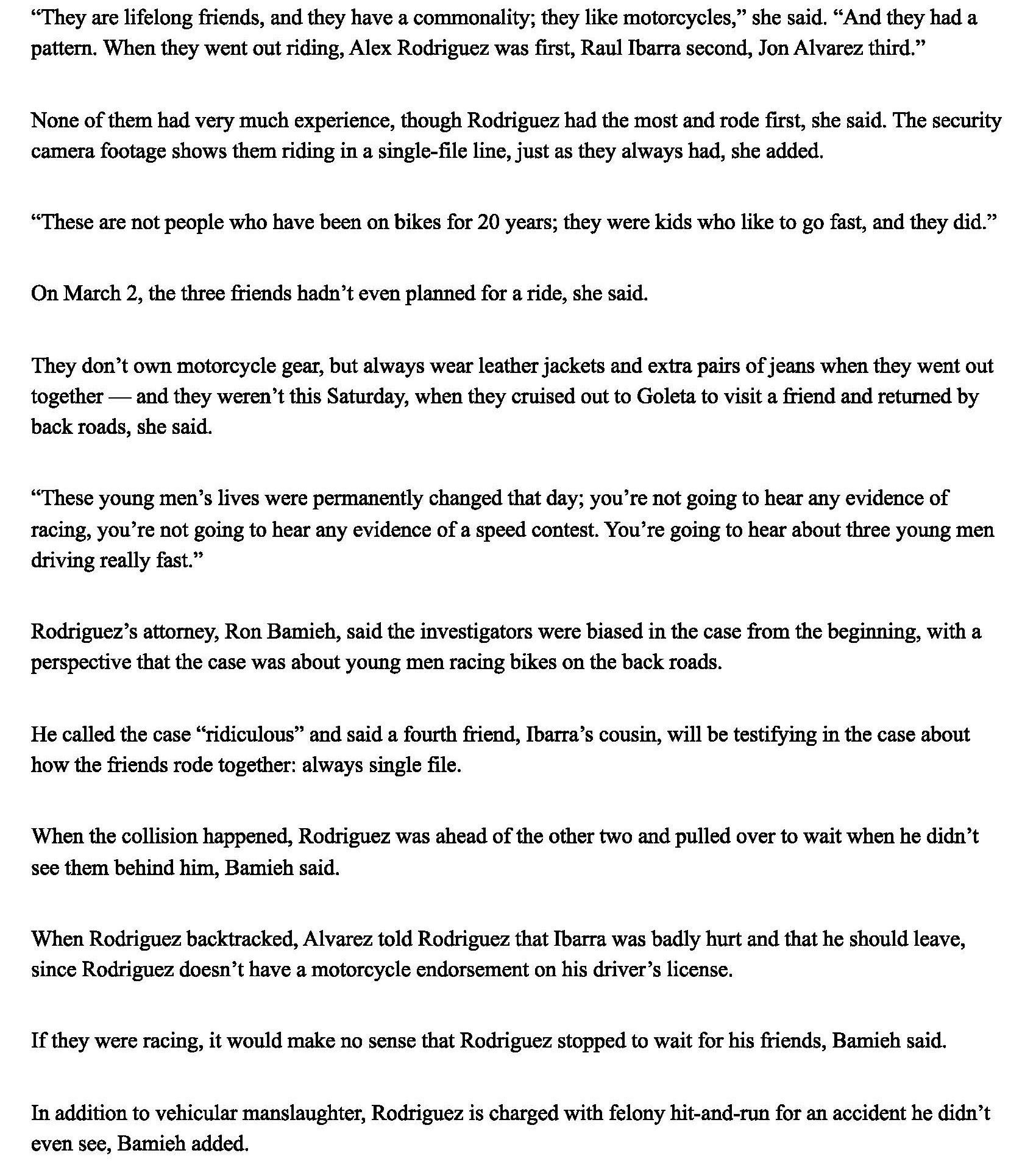
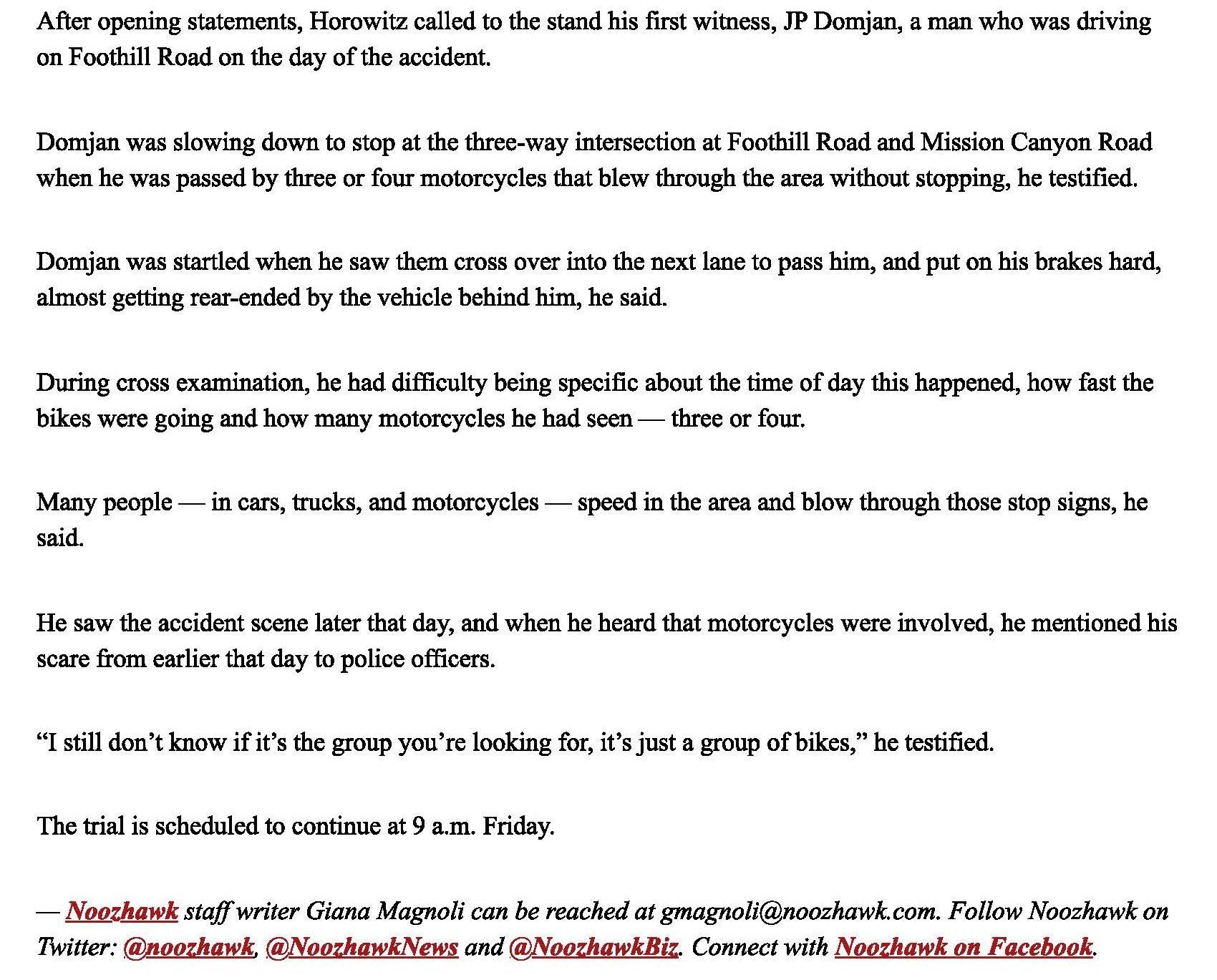



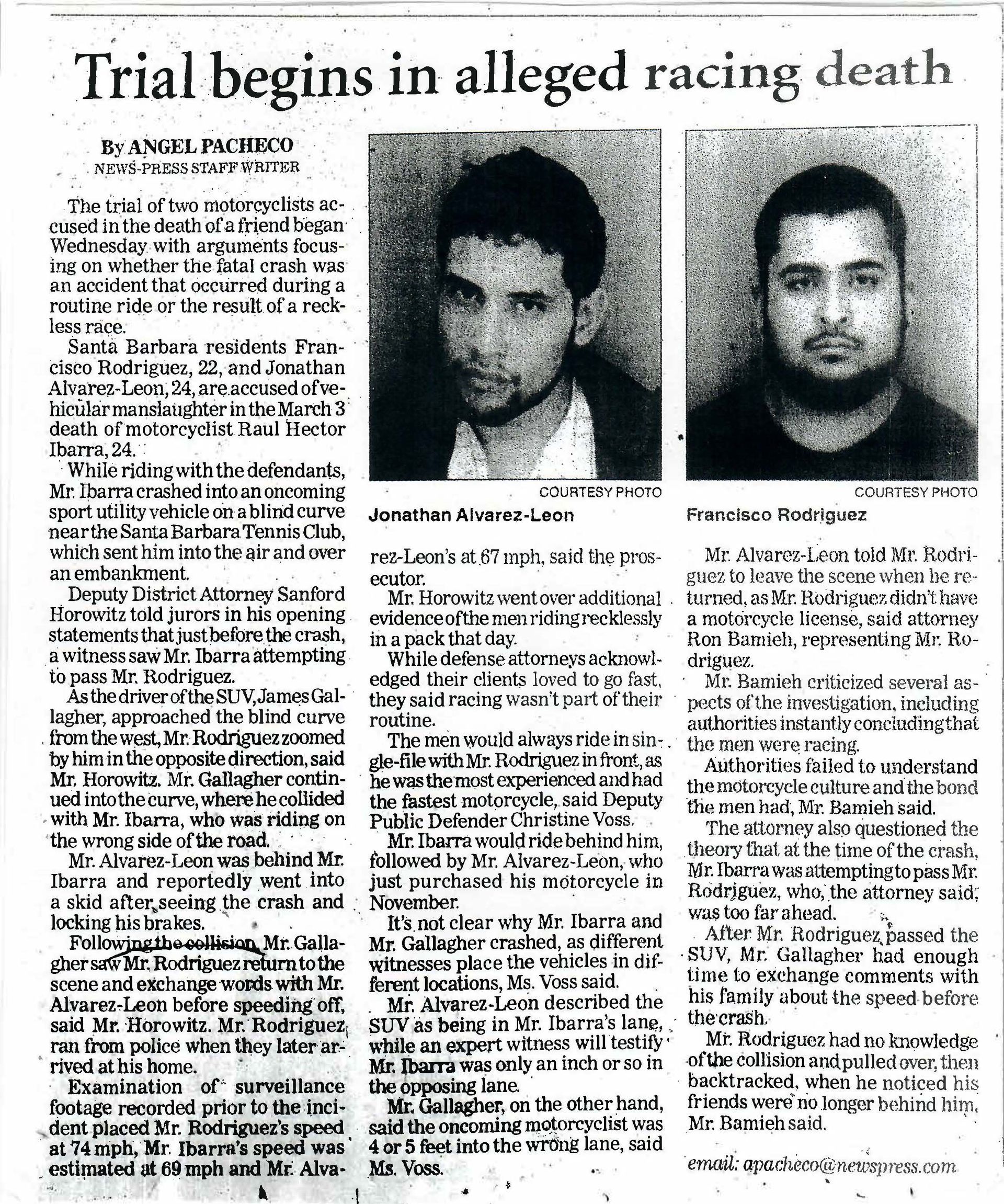
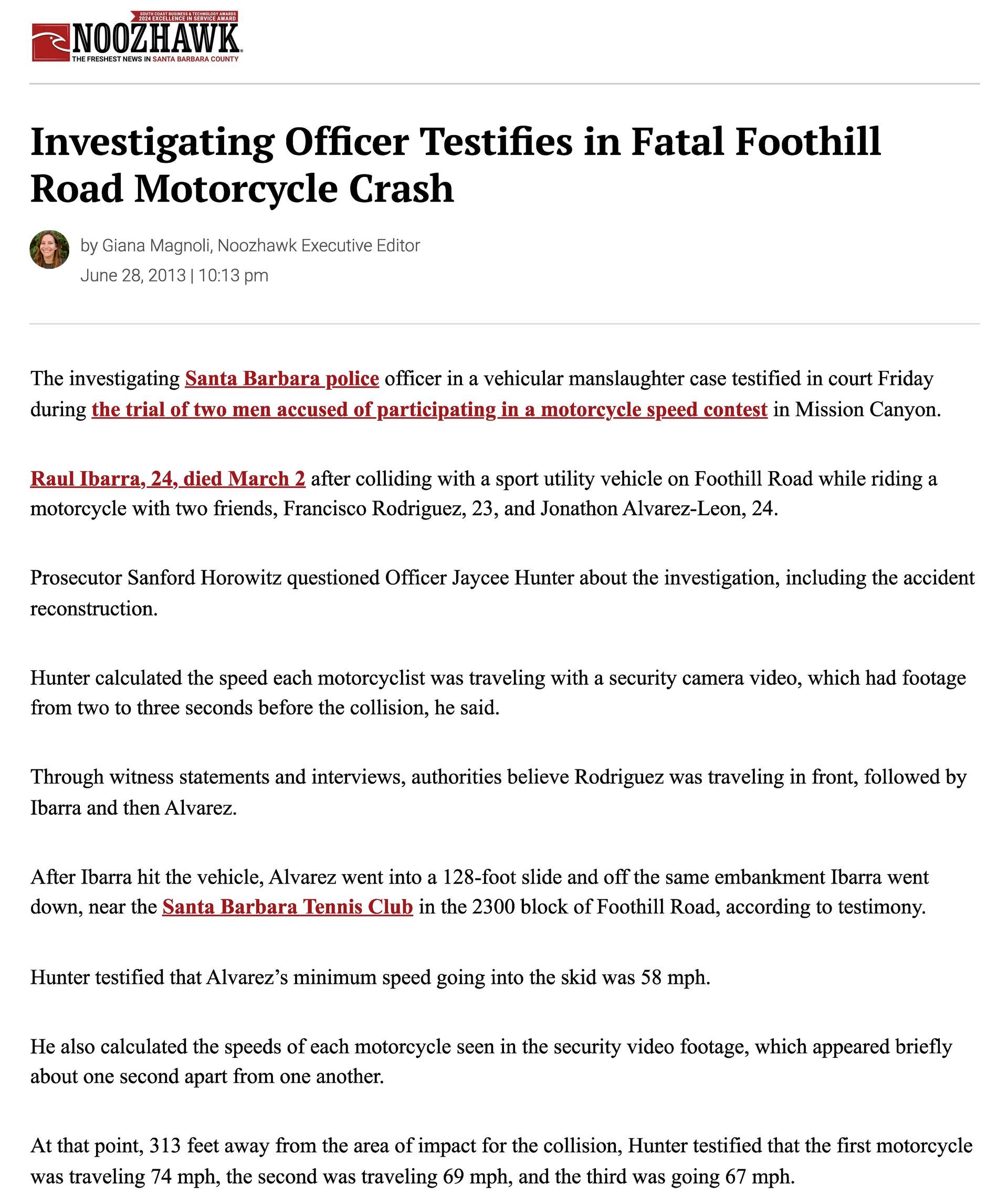
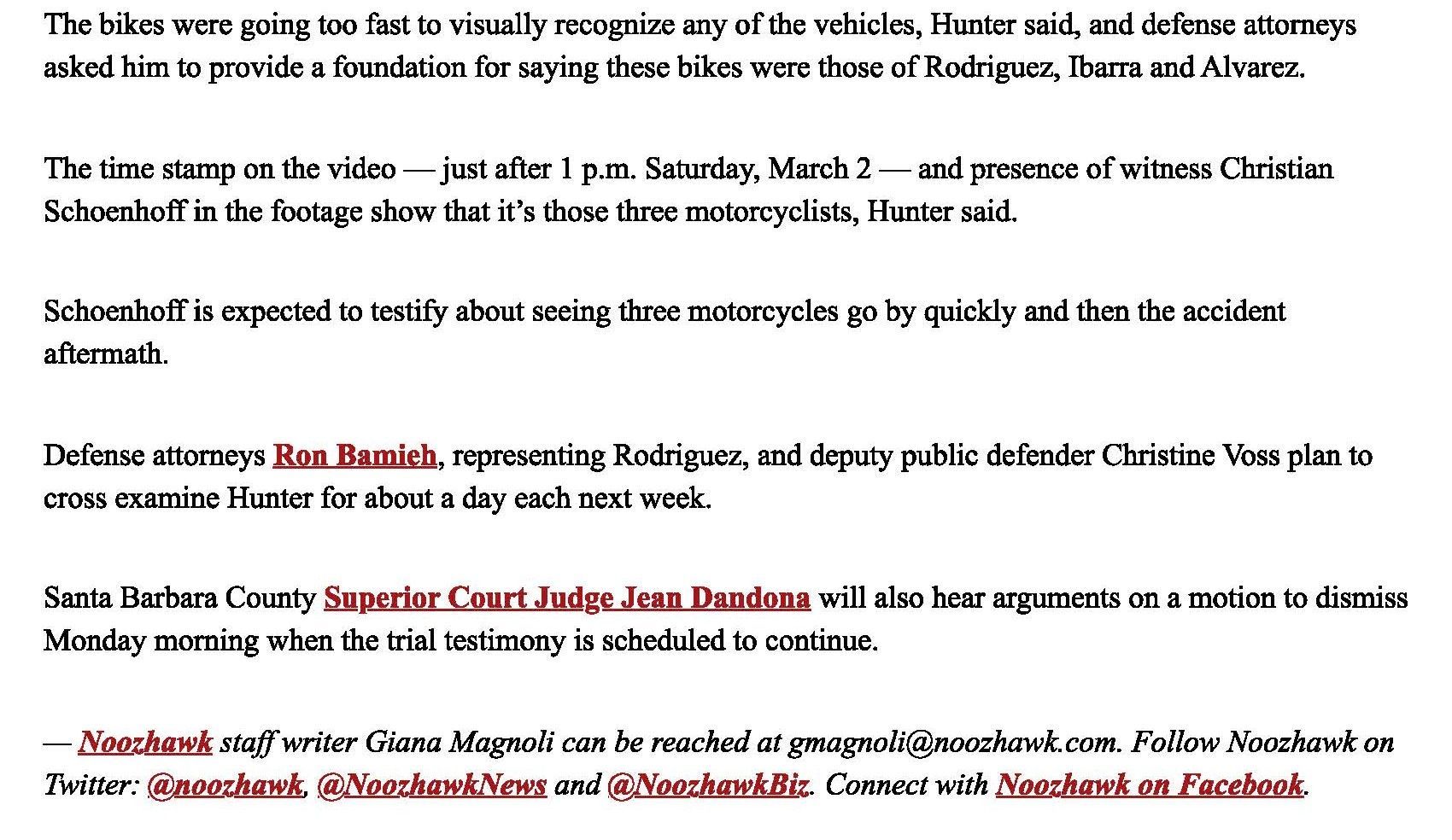
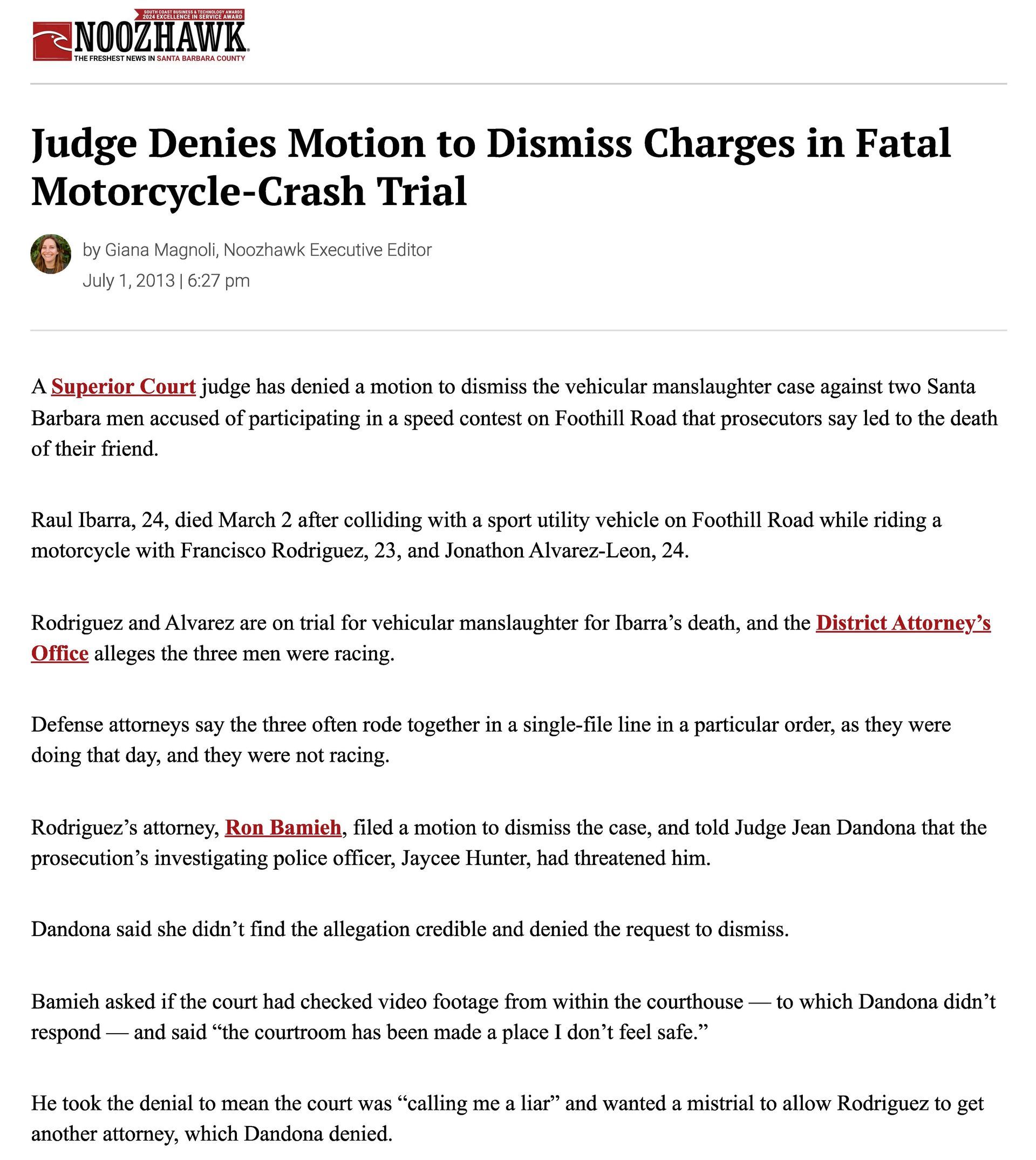
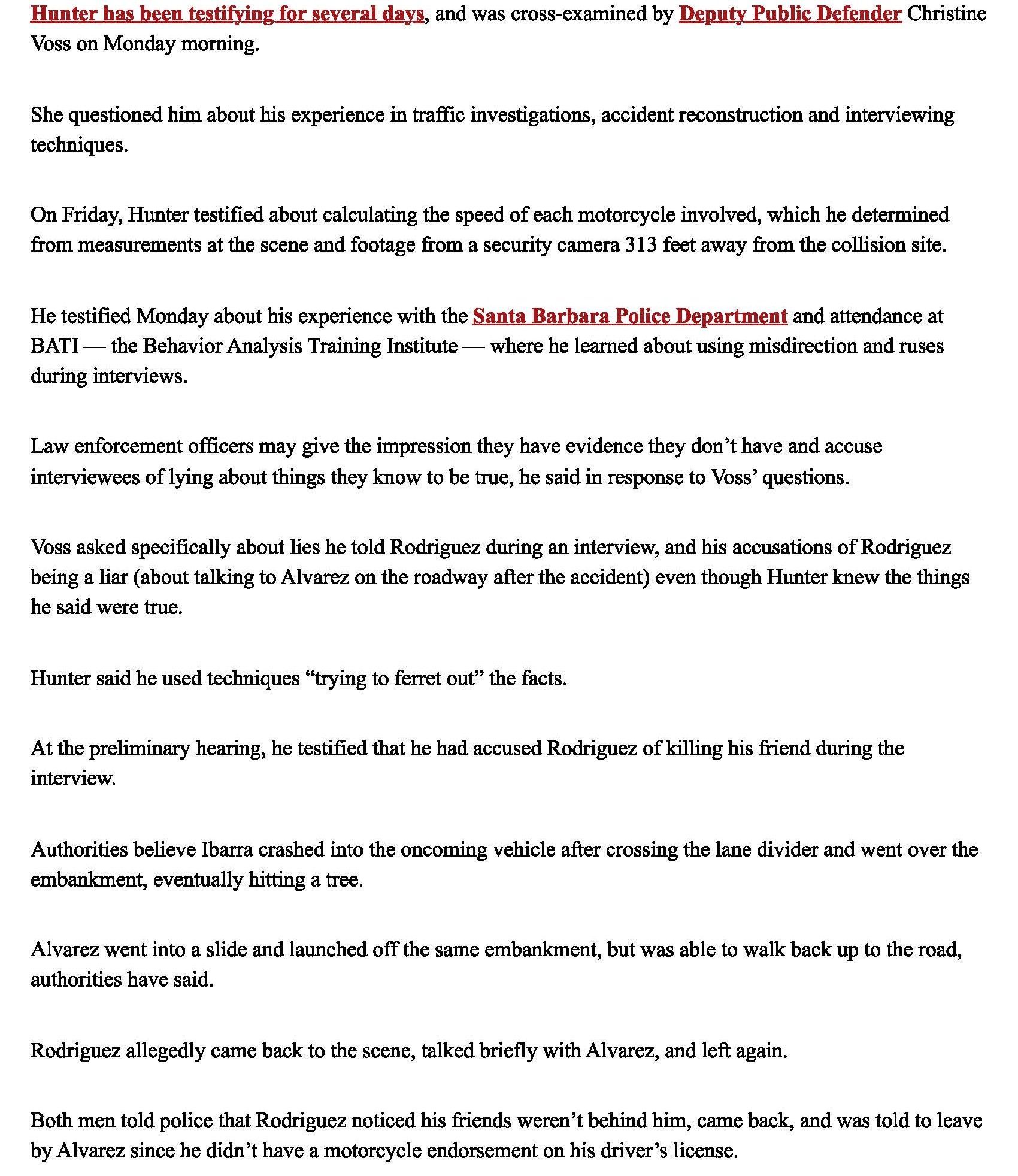


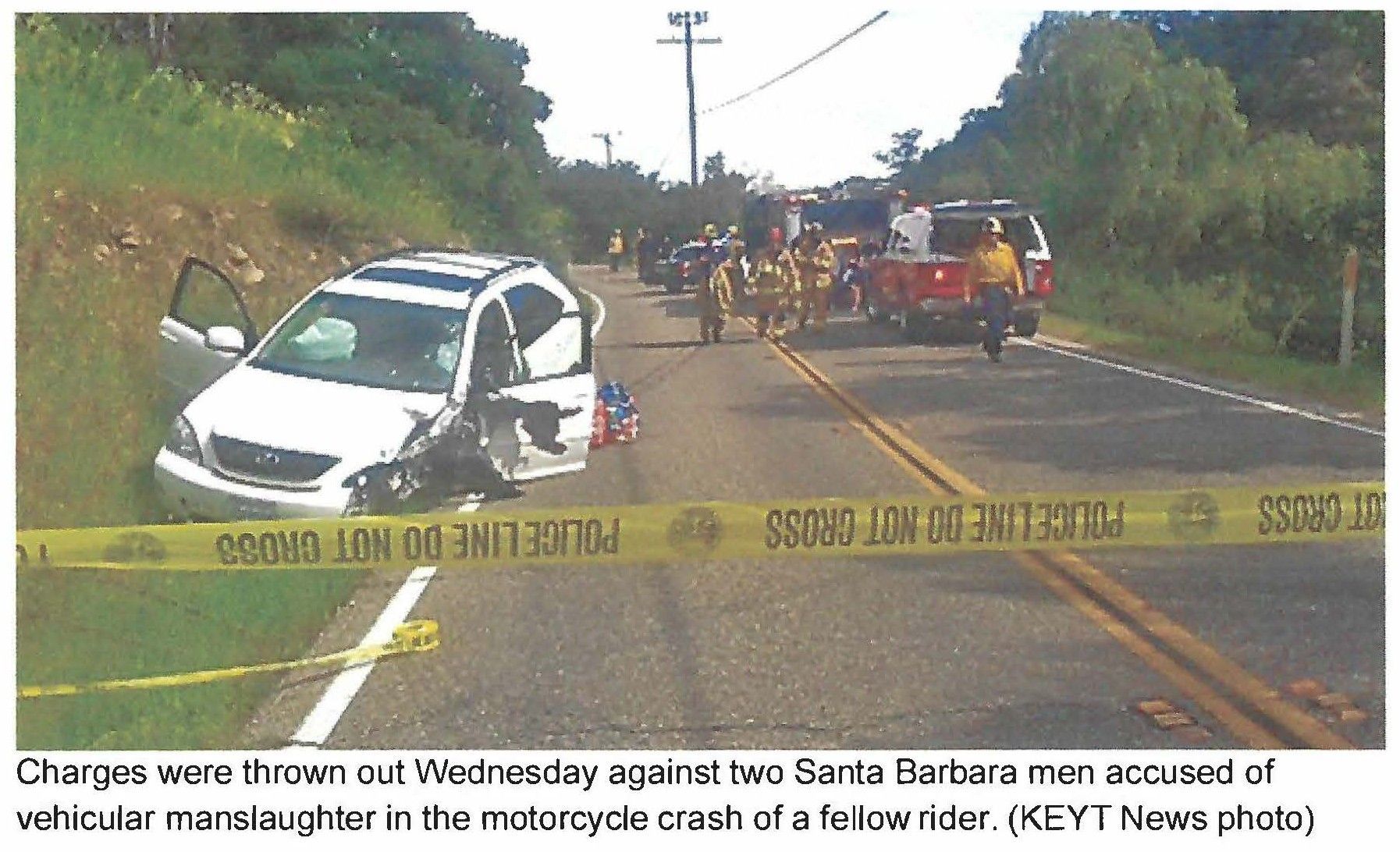

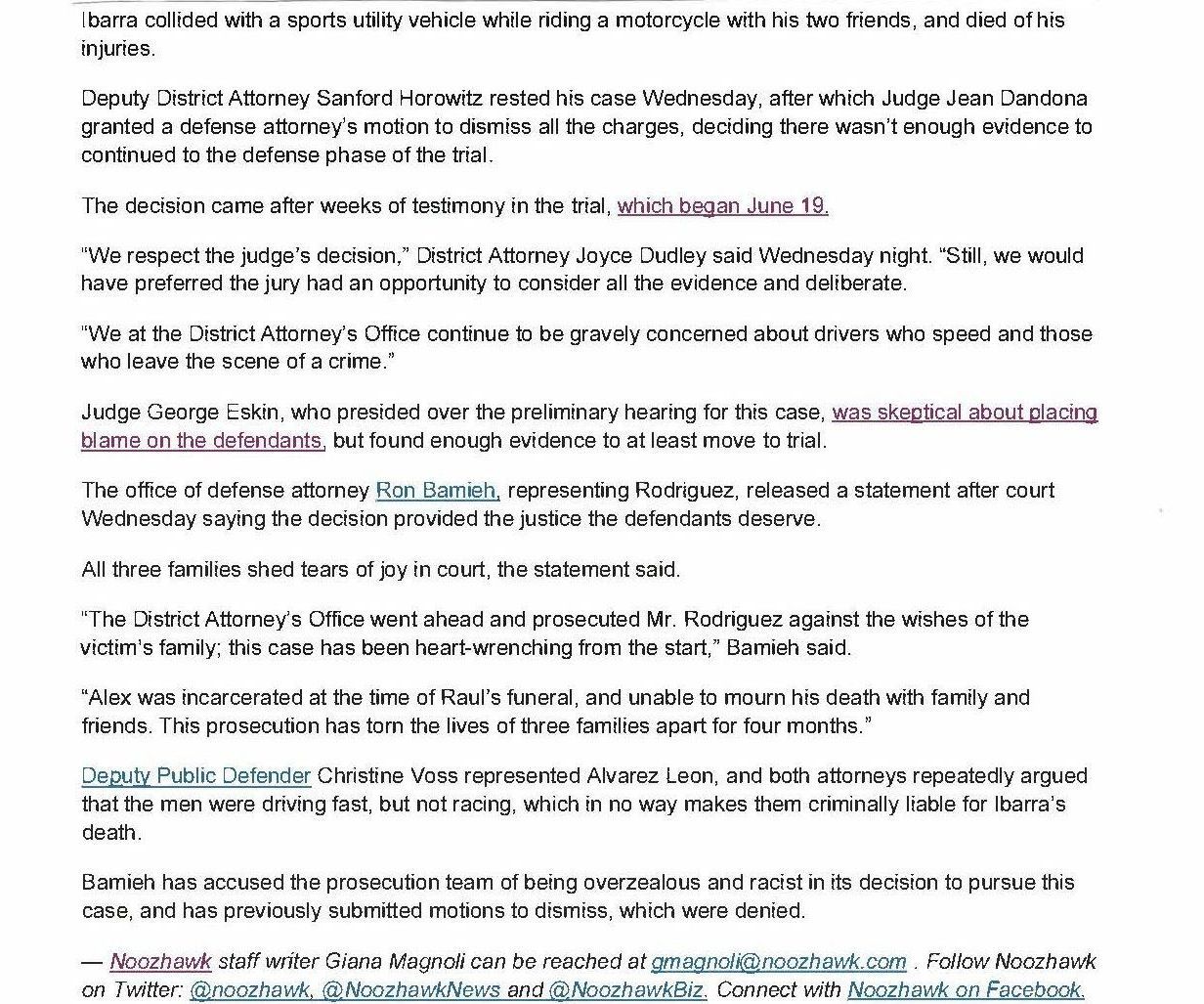
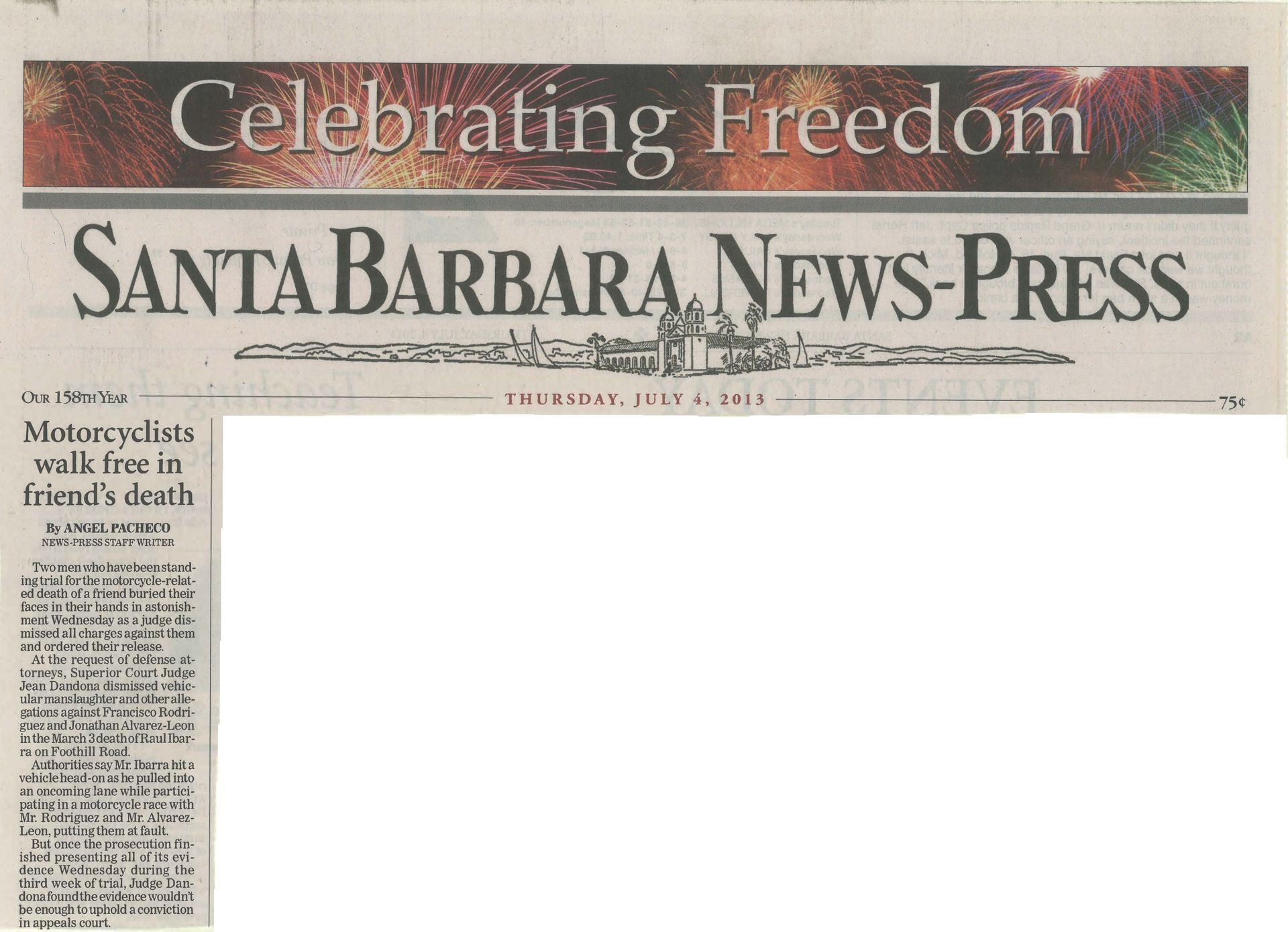
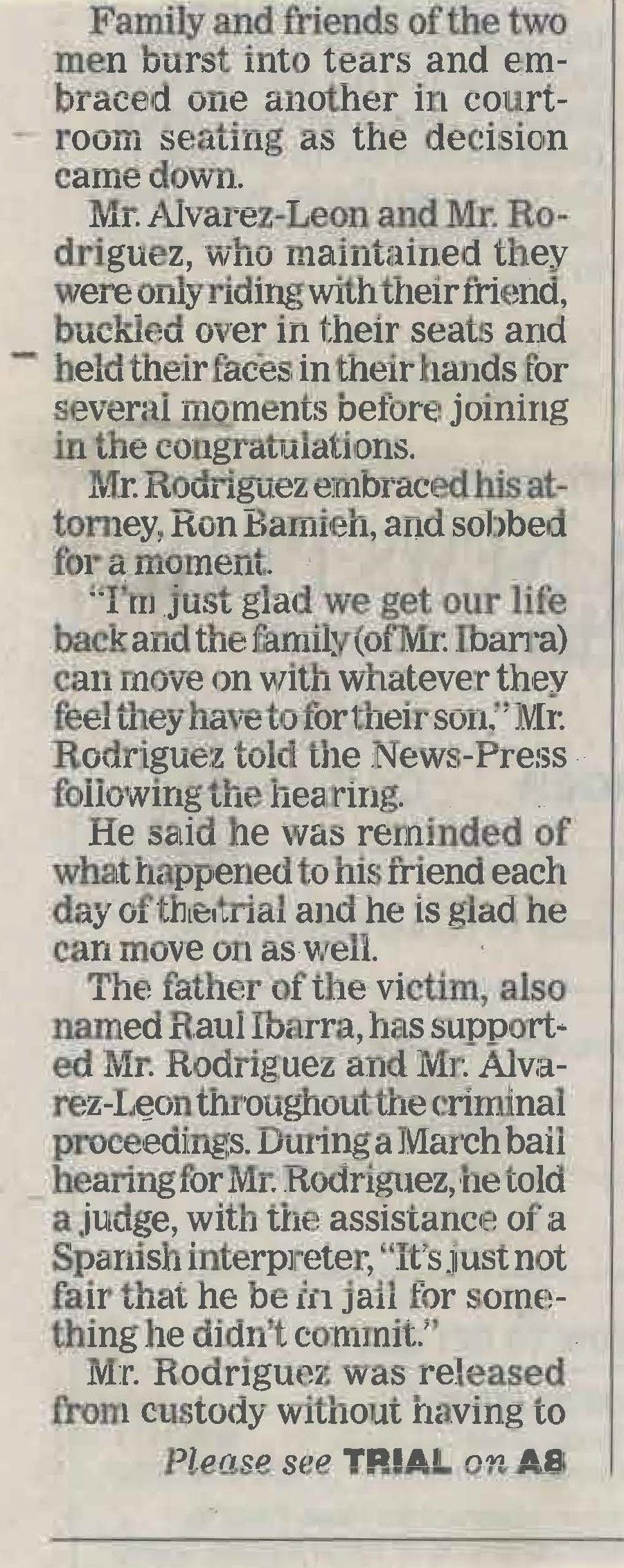

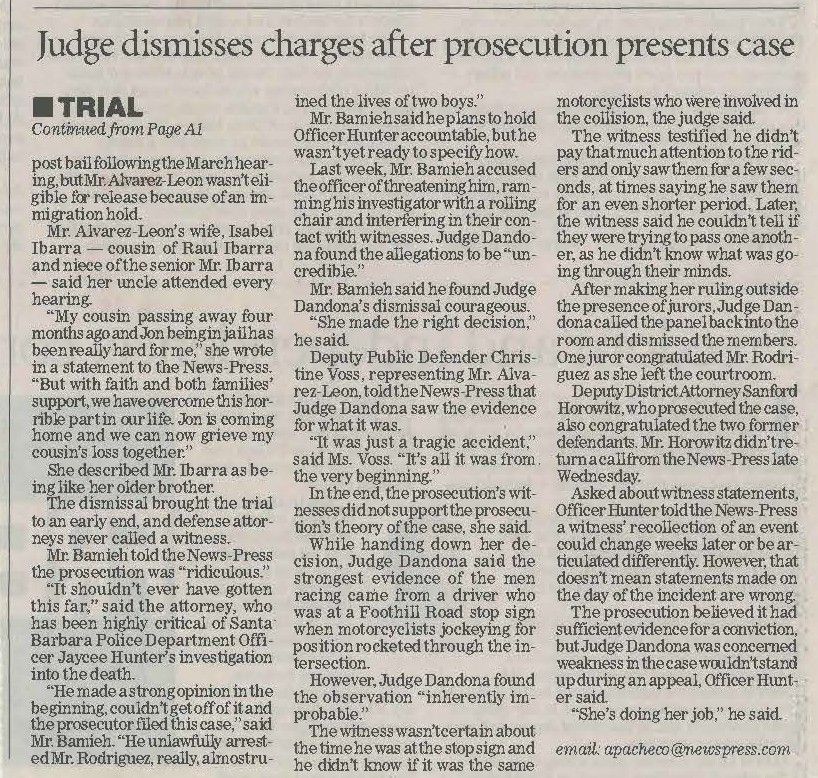
Ramon C., RIF120947, Saved from the death penalty with a life verdict on
September 15, 2010
- Charges: Murder (Penal Code § 187(a)) with a special circumstance of lying in wait (Penal Code § 190.2(a)(15)) with personal use of a firearm (Penal Code § 12022.53(d).
- Exposure: Raymond was facing the death penalty.
- Outcome: The jury's verdict was life in prison without the possibility of parole (LWOPP). The jury verdict saved Raymond from Death Row.
A capital case jury trial that Addison did, and won, was the case of Ramon C. Defense attorneys consider any case where the client is facing the death penalty and is saved from Death Row an absolute win. The fight before the trial was to was to beat the gang special circumstance. Addison wrote and argued the Penal Code section 995 motion to eliminate the gang allegation. The trial judge denied the motion, however the appellate court agreed that Addison was correct and eliminated the gang special circumstance.
Raymond was accused of the execution style of killing a drug dealer, Juan S. Addison was lead counsel, which meant that he was responsible for all trial strategy decisions and guided the work of the other members of the defense team. His team did not just fight against the death sentence; they fought to win the case. The district attorney's case was the testimony of a methamphetamine user, Lisha L., who testified that Raymond shot and killed the drug dealer right in front of her. The defense was that Raymond did not know the drug dealer and, therefore, would not have been allowed in the house, was outside when the shooting occurred, and that it was, in fact, Lisha, the district attorney's snitch witness' ex-boyfriend, Erick E., who was the shooter. Addison presented forensic evidence that showed that Lisha's story could not have been true. The district attorney focused on Raymond's other accused violent crimes and his "eye witness." One of the highlights of the trial was when Lisha admitted that she was not only high on methamphetamine when the incident occurred, but was also high on meth when she testified in court. When she came to court to testify she had an active arrest warrant. The judge ordered her remanded into custody. Addison filed a motion to play Lisha's jail calls in front of the jury, as Raymond's jail calls had been played in front of the jury, so the jury could hear Lisha, in Addison's words, "In her natural habitat." Addison's motion was denied so the jury did not get to hear what Lisha was really like.
The jury found Raymond guilty of first-degree murder and found the special circumstance true. Addison and his team then went into the second phase, where they presented medical evidence and called witnesses from throughout Raymond's life. After a seven-month-long trial that was a battle at every step, the jury came back with a verdict, saving Raymond's life with a verdict of life in prison and rejecting the death penalty.
There were so many murder trials in Riverside at the time, including capital murder trials, that Raymond's case, over the seven months that it was in trial, did not get any press coverage. It wasn't until the verdict saving his life came in that there was a small article in the paper. That article is below.


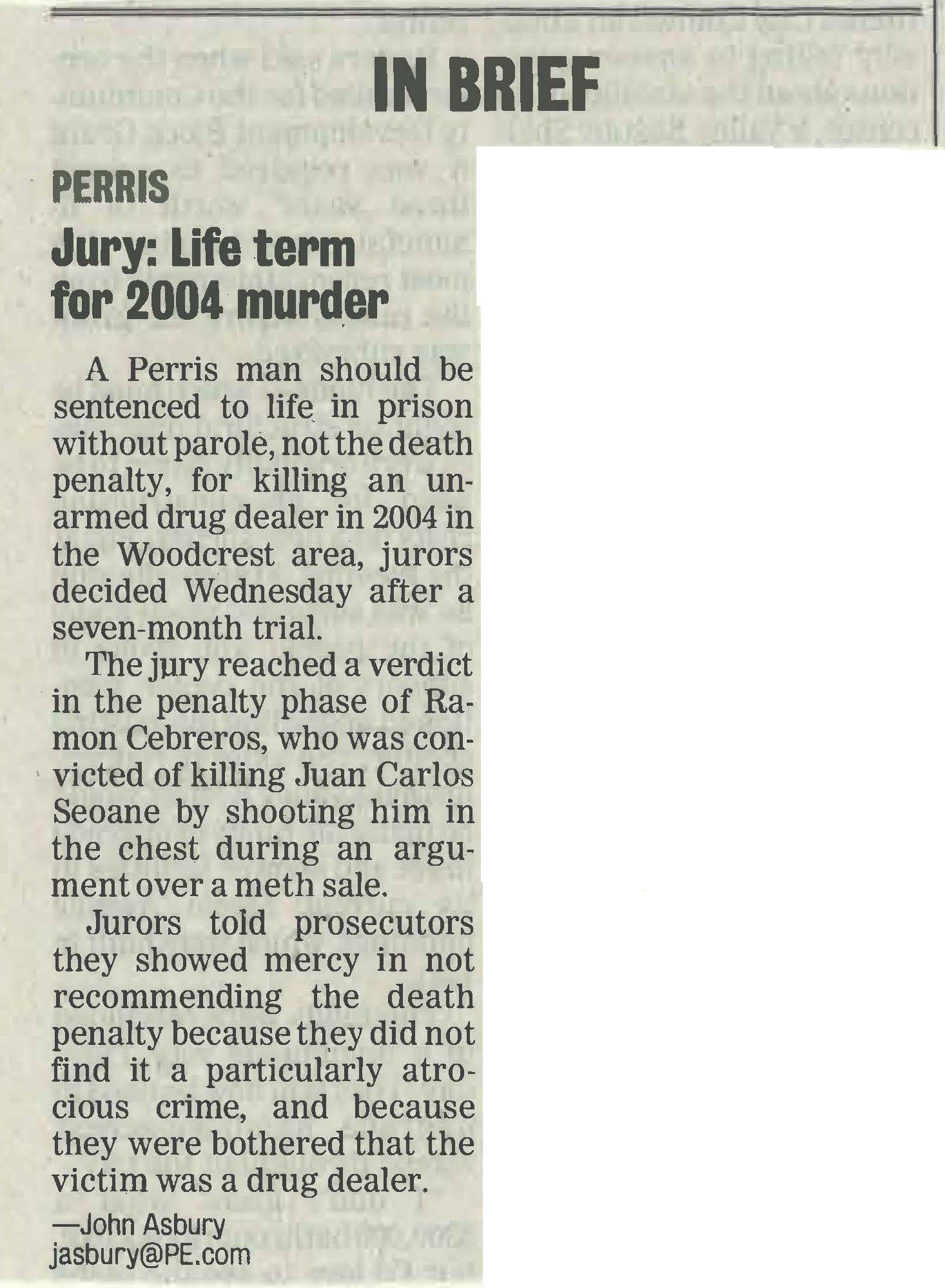
Below is one of the slides that Addison used in his closing argument
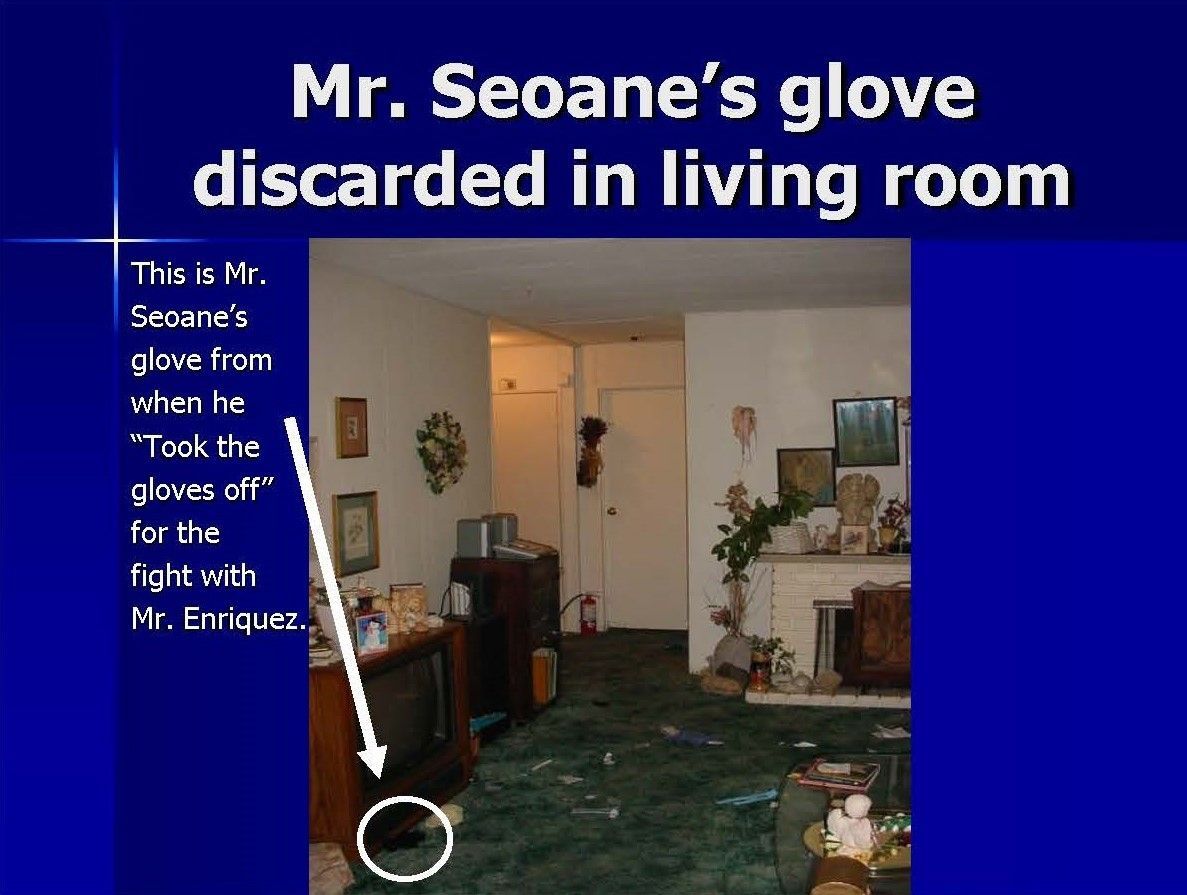
Below is the verdict from when Addison and his team saved Raymond from the death penalty. The members of his team signed it for him and it now hangs in his office.
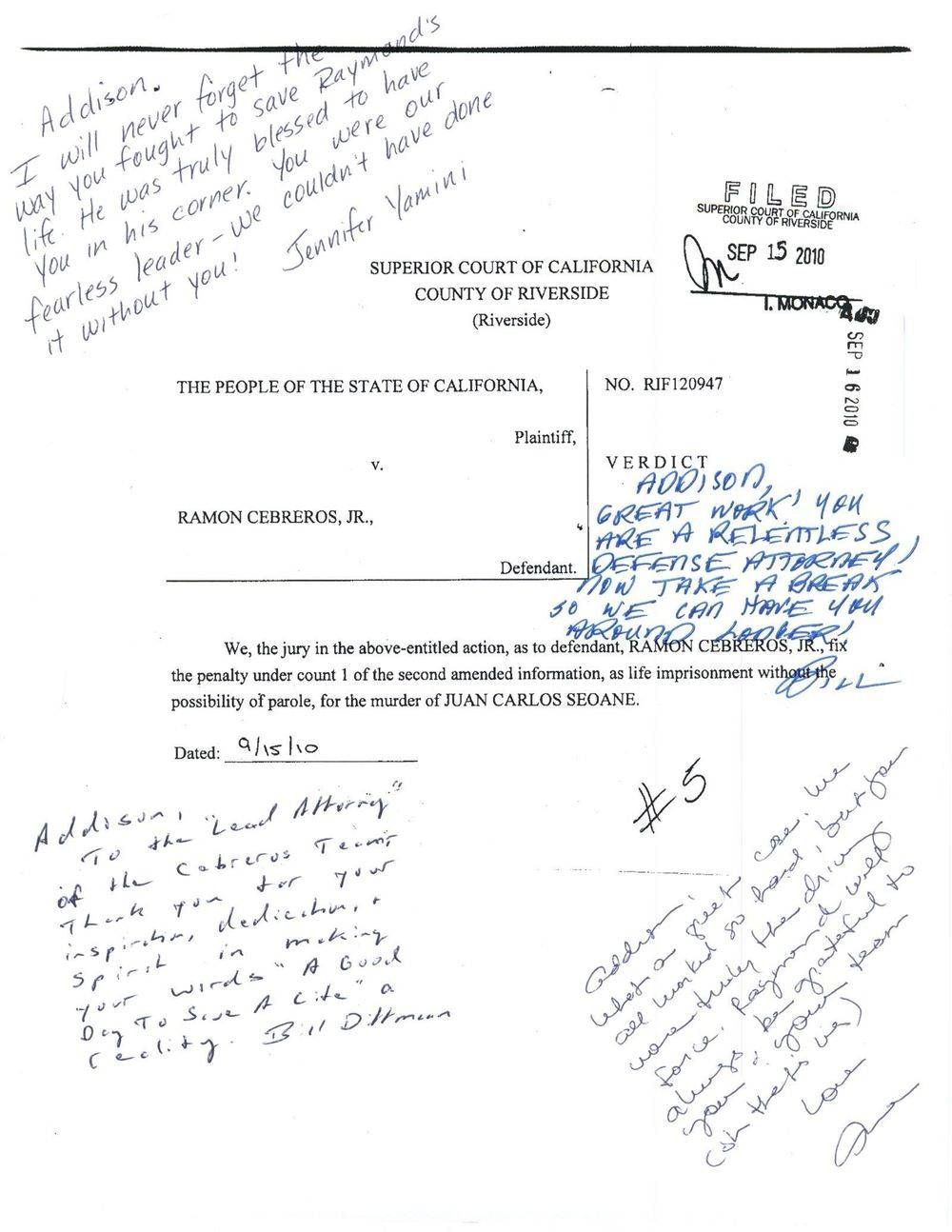
Below is Raymond, Addison and their team.
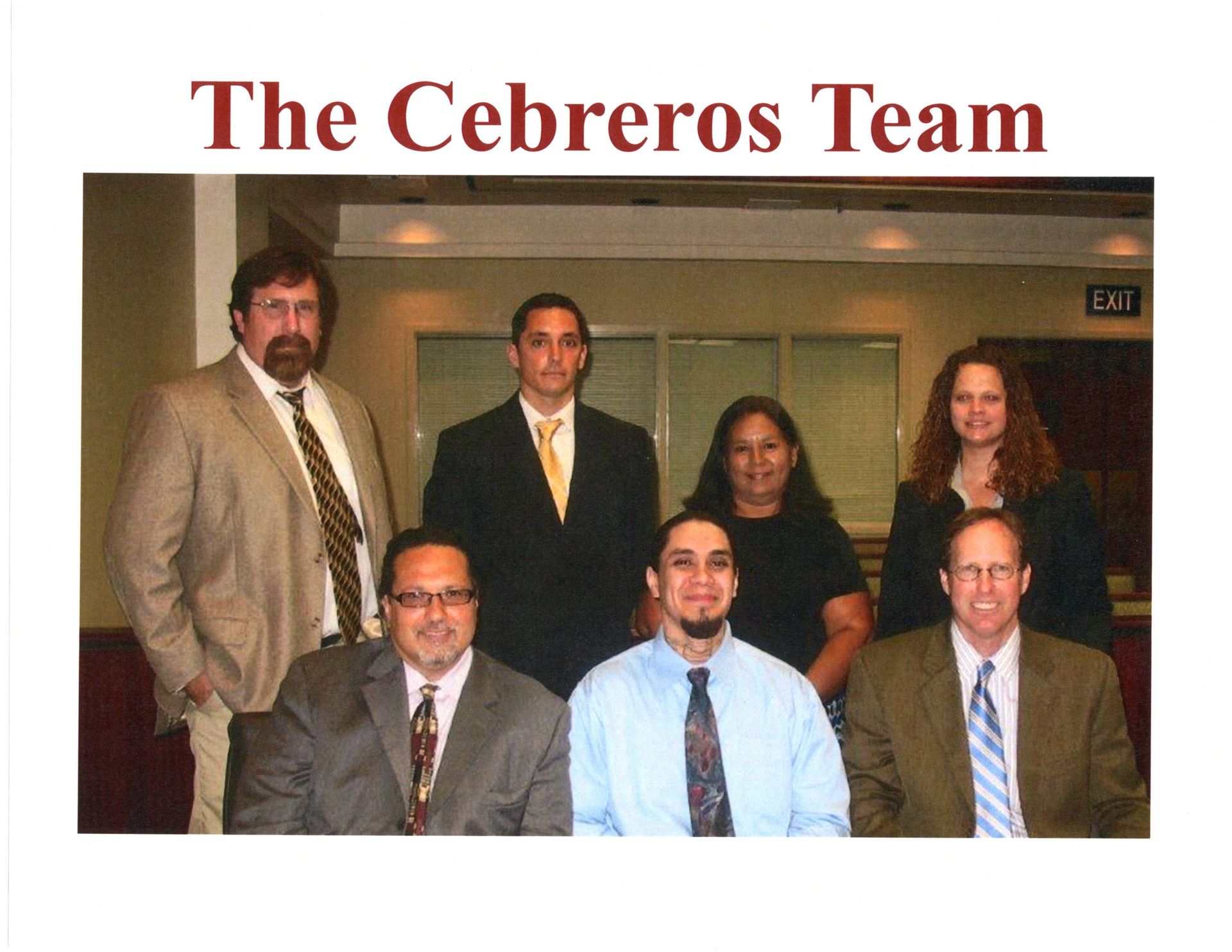
The story of Mr. 319
This is trial exhibit 319 from Raymond's trial. He remains in Addison's office to this day. The exhibit was referred to throughout the trial as Mr. 319. He was presented by an expert witness that Addison had hired to explain the trajectory of the bullet and how the district attorney's snitch witness' testimony did not match the forensic evidence. While explaining the trajectory, the expert witness, Blaine Kern, used the Pythagorean theorem to explain where the gun would have to have been fired from at different distances to account for the trajectory of the bullet.
After the trial was over the clerk called Addison to tell him that he needed to go get Mr. 319 because they could not continue to store him. After taking pictures of him from all angles for the appellate record, Addison took Mr. 319 back to his office. He then called Blaine Kern and asked if Blaine wanted him back, to which he answered that he could no longer use Mr. 319 because he now had a hole in his chest with a dowel sticking out of it, not to mention that he had been written on when witnesses testified about him and of course also now had an exhibit tag on him. Addison offered to buy him from Blaine, but Blaine said that he didn't feel right charging Addison for him and offered to give Mr. 319 to him as a memento of the fight they had had together in court. However, Addison couldn't accept him as a gift because at the time he was a public defender and couldn't accept gift from clients or expert witnesses. Blaine then asked Addison if would store Mr. 319 indefinitely for him. Addison agreed to do that and Mr. 319 has been happily stored in Addison's office since 2010.
Mr. 319 is very spirted and enjoys being decorated for holidays and special events. His is below showing his Christmas spirit.
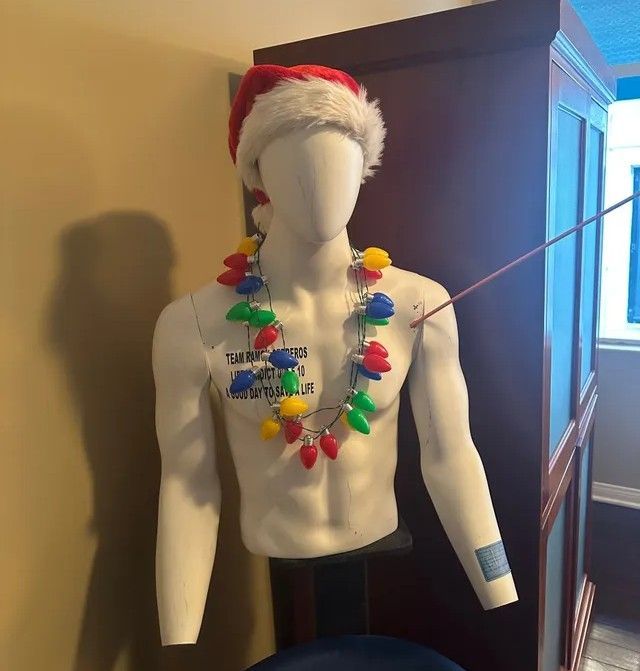
Mr. 319 has a sticker on his right chest. That sticker says, "Team Ramon Cebreros life verdict 09.15.10 a good to save a life." Addison's theme during his closing argument in the second part of the trial, the trial to determine if Raymond would get life in prison or the death penalty, was that, "Today is a good day to save a life." The jury clearly agreed with Addison, they came back with a life verdict.
Robert M., RIF135704, on February 19, 2010 Acquitted of first degree murder and
a hung jury on second degree murder
- Charges: Murder (Penal Code § 187(a)) with a special circumstance of gang murder (Penal Code § 190.2(a)(22)) with personal use of a weapon (a knife) (Penal Code § 12022(b)(1)), assault with a knife (Penal Code § 245(a)(1)) and gang crime (Penal Code § 186.22(a)).
- Exposure: Robert was facing life in prison without the possibility of parole (LWOPP).
- Outcome: Robert was acquitted of first-degree murder, which meant that he could not be subjected to the special circumstance and could not get LWOPP. The jury hung on second-degree murder and hung on the gang crime allegation ten to two in favor of acquittal. A different attorney did his second trial, and he was convicted of second-degree murder and gang crime.
This was a challenging murder trial because the incident was a fight in a crowded upscale sushi restaurant. The evidence that was presented by Addison was that another person, Richie C., was the stabber and that stabbing was in self-defense. The allegation was that Robert did the stabbing with a broken beer bottle, but that improvised weapon was not among the debris in the restaurant. One of the highlights of the trial was when Addison caught the County Coroner lying about his handling of the evidence. How the evidence was handled was important because there was DNA evidence, so the order in which the evidence was handled impacted cross contamination of the DNA. Addison's forensics expert witness, Blaine Kern, looked at the metadata from the photos which recorded the order the in which the photos of the evidence were taken. That proved that the coroner perjured himself when he swore that he one hundred positive about the order in which handled and photographed the evidence.
After 43 court days in trial, the jury acquitted Robert of first degree murder. That meant that the gang special circumstance could not be reached, which meant that Robert could not get an LWOPP sentence. The jury hung on second degree murder. He was also acquitted of assault with a knife, which meant that the great bodily injury enhancement and the gang enhancement would not be reached on that count. After the trial Addison was transferred to a unit in the public defenders office that exclusively worked on capital murder cases, so his case was reassigned to another lawyer in the office. Robert's family didn't have confidence in that lawyer and hired an attorney to do the retrial. That trial lasted two weeks, assuming a normal trial schedule of four days a week, it would have been an eight day trial, and Robert was convicted of all the remaining charges.
Despite the how long the trial was and that Robert was facing a life without the possibility of parole (LWOPP) sentence, there was no press coverage at all of the trial. It was especially odd because the incident occurred at an upscale sushi restaurant in Corona, California, so it was an unusual occurance. It appears to Addison and Christine that the press tends to cover convictions more than they do acquittals. In any event, there was no press coverage of Robert's trial.
Below is an exhibit that Addison used in his closing argument to emphasize that there was no broken bottle that could have been used as the murder weapon.
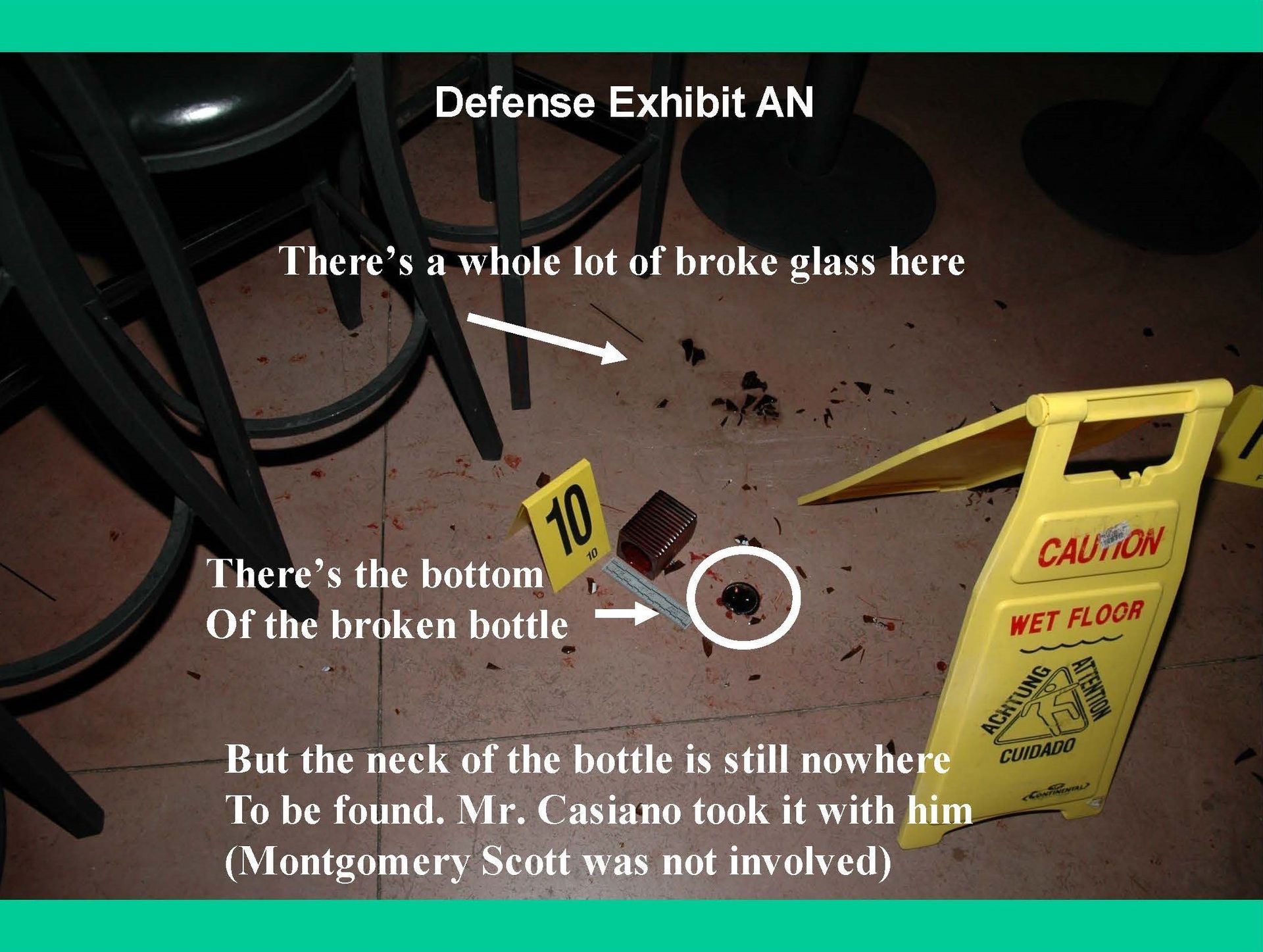
Part of Addison's argument was that there was no large piece of broken bottle for Robert to have used to stab the decedent. He emphasis was that Scotty didn't beam up the key piece of evidence. Scotty, the Star Trek character, is the basis of the pop culture phrase, "Beam me up Scotty." In Star Trek Scotty is Lt. Commander Montgomery Scott.
Below is another slide that Addison used in his closing.
The same County Coroner, a medical doctor, that lied about his handling of the evidence, also testified that he could not read the decedent's x-ray, that he could not see the decedent's heart in the x-ray. The forensic pathologist that Addison hired to testify for the defense said that the decedent's heart was clearly visible in the x-ray and that any medical doctor should be able to easily read the x-ray.

Alex M., RIF125661, Saved from the death penalty on February 23, 2009
Alex was accused of the torture-murder of his girlfriend's young son. Unlike many capital trials, Addison and the defense team did NOT concede the murder and only fight to avoid the death penalty; they fought to win the case. The defense was that the child's injuries were inflicted before he was in Alex's care and if the jury believed they were inflicted by Alex he did have the intent to kill. The prosecution's case was all about the statements Alex made to the police, which, if believed, made the prosecution's case rather strong. The defense team presented expert medical testimony to support the position that injuries occurred before the child was in Alex's care. The district attorney focused on Alex's statements. In the middle of the trial, Addison jointly wrote a motion attacking the evidence that had been presented for the torture special circumstance and asking the judge to dismiss it. It was a high-stakes motion: If granted, the case becomes a regular first-degree murder case; if denied, it remained a death penalty case, and the killing of a child is never a good defense death penalty case. The team argued the motion, and it was granted. Alex was saved from death row. Unfortunately, it seems that his statements were too much for the jurors, who found him guilty of first-degree murder. Alex was sentenced to twenty-five years to life in prison. The case started with his exposure being years on Death Row, followed by death by lethal injection. Instead, someday, he will have a parole hearing and may be able to go home.
Below is the cover of the motion that Addison wrote that saved Alex from Death Row
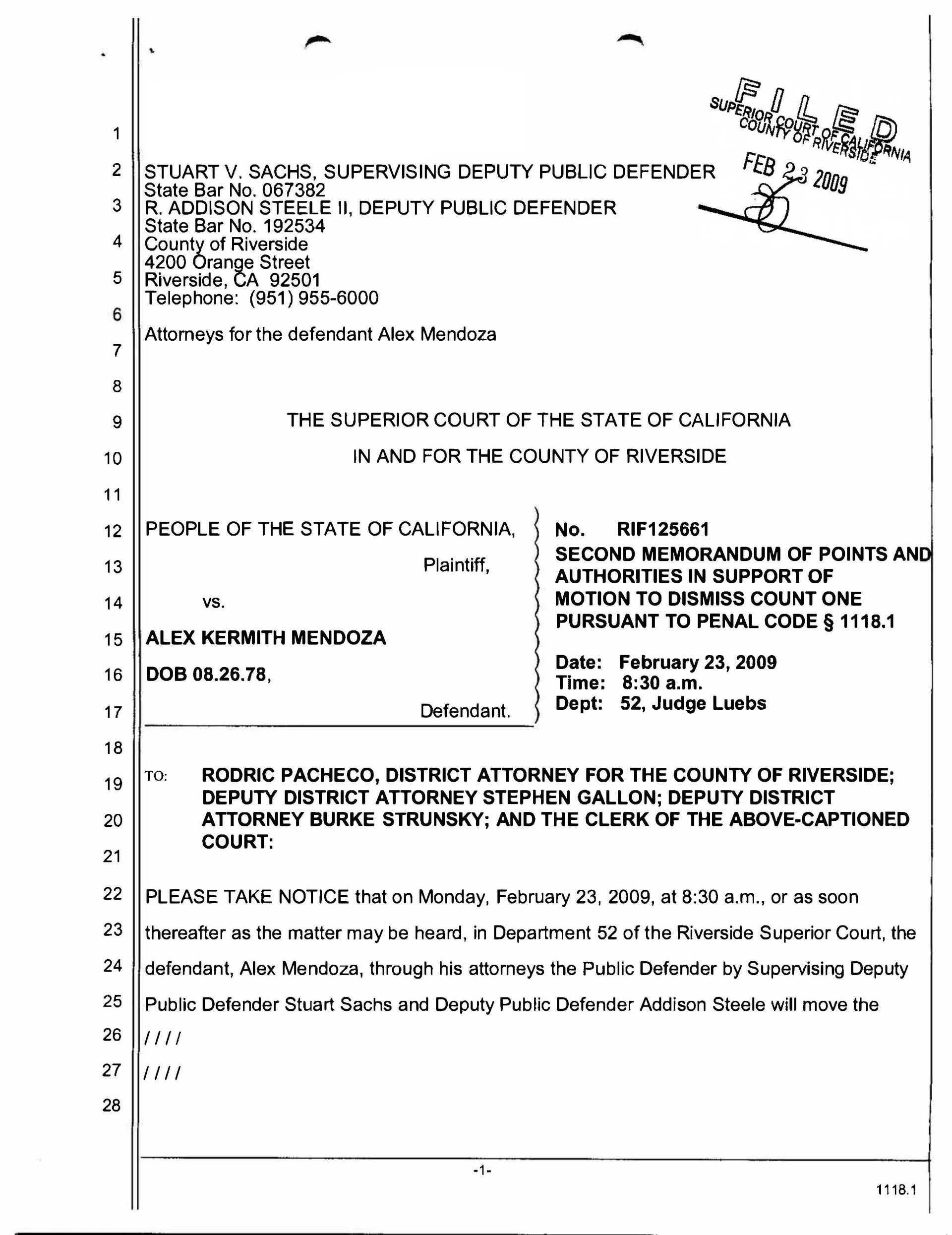
This is the press from when Alex and Addison won the case by Addison's motion convincing the judge to eliminate the death penalty

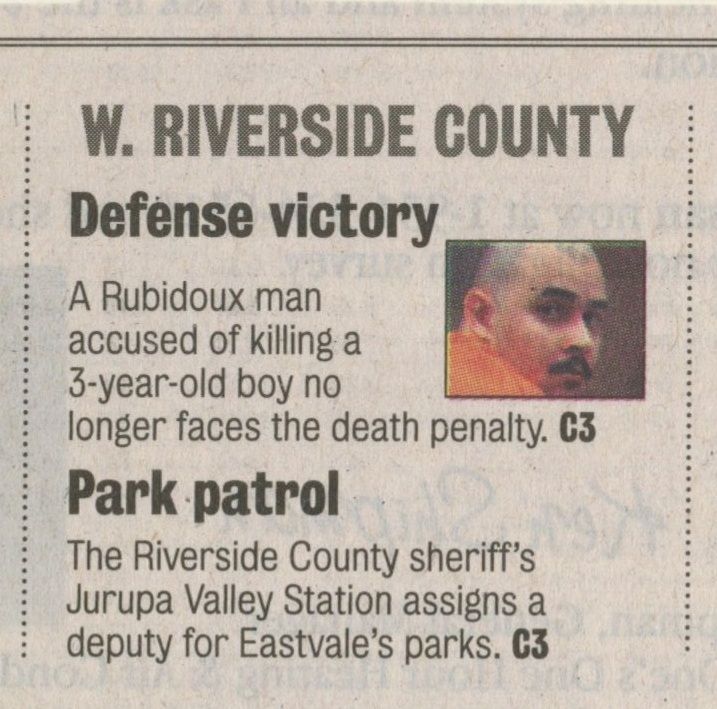


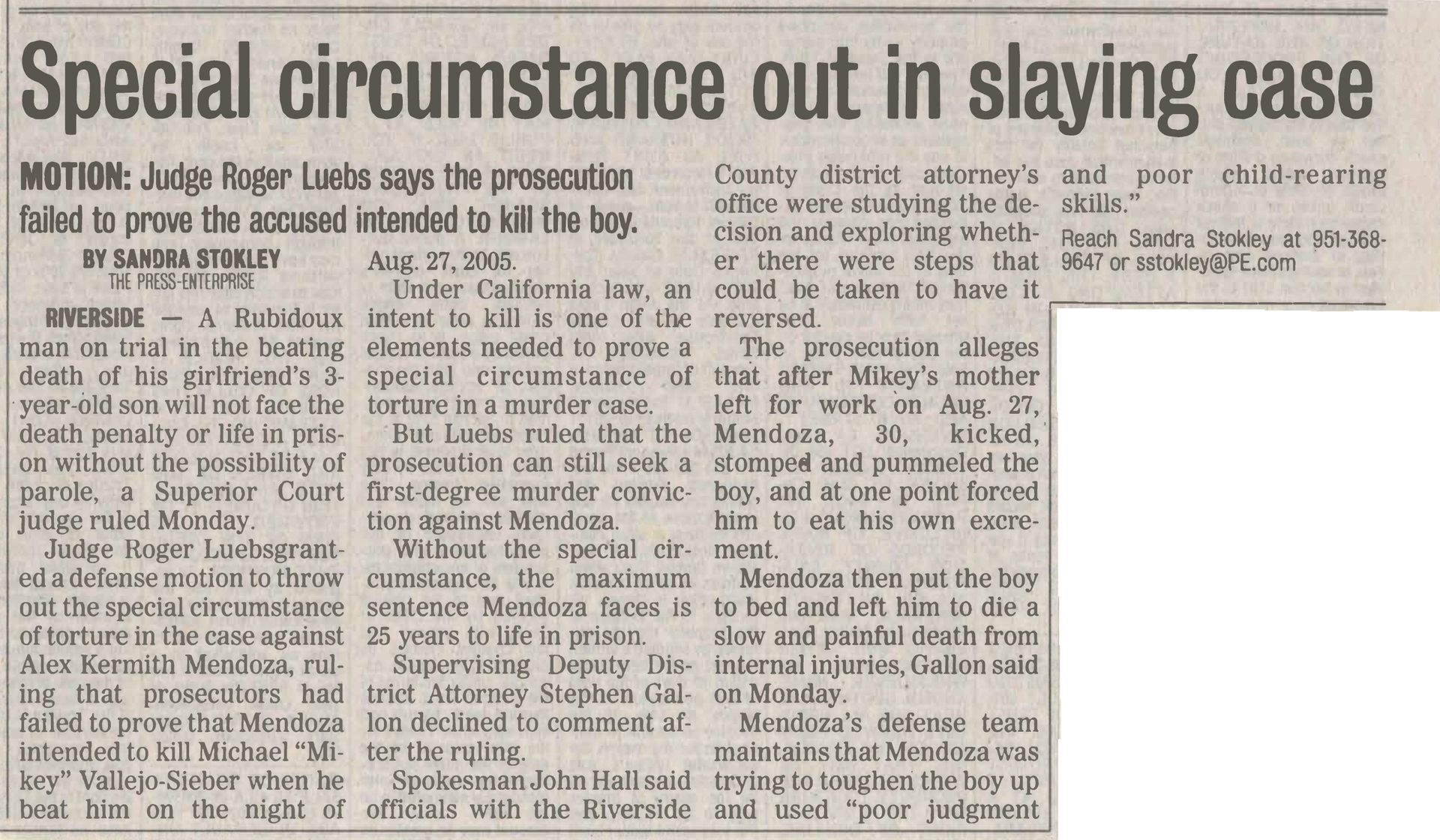
Here you can follow the press on Alex's case from beginning to end

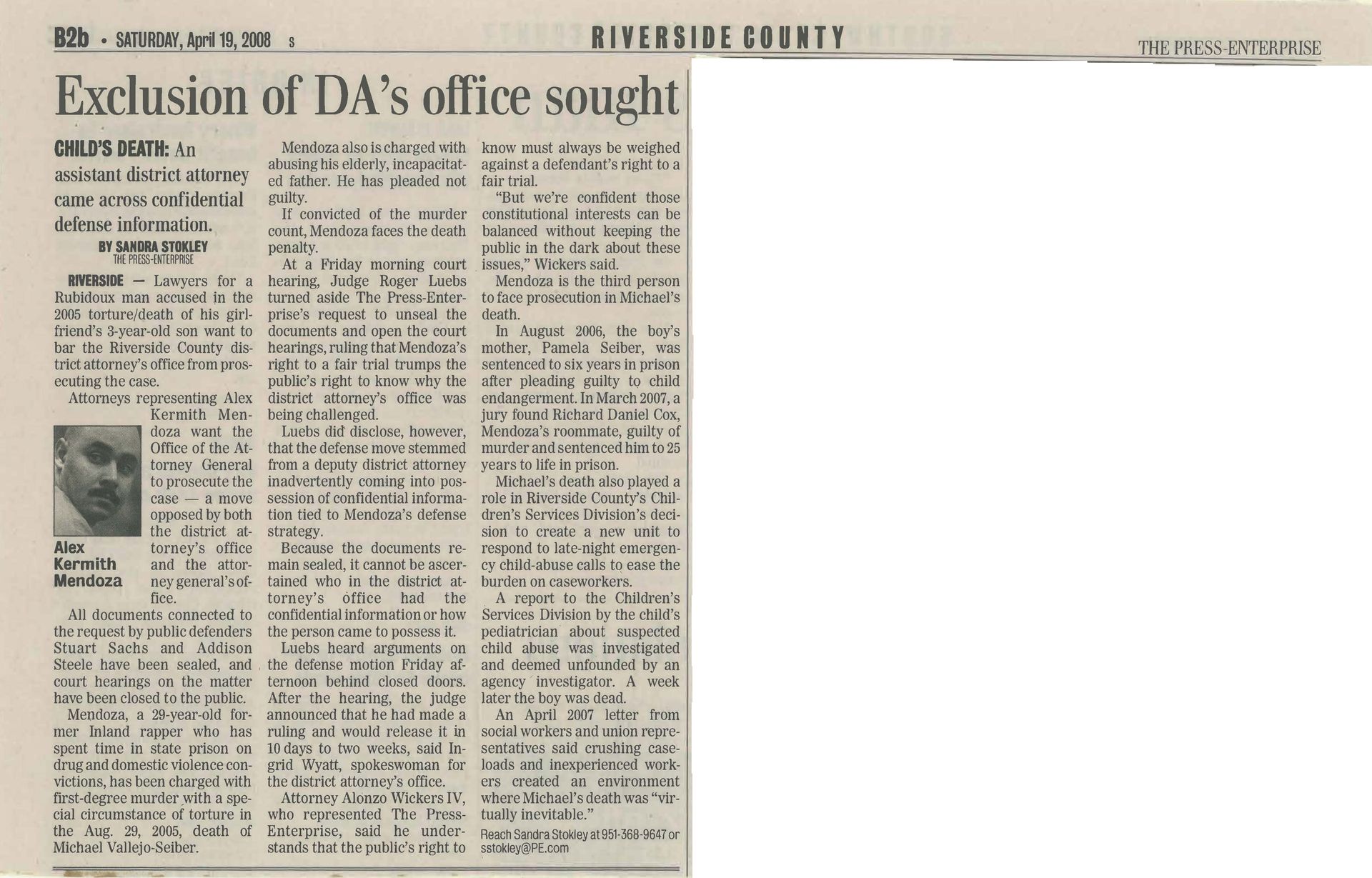

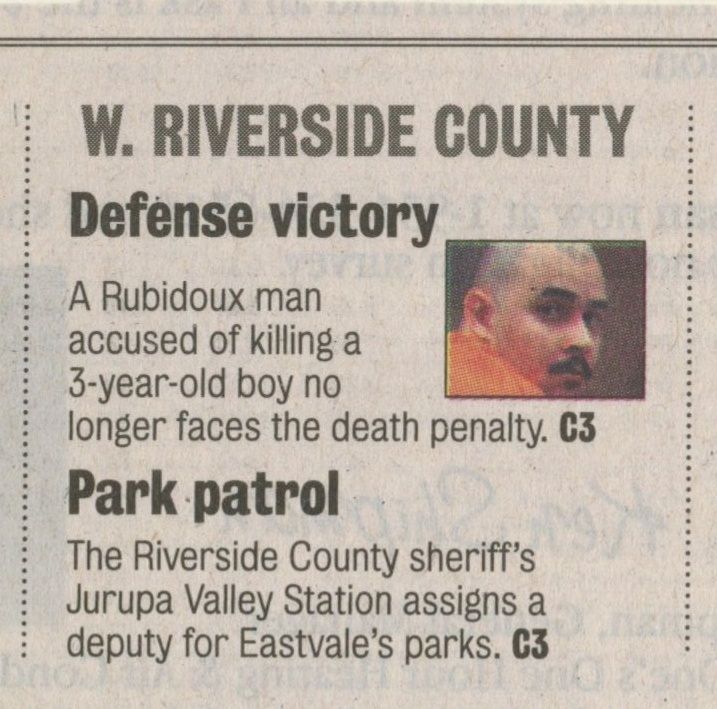


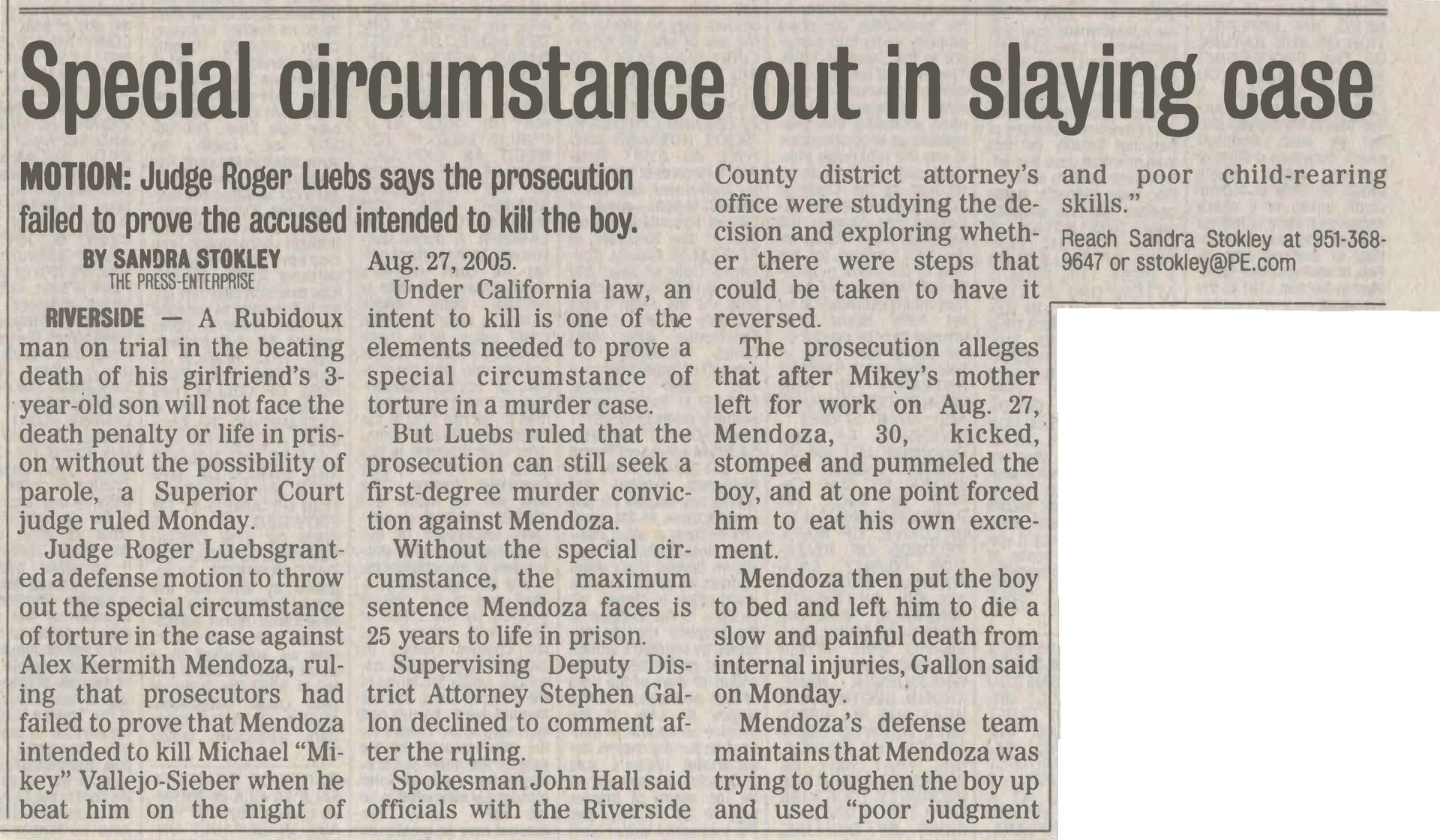

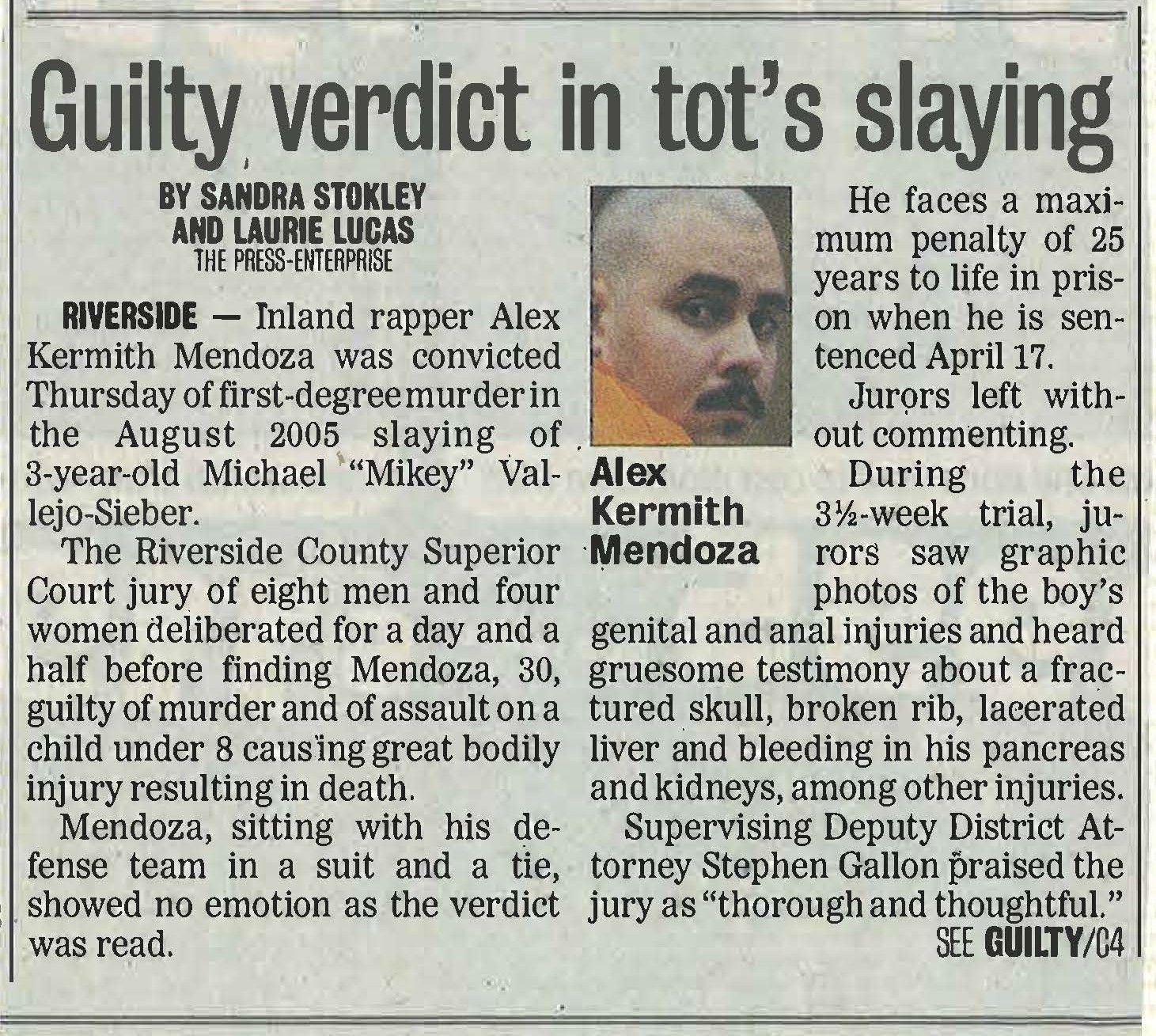
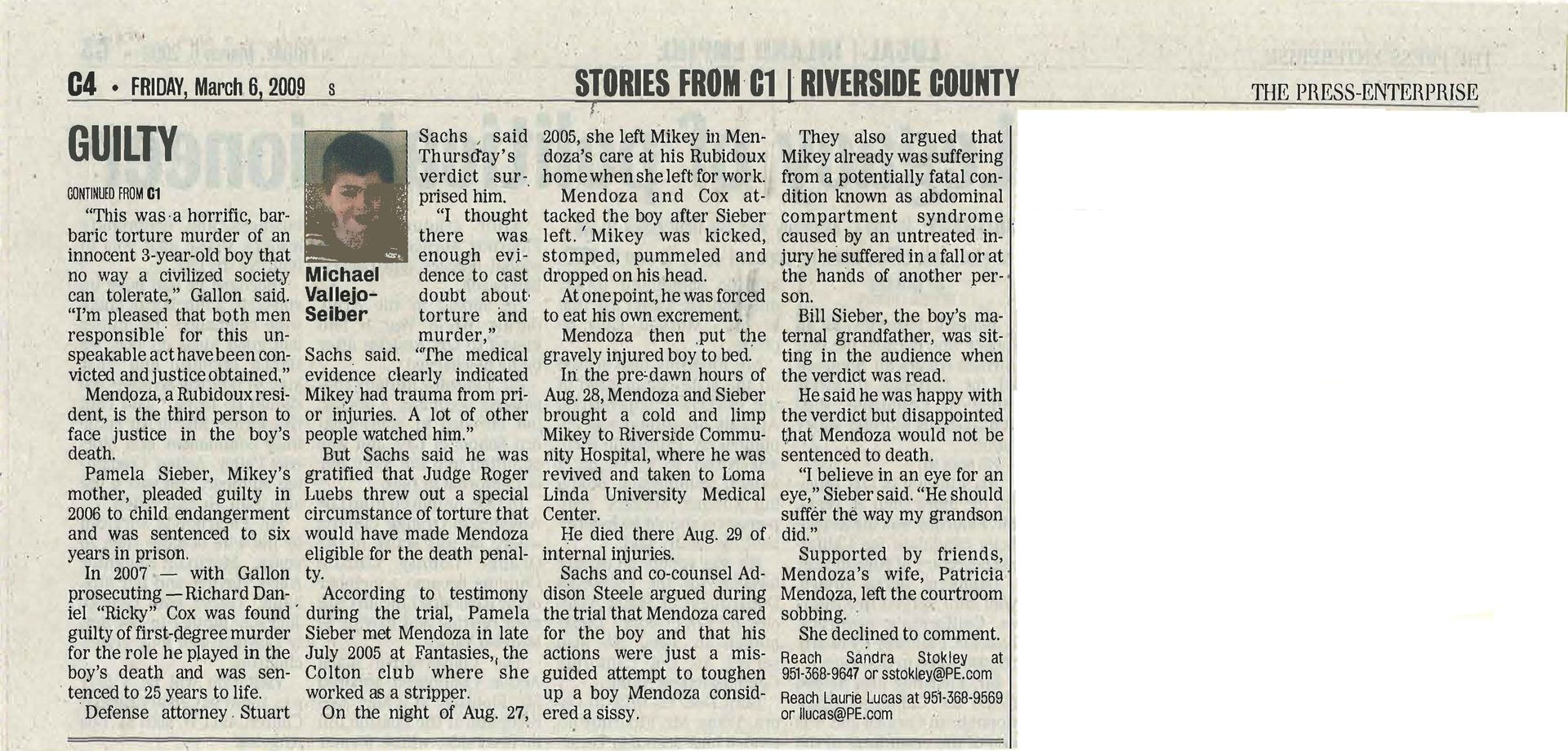
Jaray C., RIF127509, On September 18, 2008 Acquitted of all homicide related
Charges
- Charges: Murder (Penal Code § 187(a)) with a gang allegation (Penal Code § 186.22(b)) personal use of a gun (Penal Code § 12022.53(b) and gun use in a gang crime (Penal Code § 12022.53(e)), two counts of attempted robbery (Penal Code § 664/211) with gang allegations (Penal Code § 186.22(b)), gun use in a gang crime (Penal Code § 12022.53(e) and personal use of a gun (Penal Code § 12022.53(b)), two counts of felon in possession of a firearm (Penal Code § 12021(a)(1)), five counts of robbery (Penal Code § 211) with gang allegations (Penal Code § 186.22(b) and gun allegations (Penal Code § 12022(a)(1)).
- Exposure: Jaray was only convicted of a few charges, all of which were conceded to the jury because they were on videotape. He was acquitted of first-degree murder and the lesser degree of second-degree murder. He was acquitted of all personal use of a firearm charges and was acquitted of all possession of firearms charges. He was acquitted of all gang charges and allegations. He was sentenced to four years and eight months in prison. He served that time and went home. He is now working and writing screenplays.
This was a difficult murder trial because the district attorney applied a rarely used theory of first degree murder called provocative act homicide. Jaray had grown up in Compton and when he was young was a member of the Santana Blocc Compton Crips. After he had moved out of the neighborhood he ended up hanging out with a friend from his neighborhood that had been making a living robbing liquor stores. That friend recruited Jaray to do a robbery with him. Jaray's friend, another friend that would end up being Jaray's co-defendant, and Jaray set out to commit a liquor store robbery. However, Jaray didn't want to carry a real gun, he instead had a realistic looking BB pistol. During the robbery Jaray's friend held his gun to the merchant's head. The merchant grabbed Jaray's friend's gun, pulled his own gun out that he had tucked into the back of his pants and shot and killed Jaray's friend. He then shot Jaray in the back and buttocks as Jaray ran out of the store. Jaray and his co-defendant, who stayed in the car as the getaway driver, were both charged with murder under the provocative act murder theory. The district attorney's theory was that it was Jaray holding the merchant's girlfriend in order to keep her from running out of the store or calling the police that inspired the merchant to kill Jaray's friend, not the fact that Jaray's friend was holding a gun to the merchant's head. An added twist to the case was that the district attorney had a snitch named McCoy that claimed that Jaray had done a series of other robberies. When one of the merchants from one of the other robberies was testifying, Addison showed her a picture of McCoy and she identified McCoy as the person that robbed her, not Jaray. She said that Jaray was definitely NOT the person that robbed and that McCoy was in fact the person that robbed her. During closing arguments Addison argued that if the jury was looking for the person that committed all the other robberies that they had seen the real McCoy on the witness on the witness with his made up snitch story. The jury acquitted Jaray of all the other charged robberies. Addison and Jaray conceded that he was a participant in the robbery in which his friend was killed, but the jury agreed with the evidence that Addison and Jaray presented to show that the gun he had was a BB gun, which does not count for a gun enhancement, and that his former gang affiliation didn't have anything to do with the robbery. The jury found both the gun allegation and the gang allegation not true. Jaray was found guilty of the conceded charges and was to four years eight months prison. Addison saved him from 71 years to life in prison.
This is one of the slides that Addison used in his closing argument.
He argued that the police should have investigated McCoy as the actual robber instead just accepting his snitch story
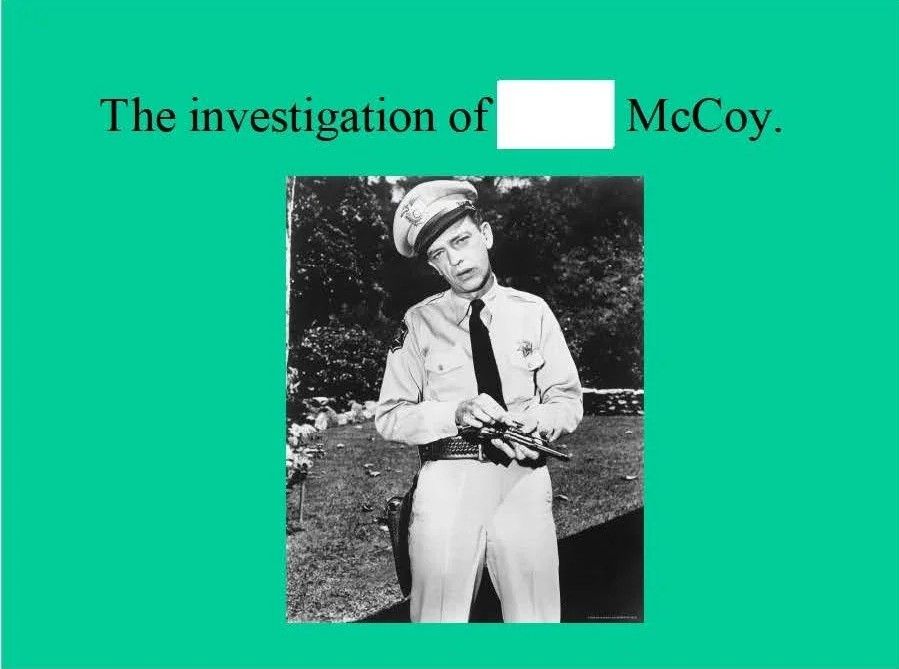
These are the verdict forms from Jaray's acquittal

This is the press from when Jaray and Addison won the trial.

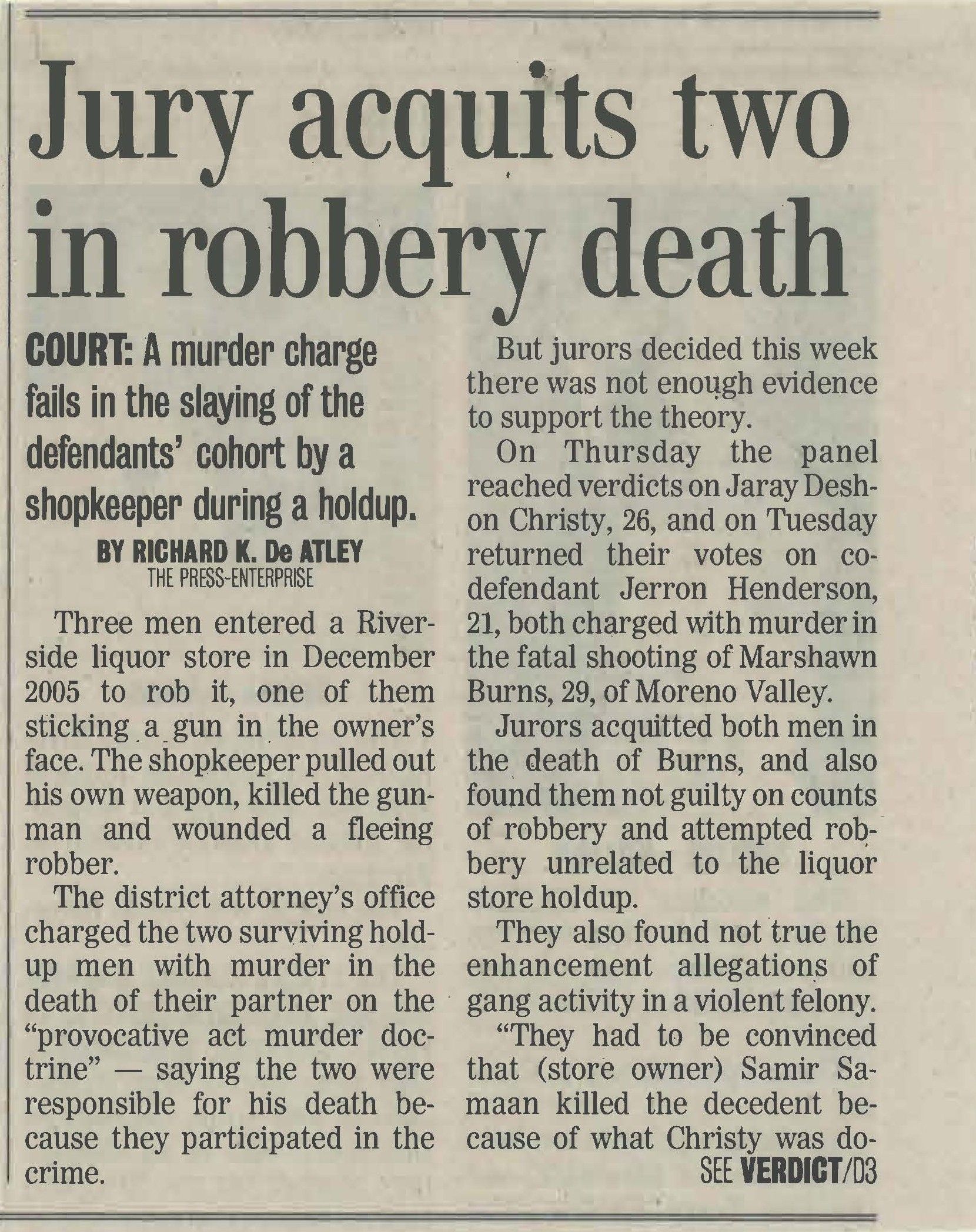

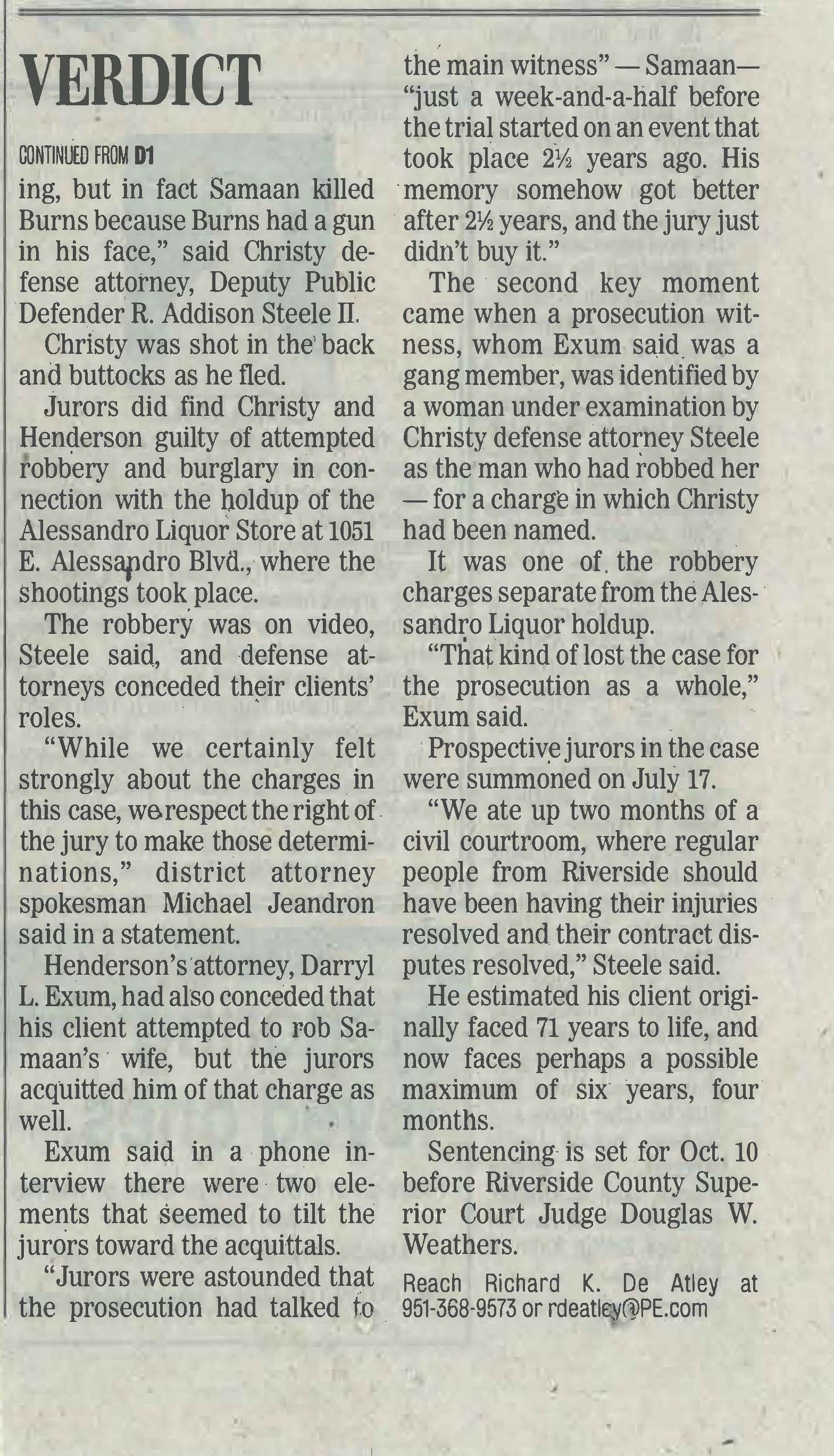
This is Jaray, Addison and the investigator on the case not too long after the verdicts
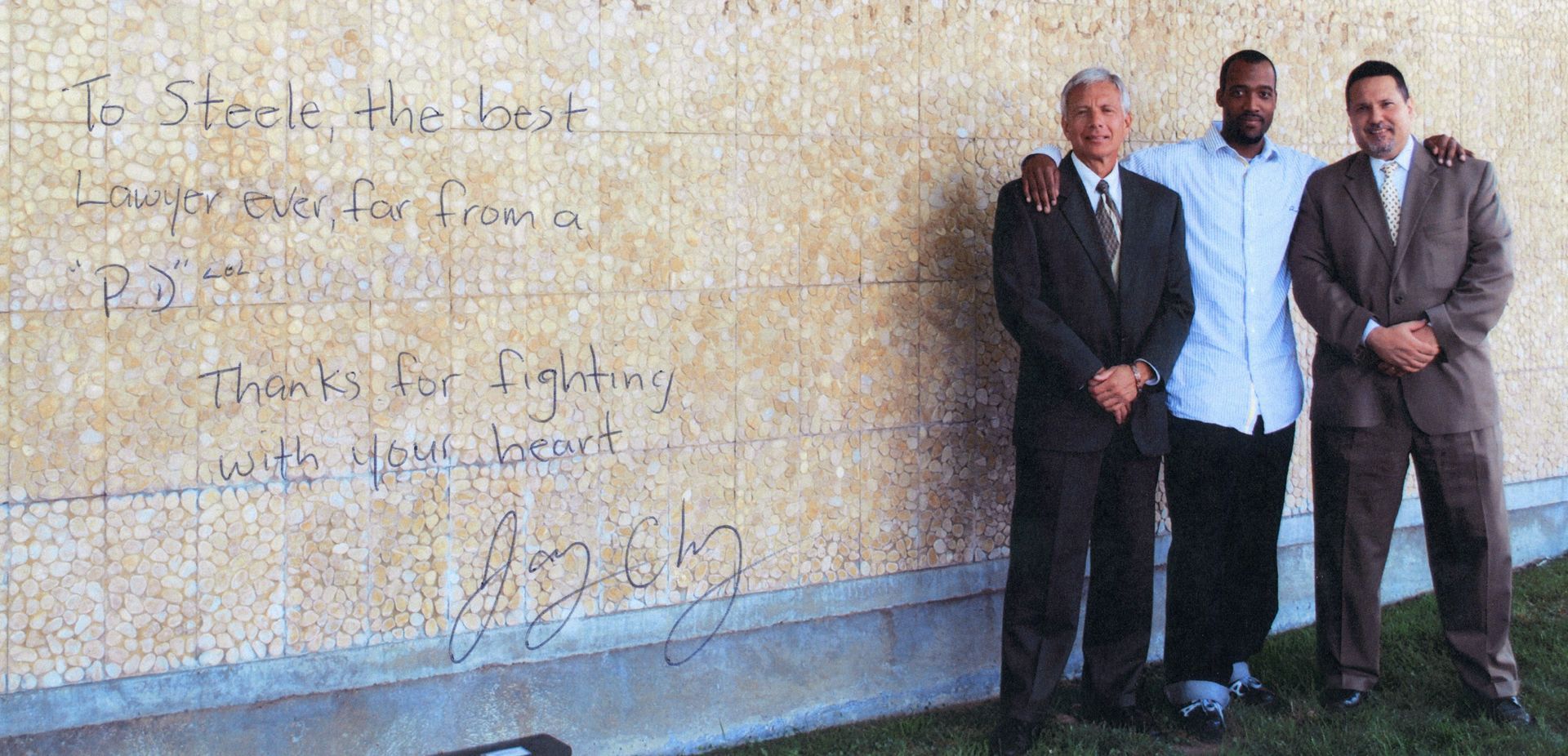
This is Jaray and Addison several years ago when Jaray visited Addison at the Santa Barbara Courthouse
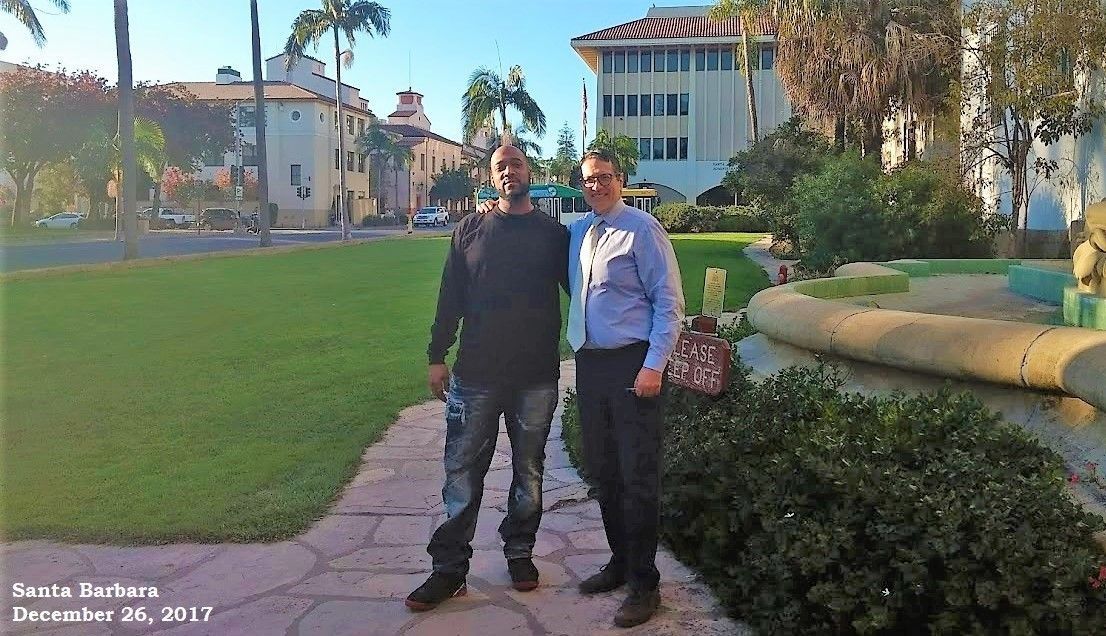
Here you can follow the press on Jaray's case from beginning to end

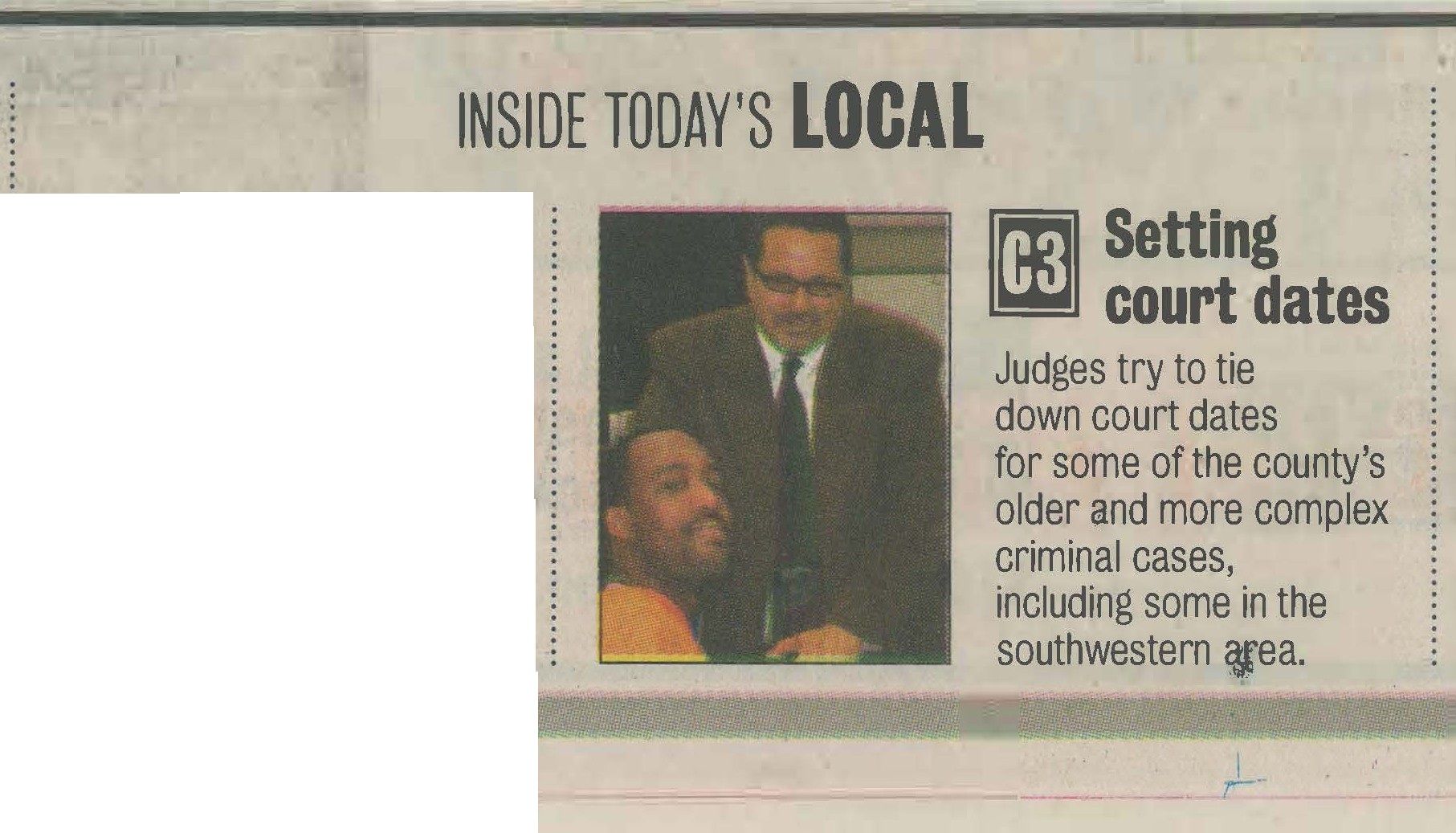

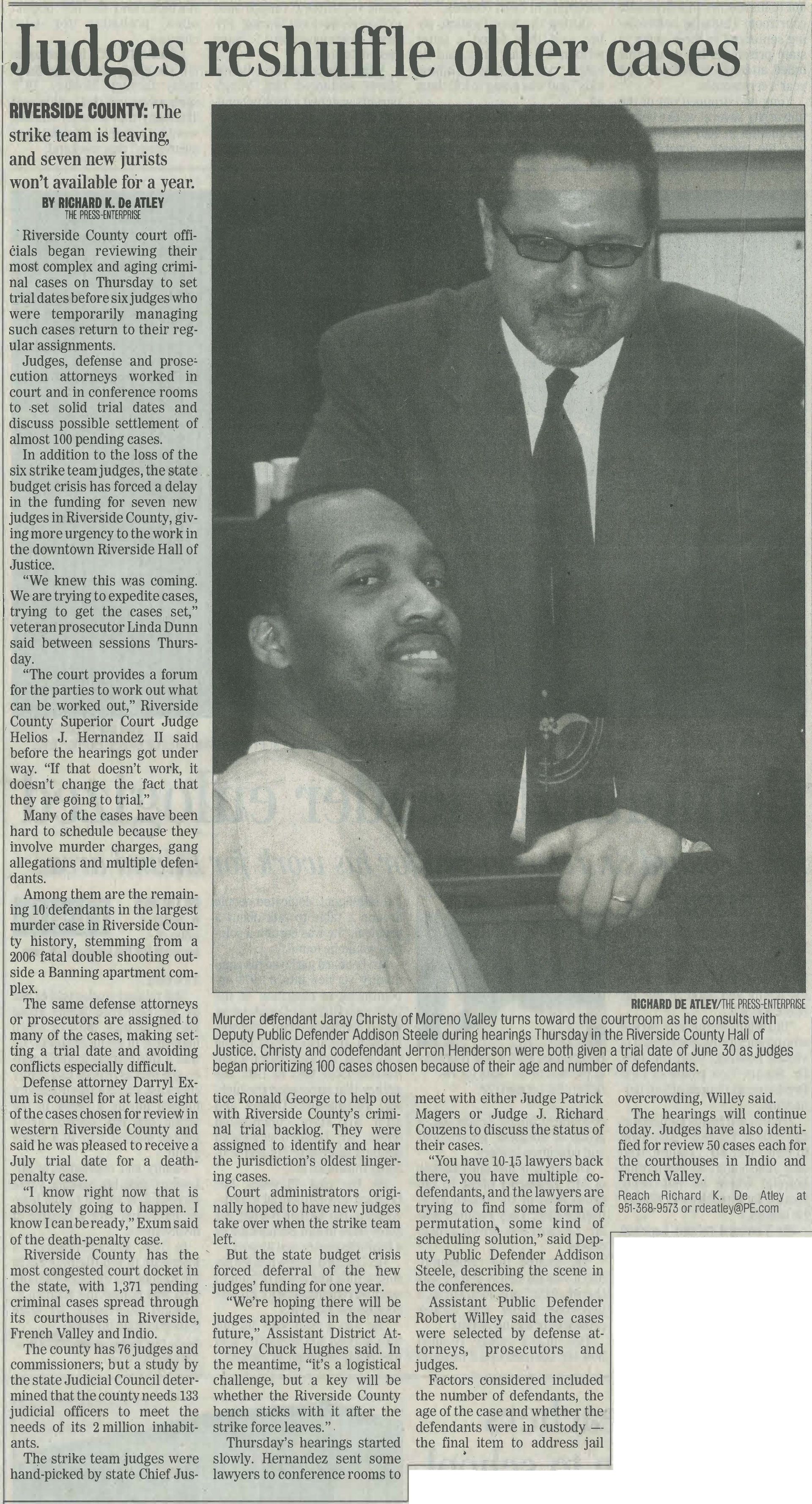



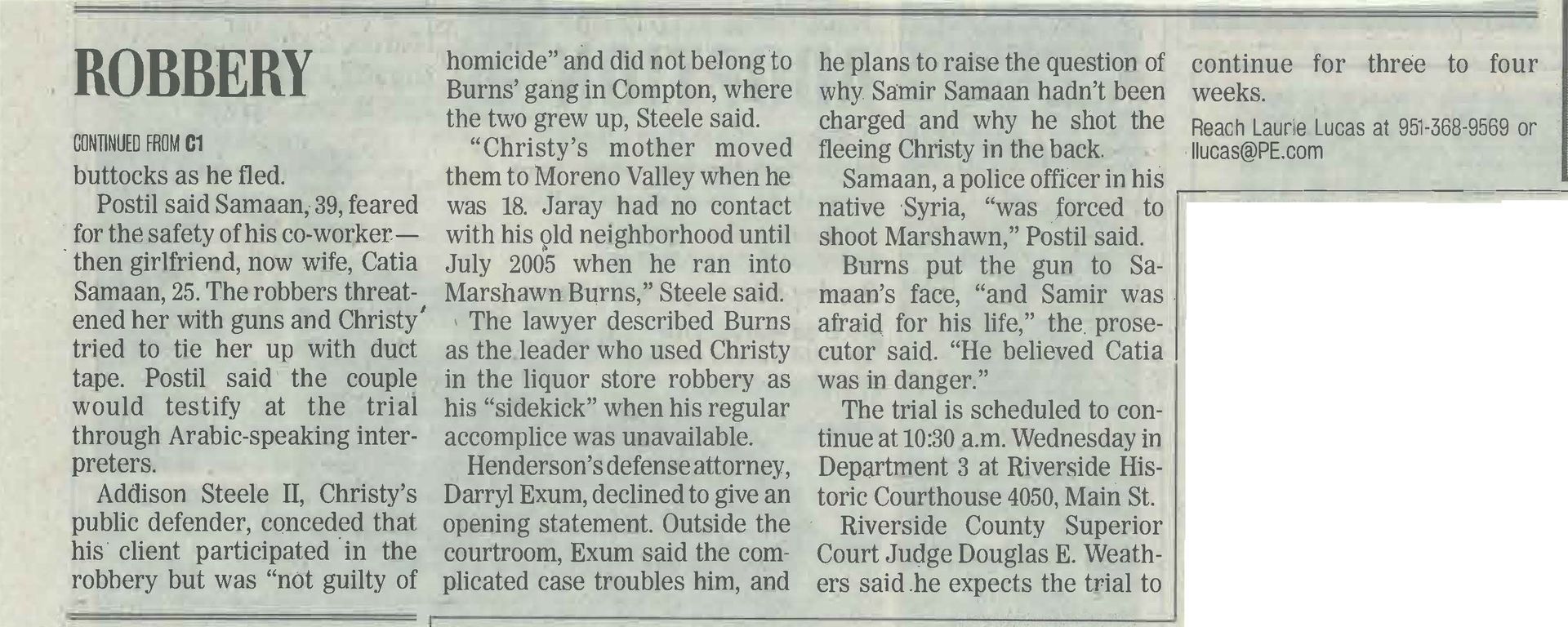

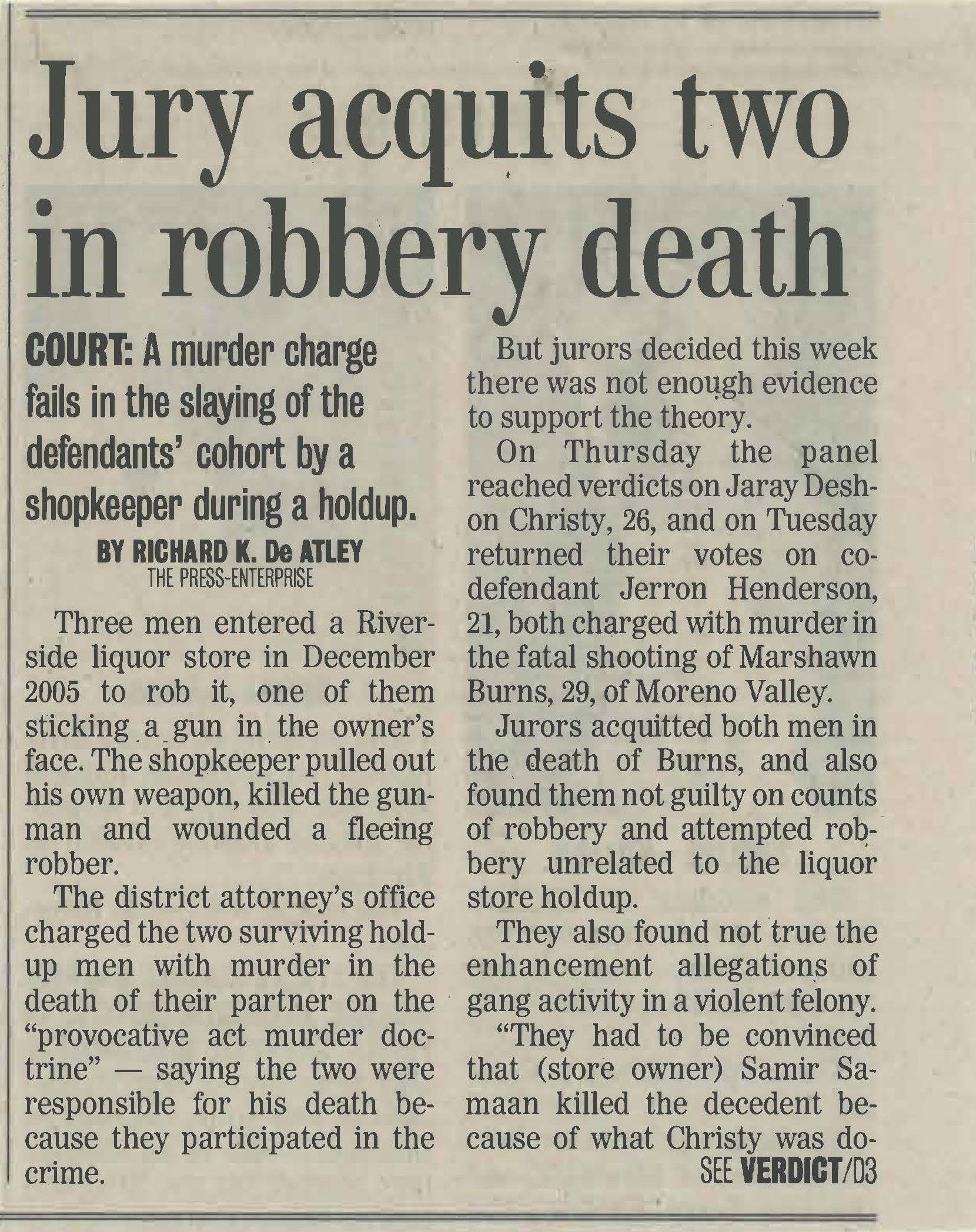

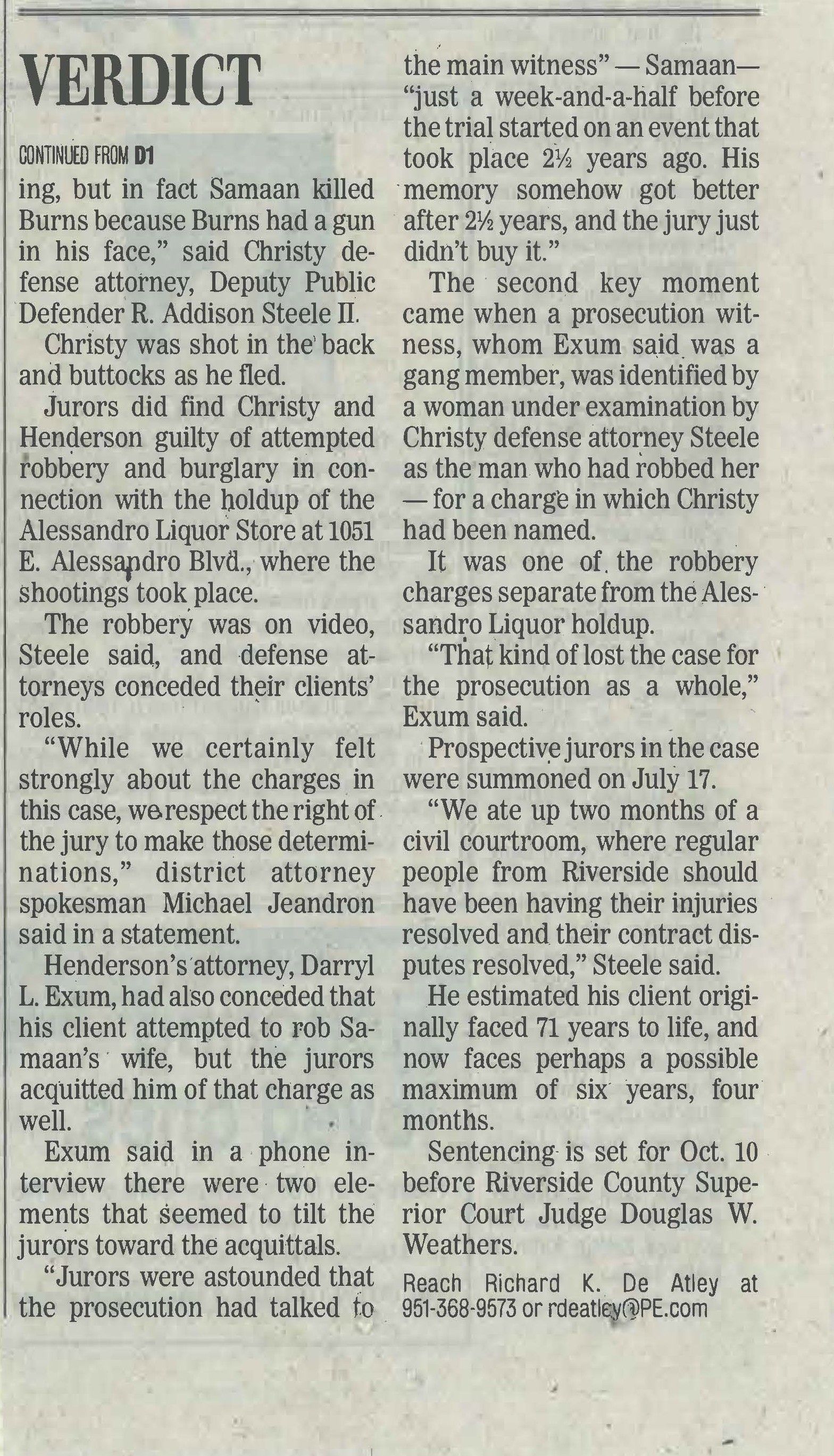


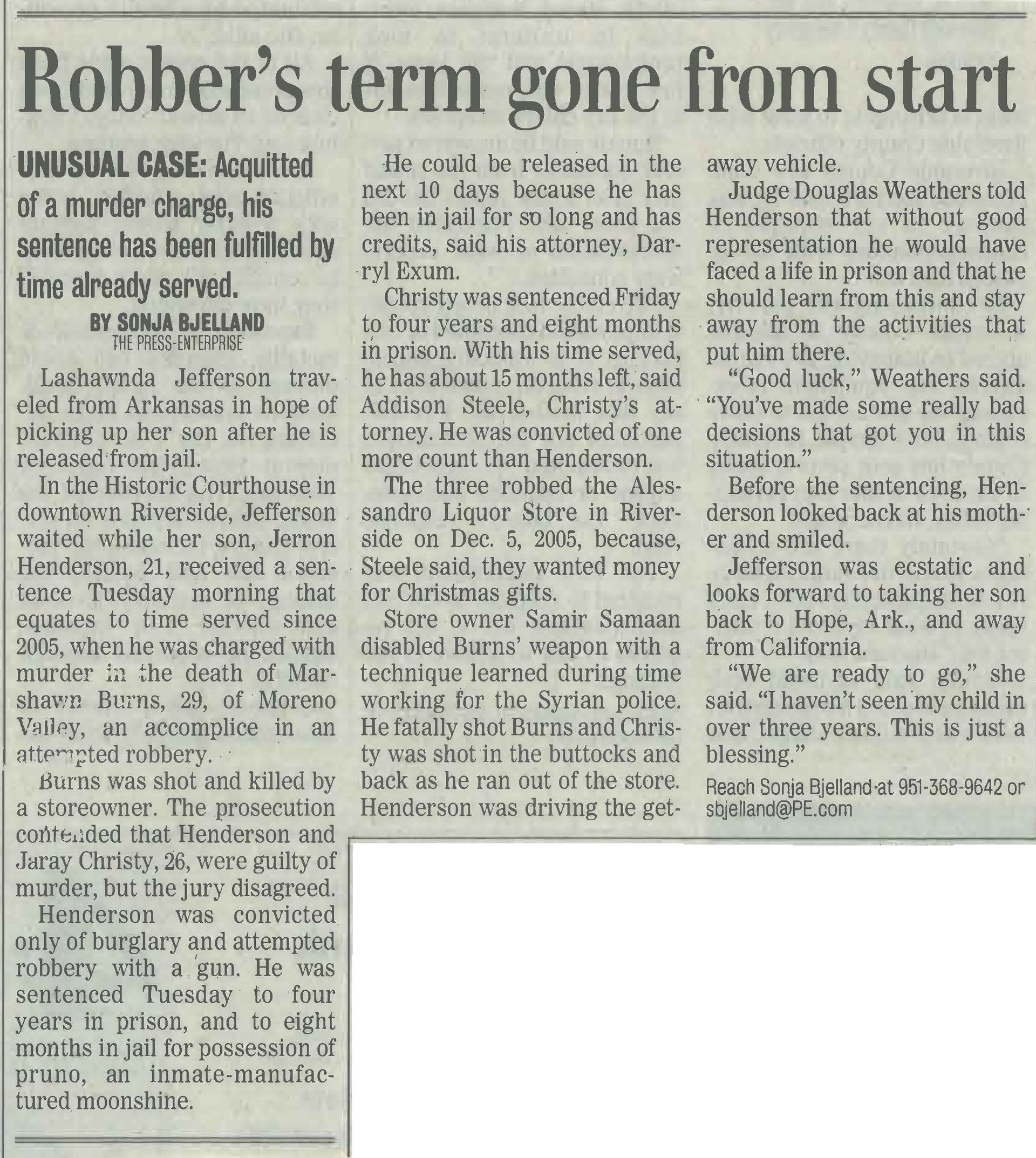
Robbie C., RIF104021, on October 20, 2005 hung jury on all counts, then Acquitted
of all charges on October 17, 2007
- Charges: Murder (Penal Code § 187(a)), attempted murder (Penal Code § 664/187(a), felon in possession of a firearm (Penal Code § 12021(a)(1) (has since been changed to Penal Code § 29800(a)(1)), special allegations of personal use of a firearm (Penal Code § 12022.53(d), a prison term prior (Penal Code § 667.5(b), serious crime prior (Penal Code § 667(a) and three prior strikes (Penal Code § 667(c)&(e)(2)/1170.12(c)(2)).
- Exposure: Robbie was facing 171 years to life in prison.
- Outcome: There were two trials; the first trial ended in a hung jury, with the jury deadlocked at ten to two for acquittal. At the second trial, Robbie was found not guilty of all charges.
This was a really challenging murder case. The allegation was that Robbie shot at two men for no apparent reason killing one and wounding the other. The case was made more challenging because Robbie had two strike priors, so if he was convicted of any one of the charges he would be sentenced to at least 25 years to life in prison. So the felon in possession of firearm charge alone would result in a life in prison sentence. What had in fact happened was that Robbie was confronted by his best friend who mistakenly believed that Robbie had become involved with his girlfriend. The evidence presented at trial was that Robbie had grown up in South Los Angeles and when he was younger he was an Eleven Eight East Coast Crip (Eleven Eight was for 118th Street in South Los Angeles and East Coast Crips did not have anything to do with the East Coast, it means the eastern side of South Los Angeles). It was an environment where the slightest disrespectful act could have deadly results, so his best friend believing that Robbie was involved with his girlfriend was a very serious matter. The evidence that Addison and Robbie presented at trial was that after his best friend confronted Robbie, the two separated and were about forty feet apart in the courtyard of an apartment complex. His best friend was standing next to another man talking and Robbie was standing next to another man talking, they were all former Eleven Eight East Coast Crips gang members and all knew each other. Robbie was the only person that was not armed. All of sudden, his best friend pulled out his gun and began firing at Robbie. The man Robbie was next to pulled out his gun to fire back, he got off some shots but then dropped the gun in the chaos. While they were being shot at Robbie picked up the gun and also fired back. Robbie's best friend and the man he was with were both shot, but Robbie best friend succumbed to his wounds. There were many people in the apartment complex that heard the shootout and many people that witnessed only a portion of it. The district attorney presented a theory that Robbie shot his best friend and another person that he grew up with for no known reason. The first trial resulted in a hung jury. Robbie offered fourteen years just to avoid the risk of 171 years to life in prison. The district attorney rejected the offer on the theory that he would be able to send Robbie to prison for life on the felony in possession of a firearm alone because Robbie had two prior strikes. However there's an exception to felon in possession of a firearm charge--if a person's life is in danger and that person comes upon a firearm, he is allowed to possess the gun to defend himself. The exception matched the facts of what had happened to Robbie. At the second trial the jury acquitted Robbie of all charges and he went home. However the district attorney wasn't done. In the years that Robbie had been in jail waiting for both trials, he had gotten into a one punch jail fight. The district attorney charged that jail fight as a felony assault so Robbie was again looking at twenty-five years to life in prison. Addison wrote and argued a motion to reduce that charge to a misdemeanor. The motion was granted and Robbie was given credit for time served. Addison had saved Robbie's life a second time.
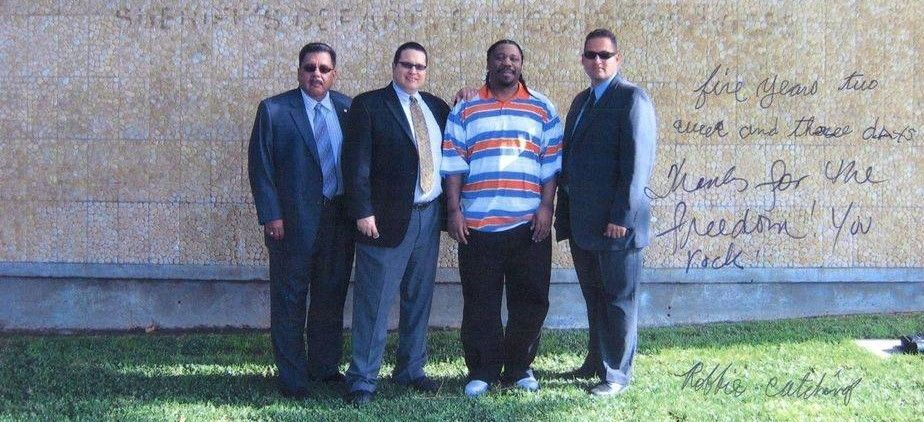
This is Robbie, the investigators on the case, and Addison not too long after the verdicts
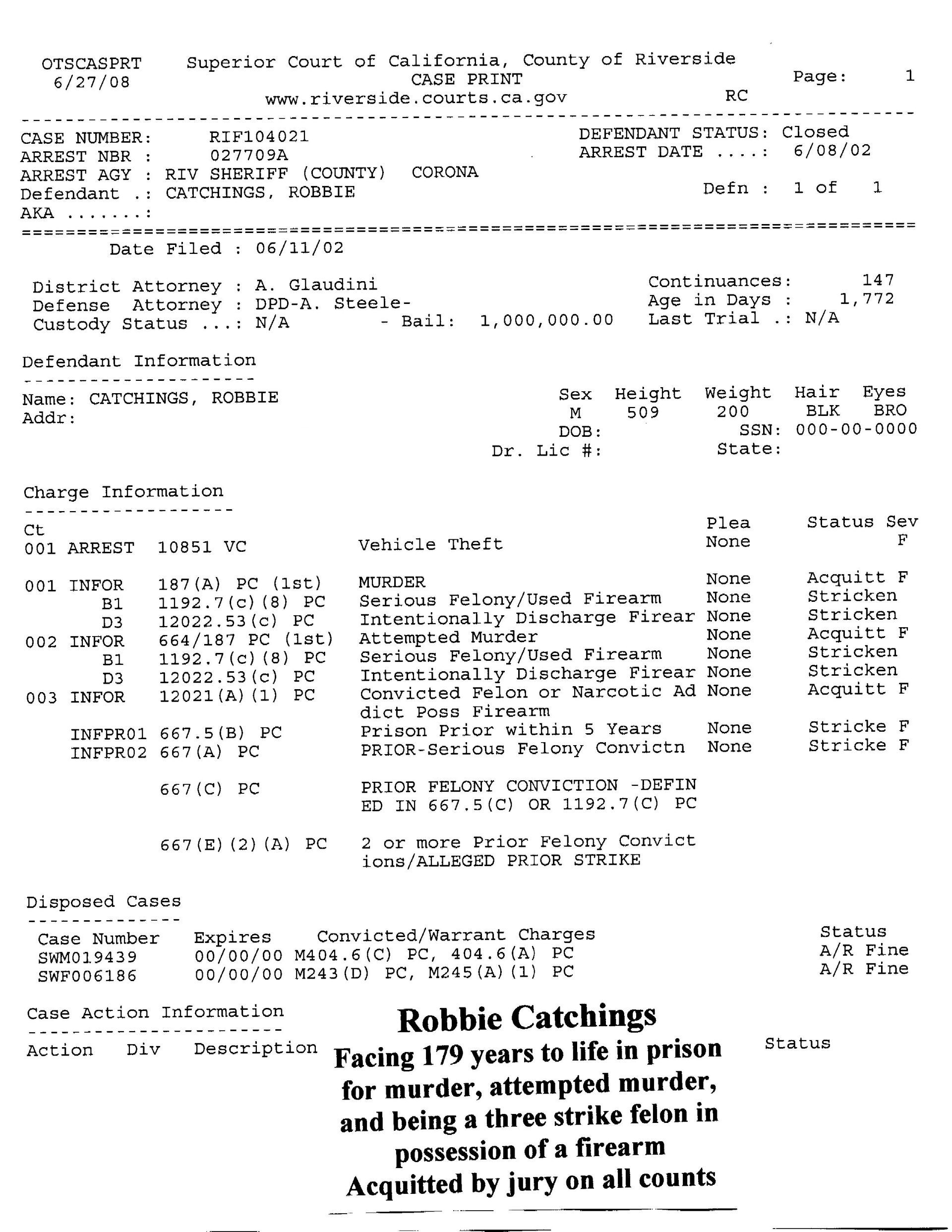
This is the docket from Robbie's acquittal
Robbie was featured in an article in the Los Angeles Daily Journal that was done about Addison winning so many trials. Addison and Christine have been told, but have not been able to confirm, that the Los Angeles Daily Journal has never done an article like this about any other criminal defense attorney.
Riverside Public Defender Piles Up Victories: Three Full and Three Partial Acquittals in Nine Trials Win Him Special Recognition, Jason W. Armstrong, Los Angeles Daily Journal, Volume 121, Number 32, February 20, 2008.
In another of Steele's high-profile wins, the defender secured a murder acquittal in October for Robbie Catchings, a Moreno Valley resident prosecutors said shot and killed a man at a Perris apartment complex in 2002. Steele also persuaded a judge to reduce to a misdemeanor a felony assault charge against Catchings in a separate case that could have exposed the defendant to a life sentence under the three-strikes law. Catchings walked free as a result.
. . .
Jenny Reis, a Corona woman who served on the jury that acquitted Catchings, said Steele's 'down-to-earth' evidence presentation helped his credibility with the jury.
. . .
She also said she could tell Steele 'thoroughly believed' in his client's innocence.
'He was so passionate,' Reis said. 'He reminded me of a parent defending [his or her] child.'
Robbie was also featured in a newspaper article covering when Addison was named Riverside County Public Defenders Office Attorney of the Year.
Public defender's office honors staff, Sonja Bjelland, The Press-Enterprise, Local B7, December 9, 2007.
"The Riverside County public defender's office presented awards Friday night to a staff committed to providing opportunity and hope.
Deputy Public Defender Addison Steele won the top award for his embodiment of what it means to fill that role, said Robert Willey, assistant public defender. Steele spent 115 days in trial in 2007 and thanked the entire office for helping him win the case of Robbie Catchings, who was charged with murder and acquitted by jury.
“As you can see, I didn't win a murder trial, we won a murder trial,” Steele wrote in an e-mail to staff, Willey said.
This is the masthead of the article.
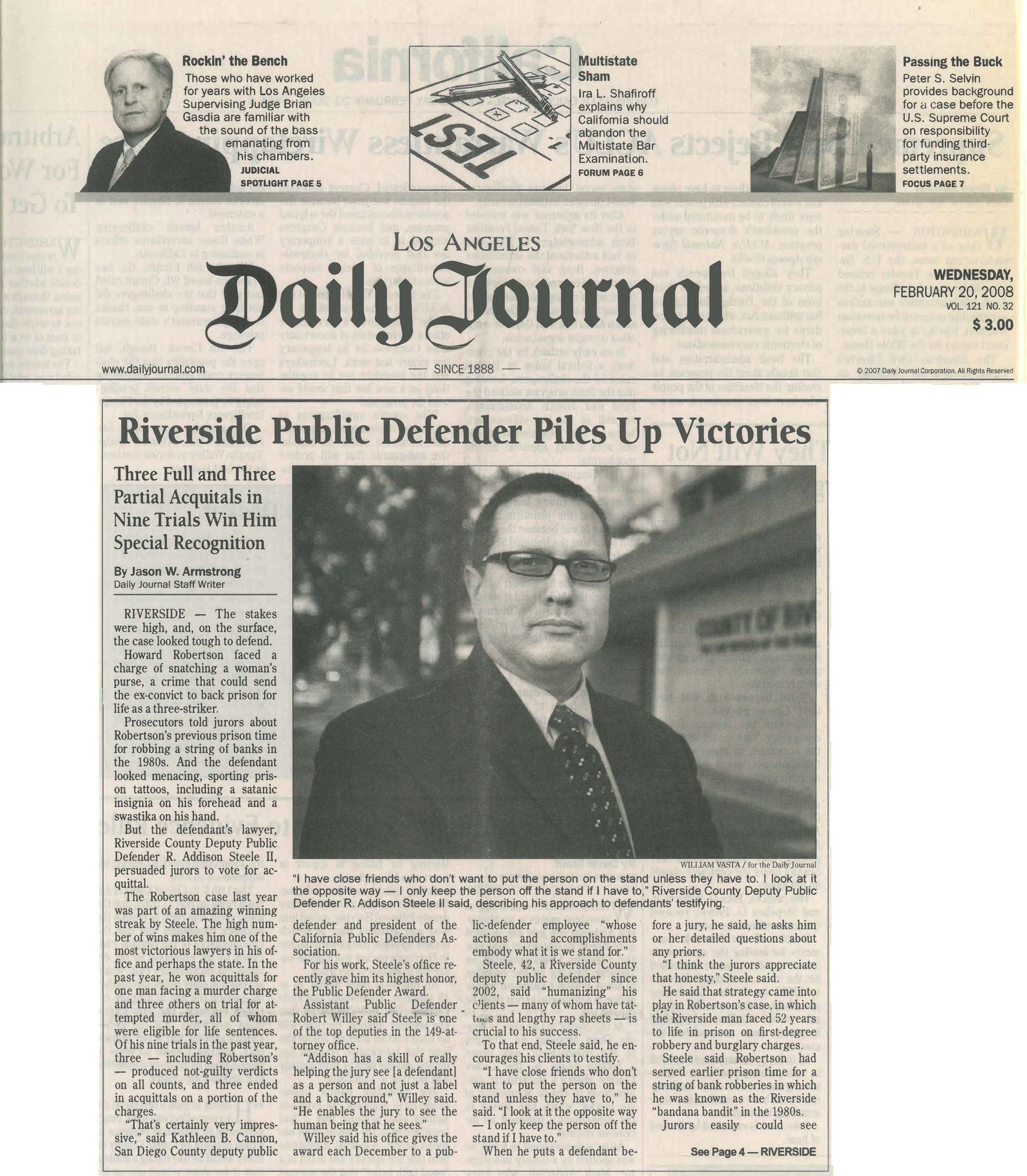
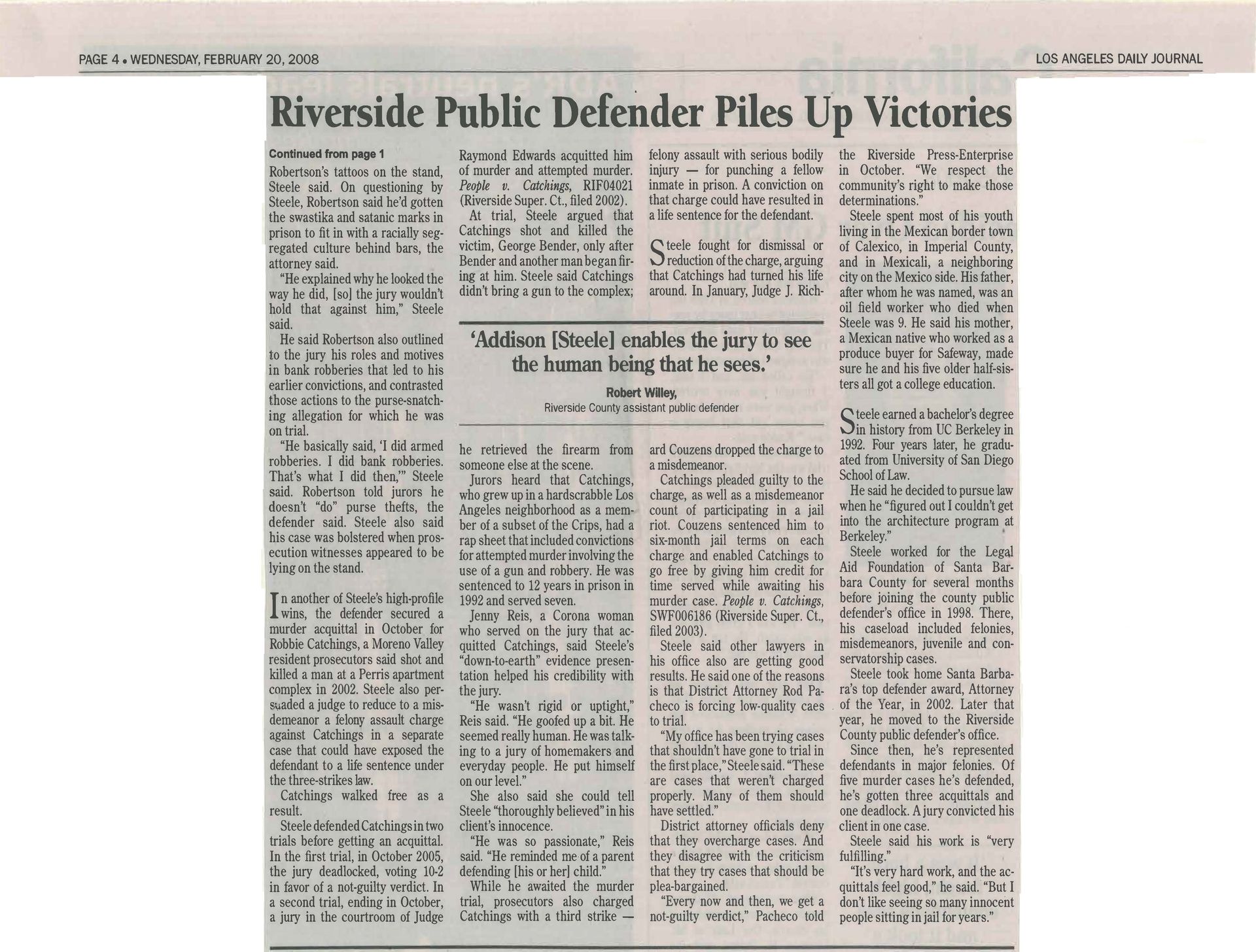
After Addison and Robbie won the murder trial, the district attorney tried to give Robbie a life in prison sentence because he was a third striker and had gotten in a jail fight while he was waiting for his trial, the trial that he was acquitted of all charges. Addison filed a series of motions, including a bail motion when the deputy district attorney on the case tried to have Robbie sent back to jail, a motion to dismiss the jail fight case, a motion to strike the strike priors, and a motion to reduce the jail fight charge to a misdemeanor. The judge reduced the case to a misdemeanor. Robbie pled guilty to the misdemeanor for credit for time already served, and it was finally all over. Robbie was able to go home and take care of his ailing mother.
The first newspaper article about the district attorney trying to give Robbie a life sentence after they lost his murder trial.

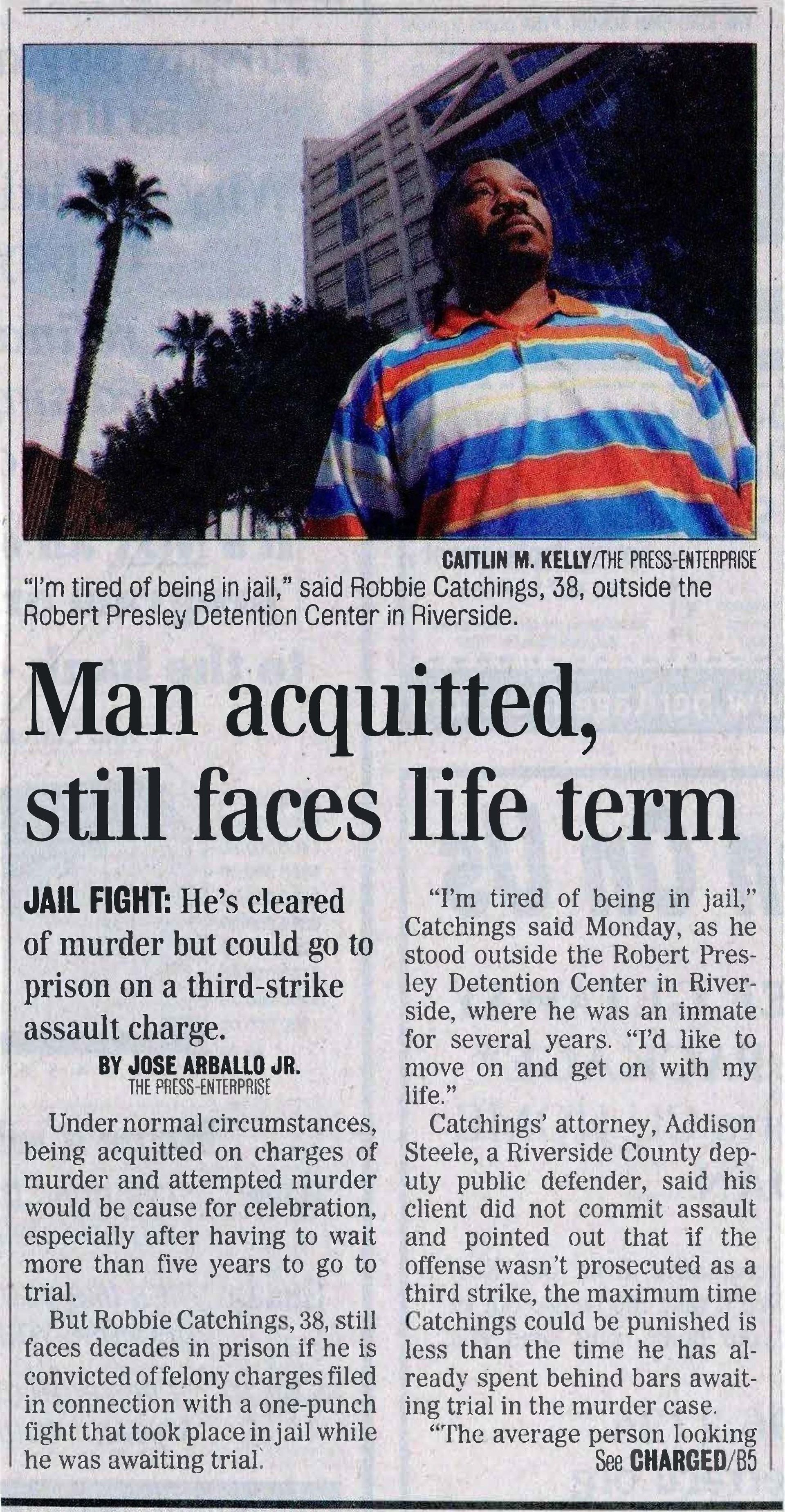

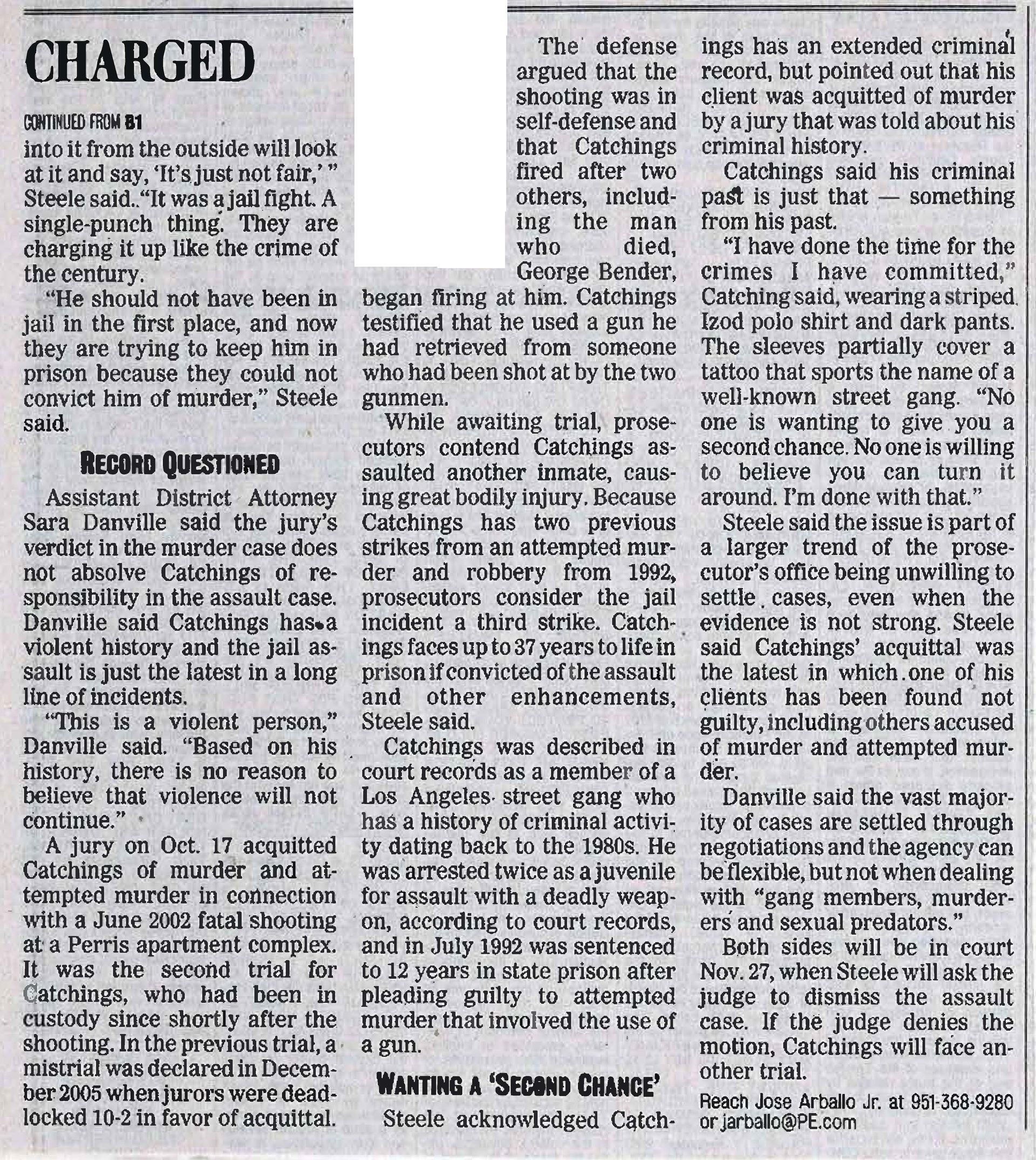
This is the newspaper article that covered when Addison and Robbie beat the district attorney's attempt to give Robbie a life sentence,
after they had won the murder trial.

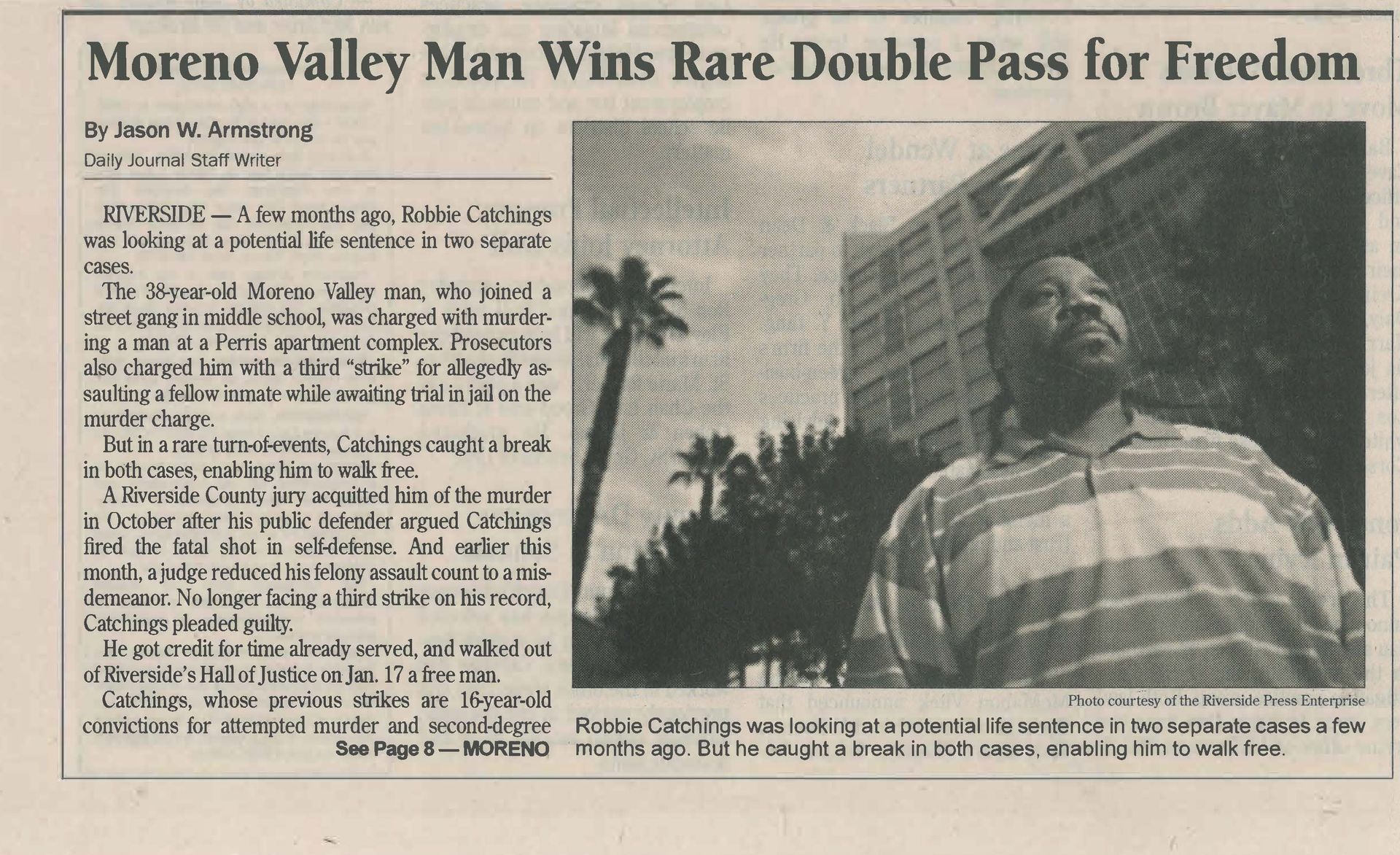
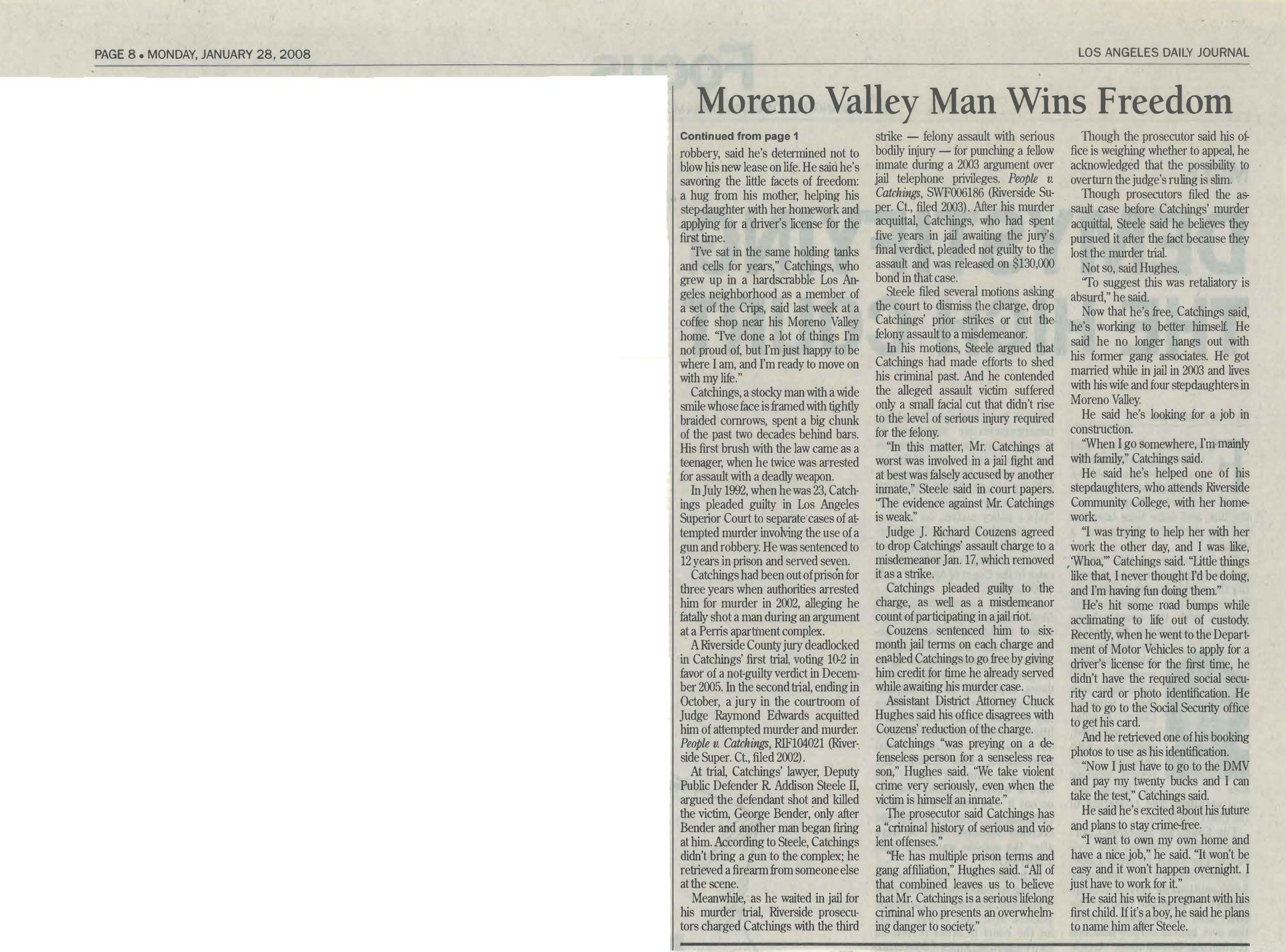
If you want to read the press from beginning to end, they are in order below. There were so many murder trials in Riverside at the time that murder trials didn't always get press. In Robbie's case the first trial the resulted in a hung jury didn't get any press at all. The acquittal came at a time when there was a lot of scrutiny of the district attorney's office for taking cases to trial when they were losing trials at an impressive rate.
Here you can follow the press on Robbie's case from beginning to end


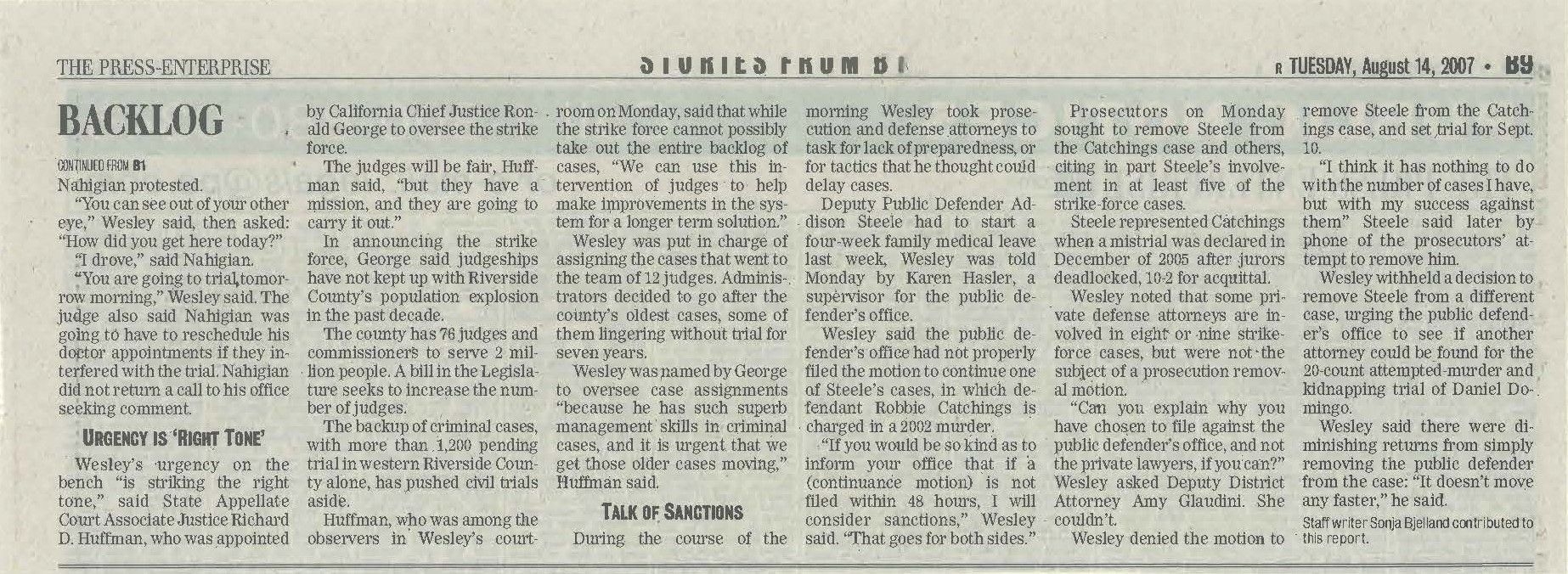

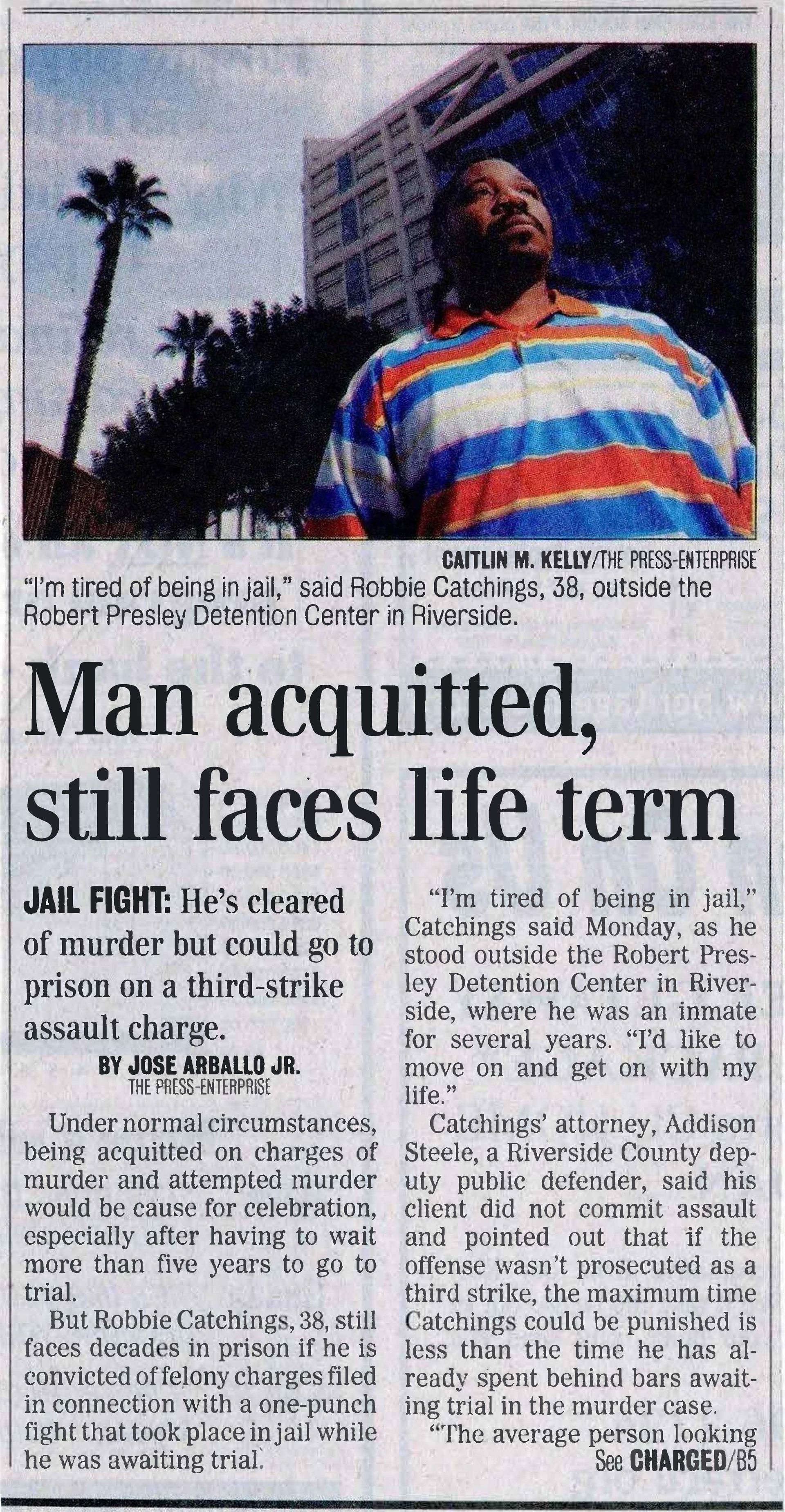




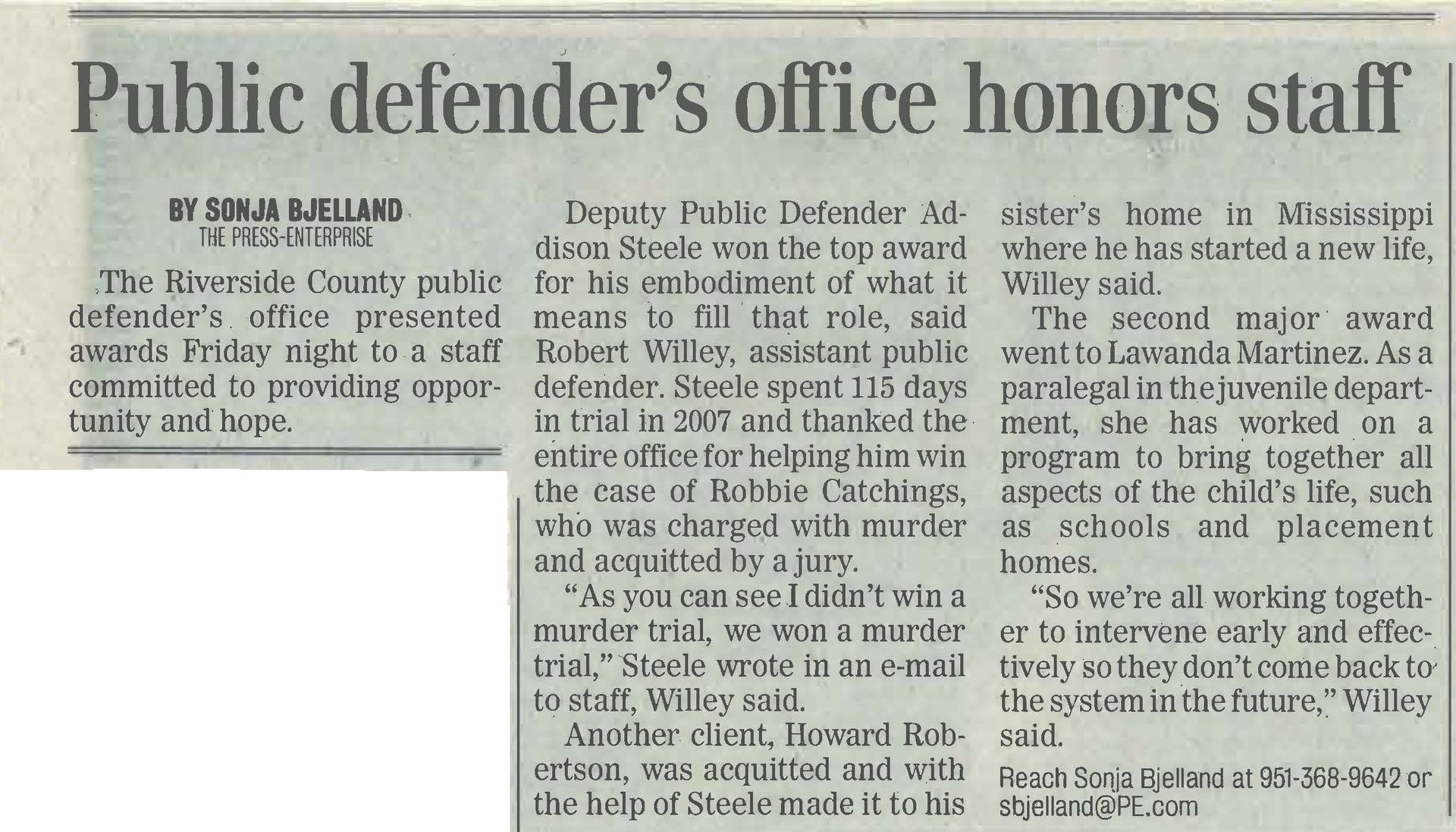







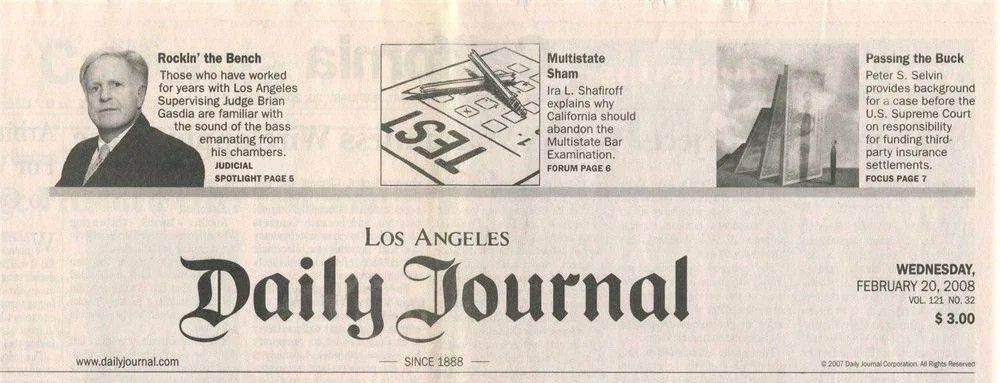
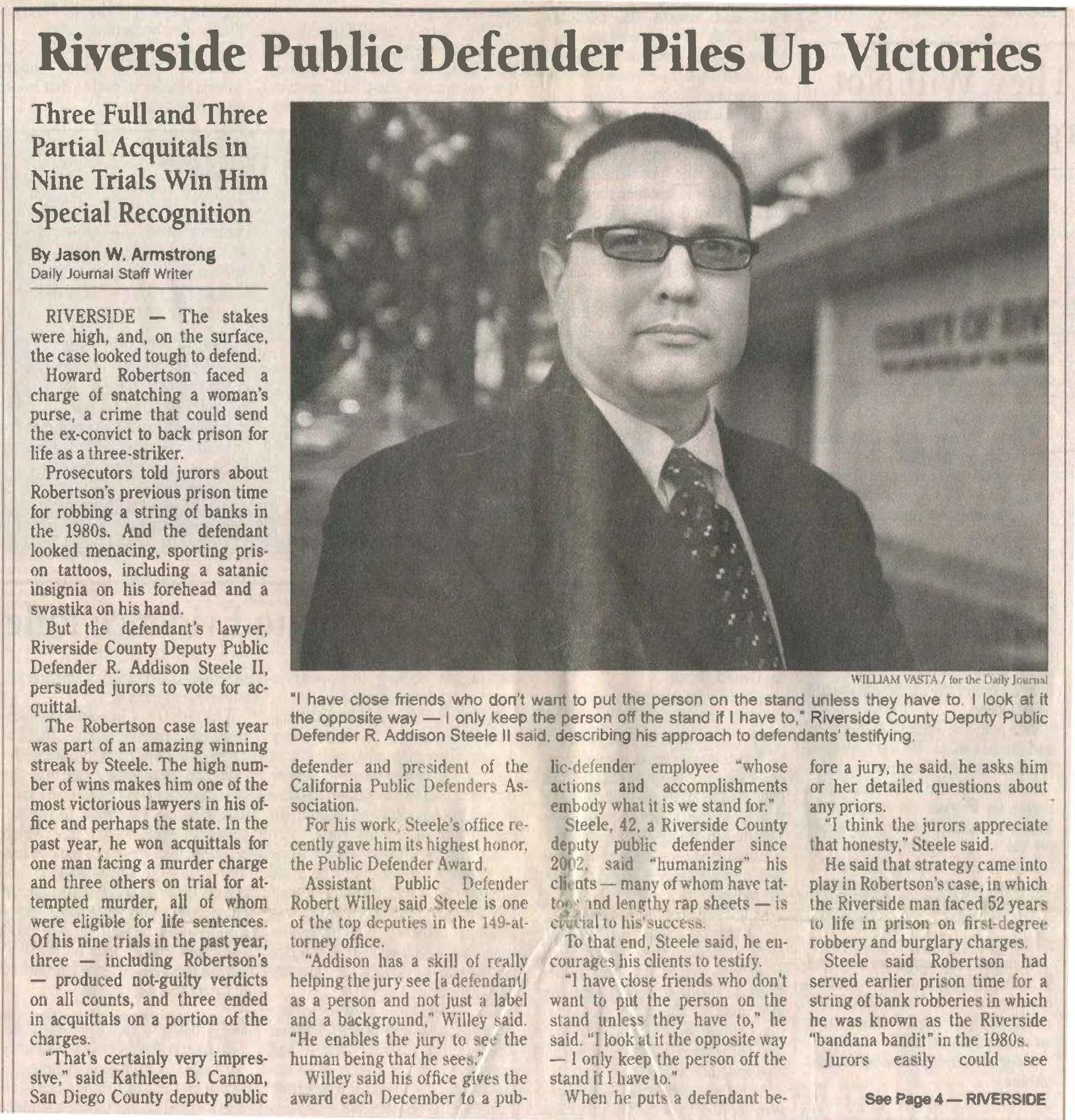
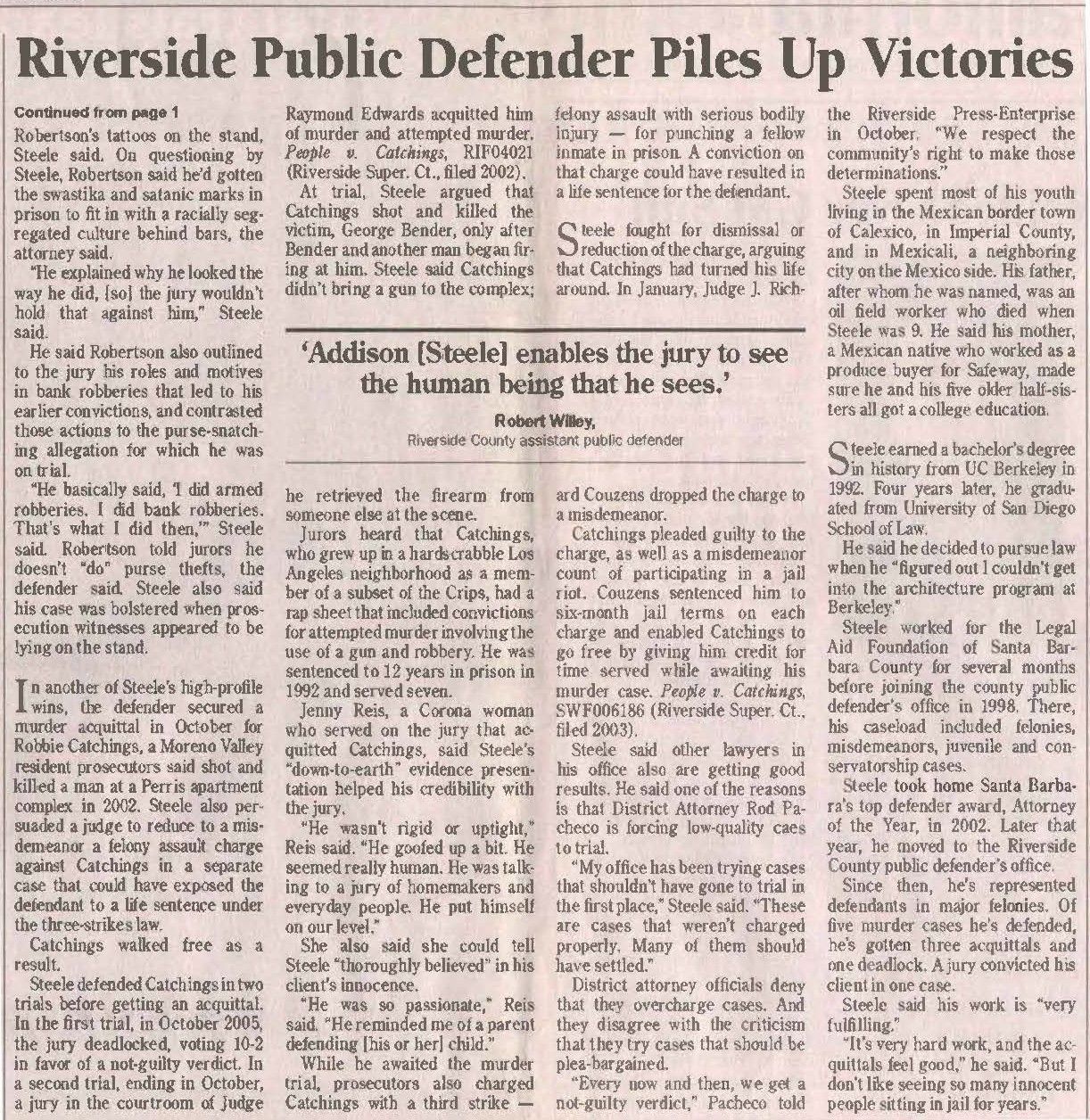



Jaime A., RIF106552, Acquitted of first degree murder on may 23, 2005
- Charges: Murder (Penal Code § 187(a)), auto theft (Vehicle Code § 10851(a)) and possession of a stolen car (Penal Code § 496d(a)).
- Exposure: Jaime was facing twenty-eight years to life in prison.
- Outcome: Jaime was acquitted of first-degree murder; he was convicted of second-degree murder and auto theft charges. He was sentenced to seventeen years to life in prison. People sentenced to life here in California have very little chance of being granted parole. However, those convicted of second-degree murder have twice as good a chance of being paroled as those convicted of first-degree murder. Jaime has been paroled and is home now.
This case was tragic because it involved three cousins. The cousins were drinking on Easter Sunday at remote part of a large park when the subject of a love triangle and how the family interacted came up. That led to an argument. Jaime testified that his cousin Pedro then attacked him and that his other cousin, Jesus, came to his rescue. The jury agreed with Addison that it was not a pre-meditated and deliberate first degree murder and acquitted Jaime of first degree murder. Unfortunately they believed that it was a second degree murder.
This is a slide that Addison used during his closing argument
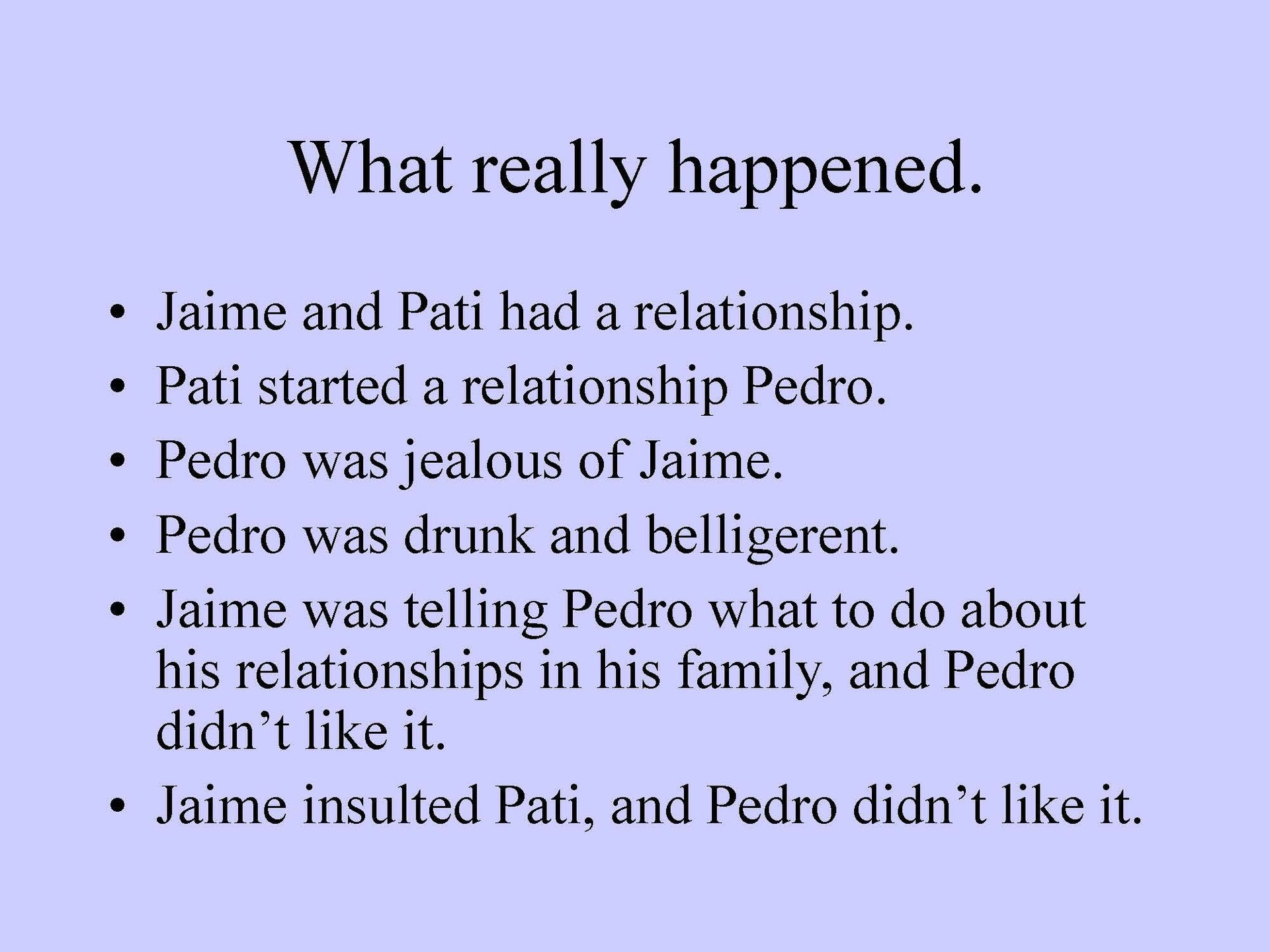
This is the only press that the case received

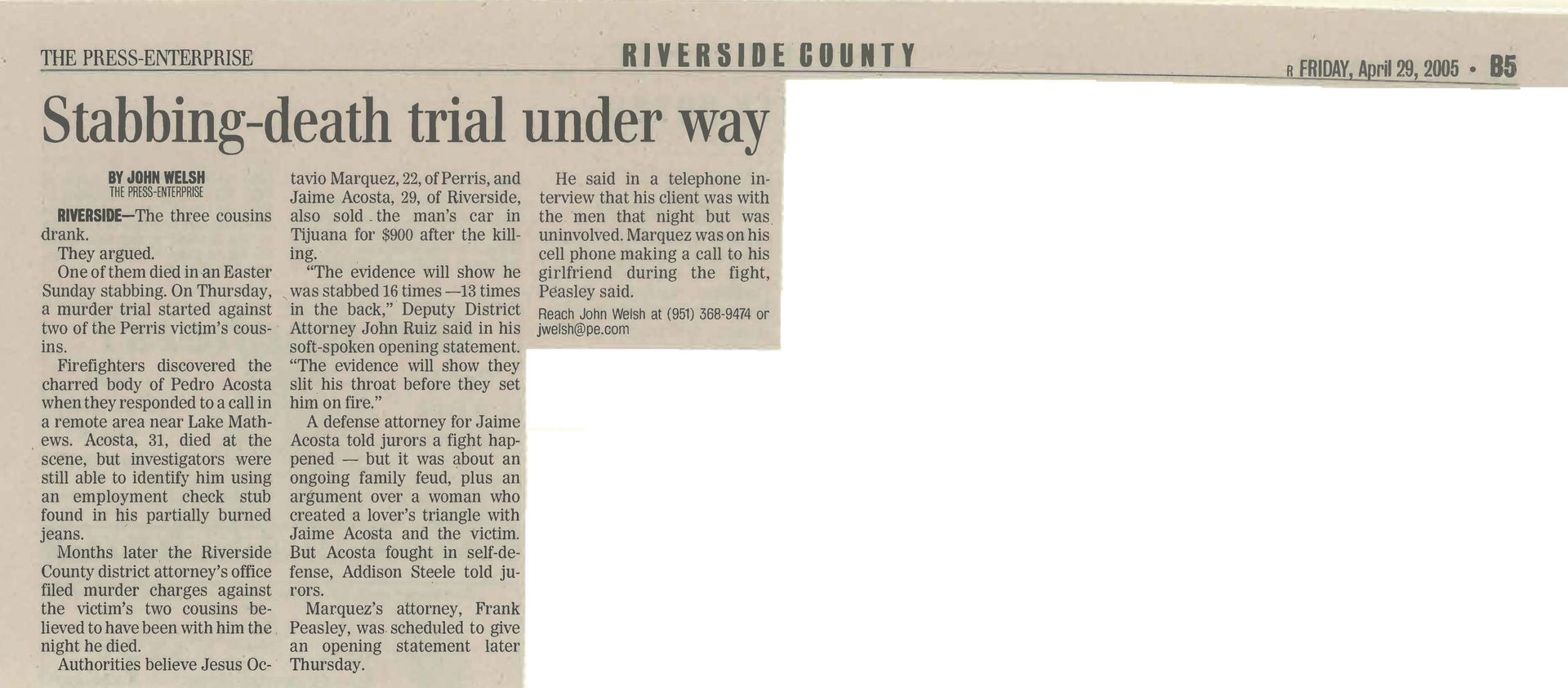
Edward A., SWF003559, Acquitted of both first degree murder and second degree
Murder on November 18, 2004
- Charges: Murder (Penal Code § 187(a)), with personal use of a weapon (a knife) (Penal Code § 12022(b)(1)), with two prior terms in prison alleged (Penal Code § 667.5(b)).
- Exposure: Eddie was facing twenty-eight years to life in prison.
- Outcome: Eddie was acquitted of first-degree murder and acquitted of the lesser degree of second-degree murder. He was only convicted of the lesser included offense of voluntary manslaughter. He was sentenced to fourteen years in prison.
This was case was quite a challenge. Eddie confessed to the killing of the decedent and gave great detail as to how the killing happened in his videotaped confession. He testified that he had been bullied by the defendant and that because of that he brought a kitchen knife with him when the decedent and him went to go buy methamphetamine. He testified that while they were driving to buy drugs he became frightened by the decedent. He grabbed the kitchen knife and stabbed the decedent in the torso. He said in the videotaped confession and on the witness stand, that the decedent asked him, "Why are you killing me Man?" His response was, "you've been killing me for years," stabbed the decedent a second time killing him. The jury agreed with Addison that it was not a first degree murder, nor was it a second degree murder, and that it in fact was a manslaughter. Eddie is home now and has not gotten in any trouble since parole from prison.
This is one of the PowerPoint slides that Addison used for the trial's closing argument
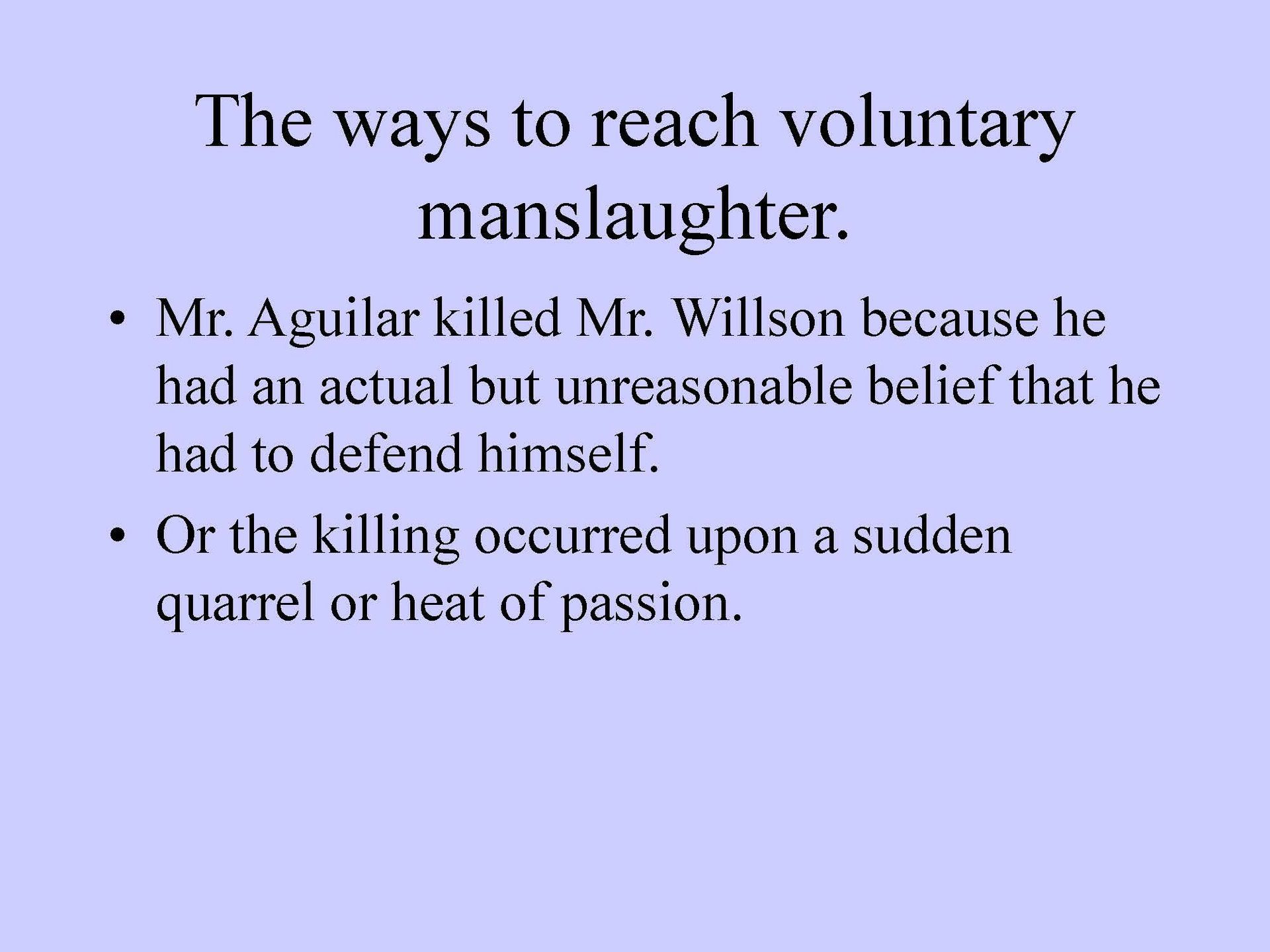
These are Eddie's acquittal verdict forms
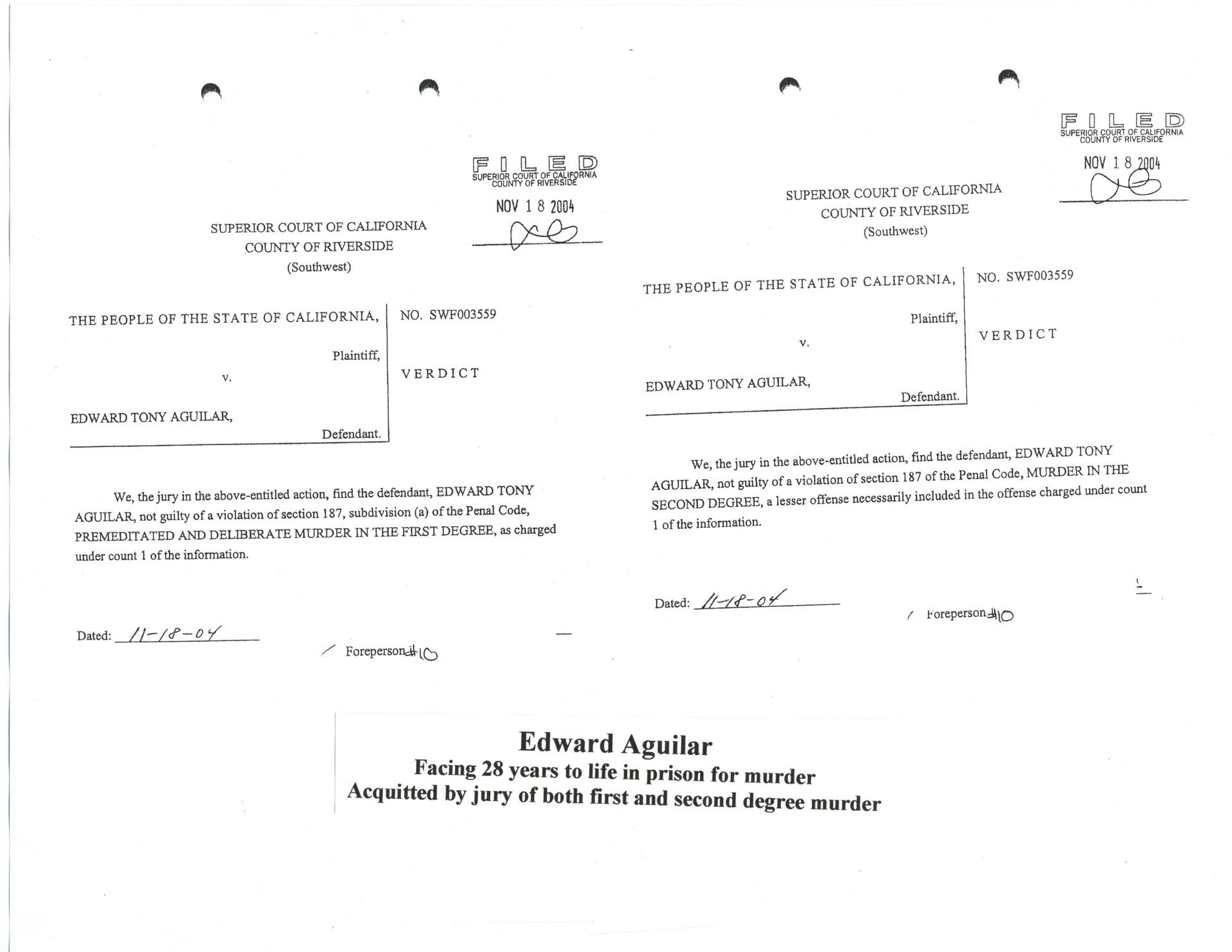
This is the press from when Eddie was acquitted of murder


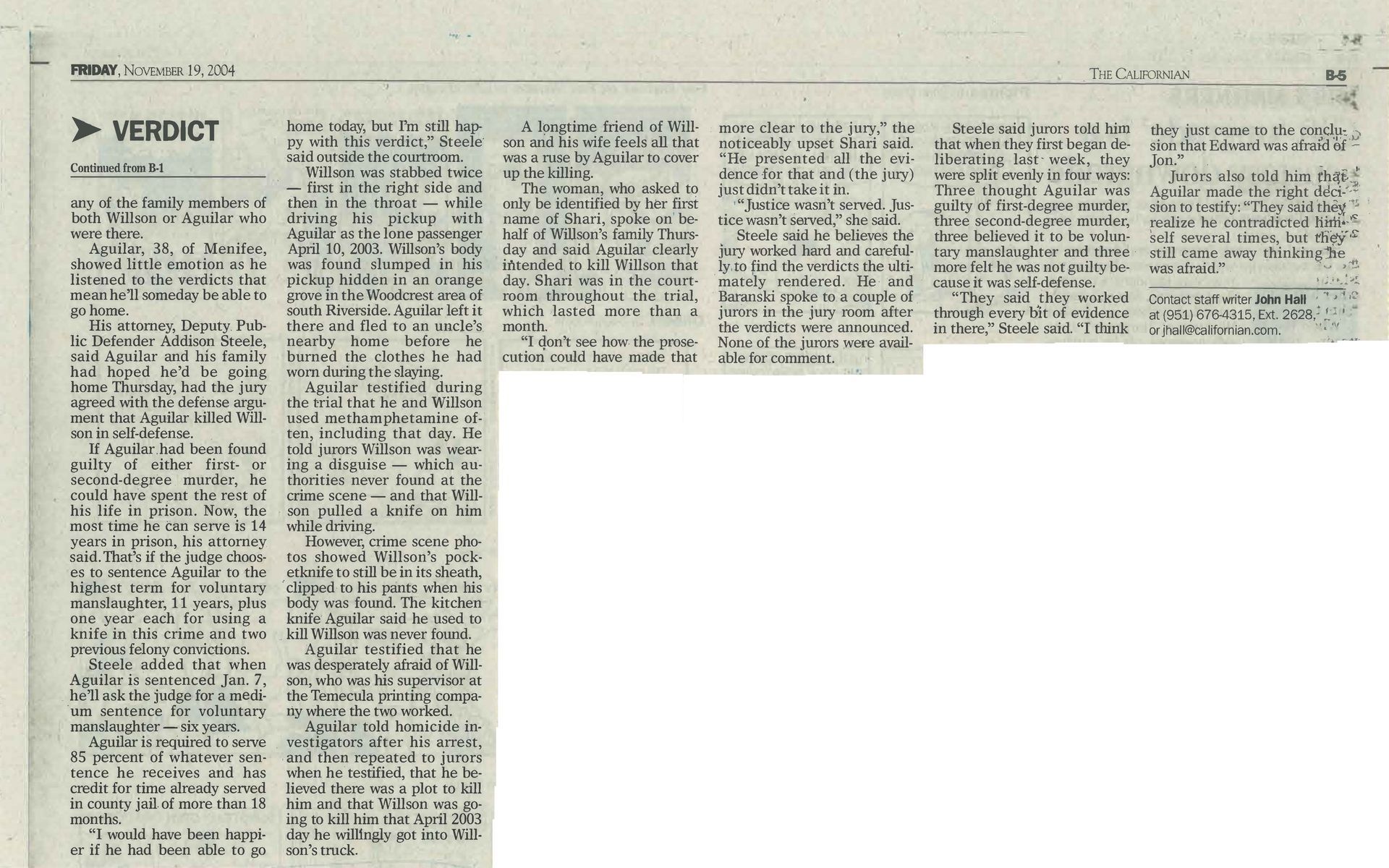
This is Eddie and Addison outside of the courthouse about ten years after the trial
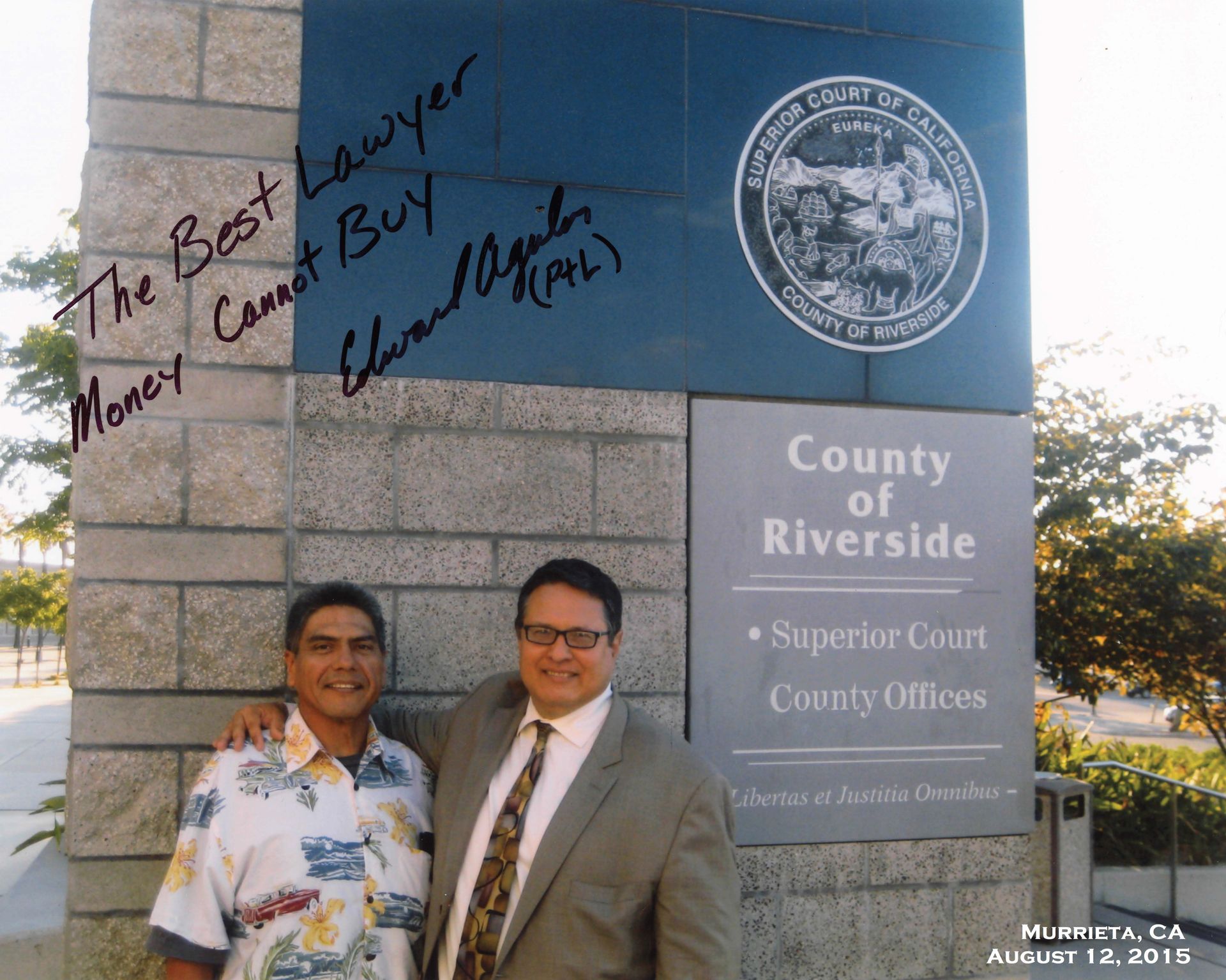
Here you can follow the press on Eddie's case from beginning to end


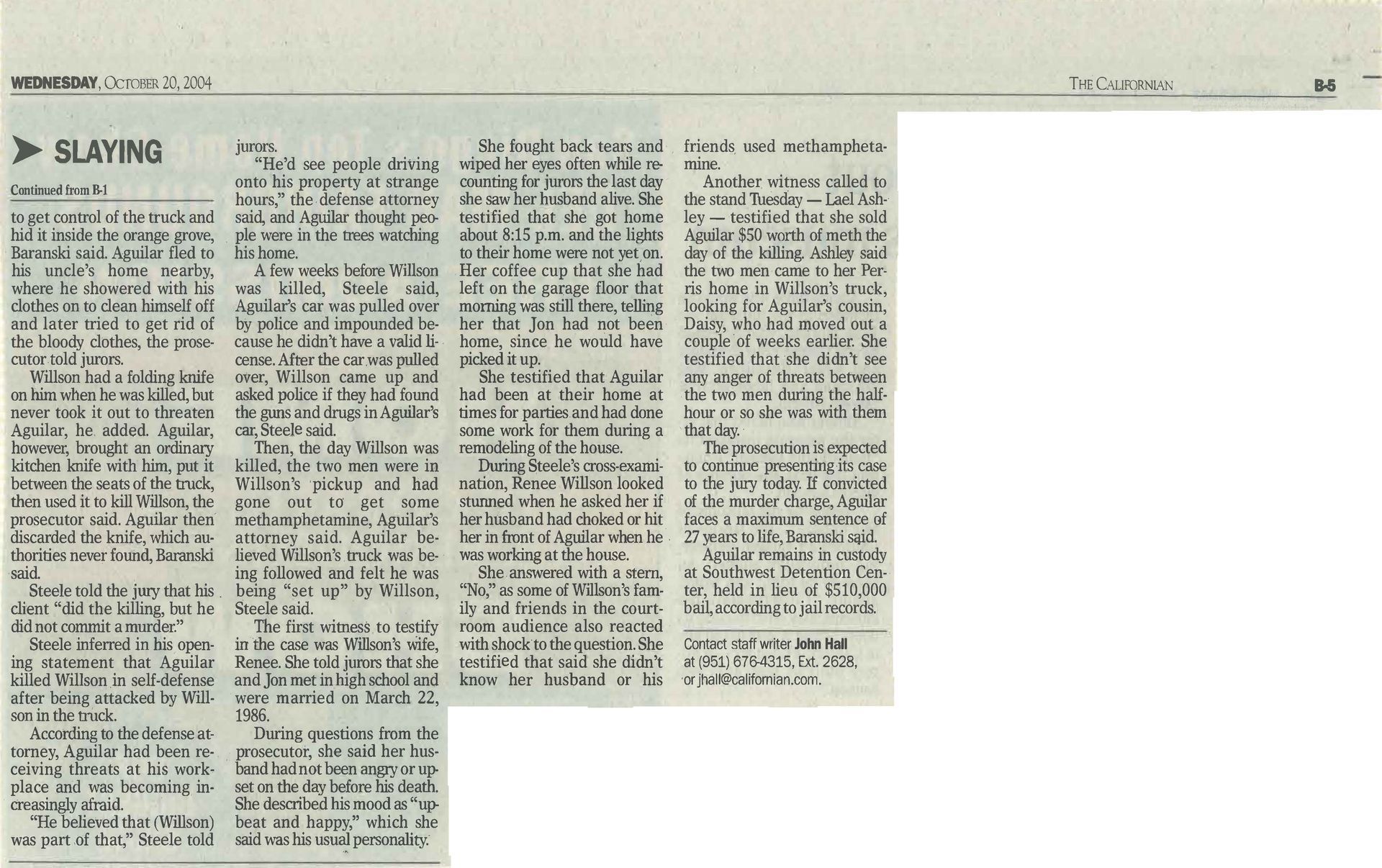
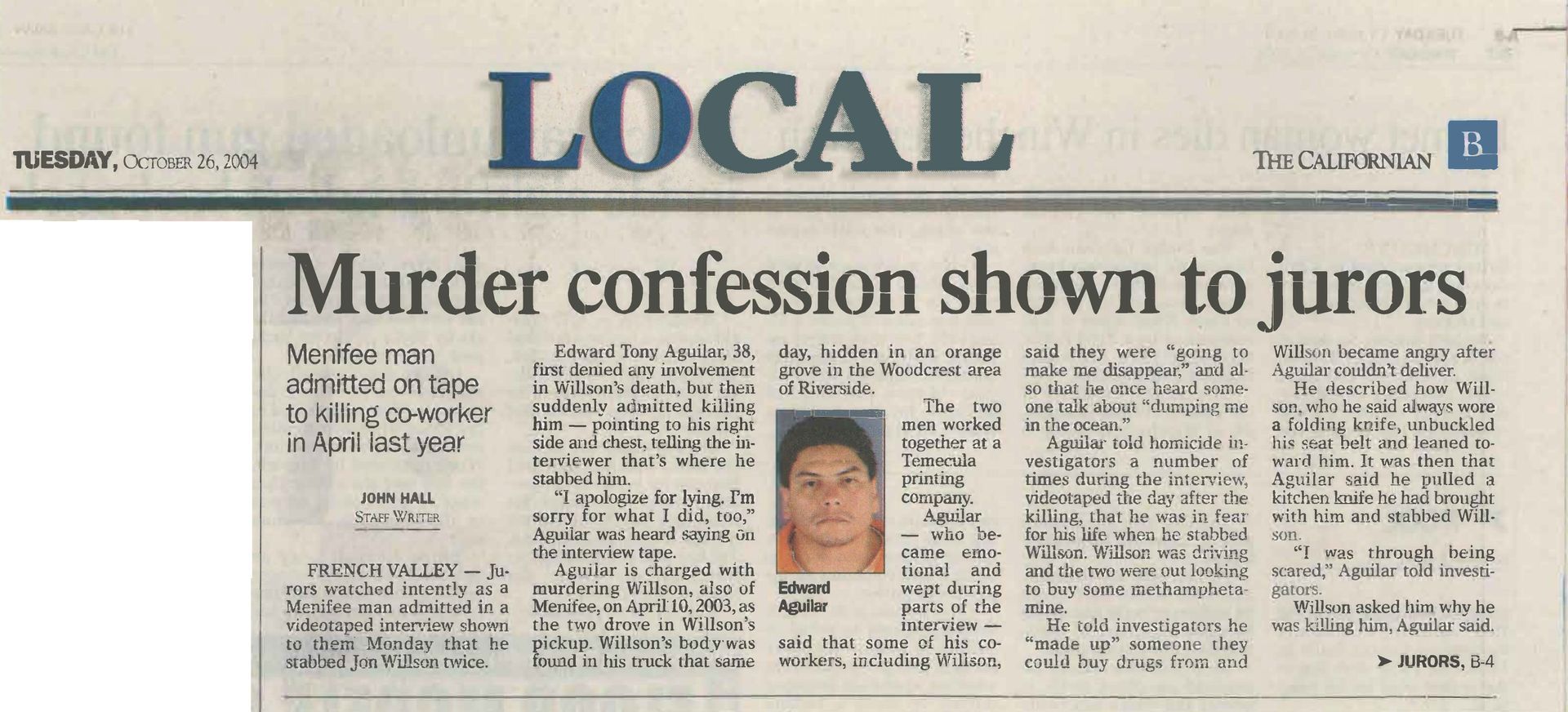

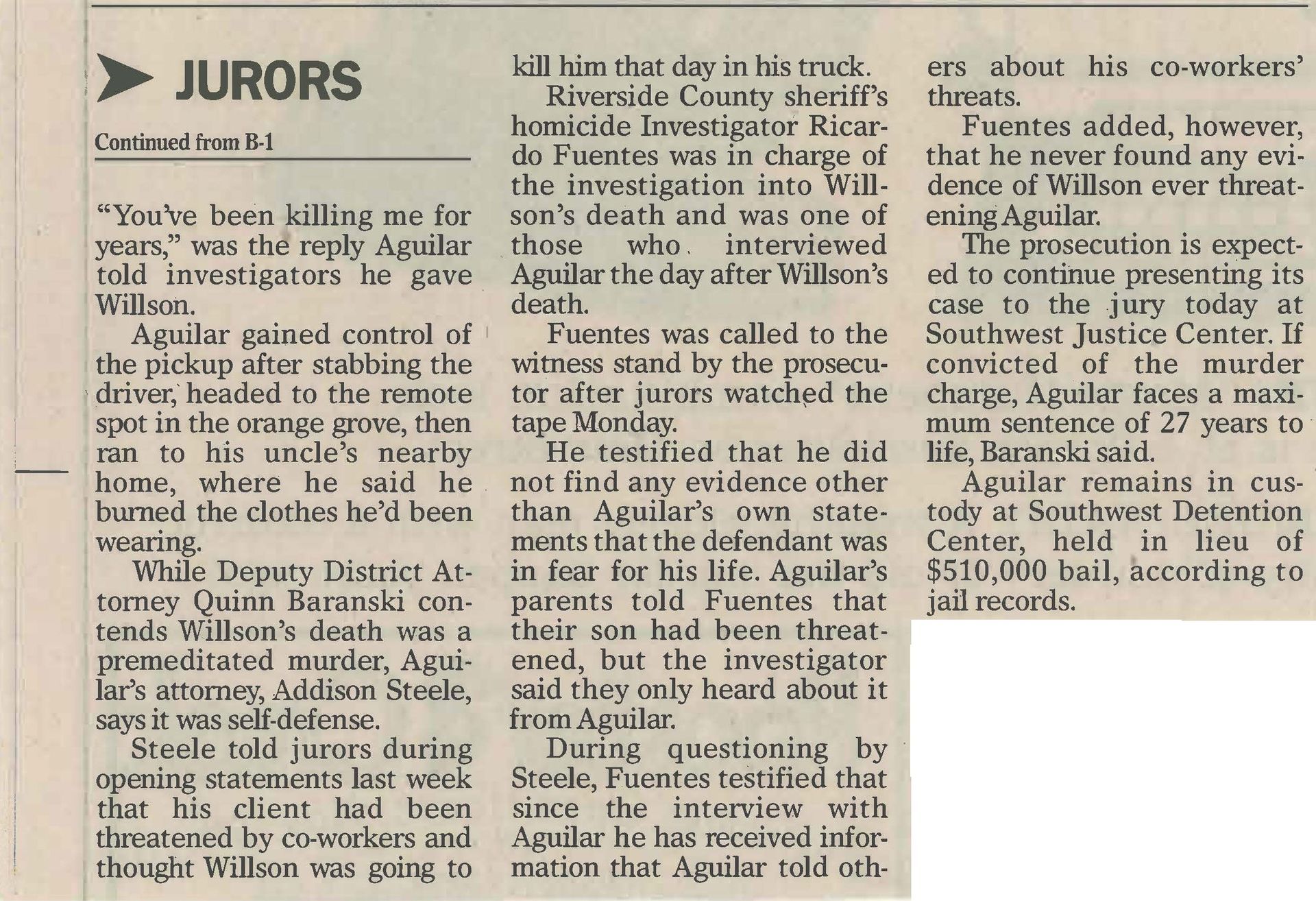



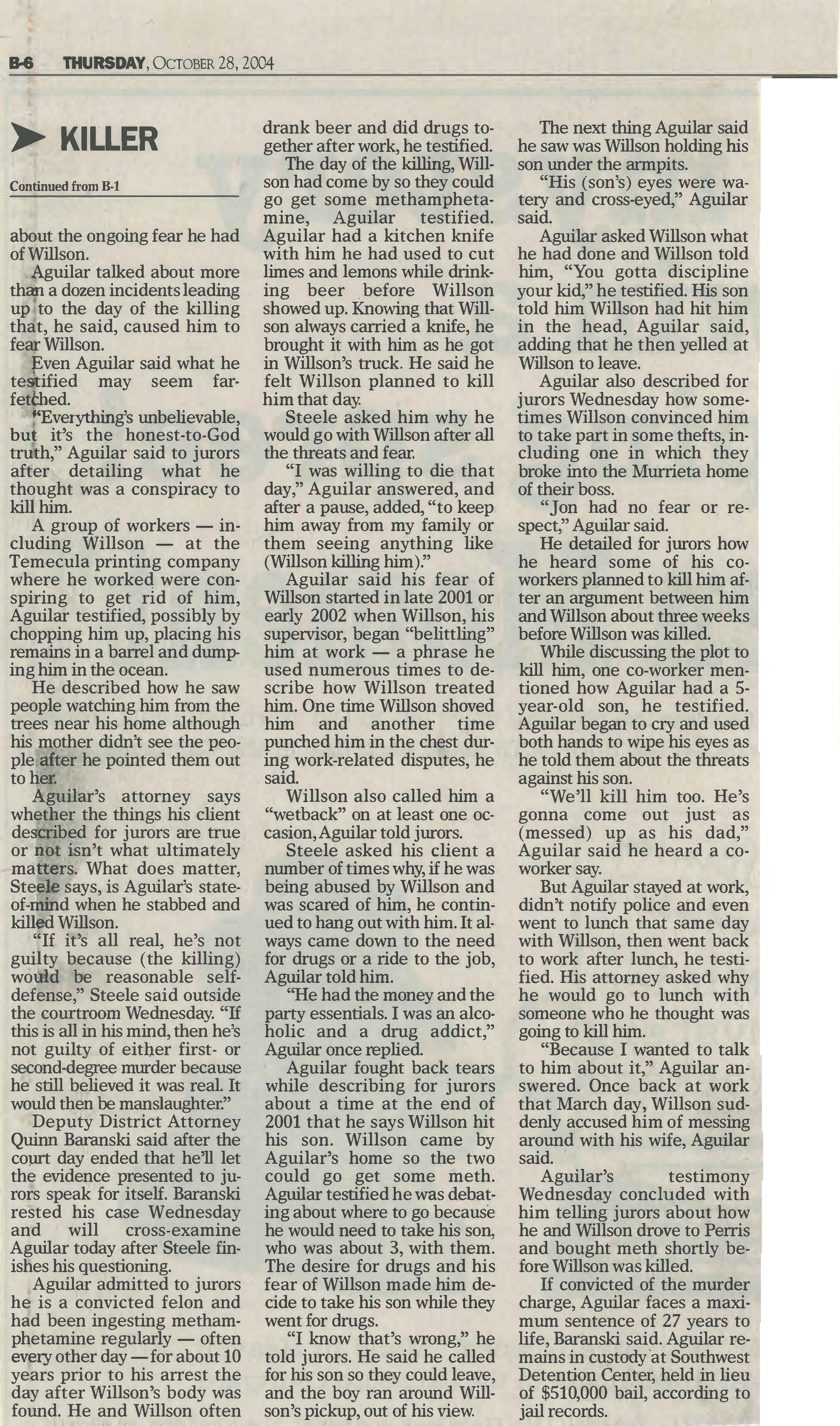
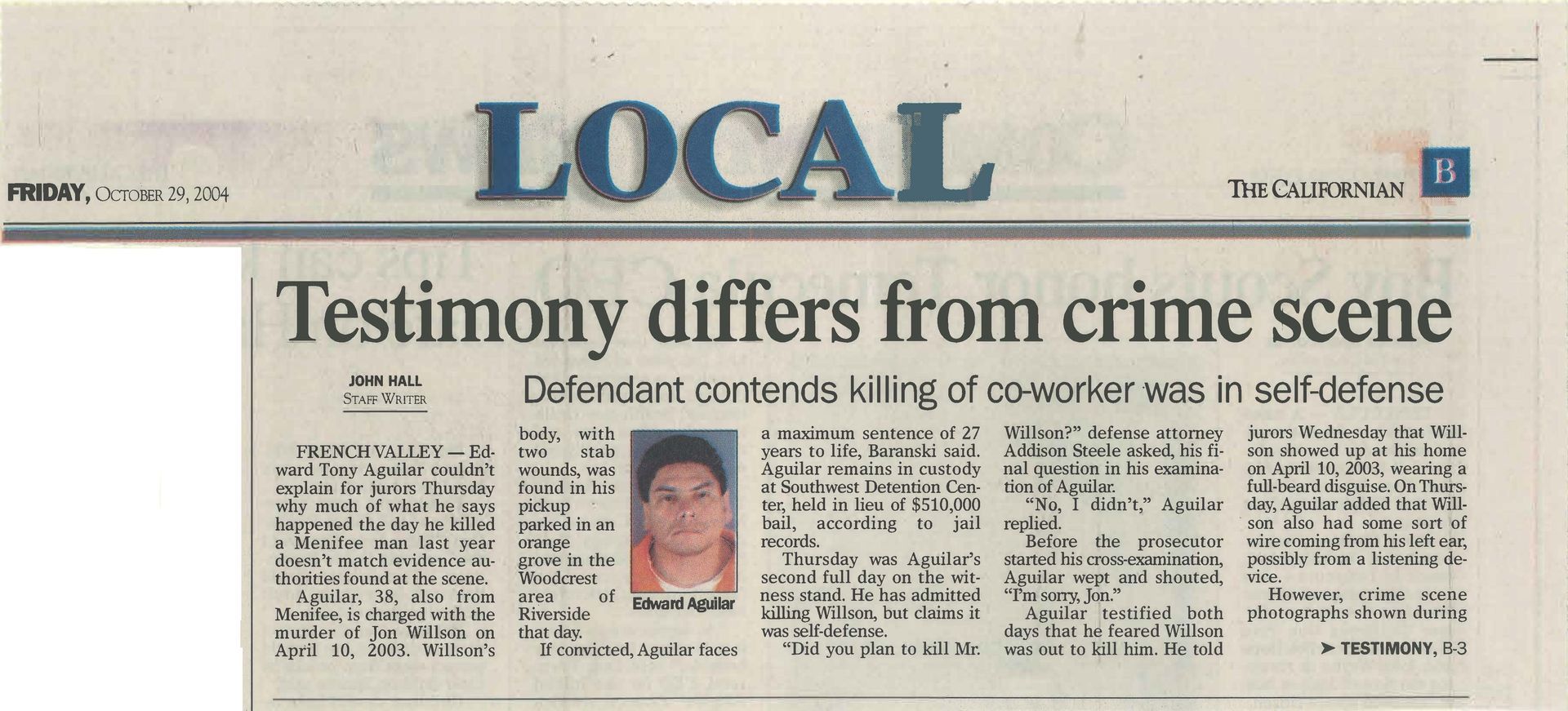


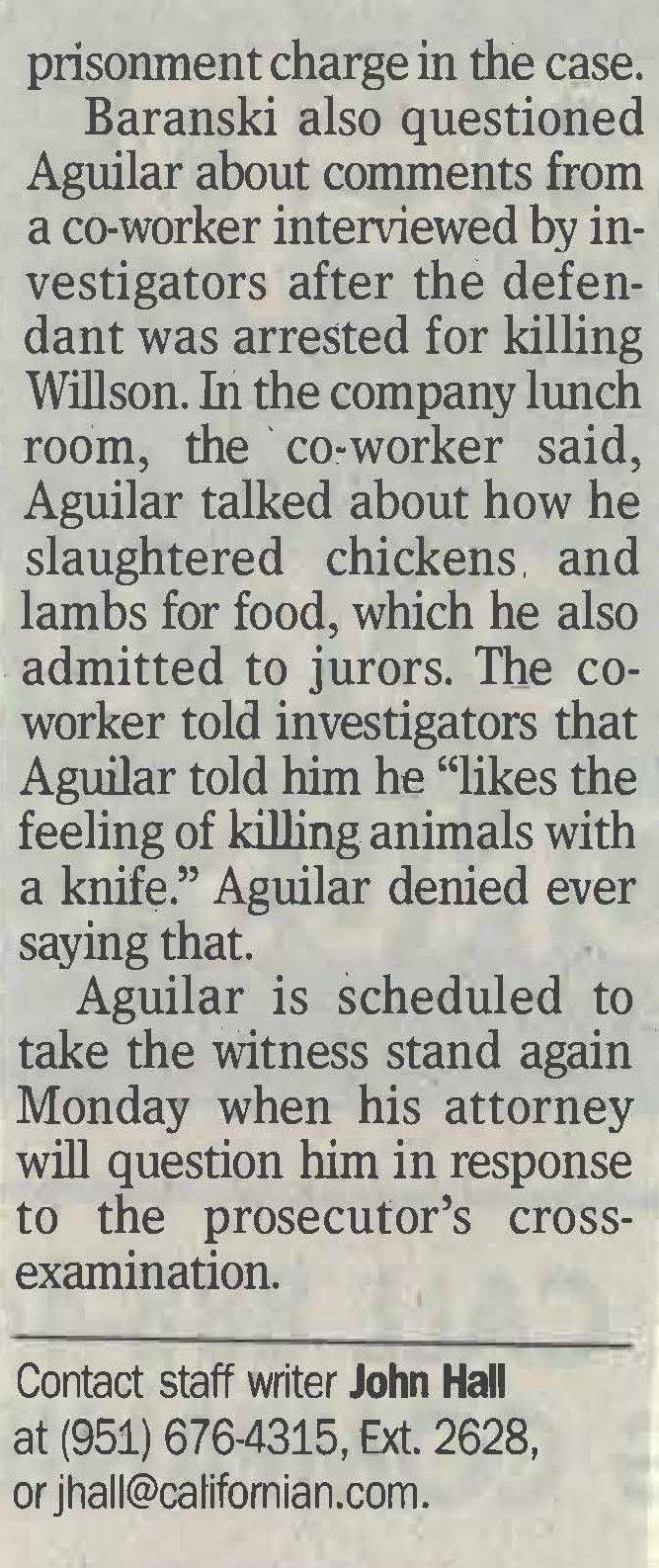

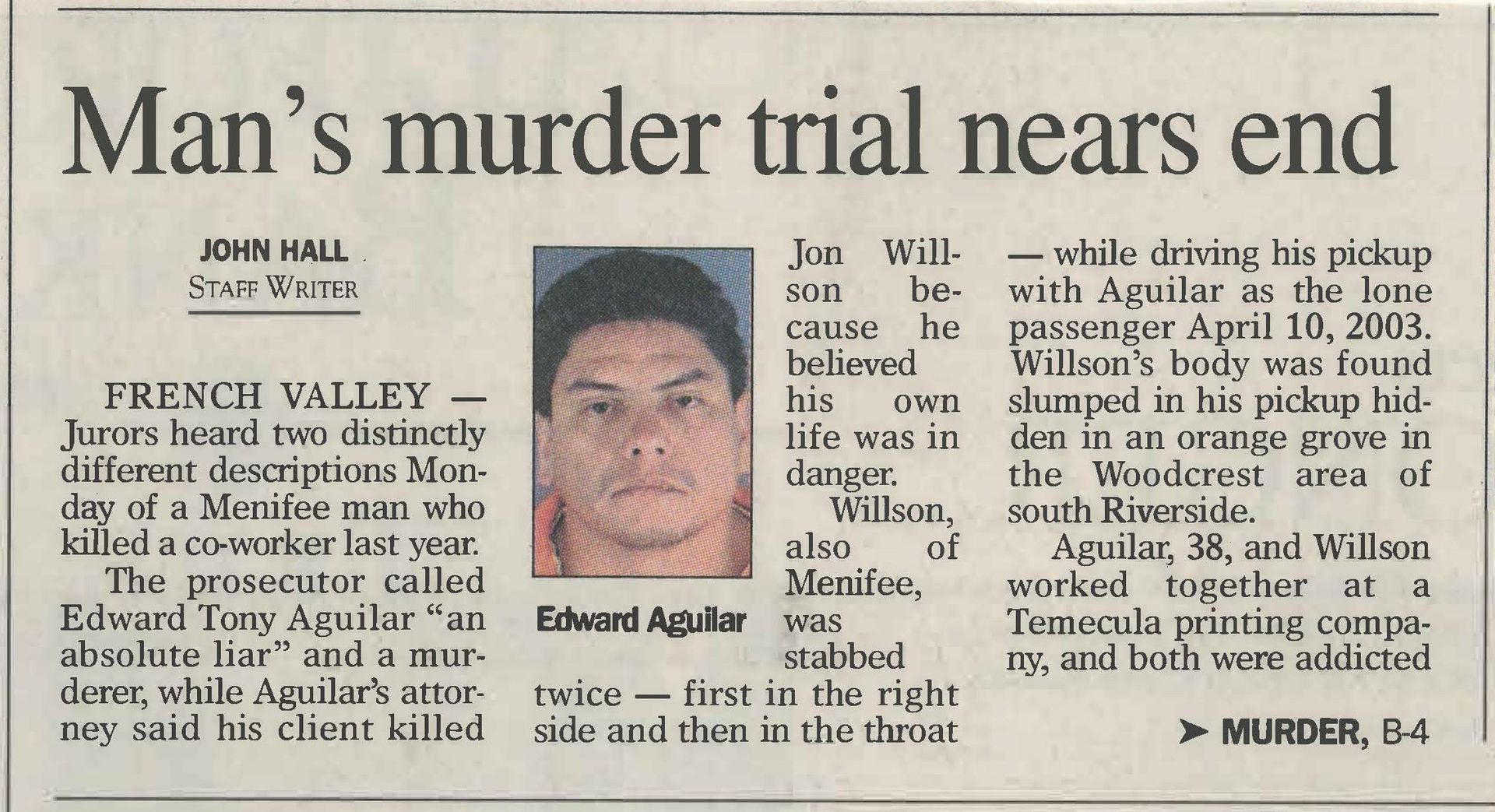
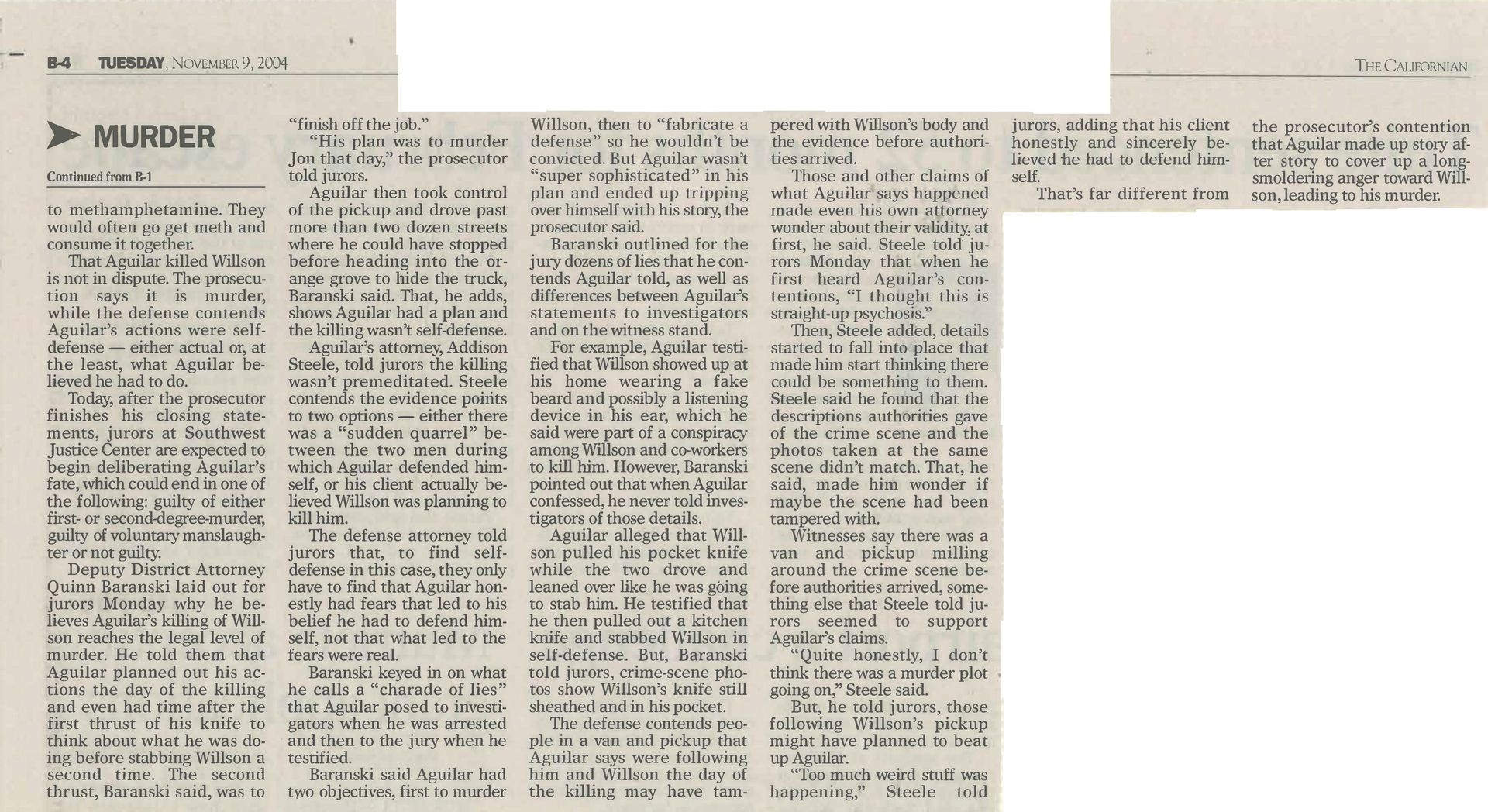


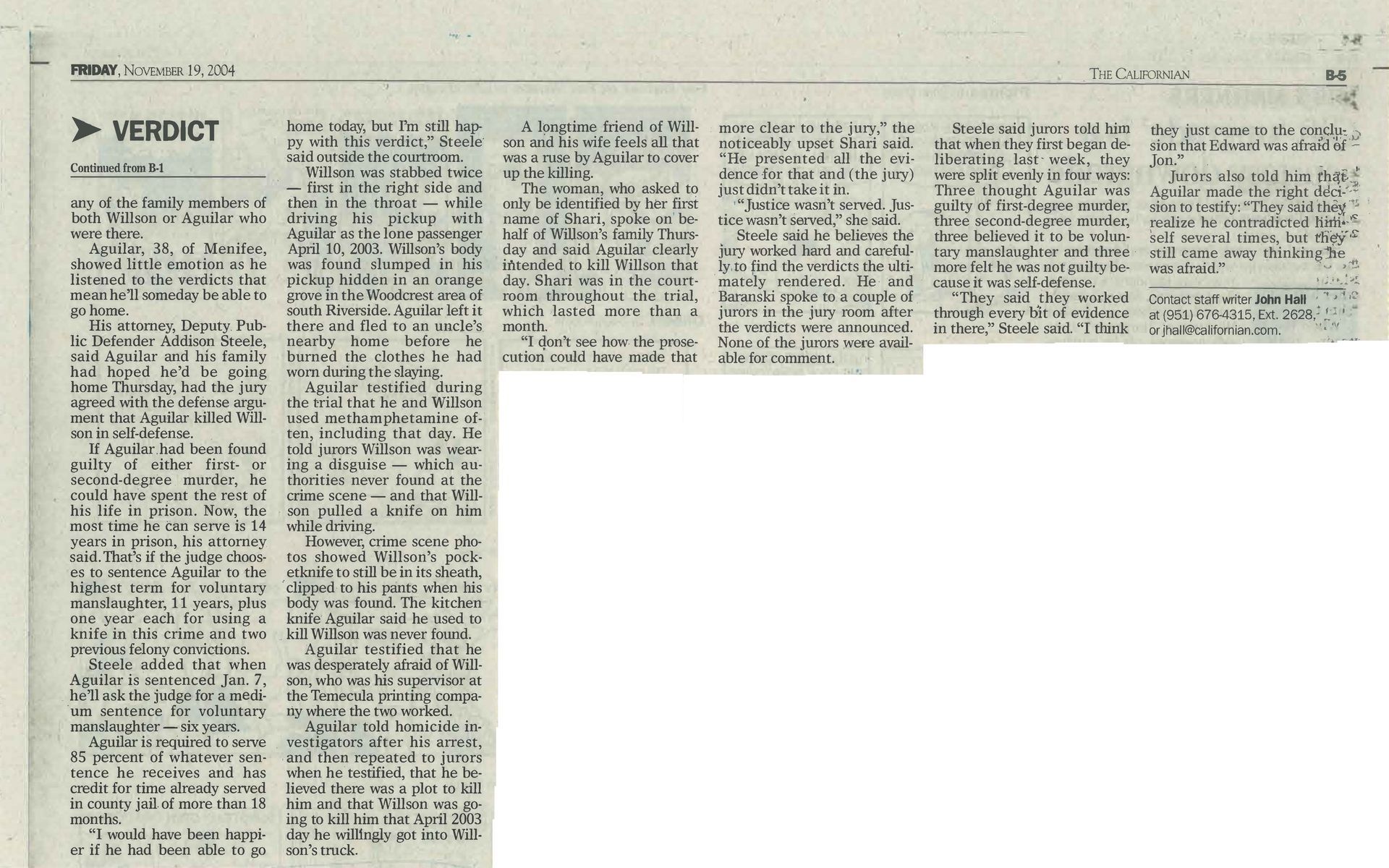


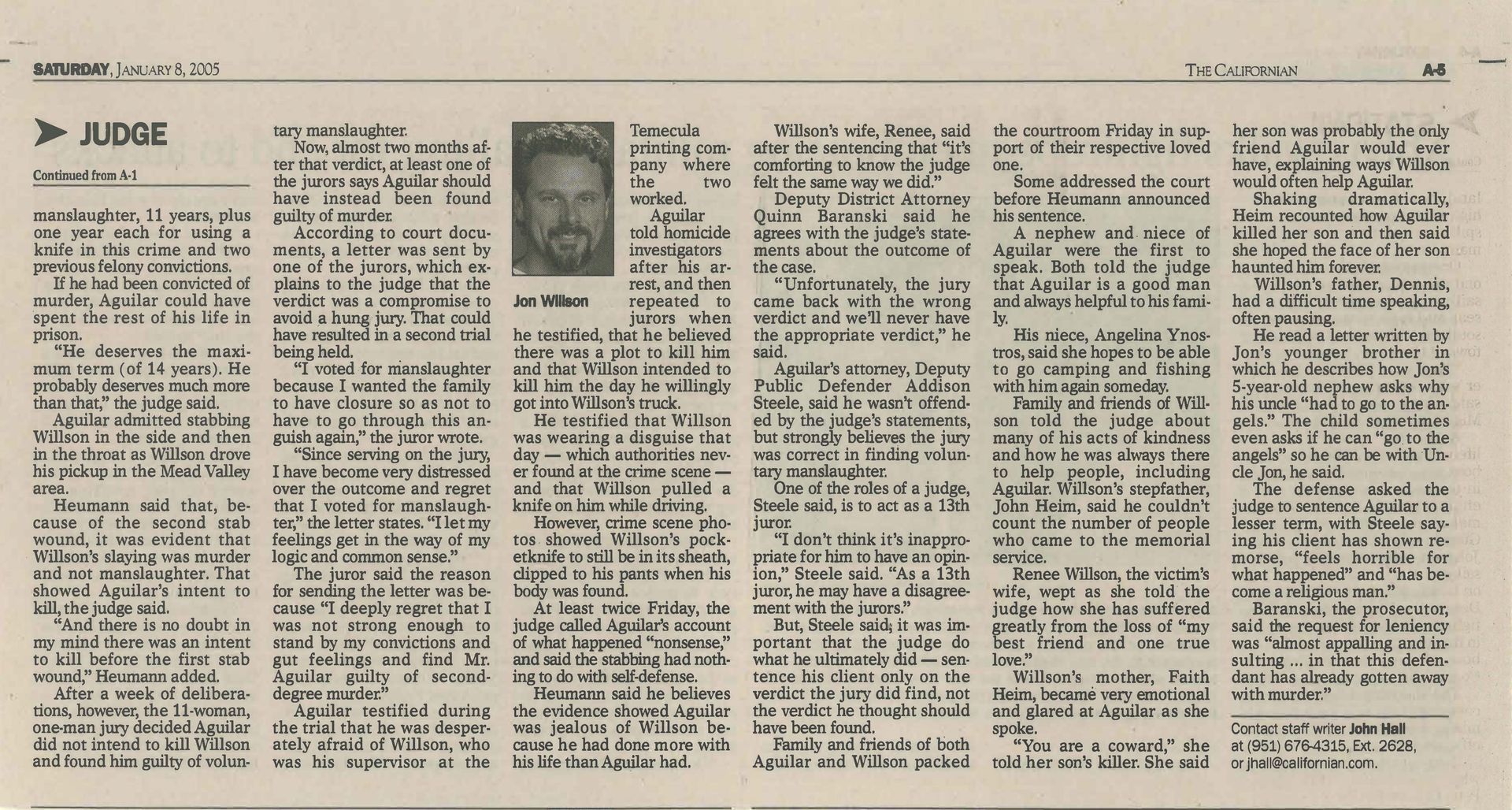
Juan M., voluntary manslaughter charge dismissed on May 14, 2003
This case was both tragic and strange. Juan was a young adult with a seventeen year-old girlfriend. The decedent suffered a one inch vaginal laceration while Juan and she were having consensual sex. That laceration led to an air embolism (air getting into the bloodstream) which reached her heart and caused her death. This is an extremely rare cause of accidental death. The district attorney charged Juan with involuntary manslaughter, burglary (entering his girlfriend's home with the intent to have unlawful sex because he was over eighteen and she was under eighteen) and penetration with a foreign object, which was another way of charging him for having sex with a seventeen year-old when he was over eighteen. The decedent's family was not happy with the charging decision, they wanted the district attorney to seek the death penalty. An element of involuntary manslaughter is engaging in dangerous conduct that led to a death. At the preliminary hearing the judge ruled that having sex is not a dangerous act, therefore the voluntary manslaughter charge could not stand. However the district attorney did not give up and refiled the charge anyway. Christine then had to beat the charge a second with a granted motion (a Penal Code section 995 motion).
the press only covered Juan's case when Christine won it, The article is below

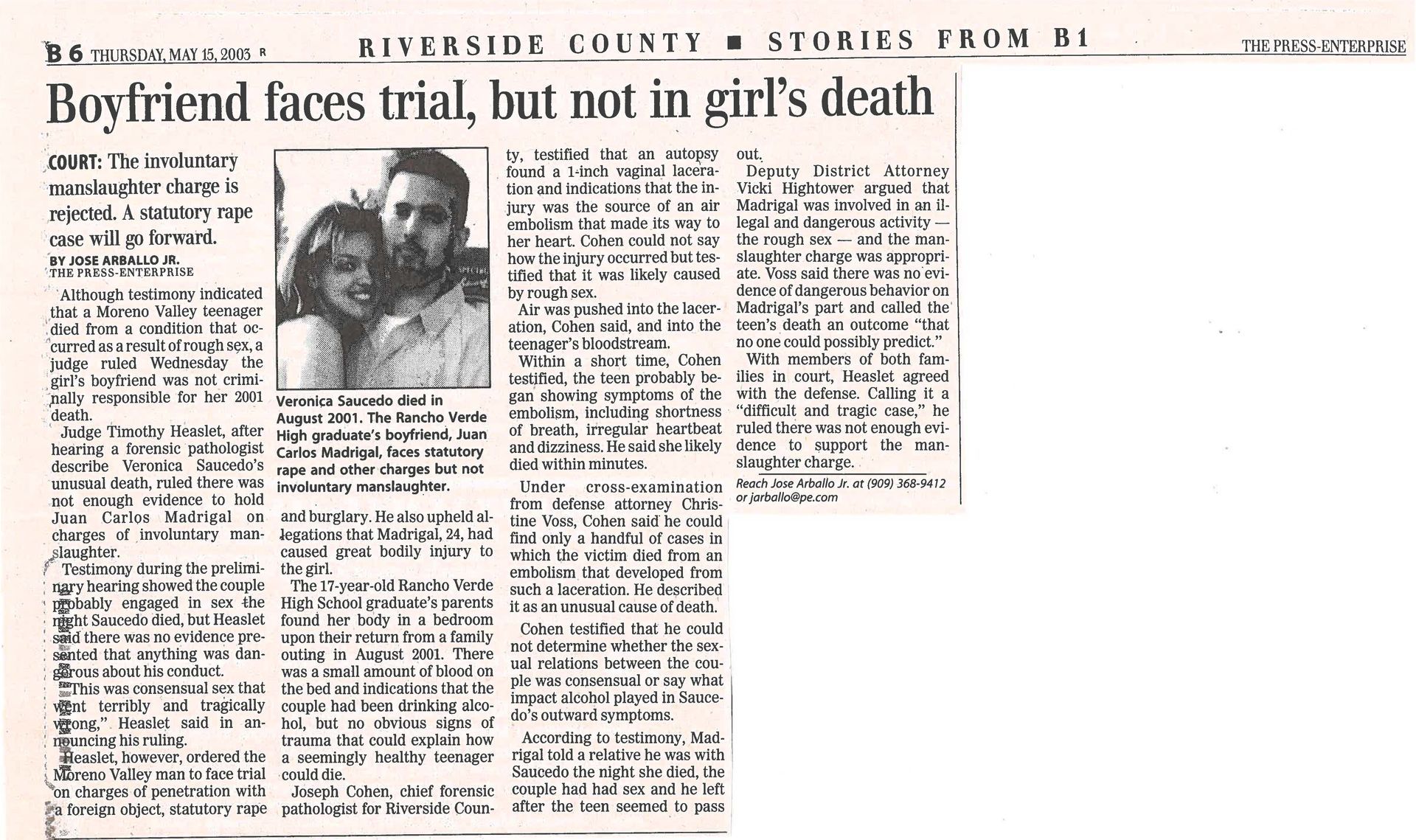
Martin L., SB225068, Acquitted of both first degree murder and second degree
Murder on August 24, 1999
- Charges: Murder (Penal Code § 187(a)) with a firearm allegation (Penal Code § 12022.53(d)).
- Exposure: Marty was facing fifty years to life in prison.
- Outcome: Marty was acquitted of first-degree murder and he was acquitted of second degree murder. He was only convicted of voluntary manslaughter, which is considered an absolute victory by defense attorneys. The amazing part of the outcome was that Christine convinced the judge to NOT impose a "victory tax." When a life sentence exposure case is won the defense attorney expects the judge to impose the maximum sentence for any lesser included offense or unrelated counts that were found guilty or to which a plea was entered. In plain English, if the client's life is saved, the judge will max him or her out on anything that's left. It is extremely rare for a judge to not impose the victory tax. What was left after Marty and Christine's victory was a maximum of twenty-one years in prison. The district attorney's expectation was that the victory tax would be imposed and that Marty would receive that maximum term. Christine prevailed against the victory tax and Marty was sentenced to ten years. After serving his sentence Marty returned home to live in the very same house where he had shot his abusive father. Unfortunately the trauma that Marty suffered overwhelmed him and he took his in life in that same house.
This was a tragic case. Marty testified at trial that he had witnessed his father abuse his mother his entire life. He also testified that on his twenty-first birthday, the day he was old enough to buy a gun, he did just that in order to protect his mother from his father. On the witness stand he said that his mom and dad got into an argument and that his father was threatening his mother. He went to defend his mother and pointed the gun at his father and told him to leave her alone. His said, "You don't have the balls to shoot me," and Marty fired. Although those facts sound like a first degree murder, Christine used what was at the time new technology, a PowerPoint presentation, and convinced the jury that it was not murder. Marty was acquitted of first degree murder and the lesser degree of second degree of second murder. He was only convicted of manslaughter with a gun enhancement. Getting a voluntary manslaughter when charged with murder is considered an absolute victory. Another interesting fact about this case is that Christine was a young attorney in her twenties when she did this trial. She was such a superstar young lawyer that she was assigned a murder case despite her age.
This is the Minute Order from when Marty and Christine won his trial
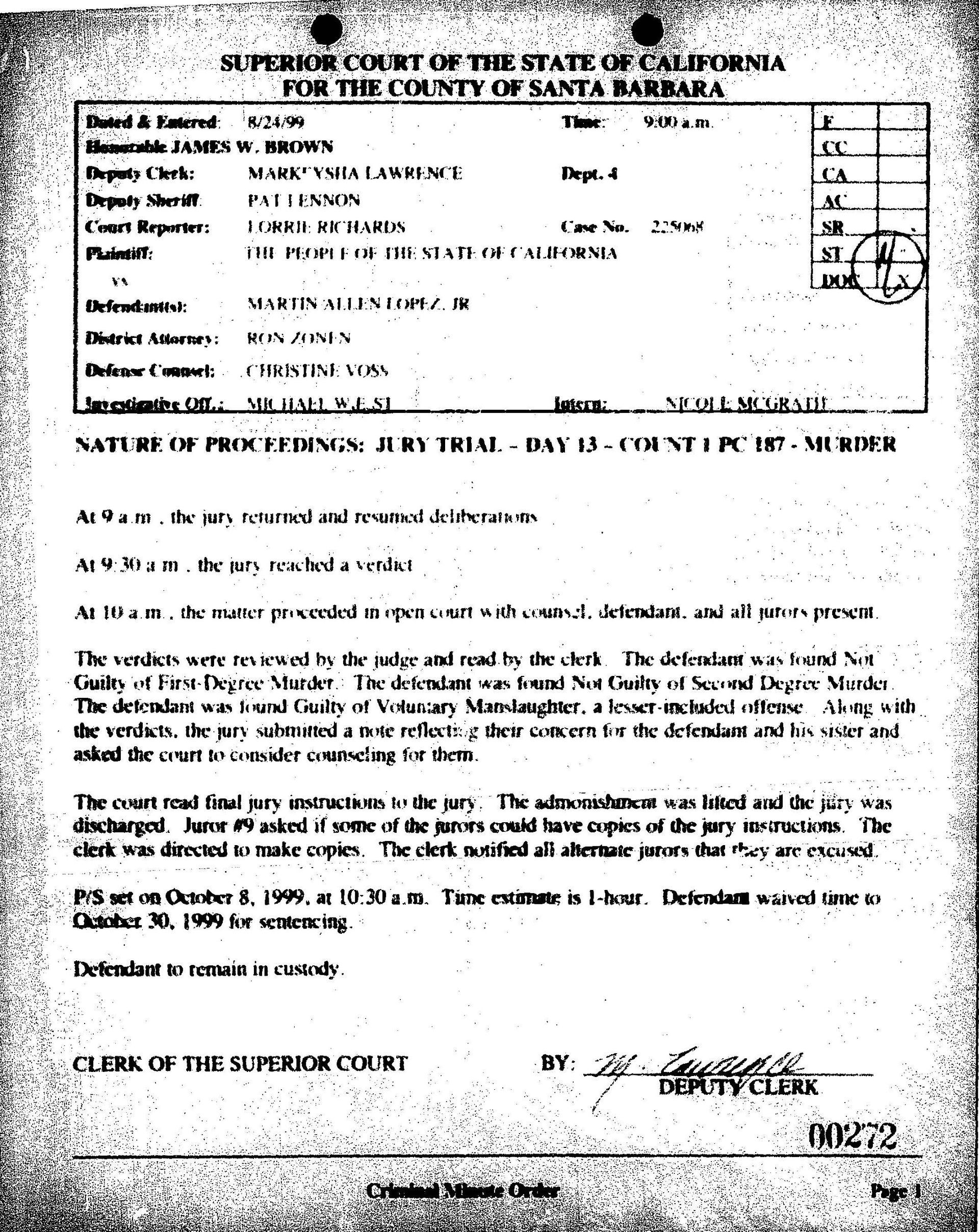
This is the press from when Marty and Christine won his trial
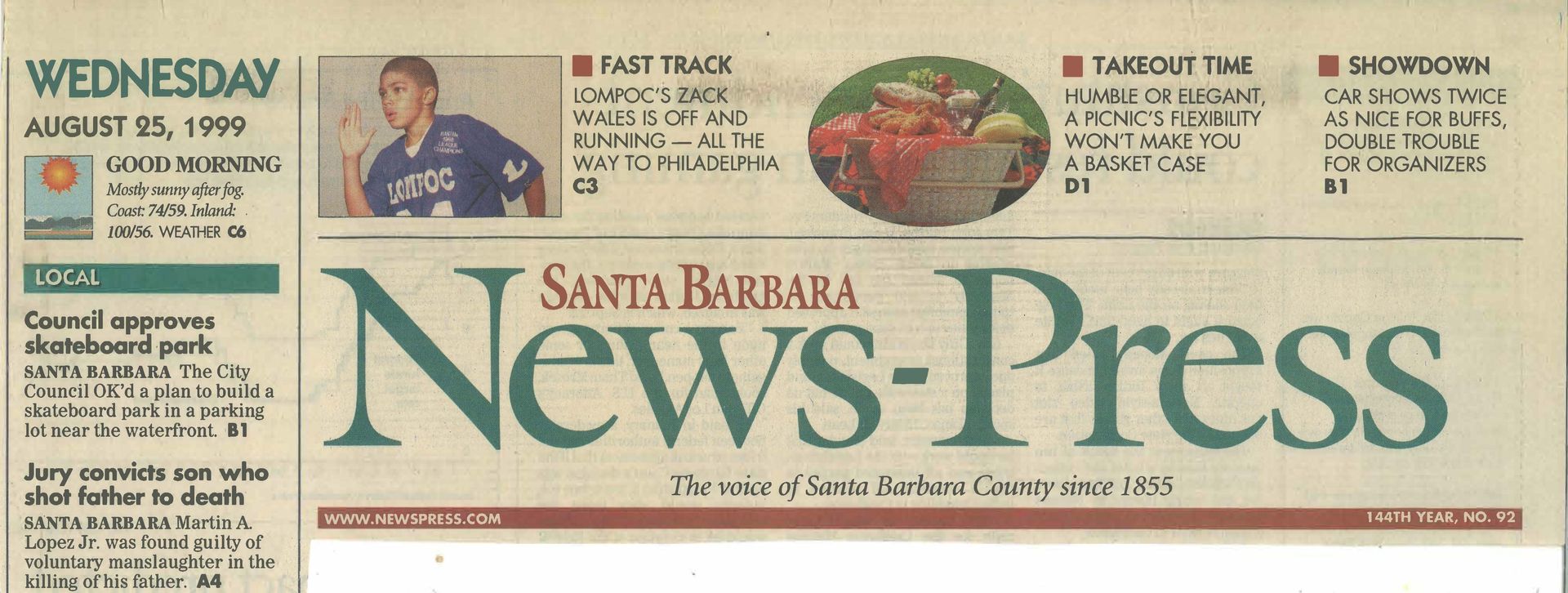
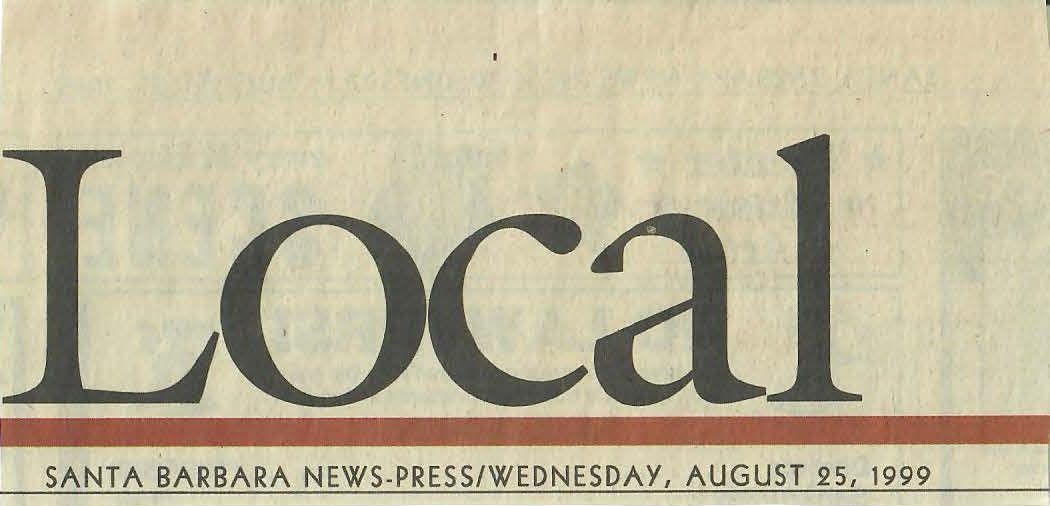

This is a postcard that Marty sent Christine after the trial
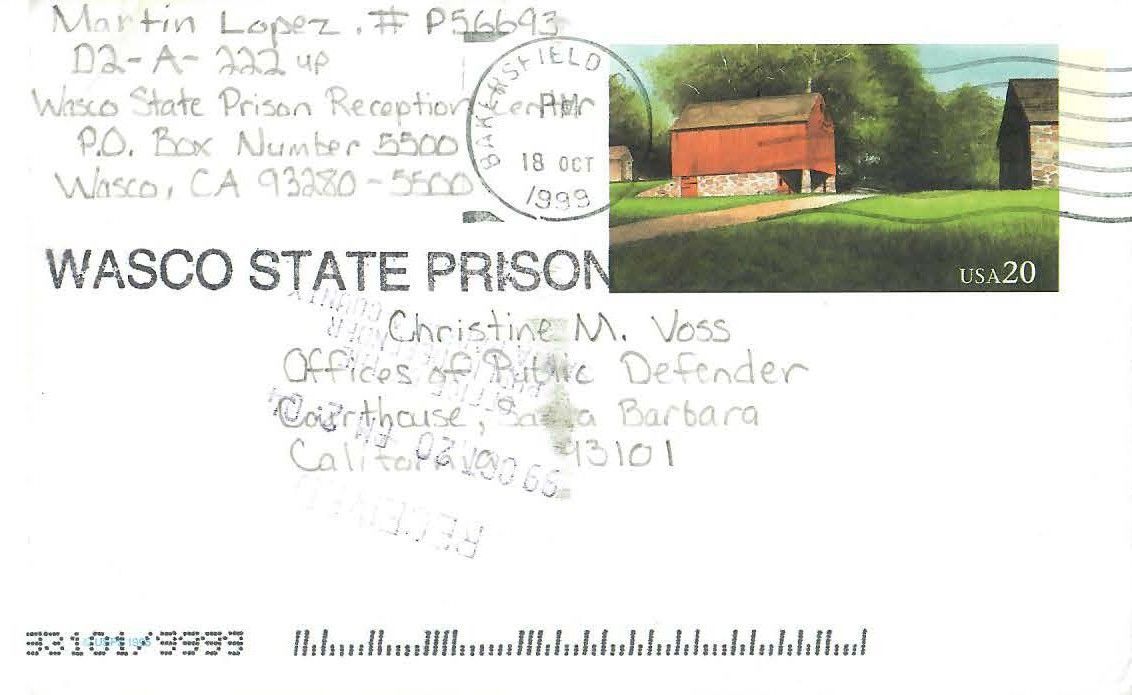
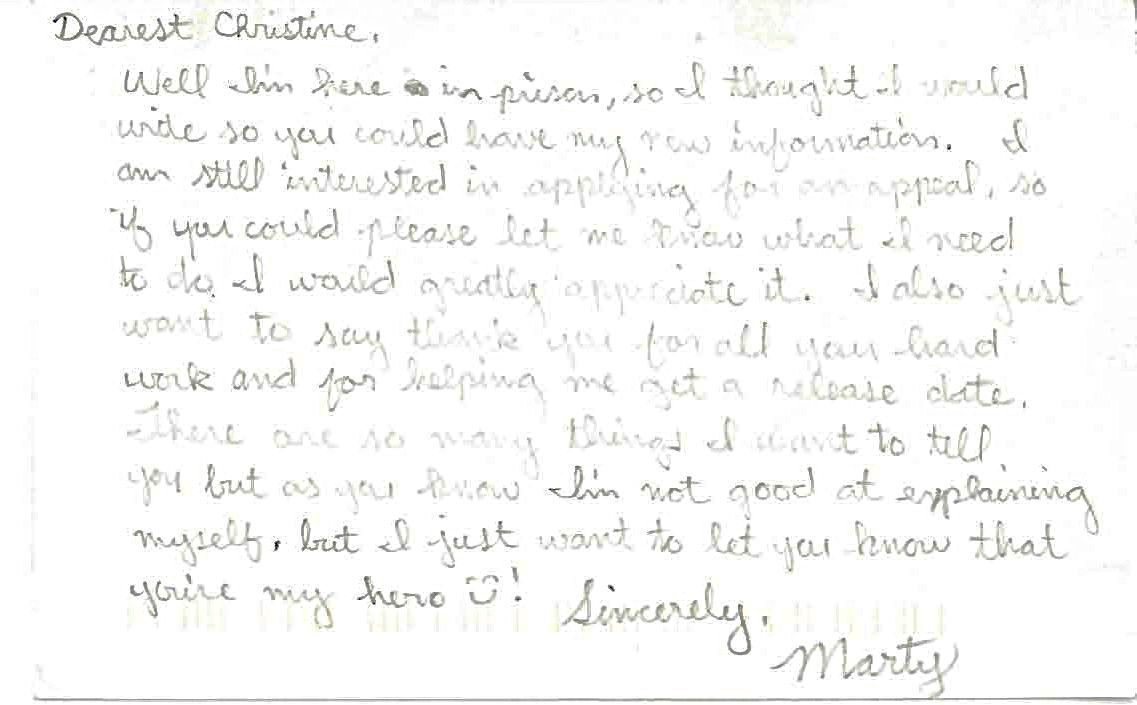
Here you can follow the press on Marty's case from beginning to end
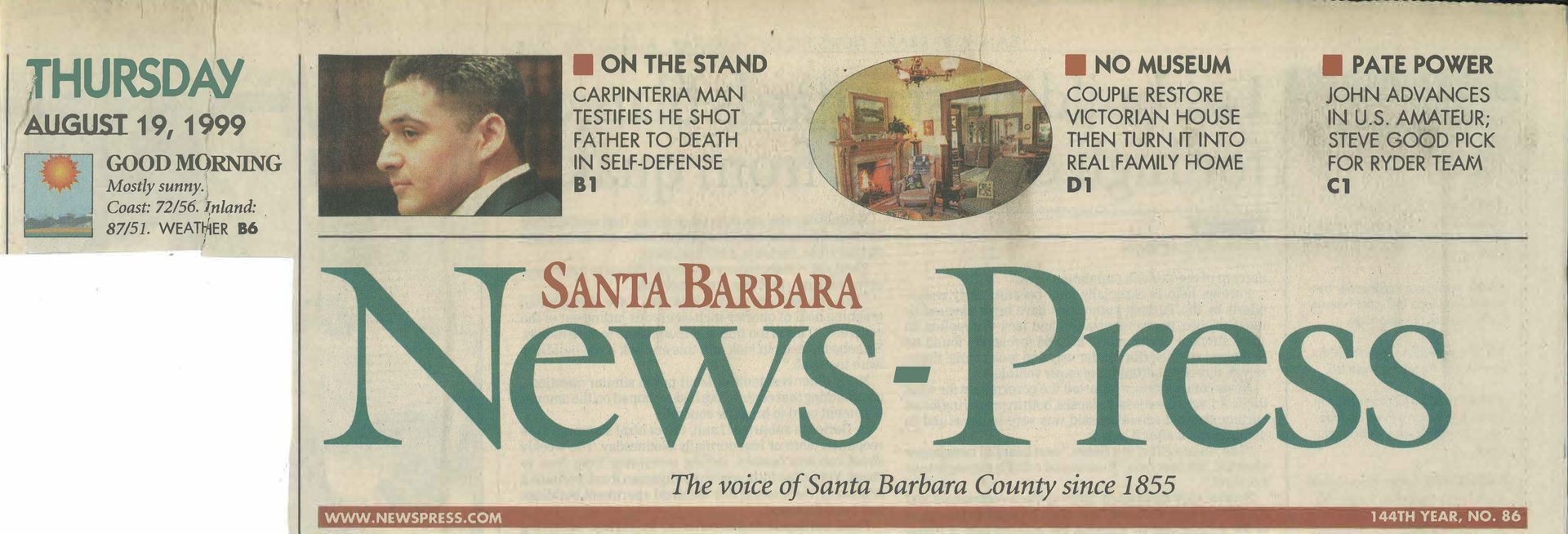
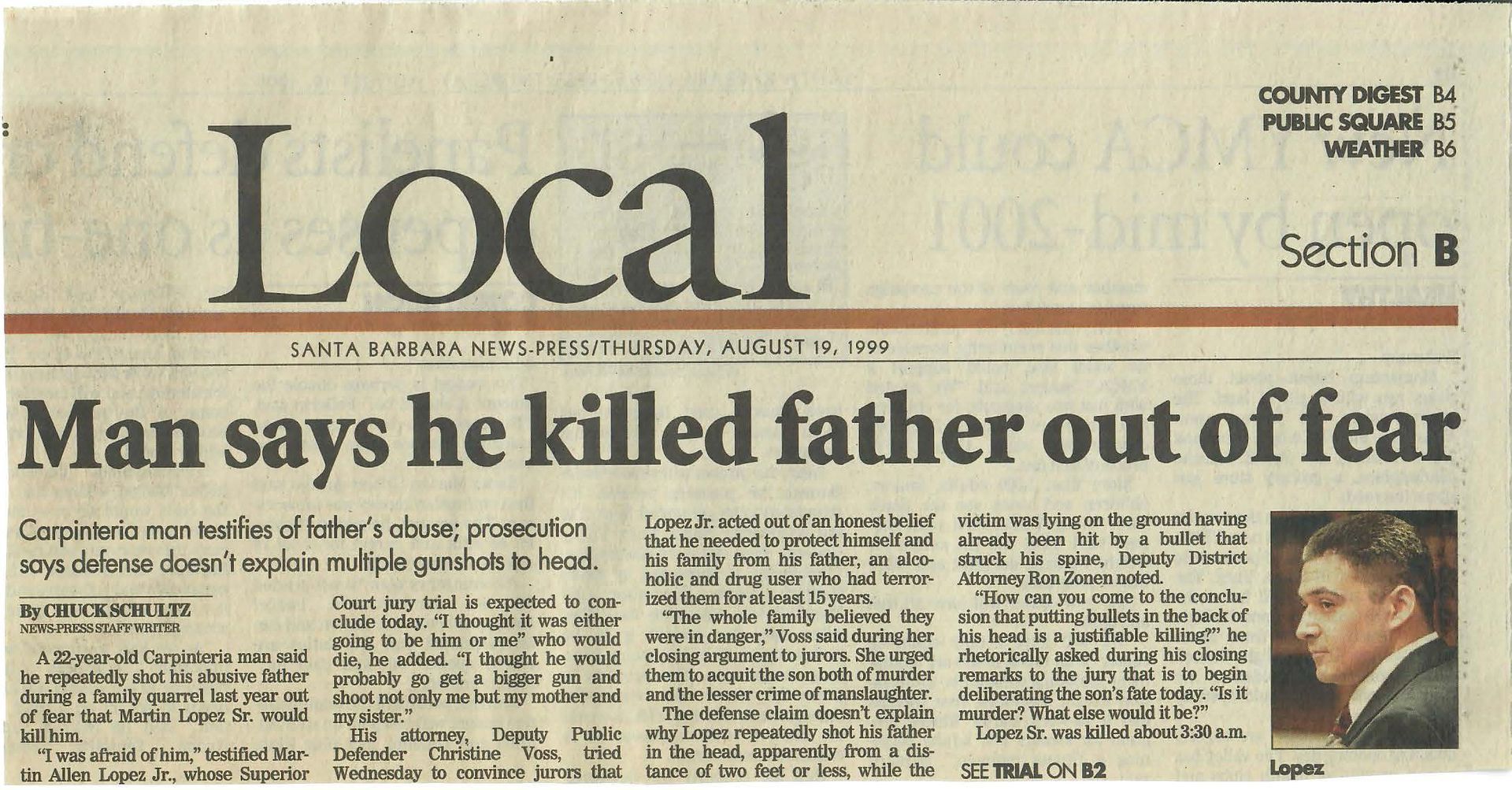
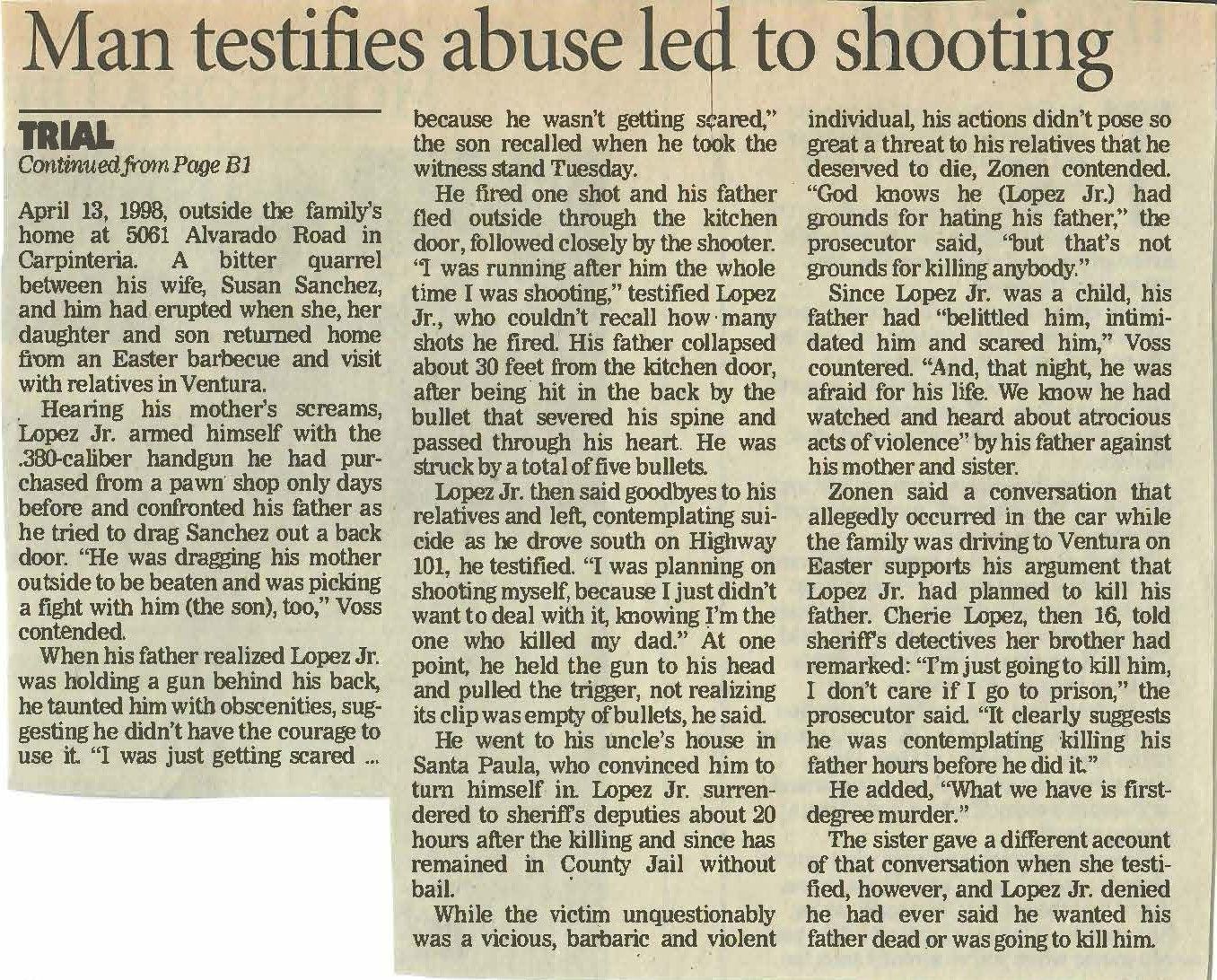


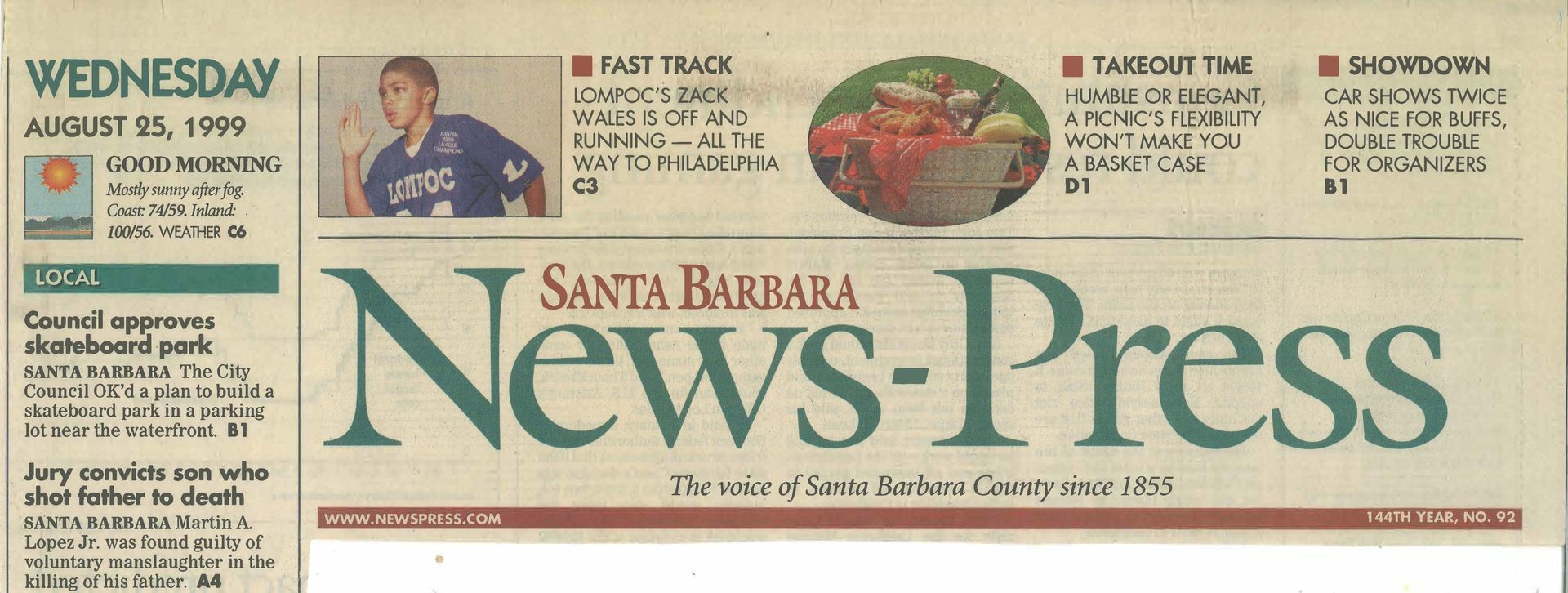
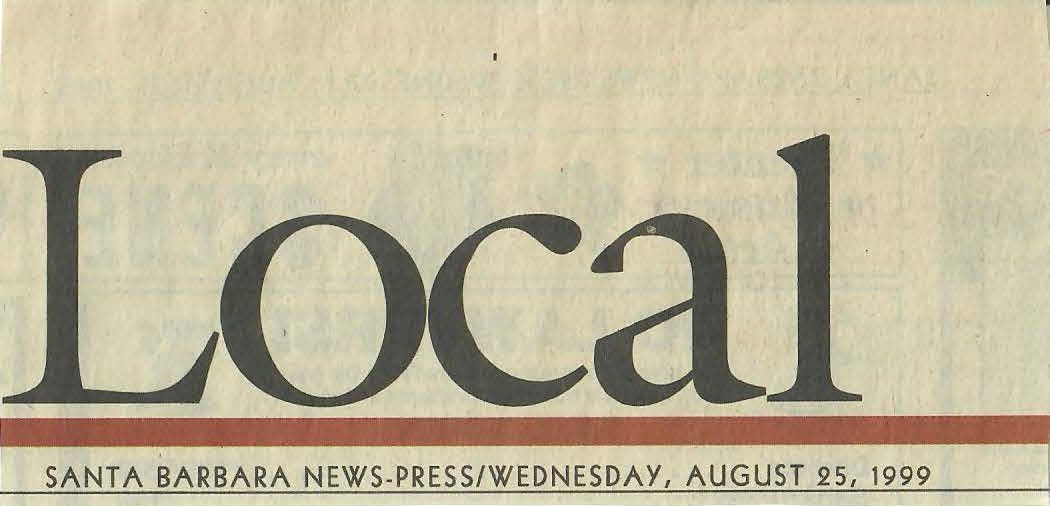



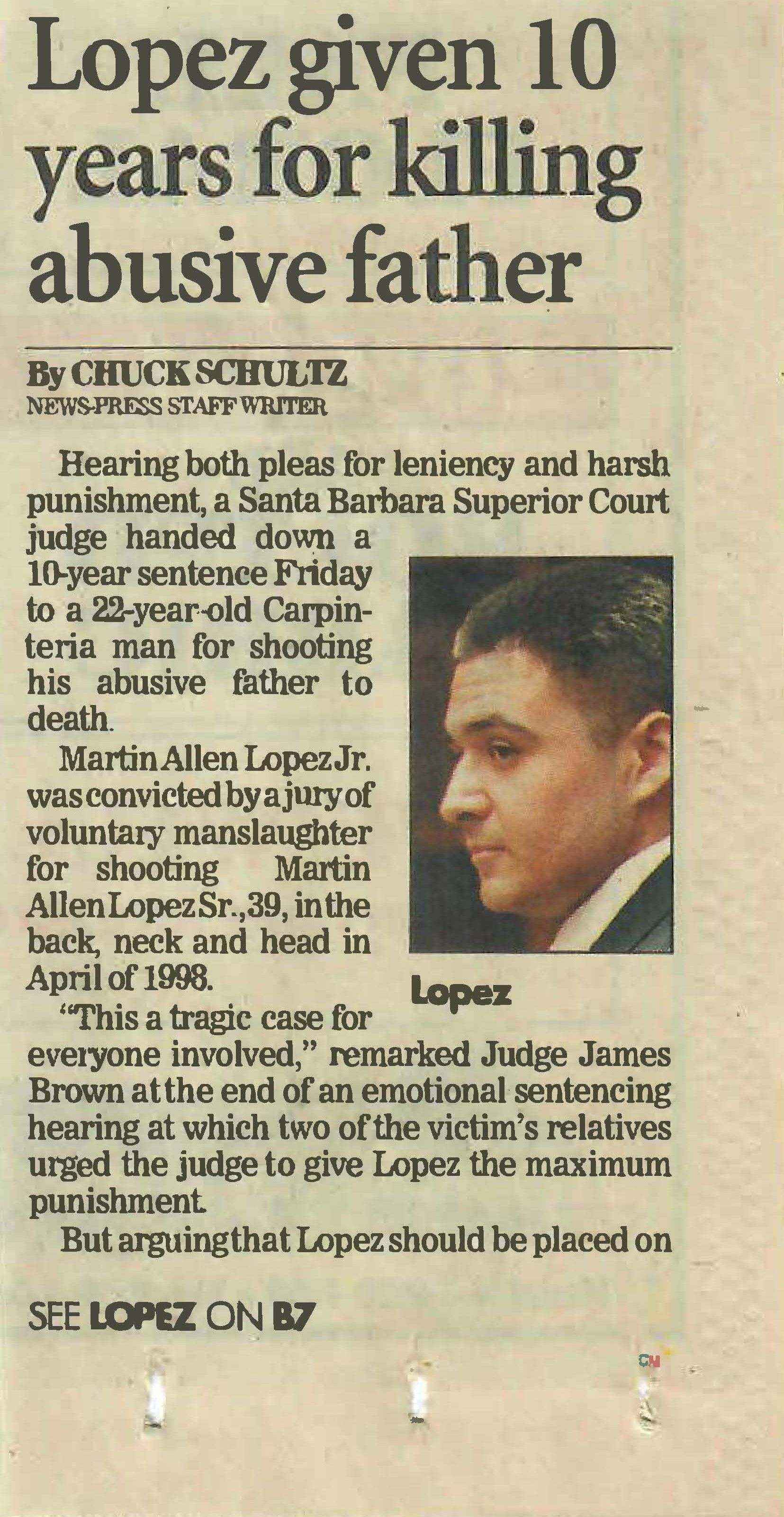
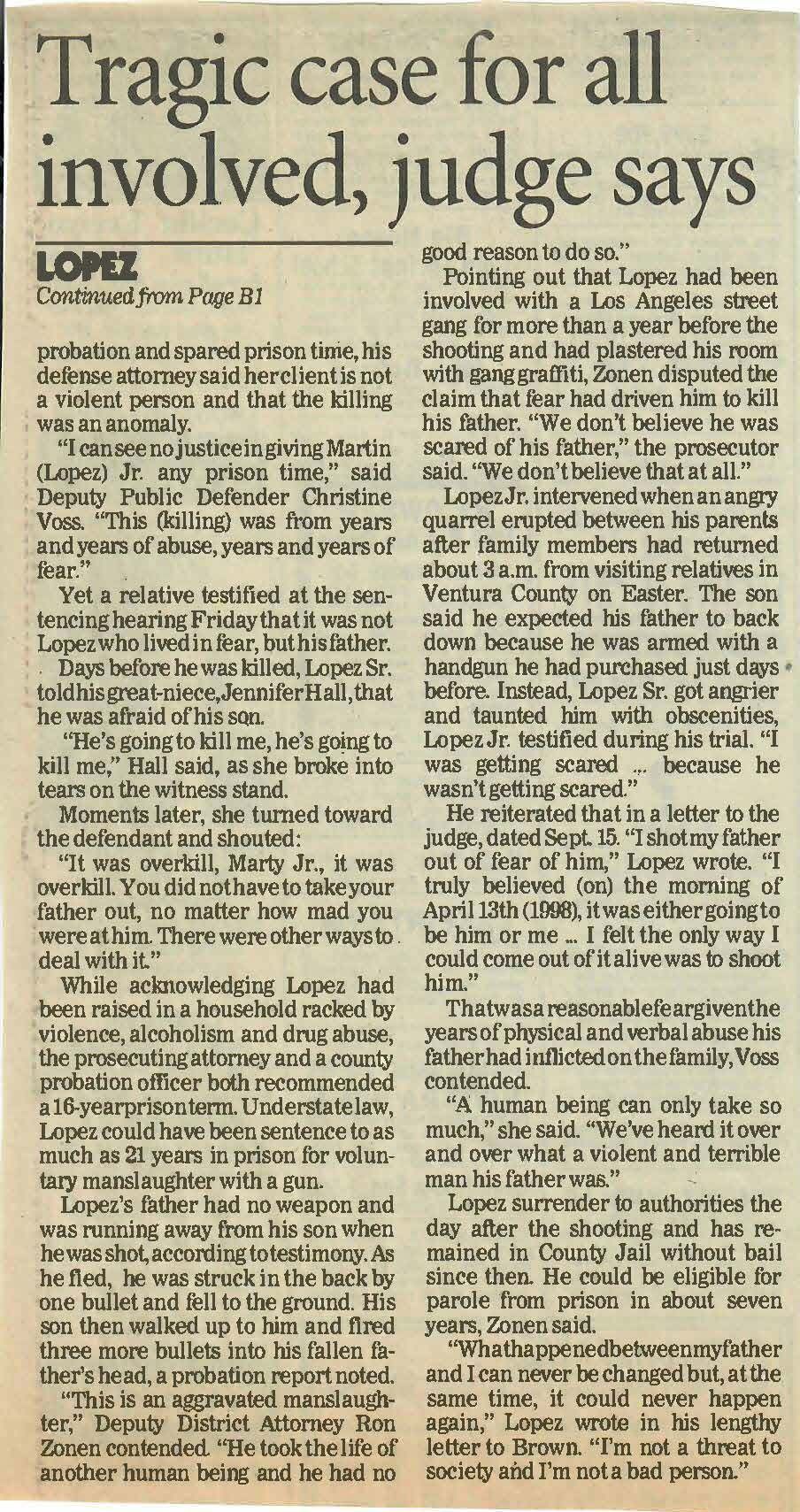
These are the six lawyers who defended the six co-defendants. Their families call them “The real dream team.” They went seven months from when pre-trial motions started until verdicts were reached, and the families were extremely supportive and in court throughout the process.
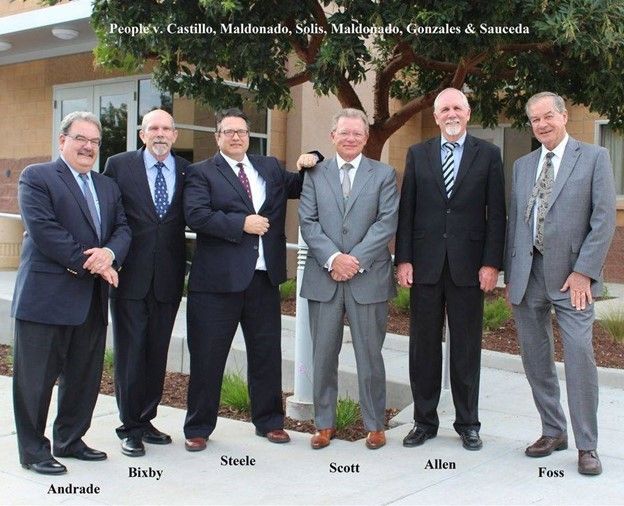
A.J. and Addison went back to the courthouse, where the trial was held after A.J. had served a short prison sentence.
They took a picture outside the courthouse, taking in the free air. A.J. wrote on the picture, “The best lawyer and the only lawyer I want defending me, I’m home today because of you, A.J.”
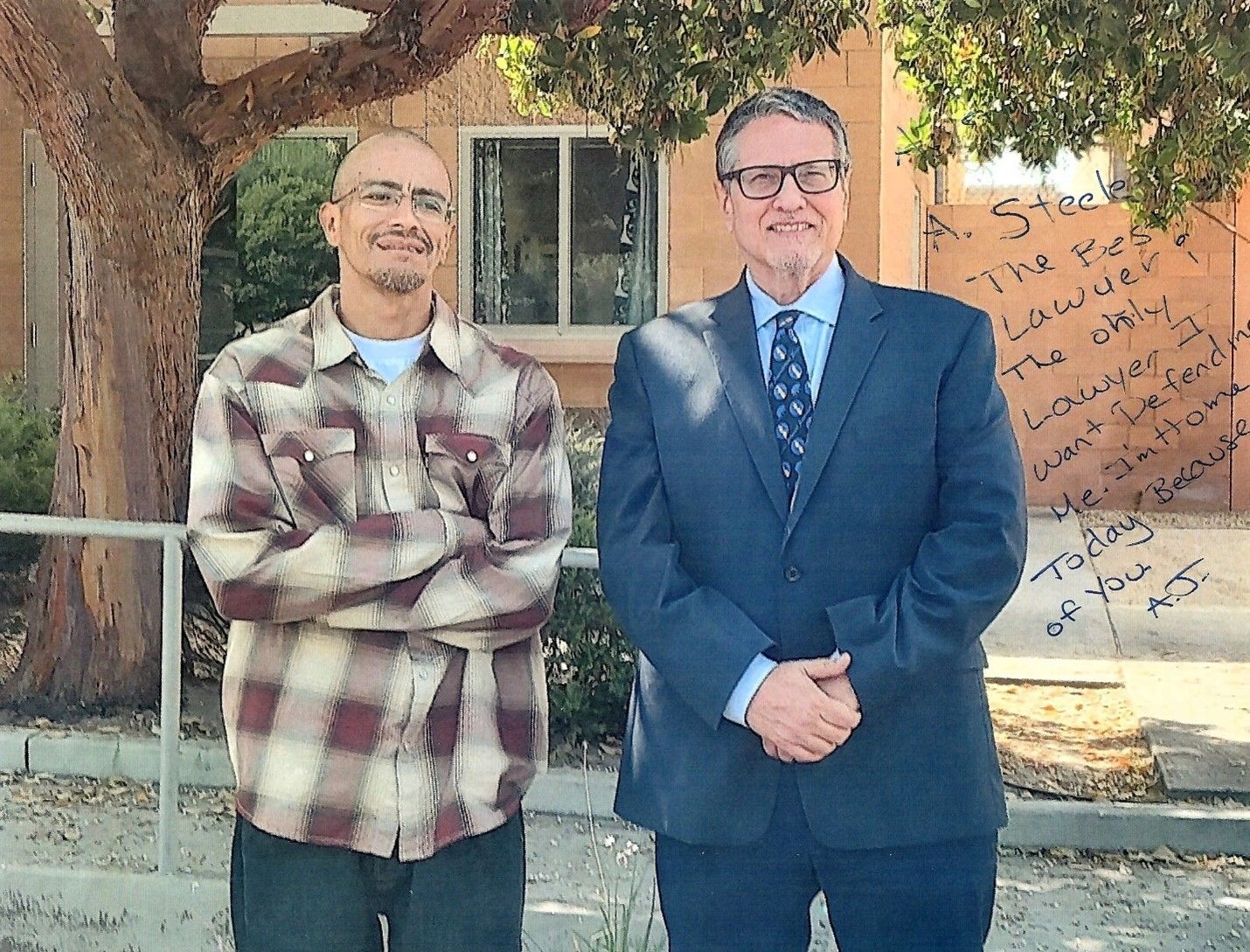
Attempted Murder
Addison Steele has:
Two attempted murder trials where the client was acquitted of all charges
(Robbie C., RIF104021, and Albert C., RIF129534, which was an allegation that Al tried to kill his elderly mother by suffocating her. In fact he was a caretaker for his mother who suffered from dementia, the jury acquitted him of all charges).
Six attempted murder acquittals
(Penal Code § 664/187(a))
(Robbie C., RIF104021, Albert C., RIF129534, Tomas Z., RIF131949--three acquittals, and Enrique A., RIF126653).
Two attempted murder of cops counts
with a hung jury
(Penal Code § 664/187(a))
(Timothy S., BAF003806).
Six attempted voluntary manslaughter acquittals
(Penal Code § 664/192(a))
(Robbie C., RIF104021, Albert C., RIF129534, Tomas Z., RIF131949--three acquittals, and Enrique A., RIF126653).
Christine Voss has:
One attempted murder where the client was acquitted, Avery M. 1424960, and has another one that the district attorney dismissed in the middle of the trial, James T., 1494332.
If you're charged with attempted murder, you're facing seven years to life or fifteen years to life in prison depending on how the district attorney charged the case, and that's without any additional charges or allegations in addition to the standard allegation of premeditation and deliberation. The good news, if good news can be found in this situation, is that the district attorney will have to prove specific intent to kill. Oddly, that's not the case with a murder charge, where there are ways to be convicted of murder without intending to kill the decedent, such as felony murder and provocative act homicide.
The potentially more favorable outcome of an attempted murder trial is a conviction for attempted murder but without a true finding for the standard premeditation and deliberation allegation. That outcome, without any additional charges or allegations, carries a nine-year maximum sentence. An even more favorable outcome is a conviction for attempted voluntary manslaughter, which carries a maximum of five years and six months in prison if there are no additional charges or allegations. Assault is not a lesser included offense of attempted murder, so in order to have that more favorable outcome, the district attorney has to charge it. The best outcome is a not guilty verdict on all charges and all lesser included offenses. A skilled attorney will know how to negotiate all of these better outcomes, however if a negotiated resolution cannot be reached the case will have to be set for trial,
Addison and Christine have done twelve jury trials that included attempted murder charges between them. Only three of those clients were convicted of attempted murder with the allegation of premeditation and deliberation found true, and all three of those were cases where a person was shot; one case was a drive-by shooting where a child was hit with a bullet, another was a drive-by shooting where a teenager was shot with a shotgun, and the other was an alleged gang shooting where two people were shot. Addison and Christine have had seven jury trial attempted murder acquitted counts, three attempted murder hung jury counts and two attempted murder count dismissed during trial, and have an even 200 court days in attempted murder jury trials between them.
Christine and Addison's attempted murder trial successes include:
James T., 1494332, On September 18, 2017, on the thirteen day of the jury trial, the
case settled for a dismissal of the attempted murder charge in exchange for a plea to burglary and assault
Frank G., 1351476. On April 10, 2014 attempted murder dismissed during trial in
exchange for a plea to manslaughter in unrelated incident
Avery M., 1424960, on December 3, 2013 Acquitted of attempted murder, only
found guilty of Assault with a weapon with great bodily injury
Timothy S., BAF003806, On June 12, 2008, hung jury (11 to 1 for not guilty) on two
Counts of attempted murder of cops with bombs and dismissed by the judge, only convicted of conceded counts of possession of bombs
Robbie C., RIF104021, On October 17, 2007 acquitted of all charges
- Charges: Murder (Penal Code § 187(a)), attempted murder (Penal Code § 664/187(a), felon in possession of a firearm (Penal Code § 12021(a)(1), special allegations of personal use of a firearm (Penal Code § 12022.53(d), a prison term prior (Penal Code § 667.5(b), serious crime prior (Penal Code § 667(a) and three prior strikes (Penal Code § 667(c)&(e)(2)/1170.12(c)(2)).
- Exposure: Robbie was facing 171 years to life in prison.
- Outcome: There were two trials, the first trial ended in a hung jury with the jury deadlocked at ten to two for acquittal. At the second trial, Robbie was found not guilty of all charges and went home.
This was a really challenging murder case. The allegation was that Robbie shot at two men for no apparent reason killing one and wounding the other. The case was made more challenging because Robbie had two strike priors, so if he was convicted of any one of the charges he would be sentenced to at least 25 years to life in prison. So the felon in possession of firearm alone would result in a life in prison sentence. What had in fact happened was that Robbie was confronted by his best friend who mistakenly believed that Robbie had become involved with his girlfriend. The evidence presented at trial was that Robbie had grown up in South Los Angeles and when he was younger was an Eleven Eight East Coast Crips (Eleven Eight was for 118th Street in South Los Angeles and East Coast Crips did not have anything to do with the East Coast, it means the eastern side of South Los Angeles). It was an environment where the slightest disrespectful act could have deadly results, so his best friend believing that Robbie was involved with his girlfriend was a very serious matter. The evidence that Addison and Robbie presented at trial was that after his best friend confronted Robbie, the two separated and were about forty feet apart in the courtyard of an apartment complex. His best friend was standing next to another man talking and Robbie was standing next to another man talking, they were all former Eleven Eight East Coast Crips gang members and all knew each other. Robbie was the only person that was not armed. All of sudden, his best friend pulled out his gun and began firing at Robbie. The man Robbie was next to pulled out his gun to fire back, he got off some shots but then dropped the gun in the chaos. While they were being shot at Robbie picked up the gun and also fired back. Robbie's best friend and the man he was with were both shot, but Robbie best friend succumbed to his wounds. There were many people in the apartment complex that heard the shootout and many people that witnessed only a portion of it. The district attorney presented a theory that Robbie shot his best friend and another that they grew up with for no known reason. The first trial resulted in a hung jury. Robbie offered fourteen years just to avoid the risk of 171 years to life in prison. The district attorney rejected the offer on the theory that he would be able to send Robbie to prison for life on the felony in possession of a firearm alone because Robbie had two prior strikes. However there's an exception to felon in possession of a firearm--if a person's life is in danger and that person comes upon a firearm, he is allowed to possess the gun to defend himself. The exception matched the facts of what had happened to Robbie. At the second trial the jury acquitted Robbie of all charges and he went home. However the district attorney wasn't done. In the years that Robbie had been in jail waiting for both trials, he had gotten into a one punch jail fight. The district attorney charged that jail fight as a felony assault so Robbie was again looking at twenty-five years to life in prison. Addison wrote and argued a motion to reduce that charge to a misdemeanor. The motion was granted and Robbie was given credit for time served. Addison had saved Robbie's life a second time.

Robbie, Addison and the investigators on the case after the verdicts.
Robbie was featured in an article in the Los Angeles Daily Journal that was done about my winning so many trials. I've been told, but have not been able to confirm, that the Los Angeles Daily Journal has never done an article like this about any other criminal defense attorney.
- Riverside Public Defender Piles Up Victories: Three Full and Three Partial Acquittals in Nine Trials Win Him Special Recognition, Jason W. Armstrong, Los Angeles Daily Journal, Volume 121, Number 32, February 20, 2008.
In another of Steele's high-profile wins, the defender secured a murder acquittal in October for Robbie Catchings, a Moreno Valley resident prosecutors said shot and killed a man at a Perris apartment complex in 2002. Steele also persuaded a judge to reduce to a misdemeanor a felony assault charge against Catchings in a separate case that could have exposed the defendant to a life sentence under the three-strikes law.
Catchings walked free as a result.
. . .
Jenny Reis, a Corona woman who served on the jury that acquitted Catchings, said Steele's 'down-to-earth' evidence presentation helped his credibility with the jury.
. . .
She also said she could tell Steele 'thoroughly believed' in his client's innocence.
'He was so passionate,' Reis said. 'He reminded me of a parent defending [his or her] child.'
Public defender's office honors staff, Sonja Bjelland, The Press-Enterprise, Local B7, December 9, 2007.
"The Riverside County public defender's office presented awards Friday night to a staff committed to providing opportunity and hope.
Deputy Public Defender Addison Steele won the top award for his embodiment of what it means to fill that role, said Robert Willey, assistant public defender, Steele spent 115 days in trial in 2007 and thanked the entire office for helping him win the case of Robbie Catchings, who was charged with murder and acquitted by jury.
'As you can see I didn't win a murder trial, we won a murder trial,' Steele wrote in an e-mail to staff, Willey said."
- After we won the murder trial, the district attorney tried to give Robbie a life in prison sentence because he was a third striker and had gotten in a jail fight while he was waiting for his trial, the trial that he was acquitted of all charges. I filed a series of motions, including a bail motion when the tried to have Robbie sent back to jail, a motion to dismiss the jail fight case, a motion to strike the strike priors and a motion to reduce the jail fight charge to a misdemeanor. The judge reduced the case to misdemeanor, Robbie pled guilty to the misdemeanor for credit for time already served and it was finally all over. Robbie was able to go home and take care of his ailing mother.
- Below is the press coverage of the district attorney's failed attempt to give Robbie a life sentence after they lost the murder against Robbie and me.
Tomas Z., RIF131949, On June 25, 2007 Acquitted of three counts of attempted
Murder, only convicted of assault of with a gun and a gun
Enhancement
Albert C., RIF129534, On March 9, 2007 Acquitted of all charges
Enrique A., RIF126653, On February 26, 2007 Acquitted of attempted murder, only
convicted of assault with a gun and a gun enhancement
Capital Murder
If you're reading this because you are looking to hire a lawyer for a capital murder case it means that you have someone that you care about that is in a horrible situation. A person charged with capital murder is not entitled to have a bail set, which means the person is in jail with no way to fight the case from the streets. It also means that the district attorney is very confident that they can get a first-degree murder conviction and confident that they can get a death sentence. Here's some basic information about capital cases to get you started. Capital trials are a legal specialty within the legal specialty of criminal defense. There is really only a handful of skilled capital practitioners in California. It requires a separate knowledge base of the law in capital cases as well as psychological and mental health evidence.
If you or a family member find yourself needing representation in this specialized field, you need a lawyer with experience and proven results because of the unique skills and knowledge necessary for these cases. Typically, the district attorney only pursues the Death Penalty in cases with very strong facts or extreme public outrage. Very often, both of these circumstances are present. Every client that is in jail and charged with a crime wants to win the case and go home. In a capital murder case, the primary goal is, of course, to save the client from execution. Executions are rare in California, and there is currently a governor's moratorium, but the only way to ensure that an execution date will not come is to avoid receiving the Death Penalty at trial.
Unlike a non-capital trial, a capital trial is two separate trials within the trial. These two trials are called "phases." The first phase is the "fact phase" (district attorneys and judges call this phase the "guilt phase." Addison does not use their conviction-centered language; this is clearly a biased term). In the fact phase, the jury's task is to decide whether or not the client is guilty of first-degree murder and if the "special circumstance" that the district attorney has alleged, for example, murder during a robbery or multiple murders, is true. If the client is found guilty of first-degree murder and at least one special circumstance is found true, the trial moves on to a second phase, the "mitigation phase" (district attorneys and judges call this phase the "penalty phase," although this term is more accurate than "guilt phase," Addison doesn't use it either because it contains bias against the client). The jury's task in the mitigation phase is to decide if the client's sentence is going to be life in prison without the possibility of parole or death.
Addison has done two capital jury trials. That may not seem like a lot, but there are very few lawyers who have even done one capital case jury trial, the two jury trials spanned 138 court days (if the average trial is five court days those two trials are the equivalent of 27 jury trials) and more importantly, both of Addison's clients were saved from the death penalty.
Alex M., RIF125661
The first was the case of Alex M. Alex was accused of the torture-murder of his girlfriend's young son. Unlike many capital trials, Addison and the defense team did NOT concede the murder and only fight to avoid the death penalty; they fought to win the case. The defense was that the child's injuries were inflicted before he was in Alex's care and if the jury believed they were inflicted by Alex he did have the intent to kill. The prosecution's case was all about the statements Alex made to the police, which, if believed, made the prosecution's case rather strong. The defense team presented expert medical testimony to support the position that injuries occurred before the child was in Alex's care. The district attorney focused on Alex's statements. In the middle of the trial, Addison jointly wrote a motion attacking the evidence that had been presented for the torture special circumstance and asking the judge to dismiss it. It was a high-stakes motion: If granted, the case becomes a regular first-degree murder case; if denied, it remained a death penalty case, and the killing of a child is never a good defense death penalty case. The team argued the motion, and it was granted. Alex was saved from death row. Unfortunately, it seems that his statements were too much for the jurors, who found him guilty of first-degree murder. Alex was sentenced to twenty-five years to life in prison. The case started with his exposure being years on Death Row, followed by death by lethal injection. Instead, someday, he will have a parole hearing and may be able to go home.
The teaser that was on the front page of the paper.
The article covering the victory that saved Alex from the death penalty.
The Minute Order from when Alex was saved from the death penalty because Addison and Ryan Hart's motion to dismiss the torture special circumstance was granted.
This is the front page of Addison's part of the motion that saved Alex's life.
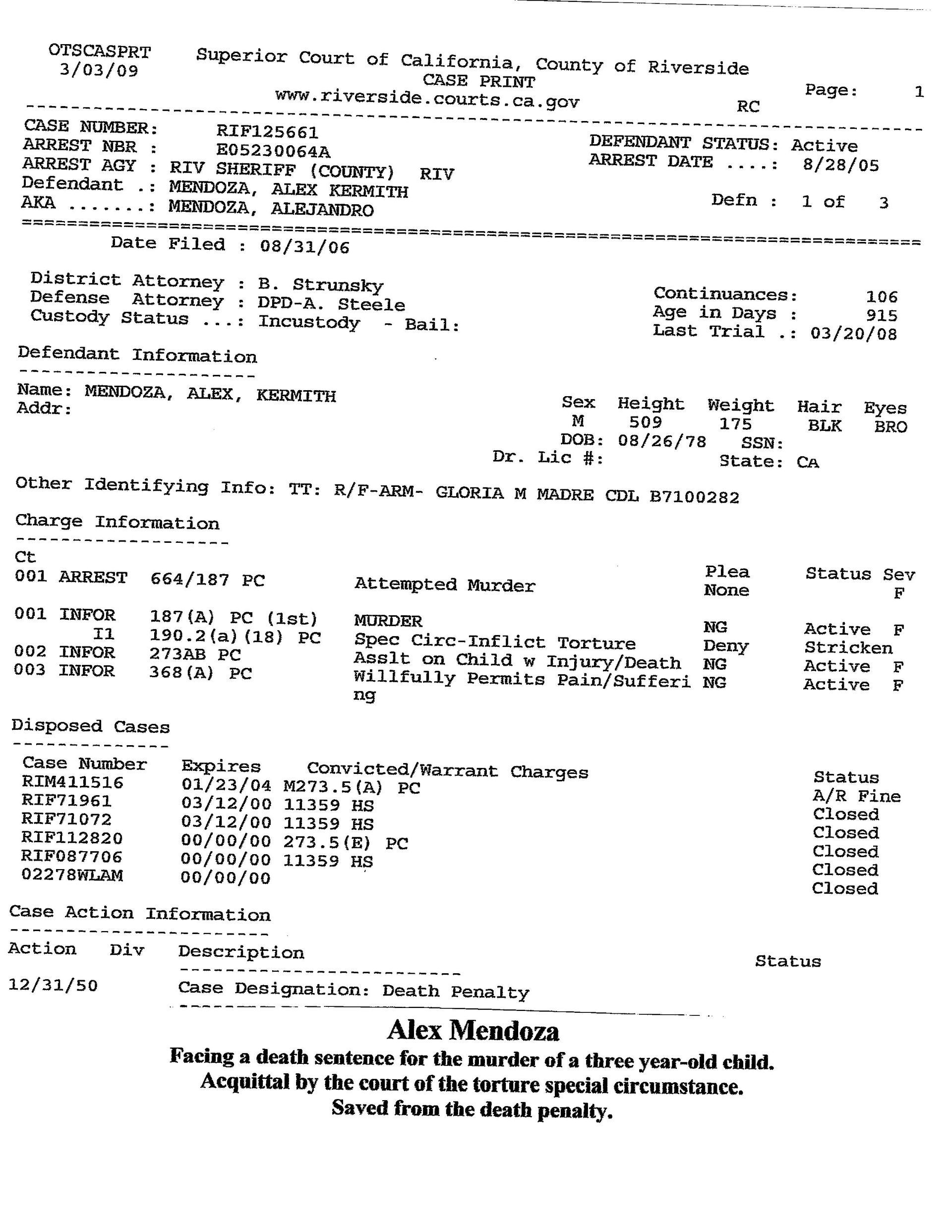
Ramon C., RIF120947
The other capital trial was the case of Ramon C. Raymond was accused of the execution style of killing a drug dealer. In this case, Addison was lead counsel, which meant that he was responsible for all trial strategy decisions and guided the work of the other members of the defense team. Again, his team did not just fight against the death sentence; they fought to win the case. The district attorney's case was the testimony of a methamphetamine user who testified that Raymond shot and killed the drug dealer right in front of her. The defense was that Raymond did not know the drug dealer and, therefore, would not have been allowed in the house, was outside when the shooting occurred, and that it was, in fact, the methamphetamine user district attorney's witness' ex-boyfriend who was the shooter. Addison presented forensic evidence that showed that the methamphetamine user's story could not have been true. The district attorney focused on Raymond's other accused violent crimes and his "eye witness." The jury found Raymond guilty of first-degree murder and found the special circumstance true. We then went into the second phase, where we presented medical evidence and called witnesses from throughout Raymond's life. After a seven-month-long trial that was a battle at every step, the jury came back with a verdict, saving Raymond's life with a verdict of life in prison and rejecting the death penalty.
The newspaper article covering the victory that saved Raymond from the death penalty.
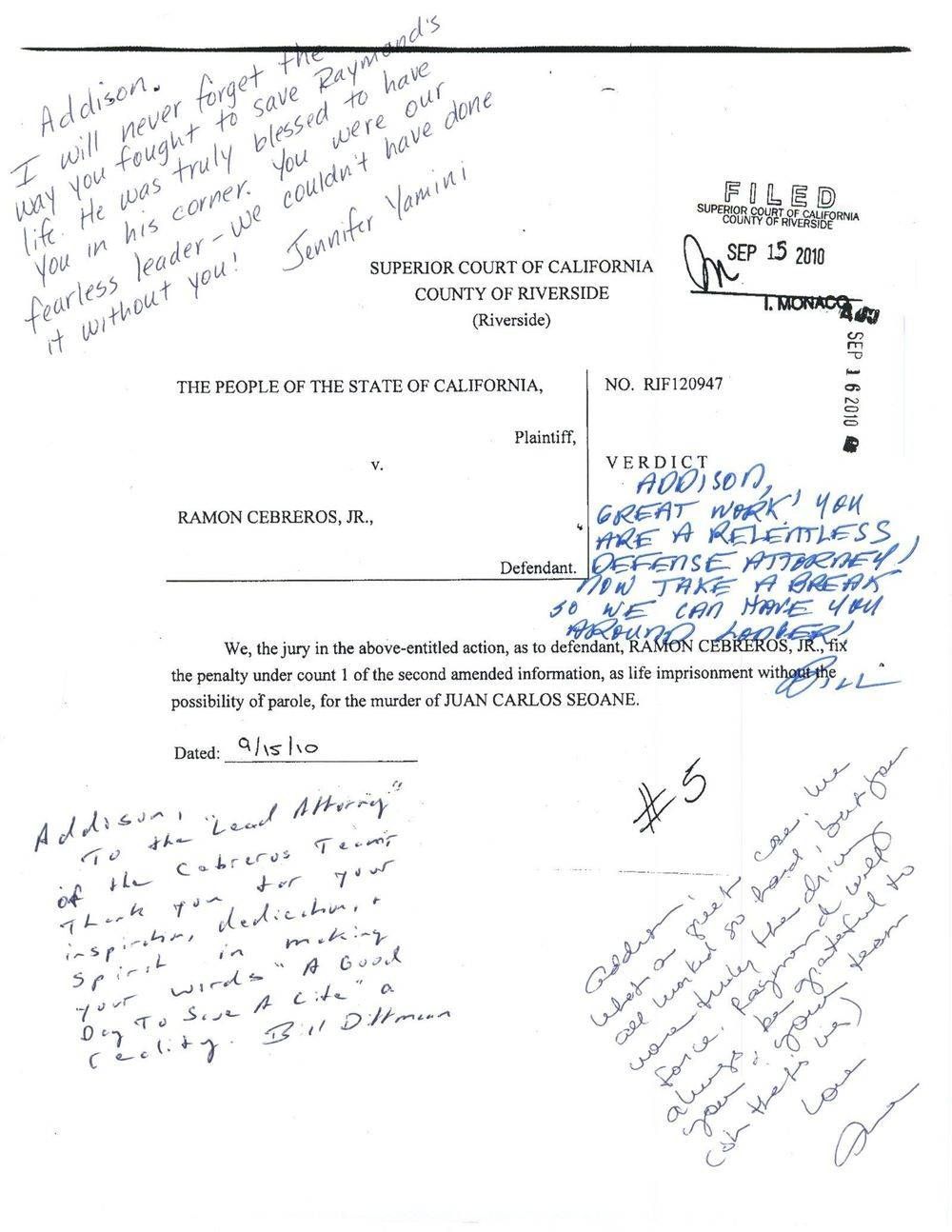
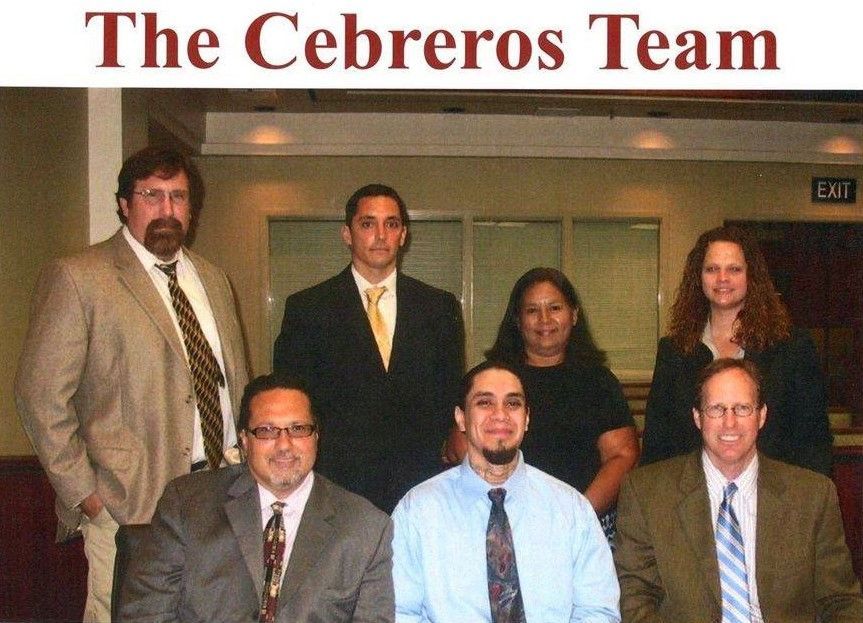
This is the Cebreros defense team that Addison led to Raymond's life verdict. Raymond is at the bottom middle, and Addison is at the bottom left.
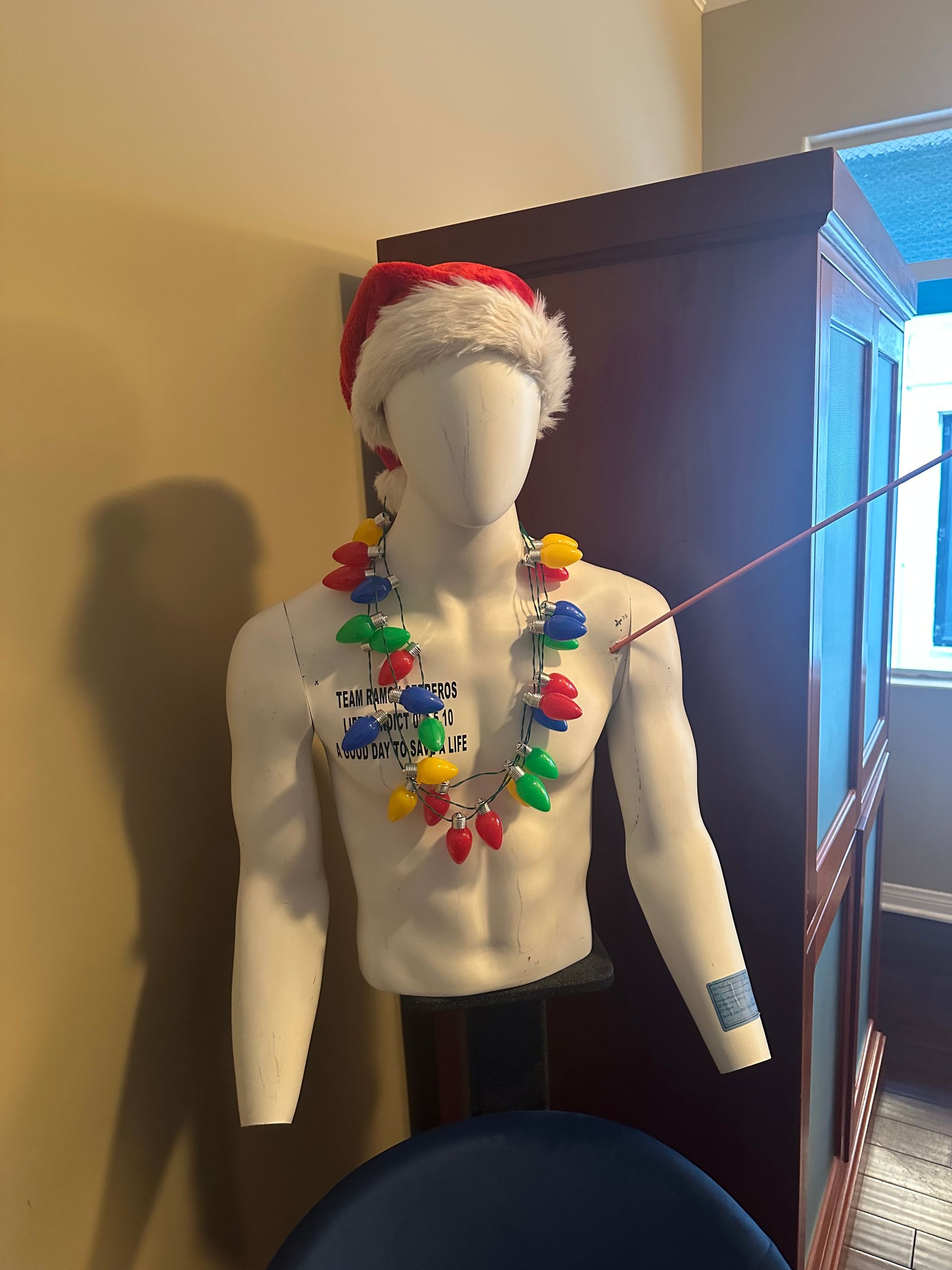
This is trial exhibit 319 from Raymond's trial. It remains in Addison's office to this day. The exhibit was referred to throughout the trial as Mr. 319. He was presented by an expert witness that Addison had hired to explain the trajectory of the bullet and how the district attorney's snitch witness' testimony did not match the forensic evidence.
Questions you should ask an attorney that you are considering hiring for a capital murder case:
Have you done a capital murder case before?
- This question is important because capital litigation is a highly specialized field. It requires skill, knowledge, training, and experience far beyond a non-capital criminal case.
- Addison has done two capital trials.
- Have you done a capital murder case as lead counsel?
- This question is important because an attorney who has done a capital case as lead counsel has led and taken full responsibility for guiding the work of everyone working on the defense team and has developed and implemented a defense strategy in a capital case.
- Addison has done a capital trial as lead counsel.
- What were the results of your capital trials?
- District attorneys will typically only seek death in cases in which they are confident that a jury will return a death verdict; however, defending capital cases has developed into an almost scientific use of studies of and data on jurors, which has resulted in juries returning life verdicts more and more often. So, this question is important because if an attorney has done three, four, or five capital trials and has just as many clients on Death Row, it says something about the attorney's skill level in capital cases.
- Addison saved the lives of his clients in both capital trials. He has no clients on Death Row.
- Do you train other lawyers in your techniques for winning trials?
- This question is important because typically, only the leading lawyers in a field are invited to conduct training of other lawyers.
- Addison has been a faculty member at the annual Capital Case Defense Seminar in Monterey. This is a nationwide conference and training for attorneys who practice capital defense. Addison regularly lectures at training for other lawyers.
- How long were the capital trials, and how many days of defense did you present?
- These questions are important because a hallmark of deficient capital defense is a short trial with little or no defense being presented. A capital trial that lasts ten or fifteen court days is reason for concern because it's an indicator that the prosecution is not being thoroughly challenged and a complete defense is not being presented.
- Addison has spent 138 court days in two capital trials where the prosecution was thoroughly challenged and aggressive and complete defenses were presented.
CONTACT INFORMATION
Email: christine@steelevoss.com & addison@steelevoss.com
Phone: (805) 245-5078
Address: 1226 1/2 State St., Suite 2, Santa Barbara, CA 93101





